
AVEVA™
formerly Wonderware
Historian Retrieval Guide

AVEVA™ Historian Retrieval Guide formerly Wonderware
2
© 2020 AVEVA Group plc and its subsidiaries. All rights reserved.
No part of this documentation shall be reproduced, stored in a retrieval system, or transmitted by any
means, electronic, mechanical, photocopying, recording, or otherwise, without the prior written
permission of AVEVA. No liability is assumed with respect to the use of the information contained herein.
Although precaution has been taken in the preparation of this documentation, AVEVA assumes no
responsibility for errors or omissions. The information in this documentation is subject to change without
notice and does not represent a commitment on the part of AVEVA. The software described in this
documentation is furnished under a license agreement. This software may be used or copied only in
accordance with the terms of such license agreement.
ArchestrA, Aquis, Avantis, Citect, DYNSIM, eDNA, EYESIM, InBatch, InduSoft, InStep, IntelaTrac,
InTouch, OASyS, PIPEPHASE, PRiSM, PRO/II, PROVISION, ROMeo, SIM4ME, SimCentral, SimSci,
Skelta, SmartGlance, Spiral Software, Termis, WindowMaker, WindowViewer, and Wonderware are
trademarks of AVEVA and/or its subsidiaries. An extensive listing of AVEVA trademarks can be found at:
https://sw.aveva.com/legal. All other brands may be trademarks of their respective owners.
Publication date: Thursday, December 3, 2020
Contact Information
AVEVA Group plc
High Cross
Madingley Road
Cambridge
CB3 0HB. UK
https://sw.aveva.com/
For information on how to contact sales and customer training, see https://sw.aveva.com/contact.
For information on how to contact technical support, see https://sw.aveva.com/support.

AVEVA™ Historian Retrieval Guide formerly Wonderware
3
Welcome .................................................................................................................................... 9
AVEVA Historian Documentation Set ......................................................................................... 9
Chapter 1 About Data Retrieval......................................................................................... 11
Data Retrieval Subsystem Features ......................................................................................... 11
History Blocks: A SQL Server Remote Data Source .................................................................. 11
Retrieval subsystem ................................................................................................................ 12
About the AVEVA Historian OLE DB Provider ........................................................................... 12
Extension Tables for History Data ...................................................................................... 13
Linking the AVEVA Historian OLE DB Provider to the Microsoft SQL Server ......................... 14
AVEVA Historian I/O Server..................................................................................................... 14
Using SELECT to Retrieve Data .............................................................................................. 15
Using the Four-Part Naming Convention ............................................................................. 15
Using an AVEVA Historian OLE DB Provider View .............................................................. 16
Using the OPENQUERY Function ...................................................................................... 17
Using the OPENROWSET Function ................................................................................... 17
Supported Syntax Options ................................................................................................. 18
Unsupported or Limited Syntax Options .............................................................................. 18
No Notion of Client Context .......................................................................................... 18
Limitations on Wide Tables .......................................................................................... 19
LIKE Clause Limitations ............................................................................................... 19
IN Clause Limitations ................................................................................................... 19
OR Clause Limitations ................................................................................................. 19
Using Joins within an OPENQUERY Function ............................................................... 19
Using Complicated Joins.............................................................................................. 20
Using a Sub-SELECT with a SQL Server Table and an Extension Table ......................... 20
WHERE Clause Anomalies .......................................................................................... 21
CONVERT Function Limitations ................................................................................... 21
SQL Server Optimization of Complex Queries ............................................................... 22
Using Columns of a Variant Type with Functions ........................................................... 23
Using StartDateTime in the Query Criteria..................................................................... 23
Comparison Statements and NULL Values.................................................................... 24
OPENQUERY and Microsoft Query .............................................................................. 24
AVEVA Historian Time Domain Extensions ......................................................................... 24
Chapter 2 Data Retrieval Options ..................................................................................... 27
Understanding Retrieval Modes ............................................................................................... 27
Cyclic Retrieval ................................................................................................................. 27
Cyclic Retrieval - How It Works..................................................................................... 28
Cyclic Retrieval - Supported Value Parameters ............................................................. 28
Cyclic Retrieval - Query Example ................................................................................. 29
Cyclic Retrieval - Initial Values...................................................................................... 29
Cyclic Retrieval - Handling NULL Values....................................................................... 30
Delta Retrieval .................................................................................................................. 30
Contents

AVEVA™ Historian Retrieval Guide formerly Wonderware Contents
4
Delta Retrieval - How It Works...................................................................................... 30
Delta Retrieval - Supported Value Parameters............................................................... 30
Delta Retrieval - Query Examples ................................................................................. 31
Delta Retrieval - Initial Values....................................................................................... 34
Delta Retrieval - Handling NULL Values ........................................................................ 34
Full Retrieval..................................................................................................................... 35
Full Retrieval - How It Works ........................................................................................ 36
Full Retrieval - Supported Value Parameters ................................................................. 36
Full Retrieval - Query Example ..................................................................................... 36
Full Retrieval - Initial Values ......................................................................................... 37
Interpolated Retrieval ........................................................................................................ 37
Interpolated Retrieval - How It Works ............................................................................ 37
Interpolated Retrieval - Query Examples ....................................................................... 38
Interpolated Retrieval - Initial and Final Values .............................................................. 41
Interpolated Retrieval - Handling NULL Values .............................................................. 41
Best Fit Retrieval............................................................................................................... 41
Best Fit Retrieval - How It Works .................................................................................. 43
Best Fit Retrieval - Supported Value Parameters ........................................................... 44
Best Fit Retrieval - Query Example ............................................................................... 44
Best Fit Retrieval - Initial and Final Values .................................................................... 45
Best Fit Retrieval - Handling NULL Values .................................................................... 46
Average Retrieval.............................................................................................................. 46
Average Retrieval - How It Works ................................................................................. 47
Average Retrieval - Supported Value Parameters .......................................................... 48
Average Retrieval - Query Examples ............................................................................ 48
Average Retrieval - Initial and Final Values ................................................................... 50
Average Retrieval - Handling NULL Values ................................................................... 50
Minimum Retrieval............................................................................................................. 50
Minimum Retrieval - How It Works ................................................................................ 50
Minimum Retrieval - Supported Value Parameters ......................................................... 51
Minimum Retrieval - Query Examples ........................................................................... 51
Minimum Retrieval - Initial and Final Values .................................................................. 53
Minimum Retrieval - Handling NULL Values and Incomplete Cycles ............................... 53
Maximum Retrieval............................................................................................................ 55
Maximum Retrieval - How It Works ............................................................................... 55
Maximum Retrieval - Supported Value Parameters ........................................................ 56
Maximum Retrieval - Query Examples .......................................................................... 56
Maximum Retrieval - Initial and Final Values ................................................................. 58
Maximum Retrieval - Handling NULL Values and Incomplete Cycles .............................. 58
Integral Retrieval ............................................................................................................... 59
Integral Retrieval - How It Works .................................................................................. 60
Integral Retrieval - Supported Value Parameters ........................................................... 60
Integral Retrieval - Query Example ............................................................................... 60
Integral Retrieval - wwExpression Query Example ......................................................... 61
Integral Retrieval - Initial and Final Values..................................................................... 62
Integral Retrieval - Handling NULL Values .................................................................... 62
Slope Retrieval.................................................................................................................. 62
Slope Retrieval - How It Works ..................................................................................... 63
Slope Retrieval - Supported Value Parameters .............................................................. 63
Slope Retrieval - Query Example .................................................................................. 63
Slope Retrieval - wwExpression Query Example............................................................ 64
Slope Retrieval - Initial and Final Values ....................................................................... 65
Slope Retrieval - Handling NULL Values ....................................................................... 65
Counter Retrieval .............................................................................................................. 65
Counter Retrieval - How It Works.................................................................................. 66

Contents AVEVA™ Historian Retrieval Guide formerly Wonderware
5
Counter Retrieval - Calculations for a Manually Reset Counter ....................................... 67
Counter Retrieval - Using a Counter Deadband ............................................................. 67
Counter Retrieval - Supported Value Parameters .......................................................... 68
Counter Retrieval - Initial and Final Values .................................................................... 68
Counter Retrieval - Handling NULL Values.................................................................... 68
Counter Retrieval - Handling Illegal Values.................................................................... 68
Counter Retrieval - Query Example .............................................................................. 69
ValueState Retrieval.......................................................................................................... 70
ValueState Retrieval - How It Works ............................................................................. 70
ValueState Retrieval - Supported Value Parameters ...................................................... 71
ValueState Retrieval - Query Examples ........................................................................ 72
ValueState Retrieval - Initial and Final Values ............................................................... 75
ValueState Retrieval - Handling NULL Values ............................................................... 75
RoundTrip Retrieval .......................................................................................................... 75
RoundTrip Retrieval - How It Works .............................................................................. 75
RoundTrip Retrieval - Supported Value Parameters....................................................... 76
RoundTrip Retrieval - Query Examples ......................................................................... 77
RoundTrip Retrieval - Initial and Final Values ................................................................ 78
RoundTrip Retrieval - Handling NULL Values ................................................................ 78
Edge Detection for Events (wwEdgeDetection) .............................................................. 78
Predictive Filter ................................................................................................................. 86
Bounding Value Retrieval .................................................................................................. 87
Bounding Value Retrieval - How It Works ...................................................................... 87
Bounding Value Retrieval - Query Examples ................................................................. 88
Understanding Retrieval Options.............................................................................................. 89
Which Options Apply to Which Retrieval Modes? ................................................................ 89
Using Retrieval Options in a Transact-SQL Statement ......................................................... 90
Cycle Count (X Values over Equal Time Intervals) (wwCycleCount)...................................... 91
Cycle Count - Query Examples..................................................................................... 92
Resolution (Values Spaced Every X ms) (wwResolution) ..................................................... 93
Resolution - Query Example......................................................................................... 94
About Phantom Cycles ...................................................................................................... 95
Time Deadband (wwTimeDeadband).................................................................................. 97
Time Deadband - Query Examples ............................................................................... 98
Value Deadband (wwValueDeadband) ............................................................................. 101
Value Deadband - Query Examples ............................................................................ 101
History Version (wwVersion) ............................................................................................ 104
History Version - Query Example ................................................................................ 104
Interpolation Type (wwInterpolationType).......................................................................... 105
TimeStamp Rule (wwTimeStampRule) ............................................................................. 107
Time Zone (wwTimeZone) ............................................................................................... 111
Quality Rule (wwQualityRule) ........................................................................................... 111
Quality Rule - Query Examples................................................................................... 112
State Calculation (wwStateCalc) ...................................................................................... 119
Analog Value Filtering (wwFilter) ...................................................................................... 120
Statistically Removing Outliers (SigmaLimit)................................................................ 121
Converting Analog Values to Discrete Values (ToDiscrete)........................................... 122
"Zeroing" Around a Base Value (SnapTo) ................................................................... 124
Selecting Values for Analog Summary Tags (wwValueSelector) ......................................... 125
Chapter 3 SQL Query Examples ..................................................................................... 129
Querying the History Table .................................................................................................... 129
Querying the Live Table ........................................................................................................ 130

AVEVA™ Historian Retrieval Guide formerly Wonderware Contents
6
Querying the WideHistory Table............................................................................................. 130
Querying Wide Tables in Delta Retrieval Mode ....................................................................... 131
Querying the AnalogSummaryHistory View............................................................................. 132
Querying the StateSummaryHistory View ............................................................................... 133
Using SliceBy ....................................................................................................................... 134
Using an Unconventional Tagname in a Wide Table Query ...................................................... 138
Using an INNER REMOTE JOIN............................................................................................ 139
Setting Both a Time and Value Deadband for Retrieval ........................................................... 139
Using wwResolution, wwCycleCount, and wwRetrievalMode in the Same Query....................... 142
Determining Cycle Boundaries ............................................................................................... 142
Mixing Tag Types in the Same Query ..................................................................................... 143
Using a Criteria Condition on a Column of Variant Data ........................................................... 144
Using DateTime Functions..................................................................................................... 144
Using the GROUP BY Clause ................................................................................................ 145
Using the COUNT() Function ................................................................................................. 146
Using an Arithmetic Function ................................................................................................. 146
Using an Aggregate Function................................................................................................. 147
Making and Querying Annotations.......................................................................................... 149
Using Comparison Operators with Delta Retrieval ................................................................... 149
Specifying the Start Date with ">=" ................................................................................... 149
Specifying the Start Date with ">" ..................................................................................... 151
Specifying the End Date with "<=" .................................................................................... 152
Specifying the End Date with "<" ...................................................................................... 153
Using Comparison Operators with Cyclic Retrieval and Cycle Count ........................................ 154
Specifying Cycle Count with Two Equity Operators ............................................................ 154
Specifying Cycle Count with One Equity Operator ............................................................. 154
Specifying Cycle Count with No Equity Operators .............................................................. 156
Using Comparison Operators with Cyclic Retrieval and Resolution ........................................... 157
Using Two Equality Operators for Comparison with Cyclic Retrieval and Resolution ............ 157
Using One Equality Operator for Comparison with Cyclic Retrieval and Resolution .............. 158
Using No Equality Operators for Comparison with Cyclic Retrieval and Resolution ............ 159
Returning Time Between Value Changes ............................................................................... 160
Example 1: Cyclic Retrieval.............................................................................................. 160
Example 2: Delta and Full Retrieval .................................................................................. 161
Example 3: Querying the WideHistory Table ..................................................................... 162
Example 4: Querying the History Table with the wwValueSelector Parameter ..................... 163
Example 5: Calculating Total Time Between Value Changes .............................................. 164
SELECT INTO from a History Table ....................................................................................... 165
Moving Data from a SQL Server Table to an Extension Table .................................................. 166
Using Server-Side Cursors .................................................................................................... 167
Using Stored Procedures in OLE DB Queries ......................................................................... 168
Getting Data from the OPCQualityMap Table.......................................................................... 168

Contents AVEVA™ Historian Retrieval Guide formerly Wonderware
7
Using Variables with the Wide Table ...................................................................................... 168
Retrieval Across a Data Gap in Classically Stored Data........................................................... 169
Returned Values for Non-Valid Start Times............................................................................. 170
Querying Aggregate Data in Different Ways............................................................................ 171
Bitwise Retrieval for Process Data ......................................................................................... 173
Chapter 4 SQL Queries for Alarms and Events ............................................................ 175
Querying Alarms and Events ................................................................................................. 175
Datetime in Alarm and Event Queries ..................................................................................... 175
Example: Listing all events............................................................................................... 176
Example: How often alarms occur .................................................................................... 176
Example: Most frequent alarm per hour ............................................................................ 177
Example: Pinpointing where alarms occur ......................................................................... 178
Example: Showing average time to clearing an alarm ........................................................ 178
Example: Evaluating response time for alarms .................................................................. 180
Chapter 5 Browser-Friendly Data Retrieval ................................................................... 183
Historian Data REST API....................................................................................................... 183
Supported versions ......................................................................................................... 184
iHistory and Account Authentication ................................................................................. 185
Data retrieval .................................................................................................................. 185
Retrieval resources.................................................................................................... 189
Retrieval examples .................................................................................................... 232
Querying History Blocks via SQL Server Reporting Services Extension .................................... 241
Retrieval errors ..................................................................................................................... 242

AVEVA™ Historian Retrieval Guide formerly Wonderware
9
This guide describes how to retrieve data that is stored by an AVEVA Historian server.
You can retrieve data by using:
Transact-SQL queries.
Historian Client tools for query construction, queries within Excel workbooks, and trend mapping.
Historian Insight, a web-based tool for tag-based searches and charting. With Insight, you can save
and reuse content (sets of tags and defined timeframes), and can share, embed, and download the
results. Historian Insight is installed as a part of AVEVA Historian.
Historian SDK.
Tools that use the REST OData interface.
AVEVA Historian Documentation Set
The AVEVA Historian documentation set includes the following guides:
AVEVA System Platform Installation Guide
This guide provides information on installing the AVEVA Historian, including hardware and software
requirements and migration instructions.
AVEVA Historian Concepts Guide
This guide provides an overview of the entire AVEVA Historian system and its key components.
AVEVA Historian Scenarios Guide
This guide discusses how to use AVEVA Historian to address some common customer scenarios.
AVEVA Historian Administration Guide
This guide describes how to administer and maintain an installed AVEVA Historian, such as
configuring data acquisition and storage, managing security, and monitoring the system.
AVEVA Historian Retrieval Guide
This guide describes the retrieval modes and options that you can use to retrieve your data.
AVEVA Historian Database Reference
This guide provides documentation for all of the AVEVA Historian database entities, such as tables,
views, and stored procedures.
AVEVA Historian Glossary
This guide provides definitions for terms used throughout the documentation set.
In addition, the AVEVA License Manager Guide describes the AVEVA License Manager and how to use
it to install, maintain, and delete licenses and license servers on local and remote computers.
Welcome

AVEVA™ Historian Retrieval Guide formerly Wonderware
11
Through the Data Retrieval subsystem, AVEVA Historian receives SQL queries from clients, locates the
requested data, performs necessary processing, and then returns the results.
For configuration and event data, retrieval is made possible by normal SQL queries, because these
types of data are stored in SQL Server database tables. Historical data, however, must be retrieved from
history blocks and then sent to clients as if it is stored in SQL Server tables.
To accomplish retrieval from both data repositories, the Data Retrieval subsystem includes:
An implementation of a SQL Server data provider.
This determines whether the requested data is saved in SQL Server tables or in history blocks.
Retrieval subsystem.
This subsystem is responsible for extracting the requested data from the history blocks and
presenting to the AVEVA Historian OLE DB provider as "virtual" history tables.
A set of SQL Server extensions.
These are implemented as columns in the history tables. You can use these extensions to specify
the nature of the rowset that is returned, such as the number of rows returned, the resolution of the
data, or the retrieval mode.
For more information on data storage, see Managing Data Storage.
Data Retrieval Subsystem Features
Data Retrieval subsystem features include support for:
Queries with all tag types
You can include all tag types in the same query when retrieving from the History table. Any
combination of tags can be submitted in a single query.
Both fixed- and variable-length strings
FILETIME for time computations
All internal time computation and manipulation is done using the Win32 FILETIME type. The
resolution of FILETIME is 100 nanoseconds.
Time handled as Universal Time Coordinated
All times are handled internally as UTC. Conversions to and from local time are handled going in and
out of retrieval so the external interface is local time.
Retrieval of different versions
Note: If you have an application that uses the older SQL Server datetime format, be aware that some
rounding can occur as compared to the newer datetime2 format (for example, 3.3ms vs. 100ns).
History Blocks: A SQL Server Remote Data Source
History blocks are remote data sources used by AVEVA Historian. That is, they are data repositories that
exist outside of a SQL Server database file (.MDF). Microsoft sometimes refers to these types of data
sources as "non-local data stores."
CHAPTER 1
About Data Retrieval

AVEVA™ Historian Retrieval Guide formerly Wonderware About Data Retrieval
12
All tag data is stored in history blocks. For more information on history blocks, see Managing Partitions
and History Blocks in the AVEVA Historian Administration Guide.
OLE DB technology can be used to access data in any remote data store. This access is accomplished
though a software component called an OLE DB provider.
Retrieval subsystem
The Retrieval subsystem does the following:
Fetches history data from history blocks on disk.
Formats data so that it can be passed up through the system to the AVEVA Historian OLE DB
provider or other HCAL-enabled client applications.
Returns information regarding the history blocks, such as the start and end dates and the location.
About the AVEVA Historian OLE DB Provider
OLE DB (short for "Object Linking and Embedding for Databases") is an application programming
interface (API) that allows COM-based client applications to access data that is not physically stored in
the SQL Server to which they are connecting.
OLE DB provides access to different types of data in a broader manner. By using OLE DB, you can
simultaneously access data from a variety of sources. A query that accesses data from multiple,
dissimilar data sources such as these is called a "heterogeneous" or "distributed" query.
SQL Server uses OLE DB to make linking data between the data sources easier. Through OLE DB,
Microsoft SQL Server supports Transact-SQL queries against data stored in one or more SQL Server
and heterogeneous databases without any need for specialized gateway server applications.
The interface required to access data in a non-local data store (such as the AVEVA Historian history
blocks) is provided by a "virtual" server, called an OLE DB provider. OLE DB providers allow you to use
the power of the SQL Server query processor to make linking data stored in the SQL Server databases
and from history blocks much easier and more robust. Also, the AVEVA Historian OLE DB provider has a
rich set of query capabilities.
The name of the AVEVA Historian OLE DB provider is "INSQL". The AVEVA Historian OLE DB provider
is installed during AVEVA Historian installation and then associated, or linked, with the Microsoft SQL
Server. For information on the syntax for linking the AVEVA Historian OLE DB provider, see Linking the
AVEVA Historian OLE DB Provider to the Microsoft SQL Server on page 14.
Note: The INSQL OLE DB provider cannot be used in a standalone mode.
To access AVEVA Historian historical data using OLE DB, any COM-based client application must
connect directly to the SQL Server and then specify to use the AVEVA Historian OLE DB provider in the
syntax of the query.
When you execute a query and specify the AVEVA Historian OLE DB provider in the syntax, the
Microsoft SQL Server parser will pass the appropriate parts of the data request to the AVEVA Historian
OLE DB provider. The AVEVA Historian OLE DB provider will then interface with the retrieval service to
locate the data store, extract the requested information, and return the data to the Microsoft SQL Server
as a rowset. Microsoft SQL Server will perform any other processing required on the data and return the
data to the client application as a result set and a set of output parameters, if applicable.
The AVEVA Historian OLE DB provider must be present on the server running Microsoft SQL Server.
The set of Transact-SQL operations that can be used to retrieve data in the history blocks depends on
the capabilities of the AVEVA Historian OLE DB provider.
For more information on OLE DB, see your Microsoft documentation.
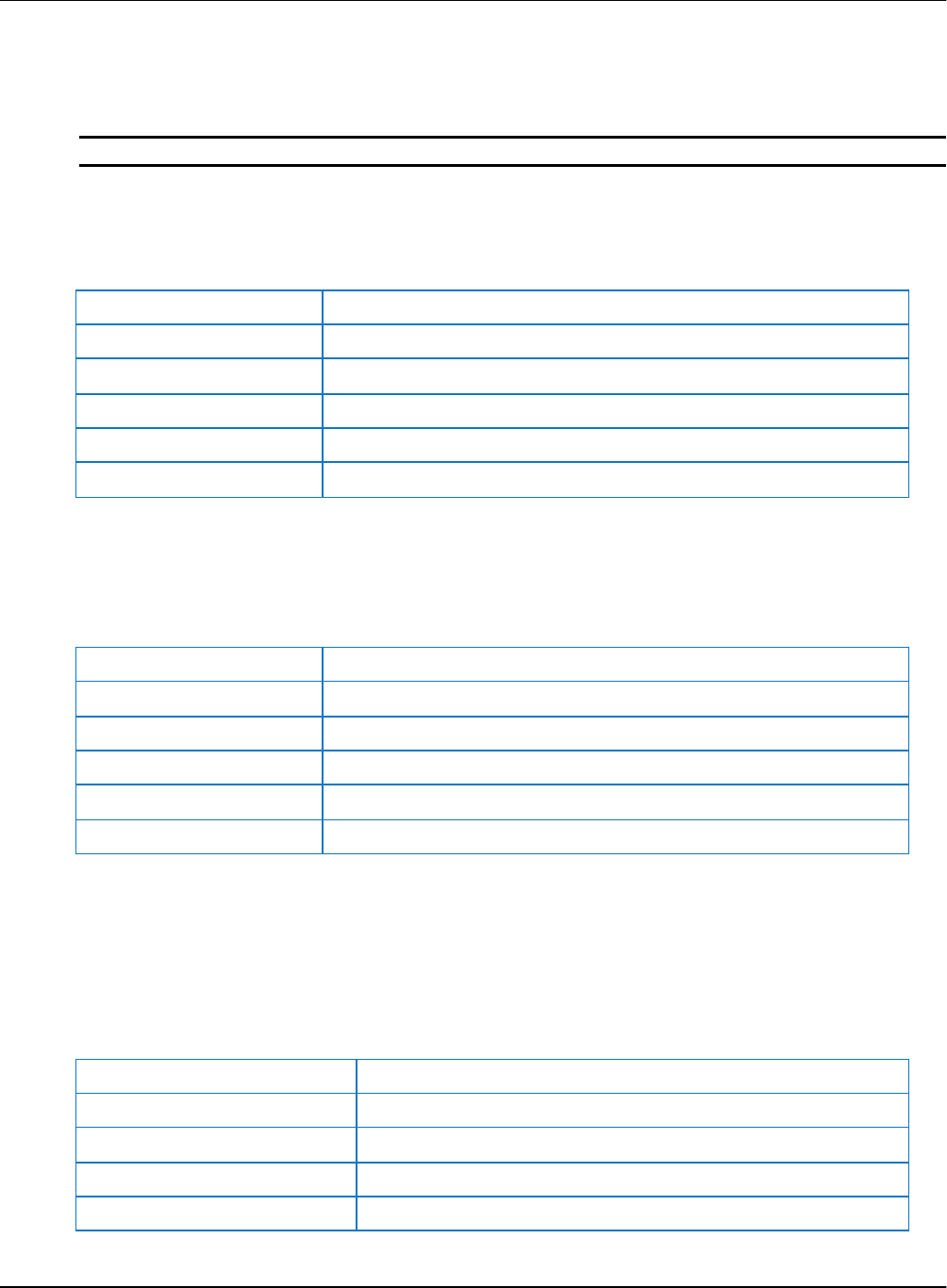
About Data Retrieval AVEVA™ Historian Retrieval Guide formerly Wonderware
13
Extension Tables for History Data
Many of Historian's tables are implemented as extension tables. That is, they are logical tables that are
actually populated from data in history blocks.
Note: Extension tables are also called remote tables.
Data access from the history blocks is made possible by SQL Server's OLE DB provider technology.
Client applications must connect directly to the Microsoft SQL Server and then specify to use the AVEVA
Historian OLE DB provider in the syntax of the query.
The extension tables are:
History
[INSQL].Runtime.dbo.History
Live
[INSQL].Runtime.dbo.Live
AnalogSummaryHistory
[INSQL].Runtime.dbo.AnalogSummaryHistory
StateSummaryHistory
[INSQL].Runtime.dbo.StateSummaryHistory
HistoryBlock
[INSQL].Runtime.dbo.HistoryBlock
Events
[INSQL].Runtime.dbo.Events
For more information on the history extension tables, see History Tables and Views in the Historian
Database Reference.
Legacy Process Data Extension Tables
These are legacy (backward compatible) extension tables for process data:
AnalogHistory
[INSQL].Runtime.dbo.AnalogHistory
DiscreteHistory
[INSQL].Runtime.dbo.DiscreteHistory
StringHistory
[INSQL].Runtime.dbo.StringHistory
AnalogLive
[INSQL].Runtime.dbo.AnalogLive
DiscreteLive
[INSQL].Runtime.dbo.DiscreteLive
StringLive
[INSQL].Runtime.dbo.StringLive
The AnalogHistory, DiscreteHistory, StringHistory, and History tables are the only tables which are
updateable. The remaining tables are read-only.
For more information about these tables, see Backward Compatibility Entities in the Historian Database
Reference.
Legacy Event Data Extension Tables
These are legacy (backward compatible) extension tables for events:
v_AlarmEventHistoryInternal2
[INSQL].Runtime.dbo.LegacyAlarmEventHistory
v_AlarmHistory
[INSQL].Runtime.dbo.LegacyAlarmHistory
v_AlarmHistory2
[INSQL].Runtime.dbo.LegacyAlarmHistory2
v_EventHistory
[INSQL].Runtime.dbo.LegacyEventHistory
v_AlarmEventHistory2
Same as v_AlarmEventHistoryInternal2

AVEVA™ Historian Retrieval Guide formerly Wonderware About Data Retrieval
14
Linking the AVEVA Historian OLE DB Provider to the Microsoft SQL
Server
Because the AVEVA Historian OLE DB provider retrieves data from the history blocks and presents it to
Microsoft SQL Server as a table, it can be thought of as a type of server. The AVEVA Historian OLE DB
provider must be added to the Microsoft SQL Server as a "linked" server before it can be used to process
queries.
This linking is performed automatically during the AVEVA Historian installation. If, for some reason, you
need to re-link the AVEVA Historian OLE DB provider to the Microsoft SQL Server, the statements for
linking are as follows:
sp_addlinkedserver
@server = 'INSQL',
@srvproduct = '',
@provider = 'INSQL'
go
sp_serveroption 'INSQL','collation compatible',true
go
sp_addlinkedsrvlogin 'INSQL','TRUE',NULL,NULL,NULL
go
"INSQL" is the name of the AVEVA Historian OLE DB provider as the linked server. Use this name to
specify the AVEVA Historian OLE DB provider in a query.
To perform joins between the legacy analog history tables and discrete history tables, the installation
program also creates an alias for the same AVEVA Historian OLE DB provider:
sp_addlinkedserver
@server = 'INSQLD',
@srvproduct = '',
@provider = 'INSQL'
go
sp_serveroption 'INSQLD','collation compatible',true
go
sp_addlinkedsrvlogin 'INSQLD','TRUE',NULL,NULL,NULL
go
For example, if you want to execute a query that performs this type of join, use the normal alias in
specifying the first table (the analog history table), and use the second alias in specifying the second
table (the discrete history table, hence the "D" added to the alias name).
AVEVA Historian I/O Server
The AVEVA Historian I/O Server (aahIOSvrSvc.exe) is the interface for clients to access current data
using the SuiteLink protocol. The AVEVA Historian I/O Server can update items with current values for
given topics, providing "real-time" I/O Server functionality.
The AVEVA Historian I/O Server is pre-configured with a single topic, Tagname. The AVEVA Historian
I/O Server will listen for clients (such as WWClient or WindowViewer™) that are attempting to establish a
connection using the pre-configured topic. After a client connects with the AVEVA Historian I/O Server, a
"hot" link is established between the client and the AVEVA Historian I/O Server. For more information on
I/O Server addressing conventions, see I/O Server Addressing in the AVEVA Historian Administration
Guide.

About Data Retrieval AVEVA™ Historian Retrieval Guide formerly Wonderware
15
For example, the AVEVA Historian I/O Server could be used by InTouch WindowViewer to access
system tag values provided by the AVEVA Historian to monitor system health. You could configure
WindowViewer to generate an alarm when abnormal behavior is detected within the AVEVA Historian.
By default, the AVEVA Historian I/O Server runs as a Windows service and can be started and stopped
using the System Management Console. You can also monitor the AVEVA Historian I/O Server from
within the System Management Console. For more information on the System Management Console,
see About Administrative Tools in the AVEVA Historian Administration Guide.
The AVEVA Historian I/O Server is a read-only server; clients cannot update data.
The AVEVA Historian I/O Server sends the original OPC quality as it was stored in the AVEVA Historian.
The OPC quality remains the same throughout the system, including storage, retrieval, and the AVEVA
Historian I/O Server.
Using SELECT to Retrieve Data
The most common AVEVA Historian query is a SELECT statement:
SELECT select_list
FROM table_source
WHERE search_condition
[ GROUP BY group_by_expression ]
[ HAVING search_condition ]
[ ORDER BY order_expression [ ASC | DESC ] ]
A WHERE clause is mandatory when issuing a SELECT query against any extension table except
HistoryBlock.
There are four variations for issuing a SELECT statement to the AVEVA Historian OLE DB provider to
retrieve history data:
Using the Four-Part Naming Convention on page 15
Using an AVEVA Historian OLE DB Provider View on page 16
Using the OPENQUERY Function on page 17
Using the OPENROWSET Function on page 17
You should use the four-part name or a provider view to specify the extension table, whenever possible.
However, there are instances when the OPENQUERY or OPENROWSET function must be used, such
as for queries on wide tables.
For general information on creating SQL queries, see your Microsoft SQL Server documentation.
Using the Four-Part Naming Convention
The linked server name is simply a name by which the AVEVA Historian OLE DB provider is known to the
Microsoft SQL Server. In order for a query to be passed on to the AVEVA Historian OLE DB provider, you
must specify the linked server name and the extension table name as part of a four-part naming
convention.
For example, this query specifies to retrieve data from the History extension table in the AVEVA Historian
OLE DB provider:
SELECT * FROM INSQL.Runtime.dbo.History
WHERE TagName = 'SysTimeSec'
AND DateTime >= '2001-09-12 12:59:00'
AND DateTime <= '2001-09-12 13:00:00'
The four-part naming convention is described in the following table:

AVEVA™ Historian Retrieval Guide formerly Wonderware About Data Retrieval
16
Part Name
Description
linked_server
Linked server name. By default, INSQL.
catalog
Catalog in the OLE DB data source that contains the object from which you want to
retrieve data. For Microsoft SQL Server type databases, this is the name of the
database. To use the AVEVA Historian OLE DB provider, the catalog name will
always be "Runtime."
schema
Schema in the catalog that contains the object. For Microsoft SQL Server type
databases, this is the name of the login ID for accessing the data. To use the AVEVA
Historian OLE DB provider, the catalog name will always be "dbo."
object_name
Data object that the OLE DB provider can expose as a rowset. For the AVEVA
Historian OLE DB provider, the object name is the name of the remote table that
contains the data you want to retrieve. For example, the History table.
In the case of four-part queries, SQL Server produces the statement that is sent to the AVEVA Historian
OLE DB provider from the statement that the user executes. Sometimes this produced statement is
incorrect, too complex, or lacks portions of the WHERE clause required for the AVEVA Historian OLE DB
provider to return data.
A typical error message when executing unsupported syntax is:
Server: Msg 7320, Level 16, State 2, Line 1
Could not execute query against OLE DB provider 'INSQL'.
[OLE/DB provider returned message: InSQL did not receive a WHERE clause from SQL
Server. If one was specified, refer to the InSQL OLE DB documentation]
For four-part queries against non-English SQL Servers running on non-English operating systems, the
default date format might differ from the English versions. For example, for a French or German SQL
Server running on the corresponding operating system, the date/time in a four-part query must be:
yyyy-dd-mm hh:mm:ss.fff
For example:
2003-28-09 09:00:00.000
The default SQL date format is dependent on SQL Server and not on the operating system used.
However, you can modify the format using the SQL Server Convert() method. The output of this method
can be determined by the regional settings configured for the operating system.
Using an AVEVA Historian OLE DB Provider View
Microsoft SQL Server views have been provided that will access each of the extension tables,
eliminating the need to type the four-part server name in the query. These views are named the same as
the provider table name.
Note: Backward compatibility views are named according to the v_ProviderTableName convention.

About Data Retrieval AVEVA™ Historian Retrieval Guide formerly Wonderware
17
For example:
SELECT * FROM History
WHERE TagName = 'SysTimeSec'
AND DateTime >= '2001-09-12 12:59:00'
AND DateTime <= '2001-09-12 13:00:00'
Using the OPENQUERY Function
You can use the linked server name in an OPENQUERY function to retrieve data from an extension
table. The OPENQUERY function is required for retrieving from the wide table. For example:
SELECT * FROM OPENQUERY(INSQL, 'SELECT * FROM History
WHERE TagName = "SysTimeSec"
AND DateTime >= "2001-09-12 12:59:00"
AND DateTime <= "2001-09-12 13:00:00"
')
The following example retrieves data from a wide table:
SELECT * FROM OPENQUERY(INSQL, 'SELECT DateTime, SysTimeSec
FROM WideHistory
WHERE DateTime >= "2001-09-12 12:59:00"
AND DateTime <= "2001-09-12 13:00:00"
')
The OPENQUERY portion of the statement is treated as a table by SQL Server, and can also be used in
joins, views, and stored procedures. SQL Server sends the quoted statement, unchanged and as a
string, to the AVEVA Historian OLE DB provider. Consequently, only the syntax that the AVEVA
Historian OLE DB provider can parse is supported. Also, be sure that you do not exceed the 8000
character limit for the statement. Consider the following example:
SELECT * FROM OpenQuery(INSQL, 'XYZ')
where "XYZ" is the statement to pass. You should be sure that the value of "XYZ" is not more than 8000
characters. This limit is most likely to cause a problem if you are querying many tags from a wide table.
Also, you should supply the datetime in an OPENQUERY statement in the following format:
yyyy-mm-dd hh:mm:ss.fff
For example:
2001-01-01 09:00:00.000
You cannot use variables in an OPENQUERY statement. For more information, see -old-Using Variables
with the Wide Table.
Using the OPENROWSET Function
The linked server name can be used as an input parameter to an OPENROWSET function. The
OPENROWSET function sends the OLE DB provider a command to execute. The returned rowset can
then be used as a table or view reference in a Transact-SQL statement. For example:
SELECT * FROM OPENROWSET('INSQL',' ', 'SELECT DateTime, Quality, QualityDetail,
Value
FROM History
WHERE TagName in ("SysTimeSec")
AND DateTime >= "2001-09-12 12:59:00"
AND DateTime <= "2001-09-12 13:00:00"
')
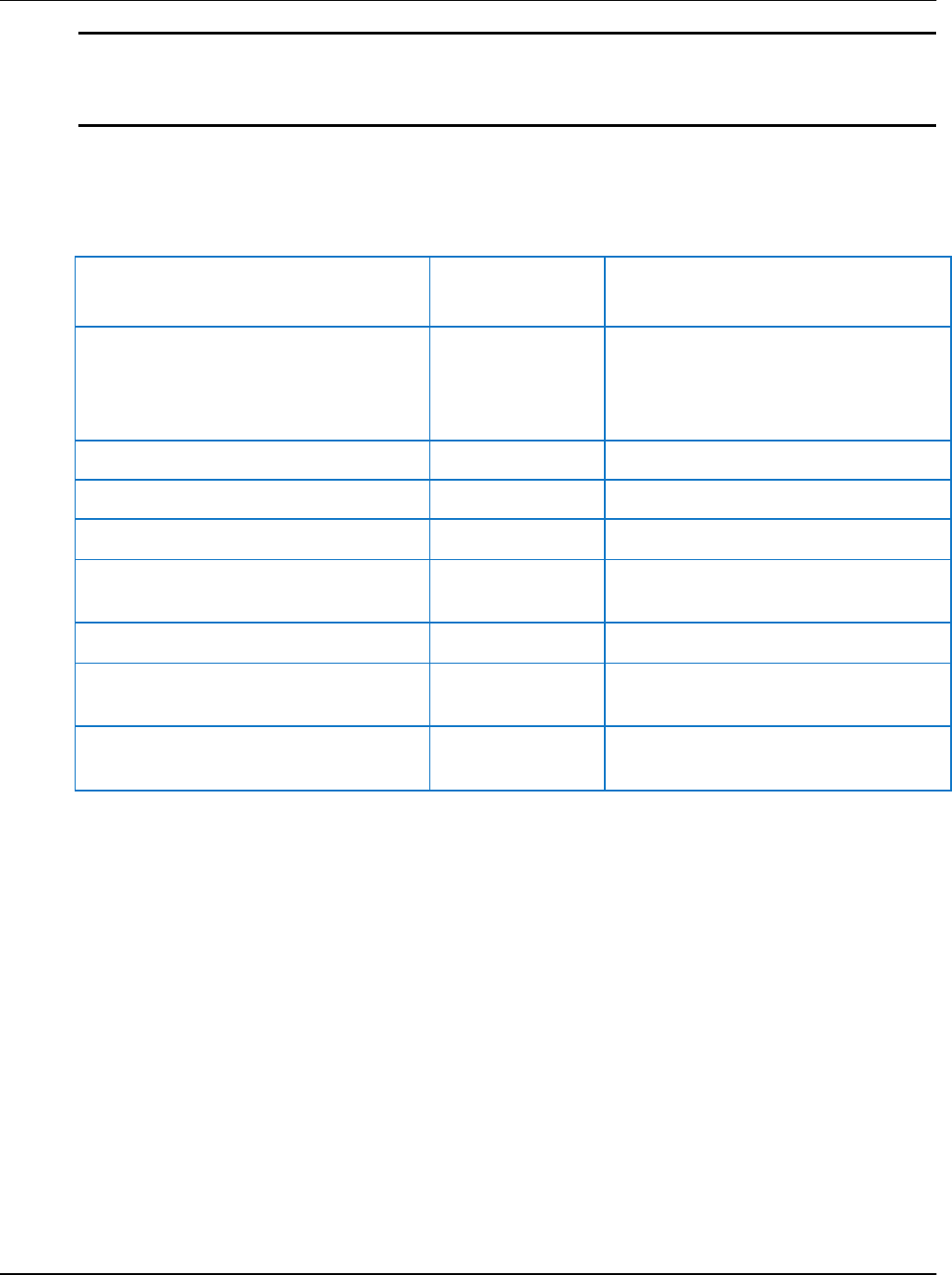
AVEVA™ Historian Retrieval Guide formerly Wonderware About Data Retrieval
18
Note: If the OpenRowSet/OpenDatasource component is turned off as part of the security configuration
for the server, you will receive an error when you try to run this query. If necessary, a system
administrator can reset SQL Server settings to enable use of ad hoc queries by executing the
sp_configure command.
Supported Syntax Options
The following table indicates the syntax options that are available for queries that use either the
four-part naming convention (or corresponding view name) or the OPENQUERY function.
Syntax Element
Four-Part Query
OPENQUERY
ORDER BY
Yes
No. Does not work within the
OPENQUERY function. However, will
work if used outside of the function.
GROUP BY
Yes
No
TagName IN ( ..)
Yes
Yes
TagName LIKE '..'
Yes
Yes
Date and time functions (for example,
DateAdd)
Yes
Yes
MIN, MAX, AVG, SUM, STDEV
Yes
MIN, MAX, AVG, SUM only
Sub-SELECT with one normal SQL
Server table and one extension table
Yes, with
restrictions
No
Sub-SELECT with two extension tables
No
No
Unsupported or Limited Syntax Options
The AVEVA Historian OLE DB provider does not support certain syntax options in queries. In general,
these limitations are due to underlying limitations in the current Microsoft SQL Server OLE DB Provider
implementation.
For general information on creating SQL queries, see your Microsoft SQL Server documentation.
No Notion of Client Context
The OLE DB provider has no notion of a client context. The OLE DB provider is entirely stateless, and
there is no persistence across queries in the same connection. This means that you must set the value of
a AVEVA Historian time domain extension (for example, cycle count) each time you execute a query.
Also, the OLE DB provider cannot continuously return data (similar to a "hot" link in InTouch HMI
software). The OLE DB specification (as defined by Microsoft) does not permit a provider to return rows
to a consumer without a request from the consumer.

About Data Retrieval AVEVA™ Historian Retrieval Guide formerly Wonderware
19
Limitations on Wide Tables
Wide tables do not have a fixed schema, but a schema which varies from query to query. They are
transient tables, existing for the duration of one query only. For this reason, they must be accessed using
the OPENQUERY function, which bypasses many of the tests and requirements associated with fixed
tables. Wide tables support up to 1024 columns.
For more information on wide tables, see "Wide" History Table Format in the AVEVA Historian Database
Reference.
LIKE Clause Limitations
The LIKE clause is only supported for the TagName and Value columns. The syntax " ... Value LIKE
'a string' ... " is only supported for a string table. For example:
SELECT TagName, Value FROM History
WHERE TagName LIKE 'Sys%'
AND DateTime > '1999-05-24 14:30:00'
AND DateTime < '1999-05-24 14:32:00'
IN Clause Limitations
If you are querying analog, discrete, or string tags from the AnalogTag, DiscreteTag, or StringTag tables
(respectively), you cannot use the LIKE clause within an IN clause to condition the tagname unless you
are returning the vValue column. This restriction applies if you are using the four-part naming convention
or an extension table view.
For example:
SELECT DateTime, TagName, vValue, Quality, QualityDetail
FROM History
WHERE TagName IN (SELECT TagName FROM StringTag WHERE TagName LIKE
'SysString')
AND DateTime >='2001-06-21 16:00:00.000'
AND DateTime <='2001-06-21 16:40:00.000'
AND wwRetrievalMode = 'Delta'
However, it is more efficient to use an INNER REMOTE JOIN to achieve the same results. For more
information, see Using an INNER REMOTE JOIN.
OR Clause Limitations
You cannot use the OR clause to specify more than one condition for a time domain extension. For more
information, see AVEVA Historian Time Domain Extensions on page 24.
Using Joins within an OPENQUERY Function
Joins are not supported within a single OPENQUERY statement. For example, the following query
contains an implicit join between the Tag and Live tables, and will fail:
SELECT * FROM OPENQUERY(INSQL, 'SELECT v.DateTime, v.TagName, v.Value,
t.Description
FROM Tag t, Live v
WHERE t.TagName LIKE "%Date%"

AVEVA™ Historian Retrieval Guide formerly Wonderware About Data Retrieval
20
AND v.TagName = t.TagName
')
A workaround is to place the join outside of the OPENQUERY. For example:
SELECT v.DateTime, v.TagName, v.Value, t.Description
FROM OPENQUERY(INSQL, 'SELECT DateTime, TagName, Value
FROM Live
WHERE TagName LIKE "%Date%"
') v, Tag t
WHERE v.TagName = t.TagName
Explicit joins are also not supported within OPENQUERY. For example, the following query will fail:
SELECT * FROM OPENQUERY(INSQL, 'SELECT v.DateTime, v.TagName, v.Value, e.Unit
FROM Live v
JOIN AnalogTag t ON v.TagName = t.TagName
JOIN EngineeringUnit e ON t.EUKey = e.EUKey
WHERE v.TagName LIKE "%Date%"
')
A work-around is to place the join outside the OPENQUERY. For example:
SELECT v.DateTime, v.TagName, v.Value, e.Unit
FROM OPENQUERY(INSQL, 'SELECT DateTime, TagName, Value FROM Live
WHERE TagName LIKE "%Date%"
') v
JOIN AnalogTag t ON v.TagName = t.TagName
JOIN EngineeringUnit e ON t.EUKey = e.EUKey
ORDER BY t.TagName
In general, use four-part syntax wherever possible. All of the previous queries are more conveniently
expressed in four-part syntax. For example, the syntax for the preceding query would be:
SELECT v.DateTime, v.TagName, v.Value, e.Unit
FROM INSQL.Runtime.dbo.History v
JOIN AnalogTag t ON v.TagName = t.TagName
JOIN EngineeringUnit e ON t.EUKey = e.EUKey
WHERE v.TagName LIKE '%Date%'
ORDER BY t.TagName
Using Complicated Joins
You can only use simple joins between SQL Server tables and the AVEVA Historian OLE DB extension
tables. Joins typically require use of the INNER REMOTE JOIN syntax.
For an example of the INNER REMOTE JOIN syntax, see -old-Using an INNER REMOTE JOIN.
Using a Sub-SELECT with a SQL Server Table and an Extension Table
Using a sub-SELECT with a query on a normal SQL Server table and an extension table shoul d be
avoided; it is very inefficient due to the way SQL Server executes the query. For example:
SELECT TagName, DateTime, Value
FROM INSQL.Runtime.dbo.History
WHERE TagName IN (select TagName FROM SnapshotTag WHERE EventTagName =
'SysStatusEvent')
AND DateTime = '2001-12-20 0:00'

About Data Retrieval AVEVA™ Historian Retrieval Guide formerly Wonderware
21
Instead, it is recommended that you use the INNER REMOTE JOIN syntax:
SELECT h.TagName, DateTime, Value
FROM SnapshotTag st INNER REMOTE JOIN INSQL.Runtime.dbo.History h
ON st.TagName = h.TagName
AND EventTagName = 'SysStatusEvent'
AND DateTime = '2001-12-20 0:00'
The results are:
TagName
DateTime
Value
SysPerfCPUTotal
2001-12-20 00:00:00.000
15.0
SysSpaceMain
2001-12-20 00:00:00.000
1302.0
In general, use the following pattern for INNER REMOTE JOIN queries against the historian is:
<SQLServerTable> INNER REMOTE JOIN <HistorianExtensionTable>
For more information on INNER REMOTE JOIN, see your Microsoft SQL Server documentation.
WHERE Clause Anomalies
In some rare cases, the SQL Server query processor truncates the WHERE clause in an attempt to
optimize the query. If you execute a query with a WHERE clause, but an error message is returned
stating that no WHERE clause was received by the SQL Server, simply add another condition clause to
the query.
For example, in the following query, the SQL Server query processor optimizes out the WHERE clause,
because it is superfluous.
SELECT DateTime, Value, QualityDetail
FROM History
WHERE TagName LIKE '%'
A workaround is to add another condition clause. For example:
SELECT DateTime, Value, QualityDetail
FROM History
WHERE TagName LIKE '%'
AND wwRetrievalMode = 'delta'
CONVERT Function Limitations
The CONVERT function is not supported on the vValue column in an OPENQUERY statement. If you are
using OPENQUERY on the History table, you must filter on the vValue column outside of the query.
In the following example, the value of the vValue column is converted to a float. Note that no string tags
are included in the query.
SELECT * FROM OpenQuery(INSQL, 'SELECT DateTime, Quality, OPCQuality,
QualityDetail, Value, vValue, TagName
FROM History
WHERE TagName IN ("SysTimeMin", "SysPulse")
AND DateTime >= "2001-12-30 04:00:00.000"
AND DateTime <= "2001-12-30 09:00:00.000"

AVEVA™ Historian Retrieval Guide formerly Wonderware About Data Retrieval
22
AND wwRetrievalMode = "Delta"
')
WHERE convert(float, vValue) = 20.0
You can also use the following formats:
WHERE convert(float, vValue) = 0
WHERE convert(float, vValue) = 0.0
WHERE convert(float, vValue) = 1.0
WHERE convert(float, vValue) = 1
WHERE convert(float, vValue) = 20
WHERE convert(float, vValue) = 2.0000e01
The following example includes a string tag and converts the vValue value to a char or varchar datatype.
All values returned can be converted to a string.
SELECT * FROM OpenQuery(INSQL, 'SELECT DateTime, Quality, OPCQuality,
QualityDetail, Value, vValue, TagName
FROM History
WHERE TagName IN ("SysString", "SysTimeMin", "SysPulse")
AND DateTime >= "2001-12-30 04:00:00.000"
AND DateTime <= "2001-12-30 09:00:00.000"
AND wwRetrievalMode = "Cyclic"
AND wwCycleCount = 300
')
WHERE convert(varchar(30), vValue) = '2001-12-30 14:00:00'
You can also use the following formats:
WHERE convert(varchar(30), vValue) = '20'
WHERE convert(varchar(30), vValue) = '1'
WHERE convert(varchar(30), vValue) = '0'
SQL Server Optimization of Complex Queries
The SQL Server query optimizer may incorrectly parse a complex query and not send certain query
criteria to the Historian OLE DB provider for handling. This can cause unexpected results for the data.
If you suspect that this is happening, use SQL Server Management Studio tools to examine the query
plan that the optimizer is using and then modify your query so that the needed criteria gets directed to the
Historian OLE DB provider.
For example, the following query will be incorrectly parsed:
SELECT GETDATE()
DECLARE @TagList TABLE (TagName nvarchar(256))
INSERT @TagList
SELECT 'SysTimeSec' UNION
SELECT 'SysPerfCPUTotal'
-- Prevent the TagName criteria from being sent to the Historian OLE DB provider
(incorrect)
SELECT DateTime, h.vValue, h.TagName
FROM History h
INNER REMOTE JOIN @TagList l
ON h.TagName = l.TagName
WHERE DateTime >= DATEADD(hour,-1,GETDATE())
AND DateTime < GETDATE()
AND wwRetrievalMode = 'AVG'
AND wwCycleCount=1

About Data Retrieval AVEVA™ Historian Retrieval Guide formerly Wonderware
23
GO
To correct this issue, rewrite the query so that the tagname criteria is passed to the Historian OLE DB
provider correctly.
SELECT GETDATE()
DECLARE @TagList TABLE (TagName nvarchar(256))
INSERT @TagList
SELECT 'SysTimeSec' UNION
SELECT 'SysPerfCPUTotal'
-- Force the TagName criteria to be sent to the InSQL OLE DB Provider (correct)
SELECT DateTime, h.vValue, h.TagName
FROM @TagList l
INNER REMOTE JOIN History h
ON h.TagName = l.TagName
WHERE DateTime >= DATEADD(hour,-1,GETDATE())
AND DateTime < GETDATE()
AND wwRetrievalMode = 'AVG'
AND wwCycleCount=1
GO
Using Columns of a Variant Type with Functions
If you use a column of a variant type as the parameter for some functions, SQL Server returns a syntax
error. However, the error is not passed to the Historian OLE DB provider to return to clients.
For example, in the following query, the rounding is specified for the vValue column, which is of type
variant. The query does not work, but no error is returned by the Historian OLE DB provider.
SELECT DateTime, round(vValue, 2)
FROM History
WHERE TagName IN ('SysTimeSec')
AND DateTime = getdate()
AND wwRetrievalMode = 'Cyclic'
Using StartDateTime in the Query Criteria
You cannot use StartDateTime in the query criteria instead of DateTime. For example, the following
query works, except that it does not apply the StartDateTime >= @StartDate clause.
SET NOCOUNT ON
DECLARE @StartDate DateTime
DECLARE @EndDate DateTime
SET @StartDate = DateAdd(mi,-30,GetDate())
SET @EndDate = GetDate()
SET NOCOUNT OFF
SELECT History.TagName, DateTime = convert(nvarchar, DateTime, 21), Value,
vValue, StateTime, StartDateTime
FROM History
WHERE History.TagName IN ('Reactor1Level')
AND wwRetrievalMode = 'RoundTrip'
AND wwStateCalc = 'AvgContained'
AND vValue = convert(SQL_VARIANT, '1')
AND wwCycleCount = 1
AND wwTimeStampRule = 'Start'
AND wwQualityRule = 'Good'

AVEVA™ Historian Retrieval Guide formerly Wonderware About Data Retrieval
24
AND wwFilter = 'ToDiscrete(5.0,>)'
AND wwVersion = 'Latest'
AND DateTime >= @StartDate
AND DateTime <= @EndDate
AND StartDateTime >= @StartDate
Comparison Statements and NULL Values
SQL Server returns an error for a query that contains a comparison statement like 'Value > 0' whenever
a NULL is returned. Be sure that you always include 'AND Value IS NOT NULL', so that the NULL values
are filtered out.
OPENQUERY and Microsoft Query
Microsoft Query is not able to process an OPENQUERY statement.
AVEVA Historian Time Domain Extensions
Data in the extension tables can be manipulated by using normal Transact-SQL code, as well as the
specialized SQL time domain extensions provided by the AVEVA Historian. The AVEVA Historian
extensions provide an easy way to query time-based data from the history tables. They also provide
additional functionality not supported by Transact-SQL.
The time domain extensions are:
wwCycleCount
wwEdgeDetection
wwFilter
wwInterpolationType
wwOption
wwQualityRule
wwResolution
wwRetrievalMode
wwStateCalc
wwTimeDeadband
wwTimeZone
wwValueDeadband
wwVersion
wwTimeStampRule
wwValueSelector
Note: The wwParameters and wwMaxStates parameters are reserved for future use. The
wwRowCount parameter is still supported, but is deprecated in favor of wwCycleCount.
The extensions are implemented as "virtual" columns in the extension tables. When you query an
extension table, you can specify values for these column parameters to manipulate the data that will be
returned. You will need to specify any real-time extension parameters each time that you execute the
query.
For example, you could specify a value for the wwResolution column in the query so that a resolution is
applied to the returned data set:
SELECT DateTime, Value
FROM History
WHERE TagName = 'SysTimeSec'
AND DateTime >= '2001-12-02 10:00:00'
AND DateTime <= '2001-12-02 10:02:00'
AND Value >= 50
AND wwResolution = 10

About Data Retrieval AVEVA™ Historian Retrieval Guide formerly Wonderware
25
AND wwRetrievalMode = 'cyclic'
Because the extension tables provide additional functionality that is not possible in a normal SQL Server,
certain limitations apply to the Transact-SQL supported by these tables. For more information, see
Unsupported or Limited Syntax Options on page 18.
Although the Microsoft SQL Server may be configured to be case-sensitive, the values for the virtual
columns in the extension tables are always case-insensitive.
Note: You cannot use the IN clause or OR clause to specify more than one condition for a time domain
extension. For example, "wwVersion IN ('original', 'latest')" and "wwRetrievalMode =
'Delta' OR wwVersion = 'latest'" are not supported.
For general information on creating SQL queries, see your Microsoft SQL Server documentation.

AVEVA™ Historian Retrieval Guide formerly Wonderware
27
You can use a variety of retrieval modes and options to suit different reporting needs and applications.
Understanding Retrieval Modes
Different retrieval modes allow you to access the data stored in an AVEVA Historian in different ways.
For example, if you retrieve data for a long time period, you might want to retrieve only a few hundred
evenly spaced data points to minimize response time. For a shorter time period, you might want to
retrieve all values that are stored on the server to get more accurate results.
An AVEVA Historian with a version earlier than 9.0 supports two retrieval modes:
Cyclic Retrieval on page 27
Delta Retrieval on page 30
An AVEVA Historian with a version of 9.0 or higher supports various additional modes:
Full Retrieval on page 35
Interpolated Retrieval on page 37
"Best Fit" Retrieval (see "Best Fit Retrieval" on page 41)
Average Retrieval on page 46
Minimum Retrieval on page 50
Maximum Retrieval on page 55
Integral Retrieval on page 59
Slope Retrieval on page 62
Counter Retrieval on page 65
ValueState Retrieval on page 70
An AVEVA Historian with a version of 10.0 or higher supports the following additional mode:
RoundTrip Retrieval on page 75
An AVEVA Historian version 11.6.14101 or higher supports the following additional mode:
Predictive Retrieval (see "Predictive Filter" on page 86)
An AVEVA Historian with a version of 17.3.100 or higher supports the following additional mode:
Bounding Value Retrieval
Cyclic Retrieval
Cyclic retrieval is the retrieval of stored data for the given time period based on a specified cyclic retrieval
resolution, regardless of whether or not the value of the tag(s) has changed. It works with all types of
tags. Cyclic retrieval produces a virtual rowset, which may or may not correspond to the actual data rows
stored on the AVEVA Historian.
CHAPTER 2
Data Retrieval Options
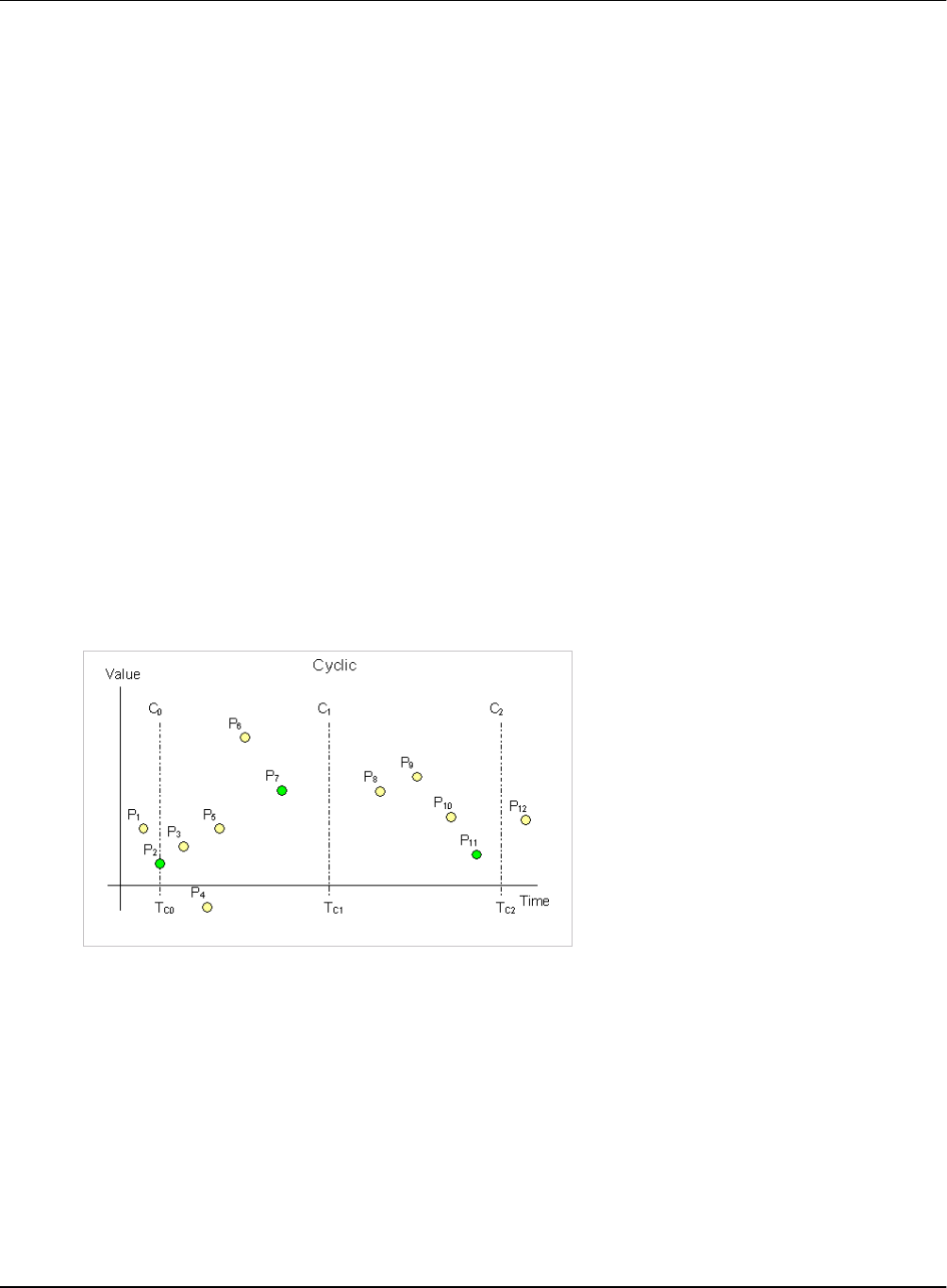
AVEVA™ Historian Retrieval Guide formerly Wonderware Data Retrieval Options
28
In cyclic retrieval, one row is returned for each "cycle boundary." You specify the number of cycles either
directly or by means of a time resolution, that is, the spacing of cycle boundaries in time. If you specify a
number of cycles, the AVEVA Historian returns that number of rows, evenly spaced in time over the
requested period. The cyclic resolution is calculated by dividing the requested time period by the number
of cycle boundaries. If you specify a resolution, the number of cycles is calculated by dividing the time
period by the resolution.
If no data value is actually stored at a cycle boundary, the last value before the boundary is returned.
Beginning with AVEVA System Platform 2014 R2 SP1, Historian cyclic storage rules improve the
handling of "slow rate change" data tags. Instead of delaying posts to the database if tag values do not
arrive in a timely manner, new rules define a cyclic timeout when the database will be updated anyway.
That timeout is typically one-half the period for the tag’s cycle storage rate or the database server’s
maximum cyclic storage timeout, whichever is shorter. The time out is controlled by a the system
parameter MaxCyclicStorageTimeout. For more information, see System Parameters in the AVEVA
Historian Administration Guide.
The default retrieval mode is cyclic for retrieval from analog tables, including analog and state summary
tables.
Cyclic retrieval is fast and therefore consumes little server resources. However, it may not correctly
reflect the stored data because important process values (gaps, spikes, etc.) might fall between cycle
boundaries. For an alternative, see Best Fit Retrieval (see "Best Fit Retrieval" on page 41).
Cyclic Retrieval - How It Works
The following illustration shows how values are returned for cyclic retrieval:
Data is retrieved in cyclic mode with a start time of T
C0
and an end time of T
C2
. The resolution has been
set in such a way that the historian returns data for three cycle boundaries at T
C0
, T
C1
, and T
C2
. Each dot
in the graphic represents an actual data point stored on the historian. From these points, the following
are returned:
At T
C0
: P
2
, because it falls right on the cycle boundary
At T
C1
: P
7
, because it is the last point before the cycle boundary
At T
C2
: P
11
, for the same reason
Cyclic Retrieval - Supported Value Parameters
You can use various parameters to adjust which values are returned in cyclic retrieval mode. For more
information, see the following sections:

Data Retrieval Options AVEVA™ Historian Retrieval Guide formerly Wonderware
29
Cycle Count (X Values over Equal Time Intervals) (wwCycleCount) on page 91
Resolution (Values Spaced Every X ms) (wwResolution) on page 93
History Version (wwVersion) on page 104
TimeStamp Rule (wwTimeStampRule) on page 107, for AVEVA Historian 9.0 and above
Quality Rule (wwQualityRule) on page 111
Cyclic Retrieval - Query Example
To use the cyclic retrieval mode, set the following parameter in your query.
wwRetrievalMode = 'Cyclic'
For example, the following query returns data values for the analog tag 'ReactLevel'. If you do not specify
a wwCycleCount or wwResolution, the query will return 100 rows (the default).
SELECT DateTime, Sec = DATEPART(ss, DateTime), TagName, Value
FROM History
WHERE TagName = 'ReactLevel'
AND DateTime >= '2001-03-13 1:15:00pm'
AND DateTime <= '2001-03-13 2:15:00pm'
AND wwRetrievalMode = 'Cyclic'
The results are:
DateTime
Sec
TagName
Value
2001-03-13 13:15:00.000
0
ReactLevel
1775.0
2001-03-13 13:15:00.000
36
ReactLevel
1260.0
2001-03-13 13:16:00.000
12
ReactLevel
1650.0
2001-03-13 13:16:00.000
49
ReactLevel
1280.0
2001-03-13 13:17:00.000
25
ReactLevel
1525.0
2001-03-13 13:18:00.000
1
ReactLevel
585.0
2001-03-13 13:18:00.000
38
ReactLevel
1400.0
2001-03-13 13:19:00.000
14
ReactLevel
650.0
2001-03-13 13:19:00.000
50
ReactLevel
2025.0
2001-03-13 13:20:00.000
27
ReactLevel
765.0
2001-03-13 13:21:00.000
3
ReactLevel
2000.0
2001-03-13 13:21:00.000
39
ReactLevel
830.0
2001-03-13 13:22:00.000
16
ReactLevel
1925.0
...
(100 row(s) affected)
Cyclic Retrieval - Initial Values
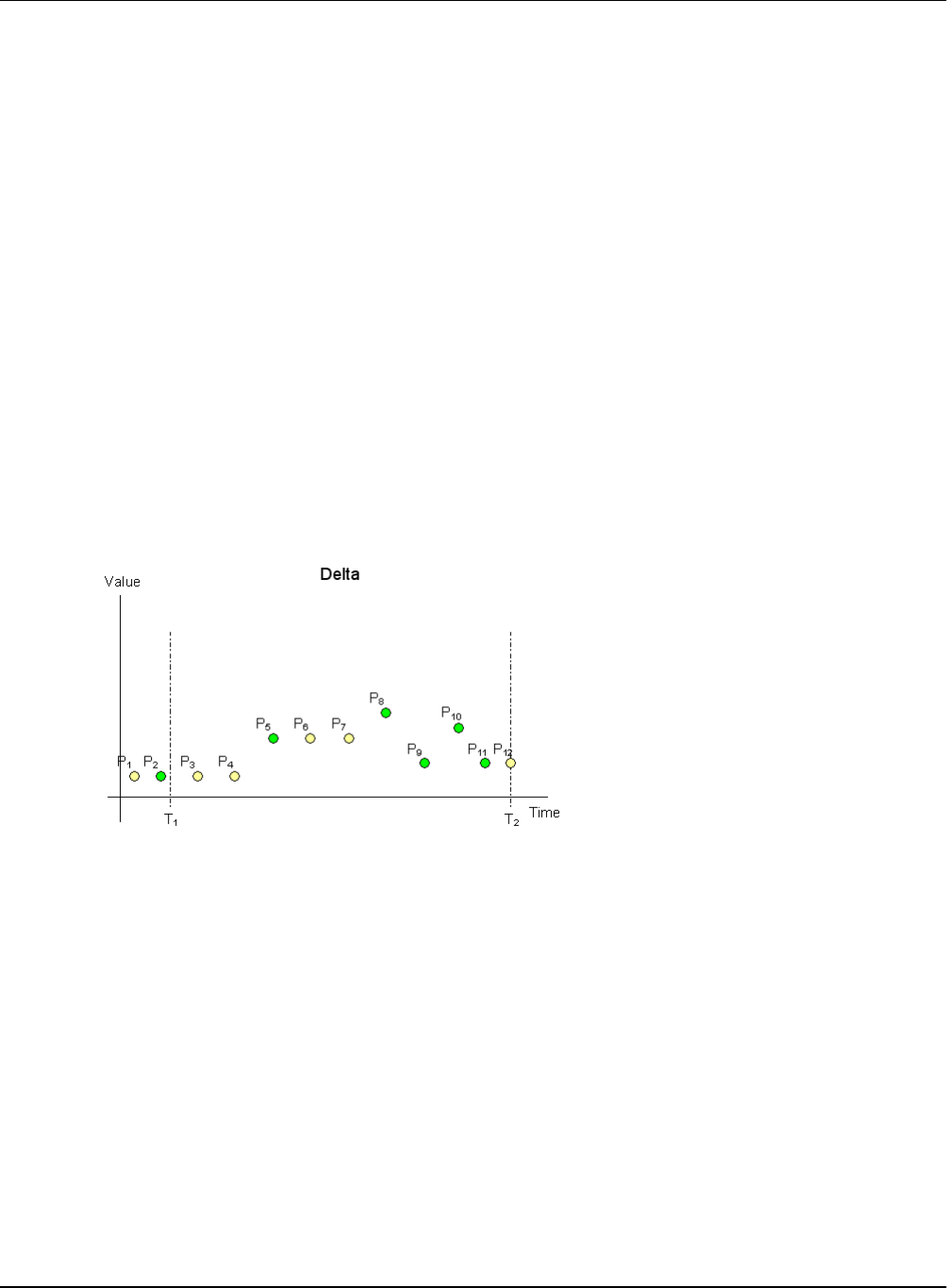
AVEVA™ Historian Retrieval Guide formerly Wonderware Data Retrieval Options
30
No special handling is done for initial values. The initial value will behave like a normal cycle boundary at
the start time. For information on initial values, see Delta Retrieval - Initial Values on page 34.
Cyclic Retrieval - Handling NULL Values
No special handling is done for NULL values. They are returned just like any other value.
Delta Retrieval
Delta retrieval, or retrieval based on exception, is the retrieval of only the changed values for a tag(s) for
the given time interval. That is, duplicate values are not returned. It works with all types of tags.
Delta retrieval always produces a rowset comprised of only rows that are actually stored on the historian;
that is, a delta query returns all of the physical rows in history for the specified tags, over the specified
period, minus any duplicate values. If there is no actual data point at the start time, the last data point
before the start time is returned.
Delta retrieval is the default mode for discrete and string tables and from the History table.
Delta Retrieval - How It Works
The following illustration shows how values are returned for delta retrieval:
Data is retrieved in delta mode with a start time of T
1
and an end time of T
2
. Each dot in the graphic
represents an actual data point stored on the historian. From these points, the following are returned:
P
2
, because there is no actual data point at T
1
P
5
, P
8
, P
9
, P
10
, and P
11
, because they represent changed values during the time period
For delta retrieval for replicated summary tags on a tier-2 historian, if a point with doubtful quality is
returned as the result of a value selection from an input summary point with a contained gap, the same
point can be returned again with good quality if the same value is selected again from the next input
summary point that has good quality.
Delta Retrieval - Supported Value Parameters
You can use various parameters to adjust which values are returned in delta retrieval mode. For more
information, see the following sections:
Time Deadband (wwTimeDeadband) on page 97
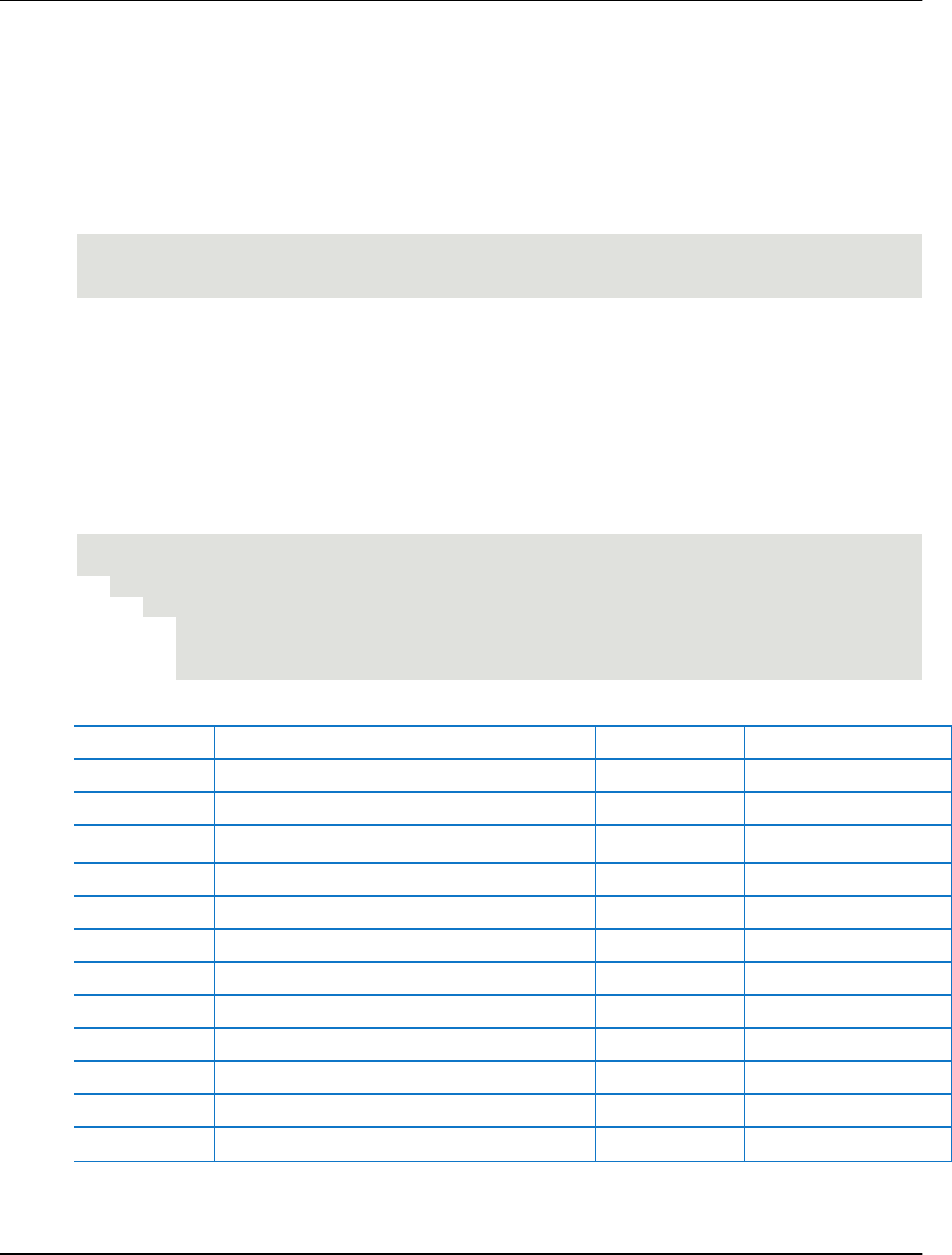
Data Retrieval Options AVEVA™ Historian Retrieval Guide formerly Wonderware
31
Value Deadband (wwValueDeadband) on page 101
History Version (wwVersion) on page 104
Quality Rule (wwQualityRule) on page 111
Delta Retrieval - Query Examples
To use the delta retrieval mode, set the following parameter in your query.
wwRetrievalMode = 'Delta'
For examples, see the following:
Delta Retrieval - Query 1 on page 31
Delta Retrieval - Query 2 on page 32
Delta Retrieval - Query 3 on page 33
Delta Retrieval - Query 4 on page 33
Delta Retrieval - Query 1
As an example of how delta mode works, consider the following query:
SELECT TagName, DateTime, Value, QualityDetail
FROM History
WHERE TagName = 'A001'
AND DateTime >= '2009-09-12 00:20'
AND DateTime <= '2009-09-12 00:40'
AND wwRetrievalMode = 'Delta'
This query can be run against the following sample data:
Tagname
DateTime
Value
QualityDetail
A001
2009-09-12 00:11
1.0
192
A001
2009-09-12 00:13
1.6
192
A001
2009-09-12 00:16
1.3
192
A001
2009-09-12 00:21
2.0
192
A001
2009-09-12 00:24
1.2
192
A001
2009-09-12 00:27
1.2
192
A001
2009-09-12 00:28
0.0
249
A001
2009-09-12 00:29
0.0
249
A001
2009-09-12 00:32
0.6
192
A001
2009-09-12 00:35
0.0
249
A001
2009-09-12 00:37
1.5
192
A001
2009-09-12 00:43
1.3
192

AVEVA™ Historian Retrieval Guide formerly Wonderware Data Retrieval Options
32
A graphical representation of the data is as follows:
The results are:
Tagname
DateTime
Value
QualityDetail
A001
2009-09-12 00:20
1.3
192
A001
2009-09-12 00:21
2.0
192
A001
2009-09-12 00:24
1.2
192
A001
2009-09-12 00:28
NULL
249
A001
2009-09-12 00:32
0.6
192
A001
2009-09-12 00:35
NULL
249
A001
2009-09-12 00:37
1.5
192
The sample data points and the results are mapped on the following chart. Only the data falling between
the time start and end marks at 2009-09-12 00:20 and 2009-09-12 00:40 (shown on the chart as dark
vertical lines) are returned by the query.
Because there is no value that matches the start time, an initial value at 2009-09-12 00:20 is returned in
the results based on the value of the preceding data point at 2009-09-12 00:16. Because there is no
change in the value at 2009-09-12 00:27 from the value at 2009-09-12 00:24, the data point appears on
the chart but does not appear in the results. Similarly, the second 0.0 value at 2009-09-12 00:29 is also
excluded from the results.
You can further control the number of rows returned by using the wwTimeDeadband,
wwValueDeadband, and wwCycleCount extensions. The use of a cycle count returns the first number of
rows within the time range of the query. For more information, see -old-Using wwResolution,
wwCycleCount, and wwRetrievalMode in the Same Query.
Also, the use of a time deadband and/or value deadband with delta retrieval produces differing results.
For more information, see Time Deadband (wwTimeDeadband) on page 97 and Value Deadband
(wwValueDeadband) on page 101.
Delta Retrieval - Query 2
SELECT DateTime, TagName, Value
FROM History
WHERE TagName IN ('SysTimeSec','SysTimeMin')
AND DateTime >= '2001-12-09 11:35'
AND DateTime <= '2001-12-09 11:36'
AND wwRetrievalMode = 'Delta'
The results are:
DateTime
TagName
Value
2001-12-09 11:35:00.000
SysTimeSec
0
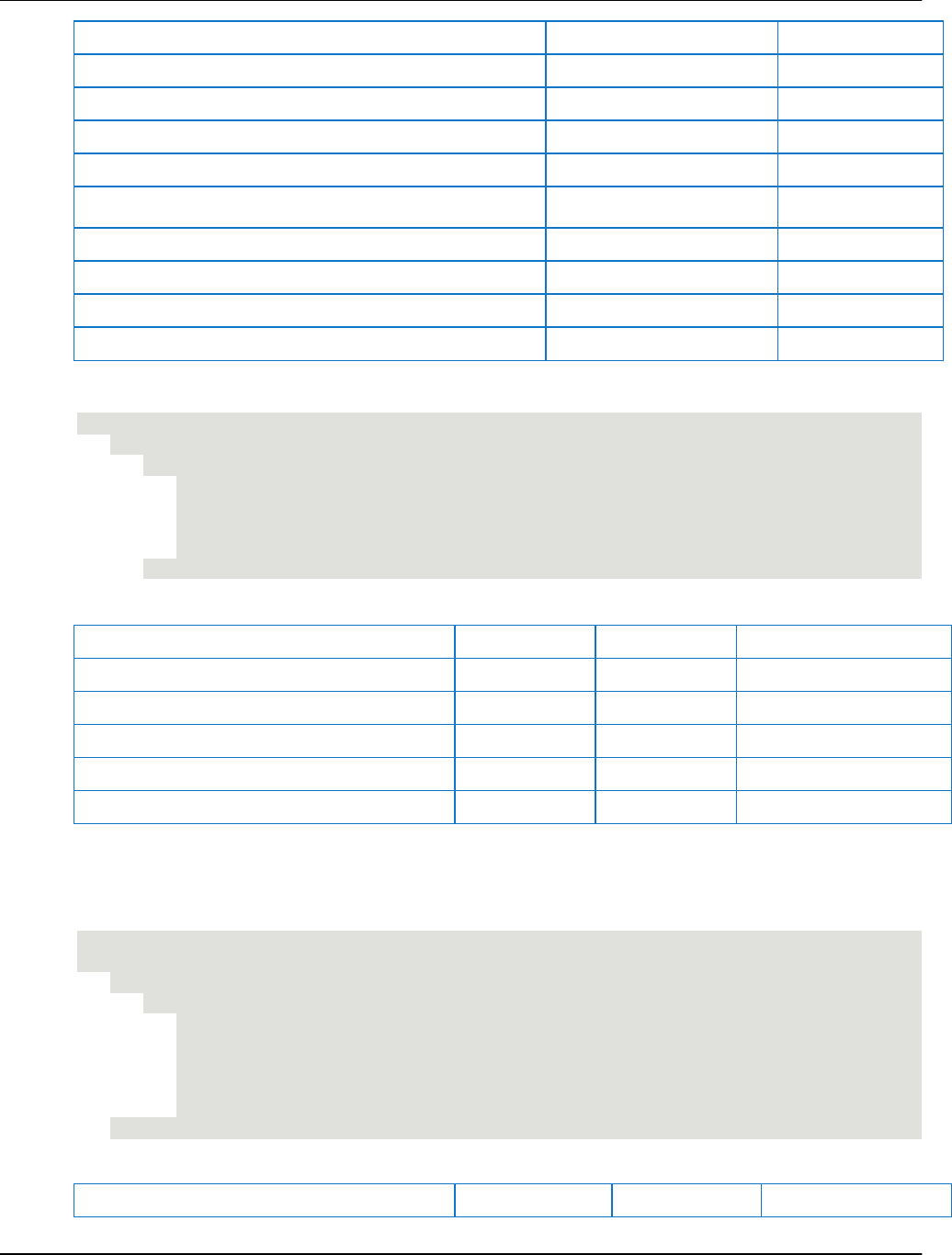
Data Retrieval Options AVEVA™ Historian Retrieval Guide formerly Wonderware
33
2001-12-09 11:35:00.000
SysTimeMin
35
2001-12-09 11:35:01.000
SysTimeSec
1
2001-12-09 11:35:02.000
SysTimeSec
2
2001-12-09 11:35:03.000
SysTimeSec
3
2001-12-09 11:35:04.000
SysTimeSec
4
...
2001-12-09 11:35:58.000
SysTimeSec
58
2001-12-09 11:35:59.000
SysTimeSec
59
2001-12-09 11:36:00.000
SysTimeSec
0
2001-12-09 11:36:00.000
SysTimeMin
36
Delta Retrieval - Query 3
SELECT * FROM OpenQuery(INSQL,'SELECT DateTime, Value, Quality, QualityDetail
FROM AnalogHistory
WHERE TagName = "SysTimeSec"
AND wwRetrievalMode = "Delta"
AND Value = 10
AND DateTime >="2001-07-27 03:00:00.000"
AND DateTime <="2001-07-27 03:05:00.000"
')
The results are:
DateTime
Value
Quality
QualityDetail
2001-07-27 03:00:10.000
10
0
192
2001-07-27 03:01:10.000
10
0
192
2001-07-27 03:02:10.000
10
0
192
2001-07-27 03:03:10.000
10
0
192
2001-07-27 03:04:10.000
10
0
192
Delta Retrieval - Query 4
For a delta query, if both a wwCycleCount and a Value comparison are specified, the query will return the
first number of rows (if available) that meet the value indicated.
SELECT * FROM OpenQuery(INSQL,'SELECT DateTime, Value, Quality, QualityDetail
FROM AnalogHistory
WHERE TagName = "SysTimeSec"
AND wwRetrievalMode = "Delta"
AND Value = 20
AND wwCycleCount = 10
AND DateTime >="2001-07-27 03:00:00.000"
AND DateTime <="2001-07-27 03:20:00.000"
')
The results are:
DateTime
Value
Quality
QualityDetail
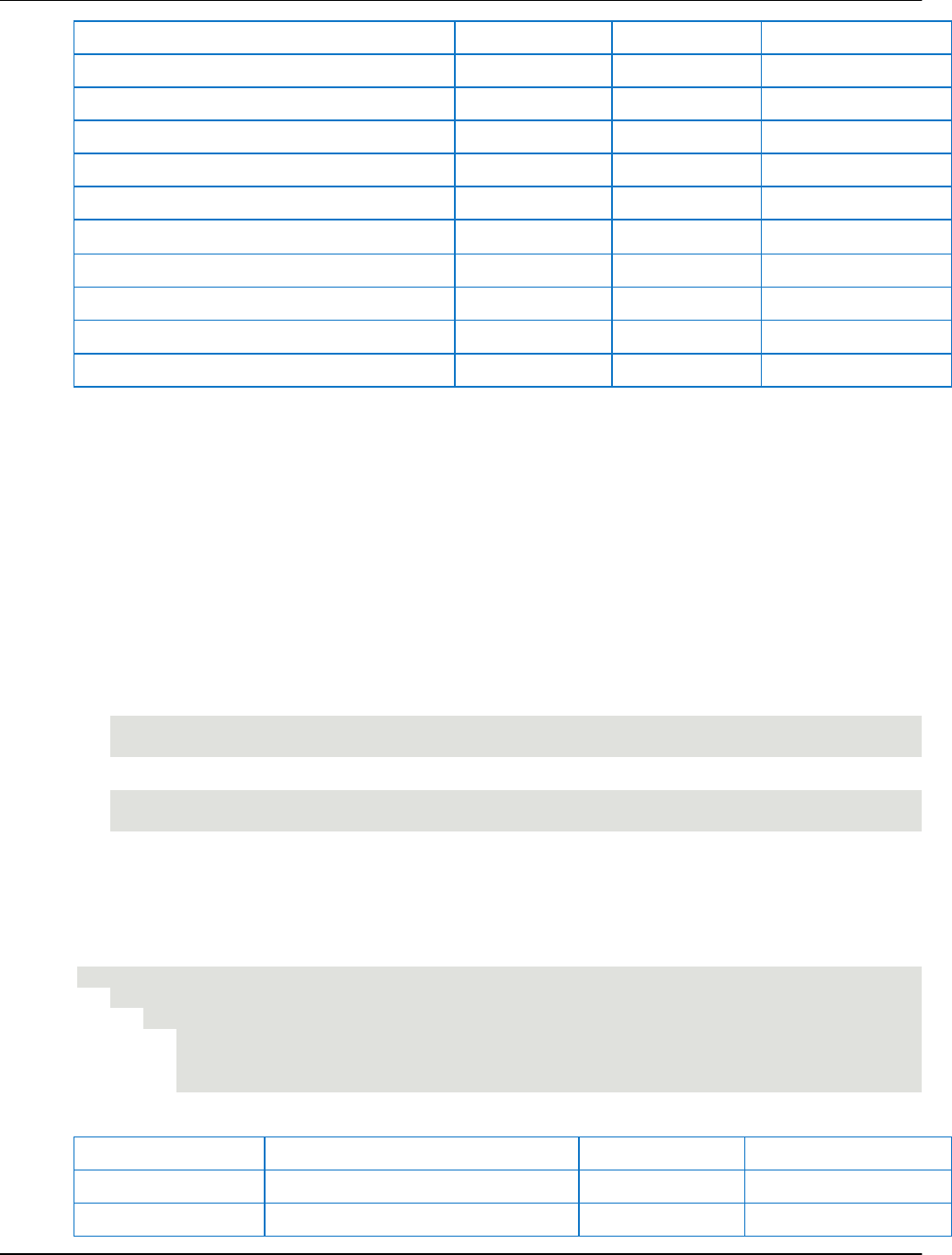
AVEVA™ Historian Retrieval Guide formerly Wonderware Data Retrieval Options
34
DateTime
Value
Quality
QualityDetail
2001-07-27 03:00:20.000
20
0
192
2001-07-27 03:01:20.000
20
0
192
2001-07-27 03:02:20.000
20
0
192
2001-07-27 03:03:20.000
20
0
192
2001-07-27 03:04:20.000
20
0
192
2001-07-27 03:05:20.000
20
0
192
2001-07-27 03:06:20.000
20
0
192
2001-07-27 03:07:20.000
20
0
192
2001-07-27 03:08:20.000
20
0
192
2001-07-27 03:09:20.000
20
0
192
Delta Retrieval - Initial Values
Initial values are special values that can be returned from queries that lie exactly on the query start time,
even if there is not a data point that specifically matches the specified start time. If there is not a value
exactly on the query start time, the last point before the start time will be returned with its DateTime set to
the query start time and its Quality set to 133. If no value exists at or prior to the query start time, a NULL
value will be returned at start time with QualityDetail set to 65536, OPCQuality set to 0, and Quality set to
1.
Querying the start time in exclusive form with the > operator indicates that a value should not be returned
for the query start time if one does not exist. Querying the start time in inclusive form with the >= operator
indicates that an initial value should be returned.
For example, the following exclusive query statement does not return an initial value for 2009-01-01
02:00:00.
DateTime > '2009-01-01 02:00:00'
However, the following inclusive query statement does return an initial value for 2009-01-01 02:00:00.
DateTime >= '2009-01-01 02:00:00'
No special final value is returned.
Delta Retrieval - Handling NULL Values
The initial NULL value after a non-NULL is always returned. Multiple NULL values are suppressed. The
first non-NULL after a NULL is always returned even if it is the same as the previous non-NULL value.
SELECT TagName, DateTime, Value, QualityDetail
FROM History
WHERE TagName = 'A001'
AND DateTime >= '2009-09-12 00:20'
AND DateTime <= '2009-09-12 00:40'
AND wwRetrievalMode = 'Delta'
This query can be run against the following sample data:
Tagname
DateTime
Value
QualityDetail
A001
2009-09-12 00:17
0.8
192
A001
2009-09-12 00:24
0.0
249
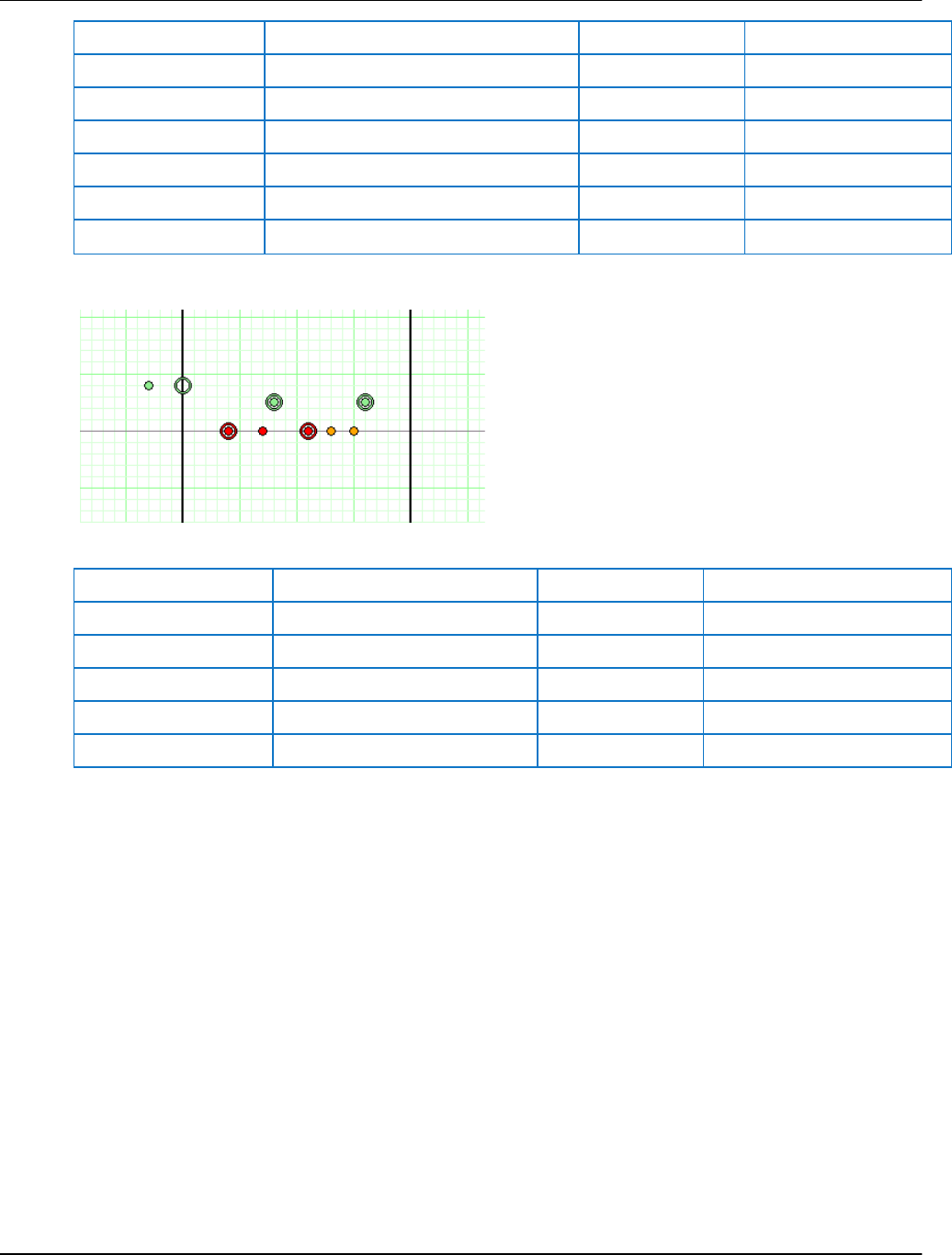
Data Retrieval Options AVEVA™ Historian Retrieval Guide formerly Wonderware
35
Tagname
DateTime
Value
QualityDetail
A001
2009-09-12 00:27
0.0
249
A001
2009-09-12 00:28
0.5
192
A001
2009-09-12 00:31
0.0
249
A001
2009-09-12 00:33
0.0
24
A001
2009-09-12 00:35
0.0
24
A001
2009-09-12 00:36
0.5
192
The following is a graphical representation of the data:
The results are:
Tagname
DateTime
Value
QualityDetail
A001
2009-09-12 00:20
0.8
192
A001
2009-09-12 00:24
NULL
249
A001
2009-09-12 00:28
0.5
192
A001
2009-09-12 00:31
NULL
249
A001
2009-09-12 00:36
0.5
192
The sample data points and the results are mapped on the following chart. Only the data falling between
the time start and end marks at 00:20 and 00:40 (shown on the chart as dark vertical lines) are returned
by the query.
Because there is no value that matches the start time, an initial value at 00:20 is returned in the results
based on the value of the preceding data point at 00:16. Because there is no change in the value at 00:27
from the value at 00:24, the data point appears on the chart but does not appear in the results. Similarly,
the two 0.0 values at 00:33 and 00:35 are also excluded from the results. However, the non-NULL value
at 00:36 is returned, even though it is the same as the value at 00:28, because it represents a delta from
the preceding (NULL) value at 00:35.
Full Retrieval
In full retrieval mode, all stored data points are returned, regardless of whether a value or quality has
changed since the last value. This mode allows the same value and quality pair (or NULL value) to be
returned consecutively with their actual timestamps. It works with all types of tags.
By using full retrieval in conjunction with storage without filtering (that is, no delta or cyclic storage mode
is applied at the historian), you can retrieve all values that originated from the plant floor data source or
from another application.
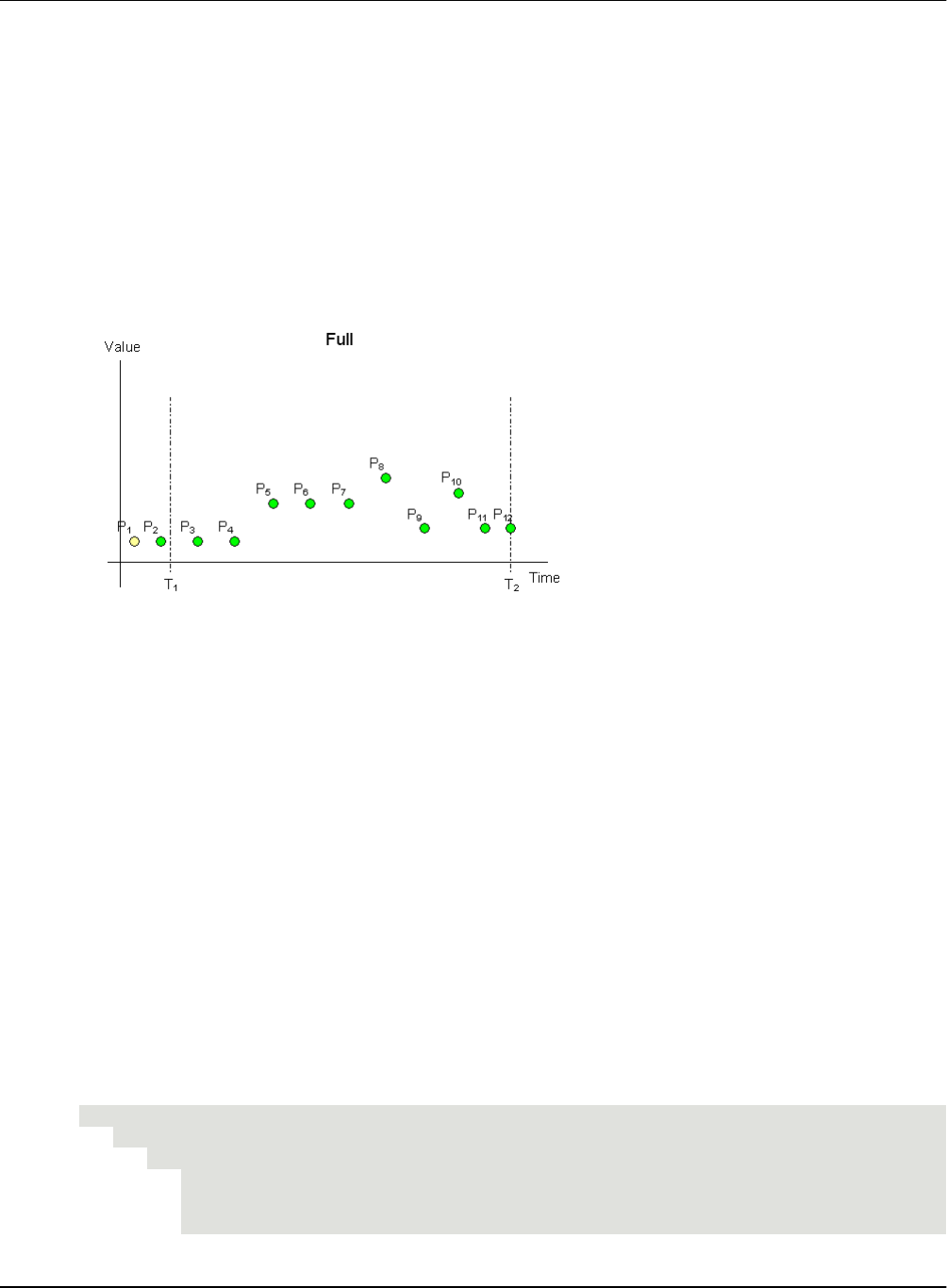
AVEVA™ Historian Retrieval Guide formerly Wonderware Data Retrieval Options
36
Full retrieval best represents the process measurements recorded by the AVEVA Historian. However, it
creates a higher load for the server, the network and the client system because a very large number of
records may be returned for longer time periods.
For full retrieval for replicated summary tags on a tier-2 historian, if a point with doubtful quality is
returned as the result of a value selection from an input summary point with a contained gap, the same
point can be returned again with good quality if the same value is selected again from the next input
summary point that has good quality.
Full Retrieval - How It Works
The following illustration shows how values are returned for full retrieval:
Data is retrieved in full mode with a start time of T
1
and an end time of T
2
. Each dot in the graphic
represents an actual data point stored on the historian. From these points, the following are returned:
P
2
, because there is no actual data point at T
1
P
3
through P
12
, because they represent stored data points during the time period
Full Retrieval - Supported Value Parameters
You can use various parameters to adjust which values are returned in full retrieval mode. For more
information, see the following sections:
History Version (wwVersion) on page 104
Quality Rule (wwQualityRule) on page 111
Full Retrieval - Query Example
For example, the following query uses full retrieval mode:
SELECT DateTime, TagName, Value
FROM History
WHERE TagName IN ('SysTimeSec','SysTimeMin')
AND DateTime >= '2001-12-09 11:35'
AND DateTime <= '2001-12-09 11:36'
AND wwRetrievalMode = 'Full'
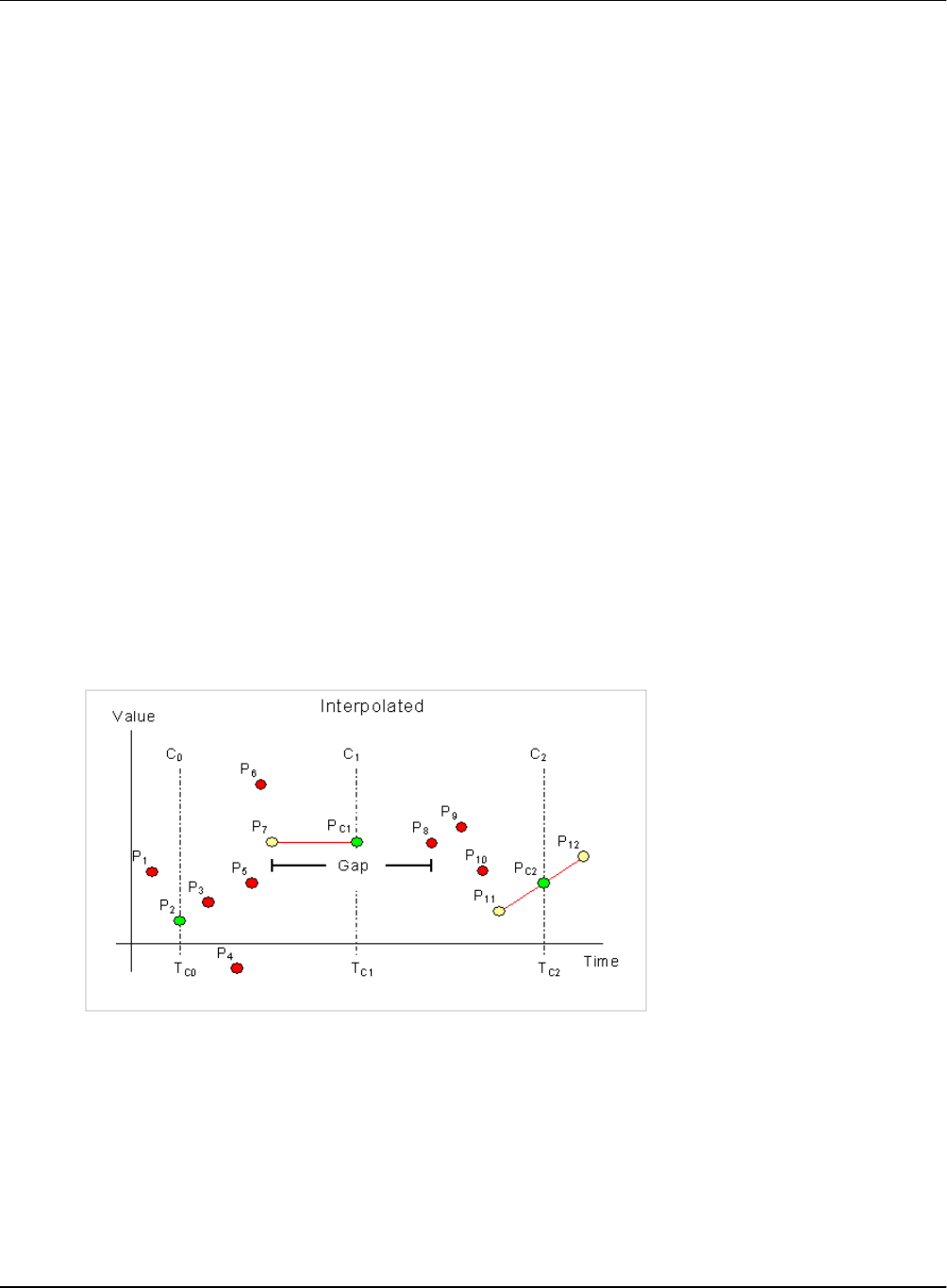
Data Retrieval Options AVEVA™ Historian Retrieval Guide formerly Wonderware
37
Full Retrieval - Initial Values
Full retrieval mode handles initial values the same way as delta mode. For more information on initial
values, see Delta Retrieval - Initial Values on page 34.
Interpolated Retrieval
Interpolated retrieval works like cyclic retrieval, except that interpolated values are returned if there is no
actual data point stored at the cycle boundary.
This retrieval mode is useful if you want to retrieve cyclic data for slow-changing tags. For a trend,
interpolated retrieval results in a smoother curve instead of a "stair-stepped" curve. This mode is also
useful if you have a slow-changing tag and a fast-changing tag and want to retrieve data for both. Finally,
some advanced applications require more evenly spaced values than would be returned if interpolation
was not applied.
By default, interpolated retrieval uses the interpolation setting specified for the tag in the AVEVA
Historian. This means that if a tag is set to use stair-step interpolation, interpolated retrieval gives the
same results as cyclic retrieval.
Interpolation is only applied to analog tags. If you retrieve data for other types of tags, stair-step
interpolation is used, and the results are the same as for cyclic retrieval.
Interpolated retrieval is a bit slower than cyclic retrieval. It shares the limitations of cyclic retrieval in that
it may not accurately represent the stored process data.
Interpolated Retrieval - How It Works
The following illustration shows how the values for an analog tag that is configured for linear interpolation
are returned when using interpolated retrieval.
Data is retrieved in interpolated mode with a start time of TC
0
and an end time of TC
2
. The resolution has
been set in such a way that the historian returns data for three cycle boundaries at TC
0
, TC
1
, and TC
2
. P
1
to P
12
represent actual data points stored on the historian. Of these points, eleven represent normal
analog values, and one, P
7
, represents a NULL value due to an I/O Server disconnect, which causes a
gap in the data between P
7
and P
8
.
The green points (P
2
, PC
1
, PC
2
) are returned. The yellow points (P
7
, P
11
, P
12
) are used to interpolate the
returned value for each cycle. The red points are considered, but not used in calculating the points to
return.

AVEVA™ Historian Retrieval Guide formerly Wonderware Data Retrieval Options
38
Because P
2
is located exactly at the query start time, it is returned at that time without the need for any
interpolation. At the following cycle boundary, point PC1 is returned, which is the NULL value
represented by P
7
shifted forward to time TC
1
. At the last cycle boundary, point PC
2
is returned, which
has been interpolated using points P
11
and P
12
.
You can use various parameters to adjust which values are returned in interpolated retrieval mode. For
more information, see the following sections:
Cycle Count (X Values over Equal Time Intervals) (wwCycleCount) on page 91
Resolution (Values Spaced Every X ms) (wwResolution) on page 93
History Version (wwVersion) on page 104
Interpolation Type (wwInterpolationType) on page 105
TimeStamp Rule (wwTimeStampRule) on page 107
Quality Rule (wwQualityRule) on page 111
Interpolated Retrieval - Query Examples
To use the interpolated mode, set the following parameter in your query.
wwRetrievalMode = 'Interpolated'
For examples, see the following:
Interpolated Retrieval - Query 1 on page 38
Interpolated Retrieval - Query 2 on page 39
Interpolated Retrieval - Query 3 on page 40
Interpolated Retrieval - Query 1
Two analog tags and a discrete tag are retrieved from the History table, using linear interpolation. The
start and end times are offset to show interpolation of the SysTimeMin tag. The data points at all cycle
boundaries are interpolated for the two analog tags, while the values returned for the discrete tag are
stair-stepped.
SELECT DateTime, TagName, Value, wwInterpolationType FROM History
WHERE TagName IN ('SysTimeMin', 'ReactTemp', 'SysPulse')
AND DateTime >= '2005-04-11 12:02:30'
AND DateTime <= '2005-04-11 12:06:30'
AND wwRetrievalMode = 'Interpolated'
AND wwInterpolationType = 'Linear'
AND wwResolution = 60000
The results are:
DateTime
TagName
Value
wwInterpolationType
2005-04-11 12:02:30.000
SysTimeMin
2.5
LINEAR
2005-04-11 12:02:30.000
ReactTemp
23.2
LINEAR
2005-04-11 12:02:30.000
SysPulse
1.0
STAIRSTEP
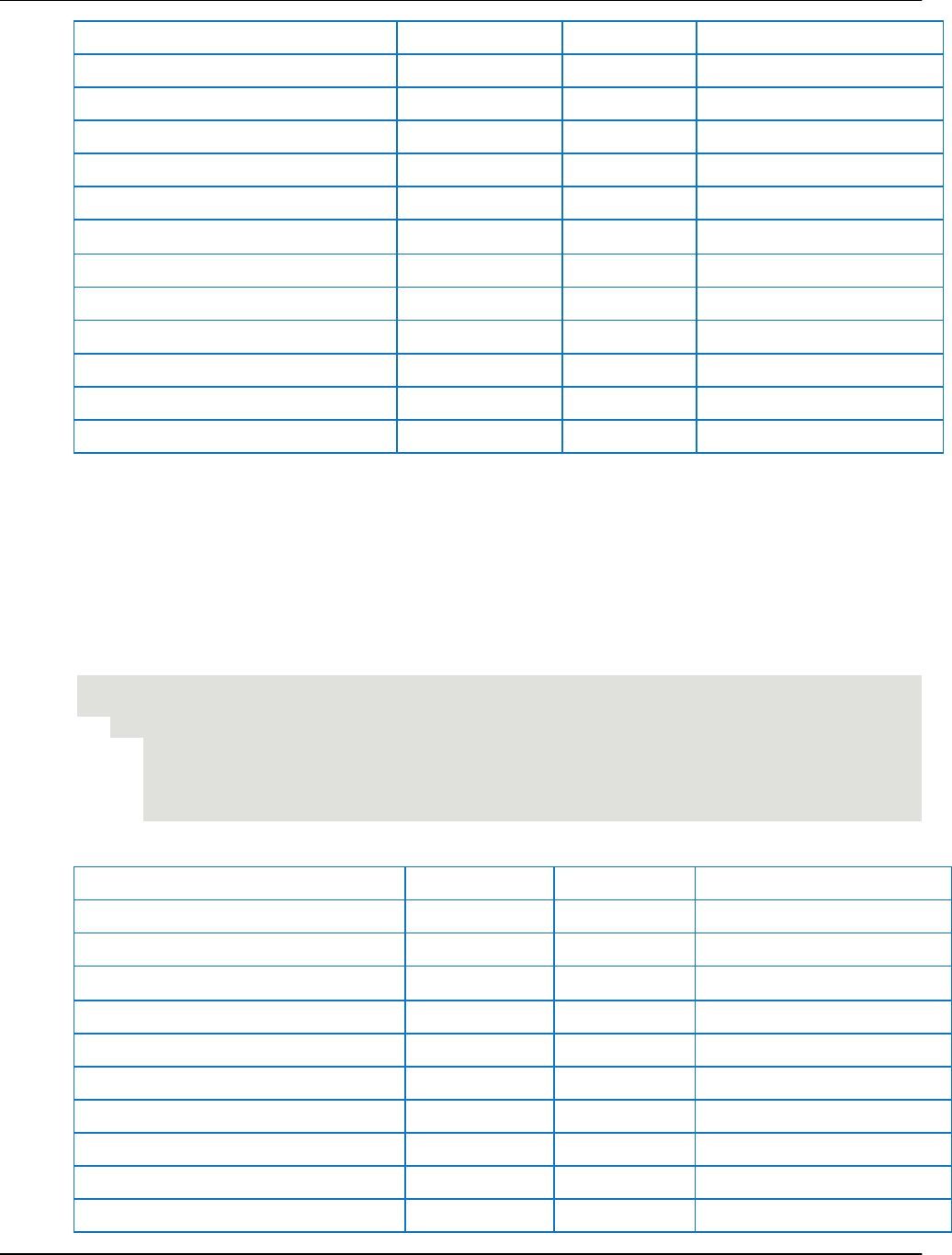
Data Retrieval Options AVEVA™ Historian Retrieval Guide formerly Wonderware
39
DateTime
TagName
Value
wwInterpolationType
2005-04-11 12:03:30.000
SysTimeMin
3.5
LINEAR
2005-04-11 12:03:30.000
ReactTemp
139.96753
LINEAR
2005-04-11 12:03:30.000
SysPulse
0.0
STAIRSTEP
2005-04-11 12:04:30.000
SysTimeMin
4.5
LINEAR
2005-04-11 12:04:30.000
ReactTemp
111.49636
LINEAR
2005-04-11 12:04:30.000
SysPulse
1.0
STAIRSTEP
2005-04-11 12:05:30.000
SysTimeMin
5.5
LINEAR
2005-04-11 12:05:30.000
ReactTemp
17.00238
LINEAR
2005-04-11 12:05:30.000
SysPulse
0.0
STAIRSTEP
2005-04-11 12:06:30.000
SysTimeMin
6.5
LINEAR
2005-04-11 12:06:30.000
ReactTemp
168.99531
LINEAR
2005-04-11 12:06:30.000
SysPulse
1.0
STAIRSTEP
Interpolated Retrieval - Query 2
If you omit the interpolation type in the query, the historian determines which interpolation type to use for
an analog tag based on the value of the InterpolationType column in the AnalogTag table, in conjunction
with the InterpolationTypeInteger and InterpolationTypeReal system parameters.
In the following query both analog tags are set to use the system default through the AnalogTag table,
while the InterpolationTypeInteger and InterpolationTypeReal system parameters are set to 0 and 1,
respectively. Because SysTimeMin is defined as a 2-byte integer and ReactTemp is defined as a real we
see that only rows for ReactTemp are interpolated.
SELECT DateTime, TagName, Value, wwInterpolationType FROM History
WHERE TagName IN ('SysTimeMin', 'ReactTemp', 'SysPulse')
AND DateTime >= '2005-04-11 12:02:30'
AND DateTime <= '2005-04-11 12:06:30'
AND wwRetrievalMode = 'Interpolated'
AND wwResolution = 60000
The results are:
DateTime
TagName
Value
wwInterpolationType
2005-04-11 12:02:30.000
SysTimeMin
2.0
STAIRSTEP
2005-04-11 12:02:30.000
ReactTemp
23.2
LINEAR
2005-04-11 12:02:30.000
SysPulse
1.0
STAIRSTEP
2005-04-11 12:03:30.000
SysTimeMin
3.0
STAIRSTEP
2005-04-11 12:03:30.000
ReactTemp
139.96753
LINEAR
2005-04-11 12:03:30.000
SysPulse
0.0
STAIRSTEP
2005-04-11 12:04:30.000
SysTimeMin
4.0
STAIRSTEP
2005-04-11 12:04:30.000
ReactTemp
111.49636
LINEAR
2005-04-11 12:04:30.000
SysPulse
1.0
STAIRSTEP
2005-04-11 12:05:30.000
SysTimeMin
5.0
STAIRSTEP

AVEVA™ Historian Retrieval Guide formerly Wonderware Data Retrieval Options
40
DateTime
TagName
Value
wwInterpolationType
2005-04-11 12:05:30.000
ReactTemp
17.00238
LINEAR
2005-04-11 12:05:30.000
SysPulse
0.0
STAIRSTEP
2005-04-11 12:06:30.000
SysTimeMin
6.0
STAIRSTEP
2005-04-11 12:06:30.000
ReactTemp
168.99531
LINEAR
2005-04-11 12:06:30.000
SysPulse
1.0
STAIRSTEP
Interpolated Retrieval - Query 3
SELECT TagName, DateTime, Value, QualityDetail, wwInterpolationType
FROM History
WHERE TagName = 'A001'
AND DateTime >= '2009-09-12 00:20'
AND DateTime <= '2009-09-12 00:40'
AND wwRetrievalMode = 'Interpolated'
AND wwResolution = '10000'
This query can be run against the following sample data:
Tagname
DateTime
Value
QualityDetail
A001
2009-09-12 00:09
0.2
192
A001
2009-09-12 00:15
1.3
192
A001
2009-09-12 00:17
0.8
192
A001
2009-09-12 00:22
0.6
249
A001
2009-09-12 00:26
0.9
192
A001
2009-09-12 00:28
0.0
249
A001
2009-09-12 00:29
0.0
249
A001
2009-09-12 00:33
1.1
192
A001
2009-09-12 00:35
1.6
192
A001
2009-09-12 00:38
0.5
192
A001
2009-09-12 00:42
0.8
192
The following is a graphical representation of the data:
The results are:

Data Retrieval Options AVEVA™ Historian Retrieval Guide formerly Wonderware
41
Tagname
DateTime
Value
QualityDetail
wwInterpolationType
A001
2009-09-12 00:20
0.8
192
STAIRSTEP
A001
2009-09-12 00:30
NULL
249
STAIRSTEP
A001
2009-09-12 00:40
0.5
192
LINEAR
The sample data points and the results are mapped on the following chart. Only the data falling between
the time start and end marks at 00:20 and 00:40 (shown on the chart as dark vertical lines) are returned
by the query.
Because there is no value that matches the start time, an initial value at 00:20 is returned in the results
based on the preceding data point at 00:17 because the following data point at 00:22 is NULL. Because
a NULL value precedes the 00:30 cycle boundary at 00:29, the NULL is returned at the cycle boundary.
The value at 00:40 is an interpolation of the data points at 00:38 and 00:42.
Interpolated Retrieval - Initial and Final Values
A value is returned at the start time and end time of the query using interpolation of the surrounding
points.
Interpolated Retrieval - Handling NULL Values
When a NULL value precedes a cycle boundary, that NULL will be returned at the cycle boundary.
If a valid value precedes a cycle boundary, but is followed by a NULL value after the cycle boundary, no
interpolation will be used and wwInterpolationType will be set to STAIRSTEP for that value.
Best Fit Retrieval
For the " best fit" retrieval mode, the total time for the query is divided into even sub-periods, and then up
to five values are returned for each sub-period:
First value in the period
Last value in the period
Minimum value in the period, with its actual time
Maximum value in the period, with its actual time
The first "exception" in the period (non-Good quality)
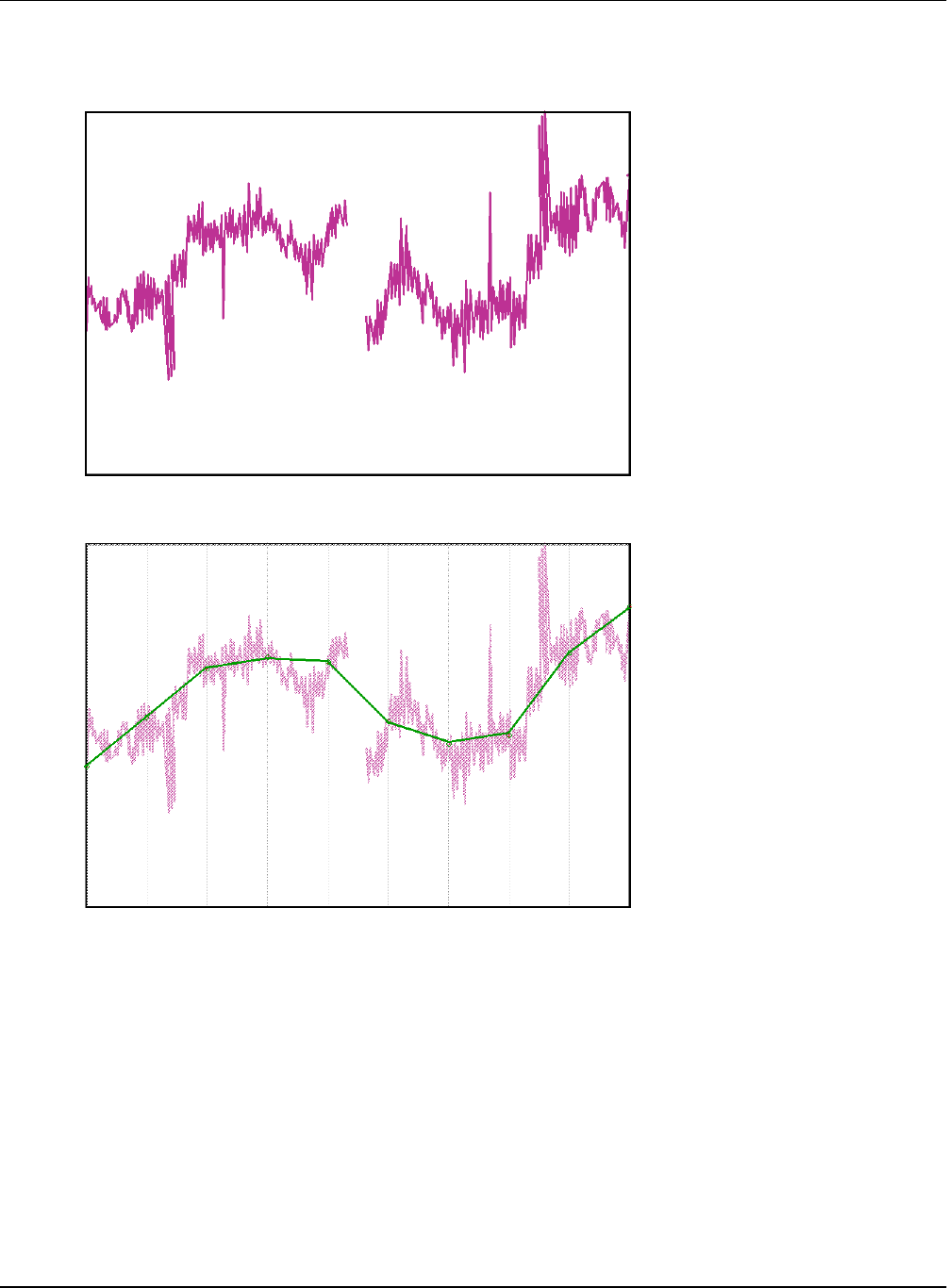
AVEVA™ Historian Retrieval Guide formerly Wonderware Data Retrieval Options
42
"Best fit" retrieval allows for a compromise between delta retrieval and cyclic retrieval. For example, delta
retrieval can accurately represent a process over a long period of time, as shown in the following trend.
However, to achieve this representation, a large number of data values must be returned.
If cyclic retrieval is used to retrieve the data, the retrieval is much more efficient, because fewer values
are returned. However, the representation is not as accurate, as the following trend shows.
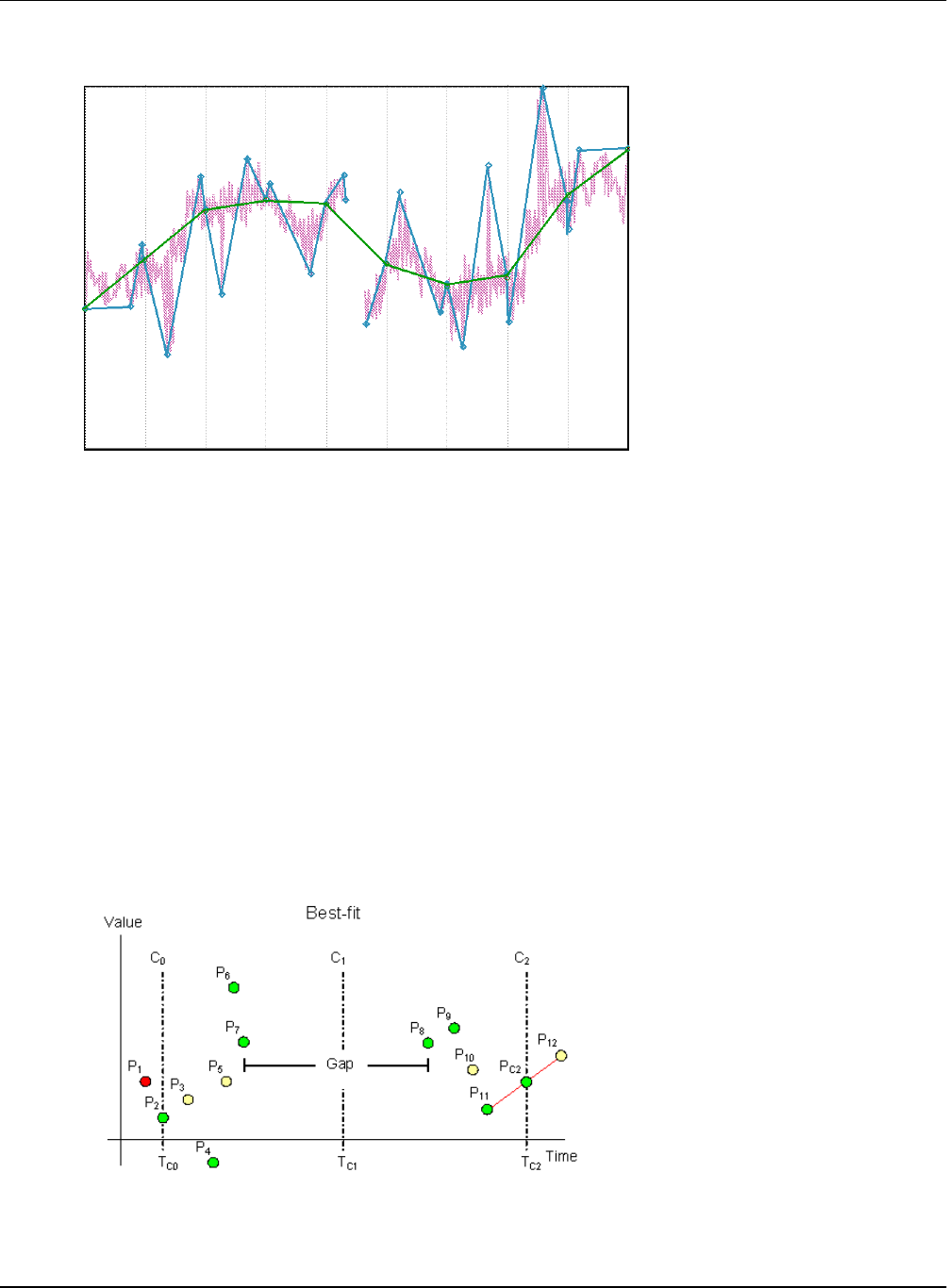
Data Retrieval Options AVEVA™ Historian Retrieval Guide formerly Wonderware
43
"Best fit" retrieval allows for faster retrieval, as typically achieved by using cyclic retrieval, plus the better
representation typically achieved by using delta retrieval. This is shown in the following trend.
For example, for one week of five-second data, 120,960 values would be returned for delta retrieval,
versus around 300 values for best-fit retrieval.
Best-fit retrieval uses retrieval cycles, but it is not a true cyclic mode. Apart from the initial value, it only
returns actual delta points. For example, if one point is both the first value and the minimum value in a
cycle, it is returned only one time. In a cycle where a tag has no points, nothing is returned.
As in cyclic retrieval, the number of cycles is based on the specified resolution or cycle count. However,
the number of values returned is likely to be more than one per cycle.
All points are returned in chronological order. If multiple points are to be returned for a particular
timestamp, then those points are returned in the order in which the corresponding tags were specified in
the query.
The best-fit algorithm is only applied to analog and analog summary tags. For all other tags, delta results
are returned.
Best Fit Retrieval - How It Works
The following illustration shows how the best-fit algorithm selects points for an analog tag.

AVEVA™ Historian Retrieval Guide formerly Wonderware Data Retrieval Options
44
Data is retrieved in best-fit mode with a start time of T
C0
and an end time of T
C2
. The resolution has been
set in such a way that the historian returns data for two complete cycles starting at T
C0
and T
C1
and an
incomplete cycle starting at T
C2
. P
1
to P
12
represent actual data points stored on the historian. Of these
points, eleven represent normal analog values, and one, P
7
, represents a NULL value due to an I/O
Server disconnect, which causes a gap in the data between P
7
and P
8
.
Because P
2
is located exactly at the start time, no initial value needs to be interpolated at the start time.
Therefore, point P
1
is not considered at all. All other points are considered, but only the points indicated
by green markers on the graph are returned.
From the first cycle, four points are returned:
P
2
as the initial value of the query, as well as the first value in the cycle
P
4
as the minimum value in the cycle
P
6
as both the maximum value and the last value in the cycle
P
7
as the first (and only) occurring exception in the cycle
From the second cycle, three points are returned:
P
8
as the first value in the cycle
P
9
as the maximum value in the cycle
P
11
as both the minimum value and the last value in the cycle
As no exception occurs in the second cycle, none is returned.
Because the tag does not have a point exactly at the query end time, where an incomplete third cycle
starts, the end value P
C2
is interpolated between P
11
and P
12
, assuming that linear interpolation is used.
Best Fit Retrieval - Supported Value Parameters
You can use various parameters to adjust which values are returned in best-fit retrieval mode. For more
information, see the following sections:
Cycle Count (X Values over Equal Time Intervals) (wwCycleCount) on page 91
Resolution (Values Spaced Every X ms) (wwResolution) on page 93
History Version (wwVersion) on page 104
Interpolation Type (wwInterpolationType) on page 105
Quality Rule (wwQualityRule) on page 111
Best Fit Retrieval - Query Example
To use the best fit retrieval mode, set the following parameter in your query.
wwRetrievalMode = 'BestFit'
For example, an analog tag is retrieved over a five-minute period using the best-fit retrieval mode. The
wwResolution parameter is set to 60000, thus specifying five 1-minute cycles. Within each cycle, the
retrieval sub-system returns the first, minimum, maximum, and last data points. There are no exception
(NULL) points in the time period. Notice how the points at the query start time and at the query end time
are interpolated, while all other points are actual delta points.
SELECT DateTime, TagName, CONVERT(DECIMAL(10, 1), Value) AS Value,
wwInterpolationType AS IT FROM History
WHERE TagName = 'ReactTemp'
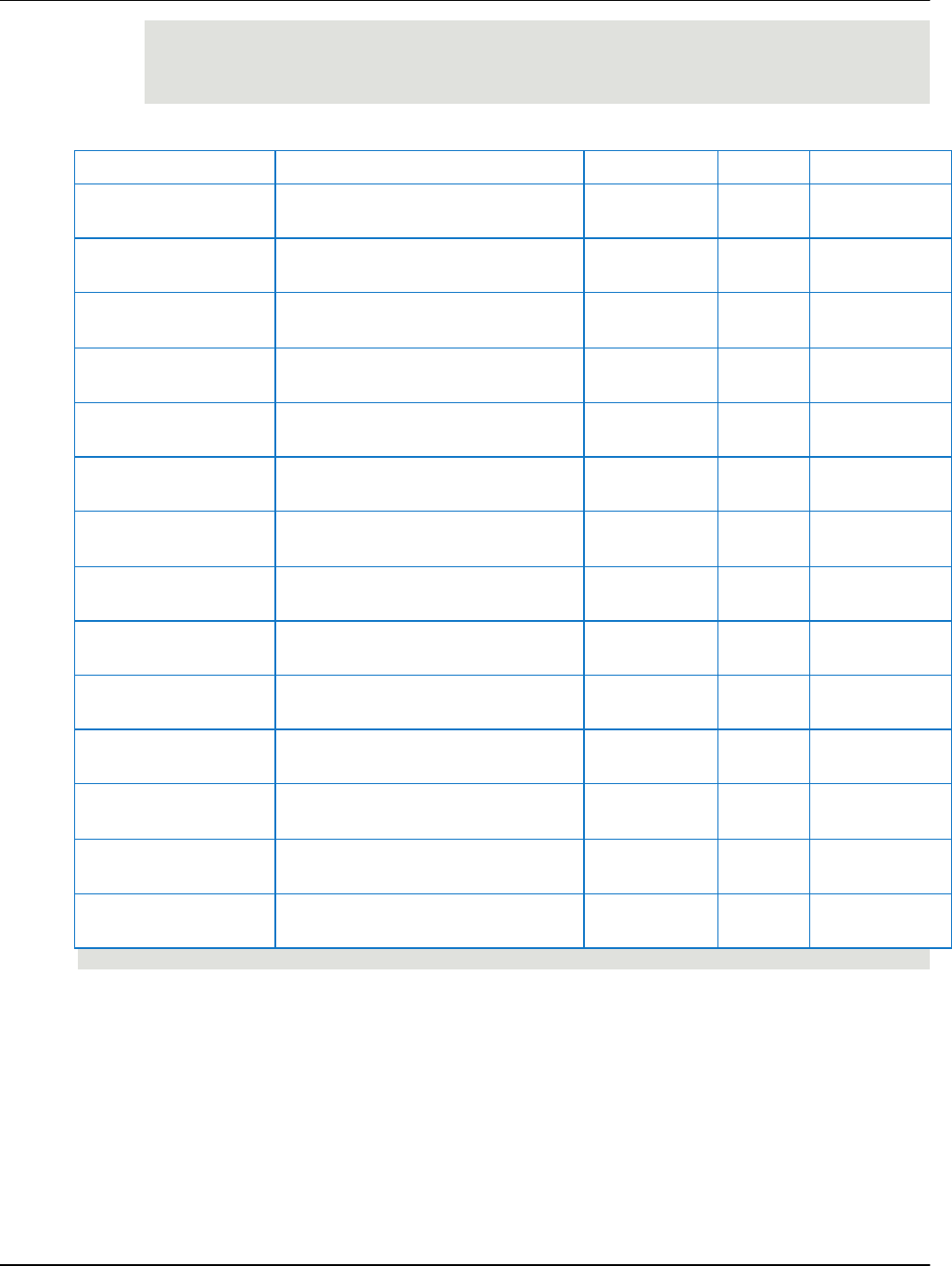
Data Retrieval Options AVEVA™ Historian Retrieval Guide formerly Wonderware
45
AND DateTime >= '2005-04-11 12:15:00'
AND DateTime <= '2005-04-11 12:20:00'
AND wwRetrievalMode = 'BestFit'
AND wwResolution = 60000
The results are:
DateTime
TagName
Value
IT
(initial, first,
min)
2005-04-11 12:15:00.000
ReactTemp
40.7
LINEAR
(max in interval
1)
2005-04-11 12:15:38.793
ReactTemp
196.0
STAIRSTEP
(last in interval
1)
2005-04-11 12:15:58.810
ReactTemp
159.2
STAIRSTEP
(first, max in
interval 2)
2005-04-11 12:16:00.013
ReactTemp
156.9
STAIRSTEP
(last, min in
interval 2)
2005-04-11 12:16:58.857
ReactTemp
16.3
STAIRSTEP
(first, min in
interval 3)
2005-04-11 12:17:00.060
ReactTemp
14.0
STAIRSTEP
(last, max in
interval 3)
2005-04-11 12:17:58.793
ReactTemp
151.0
STAIRSTEP
(first in
interval 4)
2005-04-11 12:18:00.107
ReactTemp
156.0
STAIRSTEP
(max in interval
4)
2005-04-11 12:18:10.057
ReactTemp
196.0
STAIRSTEP
(last, min in
interval 4)
2005-04-11 12:18:58.837
ReactTemp
106.3
STAIRSTEP
(first, max in
interval 5)
2005-04-11 12:19:00.040
ReactTemp
104.0
STAIRSTEP
(min in interval
5)
2005-04-11 12:19:31.320
ReactTemp
14.0
STAIRSTEP
(last in interval
5)
2005-04-11 12:19:58.773
ReactTemp
26.0
STAIRSTEP
(end bounding
value)
2005-04-11 12:20:00.000
ReactTemp
30.7
LINEAR
Best Fit Retrieval - Initial and Final Values
A point will be returned at the query start time and the query end time for each tag queried, if a point
exists for that tag at or after the end time of the query. The values of the initial and final points will be
determined by interpolating the points preceding and following the query start or query end time.
Standard interpolation rules will be used to return the initial and final values. For more information, see
Interpolated Retrieval on page 37.
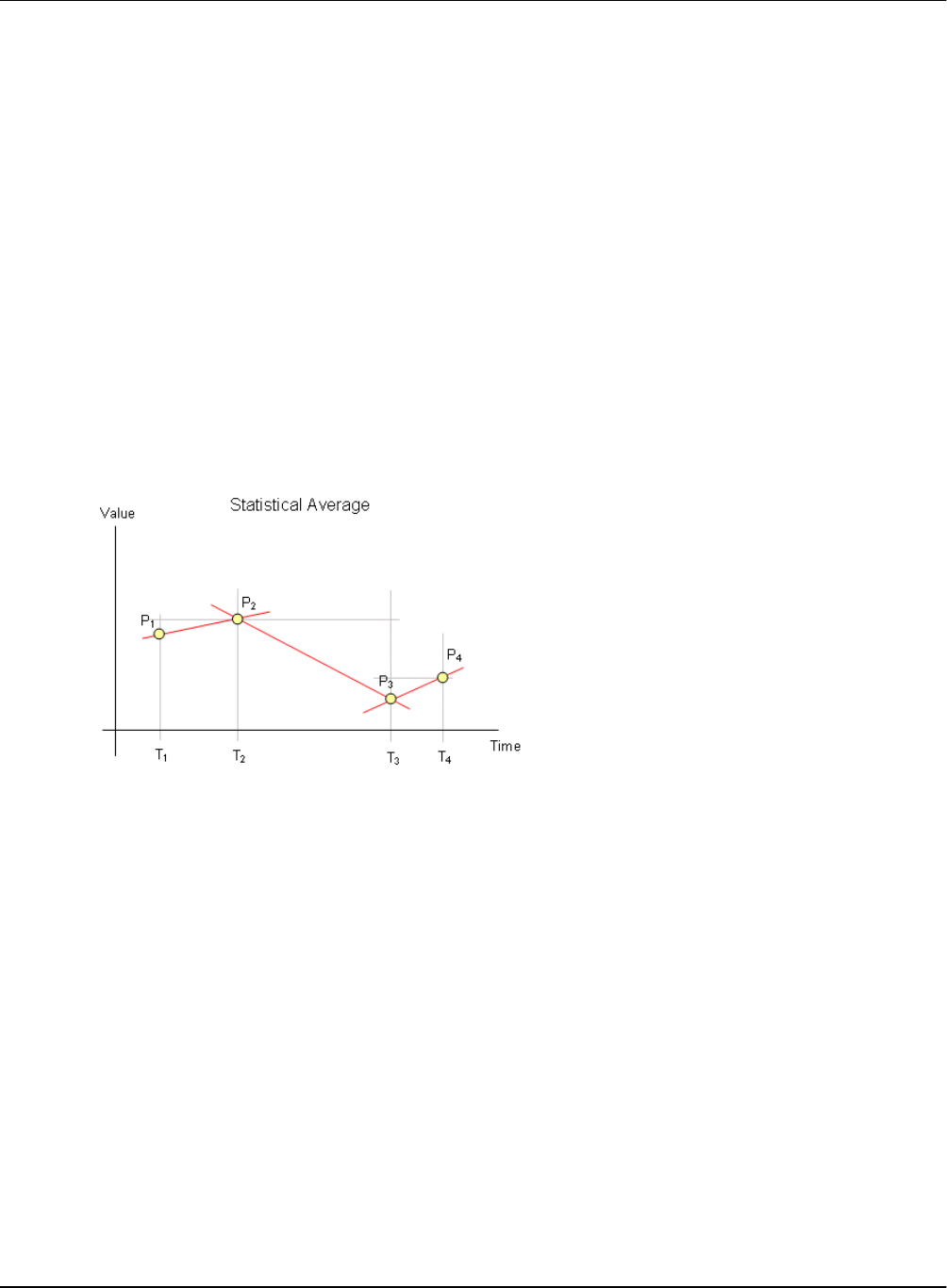
AVEVA™ Historian Retrieval Guide formerly Wonderware Data Retrieval Options
46
Best Fit Retrieval - Handling NULL Values
When any of the four good points are returned from a cycle that contains gaps or from an incomplete
cycle with the query end time located inside of the calculation cycle the quality detail of each of the
non-null points returned is modified to alert the user to this fact. This is done by performing a logical OR
operation of the value 4096, which means partial cycle, onto the existing quality detail. (This is the delta
point equivalent to the use of PercentGood for cyclic.)
Average Retrieval
For the time-weighted average (in short: "average") retrieval mode, a time-weighted average algorithm is
used to calculate the value to be returned for each retrieval cycle.
For a statistical average, the actual data values are used to calculate the average. The average is the
sum of the data values divided by the number of data values. For the following data values, the statistical
average is computed as:
(P
1
+ P
2
+ P
3
+ P
4
) / 4) = Average
For a time-weighted average, values are multiplied by the time difference between the points to
determine the time-weighted value. Therefore, the longer a tag had a particular value, the more weight
that value holds in the overall average. The overall average is determined by adding all of the
time-weighted values and then dividing that number by the total amount of time.
Which values are weighted depends on the interpolation setting of the tag. For a tag that uses linear
interpolation, the midpoints between values are weighted. For a tag that uses stair-step interpolation, the
earlier of two values is weighted.
For the following data values of a tag that uses linear interpolation, the time-weighted average is
computed as:
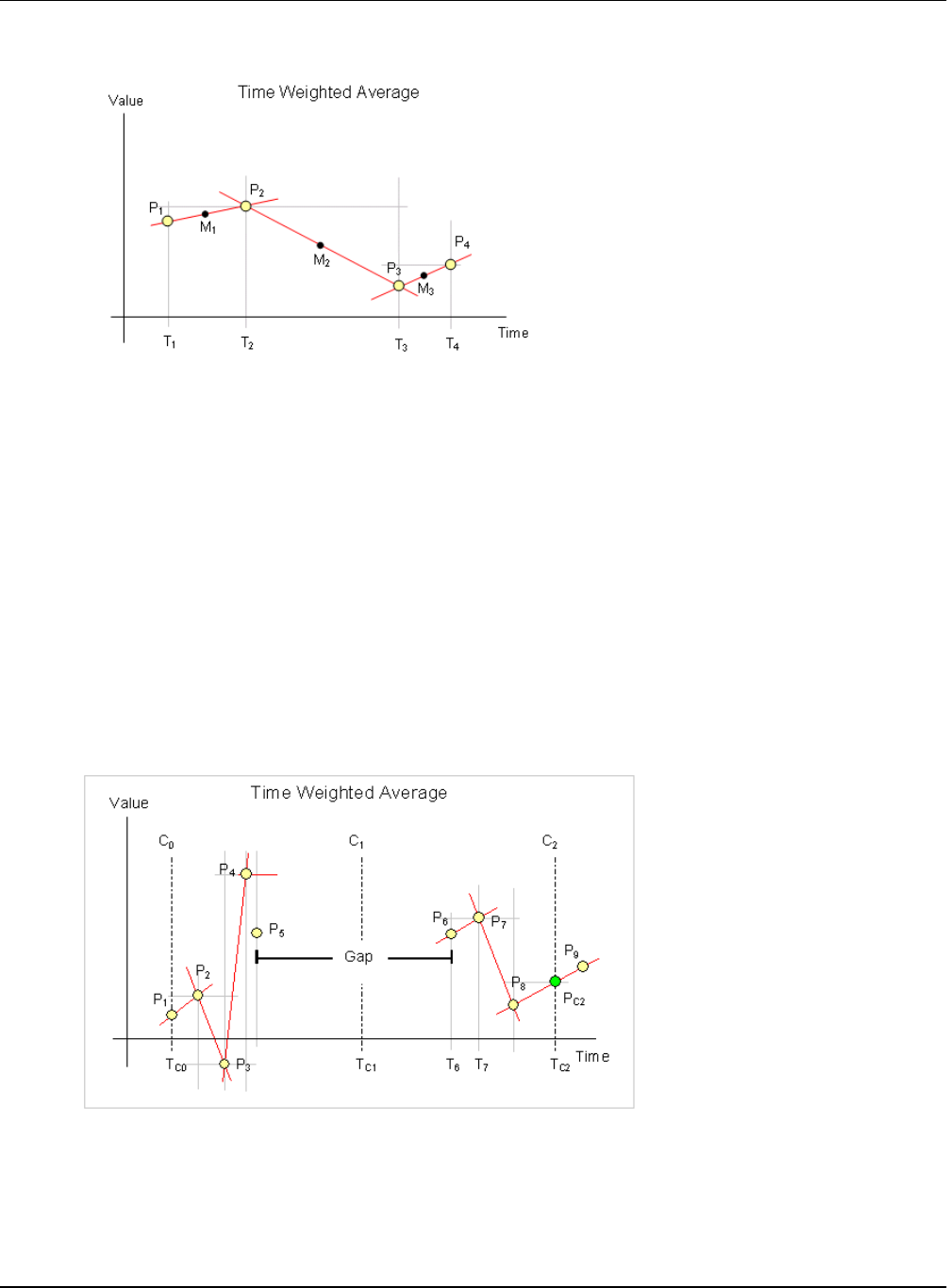
Data Retrieval Options AVEVA™ Historian Retrieval Guide formerly Wonderware
47
(((P
1
+ P
2
) / 2) x (T
2
- T
1
)) + (((P
2
+ P
3
) / 2) x (T
3
- T
2
)) + (((P
3
+ P
4
) / 2) x (T
4
- T
3
)) / (T
4
- T
1
) = Average
If the same tag uses stair-step interpolation, the time-weighted average is:
((P
1
x (T
2
- T
1
)) + (P
2
x (T
3
- T
2
)) + (P
3
x (T
4
- T
3
))) / (T
4
- T
1
) = Average
The SQL Server AVG aggregate is a simple statistical average. Using the average retrieval mo de with a
cycle count of 1 returns data much faster than the AVG aggregate, and usually more accurately due to
the time weighting. The Event subsystem also returns a simple statistical average.
Average retrieval returns one row for each tag in the query for each cycle. The number of cycles is based
on the specified resolution or cycle count.
The time-weighted average algorithm is only applied to analog and analog summary tags. If you use
average retrieval with other tags, the results are the same as when using regular cyclic retrieval.
Average Retrieval - How It Works
The following illustration shows how the time-weighted average is calculated for an analog tag that uses
linear interpolation.
Data is retrieved in average mode with a start time of T
C0
and an end time of T
C2
. The resolution has been
set in such a way that the historian returns data for two complete cycles starting at T
C0
and T
C1
and an
incomplete cycle starting at T
C2
. P
1
to P
9
represent actual data points stored on the historian. Of these
points, eight represent normal analog values, and one, P
5
, represents a NULL due to an I/O Server
disconnect, which causes a gap in the data between P
5
and P
6
. Assume that the query calls for
timestamping at the end of the cycle.

AVEVA™ Historian Retrieval Guide formerly Wonderware Data Retrieval Options
48
Results are calculated as follows:
The "initial value" returned at the query start time (T
C0
) is the time-weighted average of the points in
the last cycle preceding T
C0
.
The value returned at T
C1
is the time-weighted average of the points in the cycle starting at T
C0
.
The value returned at the query end time (T
C2
) is the time-weighted average of the points in the cycle
starting at T
C1
.
To understand how the time-weighted average is calculated, observe the last cycle as an example. First,
the area under the curve must be calculated. This curve is indicated by the red line through P
6
, P
7
, P
8
and
P
C2
, where P
C2
represents the interpolated value at time T
C2
using points P
8
and P
9
. The data gap caused
by the I/O Server disconnect does not contribute anything to this area. If a quality rule of "good" has been
specified, then points with doubtful quality will not contribute anything to the area, either.
To understand how the area is calculated, consider points P
6
and P
7
. The area contribution between
these two points is calculated by multiplying the arithmetic average of value P
6
and value P
7
by the time
difference between the two points. The formula is:
((P
6
+ P
7
) / 2) x (T
7
- T
6
)
When the area for the whole cycle has been calculated, the time-weighted average is calculated by
dividing that area by the cycle time, less any periods within the cycle that did not contribute anything to
the area calculation. The result is returned at the cycle end time.
If you take a closer look at points P
4
and P
5
in the example, you can see that the red line through point P
4
is parallel to the x-axis. This is because P
5
represents a NULL, which cannot be used to calculate an
arithmetic average. Instead, the value P
4
is used for the whole time period between points P
4
and P
5
.
The area calculation is signed. If the arithmetic average between two points is negative, then the
contribution to the area is negative.
Average Retrieval - Supported Value Parameters
You can use various parameters to adjust which values are returned in average retrieval mode. For more
information, see the following sections:
Cycle Count (X Values over Equal Time Intervals) (wwCycleCount) on page 91
Resolution (Values Spaced Every X ms) (wwResolution) on page 93
History Version (wwVersion) on page 104
Interpolation Type (wwInterpolationType) on page 105
TimeStamp Rule (wwTimeStampRule) on page 107
Quality Rule (wwQualityRule) on page 111
Average Retrieval - Query Examples
To use the average mode, set the following parameter in your query.
wwRetrievalMode = 'Average'
For examples, see the following:
Average Retrieval - Query 1 on page 49
Average Retrieval - Query 2 on page 49

Data Retrieval Options AVEVA™ Historian Retrieval Guide formerly Wonderware
49
For an additional example, see Querying Aggregate Data in Different Ways.
Average Retrieval - Query 1
The time-weighted average is computed for each of five 1-minute long cycles.
Note that the wwTimeStampRule parameter is set to "Start" in the query. This means that the value
stamped at 11:18:00.000 represents the average for the interval 11:18 to 11:19, the value stamped at
11:19:00.000 represents the average for the interval 11:19 to 11:20, and so on. If no timestamp rule is
specified in the query, then the default setting in the TimeStampRule system parameter is used.
In the first cycle there are no points, so a NULL is returned. In the second cycle value points are found
covering 77.72 percent of the time as returned in PercentGood. This means that the returned average is
calculated based on 77.72 percent of the cycle time. Because the same OPCQuality is not found for all
the points in the cycle, OPCQuality is set to Doubtful. In the remaining three cycles, only good points
occur, all with an OPCQuality of 192.
Because no quality rule is specified in the query using the wwQualityRule parameter, the query uses the
default as specified by the QualityRule system parameter. If a quality rule of Extended is specified, any
point stored with doubtful OPCQuality will be used to calculate the average, and the point time will
therefore be included in the calculation of PercentGood.
SELECT DateTime, TagName, CONVERT(DECIMAL(10, 2), Value) AS Value, OPCQuality,
PercentGood FROM History
WHERE TagName = 'ReactTemp'
AND DateTime >= '2005-04-11 11:18:00'
AND DateTime < '2005-04-11 11:23:00'
AND wwRetrievalMode = 'Average'
AND wwCycleCount = 5
AND wwTimeStampRule = 'Start'
The results are:
DateTime
TagName
Value
OPCQuality
PercentGood
(cycle 1)
2005-04-11
11:18:00.000
ReactTemp
NULL
0
0.0
(cycle 2)
2005-04-11
11:19:00.000
ReactTemp
70.00
64
77.72
(cycle 3)
2005-04-11
11:20:00.000
ReactTemp
153.99
192
100.0
(cycle 4)
2005-04-11
11:21:00.000
ReactTemp
34.31
192
100.0
(cycle 5)
2005-04-11
11:22:00.000
ReactTemp
134.75
192
100.0
Average Retrieval - Query 2
This query demonstrates the use of the average retrieval mode in a wide query. Time-weighted average
values are returned for the analog tags ReactTemp and ReactLevel, while regular cyclic points are
returned for the discrete tag, WaterValve.
SELECT * FROM OpenQuery(INSQL,
'SELECT DateTime, ReactTemp, ReactLevel, WaterValve FROM WideHistory
WHERE DateTime >= "2004-06-07 08:00"
AND DateTime < "2004-06-07 08:05"
AND wwRetrievalMode = "Average"

AVEVA™ Historian Retrieval Guide formerly Wonderware Data Retrieval Options
50
AND wwCycleCount = 5
')
The results are:
DateTime
ReactTemp
ReactLevel
WaterValve
2004-06-07 08:00:00.000
47.71621
1676.69716
1
2004-06-07 08:01:00.000
157.28076
1370.88097
0
2004-06-07 08:02:00.000
41.33734
797.67296
1
2004-06-07 08:03:00.000
122.99525
1921.66771
0
2004-06-07 08:04:00.000
105.28866
606.40488
1
Average Retrieval - Initial and Final Values
If wwTimeStampRule = END, the initial value is calculated by performing an average calculation on the
cycle leading up to the query start time. No special handling is done for the final value.
If wwTimeStampRule = START, the final value is calculated by performing an average calculation on the
cycle following the query end time. No special handling is done for the initial value.
Average Retrieval - Handling NULL Values
Gaps introduced by NULL values are not included in the average calculations. The average only
considers the time ranges with good values. TimeGood indicates the total time per cycle that the tags
value was good.
Minimum Retrieval
The minimum value retrieval mode returns the minimum value from the actual data values within a
retrieval cycle. If there are no actual data points stored on the historian for a given cycle, nothing is
returned. NULL is returned if the cycle contains one or more NULL values.
As in cyclic retrieval, the number of cycles is based on the specified resolution or cycle count. However,
minimum retrieval is not a true cyclic mode. Apart from the initial value, all points returned are delta
points.
Minimum retrieval only works with analog tags. For all other tags, normal delta results are returned.
All returned values are in chronological order. If multiple points are to be returned for a particular
timestamp, they are returned in the order in which the tags were specified in the query. If the minimum
value occurs several times in a cycle, the minimum value with the earliest timestamp is returned.
The minimum retrieval mode must use the "<=" operator for the ending date/time.
Using the minimum retrieval mode with a cycle count of 1 returns the same results as the SQL Server
MIN aggregate; however, the data is returned much faster.
Minimum Retrieval - How It Works
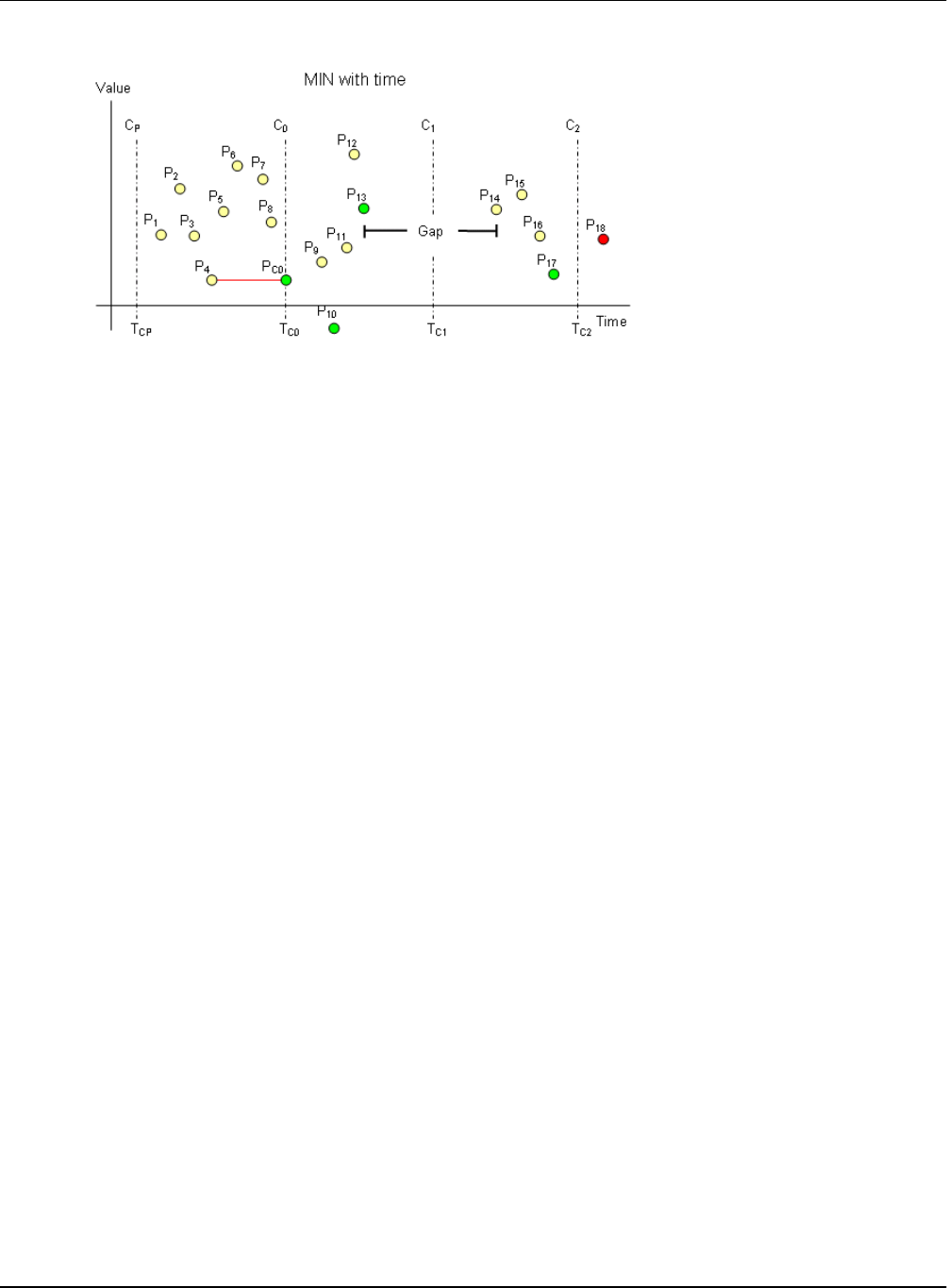
Data Retrieval Options AVEVA™ Historian Retrieval Guide formerly Wonderware
51
The following illustration shows how the minimum value is selected for an analog tag.
This example has a start time of T
C0
and an end time of T
C2
. The resolution has been set in such a way
that the historian returns data for two complete cycles starting at T
C0
and T
C1
, a "phantom" cycle starting
at T
CP
, and an incomplete cycle starting at T
C2
. The phantom cycle has the same duration as the first
cycle in the query period, extending back in time from the query start time.
For the queried tag, a total of 18 points are found throughout the cycles, represented by the markers P
1
through P
18
. Of these points, 17 represent normal analog values. The point P
13
represents a NULL due to
an I/O Server disconnect, which causes a gap in the data between P
13
and P
14
.
The minimum value for the "phantom" cycle starting at T
CP
is returned as the initial value at T
C0
. Point P
18
is not considered at all because it is outside of the query time frame. All other points are considered, but
only the points indicated by green markers on the graph are returned (P
10
, P
13
, and P
17
).
In total, four points are returned:
P
4
as the minimum value of the "phantom" cycle and the initial point
P
10
as the minimum value in the first cycle
P
13
as the first and only exception occurring in the first cycle
P
17
as the minimum value in the second cycle
No points are returned for the incomplete third cycle starting at the query end time, because the tag does
not have a point exactly at that time.
If the minimum value of the first cycle is located exactly at the query start time, both this value and the
minimum value of the phantom cycle are returned.
Minimum Retrieval - Supported Value Parameters
You can use various parameters to adjust which values are returned in minimum retrieval mode. For
more information, see the following sections:
Cycle Count (X Values over Equal Time Intervals) (wwCycleCount) on page 91
Resolution (Values Spaced Every X ms) (wwResolution) on page 93
History Version (wwVersion) on page 104
Quality Rule (wwQualityRule) on page 111
Minimum Retrieval - Query Examples
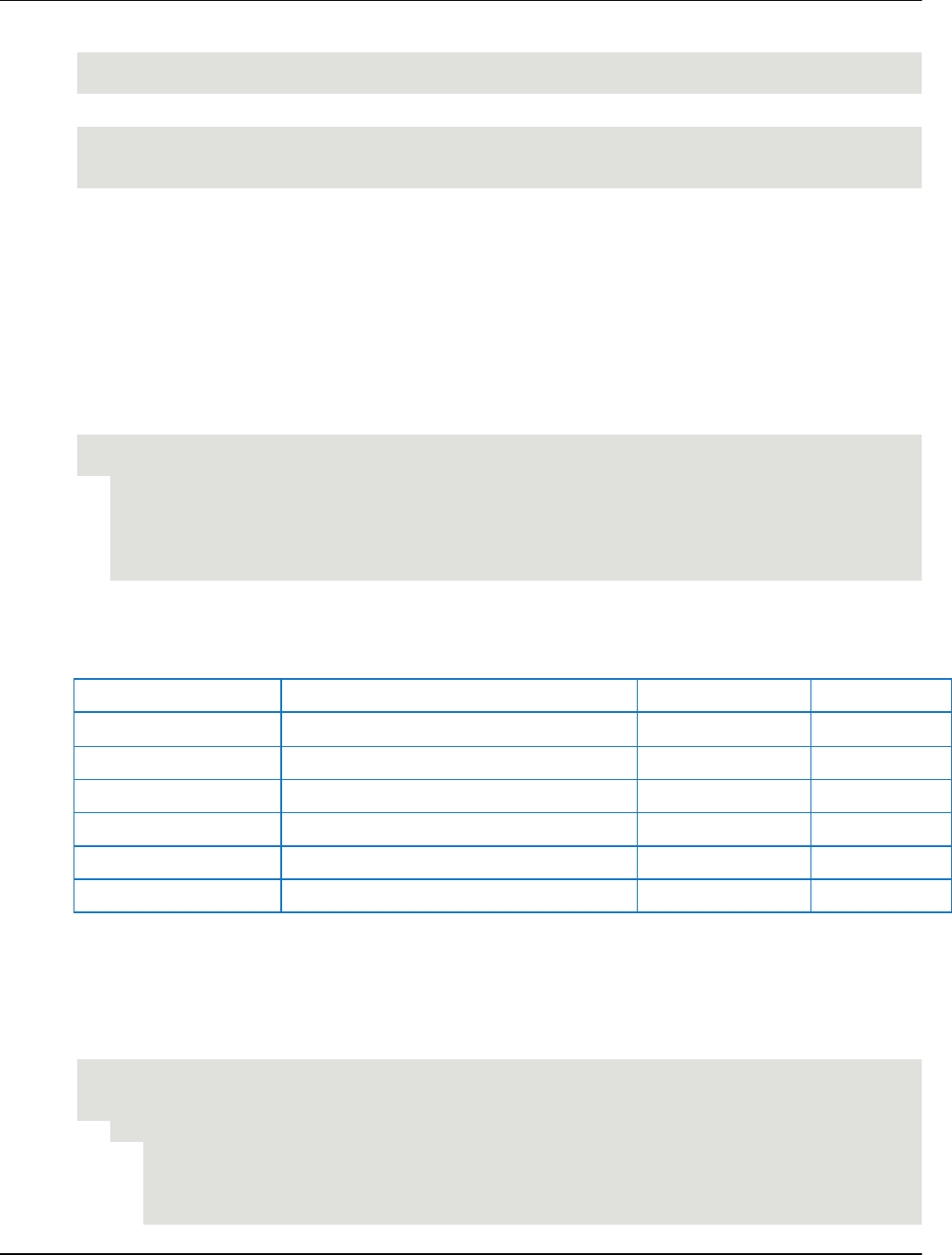
AVEVA™ Historian Retrieval Guide formerly Wonderware Data Retrieval Options
52
To use the minimum mode, set the following parameter in your query:
wwRetrievalMode = 'Min'
or
wwRetrievalMode = 'Minimum'
For examples, see the following:
Minimum Retrieval - Query 1 on page 52
Minimum Retrieval - Query 2 on page 52
Minimum Retrieval - Query 3 on page 53
Minimum Retrieval - Query 1
In this example, an analog tag is retrieved over a five minute period, using the minimum retrieval mode.
Because the wwResolution parameter is set to 60000, each cycle is exactly one minute long. The
minimum data value is returned from each of these cycles.
SELECT DateTime, TagName, CONVERT(DECIMAL(10, 2), Value) AS Value FROM History
WHERE TagName = 'ReactTemp'
AND DateTime >= '2005-04-11 11:21:00'
AND DateTime <= '2005-04-11 11:26:00'
AND wwRetrievalMode = 'Minimum'
AND wwResolution = 60000
The initial value at the query start time is the minimum value found in the phantom cycle before the start
time of the query.
The results are:
DateTime
TagName
Value
(phantom cycle)
2005-04-11 11:21:00.000
ReactTemp
104.00
(cycle 1)
2005-04-11 11:21:30.837
ReactTemp
14.00
(cycle 2)
2005-04-11 11:22:00.897
ReactTemp
36.00
(cycle 3)
2005-04-11 11:23:59.567
ReactTemp
18.60
(cycle 4)
2005-04-11 11:24:02.083
ReactTemp
14.00
(cycle 5)
2005-04-11 11:25:59.550
ReactTemp
108.60
Minimum Retrieval - Query 2
In this example, the minimum retrieval mode is used in a manner equivalent to using the SQL Server MIN
aggregate. Note that the cycle producing the result is the five-minute phantom cycle just before the query
start time.
SELECT TOP 1 DateTime, TagName, CONVERT(DECIMAL(10, 2), Value) AS Value FROM
History
WHERE TagName = 'ReactTemp'
AND DateTime >= '2005-04-11 11:31:00'
AND DateTime <= '2005-04-11 11:31:00'
AND wwRetrievalMode = 'Minimum'
AND wwResolution = 300000
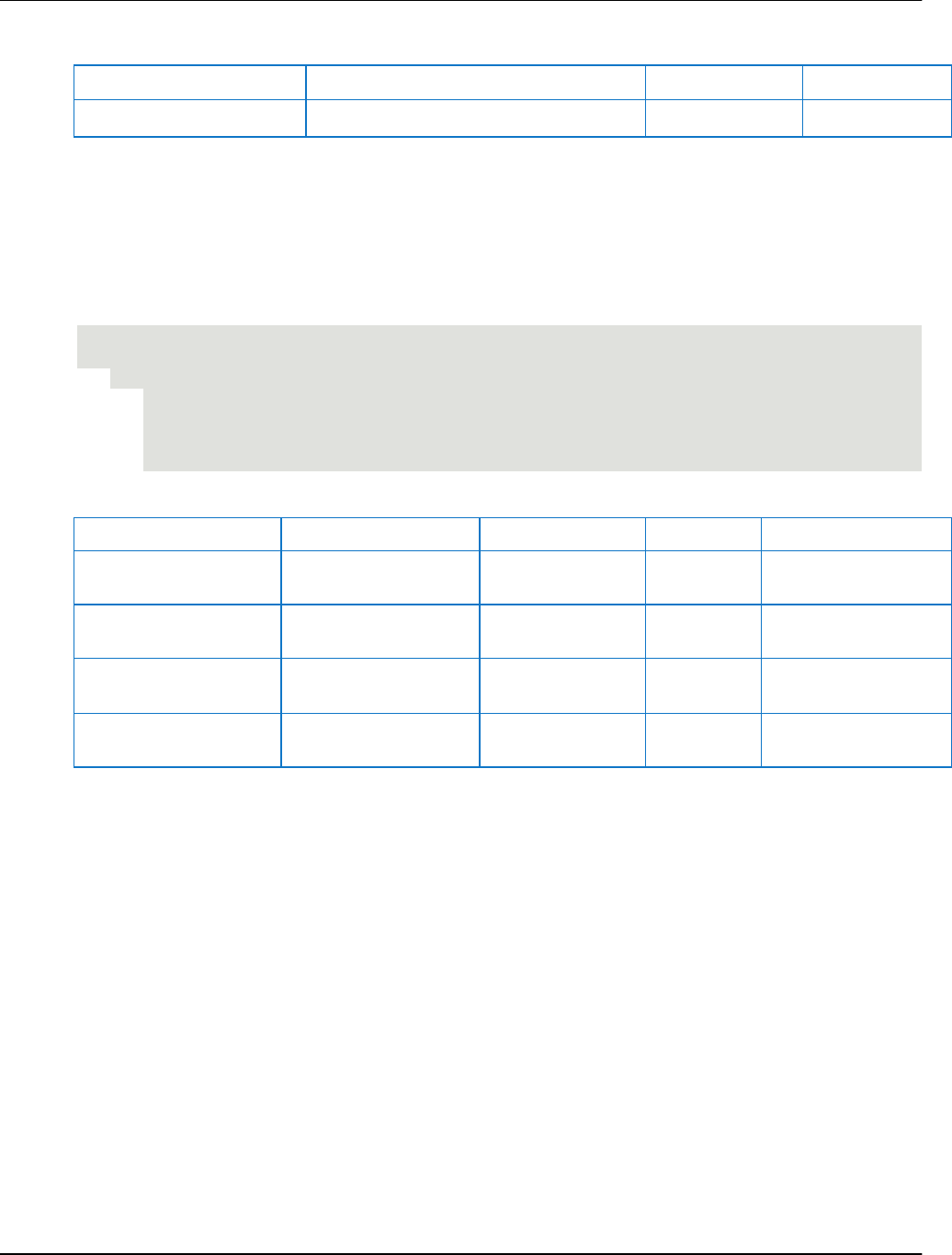
Data Retrieval Options AVEVA™ Historian Retrieval Guide formerly Wonderware
53
The results are:
DateTime
TagName
Value
(phantom cycle)
2005-04-11 11:31:00.000
ReactTemp
14.00
Minimum Retrieval - Query 3
This example shows how the minimum retrieval mode marks the QualityDetail column to indicate that a
minimum value is returned based on an incomplete cycle. In this case, an incomplete cycle is a cycle that
either contained periods with no values stored or a cycle that was cut short because the query end time
was located inside the cycle. All values returned for the QualityDetail column are documented in the
QualityMap table in the Runtime database.
SELECT DateTime, TagName, Value, QualityDetail FROM History
WHERE TagName = 'SysTimeSec'
AND DateTime >= '2005-04-11 11:18:50'
AND DateTime <= '2005-04-11 11:20:50'
AND wwRetrievalMode = 'Minimum'
AND wwResolution = 60000
The results are:
DateTime
TagName
Value
QualityDetail
(phantom cycle)
2005-04-11
11:18:50.000
SysTimeSec
NULL
65536
(cycle 1)
2005-04-11
11:19:13.000
SysTimeSec
13.0
4140
(cycle 2)
2005-04-11
11:20:00.000
SysTimeSec
0.0
192
(cycle 3)
2005-04-11
11:20:50.000
SysTimeSec
50.0
4288
Minimum Retrieval - Initial and Final Values
For analog tags, the minimum value of the tag in the cycle leading up to the query start time is returned
with its timestamp changed to the query start time. If there is no point exactly at the "phantom" cycle start
time, the point leading up to the phantom cycle is also considered for the minimum calculation.(No
adjustments are made to the quality of the initial point even though the timestamp may have been
altered.) Apart from the initial value, all points returned are delta points. (For more information on initial
values, see Delta Retrieval - Initial Values on page 34.)
If a point occurs exactly on the query end time, that point will be returned with the partial cycle bit, 4096,
set in quality detail. If there is more than one such point, only the first point will be returned.
Minimum Retrieval - Handling NULL Values and Incomplete Cycles
The first NULL value in a cycle is returned.
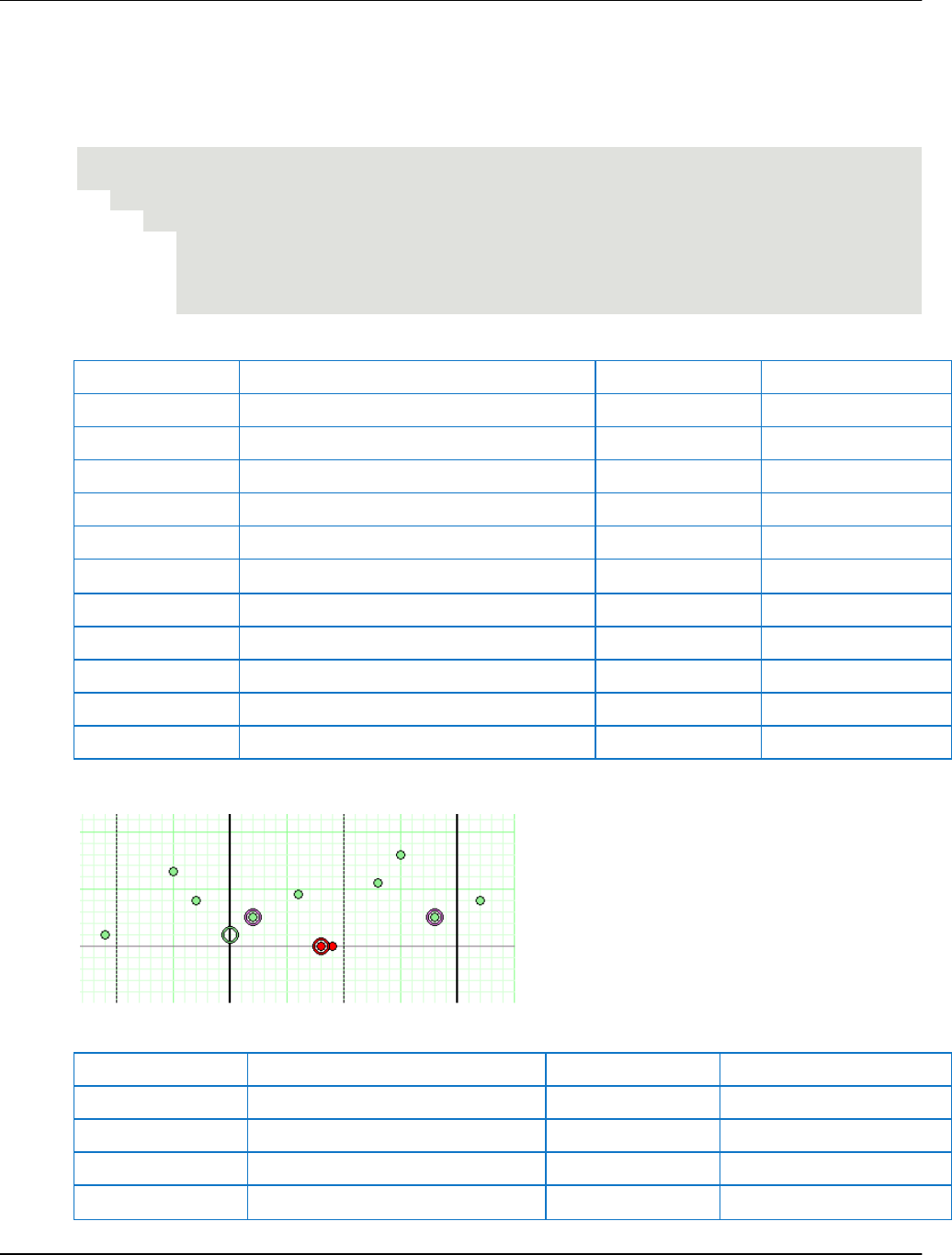
AVEVA™ Historian Retrieval Guide formerly Wonderware Data Retrieval Options
54
When a minimum value is returned from a cycle that contains gaps (including a gap extended from the
previous cycle) or from an incomplete cycle with the query end time located inside of the calculation
cycle, the point’s quality detail is modified to flag this. This is done by performing a logical OR operation
of the value 4096, which indicates a partial cycle, onto the existing quality detail.
As an example of how minimum retrieval mode handles NULLs, consider the following query:
SELECT TagName, DateTime, Value, QualityDetail
FROM History
WHERE TagName = 'A001'
AND DateTime >= '2009-09-12 00:20'
AND DateTime <= '2009-09-12 00:40'
AND wwResolution = 10000
AND wwRetrievalMode = 'Minimum'
This query can be run against the following sample data:
Tagname
DateTime
Value
QualityDetail
A001
2009-09-12 00:09
0.2
192
A001
2009-09-12 00:15
1.3
192
A001
2009-09-12 00:17
0.8
192
A001
2009-09-12 00:22
0.5
192
A001
2009-09-12 00:26
0.9
192
A001
2009-09-12 00:28
0.0
249
A001
2009-09-12 00:29
0.0
249
A001
2009-09-12 00:33
1.1
192
A001
2009-09-12 00:35
1.6
192
A001
2009-09-12 00:38
0.5
192
A001
2009-09-12 00:42
0.8
192
The following is a graphical representation of the data:
The results are:
Tagname
DateTime
Value
QualityDetail
A001
2009-09-12 00:20
0.2
192
A001
2009-09-12 00:22
0.5
4288
A001
2009-09-12 00:28
NULL
249
A001
2009-09-12 00:38
0.5
4288

Data Retrieval Options AVEVA™ Historian Retrieval Guide formerly Wonderware
55
The sample data points and the results are mapped on the following chart. Only the data falling between
the time start and end marks at 00:20 and 00:40 (shown on the chart as dark vertical lines) are returned
by the query. The resolution is set at 10,000 milliseconds.
Because there is no value that matches the start time, an initial value at 00:20 is returned based on the
minimum value of the preceding cycle, which is the data point at 00:09. In the two subsequent cycles, the
minimum values are at 00:22 and 00:38. The quality for these two values is set to 4288 (4096 + 192). The
remaining data points are excluded because they are not minimums. In addition, the fi rst NULL at 00:28
is included, but the second NULL (at 00:29) is not.
Maximum Retrieval
The maximum value retrieval mode returns the maximum value from the actual data values within a
retrieval cycle. If there are no actual data points stored on the historian for a given cycle, nothing is
returned. NULL is returned if the cycle contains one or more NULL values.
As in cyclic retrieval, the number of cycles is based on the specified resolution or cycle count. However,
maximum retrieval is not a true cyclic mode. Apart from the initial value, all points returned are delta
points.
Maximum retrieval only works with analog tags. For all other tags, normal delta results are returned.
All returned values are in chronological order. If multiple points are to be returned for a particular
timestamp, they are returned in the order in which the tags were specified in the query. If the maximum
value occurs several times in a cycle, the maximum value with the earliest timestamp is returned.
The maximum retrieval mode must use the "<=" operator for the ending date/time.
Using the maximum retrieval mode with a cycle count of 1 returns the same results as the SQL Server
MAX aggregate; however, the data is returned much faster.
Maximum Retrieval - How It Works
The following illustration shows how the maximum value is selected for an analog tag.
This example has a start time of T
C0
and an end time of T
C2
. The resolution has been set in such a way
that the historian returns data for two complete cycles starting at T
C0
and T
C1
, a "phantom" cycle starting
at T
CP
, and an incomplete cycle starting at T
C2
. The phantom cycle has the same duration as the first
cycle in the query period, extending back in time from the query start time.
For the queried tag, a total of 18 points are found throughout the cycles, represented by the markers P
1
through P
18
. Of these points, 17 represent normal analog values. The point P
13
represents a NULL due to
an I/O Server disconnect, which causes a gap in the data between P
13
and P
14
.

AVEVA™ Historian Retrieval Guide formerly Wonderware Data Retrieval Options
56
The maximum value for the "phantom" cycle starting at T
CP
is returned as the initial value at T
C0
. Point P
18
is not considered at all because it is outside of the query time frame. All other points are considered, but
only the points indicated by green markers on the graph are returned (P
12
, P
13
, and P
15
).
In total, four points are returned:
P
6
as the maximum value of the "phantom" cycle and the initial point
P
12
as the maximum value in the first cycle
P
13
as the first and only exception occurring in the first cycle
P
15
as the maximum value in the second cycle
No points are returned for the incomplete third cycle starting at the query end time, because the tag does
not have a point exactly at that time.
If the maximum value of the first cycle is located exactly at the query start time, this value and the
maximum value of the phantom cycle are returned.
Maximum Retrieval - Supported Value Parameters
You can use various parameters to adjust which values are returned in maximum retrieval mode. For
more information, see the following sections:
Cycle Count (X Values over Equal Time Intervals) (wwCycleCount) on page 91
Resolution (Values Spaced Every X ms) (wwResolution) on page 93
History Version (wwVersion) on page 104
Quality Rule (wwQualityRule) on page 111
Maximum Retrieval - Query Examples
To use the maximum mode, set the following parameter in your query:
wwRetrievalMode = 'Max'
or
wwRetrievalMode = 'Maximum'
For examples, see the following:
Maximum Retrieval - Query 1 on page 56
Maximum Retrieval - Query 2 on page 57
Maximum Retrieval - Query 3 on page 57
Maximum Retrieval - Query 1
In this example, an analog tag is retrieved over a five-minute period, using the maximum retrieval mode.
Because the wwResolution parameter is set to 60000, each cycle is exactly one minute long. The
maximum data value is returned from each of these cycles.
SELECT DateTime, TagName, CONVERT(DECIMAL(10, 2), Value) AS Value FROM History
WHERE TagName = 'ReactTemp'
AND DateTime >= '2005-04-11 11:21:00'
AND DateTime <= '2005-04-11 11:26:00'
AND wwRetrievalMode = 'Maximum'
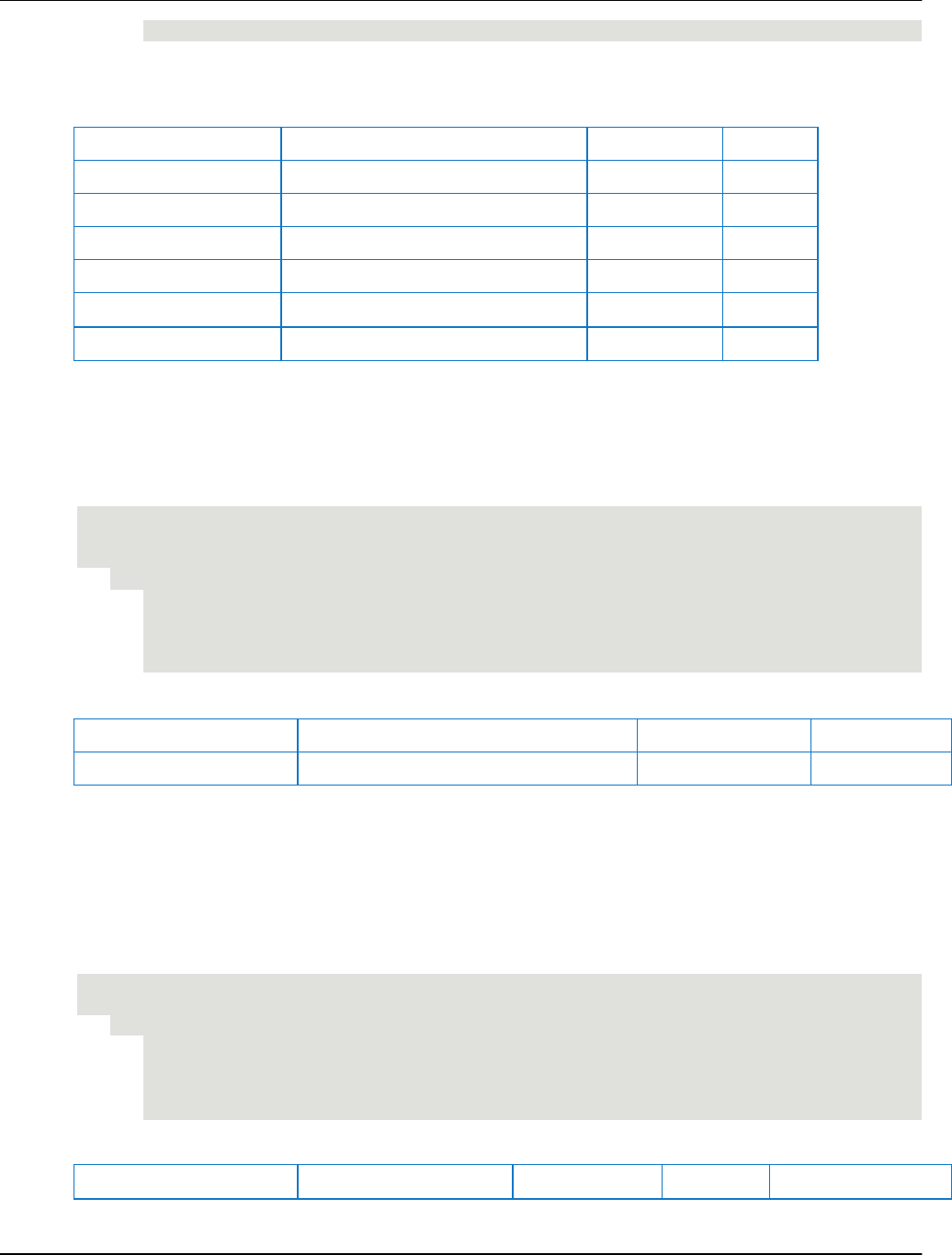
Data Retrieval Options AVEVA™ Historian Retrieval Guide formerly Wonderware
57
AND wwResolution = 60000
The initial value at the query start time is the maximum value found in the phantom cycle before the start
time of the query.
The results are:
Cycle
DateTime
TagName
Value
(phantom cycle)
2005-04-11 11:21:00.000
ReactTemp
196.00
(cycle 1)
2005-04-11 11:21:00.853
ReactTemp
101.70
(cycle 2)
2005-04-11 11:22:40.837
ReactTemp
196.00
(cycle 3)
2005-04-11 11:23:00.833
ReactTemp
159.20
(cycle 4)
2005-04-11 11:24:59.613
ReactTemp
146.00
(cycle 5)
2005-04-11 11:25:12.083
ReactTemp
196.00
Maximum Retrieval - Query 2
In this example, the maximum retrieval mode is used in a manner equivalent to using the SQL Server
MIN aggregate. Note that the cycle producing the result is the five-minute phantom cycle just before the
query start time.
SELECT TOP 1 DateTime, TagName, CONVERT(DECIMAL(10, 2), Value) AS Value FROM
History
WHERE TagName = 'ReactTemp'
AND DateTime >= '2005-04-11 11:31:00'
AND DateTime <= '2005-04-11 11:31:00'
AND wwRetrievalMode = 'Maximum'
AND wwResolution = 300000
The results are:
DateTime
TagName
Value
(phantom cycle)
2005-04-11 11:31:00.000
ReactTemp
196.00
Maximum Retrieval - Query 3
This example shows how the maximum retrieval mode marks the QualityDetail column to indicate that a
maximum value is returned based on an incomplete cycle. In this case, an incomplete cycle is a cycle
that either contained periods with no values stored or a cycle that was cut short because the query end
time was located inside the cycle. All values returned for the QualityDetail column are documented in the
QualityMap table in the Runtime database.
SELECT DateTime, TagName, Value, QualityDetail FROM History
WHERE TagName = 'SysTimeSec'
AND DateTime >= '2005-04-11 11:19:10'
AND DateTime <= '2005-04-11 11:21:10'
AND wwRetrievalMode = 'Maximum'
AND wwResolution = 60000
The results are:
DateTime
TagName
Value
QualityDetail

AVEVA™ Historian Retrieval Guide formerly Wonderware Data Retrieval Options
58
DateTime
TagName
Value
QualityDetail
(phantom cycle)
2005-04-11
11:19:10.000
SysTimeSec
NULL
65536
(cycle 1)
2005-04-11
11:19:59.000
SysTimeSec
59
4288
(cycle 2)
2005-04-11
11:20:59.000
SysTimeSec
59
192
(cycle 3)
2005-04-11
11:21:10.000
SysTimeSec
10
4288
Maximum Retrieval - Initial and Final Values
For analog tags, the maximum value of the tag in the cycle leading up to the query start time is returned
with its timestamp changed to the query start time. If there is no point exactly at the phantom cycle start
time, the point leading up to the phantom cycle is also considered for the maximum calculation. No
adjustments are made to the quality of the initial point even though the timestamp may have been
altered. Apart from the initial value, all points returned are delta points. (For more information on initial
values, see Determining Cycle Boundaries on page 142.)
If a point occurs exactly on the query end time, that point is returned with the partial cycle bit, 4096, set in
quality detail. If there is more than one such point, only the first point is returned.
Maximum Retrieval - Handling NULL Values and Incomplete Cycles
The first NULL value in a cycle is returned.
When a maximum value is returned from a cycle that contains gaps (including a gap extended from the
previous cycle) or from an incomplete cycle with the query end time located inside of the calculation
cycle, the point’s quality detail is modified to flag this. This is done by performing a logical OR operation
of the value 4096, which indicates a partial cycle, onto the existing quality detail.
As an example of how maximum retrieval mode handles NULLs, consider the following query:
SELECT TagName, DateTime, Value, QualityDetail
FROM History
WHERE TagName = 'A001'
AND DateTime >= '2009-09-12 00:20'
AND DateTime <= '2009-09-12 00:40'
AND wwResolution = 10000
AND wwRetrievalMode = 'Maximum'
If you run this query against the following sample data:
Tagname
DateTime
Value
QualityDetail
A001
2009-09-12 00:09
0.2
192
A001
2009-09-12 00:15
1.3
192
A001
2009-09-12 00:17
0.8
192
A001
2009-09-12 00:22
0.5
192
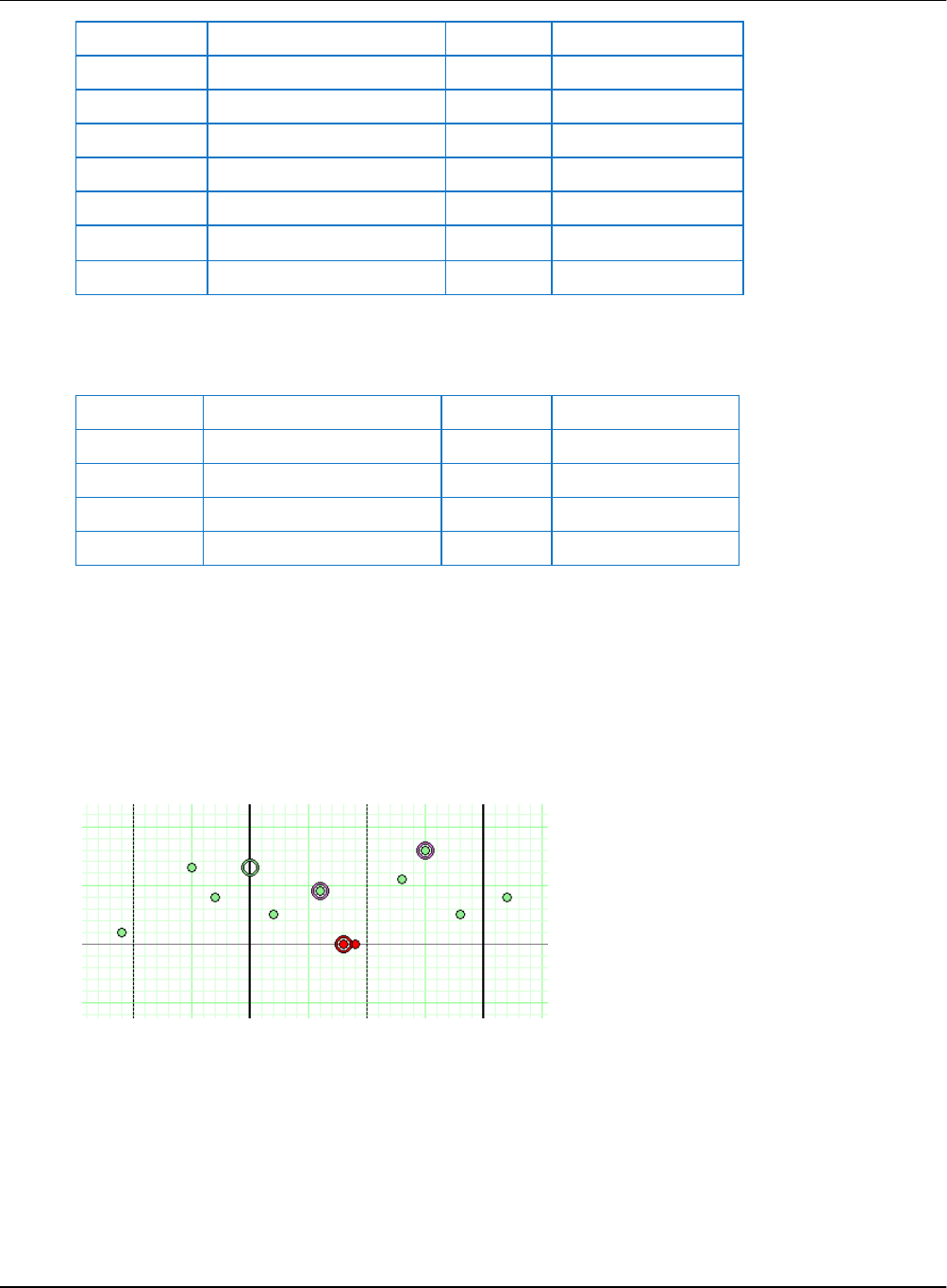
Data Retrieval Options AVEVA™ Historian Retrieval Guide formerly Wonderware
59
Tagname
DateTime
Value
QualityDetail
A001
2009-09-12 00:26
0.9
192
A001
2009-09-12 00:28
0.0
249
A001
2009-09-12 00:29
0.0
249
A001
2009-09-12 00:33
1.1
192
A001
2009-09-12 00:35
1.6
192
A001
2009-09-12 00:38
0.5
192
A001
2009-09-12 00:42
0.8
192
The results are:
Tagname
DateTime
Value
QualityDetail
A001
2009-09-12 00:20
1.3
192
A001
2009-09-12 00:26
0.9
4288
A001
2009-09-12 00:28
NULL
249
A001
2009-09-12 00:35
1.6
4288
The sample data points and the results are mapped on the following chart. Only the data falling between
the time start and end marks at 00:20 and 00:40 (shown on the chart as dark vertical lines) are returned
by the query. The resolution is set at 10,000 milliseconds.
Because there is no value that matches the start time, an initial value at 00:20 is returned based on the
maximum value of the preceding cycle, which is the data point at 00:15. In the two subsequent cycles,
the maximum values are at 00:26 and 00:35. The quality for these two values is set to 4288 (4096 + 192).
The remaining data points are excluded because they are not maximums. In addition, the first NULL at
00:28 is included, but the second NULL (at 00:29) is not.
Integral Retrieval
Integral retrieval calculates the values at retrieval cycle boundaries by integrating the graph described by
the points stored for the tag. Therefore, it works much like average retrieval, but it additionally applies a
scaling factor. This retrieval mode is useful for calculating volume for a particular tag. For example, if one
of your tags represents product flow in gallons per second, integral retrieval allows you to retrieve the
total product flow in gallons during a certain time period.
Integral retrieval is a true cyclic mode. It returns one row for each tag in the query for each cycle. The
number of cycles is based on the specified resolution or cycle count.

AVEVA™ Historian Retrieval Guide formerly Wonderware Data Retrieval Options
60
Integral retrieval only works with analog tags. For all other tags, normal cyclic results are returned.
Integral Retrieval - How It Works
Calculating values for a cycle in integral retrieval is a two-step process:
First, the historian calculates the area under the graph created by the data points. This works the
same as in average retrieval. For more information, see Average Retrieval on page 46.
After this area has been found, it is scaled using the value of the IntegralDivisor column in the
EngineeringUnit table. This divisor expresses the conversion factor from the actual rate to one of
units per second.
For example, if the time-weighted average for a tag during a 1-minute cycle is 3.5 liters per second,
integral retrieval returns a value of 210 for that cycle (3.5 liters per second multiplied by 60 seconds).
Integral Retrieval - Supported Value Parameters
You can use various parameters to adjust which values are returned in integral retrieval mode. For more
information, see the following sections:
Cycle Count (X Values over Equal Time Intervals) (wwCycleCount) on page 91
Resolution (Values Spaced Every X ms) (wwResolution) on page 93
History Version (wwVersion) on page 104
Interpolation Type (wwInterpolationType) on page 105
TimeStamp Rule (wwTimeStampRule) on page 107
Quality Rule (wwQualityRule) on page 111
Integral Retrieval - Query Example
To use the integral retrieval mode, set the following parameter in your query.
wwRetrievalMode = 'Integral'
In this example, the integral is computed for each of five 1-minute long cycles. The wwQualityRule
parameter is used to ensure that only points with good quality are used in the computation, which means
that points with doubtful quality are discarded. The rules used to determine the returned OPCQuality are
the same as described for a time weighted average query.
SELECT DateTime, TagName, CONVERT(DECIMAL(10, 2), Value) AS Flow, OPCQuality,
PercentGood FROM History
WHERE TagName = 'FlowRate'
AND DateTime >= '2004-06-07 08:00'
AND DateTime < '2004-06-07 08:05'
AND wwRetrievalMode = 'Integral'
AND wwCycleCount = 5
AND wwQualityRule = 'Good'
The results are:
DateTime
TagName
Flow
OPCQuality
PercentGood
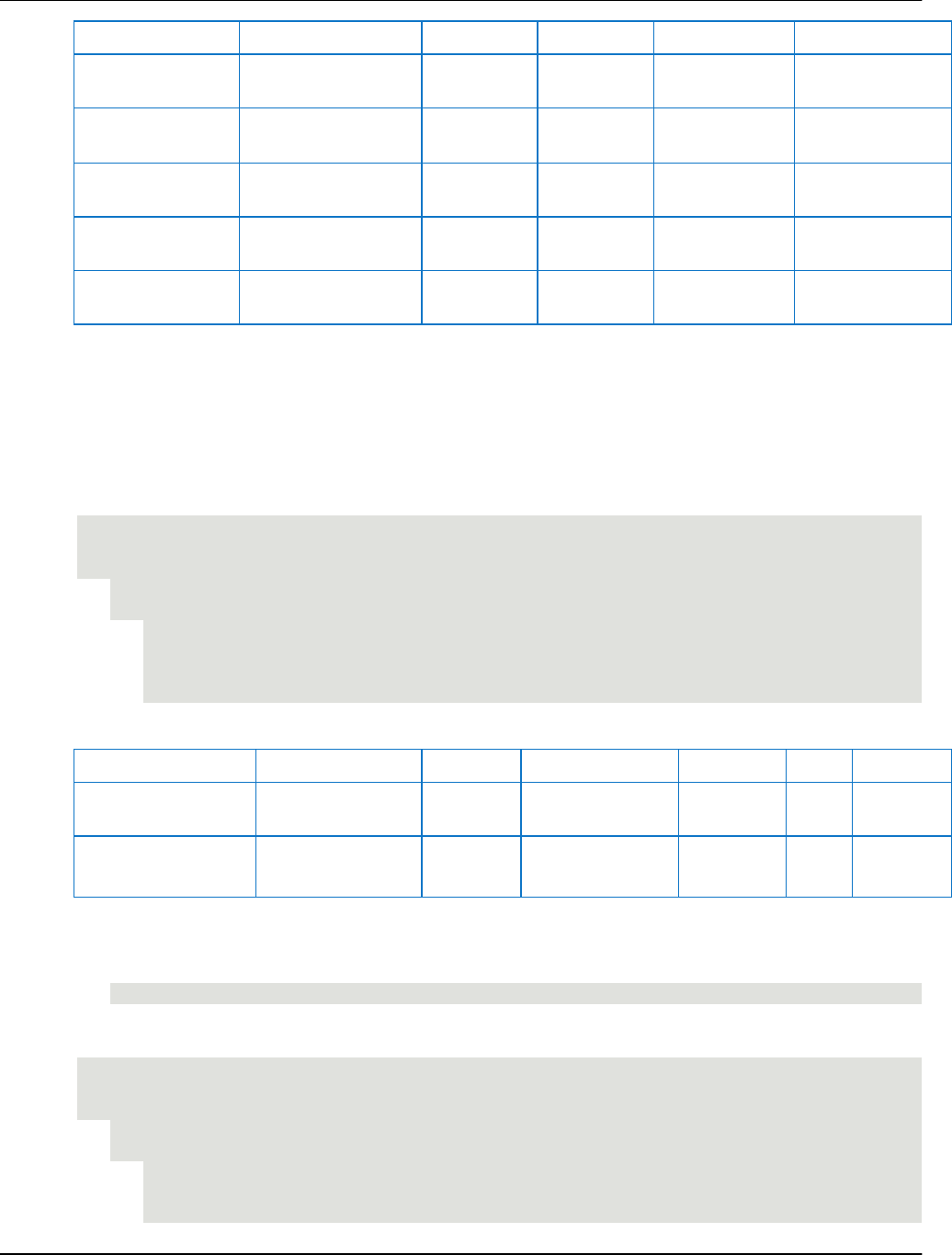
Data Retrieval Options AVEVA™ Historian Retrieval Guide formerly Wonderware
61
DateTime
TagName
Flow
OPCQuality
PercentGood
(interval 1)
2004-06-07
08:00:00.000
FlowRate
2862.97
192
100.0
(interval 2)
2004-06-07
08:01:00.000
FlowRate
9436.85
192
100.0
(interval 3)
2004-06-07
08:02:00.000
FlowRate
2480.24
192
100.0
(interval 4)
2004-06-07
08:03:00.000
FlowRate
7379.71
192
100.0
(interval 5)
2004-06-07
08:04:00.000
FlowRate
6317.32
192
100.0
Also, the "phantom" cycle affects the integral retrieval mode just as it does the average retrieval mode.
For examples, see Querying Aggregate Data in Different Ways on page 171.
Integral Retrieval - wwExpression Query Example
In this example, the integral of a tag named Speed (measured in m/s), is computed over two 1-minute
long intervals (wwResolution = 60000 milliseconds) to measure the distance traveled in meters over the
interval.
SELECT StartDateTime, DateTime, TagName, Value, Quality, QualityDetail as QD,
wwUnit
FROM History
WHERE TagName = 'Speed'
AND DateTime >= '2020-12-03 10:00'
AND DateTime < '2020-12-03 10:02'
AND wwRetrievalMode = 'Integral'
AND wwResolution = 60000
The results are:
StartDateTime
DateTime
TagName
Value
Quality
QD
wwUnit
2020-12-03
09:59:00.000
2020-12-03
10:00:00.000
Speed
-2906.88948
0
192
m
2020-12-03
10:00:00.000
2020-12-03
10:01:00.000
Speed
877.57619
0
192
m
To display the results using a different unit of measure, you can use the wwExpression query parameter
with the following syntax:
wwExpression = 'UOM(TagName, target unit)'
For example, the integral of the Speed tag is computed again over two 1-minute long intervals, but this
time the value is converted to the distance in centimeters.
SELECT StartDateTime, DateTime, TagName, Value, Quality, QualityDetail as QD,
wwUnit
FROM History
WHERE TagName = 'Speed'
AND DateTime >= '2020-12-03 10:00'
AND DateTime < '2020-12-03 10:02'
AND wwRetrievalMode = 'Integral'

AVEVA™ Historian Retrieval Guide formerly Wonderware Data Retrieval Options
62
AND wwResolution = 60000
AND wwExpression = 'UOM([Speed],cm)'
The results are:
StartDateTime
DateTime
TagName
Value
Quality
QD
wwUnit
2020-12-03
09:59:00.000
2020-12-03
10:00:00.000
Speed
-290688.948
192
192
cm
2020-12-03
10:00:00.000
2020-12-03
10:01:00.000
Speed
87757.619
192
192
cm
Note: The engineering unit conversion feature is licensed separately. If you do not have the applicable
license, the results are returned in the original units.
Integral Retrieval - Initial and Final Values
If wwTimeStampRule = END, the initial value is calculated by performing an integral calculation on the
cycle leading up to the query start time. No special handling is done for the final value.
If wwTimeStampRule = START, the final value is calculated by performing an integral calculation on the
cycle following the query end time. No special handling is done for the initial value.
Integral Retrieval - Handling NULL Values
Gaps introduced by NULL values are not included in the integral calculations. The average only
considers the time ranges with good values. TimeGood indicates the total time per cycle that the tags
value was good.
Slope Retrieval
Slope retrieval returns the slope of a line drawn through a given point and the point immediately before it,
thus expressing the rate at which values change.
This retrieval mode is useful for detecting if a tag is changing at too great a rate. For example, you might
have a temperature that should steadily rise and fall by a small amount, and a sharp increase or
decrease could point to a potential problem.
The slope retrieval mode can be considered a delta mode. Apart from the initial value and a value at the
query end time, all returned points are calculated delta points returned with the timestamp of an actual
delta point.
Slope retrieval only works with analog tags. For all other tags, normal delta results are returned.
All returned values are in chronological order. If multiple points are to be returned for a particular
timestamp, they are returned in the order in which the tags were specified in the query.
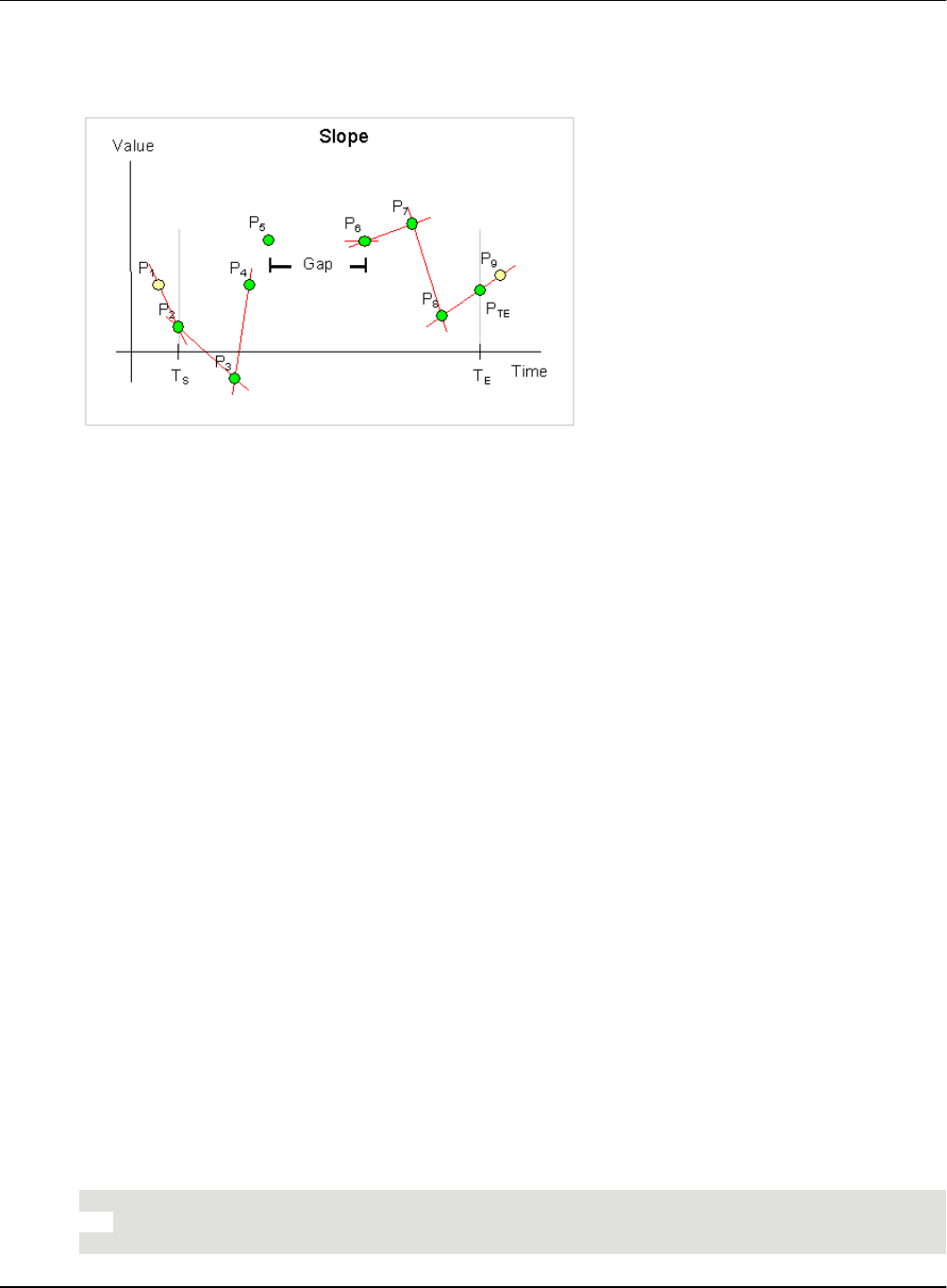
Data Retrieval Options AVEVA™ Historian Retrieval Guide formerly Wonderware
63
Slope Retrieval - How It Works
The following illustration shows how the slope is calculated for an analog tag.
This example has a start time of T
S
and an end time of T
E
.
For the queried tag, a total of nine points are found, represented by the markers P
1
through P
9
. Of these
points, eight represent normal analog values. The point P
5
represents a NULL due to an I/O Server
disconnect, which causes a gap in the data between P
5
and P
6
.
For every point in the time period, slope retrieval returns the slope of the line going through that point and
the point immediately before it. For two points P
1
and P
2
occurring at times T
1
and T
2
, the slope formula is
as follows:
(P
2
- P
1
) / (T
2
- T
1
)
The difference between T
1
and T
2
is measured in seconds. Therefore, the returned value represents the
change in Engineering Units per second.
In this example, point P
2
is located at the query start time, and because there is a prior value (P
1
), the
slope of the line through both points is calculated and returned at time T
S
. Similarly, slopes are calculated
to be returned at times T
3
, T
4
, T
7
, and T
8
. The slope is also calculated for the line through P
8
and P
9
, but
that value is returned as point P
TE
at the query end time.
For point P
6
, there is no prior point with which to perform a slope calculation. Instead, the slope of the flat
line going through the point (that is, the value 0) is calculated. At the time of P
5
, NULL is returned.
The quality detail and OPC quality returned with a slope point is always directly inherited from the point
that also provides the time stamp. In this example, this means that point P
2
provides the qualities for the
slope point returned at the query start time, T
S
.
Slope Retrieval - Supported Value Parameters
You can use various parameters to adjust which values are returned in slope retrieval mode. For more
information, see the following sections:
History Version (wwVersion) on page 104
Quality Rule (wwQualityRule) on page 111
Slope Retrieval - Query Example
To use the slope retrieval mode, set the following parameter in your query.
wwRetrievalMode = 'Slope'

AVEVA™ Historian Retrieval Guide formerly Wonderware Data Retrieval Options
64
For example, the following query calculates and returns the rate of change of the ReactTemp tag in
°C/second. The initial value in the Quality column at the query start time shows no value is located
exactly at that time, so the slope returned is the same as the one returned at the next delta point. (For
more information on initial values, see Determining Cycle Boundaries on page 142.)
At 08:01:17.947 the tag has two delta points, so a slope is calculated and returned for the first point, while
a NULL is returned at the second one with a special QualityDetail of 17, indicating that no slope can be
calculated as it is either plus or minus infinite.
SELECT DateTime, TagName, CONVERT(DECIMAL(10, 4), Value) AS Slope, Quality,
QualityDetail FROM History
WHERE TagName = 'ReactTemp'
AND DateTime >= '2005-04-17 08:00'
AND DateTime <= '2005-04-17 08:05'
AND wwRetrievalMode = 'Slope'
The results are:
DateTime
TagName
Slope
Quality
QualityDetail
2005-04-17 08:00:00.000
ReactTemp
3.8110
133
192
2005-04-17 08:00:00.510
ReactTemp
3.8110
0
192
2005-04-17 08:00:01.713
ReactTemp
4.1563
0
192
2005-04-17 08:00:02.917
ReactTemp
4.1563
0
192
2005-04-17 08:00:04.230
ReactTemp
3.8081
0
192
2005-04-17 08:00:05.433
ReactTemp
4.1563
0
192
…
…
…
2005-04-17 08:01:16.743
ReactTemp
-1.7517
0
192
2005-04-17 08:01:17.947
ReactTemp
-27.0158
0
192
2005-04-17 08:01:17.947
ReactTemp
NULL
1
17
2005-04-17 08:01:19.260
ReactTemp
-1.7530
0
192
2005-04-17 08:01:20.463
ReactTemp
-1.9119
0
192
2005-04-17 08:01:21.667
ReactTemp
-1.9119
0
192
2005-04-17 08:01:22.977
ReactTemp
-1.7517
0
192
…
…
…
Slope Retrieval - wwExpression Query Example
The following query calculates and returns the rate of change of the Distance tag. The results are
returned in the tag's default unit of measure, which in this case is feet/second.
SELECT DateTime, TagName, Value, QualityDetail, wwUnit FROM History
WHERE TagName = 'Distance'
AND wwRetrievalMode = 'Slope'
The results are:
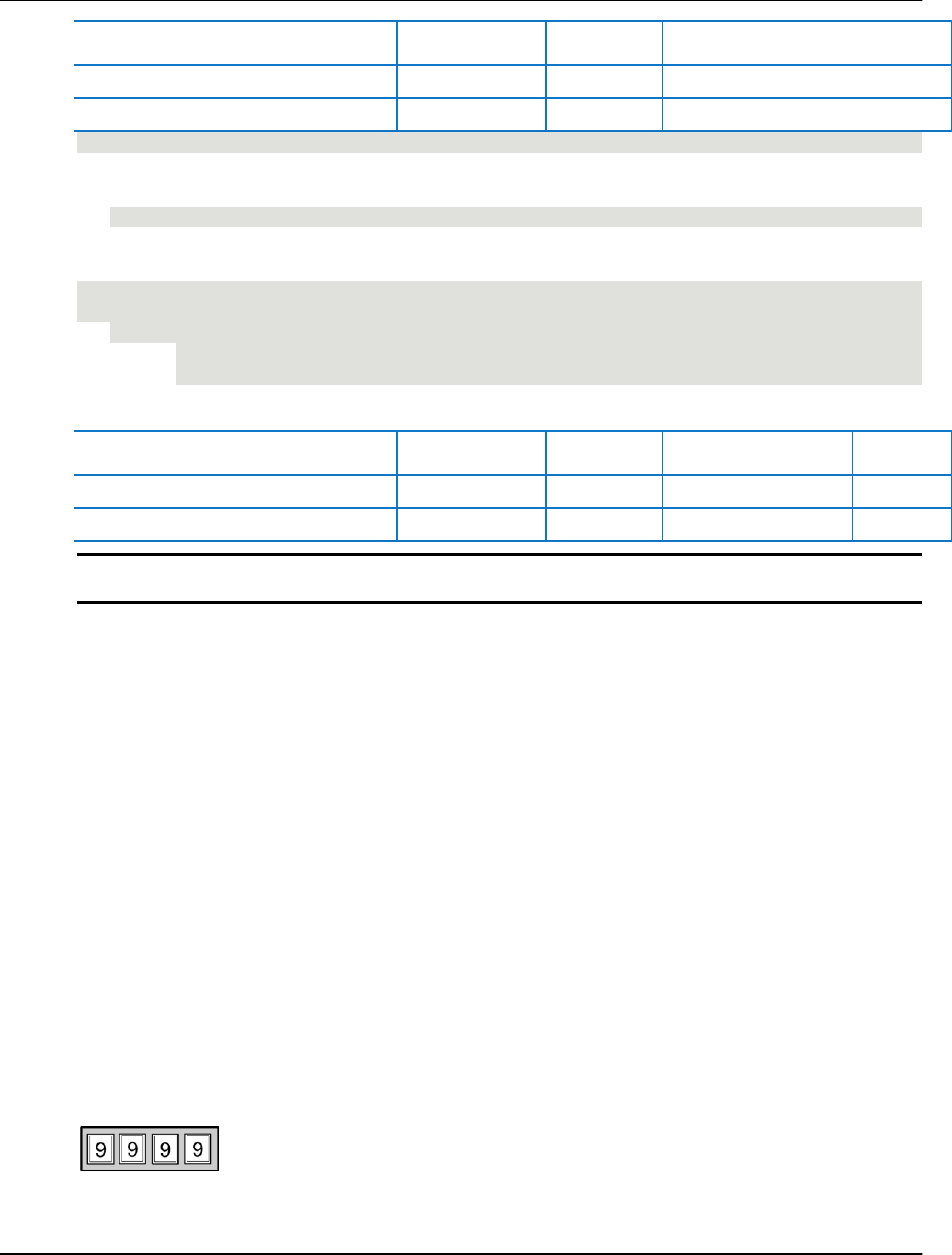
Data Retrieval Options AVEVA™ Historian Retrieval Guide formerly Wonderware
65
DateTime
TagName
Value
QualityDetail
wwUnit
2020-07-29 06:50:53.748
Distance
1
192
ft/s
2020-07-29 06:50:54.748
Distance
2
192
ft/s
To display the results using a different unit of measure, you can use the wwExpression query parameter
with the following syntax:
wwExpression = 'UOM(TagName, target unit)'
For example, the following query calculates and returns the rate of change of the Distance tag in
meters/second.
SELECT DateTime, TagName, Value, QualityDetail, wwUnit FROM History
WHERE TagName = 'Distance'
AND wwExpression = 'UOM(Distance, m/s)'
AND wwRetrievalMode = 'Slope'
The results are:
DateTime
TagName
Value
QualityDetail
wwUnit
2020-07-29 06:50:53.748
Distance
0.3048
192
m/s
2020-07-29 06:50:54.748
Distance
0.6096
192
m/s
Note: The engineering unit conversion feature is licensed separately. If you do not have the applicable
license, the results are returned in the original units.
Slope Retrieval - Initial and Final Values
An initial value is always generated. If a point is stored exactly at the query start time, the slope is
returned as the slope between that point and the previous point. Otherwise, the slope is calculated using
the slope of the points before and after the query start time.
A final value is always generated. If a point is stored exactly at the query end time, the slope is returned
as the slope between that point and the previous point. Otherwise, the slope is calculated using the slope
of the points before and after the query end time.
Slope Retrieval - Handling NULL Values
The first NULL following a non-NULL value is returned. Subsequent NULL values are not. If a point is
preceded by a NULL, the slope for that point will be zero.
Counter Retrieval
Counter retrieval allows you to accurately retrieve the delta change of a tag’s value over a period of time
even for tags that are reset upon reaching a "rollover value." The rollover value is defined in the AVEVA
Historian for each tag.
This retrieval mode is useful for determining how much of an item was produced during a particular time
period. For example, you might have an integer counter that keeps track of how many cartons were
produced. The counter has an indicator like this:
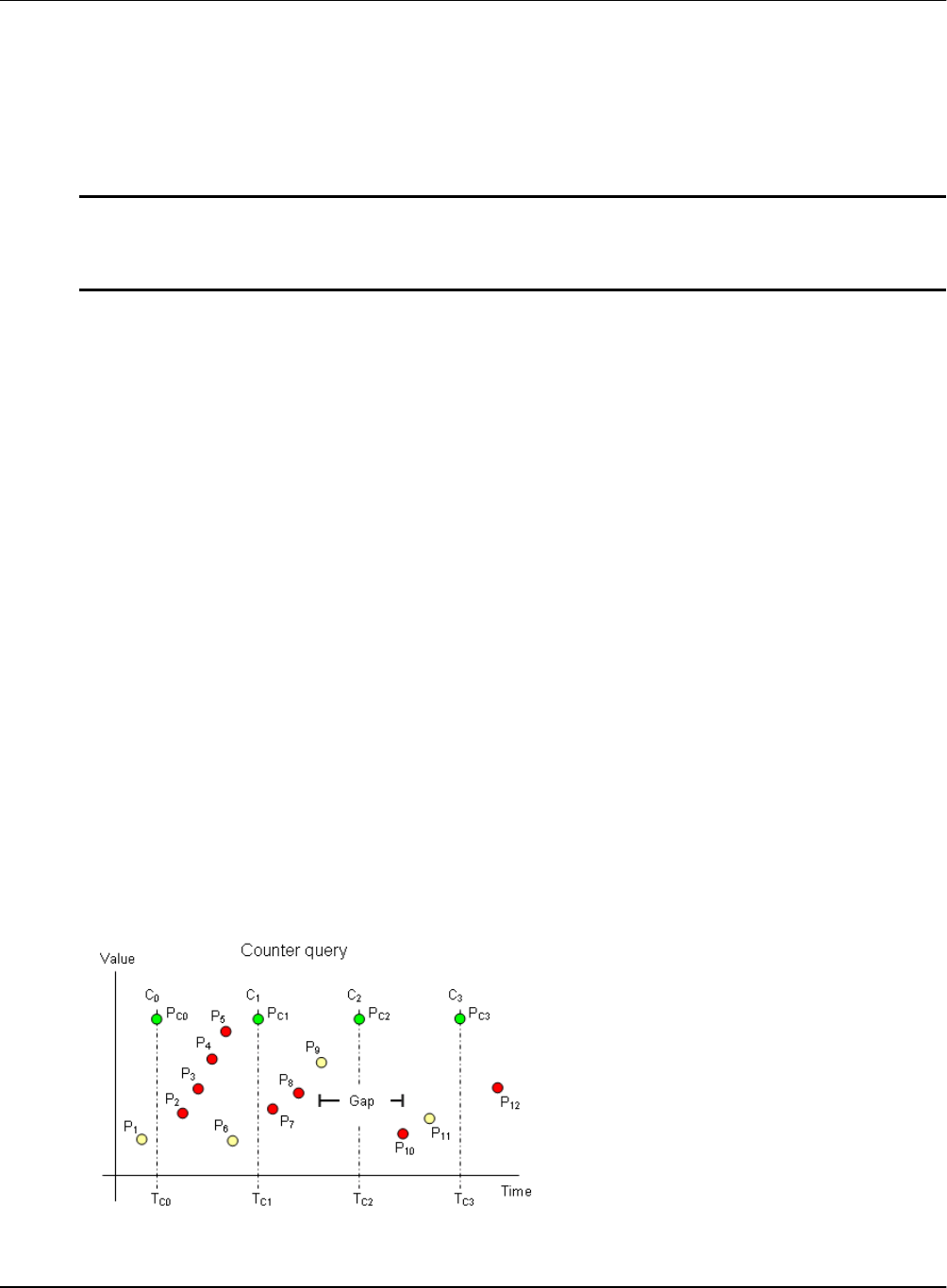
AVEVA™ Historian Retrieval Guide formerly Wonderware Data Retrieval Options
66
The next value after the highest value that can be physically shown by the counter is called the rollover
value. In this example, the rollover value is 10,000. When the counter reaches the 9,999th value, the
counter rolls back to 0. Therefore, a counter value of 9,900 at one time and a value of 100 at a later time
means that you have produced 200 units during that period, even though the counter value has dropped
by 9,800 (9,900 minus 100). Counter retrieval allows you to handle this situation and receive the correct
value. For each cycle, the counter retrieval mode shows the increase in that counter during the cycle,
including rollovers.
Note: If Historian receives a data tag value that is outside of the specified engineering unit boundaries,
Historian ignores the received value and instead returns a 0. For example, if a value can be an integer
between 1 and 8, and the received value is 9, Historian returns 0 as the value for that tag during that
cycle.
Counter retrieval also works with floating point counters, which is useful for flow meter data. Similar to the
carton counter, some flow meters "roll over" after a certain amount of flow accumulates. For both
examples, the need is to convert the accumulating measure to a "delta change" value over a given
period.
Counter retrieval is a true cyclic mode. It returns one row for each tag in the query for each cycle. The
number of cycles is based on the specified resolution or cycle count.
The counter algorithm is only applied to analog tags and to discrete tags. For integer analog tags, the
result will be an integer returned as a float data type. For a real analog tag, the rollover value and the
result may be real values and can include fractional values. If a query contains tags of other types, then
no rows are returned for those tags. For discrete tags, the rollover value is assumed to be 2.
The rules used to determine the OPCQuality returned with a counter value are the same as for a time
weighted average query. For more information, see Quality Rule (wwQualityRule) on page 111. When a
rollover has occurred in the calculation cycle, a special quality detail of 212 is returned in all non-NULL
cases.
CTU counters will default to "signed integer" tags when imported into the Historian, giving a normal range
of -2147483648 to 2147483647 (for a 32-bit integer). In operation, these counters will count up to the
upper limit and "rollover" to the lower limit on the next increment. If these tags are changed to be
"unsigned integers" the normal range will be 0 to 4294967295 and values will rollover to "0", conforming
to the expected behavior of a tag used with "counter" retrieval. When used with a 16-bit CTU counter, the
same rules apply, but the range of values is -32768 to 32767 as "signed" and 0 to 65535 for an
"unsigned".
Counter Retrieval - How It Works
The following illustration shows how the counter algorithm determines the count for an analog tag.

Data Retrieval Options AVEVA™ Historian Retrieval Guide formerly Wonderware
67
This example has a start time of T
C0
and an end time of T
C3
. The resolution has been set in such a way
that the historian returns data for three complete cycles starting at T
C0
, T
C1
, and T
C2
, and an incomplete
cycle starting at T
C3
.
For the queried tag, a total of twelve points are found throughout the cycles represented by the markers
P
1
through P
12
. Of these points, eleven represent normal analog values. The point P
9
represents a NULL
due to an I/O Server disconnect, which causes a gap in the data between P
9
and P
10
. Point P
12
is not
considered because it is outside of the query time frame.
All points are considered in the counter calculation, but only the yellow ones are actually used to
determine which values to return to the client. The returned points are P
C0
, P
C1
, P
C2
and P
C3
, shown in
green at the top to indicate that there is no simple relationship between them and any of the actual points.
All cycle values are calculated as the delta change between the cycle time in question and the previous
cycle time, taking into account the number of rollovers between the two points in time. The counter
algorithm assumes that a rollover occurred if the current value is lower than the previous value. The initial
value at the query start time (P
C1
) is calculated the same way, only based on a phantom cycle before the
query start time.
For example, the formula to calculate P
C1
is as follows:
P
C1
= n * V
R
+ P
6
- P
1
where:
n = the number of rollovers that have occurred during the cycle
V
R
= the rollover value for the tag
If either n or V
R
are equal to zero, P
C1
is simply the difference between the values P
1
and P
6
.
In the case of cycle C
2
, there is no value at the cycle time, so the NULL value represented by point P
9
is
returned. In the case of cycle C
3
, a NULL is again returned, because there is no counter value at the
previous cycle boundary to use in the calculation. There must be a full cycle of values in order for the
counter to be calculated.
If a gap is fully contained inside a cycle, and if points occur within the cycle on both sides of the gap, then
a counter value is returned, even though it may occasionally be erroneous. Zero or one rollovers are
assumed, even though the counter might have rolled over multiple times.
Counter Retrieval - Calculations for a Manually Reset Counter
If you have a counter that you typically reset manually before it rolls over, you must set the rollover value
for the tag to 0 so that the count is simply how much change occurred since the manual reset.
For example, assume that you have the following data values for five consecutive cycle boundaries, and
that the value 0 occurs as the first value within the last cycle:
100, 110, 117, 123, 3
If you set the rollover value to 0, the counter retrieval mode assumes that the 0 following the value 123
represents a manual reset, and returns a value of 3 for the last cycle, which is assumed to be the count
after the manual reset. The value 0 itself does not contribute 1 to the counter value in this case.
If the rollover value is instead set to 200, then the counter retrieval mode assumes that the value 0
represents a normal rollover, and a count of 80 is calculated and returned (200 - 123 + 3). In this case,
the value 0 contributes 1 to the counter value, and that is the change from the value 199 to the value 200.
Counter Retrieval - Using a Counter Deadband

AVEVA™ Historian Retrieval Guide formerly Wonderware Data Retrieval Options
68
You can set a deadband for counter retrieval to better handle reporting of rates and quantities. For
example, setting a counter deadband can help to:
Distinguish between counter resets and rollovers.
Filter out counter reversals.
The counter deadband is the percentage of the full range of the counter.
For example, if you set the counter deadband to be 10, then any counter reset that occurs within the top
10% of the range is assumed to be a rollover and is counted as such.
For a reversal, you might have a conveyor belt carrying boxes that are counted as they pass by a station.
If a jam occurs, you might reverse the conveyor belt to clear it, resulting in the counter decrementing and
then incrementing again. In this case, a counter deadband of 10 would discard any duplicate counts
within 10% of the range starting from the point of reversal. Only one reversal can be det ected until the
rollover occurs.
Counter Retrieval - Supported Value Parameters
You can use various parameters to adjust which values are returned in integral retrieval mode. For more
information, see the following sections:
Cycle Count (X Values over Equal Time Intervals) (wwCycleCount) on page 91
Resolution (Values Spaced Every X ms) (wwResolution) on page 93
History Version (wwVersion) on page 104
TimeStamp Rule (wwTimeStampRule) on page 107
Quality Rule (wwQualityRule) on page 111
Counter Retrieval - Initial and Final Values
An initial value is returned using the period leading up to the query start time.
A data point that has a cycle time is used to generate the counter value for its preceding cycle. A NULL
point with cycle time will cause the preceding cycle to end in a gap and the following cycle to start with a
gap.
Counter Retrieval - Handling NULL Values
If wwQualityRule is configured as OPTIMISTIC, NULL data points will not be used in calculation. 0.0 will
be used as the starting base value for the query unless the query data starts with a NULL. If the query
starts with a NULL, the value change for the cycle is calculated from the first actual value in the cycle,
rather than 0.
Otherwise, if any points considered in a cycle have UNCERTAIN quality, the result for that row will also
have UNCERTAIN quality. Any cycle that starts or ends in a gap will have a quality detail of 65536.
The quality detail of DOUBTFUL will be used with the counter result for the cycles, if a NULL point is
considered for the cycle and the counter result is not NULL.
Counter Retrieval - Handling Illegal Values

Data Retrieval Options AVEVA™ Historian Retrieval Guide formerly Wonderware
69
If the configured rollover value is larger than 0.0, then the data points whose values are greater than or
equal to the rollover value causes the counter value for the cycle to be set to 0.0, with
qdIO_FILTEREDPOINT applied to the quality detail.
Similarly, if any data point with a value less than 0.0 is found in a cycle, the counter value for the cycle is
set to 0.0, with qdIO_FILTEREDPOINT applied to the quality detail.
Counter Retrieval - Query Example
To use the counter mode, set the following parameter in your query.
wwRetrievalMode = 'Counter'
In the following example, the rollover value for the SysTimeSec system tag is set to 0. In a five-minute
time span, the SysTimeSec tag increments a total of 300 times. The following query returns the total
count within the five-minute time span, which begins with StartTime and ends with DateTime. The
QualityDetail of 212 indicates that a counter rollover occurred during the query time range.
select StartDateTime, DateTime, TagName, Value, wwUnit, Qu alityDetail as QD from
History
where TagName = 'SysTimeSec'
and DateTime > '2020-12-02 1:00'
and DateTime <= '2020-12-02 1:05'
and wwRetrievalMode = 'counter'
and wwCycleCount = 1
The results are:
StartTime
DateTime
TagName
Value
wwUnit
QD
2020-12-02
01:00:00.0000000
2020-12-02
01:05:00.0000000
SysTimeSec
300
Second
212
To display the results using a different unit of measure, you can use the wwExpression query parameter
with the following syntax:
wwExpression = 'UOM(TagName, target unit)'
The following example is similar to the previous example. The following query returns the total count
within the five-minute time span, which begins with StartTime and ends with DateTime, and converts the
retrieved value from its original units (seconds) to minutes.
select StartDateTime, DateTime, TagName, Value, Quality, QualityDetail as QD
from History
where TagName = 'SysTimeSec'
and DateTime > '2020-12-02 1:00'
and DateTime <= '2020-12-02 1:05'
and wwRetrievalMode = 'counter'
and wwCycleCount = 1
and wwExpression = 'UOM(SysTimeSec,Minute)'
The results are:
StartTime
DateTime
TagName
Value
wwUnit
QD
2020-12-02
01:00:00.0000000
2020-12-02
01:05:00.0000000
SysTimeSec
5
Minute
212
Note: The engineering unit conversion feature is licensed separately. If you do not have the applicable
license, the results are returned in the original units.
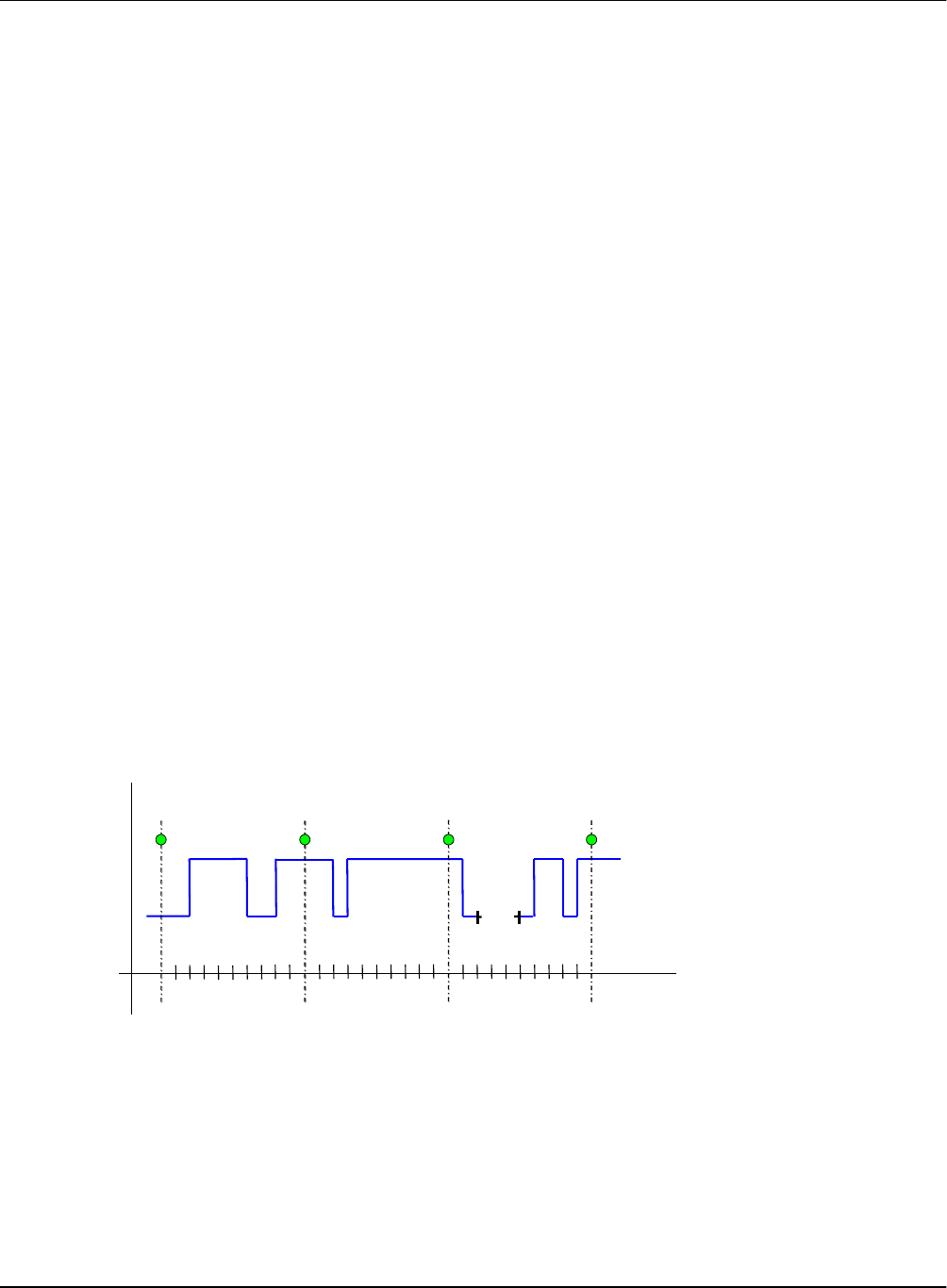
AVEVA™ Historian Retrieval Guide formerly Wonderware Data Retrieval Options
70
ValueState Retrieval
ValueState retrieval returns information on how long a tag has been in a particular value state during
each retrieval cycle. That is, a time-in-state calculation is applied to the tag value.
This retrieval mode is useful for determining how long a machine has been running or stopped, how
much time a process spent in a particular state, how long a valve has been open or closed, and so on.
For example, you might have a steam valve that releases steam into a reactor, and you want to know the
average amount of time the valve was in the open position during the last hour. ValueState retrieval can
return the shortest, longest, average, or total time a tag spent in a state, or the time spent in a state as a
percentage of the total cycle length.
When you use ValueState retrieval for a tag in a trend chart, you must specify a single value state for
which to retrieve information. ValueState retrieval then returns one value for each cycle—for example,
the total amount of time that the valve was in the "open" state during each 1-hour cycle. This information
is suitable for trend display.
If you don’t specify a state, ValueState retrieval returns one row of information for each value that the tag
was in during each cycle. For example, this would return not only the time a valve was in the "open" state,
but also the time it was in the "closed" state. This information is not suitable for meaningful display in a
regular trend. You can, however, retrieve this type of information in a query and view it as a table.
ValueState retrieval works with integer, discrete, string, and state summary tags. For other types of tags,
no rows are returned. NULL values are treated like any other distinct state.
The values returned at the query start time are the result of applying the algorithm to a "phantom" cycle
preceding the query range. It is assumed that the tag value at the start of the cycle is located at that point
in time.
To specify the type of calculation, set the wwStateCalc parameter in the query. For more information, see
State Calculation (wwStateCalc) on page 119.
ValueState Retrieval - How It Works
The following illustration shows how ValueState retrieval returns values for a discrete tag.
Time
Value
1 2 3 4 5 6 7 8 9
ON
ValueState Retrieval
T
C2
C
2
T
C0
C
0
T
C1
1
C
1
T
C3
C
3
11 12 13 14 15 16 17 18 19
21 22 23 24 25 26 27 28 29
OFF
P
C0
P
C1
P
C2
P
C3
Gap
This example has a start time of T
C0
and an end time of T
C3
. The resolution has been set in such a way
that the historian returns data for three complete cycles starting at T
C0
, T
C1
, and T
C2
, and an incomplete
cycle starting at T
C3
. Time is measured seconds.
A gap in the data occurs in the third cycle due to an I/O Server disconnect.
The state calculation is based on each cycle, and the values returned at the query start time are not
regular initial values, but are the resulting values that occur after applying the algorithm to the last cycle
preceding the query range. The returned points are P
C0
, P
C1
, P
C2
and P
C3
, shown in green at the top to
indicate that there is no simple relationship between the calculated values and any of the actual points.

Data Retrieval Options AVEVA™ Historian Retrieval Guide formerly Wonderware
71
Assume the query is set so that the total time (wwStateCalc = ‘Total’)in the two states are returned. The
timestamping is set to use the cycle end time.
For T
C0
, the query returns two rows (one for the "on" state and one for the "off" state), calculated as a
result of the "phantom" cycle that precedes the query start time. The values have a timestamp of the
query start time.
For T
C1
, one row is returned for the "on" state. The "on" state occurred twice during the cycle--one
time for four seconds and again for two seconds before the cycle boundary, and the total time
returned is six seconds. The state was "off" twice during the cycle for a total time of four seconds,
and one row is returned with that value.
For T
C2
, one row is returned for the "on" state, and one row is returned for the "off" state. The "on"
state occurred for a total of nine seconds between the cycle boundaries, and the "off" state occurred
for a total of one second.
For T
C3
, one row is returned for the "on" state, and one row is returned for the "off" state. The "on"
state occurred for a total of four seconds between the cycle boundaries, and the "off" state occurred
for a total of three seconds. An additional row is returned for the NULL state occurring as a result of
the I/O Server disconnect.
Using the same data, if you queried the total contained time for the states, the following is returned:
For T
C0
, the query returns two values (one for the "on" state and one for the "off" state), calculated as
a result of the "phantom" cycle the precedes the query start time. The value has a timestamp of the
query start time.
For T
C1
, one row is returned for the "on" state, and one row is returned for the "off" state. The "on"
state occurred one time for four seconds within the cycle. The two seconds of "on" time that crosses
the cycle boundary does not contribute to the total time. The state was "off" one time during the cycle
for two seconds completely within the cycle boundary.
For T
C2
, the state was not "on" for any contained time between the cycle. Both occurrences of the
"on" state cross over a cycle boundary, so no rows are returned for this state. One row is returned for
the "off" state. The state was "off" one time during the cycle for one seconds completely within the
cycle boundary.
For T
C3
, one row is returned for the "on" state, and one row is returned for the "off" state. The state
was "on" for a single contained time of two seconds between the cycle boundaries. The state was
"off" three times during the cycle for three seconds completely within the cycle boundary. An
additional row is returned for the NULL state occurring as a result of the I/O Server disconn ect. The
state was NULL for a total of three seconds. The I/O Server disconnect that "disrupted" the off state
is treated as its own state, thereby changing what would have been a single "off" state instance of
five seconds into two instances of the "off" state for one second each.
ValueState Retrieval - Supported Value Parameters
You can use various parameters to adjust which values are returned in ValueState retrieval mode. For
more information, see the following sections:
Cycle Count (X Values over Equal Time Intervals) (wwCycleCount) on page 91
Resolution (Values Spaced Every X ms) (wwResolution) on page 93
History Version (wwVersion) on page 104
TimeStamp Rule (wwTimeStampRule) on page 107
Quality Rule (wwQualityRule) on page 111
State Calculation (wwStateCalc) on page 119
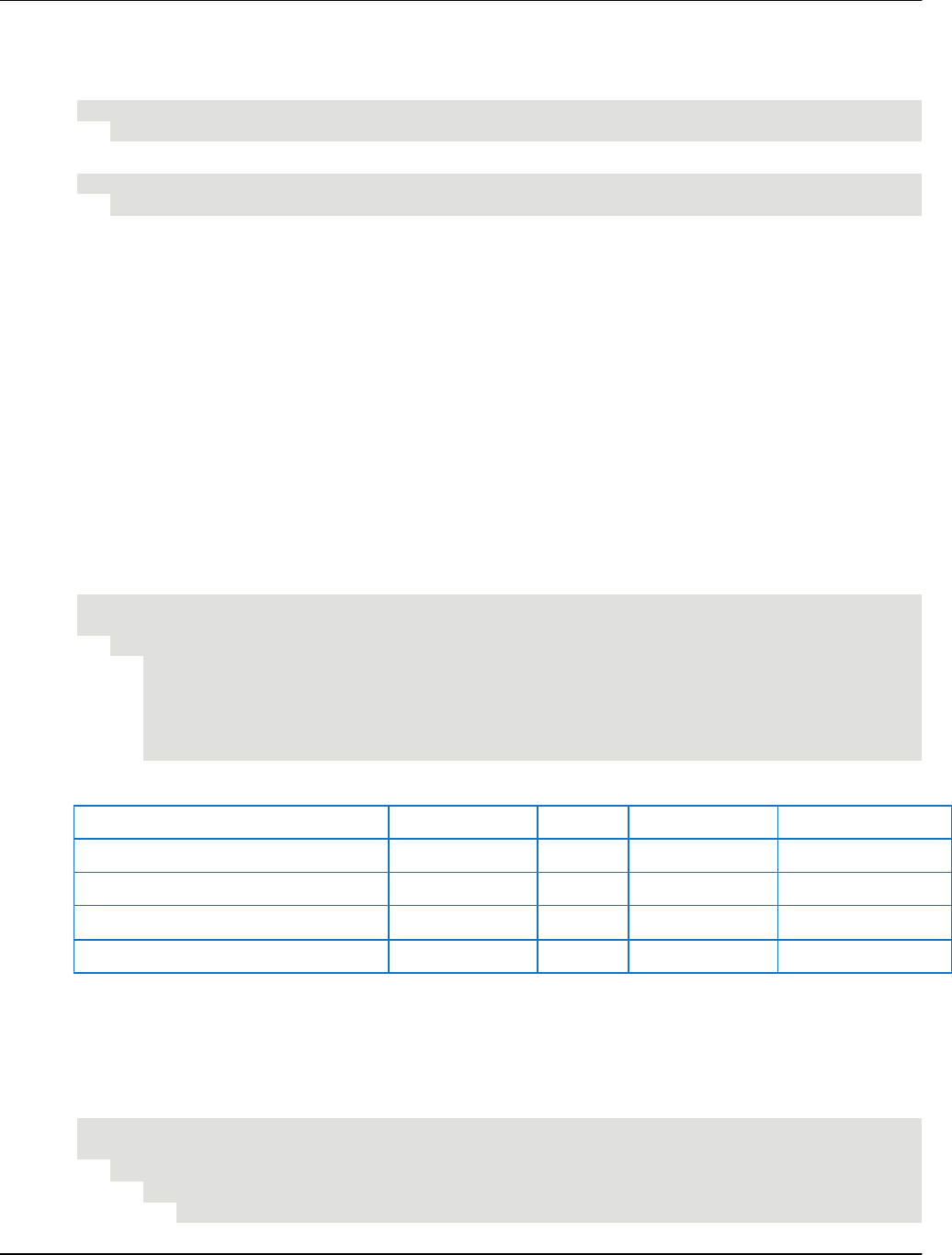
AVEVA™ Historian Retrieval Guide formerly Wonderware Data Retrieval Options
72
ValueState Retrieval - Query Examples
To use the ValueState retrieval mode, set the following parameter in your query.
wwRetrievalMode = 'ValueState'
To specify the type of aggregation, set the wwStateCalc parameter in the query, such as:
wwStateCalc = 'Total'
Be sure that you use the "<=" operator for ending date/time.
For examples, see the following:
ValueState Retrieval Query 1: Minimum Time in State on page 72
ValueState Retrieval Query 2: Minimum Time in State for a Single Tag on page 72
ValueState Retrieval Query 3 on page 73
ValueState Retrieval Query 4 on page 73
ValueState Retrieval Query 5 on page 74
ValueState Retrieval Query 6: Querying State Summary Values on page 74
ValueState Retrieval Query 1: Minimum Time in State
The following query finds the minimum time-in-state for the SteamValve discrete tag. Note that
minimum times are returned for each state for both the five-minute phantom cycle before the query start
time and for the single retrieval cycle between 10:00 and 10:05.
SELECT DateTime, TagName, vValue, StateTime, wwStateCalc FROM History
WHERE TagName IN ('SteamValve')
AND DateTime >= '2005-04-17 10:00:00'
AND DateTime <= '2005-04-17 10:05:00'
AND wwCycleCount = 1
AND wwRetrievalMode = 'ValueState'
AND wwStateCalc = 'Min'
The results are:
DateTime
TagName
vValue
StateTime
wwStateCalc
2005-04-17 10:00:00.000
SteamValve
0
35359.0
MINIMUM
2005-04-17 10:00:00.000
SteamValve
1
43749.0
MINIMUM
2005-04-17 10:05:00.000
SteamValve
0
37887.0
MINIMUM
2005-04-17 10:05:00.000
SteamValve
1
43749.0
MINIMUM
ValueState Retrieval Query 2: Minimum Time in State for a Single Tag
The following query finds the minimum time-in-state for the Mixer discrete tag for the "on" state. Note that
minimum times are returned for each state for both the five-minute phantom cycle before the query start
time and for the single retrieval cycle between 10:00 and 10:05.
SELECT DateTime, TagName, vValue, StateTime, wwStateCalc
FROM History
WHERE TagName IN ('Mixer')
AND DateTime >= '2017-12-11 08:00:00'

Data Retrieval Options AVEVA™ Historian Retrieval Guide formerly Wonderware
73
AND DateTime < '2017-12-12 08:00:00'
AND wwCycleCount= '1'
AND wwRetrievalMode = 'ValueState'
AND wwStateCalc = 'Min'
AND vValue = 1
The results are:
DateTime
TagName
vValue
StateTime
wwStateCalc
2017-12-11 08:00:00.0000000
Mixer
1
35906
Min
ValueState Retrieval Query 3
The following query finds the maximum time-in-state for the SteamValve discrete tag in the same time
period as in Query 1. Note how both the minimum and maximum values for the "1" state are very similar,
while they are very different for the "0" state. This is due to the "cut-off" effect.
SELECT DateTime, TagName, vValue, StateTime, wwStateCalc FROM History
WHERE TagName IN ('SteamValve')
AND DateTime >= '2005-04-17 10:00:00'
AND DateTime <= '2005-04-17 10:05:00'
AND wwCycleCount = 1
AND wwRetrievalMode = 'ValueState'
AND wwStateCalc = 'Max'
The results are:
DateTime
TagName
vValue
StateTime
wwStateCalc
2005-04-17 10:00:00.000
SteamValve
0
107514.0
MAXIMUM
2005-04-17 10:00:00.000
SteamValve
1
43750.0
MAXIMUM
2005-04-17 10:05:00.000
SteamValve
0
107514.0
MAXIMUM
2005-04-17 10:05:00.000
SteamValve
1
43750.0
MAXIMUM
ValueState Retrieval Query 4
The following query returns the total of time in state for a discrete tag. In this example, the
TimeStampRule system parameter is set to "End" (the default setting), so the returned values are
timestamped at the end of the cycle. The returned rows represent the time-in-state behavior during the
period starting at 2005-04-13 00:00:00.000 and ending at 2005-04-14 00:00:00.000.
SELECT DateTime, vValue, StateTime, wwStateCalc FROM History
WHERE DateTime > '2005-04-13 00:00:00.000'
AND DateTime <= '2005-04-14 00:00:00.000'
AND TagName IN ('PumpStatus')
AND wwRetrievalMode = 'ValueState'
AND wwStateCalc = 'Total'
AND wwCycleCount = 1
The results are:
DateTime
vValue
StateTime
wwStateCalc
2005-04-14 00:00:00
NULL
1041674.0
TOTAL
2005-04-14 00:00:00
On
56337454.0
TOTAL
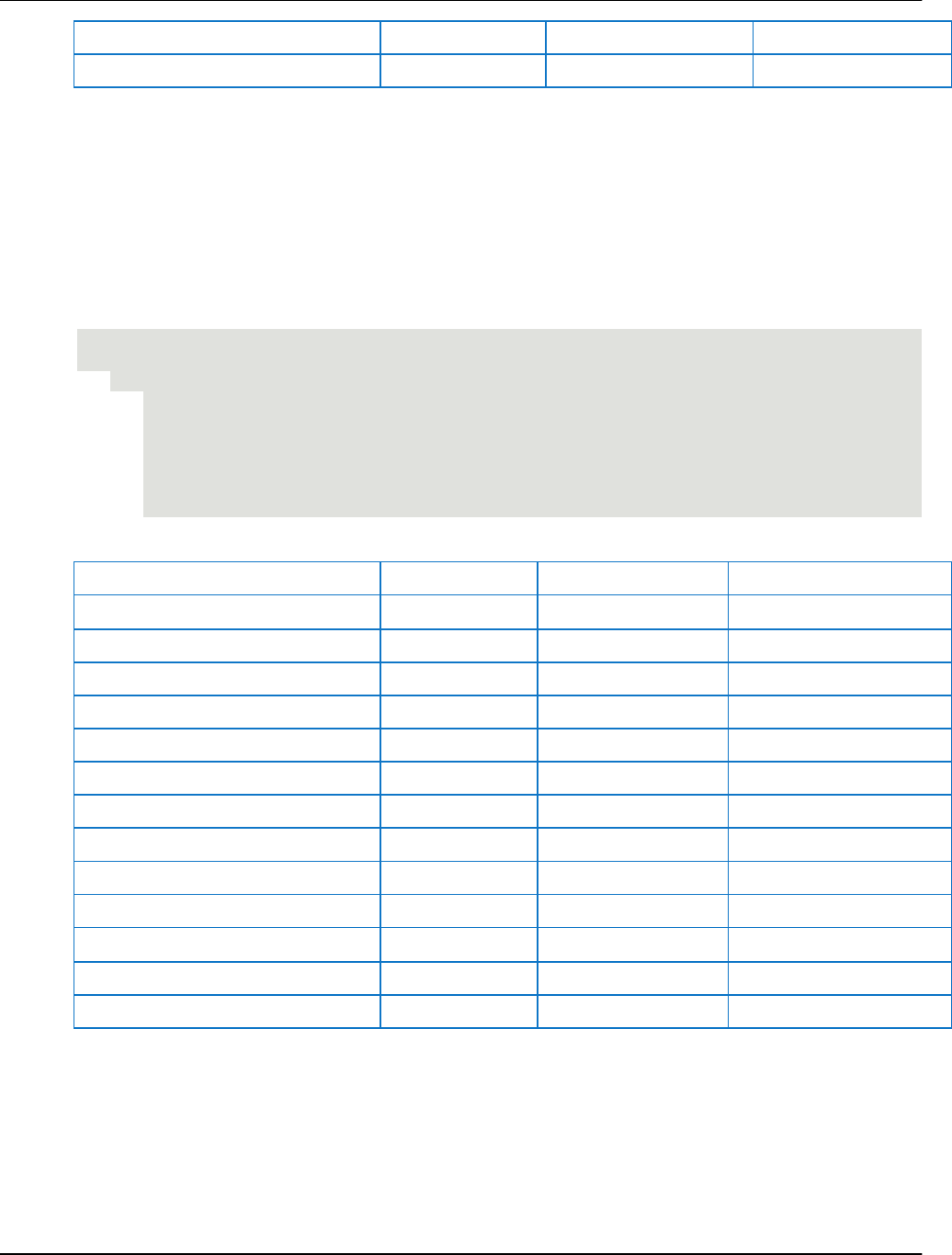
AVEVA™ Historian Retrieval Guide formerly Wonderware Data Retrieval Options
74
DateTime
vValue
StateTime
wwStateCalc
2005-04-14 00:00:00
Off
29020872.0
TOTAL
ValueState Retrieval Query 5
The following query returns the percentage of time in state for a discrete tag for multiple retrieval cycles.
The TimeStampRule system parameter is set to "End" (the default setting), so the returned values are
timestamped at the end of the cycle. Note that the first row returned represents the results for the period
starting at 2003-07-03 22:00:00.000 and ending at 2003-07-04 00:00:00.000.
The "Percent" time-in-state retrieval mode is the only mode in which the StateTime column does not
return time data. Instead, it returns percentage data (in the range of 0 to 100 percent) representing the
percentage of time in state.
SELECT DateTime, vValue, StateTime, wwStateCalc FROM History
WHERE DateTime >= '2003-07-04 00:00:00.000'
AND DateTime <= '2003-07-05 00:00:00.000'
AND TagName IN ('PumpStatus')
AND Value = 1
AND wwRetrievalMode = 'ValueState'
AND wwStateCalc = 'Percent'
AND wwCycleCount = 13
The results are:
DateTime
vValue
StateTime
wwStateCalc
2003-07-04 00:00:00
1
50.885
PERCENT
2003-07-04 02:00:00
1
82.656
PERCENT
2003-07-04 04:00:00
1
7.082
PERCENT
2003-07-04 06:00:00
1
7.157
PERCENT
2003-07-04 08:00:00
1
55.580
PERCENT
2003-07-04 10:00:00
1
28.047
PERCENT
2003-07-04 12:00:00
1
47.562
PERCENT
2003-07-04 14:00:00
1
74.477
PERCENT
2003-07-04 16:00:00
1
40.450
PERCENT
2003-07-04 18:00:00
1
78.313
PERCENT
2003-07-04 20:00:00
1
54.886
PERCENT
2003-07-04 22:00:00
1
39.569
PERCENT
2003-07-05 00:00:00
1
50.072
PERCENT
ValueState Retrieval Query 6: Querying State Summary Values
If state summary values are queried and the cycle boundaries match the summary periods, the
ValueState calculations are supported and return valid results.
If state summary points are queried and the cycle boundaries do not match the summary periods, the
ValueState calculations are supported, but they return DOUBTFUL (QualityDetail = 64) results.

Data Retrieval Options AVEVA™ Historian Retrieval Guide formerly Wonderware
75
State summaries are included in the cycle where the summary end time occurs. This causes results that
do not match queries against the source tag and may cause inaccurate results, such as a total state time
that is greater than the cycle time.
For example, this can occur if SysTimeSec is summarized with a state summary with one minute
resolution, but then queried with 10 second intervals. In most of the retrieval cycles, there will be no
values, but in the cycle that includes the summary end time (one in six of the retrieval cycles), all 60
states would be returned with each state having a state time of 1 second for a total of 60 seconds of state
time in a 10 second retrieval cycle.
ValueState Retrieval - Initial and Final Values
The values returned at the query start time are the result of applying the algorithm to the last cycle
preceding the query range.
ValueState Retrieval - Handling NULL Values
NULLs are considered a state and are reported along with the other states.
RoundTrip Retrieval
RoundTrip retrieval is very similar to ValueState retrieval in that it performs calculations on state
occurrences in the within a cycle period you specify. However, ValueState retrieval uses the time spent in
a certain state for the calculation, and RoundTrip retrieval uses the time between consecutive leading
edges of the same state for its calculations.
You can use the RoundTrip retrieval mode for increasing the efficiency of a process. For example, if a
process produces one item per cycle, then you would want to minimize the time lapse between two
consecutive cycles.
The RoundTrip mode returns a row for each state in any given cycle. RoundTrip retrieval only works with
integer analog tags, discrete tags, and string tags. If real analog tags are specified in the query, then no
rows are returned for these tags. RoundTrip retrieval is not applied to state summary or analog summary
tags. NULL values are treated as any other distinct value and are used to analyze the round trip for
disturbances.
RoundTrip retrieval is supported for the History and StateWideHistory tables.
Any point on the boundary of the end cycle will be considered to the next cycle. The point on the
boundary of the end query range is not counted in the calculation except that it is used to indicate that the
previous state is a contained state.
If no roundtrip state is found within the cycle for a supported tag, a NULL StateTime value is returned. If
there is no valid point prior to the phantom cycle, a NULL state is returned for the phantom cycle.
RoundTrip Retrieval - How It Works
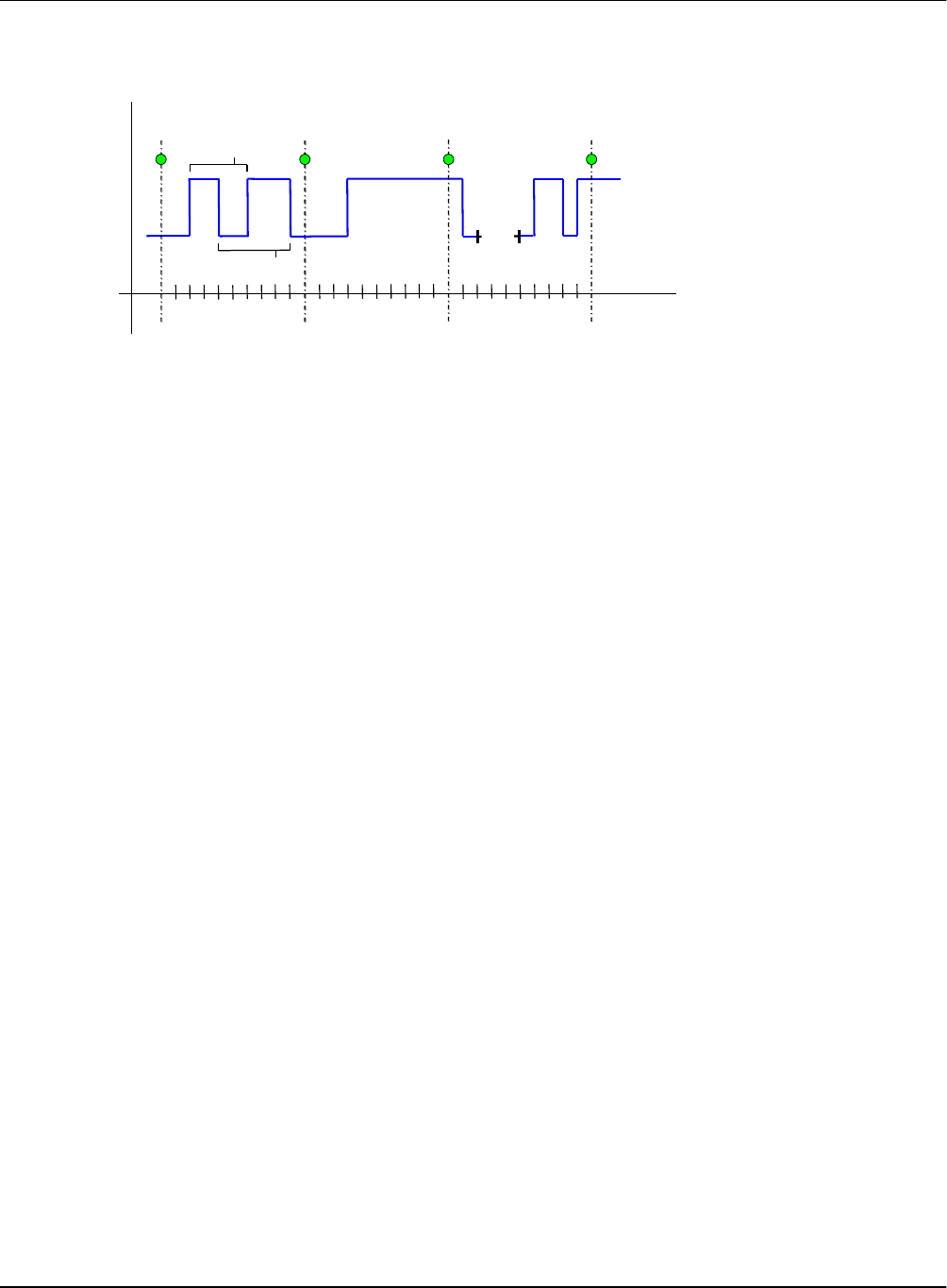
AVEVA™ Historian Retrieval Guide formerly Wonderware Data Retrieval Options
76
The following illustration shows how RoundTrip retrieval returns values for a discrete tag.
T
C1
1
C
1
Time
Value
1 2 3 4 5 6 7 8 9
ON
RoundTrip Retrieval
T
C2
C
2
T
C0
C
0
T
C3
C
3
11 12 13 14 15 16 17 18 19
21 22 23 24 25 26 27 28 29
OFF
P
C0
P
C1
P
C2
P
C3
Gap
Round-trip
Round-trip
This example has a start time of T
C0
and an end time of T
C3
. The resolution has been set in such a way
that the historian returns data for three complete cycles starting at T
C0
, T
C1
, and T
C2
, and an incomplete
cycle starting at T
C3
. Time is measured seconds.
A gap in the data occurs in the third cycle due to an I/O Server disconnect.
The state calculation is based on each cycle, and the values returned at the query start time are not
regular initial values, but are the resulting values that occur after applying the algorithm to the last cycle
preceding the query range. The returned points are P
C0
, P
C1
, P
C2
and P
C3
, shown in green at the top to
indicate that there is no simple relationship between the calculated values and any of the actual points.
Assume the query is set so that the total contained time in the two states are returned. The timestamping
is set to use the cycle end time. The RoundTrip retrieval mode returns values for states that are
completely contained within the cycle boundaries. The following is returned:
For T
C0
, the query returns two values (one for the "on" state and one for the "off" state), calculated as
a result of the "phantom" cycle that preceeds the query start time. The value has a timestamp of the
query start time.
For T
C1
, one row is returned for the "on" state, and one row is returned for the "off" state. The
round-trip for the "on" state occurred one time for four seconds completely within the cycle boundary.
The round-trip for the "off" state occurred one time during the cycle for five seconds.
For T
C2
, a round-trip did not occur for either state within the cycle boundaries. One NULL row is
returned for this cycle.
For T
C3
, one row is returned for the "on" state, and one row is returned for the "off" state. The state
was "on" for a single contained time of two seconds between the cycle boundaries. The state was
"off" one time during the cycle for one second completely within the cycle boundary. An additional
row is returned for the NULL state occurring as a result of the I/O Server disconnect.
For T
C3
, one row is returned for the "on" state, and one row is returned for the "off" state. The state
was "on" for a single contained time of three seconds between the cycle boundaries. One row is
returned for the "off" state for a total contained time of seven seconds. (The first round-trip for the
"off" state includes the I/O Server disconnect for a length of four seconds. The second round-trip has
a length of three seconds.) An additional row is returned for the NULL state occurring as a result of
the I/O Server disconnect, and the returned value is NULL because there is no round-trip during the
cycle for it. The I/O Server disconnect that "disrupted" the off state is treated as its own state, thereby
changing what would have been a single "off" state instance of five seconds into two instances of the
"off" state for one second each.
RoundTrip Retrieval - Supported Value Parameters
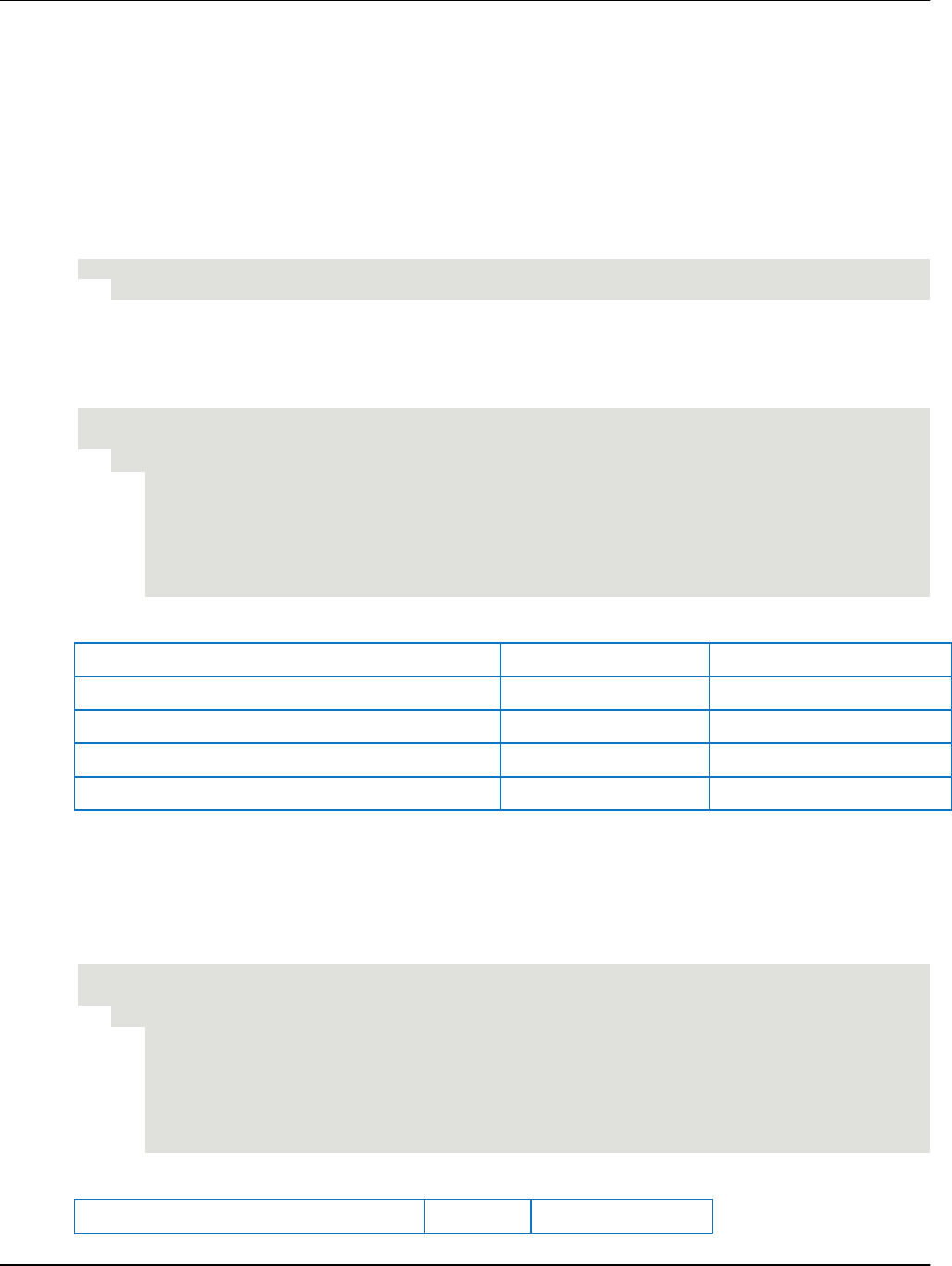
Data Retrieval Options AVEVA™ Historian Retrieval Guide formerly Wonderware
77
You can use various parameters to adjust the values that must be returned in the Ro undTrip retrieval
mode. For more information, see the following sections:
TimeStamp Rule (wwTimeStampRule) on page 107
Quality Rule (wwQualityRule) on page 111
State Calculation (wwStateCalc) on page 119
RoundTrip Retrieval - Query Examples
To use the RoundTrip retrieval mode, set the following parameter in your query:
wwRetrievalMode = ‘RoundTrip’
The following queries compare the results between ValueState retrieval and RoundTrip retrieval.
This first ValueState retrieval query returns the average amount of time that the 'Reactor1OutletValve'
tag is in "on" state and the average amount of time it is in the "off" state for a single cycle. Any state
changes that occur across the cycle boundaries are not included.
SELECT DateTime, vValue, StateTime
FROM History
WHERE TagName IN ('Reactor1OutletValve')
AND DateTime >= '2009-09-16 12:35:00'
AND DateTime <= '2009-09-16 12:55:00'
AND wwRetrievalMode = 'ValueState'
AND wwStateCalc = 'AvgContained'
AND wwCycleCount = 1
The results are:
DateTime
vValue
StateTime
2009-09-16 12:35:00.0000000
0
215878
2009-09-16 12:35:00.0000000
1
61729
2009-09-16 12:55:00.0000000
1
62827.5
2009-09-16 12:55:00.0000000
0
212856
The first two rows are for the "phantom" cycle leading up to the query start time and have a timestamp of
the query start time.
The second two rows show the average amount of time for each state and have a timestamp of the query
end time (the default).
Compare these results to same basic query that instead uses RoundTrip retrieval:
SELECT DateTime, vValue, StateTime
FROM History
WHERE TagName IN ('Reactor1OutletValve')
AND DateTime >= '2009-09-16 12:35:00'
AND DateTime <= '2009-09-16 12:55:00'
AND wwRetrievalMode = 'RoundTrip'
AND wwStateCalc = 'AvgContained'
AND wwCycleCount = 1
The results are:
DateTime
vValue
StateTime
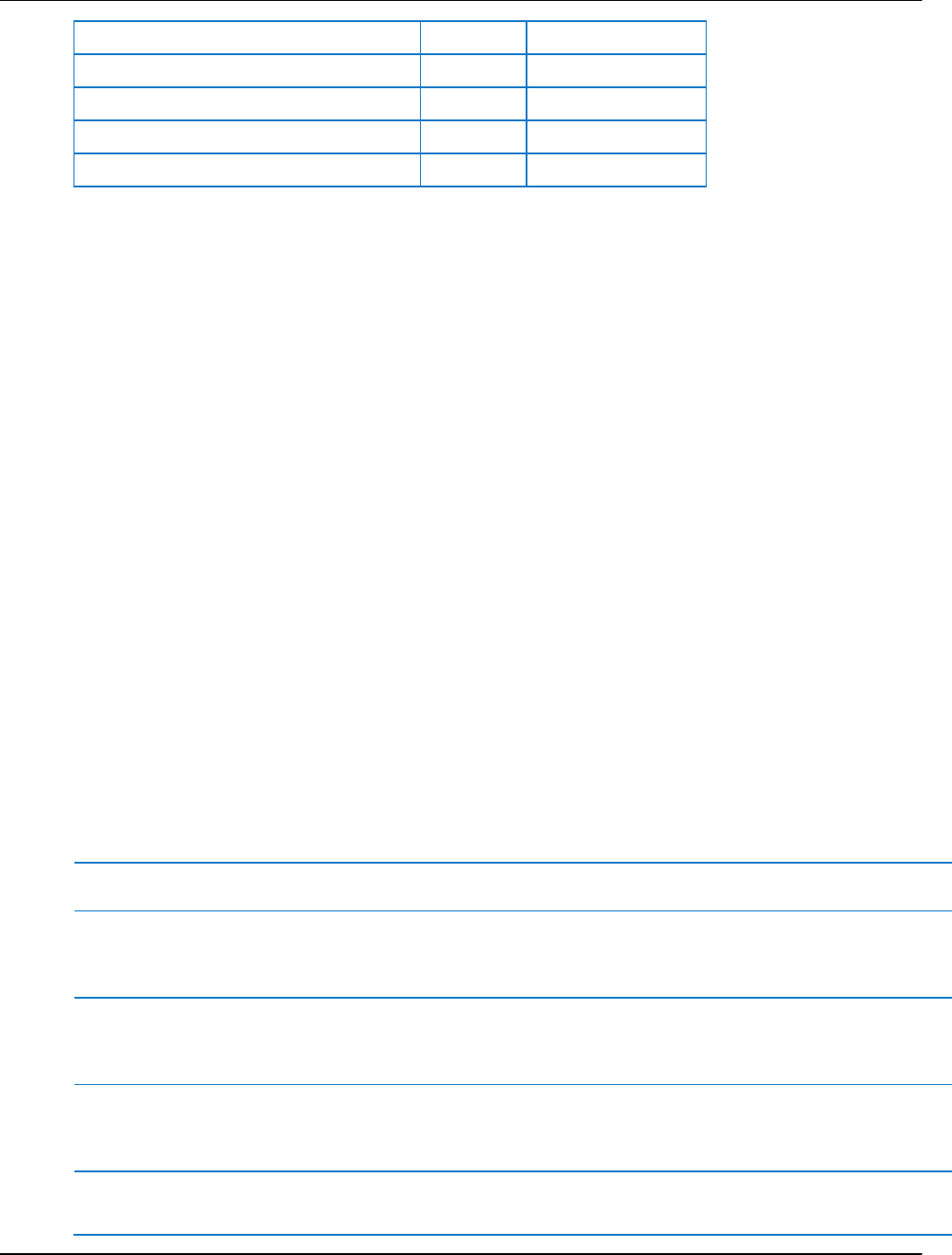
AVEVA™ Historian Retrieval Guide formerly Wonderware Data Retrieval Options
78
DateTime
vValue
StateTime
2009-09-16 12:35:00.0000000
1
277607
2009-09-16 12:35:00.0000000
0
278580
2009-09-16 12:55:00.0000000
0
275683.5
2009-09-16 12:55:00.0000000
1
273845
RoundTrip Retrieval - Initial and Final Values
The values returned at the query start time are the result of applying the algorithm to the last cycle
preceding the query range.
RoundTrip Retrieval - Handling NULL Values
Like in the ValueState retrieval mode, the NULL state is treated as a valid distinct value. This allows you
to analyze round trips for disturbances.
Edge Detection for Events (wwEdgeDetection)
For AVEVA Historian, an event is the moment at which a detection criterion is met on historical tag values
in the AVEVA Historian. At a basic level, anything that can be determined by looking at stored data can
be used as an event.
When detecting events, it is useful to pinpoint rows in a result set where the satisfaction of criteria in a
WHERE clause changed from true to false, or vice versa. For example, you may want to know when the
level of a tank went above 5 feet. The WHERE clause in a query for this example might be TANKLEVEL
> 5. As the tank level approaches 5 feet, the criterion does not return true. Only when the level crosses
the line from not satisfying the criterion to satisfying it, does the event actually occur. This imaginary "line"
where the change occurs is called the edge.
Over a period of time, there may be many instances where the criteria cross the "edge" from being
satisfied to not satisfied, and vice-versa. The values on either side of this "edge" can be detected if you
configure your event tag to include this information. There are four possible options for edge detection:
none, leading, trailing, or both. You will get differing results based on which option you use:
Option
Results
None
Returns all rows that successfully meet the criteria; no edge detection is implemented
at the specified resolution.
Leading
Returns only rows that are the first to successfully meet the criteria (return true) after a
row did not successfully meet the criteria (returned false).
Trailing
Returns only rows that are the first to fail the criteria (return false) after a row
successfully met the criteria (returned true).
Both
All rows satisfying both the leading and trailing conditions are returned.
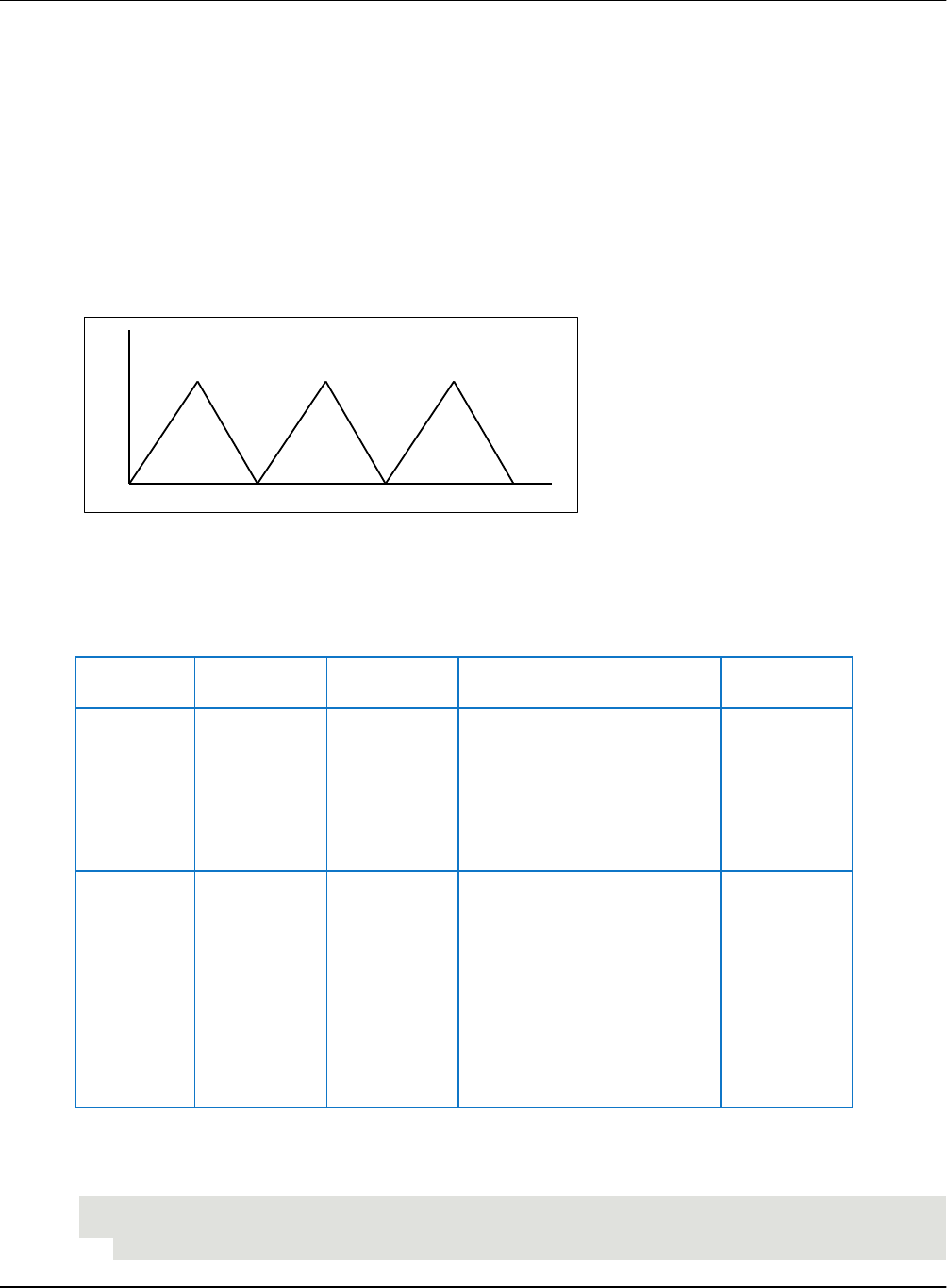
Data Retrieval Options AVEVA™ Historian Retrieval Guide formerly Wonderware
79
Edge detection only applies to analog and discrete value detectors. Also, edge detection is handled
slightly differently based on whether you are using analog tags or discrete tags.
You can also use the ToDiscrete() query filter to determine when data values cross a particular threshold.
For more information, see Converting Analog Values to Discrete Values (ToDiscrete) on page 122.
For more information on event detection with the Classic Event subsystem, see Classic Event
Subsystem in the AVEVA Historian Supplemental Guide.
Edge Detection for Analog Tags
For example, the behavior of the WHERE clause as it processes a result set can be illustrated as:
A
B
C
D
E
F
G
V
A
L
U
E
TIME
Slopes A-B, C-D and E-F are rising edges, while slopes B-C, D-E and F-G are falling edges. The slopes
are affected by the WHERE clause, which is a combination of the wwEdgeDetection option and the
comparison operator used against the value.
The following table describes the rows that would be returned for the various edge detection settings:
Operator
=
<
>
<=
>=
Leading
Falling and
rising edges;
first value that
meets the
criteria.
Falling edge
only; first
value to meet
the criteria.*
Rising edge
only; first
value to meet
the criteria.
Falling edge
only; first
value to meet
the criteria. *
Rising edge
only; first
value to meet
the criteria.
Trailing
Falling and
rising edges;
first value to
fail the criteria
after a value
meets the
criteria.
Rising edge
only; equal to
the first value
to fail the
criteria.
Falling edge
only; first
value to fail
the criteria.*
Rising edge
only; first
value to fail
the criteria.
Falling edge
only; first
value to fail
the criteria.*
* If the falling edge is a vertical edge with no slope, the query will return the lowest value of that edge.
The following query selects all values of "SysTimeSec" that are greater than or equal to 50 from the
History table between 10:00 and 10:02 a.m. on December 2, 2001. No edge detection is specified.
SELECT DateTime, Value
FROM History

AVEVA™ Historian Retrieval Guide formerly Wonderware Data Retrieval Options
80
WHERE TagName = 'SysTimeSec'
AND DateTime >= '2001-12-02 10:00:00'
AND DateTime <= '2001-12-02 10:02:00'
AND wwRetrievalMode = 'Cyclic'
AND wwResolution = 2000
AND Value >= 50
AND wwEdgeDetection = 'None'
The results are:
DateTime
Value
2001-12-02 10:00:50.000
50
2001-12-02 10:00:52.000
52
2001-12-02 10:00:54.000
54
2001-12-02 10:00:56.000
56
2001-12-02 10:00:58.000
58
2001-12-02 10:01:50.000
50
2001-12-02 10:01:52.000
52
2001-12-02 10:01:54.000
54
2001-12-02 10:01:56.000
56
2001-12-02 10:01:58.000
58
Leading Edge Detection for Analog Tags
If Leading is specified as the parameter in the edge detection time domain extension, the only rows in the
result set are those that are the first to successfully meet the WHERE clause criteria (returned true) after
a row did not successfully meet the WHERE clause criteria (returned false).
The following query selects the first values of "SysTimeSec" from the History table to meet the Value
criterion between 10:00 and 10:02 a.m. on December 2, 2001.
SELECT DateTime, Value
FROM History
WHERE TagName = 'SysTimeSec'
AND DateTime >= '2001-12-02 10:00:00'
AND DateTime <= '2001-12-02 10:02:00'
AND wwRetrievalMode = 'Cyclic'
AND wwResolution = 2000
AND Value >= 50
AND wwEdgeDetection = 'Leading'
The query will return only the two values that were greater than or equal to 50 for the time period
specified:
DateTime
Value
2001-12-02 10:00:50.000
50
2001-12-02 10:01:50.000
50

Data Retrieval Options AVEVA™ Historian Retrieval Guide formerly Wonderware
81
Compare these results with the same query using no edge detection, as shown in Edge Detection for
Analog Tags on page 79. Notice that even though the original query returned ten rows, the edge
detection only returns the first row recorded after the event criteria returned true.
Trailing Edge Detection for Analog Tags
If Trailing is specified as the parameter in the edge detection extension, the only rows in the result set are
those that are the first to fail the criteria in the WHERE clause (returned false) after a row successfully
met the WHERE clause criteria (returned true).
The following query selects the first values of "SysTimeSec" from the History table to fail the Value
criterion between 10:00 and 10:02 a.m. on December 2, 2001.
SELECT DateTime, Value
FROM History
WHERE TagName = 'SysTimeSec'
AND DateTime >= '2001-12-02 10:00:00'
AND DateTime <= '2001-12-02 10:02:00'
AND wwRetrievalMode = 'Cyclic'
AND wwResolution = 2000
AND Value >= 50
AND wwEdgeDetection = 'Trailing'
The query returns only the two values that were the first to fail the criteria in the WHERE clause for the
time period specified:
DateTime
Value
2001-12-02 10:01:00.000
0
2001-12-02 10:02:00.000
0
Compare these results with the same query using no edge detection, as shown in Edge Detection for
Analog Tags on page 79. Notice that even though the original query returned ten recorded rows for each
value, the edge detection only returns the first row recorded after the event criteria returned false.
Both Leading and Trailing Edge Detection for Analog Tags
If Both is specified as the parameter in the edge detection extension, all rows satisfying both the leading
and trailing conditions are returned.
The following query selects values of "SysTimeSec" from the History table that meet both the Leading
and Trailing criteria between 10:00 and 10:02 a.m. on December 2, 2001.
SELECT DateTime, Value
FROM History
WHERE TagName = 'SysTimeSec'
AND DateTime >= '2001-12-02 10:00:00'
AND DateTime <= '2001-12-02 10:02:00'
AND wwRetrievalMode = 'Cyclic'
AND wwResolution = 2000
AND Value >= 50
AND wwEdgeDetection = 'Both'
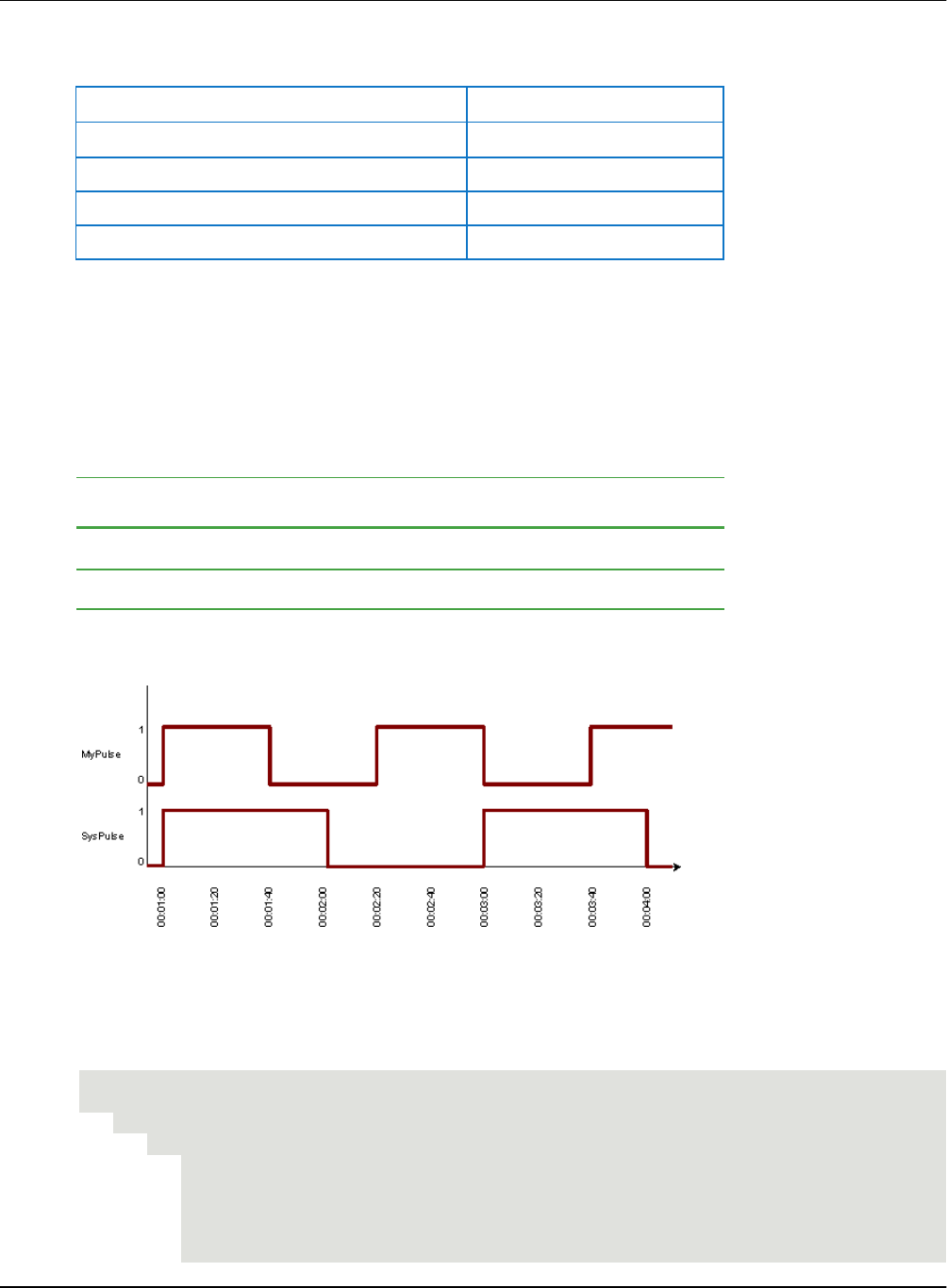
AVEVA™ Historian Retrieval Guide formerly Wonderware Data Retrieval Options
82
The results are:
DateTime
Value
2001-12-02 10:00:50.000
50
2001-12-02 10:01:00.000
0
2001-12-02 10:01:50.000
50
2001-12-02 10:02:00.000
0
Compare these results with the same query using no edge detection, as shown in Edge Detection for
Analog Tags on page 79. Notice that value of the first row in the original query is returned in the result set.
Edge Detection for Discrete Tags
Edge detection for discrete tags operates differently than for analog tags. For example, assume the
following discrete tags are stored.
Tag
Description
SysPulse
Transitions between 1 and 0 every minute.
MyPulse
Transitions between 1 and 0 every 40 seconds.
A representation of the data stored in the system is as follows:
The following queries select values of "SysPulse" and "MyPulse" that have a value of 1 (On) from the
History and WideHistory tables between 12:59 and 1:04 a.m. on December 8, 2001. No edge detection is
specified.
This is a query of the History table:
SELECT DateTime, TagName, Value
FROM History
WHERE TagName IN ('SysPulse','MyPulse')
AND DateTime > '2001-12-08 00:59:00'
AND DateTime <= '2001-12-08 01:04:00'
AND wwRetrievalMode = 'Delta'
AND Value = 1
AND wwEdgeDetection = 'None'
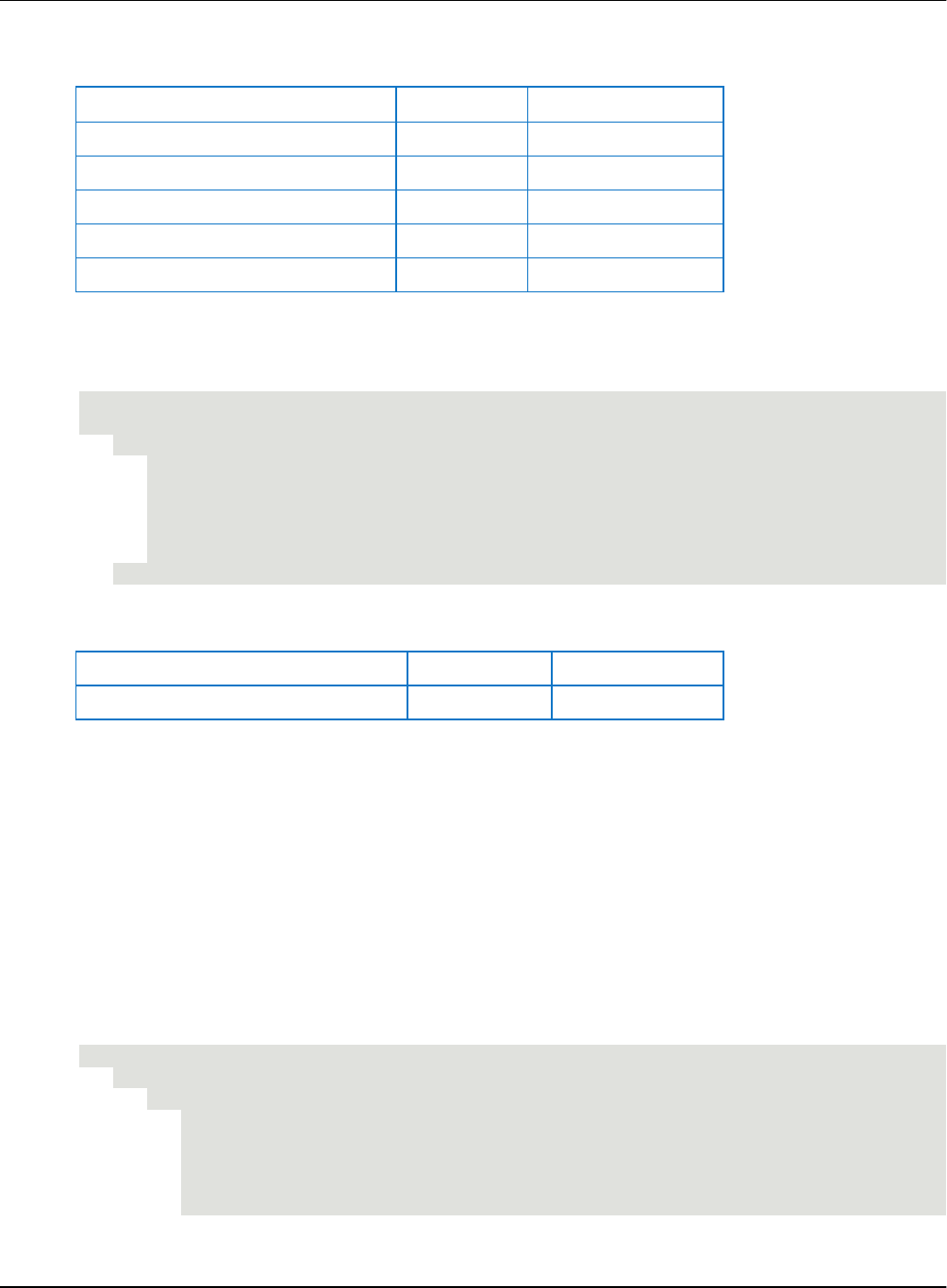
Data Retrieval Options AVEVA™ Historian Retrieval Guide formerly Wonderware
83
The results are:
DateTime
TagName
Value
2001-12-08 00:01:00.000
SysPulse
1
2001-12-08 00:01:00.000
MyPulse
1
2001-12-08 00:02:20.000
MyPulse
1
2001-12-08 00:03:00.000
SysPulse
1
2001-12-08 00:03:40.000
MyPulse
1
The following is a query of the WideHistory table:
SELECT * FROM OpenQuery(INSQL, 'SELECT DateTime, SysPulse, MyPulse FROM
WideHistory
WHERE DateTime > "2001-12-08 00:59:00"
AND DateTime < "2001-12-08 01:05:00"
AND SysPulse = 1
AND MyPulse = 1
AND wwRetrievalMode = "Delta"
AND wwEdgeDetection = "None"
')
The results are:
DateTime
SysPulse
MyPulse
2001-12-08 00:01:00.000
1
1
Leading Edge Detection for Discrete Tags
If Leading is specified as the parameter in the edge detection time domain extension, the only rows in the
result set are those that are the first to successfully meet the WHERE clause criteria (returned true) after
a row did not successfully meet the WHERE clause criteria (returned false).
The following queries select values of "SysPulse" and "MyPulse" that have a value of 1 (On) from the
History and WideHistory tables between 12:59 and 1:04 a.m. on December 8, 2001.
This example queries the History table, if the WHERE clause criteria specify to return only discrete
values equal to 1 (On), then applying a leading edge detection does not change the result set.
SELECT DateTime, TagName, Value
FROM History
WHERE TagName IN ('SysPulse','MyPulse')
AND DateTime > '2001-12-08 00:59:00'
AND DateTime <= '2001-12-08 01:04:00'
AND Value = 1
AND wwEdgeDetection = 'Leading'
The results are:
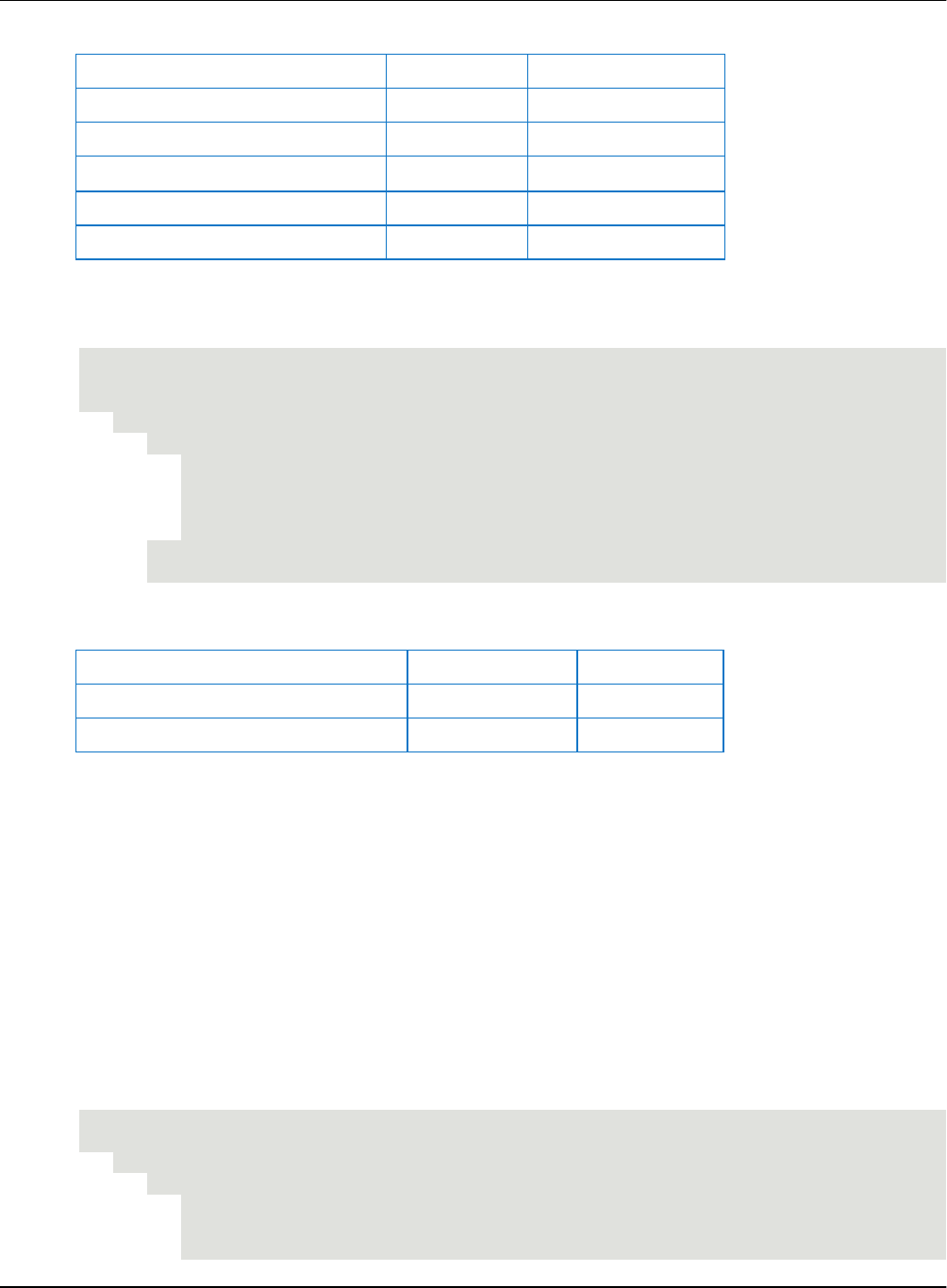
AVEVA™ Historian Retrieval Guide formerly Wonderware Data Retrieval Options
84
DateTime
TagName
Value
2001-12-08 00:01:00.000
SysPulse
1
2001-12-08 00:01:00.000
MyPulse
1
2001-12-08 00:02:20.000
MyPulse
1
2001-12-08 00:03:00.000
SysPulse
1
2001-12-08 00:03:40.000
MyPulse
1
This example queries the WideHistory table, applying a leading edge detection requires that the
condition only evaluate to true if both values are equal to 1 (On).
SELECT DateTime, SysPulse, MyPulse FROM OpenQuery(INSQL, 'SELECT DateTime,
SysPulse, MyPulse
FROM WideHistory
WHERE DateTime > "2001-12-08 00:59:00"
AND DateTime <= "2001-12-08 01:04:00"
AND SysPulse = 1
AND MyPulse = 1
AND wwEdgeDetection = "Leading"
')
The results are:
DateTime
SysPulse
MyPulse
2001-12-08 00:01:00.000
1
1
2001-12-08 00:03:40.000
1
1
Compare these results with the same query using no edge detection, as shown in Edge Detection for
Discrete Tags on page 82. If you look at the diagram, you might think that a row could be returned at
00:03:00, but because both tags change at exactly this instant, their values are not returned. In a normal
process, it is unlikely that two tags would change at exactly at the same instant.
Trailing Edge Detection for Discrete Tags
If Trailing is specified as the parameter in the edge detection extension, the only rows in the result set are
those that are the first to fail the criteria in the WHERE clause (returned false) after a row successfully
met the WHERE clause criteria (returned true).
This example queries the History table. If the WHERE clause criteria specifies returning only discrete
values equal to 1 (On), then applying a trailing edge detection is the same as reversing the WHERE
clause (as if Value = 0 was applied).
SELECT DateTime, TagName, Value
FROM History
WHERE TagName IN ('SysPulse','MyPulse')
AND DateTime > '2001-12-08 00:59:00'
AND DateTime <= '2001-12-08 01:04:00'
AND Value = 1
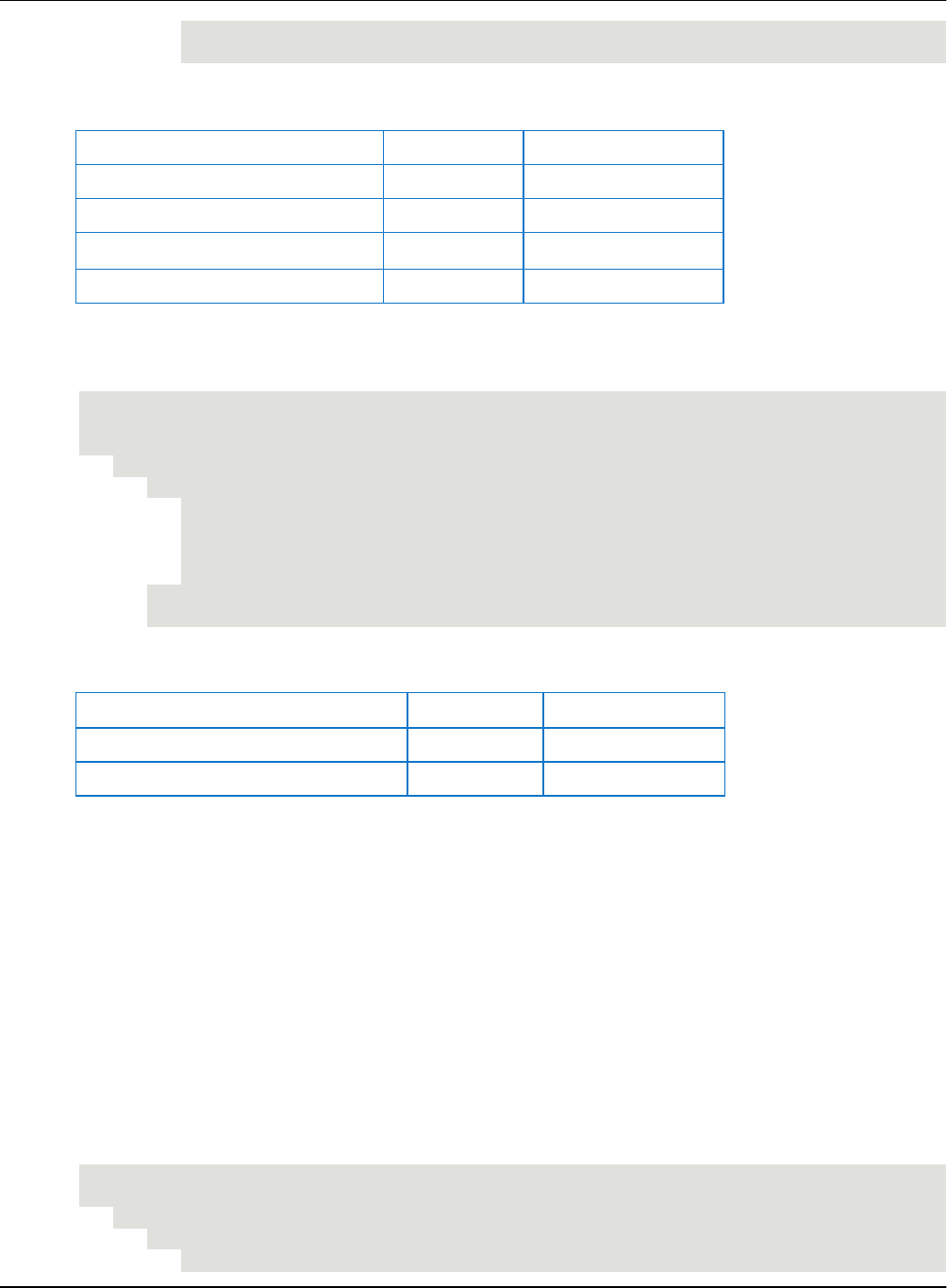
Data Retrieval Options AVEVA™ Historian Retrieval Guide formerly Wonderware
85
AND wwEdgeDetection = 'Trailing'
The results are:
DateTime
TagName
Value
2001-12-08 00:01:40.000
MyPulse
1
2001-12-08 00:02:00.000
SysPulse
1
2001-12-08 00:03:00.000
MyPulse
1
2001-12-08 00:04:00.000
SysPulse
1
This example queries the WideHistory table. It applies a trailing edge detection returns the boundaries
where the condition ceases to be true (one of the values is equal to 0).
SELECT DateTime, SysPulse, MyPulse FROM OpenQuery(INSQL, 'SELECT DateTime,
SysPulse, MyPulse
FROM WideHistory
WHERE DateTime > "2001-12-08 00:59:00"
AND DateTime <= "2001-12-08 01:04:00"
AND SysPulse = 1
AND MyPulse = 1
AND wwEdgeDetection = "Trailing"
')
The results are:
DateTime
SysPulse
MyPulse
2001-12-08 00:01:40.000
1
1
2001-12-08 00:04:00.000
1
1
Compare these results with the same query using no edge detection, as shown in Edge Detection for
Discrete Tags on page 82. If you look at the diagram, you might think that a row could be returned at
00:03:00, but because both tags change at exactly this instant, their values are not returned. In a normal
process, it is unlikely that two tags would change at exactly at the same instant.
Both Leading and Trailing Edge Detection for Discrete Tags
If Both is specified as the parameter in the edge detection extension, all rows satisfying both the leading
and trailing conditions are returned.
The following queries select values of "SysPulse" and "MyPulse" that meet an edge detection of Both for
a value criterion of 1 (On) from the History and WideHistory tables between 12:59 and 1:04 a.m. on
December 8, 2001.
SELECT DateTime, TagName, Value
FROM History
WHERE TagName IN ('SysPulse','MyPulse')
AND DateTime > '2001-12-08 00:59:00'
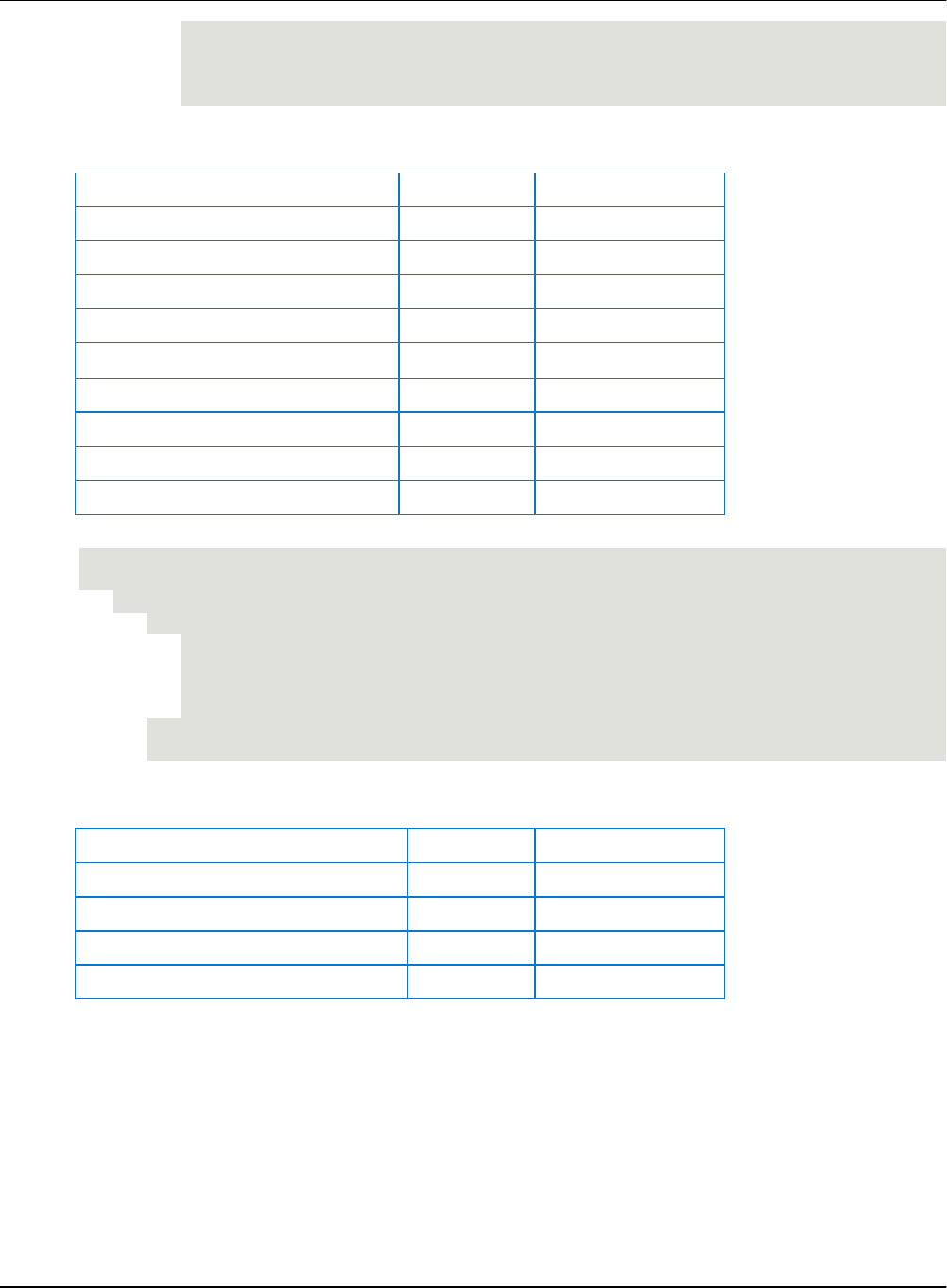
AVEVA™ Historian Retrieval Guide formerly Wonderware Data Retrieval Options
86
AND DateTime <= '2001-12-08 01:04:00'
AND Value = 1
AND wwEdgeDetection = 'Both'
The results are:
DateTime
TagName
Value
2001-12-08 00:01:00.000
SysPulse
1
2001-12-08 00:01:00.000
MyPulse
1
2001-12-08 00:01:40.000
MyPulse
1
2001-12-08 00:02:00.000
SysPulse
1
2001-12-08 00:02:20.000
MyPulse
1
2001-12-08 00:03:00.000
SysPulse
1
2001-12-08 00:03:00.000
MyPulse
1
2001-12-08 00:03:40.000
MyPulse
1
2001-12-08 00:04:00.000
SysPulse
1
SELECT DateTime, SysPulse, MyPulse FROM OpenQuery(INSQL, 'SELECT DateTime,
SysPulse, MyPulse
FROM WideHistory
WHERE DateTime > "2001-12-08 00:59:00"
AND DateTime <= "2001-12-08 01:04:00"
AND SysPulse = 1
AND MyPulse = 1
AND wwEdgeDetection = "Both"
')
The results are:
DateTime
SysPulse
MyPulse
2001-12-08 00:01:00.000
1
1
2001-12-08 00:01:40.000
1
1
2001-12-08 00:03:40.000
1
1
2001-12-08 00:04:00.000
1
1
Compare these results with the same query using no edge detection, as shown in the Edge Detection for
Discrete Tags on page 82.
Predictive Filter
AVEVA Historian supports predictive retrieval. Beginning with AVEVA Historian 2014 R2 Patch 01, the
historian can return predictive data based on a "simple linear regression" (SLR) algorithm. More
capabilities will be added in future releases.
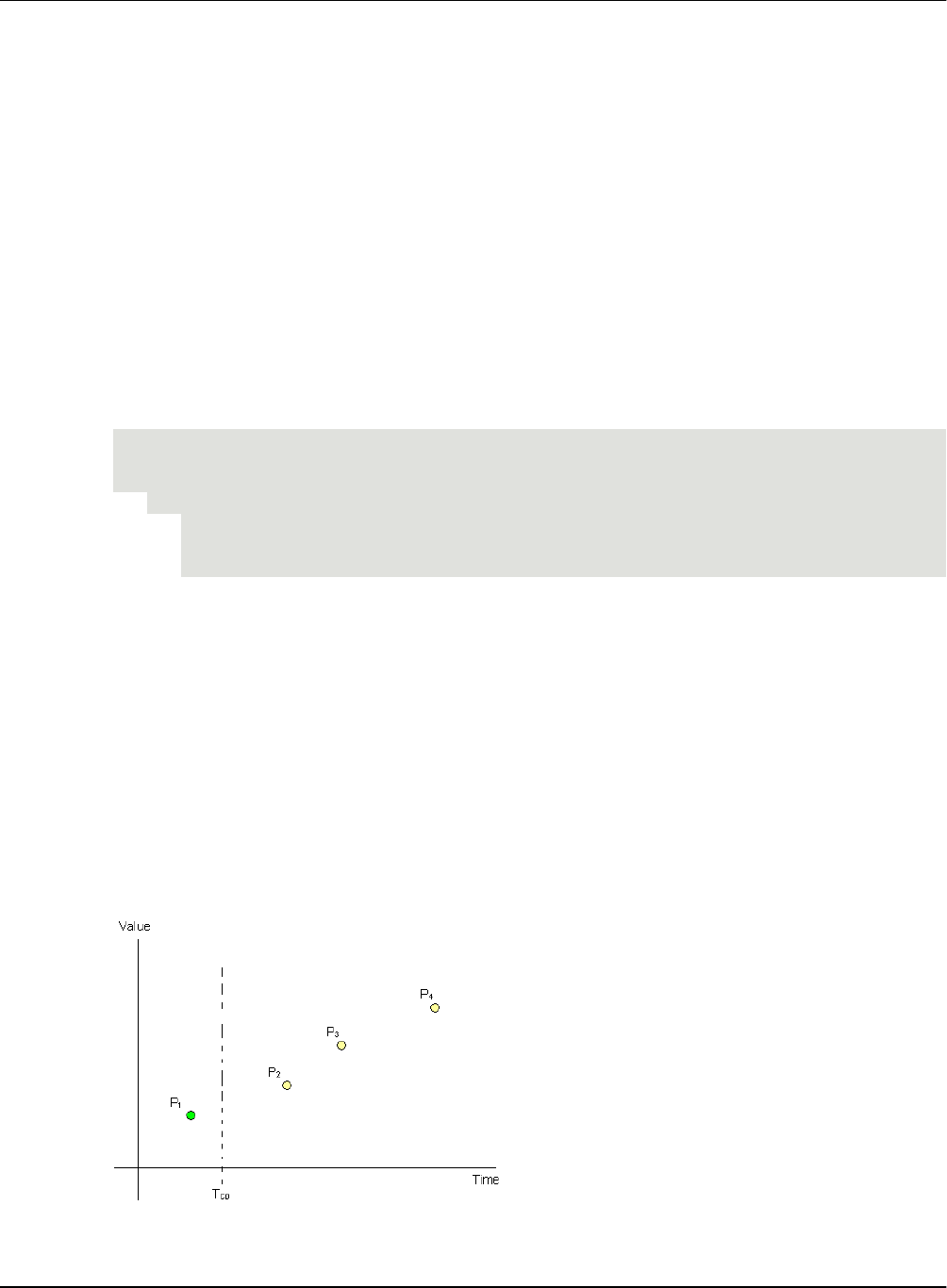
Data Retrieval Options AVEVA™ Historian Retrieval Guide formerly Wonderware
87
With AVEVA Historian, you can create a query based on data you have stored to predict additional
values in a trend. Historian returns predictive data based on a "simple linear regression" (SLR) algorithm.
For example, based on your currently stored values, you could use the predictive retrieval feature to help
predict if a certain production target will be met by the end of the shift. Or, if the Historian loses
communication with the data source, you could use predictive retrieval to determine whether and when a
tank is likely to become empty.
You can predict:
Values in between other values.
Values that extend beyond stored values.
For example, suppose you already captured data for a tag with timestamps up to 3 p.m. on a certain day,
but not for the rest of the shift, which ran until 5 p.m., because of a power cut. With predictive retrieval,
you can view the interpolated results based between 3 p.m. and 5 p.m. These results are based on the
data you received through 3 p.m.
The following is an example of a query that retrieves stored values and reports both those values and
additional predictive data:
SELECT DateTime, Value, wwFilter
FROM History
WHERE TagName = 'Tag1'
AND DateTime >= '2014-01-01 0:00:00.000'
and DateTime < '2014-01-01 1:00:00.000'
and wwFilter = 'SLR()'
In this example, "SLR" stands for "simple linear regression," the algorithm used by AVEVA Historian to
analyze currently stored values and predict other values within the detected trend.
Bounding Value Retrieval
The bounding value retrieval mode returns either the start bound point or the end bound point for a
requested point in time. For a start bound point, Historian retrieves the first value on or before the
requested date/time. For an end bound point, Historian retrieves the first value after the requested
date/time.
If no time is specified, Historian returns the bounding point at the current time.
Bounding Value Retrieval - How It Works
The following illustration shows how bounding value retrieval returns a start bou nd point:
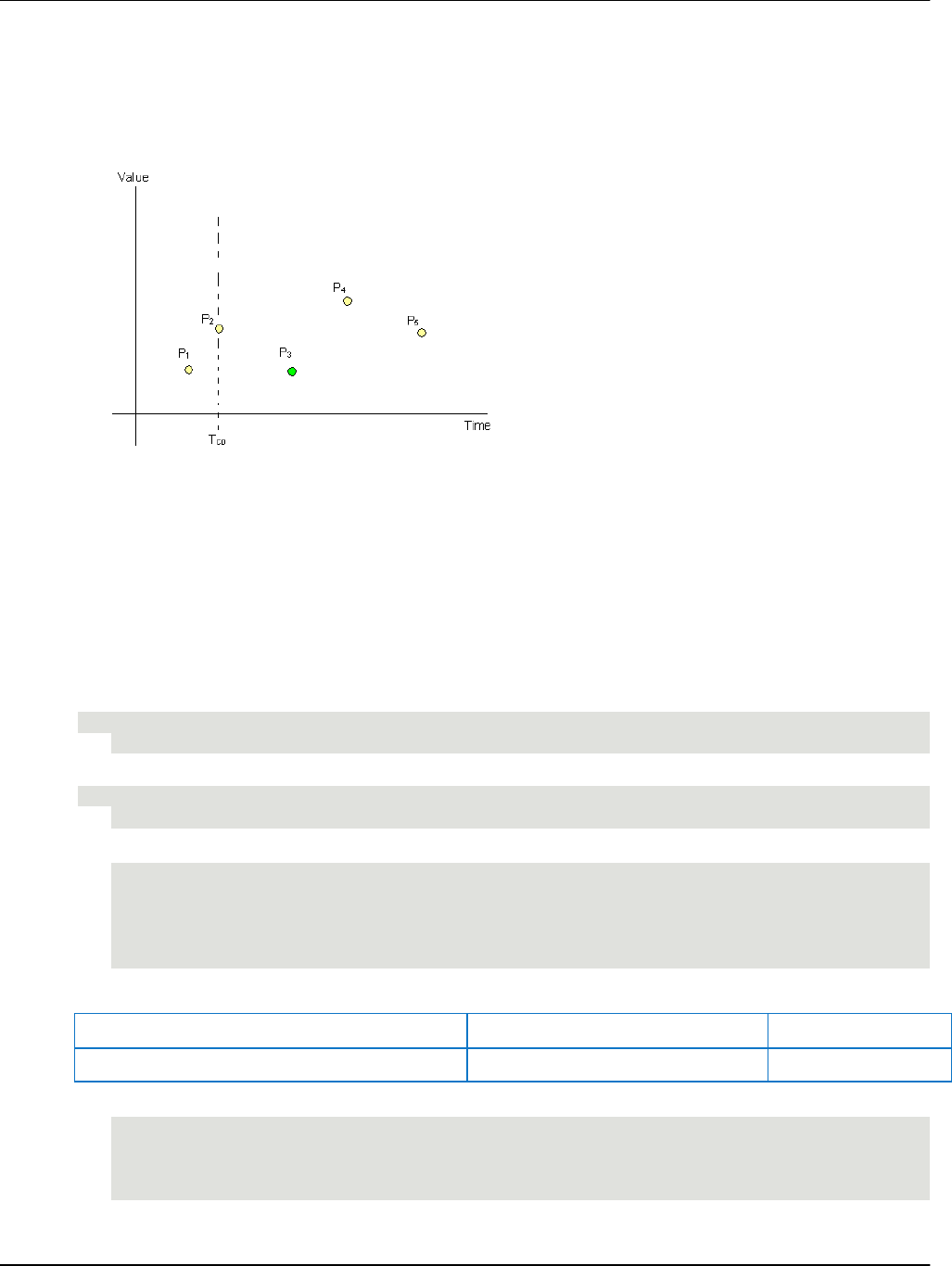
AVEVA™ Historian Retrieval Guide formerly Wonderware Data Retrieval Options
88
In this case, Historian retrieves the first point on or before the datetime requested in the query. The line
(T
C0
) is the timestamp for which the start bound point is requested. P
1
is returned because that is the start
or first point for the query date time.
Historian can also use bounding value retrieval to return an end bound point, as in the following
illustration:
In this case, Historian returns first point after the datetime requested in the query. T
C0
is the timestamp for
which the end bound point is requested and P
3
is returned as the ending bound point because this is the
first point after the query date time.
Bounding Value Retrieval - Query Examples
You can use the Bounding Value retrieval mode to return a start bound point or an end bound point for a
specified date and time. If no time is specified, Historian returns the bounding point at the current time.
To return a start bound point, set the following parameter in your query.
wwRetrievalMode = 'StartBound'
To return an end bound point, set the following parameter in your query.
wwRetrievalMode = 'EndBound'
Example 1 - Retrieve start bound point
select DateTime,TagName,Value
where TagName 'Plant2.R31.BatchNum'
and wwRetrievalMode = 'StartBound'
and DateTime >= '2019-04-24 12:00:00'
The results are:
DateTime
TagName
Value
2019-04-24 11:53:08.5430000
Plant2.R31.BatchNum
912
Example 2 - Retrieve end bound point
select DateTime,TagName,Value
where TagName in 'Plant2.R31.BatchNum'
and wwRetrievalMode = 'EndBound'
and DateTime >= '2019-04-24 12:00:00'
The results are:
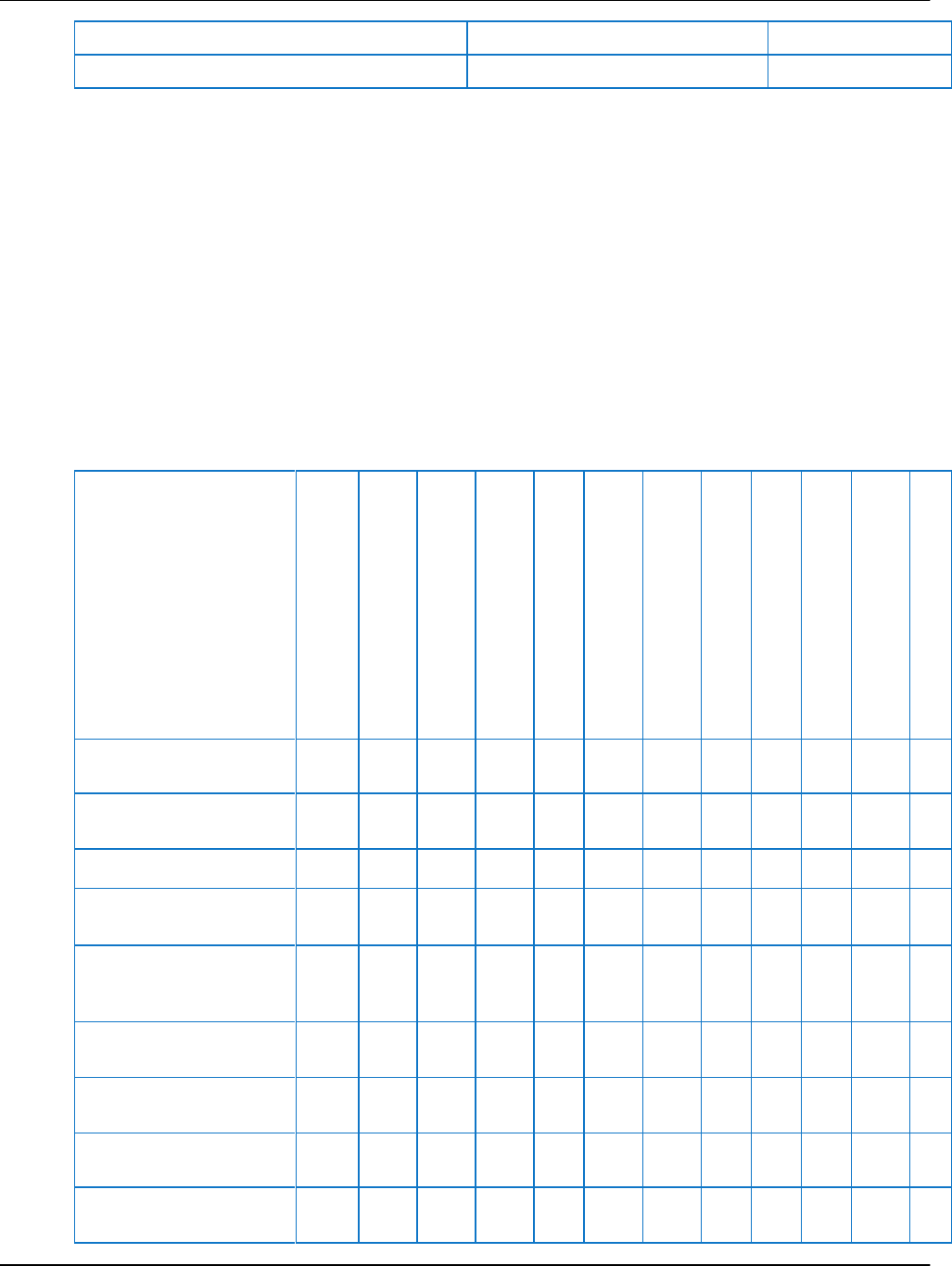
Data Retrieval Options AVEVA™ Historian Retrieval Guide formerly Wonderware
89
DateTime
TagName
Value
2019-04-24 14:11:13.3840000
Plant2.R31.BatchNum
926
Understanding Retrieval Options
In all retrieval modes, you can adjust which values the historian returns by specifying retrieval options.
The retrieval options are implemented as special parameters that you set as part of the retrieval query.
This section explains each of these options. For an overview of which options apply to which retrieval
modes, see Which Options Apply to Which Retrieval Modes? on page 89.
Which Options Apply to Which Retrieval Modes?
The following table shows which retrieval options apply to which modes. If you specify an option in a
mode where it isn’t applicable, the option is ignored.
Cycle Count (X Values over Equal Time
Intervals) (wwCycleCount) on page 91
Resolution (Values Spaced Every X ms)
(wwResolution) on page 93
Time Deadband (wwTimeDeadband) on
page 97
Value Deadband (wwValueDeadband)
on page 101
History Version (wwVersion) on page
104
Interpolation Type
(wwInterpolationType) on page 105
TimeStamp Rule (wwTimeStampRule)
on page 107
Quality Rule (wwQualityRule) on page
111
State Calculation (wwStateCalc) on page
119
Analog Value Filtering (wwFilter) on
page 120
Selecting Values for Analog Summary
Tags (wwValueSelector) on page 125
Predictive Retrieval (wwFilter) (see
"Predictive Filter" on page 86)**
Cyclic Retrieval on page
27
Y
Y
Y
Y*
Y
Y
Y
Delta Retrieval on page
30
Y
Y
Y
Y
Y
Y
Y
Full Retrieval on page 35
Y
Y
Y
Y
Y
Interpolated Retrieval on
page 37
Y
Y
Y
Y
Y
Y
Y
Y
Best Fit Retrieval (see
"Best Fit Retrieval" on
page 41)
Y
Y
Y
Y
Y
Y
Y
Y
Average Retrieval on
page 46
Y
Y
Y
Y
Y
Y
Y
Y
Minimum Retrieval on
page 50
Y
Y
Y
Y
Y
Y
Maximum Retrieval on
page 55
Y
Y
Y
Y
Y
Y
Integral Retrieval on page
59
Y
Y
Y
Y
Y
Y
Y
Y
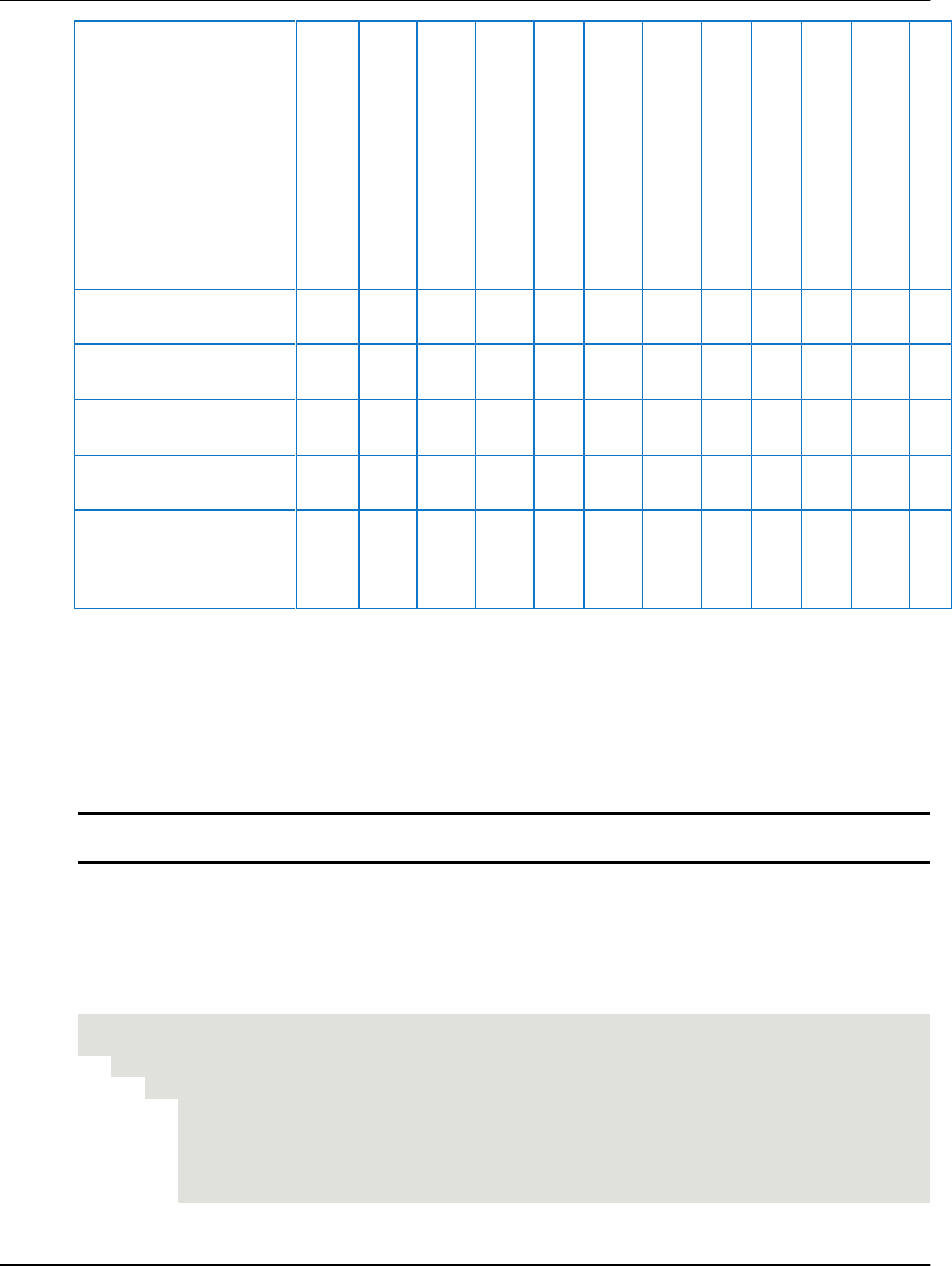
AVEVA™ Historian Retrieval Guide formerly Wonderware Data Retrieval Options
90
Cycle Count (X Values over Equal Time
Intervals) (wwCycleCount) on page 91
Resolution (Values Spaced Every X ms)
(wwResolution) on page 93
Time Deadband (wwTimeDeadband) on
page 97
Value Deadband (wwValueDeadband)
on page 101
History Version (wwVersion) on page
104
Interpolation Type
(wwInterpolationType) on page 105
TimeStamp Rule (wwTimeStampRule)
on page 107
Quality Rule (wwQualityRule) on page
111
State Calculation (wwStateCalc) on page
119
Analog Value Filtering (wwFilter) on
page 120
Selecting Values for Analog Summary
Tags (wwValueSelector) on page 125
Predictive Retrieval (wwFilter) (see
"Predictive Filter" on page 86)**
Slope Retrieval on page
62
Y
Y
Y
Y
Counter Retrieval on
page 65
Y
Y
Y
Y
Y
Y
ValueState Retrieval on
page 70
Y
Y
Y
Y
Y
Y
Y
RoundTrip Retrieval on
page 75
Y
Y
Y
Y
Y
Y
Y
Bounding Values
Retrieval (see "Bounding
Value Retrieval" on page
87)
* - only on AVEVA Historian 9.0 and later
** - only AVEVA Historian 2014 R2 P01 and later
Using Retrieval Options in a Transact-SQL Statement
You can retrieve data in the AVEVA Historian extension tables using normal Transact-SQL code, as well
as the specialized SQL time domain extensions provided by the AVEVA Historian. The AVEVA Historian
extensions provide an easy way to query time-based data from the history tables. They also provide
additional functionality not supported by Transact-SQL.
Note: The wwParameters extension is reserved for future use. The wwRowCount parameter is still
supported, but is deprecated in favor of wwCycleCount.
The extensions are implemented as "virtual" columns in the extension tables. When you query an
extension table, you can specify values for these column parameters to manipulate the data that will be
returned. You will need to specify any real-time extension parameters each time that you execute the
query.
For example, you could specify a value for the wwResolution column in the query so that a resolution is
applied to the returned data set:
SELECT DateTime, Value
FROM History
WHERE TagName = 'SysTimeSec'
AND DateTime >= '2001-12-02 10:00:00'
AND DateTime <= '2001-12-02 10:02:00'
AND Value >= 50
AND wwResolution = 10
AND wwRetrievalMode = 'cyclic'

Data Retrieval Options AVEVA™ Historian Retrieval Guide formerly Wonderware
91
Because the extension tables provide additional functionality that is not possible in a normal SQL Server,
certain limitations apply to the Transact-SQL supported by these tables. For more information, see
Unsupported or Limited Syntax Options on page 18.
Although the Microsoft SQL Server may be configured to be case-sensitive, the values for the virtual
columns in the extension tables are always case-insensitive.
Note: You cannot use the IN clause or OR clause to specify more than one condition for a time domain
extension. For example, "wwVersion IN ('original', 'latest')" and "wwRetrievalMode =
'Delta' OR wwVersion = 'latest'" are not supported.
For general information on creating SQL queries, see your Microsoft SQL Server documentation.
Cycle Count (X Values over Equal Time Intervals) (wwCycleCount)
In retrieval modes that use cycles, the cycle count determines the number of cycles for which data is
retrieved. The number of actual return values is not always identical with this cycle count. In "truly cyclic"
modes (Cyclic, Interpolated, Average, and Integral), a single data point is returned for every cycle
boundary. However, in other cycle-based modes (Best Fit, Minimum, Maximum, Counter, ValueState,
and RoundTrip), multiple or no data points may be returned for a cycle, depending on the nature of the
data.
The length of each cycle (the "resolution" of the returned values) is calculated as follows:
D
C
= D
Q
/ (n – 1)
Where D
C
is the length of the cycle, D
Q
is the duration of the query, and n is the cycle count.
Instead of specifying a cycle count, you can specify the resolution. In that case, the cycle count is
calculated based on the resolution and the query duration. For more information, see Resolution (Values
Spaced Every X ms) (wwResolution) on page 93.
This option is relevant in the following retrieval modes:
Cyclic Retrieval on page 27
Interpolated Retrieval on page 37
"Best Fit" Retrieval (see "Best Fit Retrieval" on page 41)
Average Retrieval on page 46
Minimum Retrieval on page 50
Maximum Retrieval on page 55
Integral Retrieval on page 59
Counter Retrieval on page 65
ValueState Retrieval on page 70
RoundTrip Retrieval on page 75
The application of the cycle count also depends on whether you are querying a wide table. If you are
querying the History table, the cycle count determines the number of rows returned per tag. For example,
a query that applies a cycle count of 20 to two tags will return 40 rows of data (20 rows for each tag). If
you are querying a WideHistory table, the cycle count specifies the total number of rows to be returned,
regardless of how many tags were queried. For example, a query that applies a cycle count of 20 to two
tags returns 20 rows of data.
Values chosen:
If wwResolution and wwCycleCount are not specified, then a default of 100 cycles are chosen.
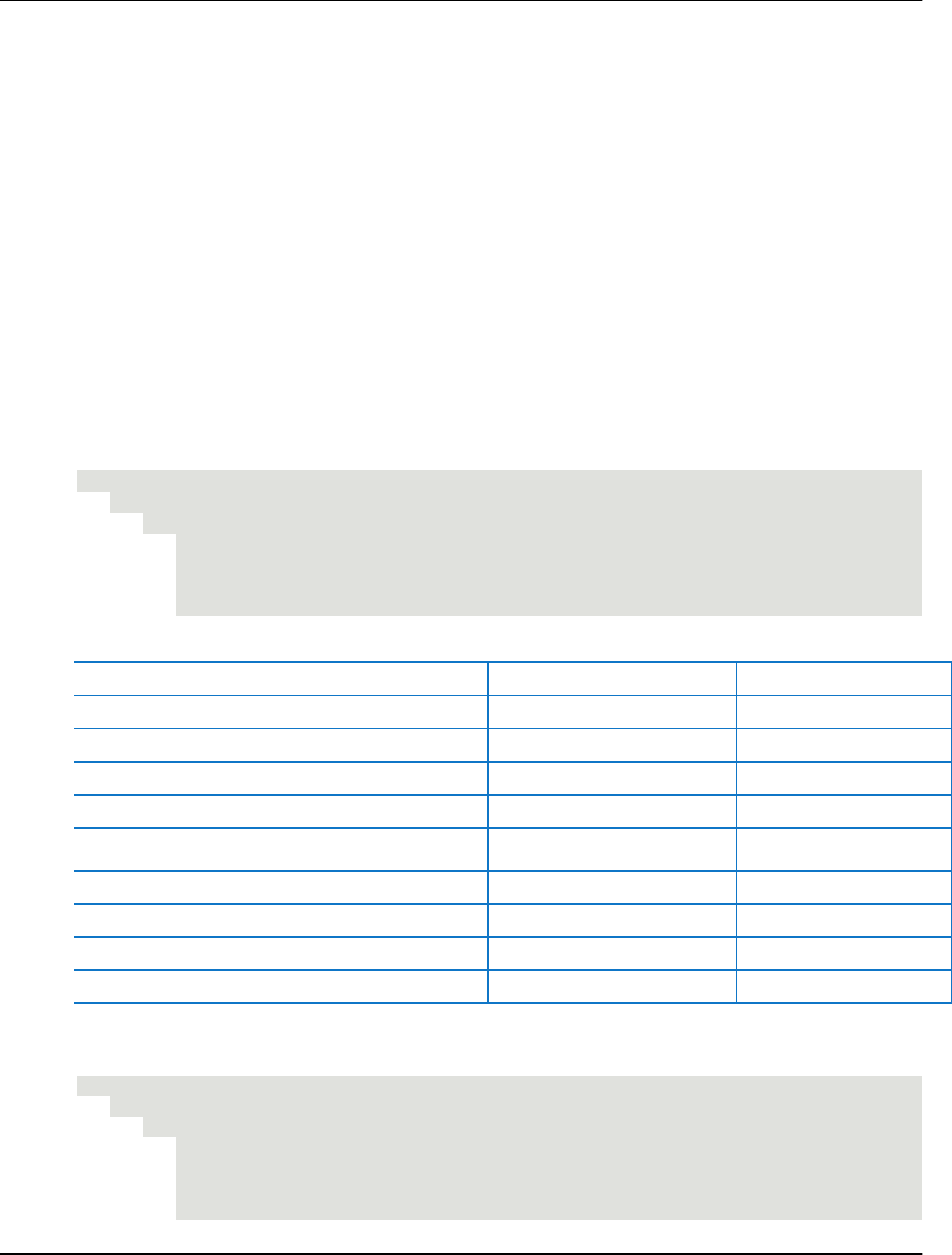
AVEVA™ Historian Retrieval Guide formerly Wonderware Data Retrieval Options
92
If wwResolution and wwCycleCount are set to 0, then a default of 100000 cycles are chosen.
If wwResolution and wwCycleCount are both set, then wwCycleCount is ignored.
If wwCycleCount is specified and is less than 0, then a default of 100 cycles are chosen.
For ValueState retrieval, if the start time of the cycle is excluded, no states are returned for the first
cycle.
For ValueState retrieval, if the end time of the cycle is excluded, no states are returned for the last
cycle.
Cycle Count - Query Examples
See the following examples of queries that demonstrate the cycle count behavior if applied to a single tag
or to multiple tags in the same query:
Cycle Count - Query 1: Using a Single Tag on page 92
Cycle Count - Query 2: Using Multiple Tags on page 92
Cycle Count - Query 1: Using a Single Tag
SELECT DateTime, TagName, Value
FROM History
WHERE TagName = 'SysTimeSec'
AND DateTime >= '2001-12-09 11:35'
AND DateTime < '2001-12-09 11:36'
AND wwRetrievalMode = 'Cyclic'
AND wwCycleCount = 300
The results are:
DateTime
TagName
Value
2001-12-09 11:35:00.000
SysTimeSec
0
2001-12-09 11:35:00.200
SysTimeSec
0
2001-12-09 11:35:00.400
SysTimeSec
0
2001-12-09 11:35:00.600
SysTimeSec
0
...
2001-12-09 11:35:59.200
SysTimeSec
59
2001-12-09 11:35:59.400
SysTimeSec
59
2001-12-09 11:35:59.600
SysTimeSec
59
2001-12-09 11:35:59.800
SysTimeSec
59
Cycle Count - Query 2: Using Multiple Tags
SELECT DateTime, TagName, Value
FROM History
WHERE TagName IN ('SysTimeMin','SysTimeSec')
AND DateTime >= '2001-12-09 11:35'
AND DateTime < '2001-12-09 11:36'
AND wwRetrievalMode = 'Cyclic'
AND wwCycleCount = 300
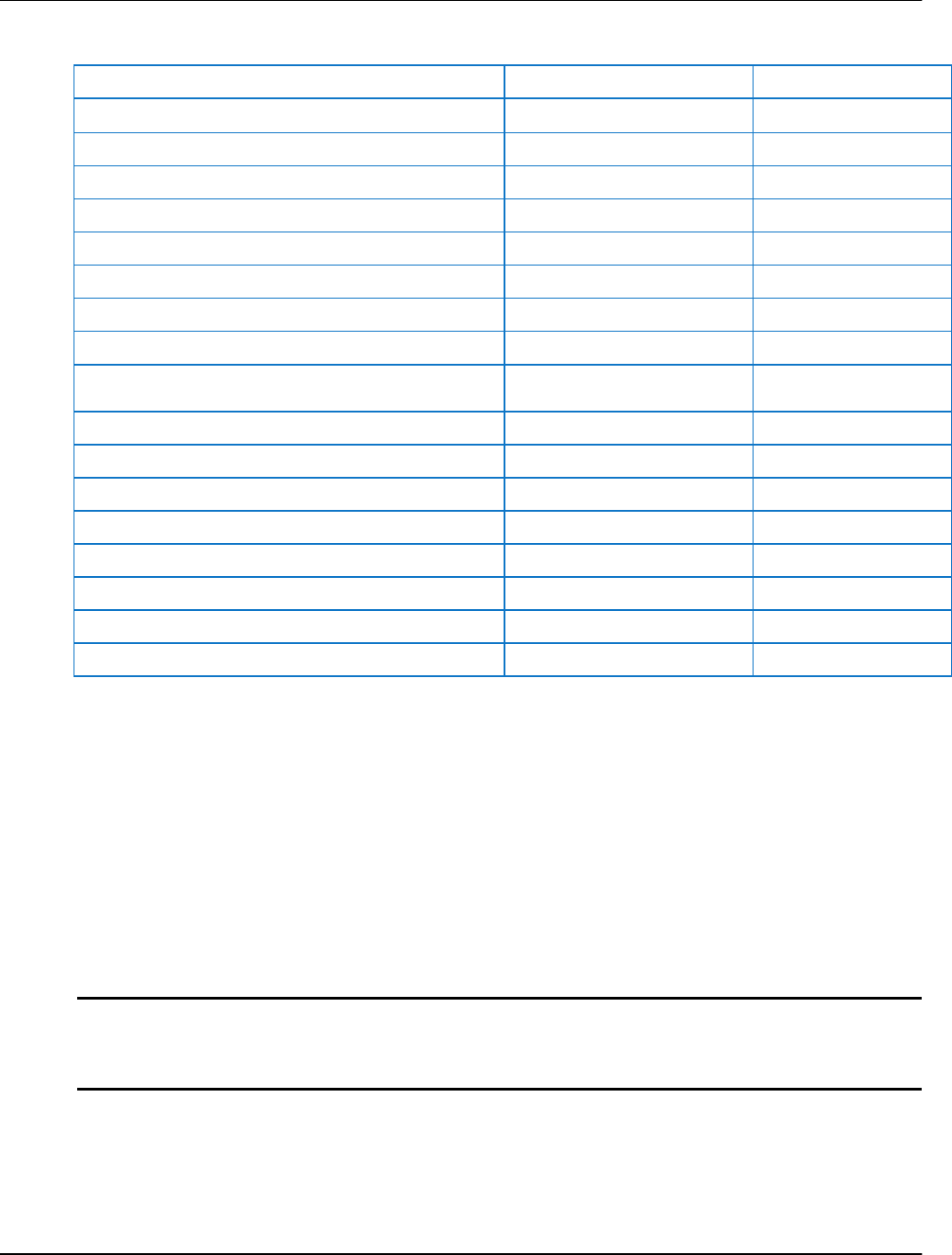
Data Retrieval Options AVEVA™ Historian Retrieval Guide formerly Wonderware
93
The results are:
DateTime
TagName
Value
2001-12-09 11:35:00.000
SysTimeMin
35
2001-12-09 11:35:00.000
SysTimeSec
0
2001-12-09 11:35:00.200
SysTimeMin
35
2001-12-09 11:35:00.200
SysTimeSec
0
2001-12-09 11:35:00.400
SysTimeMin
35
2001-12-09 11:35:00.400
SysTimeSec
0
2001-12-09 11:35:00.600
SysTimeMin
35
2001-12-09 11:35:00.600
SysTimeSec
0
...
2001-12-09 11:35:59.200
SysTimeMin
35
2001-12-09 11:35:59.200
SysTimeSec
59
2001-12-09 11:35:59.400
SysTimeMin
35
2001-12-09 11:35:59.400
SysTimeSec
59
2001-12-09 11:35:59.600
SysTimeMin
35
2001-12-09 11:35:59.600
SysTimeSec
59
2001-12-09 11:35:59.800
SysTimeMin
35
2001-12-09 11:35:59.800
SysTimeSec
59
Notice that the values of the two tags are mixed together in the same column.
Resolution (Values Spaced Every X ms) (wwResolution)
In retrieval modes that use cycles, the resolution is the sampling interval for retrieving data, that is, the
length of each cycle.
The number of cycles, therefore, depends on the time period and the resolution:
number of cycles = time period / resolution
The number of actual return values is not always identical with this cycle count. In "truly cyclic" modes
(Cyclic, Interpolated, Average, and Integral), a single data point is returned for every cycle boundary.
However, in other cycle-based modes (Best Fit, Minimum, Maximum, Counter, and ValueState), multiple
or no data points may be returned for a cycle, depending on the nature of the data.
Note: The rowset is guaranteed to contain one row for each tag in the normalized query at every
resolution interval, regardless of whether a physical row exists in history at that particular instance in
time. The value contained in the row is the last known physical value in history, at that instant, for the
relevant tag.
Instead of specifying a resolution, you can specify the cycle count directly. In that case, the resolution is
calculated based on the cycle count and the query duration. For more information, see Cycle Count (X
Values over Equal Time Intervals) (wwCycleCount) on page 91.
This option is relevant in the following retrieval modes:
Cyclic Retrieval on page 27
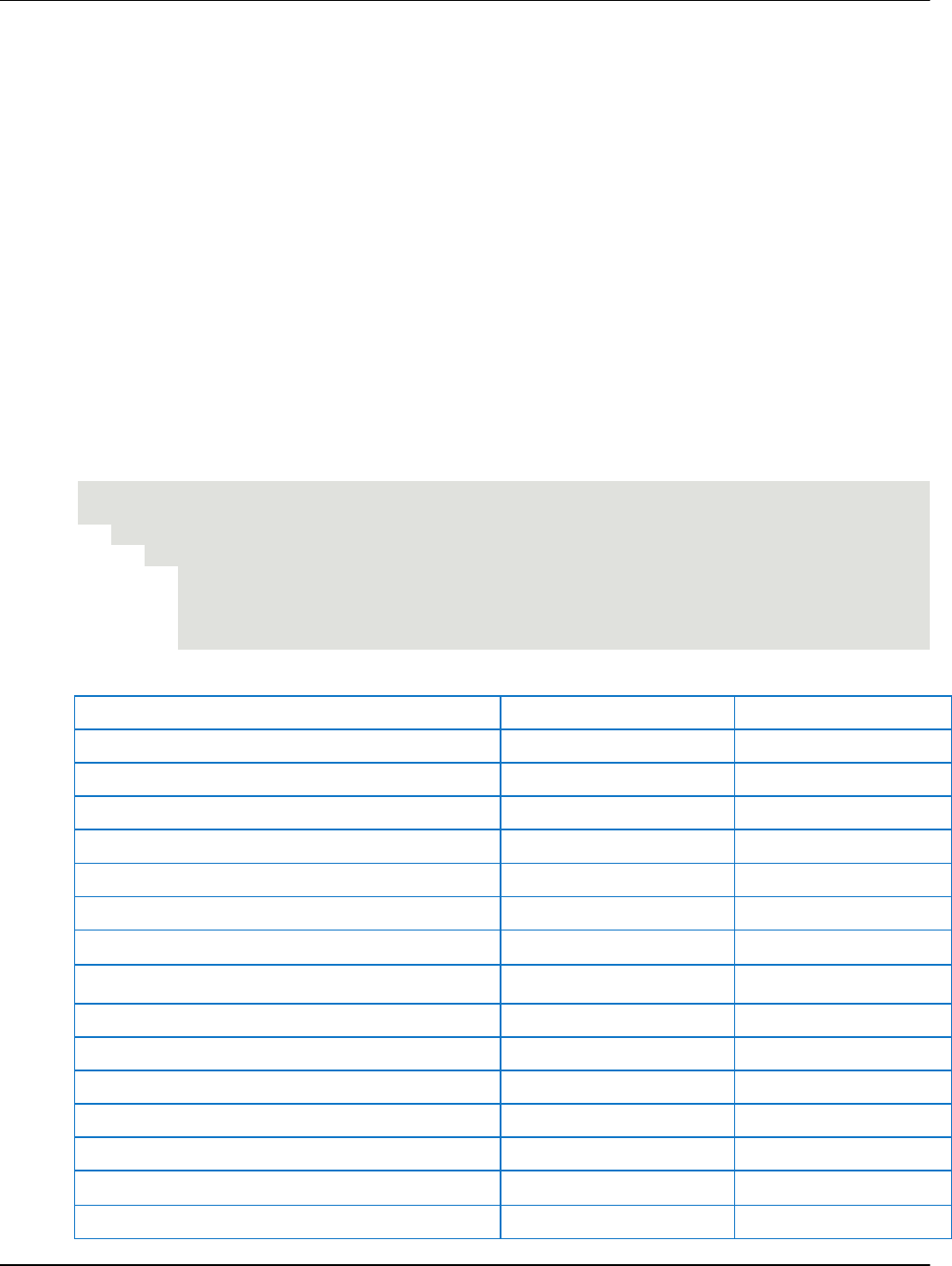
AVEVA™ Historian Retrieval Guide formerly Wonderware Data Retrieval Options
94
Interpolated Retrieval on page 37
"Best Fit" Retrieval (see "Best Fit Retrieval" on page 41)
Average Retrieval on page 46
Minimum Retrieval on page 50
Maximum Retrieval on page 55
Integral Retrieval on page 59
Counter Retrieval on page 65
ValueState Retrieval on page 70
RoundTrip Retrieval on page 75
For delta retrieval, you can achieve similar results by using a time deadband. For more information, see
Time Deadband (wwTimeDeadband) on page 97.
Resolution - Query Example
The following query returns rows that are spaced at 2 sec (2000 msec) intervals over the requested time
period. Data is retrieved cyclically.
SELECT DateTime, TagName, Value
FROM History
WHERE TagName IN ('SysTimeMin','SysTimeSec')
AND DateTime >= '2001-12-09 11:35'
AND DateTime <= '2001-12-09 11:36'
AND wwRetrievalMode = 'Cyclic'
AND wwResolution = 2000
The results are:
DateTime
TagName
Value
2001-12-09 11:35:00.000
SysTimeMin
35
2001-12-09 11:35:00.000
SysTimeSec
0
2001-12-09 11:35:02.000
SysTimeMin
35
2001-12-09 11:35:02.000
SysTimeSec
2
2001-12-09 11:35:04.000
SysTimeMin
35
2001-12-09 11:35:04.000
SysTimeSec
4
2001-12-09 11:35:06.000
SysTimeMin
35
...
2001-12-09 11:35:54.000
SysTimeMin
35
2001-12-09 11:35:54.000
SysTimeSec
54
2001-12-09 11:35:56.000
SysTimeMin
35
2001-12-09 11:35:56.000
SysTimeSec
56
2001-12-09 11:35:58.000
SysTimeMin
35
2001-12-09 11:35:58.000
SysTimeSec
58
2001-12-09 11:36:00.000
SysTimeMin
36

Data Retrieval Options AVEVA™ Historian Retrieval Guide formerly Wonderware
95
2001-12-09 11:36:00.000
SysTimeSec
0
About Phantom Cycles
The phantom cycle is the name given to the cycle that leads up to the query start time. It is used to
calculate which initial value to return at the query start time for all retrieval modes. Some retrieval modes
use the phantom cycle to simply find the last known value prior to the query start time, whereas other
retrieval modes use the entire cycle to calculate aggregates. The different uses of the phantom cycle can
be seen in the following table.
Simple use of phantom
cycle
Cycles not defined, but similar simple
use of time before query start time
Phantom cycle used to calculate
aggregates
Cyclic
Delta
Min
Interpolated
Full
Max
Best Fit
Slope
Average
Integral
Counter
ValueState
RoundTrip
It’s common to expect a single aggregate row returned for a particular time interval. You can accomplish
this in several ways.
The following example is querying for hourly averages. It returns a single row time stamped at the query
start time. If the query included the query end point by including an equal sign for it, the query would also
have returned an additional row at the query end time.
SELECT DateTime, Value, Quality, QualityDetail, OPCQuality
FROM History
WHERE TagName IN ('SysTimeSec')
AND DateTime >= '2017-12-12 08:00:00'
AND DateTime < '2017-12-12 09:00:00'
AND wwRetrievalMode = 'Avg'
AND wwResolution = 3600000
The results are:
DateTime
Value
Quality
QualityDetail
OPCQuality
2017-12-1208:00:00.0000000
29.5
0
192
192
What may be confusing in this example is the calculation of the average in the returned row for the
phantom cycle leading up to the query start time. The query specifies a positive one hour time interval
between the query start time and the query end time. You may therefore expect that the calculated and
returned average should be for the specified interval.
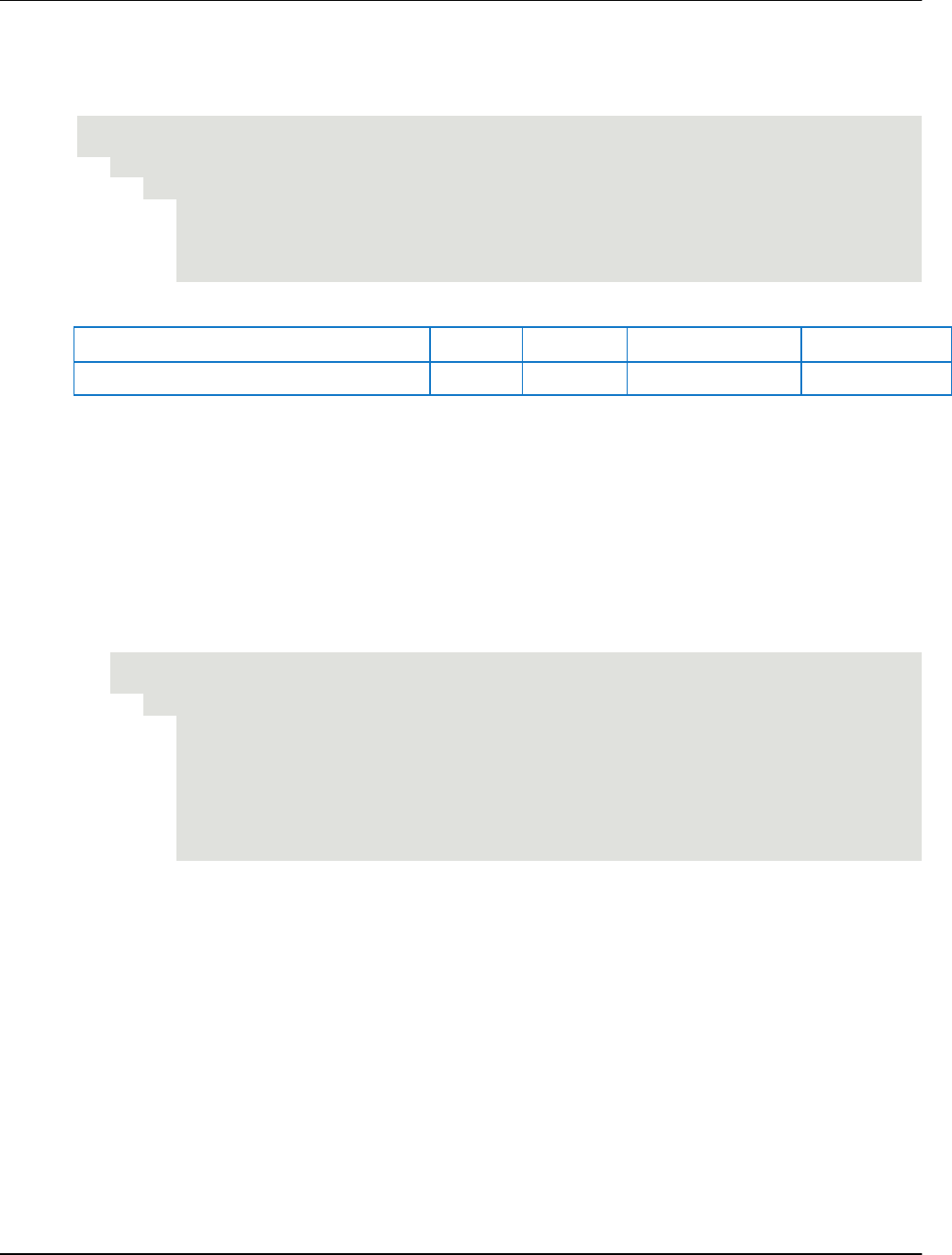
AVEVA™ Historian Retrieval Guide formerly Wonderware Data Retrieval Options
96
However, the time difference between start and end time in the above query is not actually required
because the resolution is provided explicitly (wwResolution = 36000000). If the query specified an end
time equal to the specified start time and if it included the equal sign for the end time, the query would still
return the same single row of data.
SELECT DateTime, Value, Quality, QualityDetail, OPCQuality
FROM History
WHERE TagName IN ('SysTimeSec')
AND DateTime = '2017-10-16 08:00:00'
AND DateTime <= '2017-10-16 09:00:00'
AND wwRetrievalMode = 'Avg'
AND wwCycleCount = 1
The results are:
DateTime
Value
Quality
QualityDetail
OPCQuality
2017-10-16 08:00:00.0000000
29.5
0
192
192
This second example also asks for hourly averages and it also returns only a single row of data stamped
at the query start time. This query, however, must specify a time difference between the start and end
time, because the resolution is not explicitly defined in the query.
As in the preceding query, the specified interval and cycle count of 1 may look like the returned row has
been calculated for the specified interval, but the returned row is once again for the phantom cycle
leading up to the start time.
For some queries, you may want to be certain to include values on a cycle boundary. For example, the
following query is looking for a minimum value within a cycle. In this query, the beginning DateTime
statement uses ">=" to ensure that the entire cycle is queried. Even if the minimum value happens to be
at the beginning of the cycle, the following query will provide an accurate result:
SELECT StartDateTime, *
FROM History
WHERE TagName = 'SysTimeSec'
AND DateTime >= '2016-03-31 15:41:10'
AND DateTime < '2016-03-31 15:41:20'
AND wwRetrievalMode = 'Min'
AND Quality <> 133
AND wwCycleCount = 1
The StartDateTime makes it easier to see which time interval was used to calculate the returned
aggregate. This column returns the time stamp of the beginning of the cycle used for the aggregate
calculation. The time stamp is always returned in accordance with the specified time zone and always
has the same offset as the time stamp returned in the DateTime column, even when the two time stamps
are on different sides of a DST change.
Assuming results are timestamped at the end of the cycle (as is done by default when
wwTimeStampRule is set to END), the initial rows in the examples above would return a DateTime equal
to '2009-10-16 08:00:00', and the StartDateTime column would return '2009-10-16 07:00:00' making it
easy to interpret the result.
If instead the query were to ask for results time stamped at the beginning of the cycle with
wwTimeStampRule set to START, the initial rows in the same examples would still return a DateTime
equal to '2009-10-16 08:00:00', but the time stamp has now been shifted in accordance with the time
stamp request. The result is therefore calculated for the specified time interval between 8 a.m. and 9 a.m.
In this example, the new StartDateTime column would return the same time stamp as the DateTime
column, '2009-10-16 08:00:00', again making it easier to interpret the result.
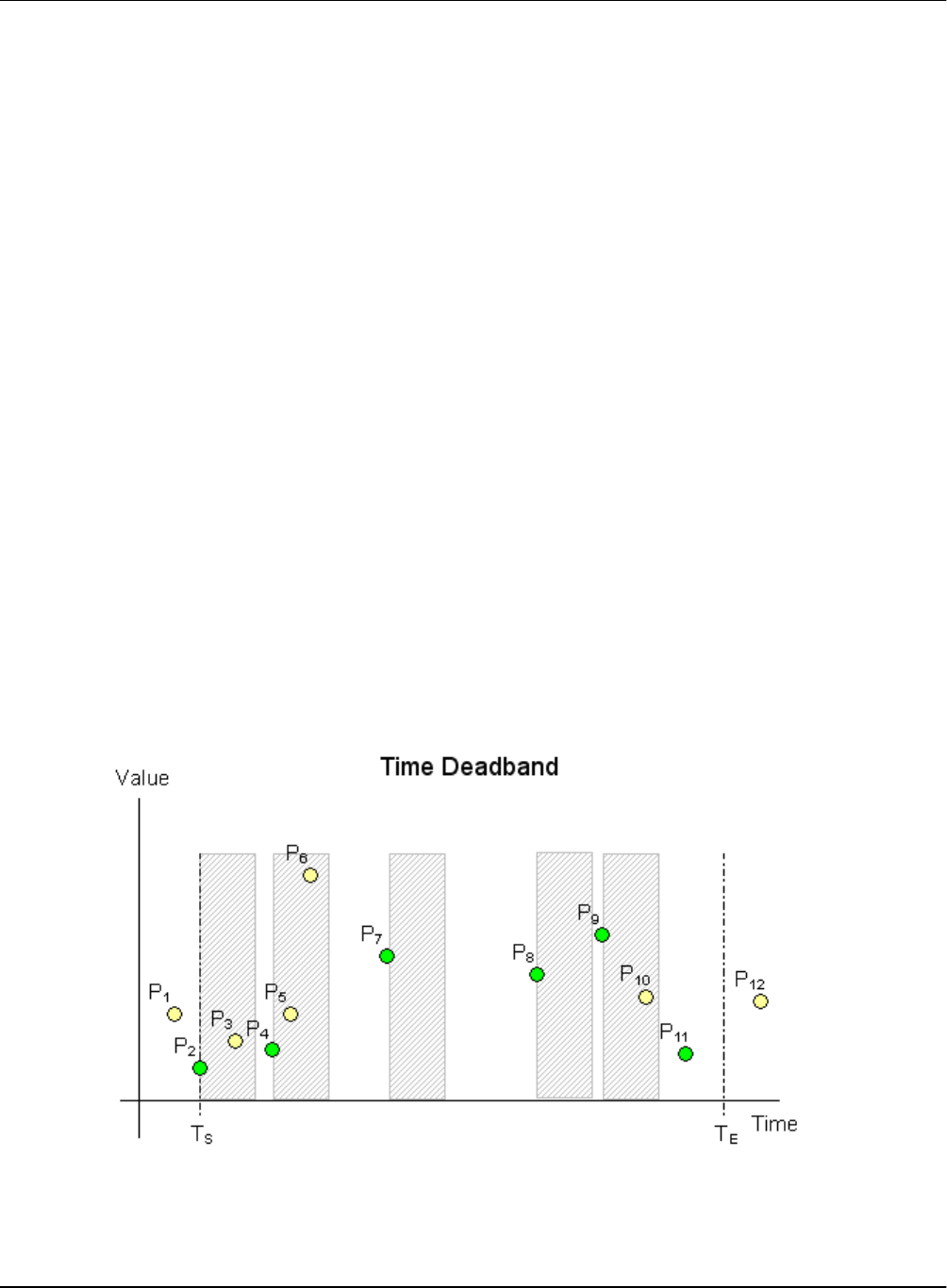
Data Retrieval Options AVEVA™ Historian Retrieval Guide formerly Wonderware
97
For retrieval modes for which cycles are defined, the StartDateTime column returns the cycle start time.
These modes are:
Cyclic Retrieval on page 27
Interpolated Retrieval on page 37
"Best Fit" Retrieval (see "Best Fit Retrieval" on page 41)
Average Retrieval on page 46
Minimum Retrieval on page 50
Maximum Retrieval on page 55
Integral Retrieval on page 59
Counter Retrieval on page 65
ValueState Retrieval on page 70
RoundTrip Retrieval on page 75
In the remaining retrieval modes, the StartDateTime column returns the same time stamp as the
DateTime column.
For an additional example, see Querying Aggregate Data in Different Ways on page 171.
Time Deadband (wwTimeDeadband)
A time deadband for retrieval controls the time resolution of data returned in delta mode. Any value
changes that occur within the time deadband are not returned.
Time deadbands can be applied to analog, discrete, and string tags.
The deadband "base value" is reset each time that a value is returned, so that the last value returned acts
as the basis for the deadband.
The following illustration shows an example of applying a time deadband:
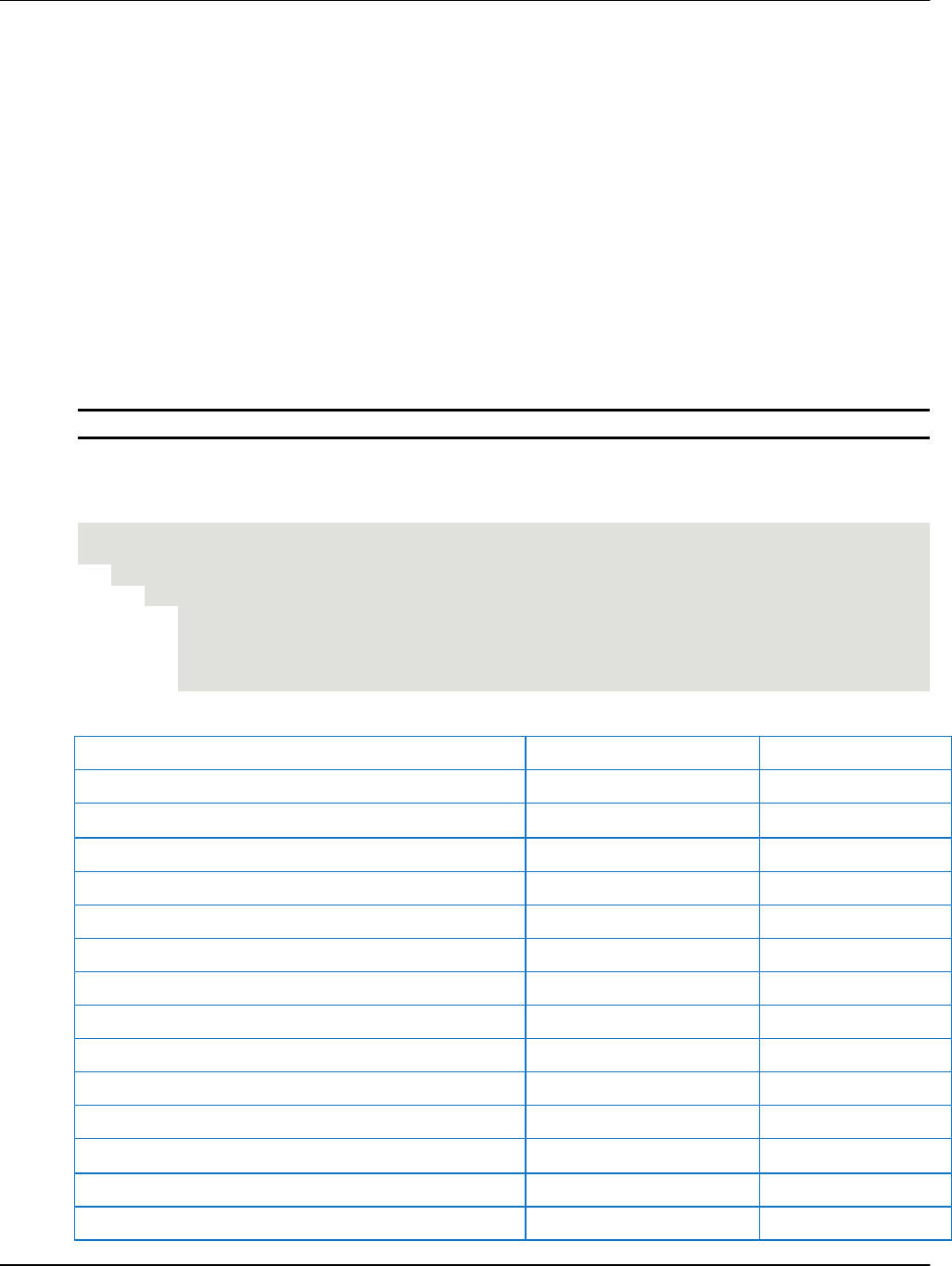
AVEVA™ Historian Retrieval Guide formerly Wonderware Data Retrieval Options
98
Data is retrieved for the time period starting with T
S
and ending with T
E
. All points in the graphic represent
data values stored on the historian. The gray areas represent the time deadband, which starts anew with
every returned value. Only the green points (P
2
, P
4
, P
7
, P
8
, P
9
, P
11
) are returned. The other points are not
returned because they fall within a deadband.
Time Deadband - Query Examples
To apply a time deadband, set the wwTimeDeadband parameter in your query.
For examples, see the following:
Time Deadband - Query 1 on page 98
Time Deadband - Query 2 on page 99
Time Deadband - Query 3 on page 100
Note: All of these example queries return data values for the analog tag 'SysTimeSec'.
Time Deadband - Query 1
This query specifies to only return data that changed during a 5 second time deadband.
SELECT DateTime, TagName, Value
FROM History
WHERE TagName = 'SysTimeSec'
AND DateTime >= '2001-12-09 11:35'
AND DateTime <= '2001-12-09 11:37'
AND wwRetrievalMode = 'Delta'
AND wwTimeDeadband = 5000
The results are:
DateTime
TagName
Value
2001-12-09 11:35:00.000
SysTimeSec
0
2001-12-09 11:35:06.000
SysTimeSec
6
2001-12-09 11:35:12.000
SysTimeSec
12
2001-12-09 11:35:18.000
SysTimeSec
18
2001-12-09 11:35:24.000
SysTimeSec
24
2001-12-09 11:35:30.000
SysTimeSec
30
2001-12-09 11:35:36.000
SysTimeSec
36
2001-12-09 11:35:42.000
SysTimeSec
42
2001-12-09 11:35:48.000
SysTimeSec
48
2001-12-09 11:35:54.000
SysTimeSec
54
2001-12-09 11:36:00.000
SysTimeSec
0
2001-12-09 11:36:06.000
SysTimeSec
6
2001-12-09 11:36:12.000
SysTimeSec
12
2001-12-09 11:36:18.000
SysTimeSec
18
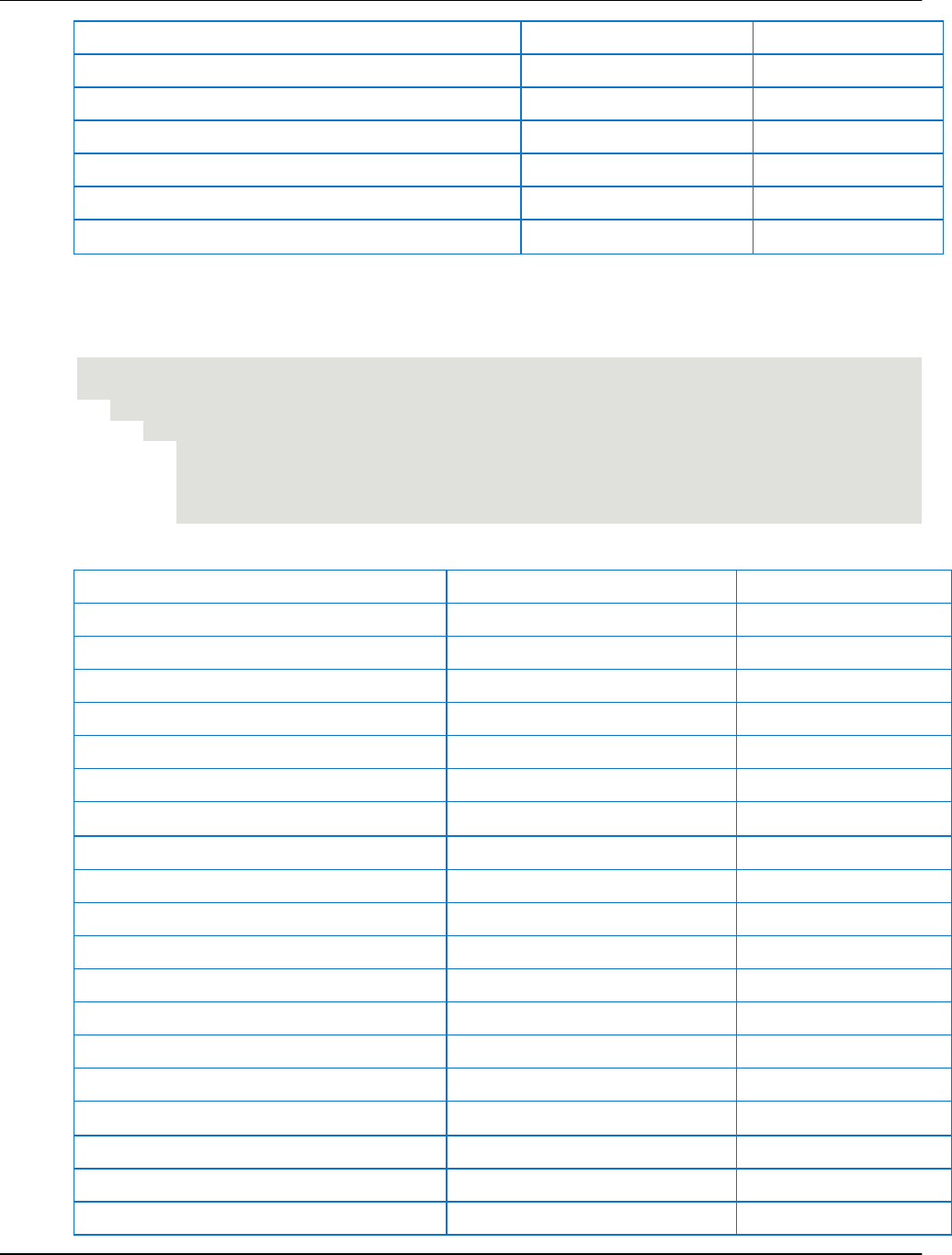
Data Retrieval Options AVEVA™ Historian Retrieval Guide formerly Wonderware
99
2001-12-09 11:36:24.000
SysTimeSec
24
2001-12-09 11:36:30.000
SysTimeSec
30
2001-12-09 11:36:36.000
SysTimeSec
36
2001-12-09 11:36:42.000
SysTimeSec
42
2001-12-09 11:36:48.000
SysTimeSec
48
2001-12-09 11:36:54.000
SysTimeSec
54
2001-12-09 11:37:00.000
SysTimeSec
0
Time Deadband - Query 2
This query specifies to only return data that changed during a 4900 millisecond time deadband.
SELECT DateTime, TagName, Value
FROM History
WHERE TagName = 'SysTimeSec'
AND DateTime >= '2001-12-09 11:35'
AND DateTime <= '2001-12-09 11:37'
AND wwRetrievalMode = 'Delta'
AND wwTimeDeadband = 4900
The results are:
DateTime
TagName
Value
2001-12-09 11:35:00.000
SysTimeSec
0
2001-12-09 11:35:05.000
SysTimeSec
5
2001-12-09 11:35:10.000
SysTimeSec
10
2001-12-09 11:35:15.000
SysTimeSec
15
2001-12-09 11:35:20.000
SysTimeSec
20
2001-12-09 11:35:25.000
SysTimeSec
25
2001-12-09 11:35:30.000
SysTimeSec
30
2001-12-09 11:35:35.000
SysTimeSec
35
2001-12-09 11:35:40.000
SysTimeSec
40
2001-12-09 11:35:45.000
SysTimeSec
45
2001-12-09 11:35:50.000
SysTimeSec
50
2001-12-09 11:35:55.000
SysTimeSec
55
2001-12-09 11:36:00.000
SysTimeSec
0
2001-12-09 11:36:05.000
SysTimeSec
5
2001-12-09 11:36:10.000
SysTimeSec
10
2001-12-09 11:36:15.000
SysTimeSec
15
2001-12-09 11:36:20.000
SysTimeSec
20
2001-12-09 11:36:25.000
SysTimeSec
25
2001-12-09 11:36:30.000
SysTimeSec
30
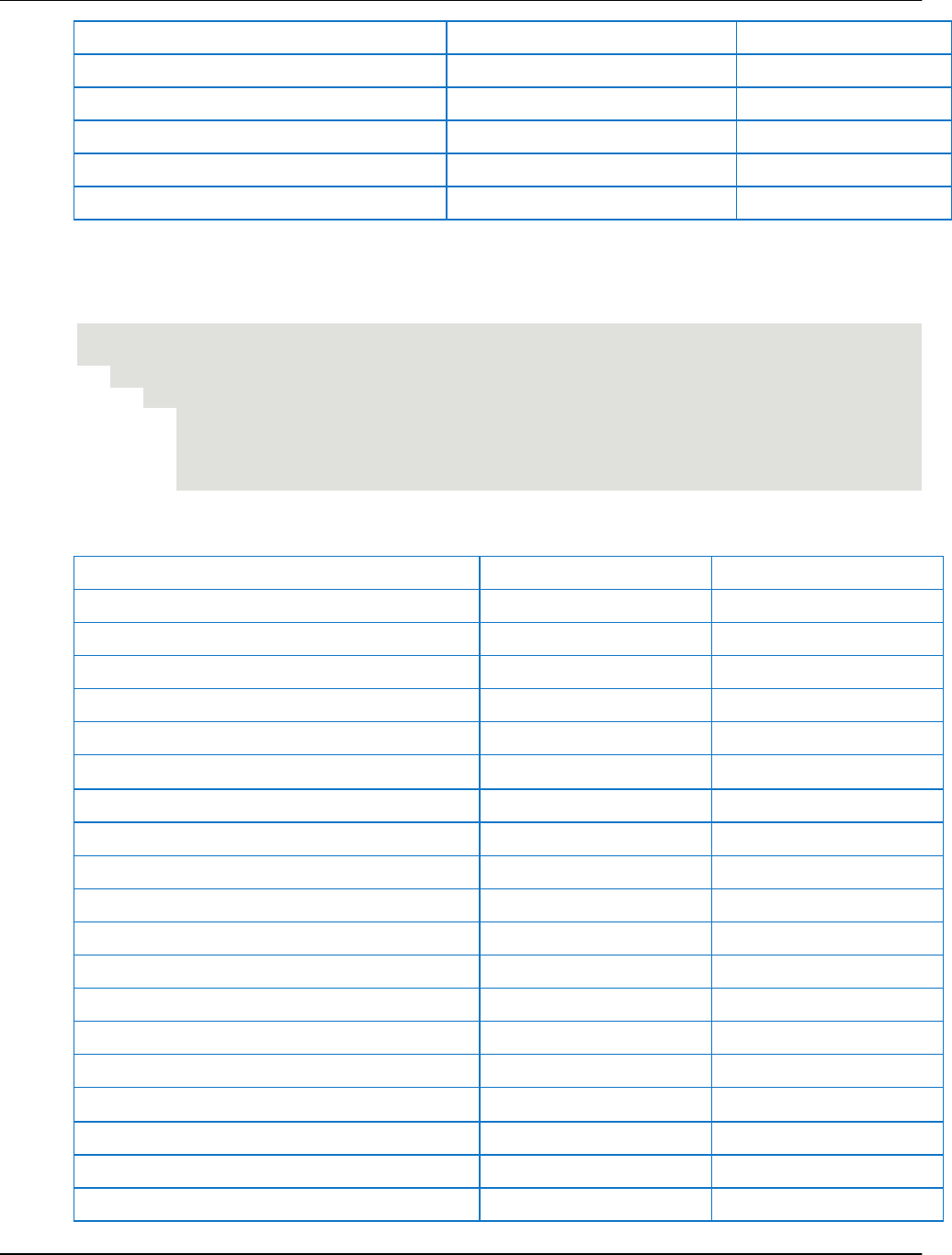
AVEVA™ Historian Retrieval Guide formerly Wonderware Data Retrieval Options
100
2001-12-09 11:36:35.000
SysTimeSec
35
2001-12-09 11:36:40.000
SysTimeSec
40
2001-12-09 11:36:45.000
SysTimeSec
45
2001-12-09 11:36:50.000
SysTimeSec
50
2001-12-09 11:36:55.000
SysTimeSec
55
2001-12-09 11:37:00.000
SysTimeSec
0
Time Deadband - Query 3
This query specifies to only return data that changed during a 2000 millisecond time deadband.
SELECT DateTime, TagName, Value
FROM History
WHERE TagName IN ('SysTimeSec','SysTimeMin')
AND DateTime >= '2001-12-09 11:35'
AND DateTime <= '2001-12-09 11:36'
AND wwRetrievalMode = 'Delta'
AND wwTimeDeadband = 2000
The results are:
DateTime
TagName
Value
2001-12-09 11:35:00.000
SysTimeSec
0
2001-12-09 11:35:00.000
SysTimeMin
35
2001-12-09 11:35:03.000
SysTimeSec
3
2001-12-09 11:35:06.000
SysTimeSec
6
2001-12-09 11:35:09.000
SysTimeSec
9
2001-12-09 11:35:12.000
SysTimeSec
12
2001-12-09 11:35:15.000
SysTimeSec
15
2001-12-09 11:35:18.000
SysTimeSec
18
2001-12-09 11:35:21.000
SysTimeSec
21
2001-12-09 11:35:24.000
SysTimeSec
24
2001-12-09 11:35:27.000
SysTimeSec
27
2001-12-09 11:35:30.000
SysTimeSec
30
2001-12-09 11:35:33.000
SysTimeSec
33
2001-12-09 11:35:36.000
SysTimeSec
36
2001-12-09 11:35:39.000
SysTimeSec
39
2001-12-09 11:35:42.000
SysTimeSec
42
2001-12-09 11:35:45.000
SysTimeSec
45
2001-12-09 11:35:48.000
SysTimeSec
48
2001-12-09 11:35:51.000
SysTimeSec
51
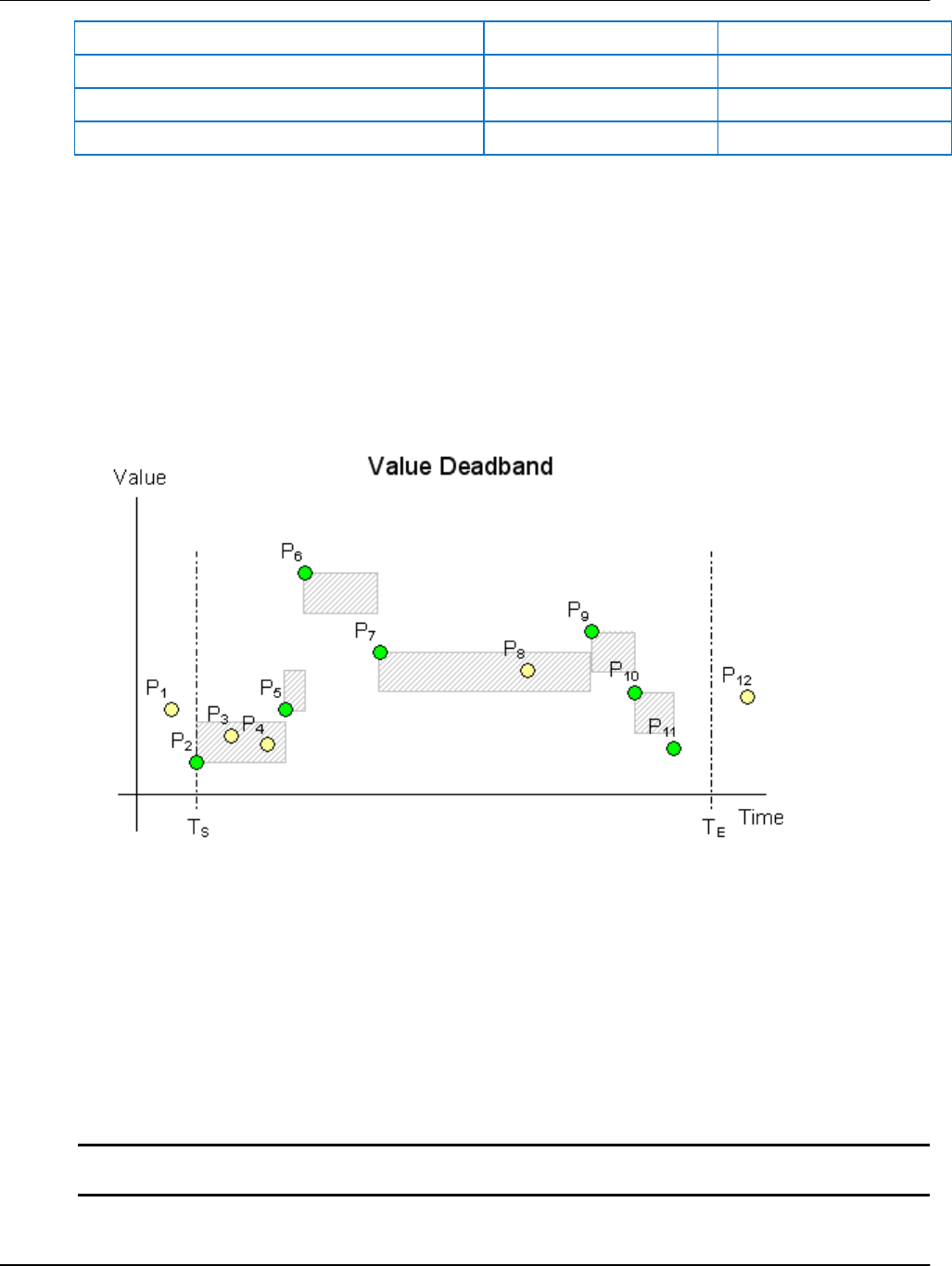
Data Retrieval Options AVEVA™ Historian Retrieval Guide formerly Wonderware
101
2001-12-09 11:35:54.000
SysTimeSec
54
2001-12-09 11:35:57.000
SysTimeSec
57
2001-12-09 11:36:00.000
SysTimeSec
0
2001-12-09 11:36:00.000
SysTimeMin
36
Value Deadband (wwValueDeadband)
A value deadband for retrieval controls the value resolution of data returned in delta mode. Any data
values that change less than the specified deadband are not returned. The deadband is a percentage of
a tag’s full scale in engineering units.
The deadband "base value" is reset each time that a value is returned, so that the last value returned acts
as the basis for the deadband.
Changes in quality will force a value to be returned even if the value deadband has not been met.
The following illustration shows an example of applying a value deadband:
Data is retrieved for the time period starting with T
S
and ending with T
E
. All points in the graphic represent
data values stored on the historian. The gray areas represent the value deadband, which starts anew
with every returned value. Only the green points (P
2
, P
5
, P
6
, P
7
, P
9
, P
10
, P
11
) are returned. The other
points are not returned because they fall within a deadband.
Value Deadband - Query Examples
See the following examples of queries that use value deadband:
Value Deadband - Query 1 on page 102
Value Deadband - Query 2 on page 102
Note: Each of these examples returns data values for the analog tag 'SysTimeSec'. The minimum
engineering unit for 'SysTimeSec' is 0, and the maximum engineering unit is 59.

AVEVA™ Historian Retrieval Guide formerly Wonderware Data Retrieval Options
102
Value Deadband - Query 1
This query specifies to return only data that changed by more than 10 percent of the tag's full engineering
unit range. Using a value deadband of 10 percent equates to an absolute change of 5.9 for
'SysTimeSec.'
SELECT DateTime, Value
FROM History
WHERE TagName = 'SysTimeSec'
AND DateTime >= '2001-12-09 11:35'
AND DateTime <= '2001-12-09 11:37'
AND wwRetrievalMode = 'Delta'
AND wwValueDeadband = 10
The results are:
DateTime
Value
2001-12-09 11:35:00.000
0
2001-12-09 11:35:06.000
6
2001-12-09 11:35:12.000
12
2001-12-09 11:35:18.000
18
2001-12-09 11:35:24.000
24
2001-12-09 11:35:30.000
30
2001-12-09 11:35:36.000
36
2001-12-09 11:35:42.000
42
2001-12-09 11:35:48.000
48
2001-12-09 11:35:54.000
54
2001-12-09 11:36:00.000
0
2001-12-09 11:36:06.000
6
2001-12-09 11:36:12.000
12
2001-12-09 11:36:18.000
18
2001-12-09 11:36:24.000
24
2001-12-09 11:36:30.000
30
2001-12-09 11:36:36.000
36
2001-12-09 11:36:42.000
42
2001-12-09 11:36:48.000
48
2001-12-09 11:36:54.000
54
2001-12-09 11:37:00.000
0
Value Deadband - Query 2
This query specifies to only return data that changed by more than 5 percent of the tag's full engineering
unit range. Using a value deadband of 5 percent equates to an absolute change of 2.95 for
'SysTimeSec.'

Data Retrieval Options AVEVA™ Historian Retrieval Guide formerly Wonderware
103
SELECT DateTime, Value
FROM History
WHERE TagName = 'SysTimeSec'
AND DateTime >= '2001-12-09 11:35'
AND DateTime <= '2001-12-09 11:37'
AND wwRetrievalMode = 'Delta'
AND wwValueDeadband = 5
The results are:
DateTime
Value
2001-12-09 11:35:00.000
0
2001-12-09 11:35:03.000
3
2001-12-09 11:35:06.000
6
2001-12-09 11:35:09.000
9
2001-12-09 11:35:12.000
12
2001-12-09 11:35:15.000
15
2001-12-09 11:35:18.000
18
2001-12-09 11:35:21.000
21
2001-12-09 11:35:24.000
24
2001-12-09 11:35:27.000
27
2001-12-09 11:35:30.000
30
2001-12-09 11:35:33.000
33
2001-12-09 11:35:36.000
36
2001-12-09 11:35:39.000
39
2001-12-09 11:35:42.000
42
2001-12-09 11:35:45.000
45
2001-12-09 11:35:48.000
48
2001-12-09 11:35:51.000
51
2001-12-09 11:35:54.000
54
2001-12-09 11:35:57.000
57
2001-12-09 11:36:00.000
0
2001-12-09 11:36:03.000
3
2001-12-09 11:36:06.000
6
2001-12-09 11:36:09.000
9
2001-12-09 11:36:12.000
12
2001-12-09 11:36:15.000
15
2001-12-09 11:36:18.000
18
2001-12-09 11:36:21.000
21
2001-12-09 11:36:24.000
24
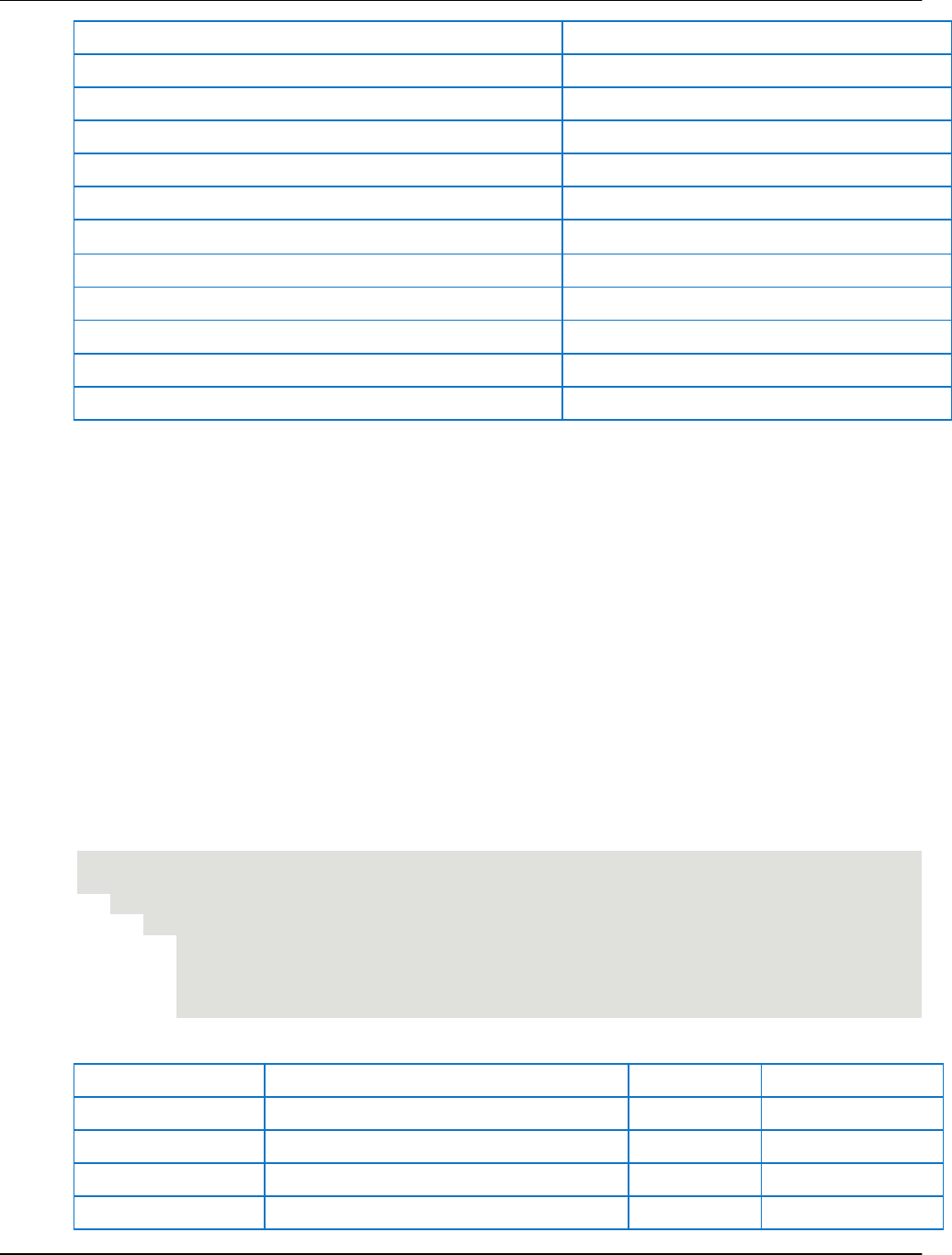
AVEVA™ Historian Retrieval Guide formerly Wonderware Data Retrieval Options
104
2001-12-09 11:36:27.000
27
2001-12-09 11:36:30.000
30
2001-12-09 11:36:33.000
33
2001-12-09 11:36:36.000
36
2001-12-09 11:36:39.000
39
2001-12-09 11:36:42.000
42
2001-12-09 11:36:45.000
45
2001-12-09 11:36:48.000
48
2001-12-09 11:36:51.000
51
2001-12-09 11:36:54.000
54
2001-12-09 11:36:57.000
57
2001-12-09 11:37:00.000
0
History Version (wwVersion)
The AVEVA Historian allows you to overwrite a stored tag value with later versions of the value. The
original version of the value is still maintained, so that effectively, multiple versions of the tag value exist
at the same point in time.
When retrieving data, you can specify whether to retrieve the originally stored version or the latest
version that is available. To do this, set the history version option to "Original" for the original version or
"Latest" for the latest available version. If you do not specify the version, the latest version is returned.
To distinguish between a latest value and an original value, the historian returns a special QualityDetail
value of 202 for a latest point with good quality.
This option is relevant in all retrieval modes.
History Version - Query Example
This example illustrates using history version. First, consider this query:
SELECT TagName, DateTime, Value, wwVersion
FROM History
WHERE TagName IN ('SysTimeHour', 'SysTimeMin')
AND DateTime >= '2001-12-20 0:00'
AND DateTime <= '2001-12-20 0:05'
AND wwRetrievalMode = 'Delta'
AND wwVersion = 'Original'
The results are:
TagName
DateTime
Value
wwVersion
SysTimeMin
2001-12-20 00:00:00.000
0
ORIGINAL
SysTimeHour
2001-12-20 00:00:00.000
0
ORIGINAL
SysTimeMin
2001-12-20 00:01:00.000
1
ORIGINAL
SysTimeMin
2001-12-20 00:02:00.000
2
ORIGINAL
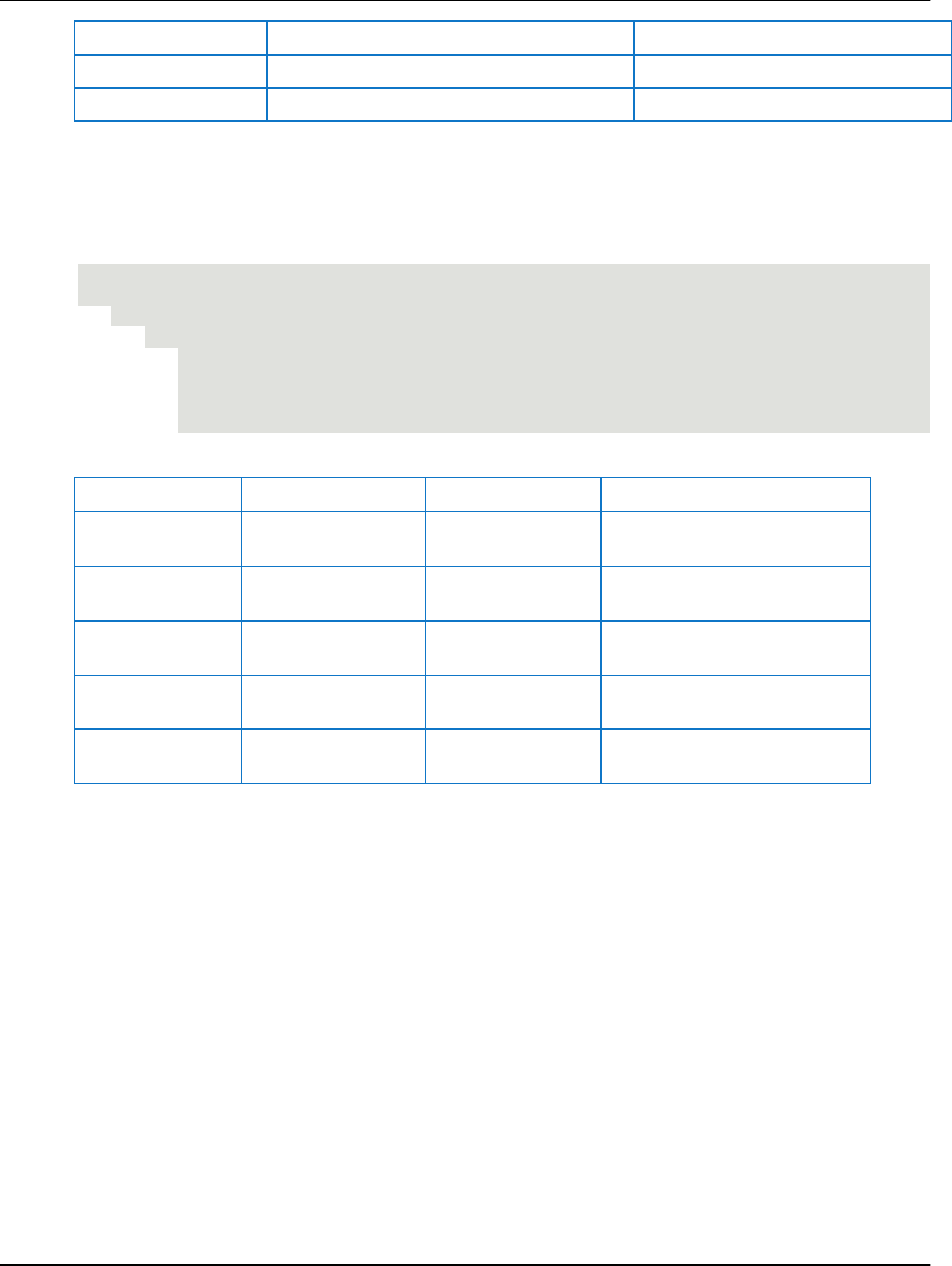
Data Retrieval Options AVEVA™ Historian Retrieval Guide formerly Wonderware
105
SysTimeMin
2001-12-20 00:03:00.000
3
ORIGINAL
SysTimeMin
2001-12-20 00:04:00.000
4
ORIGINAL
SysTimeMin
2001-12-20 00:05:00.000
5
ORIGINAL
When retrieving the latest version, the wwVersion parameter always returns with a value of LATEST for
all values, even though many of the values may actually be the original values that came from the I/O
Server. To distinguish between an actual latest value and an original value, a special QualityDetail of 202
is returned for a good, latest point.
For example:
SELECT DateTime, Value, Quality, QualityDetail, OPCQuality, wwVersion
FROM History
WHERE TagName IN ('PV')
AND DateTime >= '2005-04-17 11:35:00'
AND DateTime <= '2005-04-17 11:36:00'
AND wwRetrievalMode = 'Delta'
AND wwVersion = 'Latest'
The results are:
DateTime
Value
Quality
QualityDetail
OPCQuality
wwVersion
2005-04-17
11:35:00.000
12.5
0
192
192
LATEST
2005-04-17
11:35:15.000
17.3
0
192
192
LATEST
2005-04-17
11:35:30.000
34.0
0
202
192
LATEST
2005-04-17
11:35:45.000
43.1
0
192
192
LATEST
2005-04-17
11:36:00.000
51.2
0
192
192
LATEST
Interpolation Type (wwInterpolationType)
For various retrieval modes, you can control how analog tag values at cycle boundaries are calculated if
there is no actual value stored at that point in time. The options are as follows:
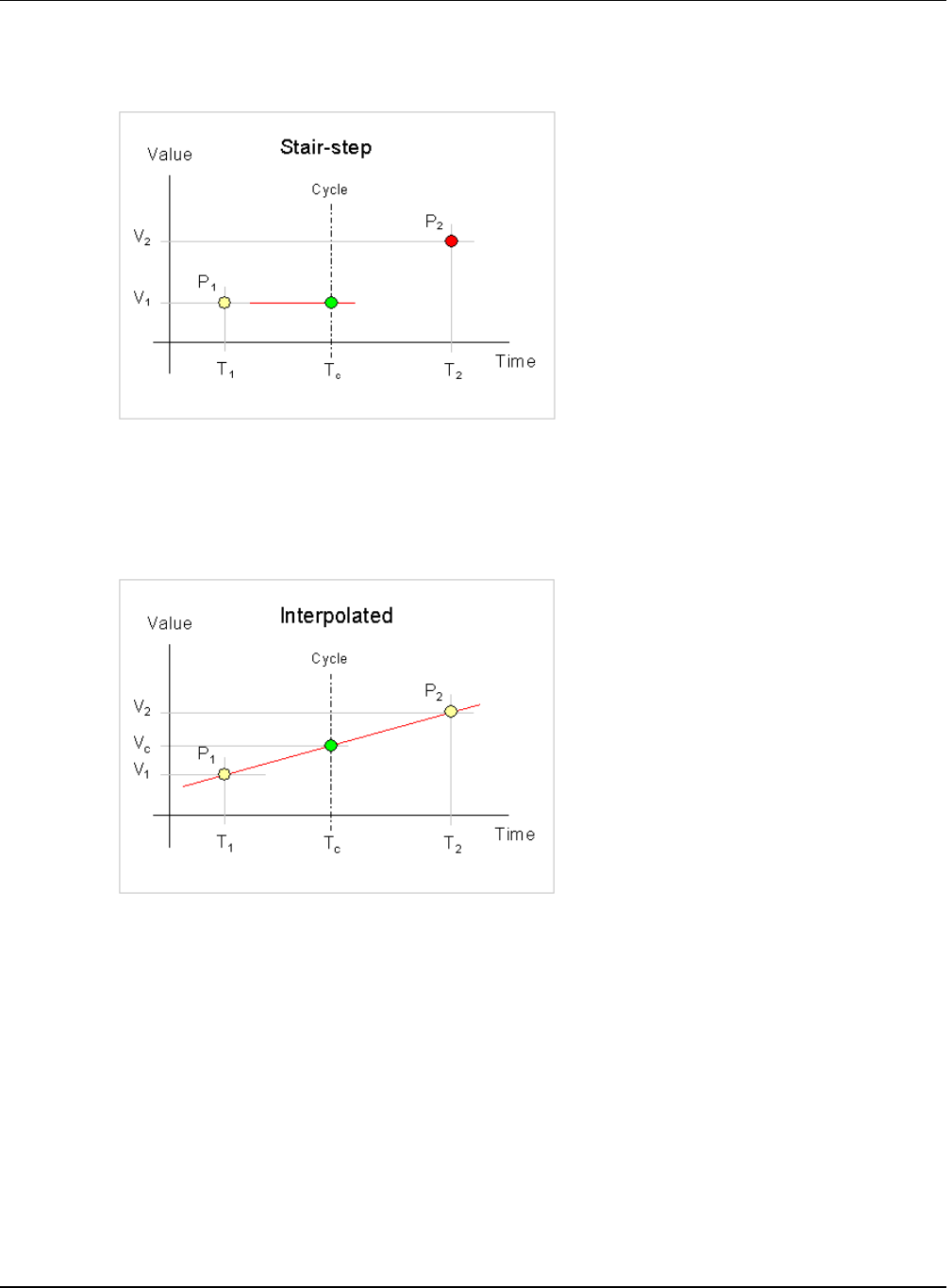
AVEVA™ Historian Retrieval Guide formerly Wonderware Data Retrieval Options
106
Stairstep: No interpolation occurs. The value at the cycle boundary is assumed to be the same
value as the last stored value before the cycle boundary.The last known point is returned with the
given cycle time. If no valid value can be found, a NULL is returned.
Linear: The historian calculates a new value at the cycle boundary by interpolating between the last
stored value before the boundary and the first stored value after the boundary. If either of these
values is NULL, it returns the last stored value before the boundary.
Expressed as a formula, V
c
is calculated as:
V
c
= V
1
+ ((V
2
- V
1
) * ((T
c
- T
1
) / (T
2
- T
1
)))
The type of data that you want to retrieve usually determines the interpolation type to use. For example,
if you have a thermocouple, the temperature change is linear, so it’s best to use linear interpolation. If you
have a tag that contains discrete measurements, such as a set point, then you probably want to use
stair-stepped values. In general, it is recommended that you use linear interpolation as the general
setting, and use stair-stepped values for the exceptions.
This option is relevant in the following retrieval modes:
-old-Interpolated Retrieval
"Best Fit" Retrieval
Average Retrieval on page 46
Integral Retrieval on page 59
The quality of an interpolated point is determined by the wwQualityRule setting. For more information,
see Quality Rule (wwQualityRule) on page 111.

Data Retrieval Options AVEVA™ Historian Retrieval Guide formerly Wonderware
107
The interpolation type can be set on three levels:
The AVEVA Historian system-wide setting. The system-wide setting must be either stair-step or
interpolated. For more information, see "System Parameters" on page 36. This setting is configured
using the AVEVA Historian Configuration Editor.
The individual analog tag setting. You can configure an individual analog tag to use the system-wide
setting or either stair-stepped values or linear interpolation. The individual tag setting will override the
system-wide setting. This setting is configured using the AVEVA Historian Configuration Editor.
The setting for the wwInterpolationType parameter in the query. This setting overrides any other
setting for all tags in the query.
The wwInterpolationType parameter is dynamically used both for input for the query, when you need to
override the individual tag settings, and for output for each individual row to show whether a particular
row value was calculated using linear interpolation (returned as "LINEAR") or if it is a stair-stepped value
(returned as "STAIRSTEP").
To force a query to always use linear interpolation whenever applicable, specify the following in the
query:
AND wwInterpolationType = 'Linear'
To force a query to always return stair-stepped values, specify the following in the query:
AND wwInterpolationType = 'StairStep'
TimeStamp Rule (wwTimeStampRule)
For various cycle-based retrieval modes, you can control whether the returned values are timestamped
at the beginning or at the end of each cycle.
To force a query to timestamp results at the start of a cycle, specify the following in the query:
AND wwTimeStampRule = 'Start'
To force a query to timestamp results at the end of a cycle, specify the following in the query:
AND wwTimeStampRule = 'End'
If you include the wwTimeStampRule column in your SELECT statement, it will show which timestamp
rule has been applied for the individual row, if applicable.
The options are as follows:
Start: The value for a given cycle is stamped with the cycle start time. For example, in the following
illustration of a cyclic query, the following values are returned at the cycle boundaries:
o At T
C0
: P
7
, because it falls on the cycle boundary. In cyclic mode, if there is a value right on the
cycle boundary, it is considered to belong to the cycle before the boundary. In this case, this is
the cycle starting at T
C0
and ending at T
C1
, and because the Start timestamp rule is used, the
value is timestamped at T
C0
.
o At T
C1
: P
11
, because it is the last value in the cycle starting at T
C1
and ending at T
C2
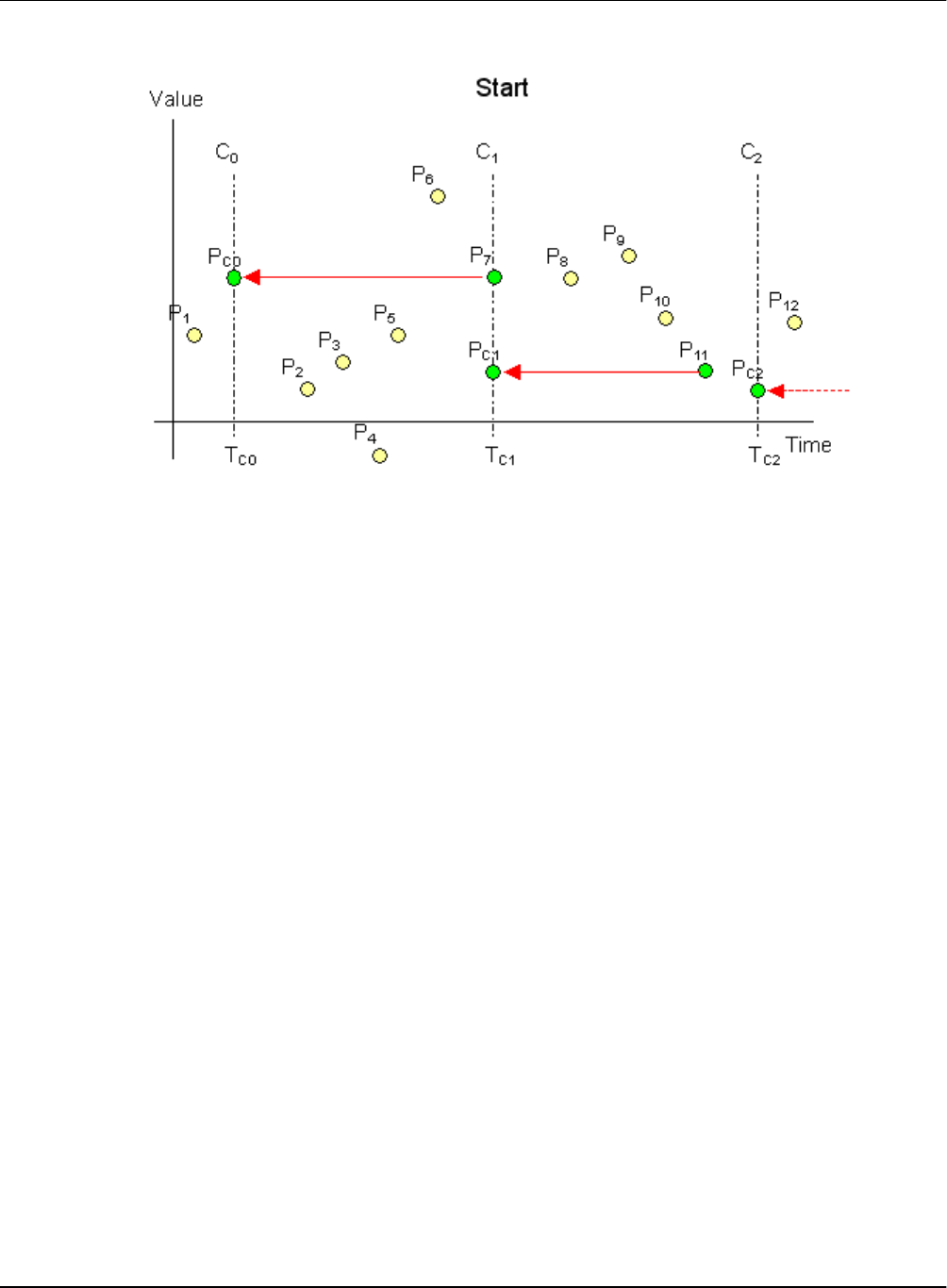
AVEVA™ Historian Retrieval Guide formerly Wonderware Data Retrieval Options
108
o At T
C2
: The last value in the "phantom" cycle starting at T
C2
End: The value for a given cycle is stamped with the cycle end time. For example, in the following
illustration of a cyclic query, the following values are returned at the cycle boundaries:
o At T
C0
: P
1
, because it is the last value in the "phantom" cycle ending at T
C0
. Because the End
timestamp rule is used, the value is timestamped at T
C0
.
o At T
C1
: P
7
, because it falls on the cycle boundary. In cyclic mode, if there is a value right on the
cycle boundary, it is considered to belong to the cycle before the boundary. In this case, this is
the cycle starting at T
C0
and ending at T
C1
, and because the End timestamp rule is used, the
value is timestamped at T
C1
.
o At T
C2
: P
11
, because it is the last value in the cycle ending at T
C2
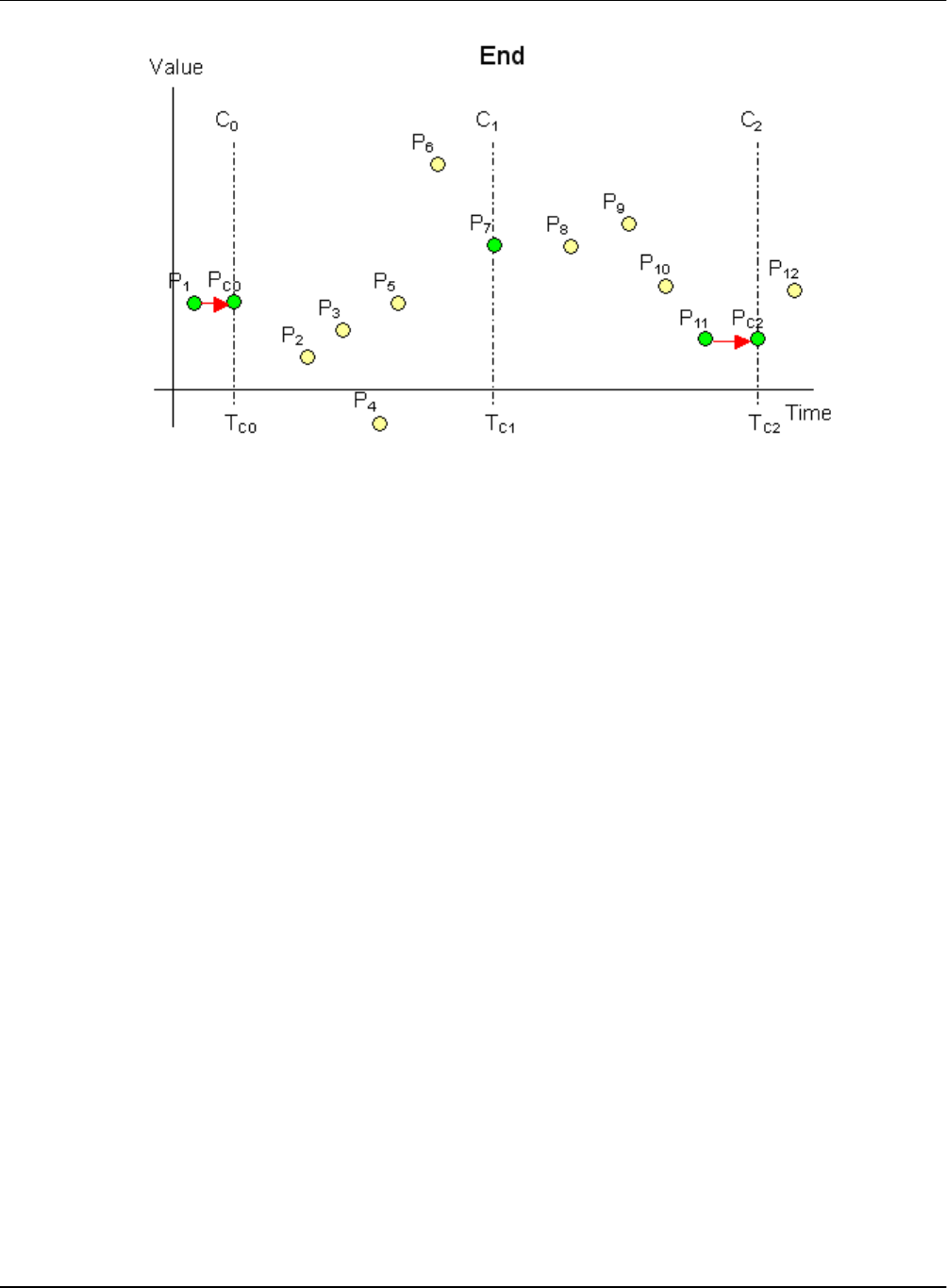
Data Retrieval Options AVEVA™ Historian Retrieval Guide formerly Wonderware
109

AVEVA™ Historian Retrieval Guide formerly Wonderware Data Retrieval Options
110
Server default: Either Start or End is used, depending on the system parameter setting on the
AVEVA Historian.
This option is relevant in the following retrieval modes:
Cyclic Retrieval on page 27 (AVEVA Historian 9.0 and later)
Interpolated Retrieval on page 37
Average Retrieval on page 46
Integral Retrieval on page 59
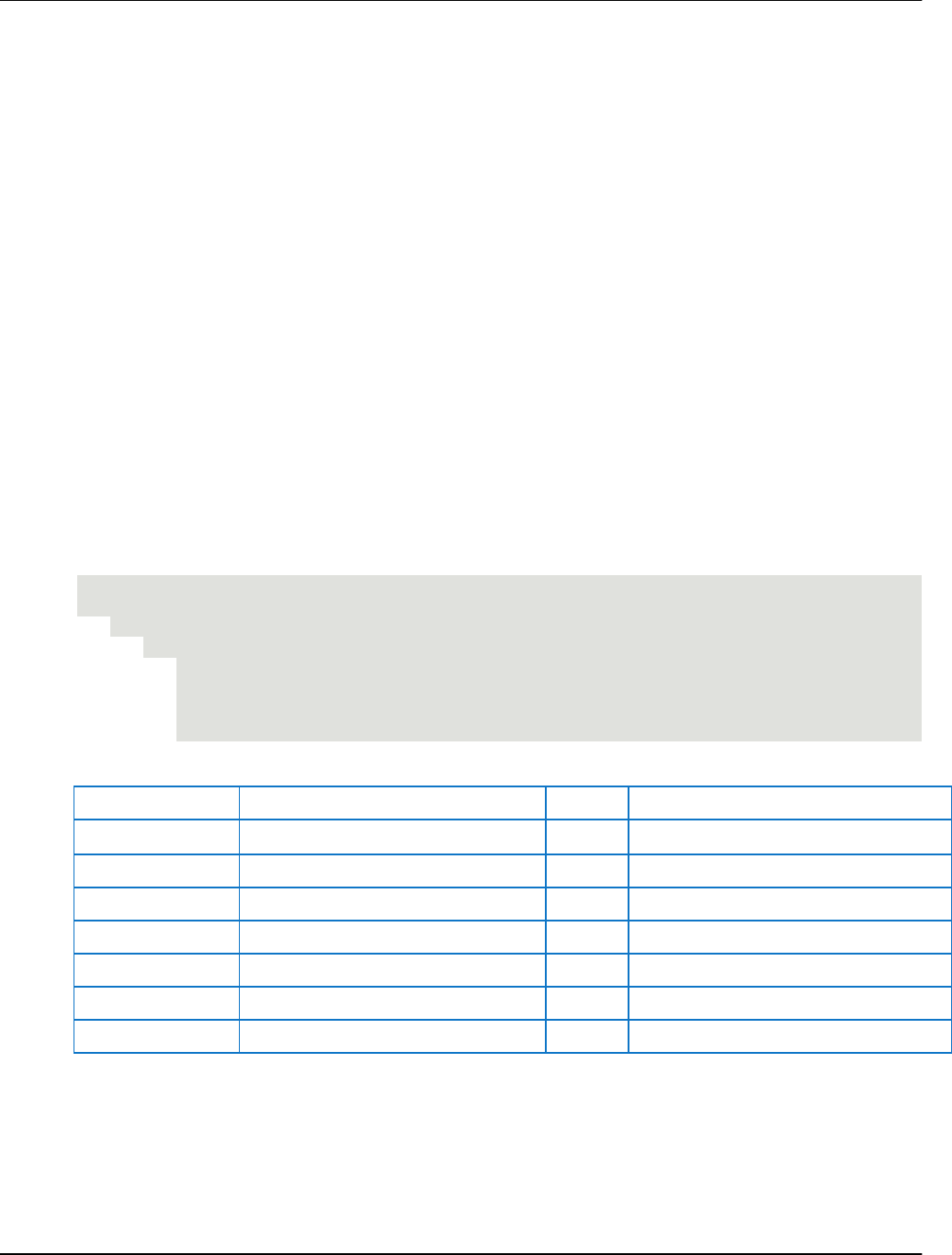
Data Retrieval Options AVEVA™ Historian Retrieval Guide formerly Wonderware
111
Counter Retrieval on page 65
ValueState Retrieval on page 70
RoundTrip Retrieval on page 75
Time Zone (wwTimeZone)
For AVEVA Historianversion 8.0 and later, all history data is stored in Coordinated Universal Time (UTC).
The wwTimeZone extension allows you to specify the time zone to be used for the timestamps of the
returned data values. The Retrieval subsystem will convert the timestamps to local time in the specified
time zone.
The wwTimeZone extension may be assigned any of the values stored in the TimeZone column of the
TimeZone table in the Runtime database.
The TimeZone table is repopulated at every system startup from Microsoft operating system registry
entries, and will therefore reflect the time zones available from the server operating system, including
any new or custom time zones which might be added by operating system service packs or installed
software.
The Retrieval subsystem will automatically correct for daylight savings time in the requested time zone.
When computing daylight savings and time zone parameters, the settings of the server operating system
are used. The Retrieval subsystem does not provide any means for using client -side settings.
If wwTimeZone is not specified, the time zone for retrieval defaults to the time zone of the AVEVA
Historian computer.
For example:
SELECT TagName, DateTime, Value, wwTimeZone
FROM History
WHERE TagName IN ('SysTimeHour', 'SysTimeMin')
AND DateTime >= '2001-12-20 0:00'
AND DateTime <= '2001-12-20 0:05'
AND wwRetrievalMode = 'Delta'
AND wwTimeZone = 'W. Europe Standard Time'
The results are:
TagName
DateTime
Value
wwTimeZone
SysTimeMin
2001-12-20 00:00:00.000
0
W. Europe Standard Time
SysTimeHour
2001-12-20 00:00:00.000
15
W. Europe Standard Time
SysTimeMin
2001-12-20 00:01:00.000
1
W. Europe Standard Time
SysTimeMin
2001-12-20 00:02:00.000
2
W. Europe Standard Time
SysTimeMin
2001-12-20 00:03:00.000
3
W. Europe Standard Time
SysTimeMin
2001-12-20 00:04:00.000
4
W. Europe Standard Time
SysTimeMin
2001-12-20 00:05:00.000
5
W. Europe Standard Time
Quality Rule (wwQualityRule)
The quality rule can be used to specify whether values with certain characteristics are explicitly
excluded from consideration by data retrieval. This parameter will override the setting of the QualityRule
system parameter. Valid values are GOOD, EXTENDED, or OPTIMISTIC.
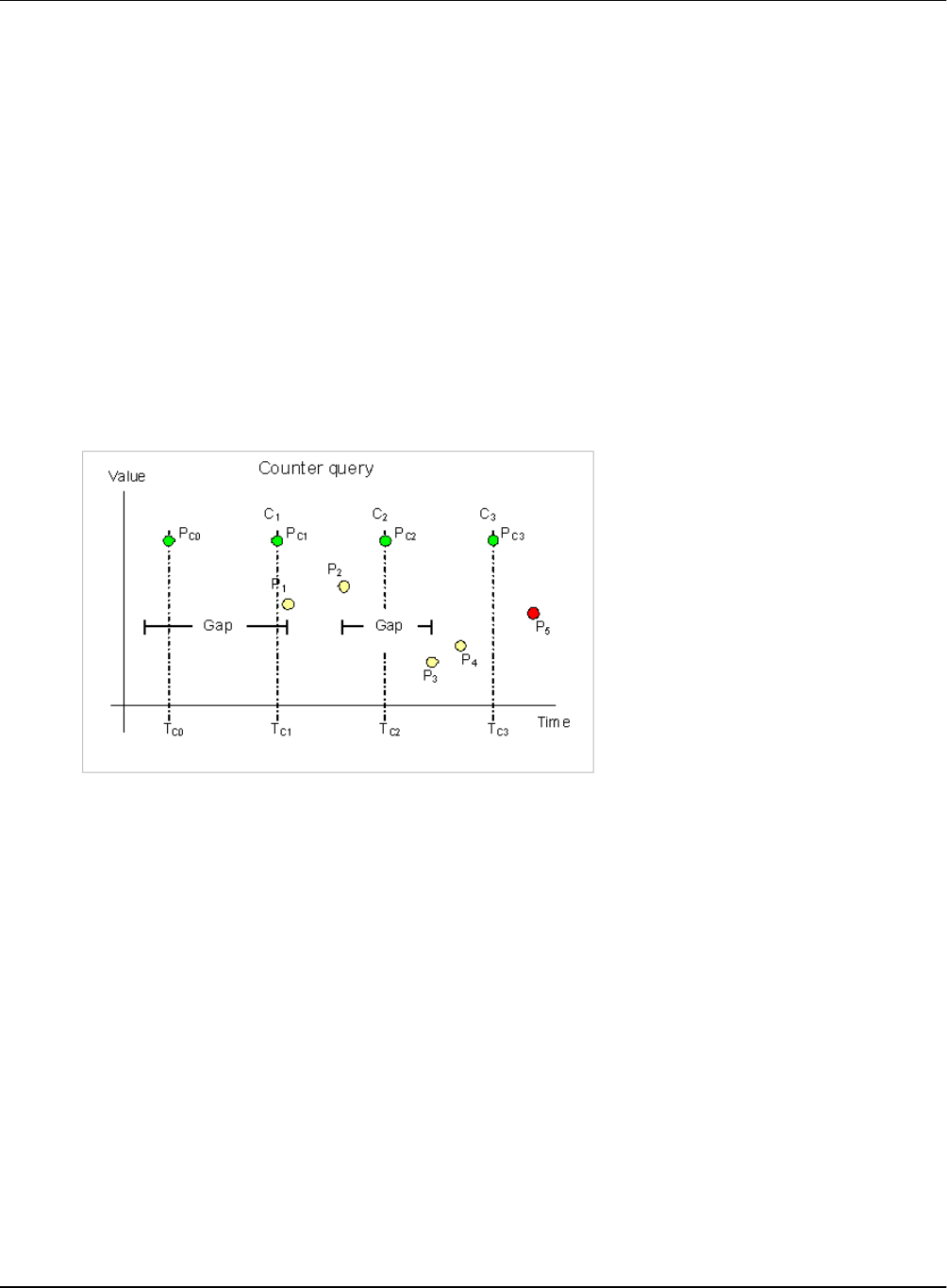
AVEVA™ Historian Retrieval Guide formerly Wonderware Data Retrieval Options
112
A quality rule of GOOD means that data values with uncertain (64) OPC quality are not used in the
retrieval calculations and are ignored. Values with bad QualityDetail indicate gaps in the data.
A quality rule of EXTENDED means that data values with both good and uncertain OPC quality are
used in the retrieval calculations. Values with bad QualityDetail indicate gaps in the data.
A quality rule of OPTIMISTIC means that calculations that include some good and some NULL
values do not cause the overall calculations to return NULL.
You can apply a quality rule to all retrieval modes.
The OPTIMISTIC setting for the quality rule lets you retrieve information that is possibly incomplete but
may nevertheless provide better results where the calculation cycle contains data gaps. This setting
calculates using the last known good value prior to the gap (if possible). The logic for determining the
quality of the points returned remains unchanged. The integral retrieval mode is an exception to this
where the integral is scaled up to cover gaps. For more information, see Integral Retrieval on page 59.
The following figure shows a counter retrieval situation in which three of the four shown cycle boundaries
are located in data gaps. Without using OPTIMISTIC, counter queries would return a NULL at all cycle
boundaries because the mode needs valid good values at each end of the cycle calculate a precise
difference.
If the query were to specify OPTIMISTIC, the counter mode will always return rows with numeric counter
values and good quality. These rows may or may not be precise. The PercentGood column of the row
returns the percentage of time in each cycle in which retrieval was able to find values stored with good
quality, so if the PercentGood is anything less than 100, then the returned row may be incorrect. Quality
is returned as uncertain if percent good is not 100 percent.
Now look at the counter values that are returned using OPTIMISTIC quality in the preceding illustration.
The query skips the value to be returned at the first cycle boundary, because there is not enough
information about the cycle prior to that boundary. At the second cycle boundary, the value 0 will be
returned, because there was a gap in the data for the entire first cycle. In the second cycle, there are two
points, P1 and P2. The query uses P2 as the end value of the cycle and infers a start value of the cycle
from P1. At the third cycle boundary, T
c2
, the query returns P2 – P1. Similarly, at the last cycle boundary,
the query returns P4 – P3.
For the integral retrieval mode, the query does not summarize data for gaps because there is no way to
know which value to use for the summarization. However, if the query specifies OPTIMISTIC quality, the
query uses the last known good value for the summarization in the gap. As described for the counter
retrieval example, the PercentGood column also expresses the quality of the calculated value in integral
retrieval, so if the PercentGood is anything less than 100, then the returned row may be incorrect.
Quality Rule - Query Examples
To force a query to exclude points with doubtful OPC quality, specify the following in the query:
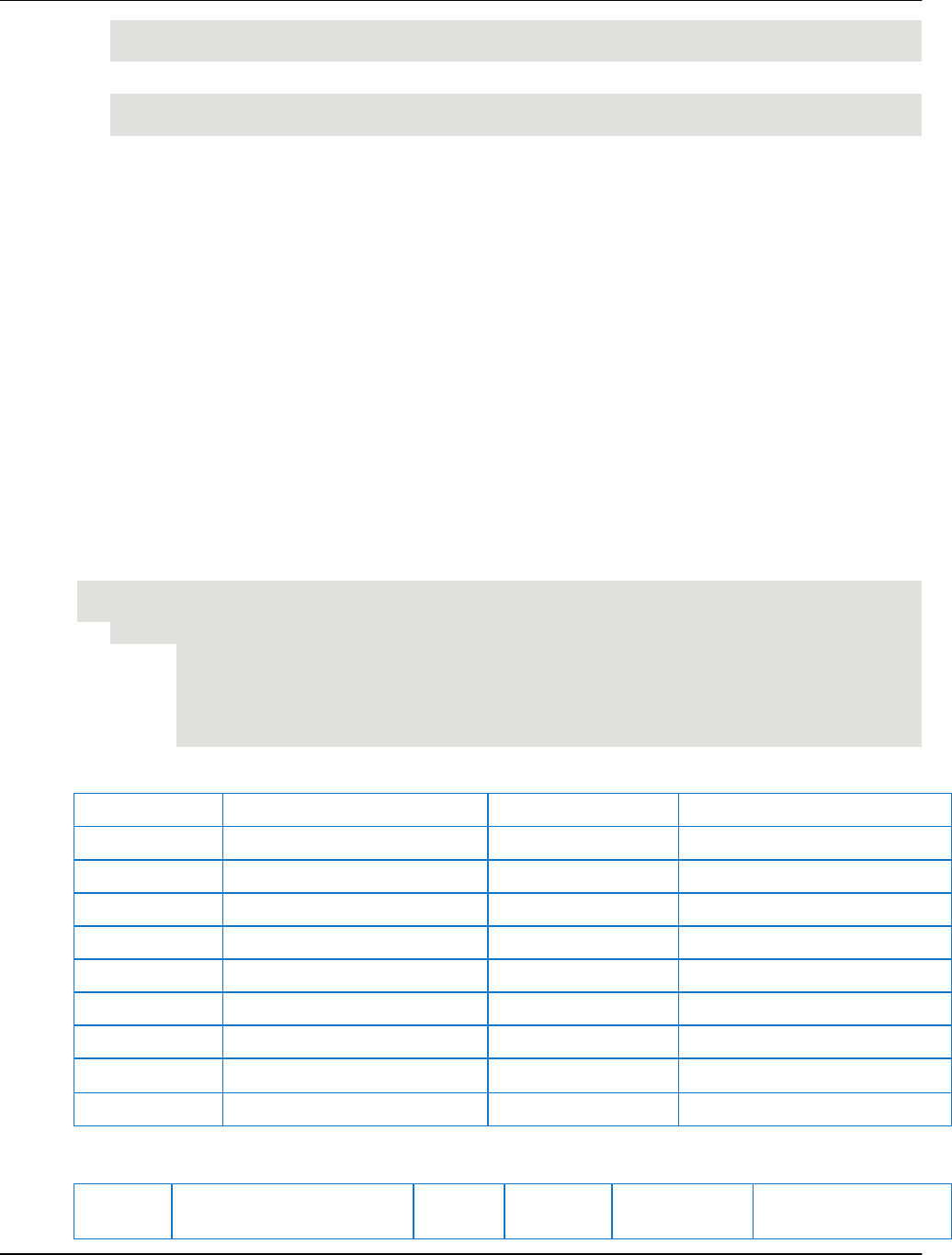
Data Retrieval Options AVEVA™ Historian Retrieval Guide formerly Wonderware
113
AND wwQualityRule = 'Good'
To force a query to use points with both good and doubtful OPC quality, specify the following in the query:
AND wwQualityRule = 'Extended'
For examples, see the following:
Quality Rule - Query 1 on page 113
Quality Rule - Query 2 on page 114
Quality Rule - Query 3 on page 114
Quality Rule - Query 4 on page 115
Quality Rule - Query 5 on page 116
Quality Rule - Query 6 on page 117
Quality Rule - Query 7 on page 117
Quality Rule - Query 8 on page 118
Quality Rule - Query 1
If you include the wwQualityRule column in a SELECT statement, it will show which quality rule was used
for the individual row, if applicable.
You can combine OPC qualities in a query. For example, if you combine a mixture of good OPC qualities
(such as 192 to 219), a good OPC quality (192) will be returned as a combined result.
SELECT TagName, DateTime, Value, QualityDetail, OPCQuality, wwRetrievalMode
FROM History
WHERE TagName = 'I0R5'
AND DateTime >= '2009-09-12 00:20'
AND DateTime <= '2009-09-12 00:40'
AND wwResolution = 10000
AND wwRetrievalMode = 'Avg'
If you run this query against the following sample data:
Tagname
DateTime
Resolution
QualityDetail
I0R5
2009-09-12 00:07
2
193
I0R5
2009-09-12 00:14
3
195
I0R5
2009-09-12 00:22
0
196
I0R5
2009-09-12 00:25
1
199
I0R5
2009-09-12 00:27
0
200
I0R5
2009-09-12 00:29
2
207
I0R5
2009-09-12 00:33
3
215
I0R5
2009-09-12 00:36
0
216
I0R5
2009-09-12 00:39
1
219
The results are:
Tagname
DateTime
Value
QualityD
etail
OPCQuality
wwRetrievalMode
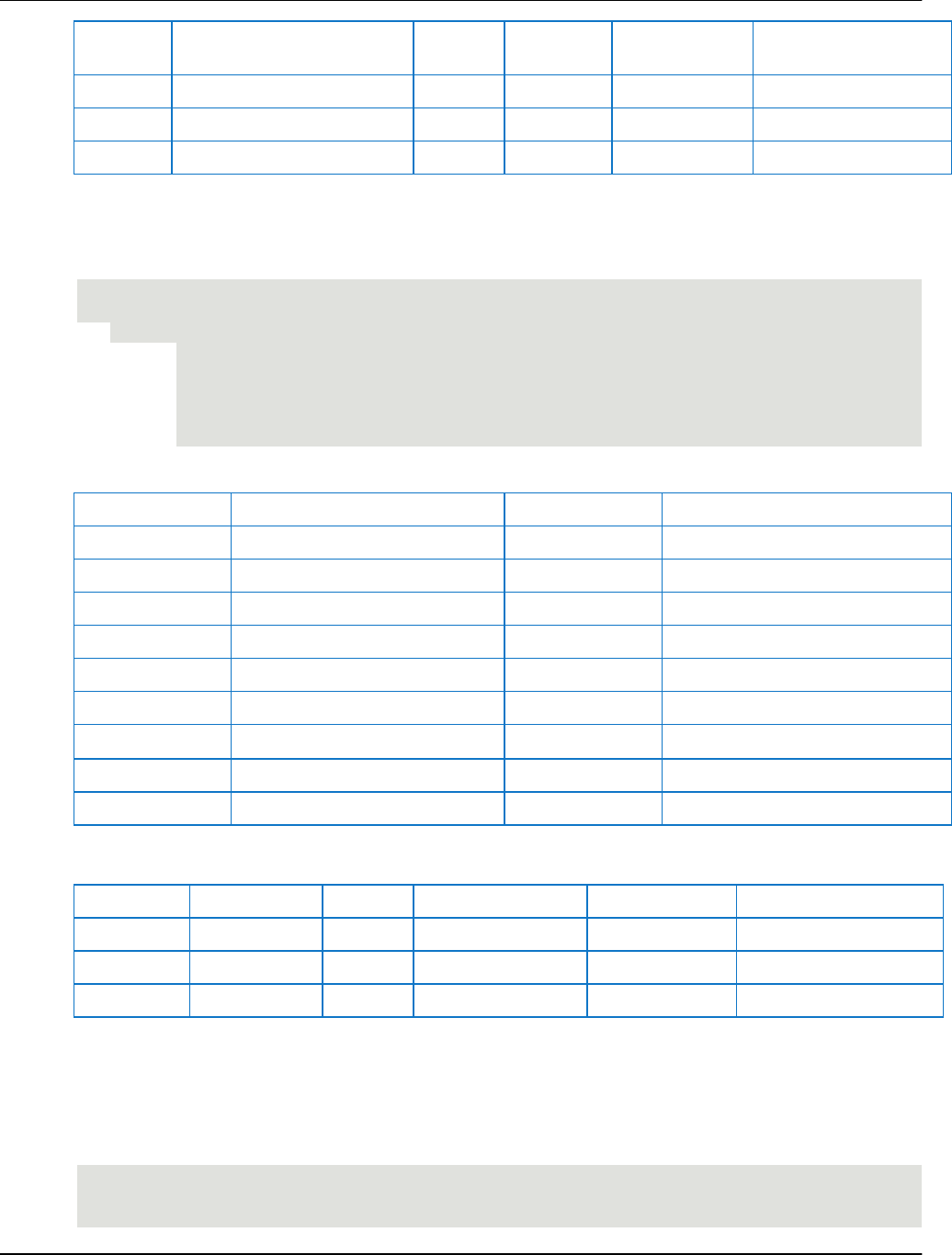
AVEVA™ Historian Retrieval Guide formerly Wonderware Data Retrieval Options
114
Tagname
DateTime
Value
QualityD
etail
OPCQuality
wwRetrievalMode
I0R5
2009-09-12 00:20
2.6
192
192
AVERAGE
I0R5
2009-09-12 00:30
1.0
192
192
AVERAGE
I0R5
2009-09-12 00:40
1.6
192
192
AVERAGE
Quality Rule - Query 2
Similar to Quality Rule - Query 1 on page 113, if you combine a mixture of doubtful OPC qualities, a
doubtful OPC quality (64) will be returned as the combined OPC quality.
SELECT TagName, DateTime, Value, QualityDetail, OPCQuality, wwRetrievalMode
FROM History
WHERE TagName = 'I0R5'
AND DateTime >= '2009-09-12 00:20'
AND DateTime <= '2009-09-12 00:40'
AND wwResolution = 10000
AND wwRetrievalMode = 'Integral'
If you run this query against the following sample data:
Tagname
DateTime
Resolution
QualityDetail
I0R5
2009-09-12 00:07
2
65
I0R5
2009-09-12 00:14
3
68
I0R5
2009-09-12 00:22
0
71
I0R5
2009-09-12 00:25
1
74
I0R5
2009-09-12 00:27
0
79
I0R5
2009-09-12 00:29
2
80
I0R5
2009-09-12 00:33
3
88
I0R5
2009-09-12 00:36
0
92
I0R5
2009-09-12 00:39
1
64
The results are:
Tagname
DateTime
Value
QualityDetail
OPCQuality
wwRetrievalMode
I0R5
00:20
26.0
64
64
INTEGRAL
I0R5
00:30
10.0
64
64
INTEGRAL
I0R5
00:40
16.0
64
64
INTEGRAL
Quality Rule - Query 3
When you combine the same OPC quality then that OPC quality will be returned. However, when there is
no good point in a cycle for cyclic modes such as Integral, Average, Counter, or AnalogSummary, the
returned NULL value will have an OPC quality of 0 and a Quality Detail of 65536, regardless of combined
qualities.
SELECT TagName, StartDateTime, EndDateTime, OPCQuality, PercentGood,
wwRetrievalMode, first
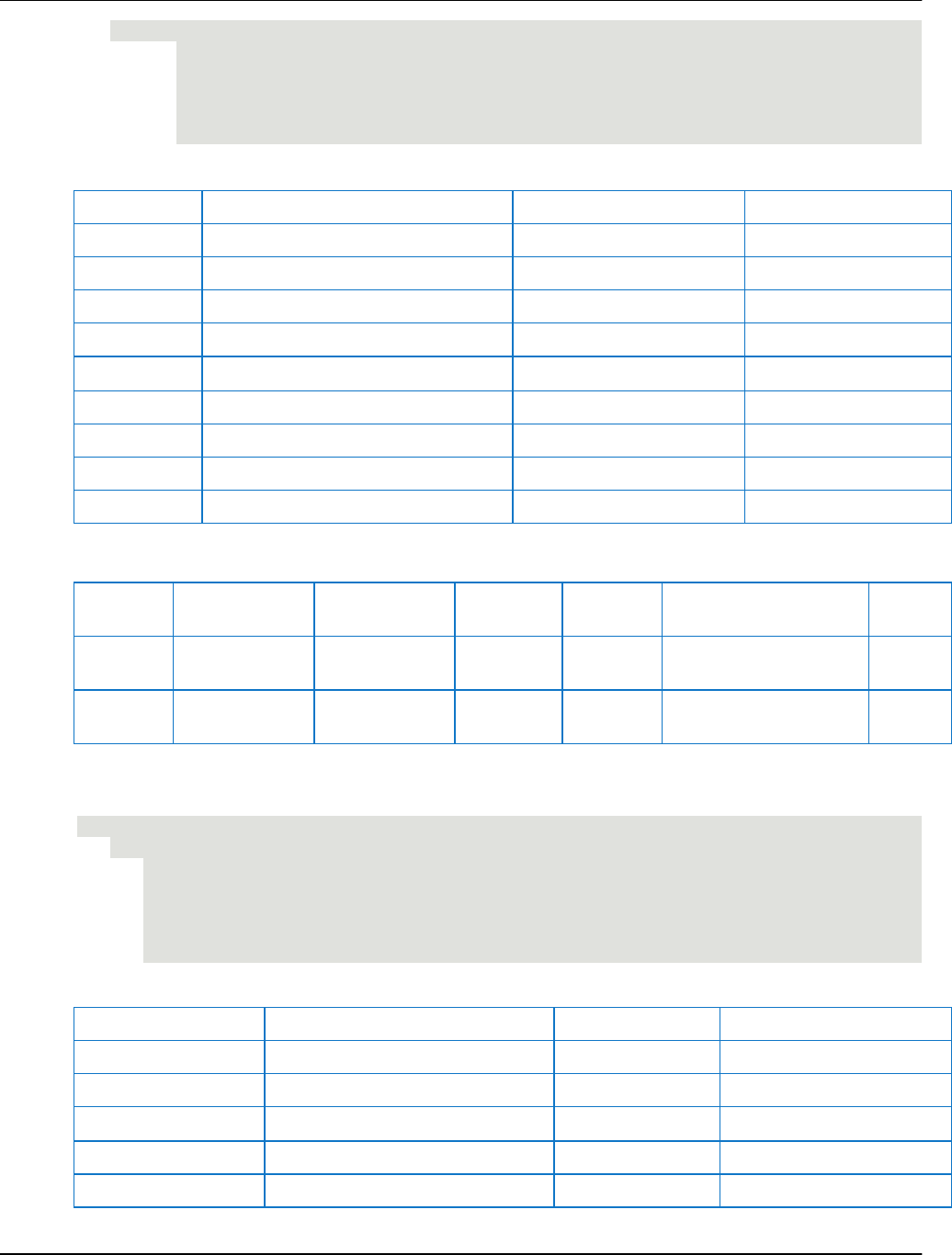
Data Retrieval Options AVEVA™ Historian Retrieval Guide formerly Wonderware
115
FROM AnalogSummaryHistory
WHERE TagName = 'F0R5'
AND StartDateTime >= '2009-09-12 00:20'
AND EndDateTime <= '2009-09-12 00:40'
AND wwResolution = 10000
AND wwRetrievalMode = 'Cyclic'
If you run this query against the following sample data:
Tagname
DateTime
Resolution
QualityDetail
F0R5
2009-09-12 00:07
1.6
78
F0R5
2009-09-12 00:14
3.1
78
F0R5
2009-09-12 00:22
0.2
78
F0R5
2009-09-12 00:25
0.8
78
F0R5
2009-09-12 00:27
0.4
78
F0R5
2009-09-12 00:29
2.2
78
F0R5
2009-09-12 00:33
3.3
78
F0R5
2009-09-12 00:36
0.3
78
F0R5
2009-09-12 00:39
1.2
78
The results are:
Tagname
StartDate
Time
EndDate Time
OPCQuali
ty
Percent
Good
wwRetrievalMode
first
F0R5
2009-09-12
00:20
2009-09-12
00:30
78
100
CYCLIC
0.200
F0R5
2009-09-12
00:30
2009-09-12
00:40
78
100
CYCLIC
3.300
Quality Rule - Query 4
SELECT TagName, DateTime, Value, QualityDetail, OPCQuality, wwRetrievalMode
FROM History
WHERE TagName = 'F0R5'
AND DateTime >= '2009-09-12 00:20'
AND DateTime <= '2009-09-12 00:40'
AND wwResolution = 10000
AND wwRetrievalMode = 'Avg'
If you run this query against the following sample data:
Tagname
DateTime
Resolution
QualityDetail
F0R5
2009-09-12 00:07
1.6
15
F0R5
2009-09-12 00:14
3.1
15
F0R5
2009-09-12 00:22
0.2
15
F0R5
2009-09-12 00:25
0.8
15
F0R5
2009-09-12 00:27
0.4
15
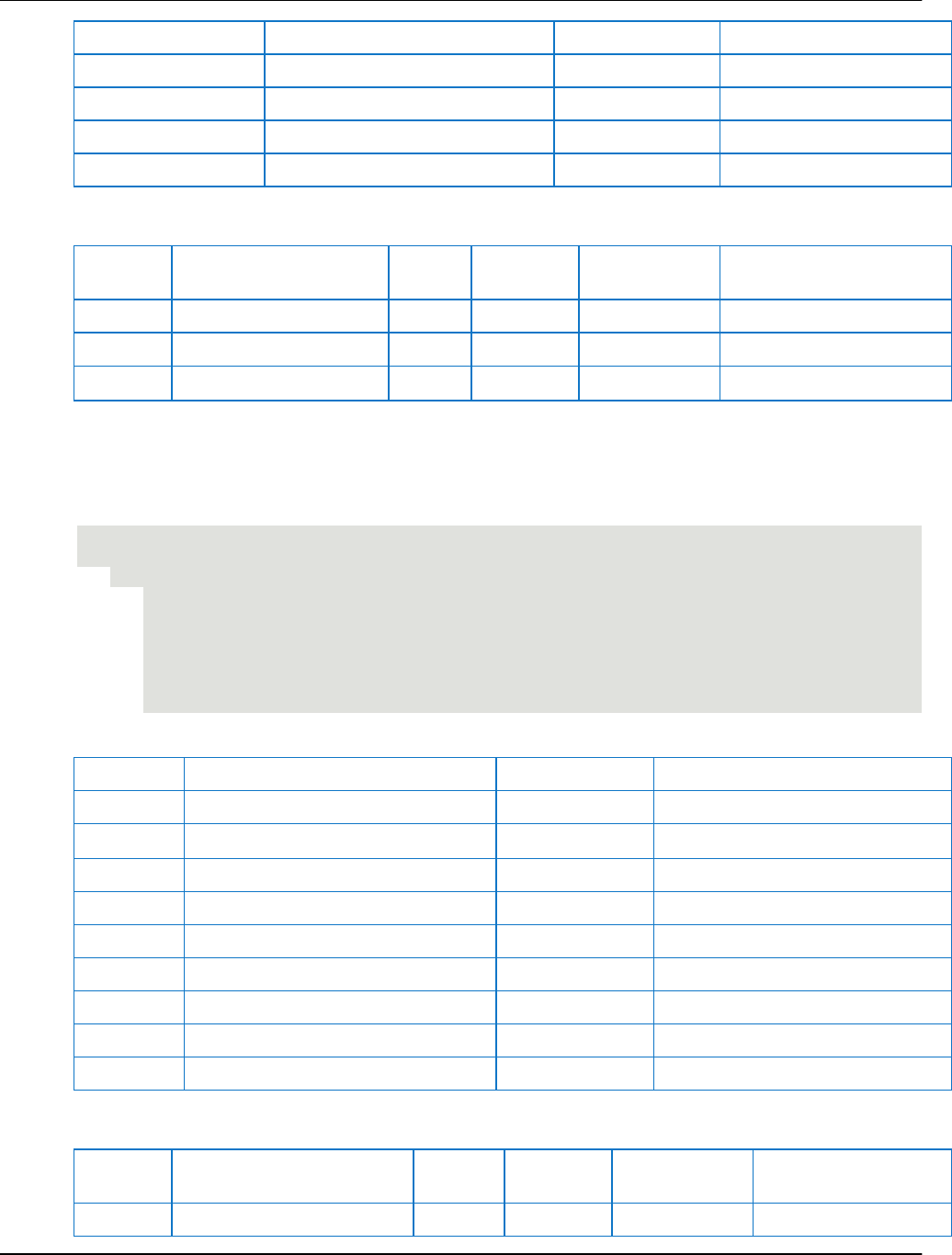
AVEVA™ Historian Retrieval Guide formerly Wonderware Data Retrieval Options
116
Tagname
DateTime
Resolution
QualityDetail
F0R5
2009-09-12 00:29
2.2
15
F0R5
2009-09-12 00:33
3.3
15
F0R5
2009-09-12 00:36
0.3
15
F0R5
2009-09-12 00:39
1.2
15
The results are:
Tagname
DateTime
Value
QualityD
etail
OPCQuality
wwRetrievalMode
F0R5
2009-09-12 00:20
NULL
65536
0
AVERAGE
F0R5
2009-09-12 00:30
NULL
65536
0
AVERAGE
F0R5
2009-09-12 00:40
NULL
65536
0
AVERAGE
Quality Rule - Query 5
When you combine a mixture of good, bad, and uncertain OPC qualities, a doubtful OPC quality (64) will
be returned as a combined result.
SELECT TagName, DateTime, Value, QualityDetail, OPCQuality, wwRetrievalMode
FROM History
WHERE TagName = 'F0R5'
AND DateTime >= '2009-09-12 00:20'
AND DateTime <= '2009-09-12 00:40'
AND wwResolution = 10000
AND wwRetrievalMode = 'Avg'
AND wwQualityRule = 'Optimistic'
If you run this query against the following sample data:
Tagname
DateTime
Resolution
QualityDetail
F0R5
2009-09-12 00:07
1.6
15
F0R5
2009-09-12 00:14
3.1
69
F0R5
2009-09-12 00:22
0.2
78
F0R5
2009-09-12 00:25
0.8
200
F0R5
2009-09-12 00:27
0.4
15
F0R5
2009-09-12 00:29
2.2
92
F0R5
2009-09-12 00:33
3.3
88
F0R5
2009-09-12 00:36
0.3
199
F0R5
2009-09-12 00:39
1.2
196
The results are:
Tagname
DateTime
Value
QualityD
etail
OPCQuality
wwRetrievalMode
F0R5
2009-09-12 00:20
2.012
64
64
AVERAGE
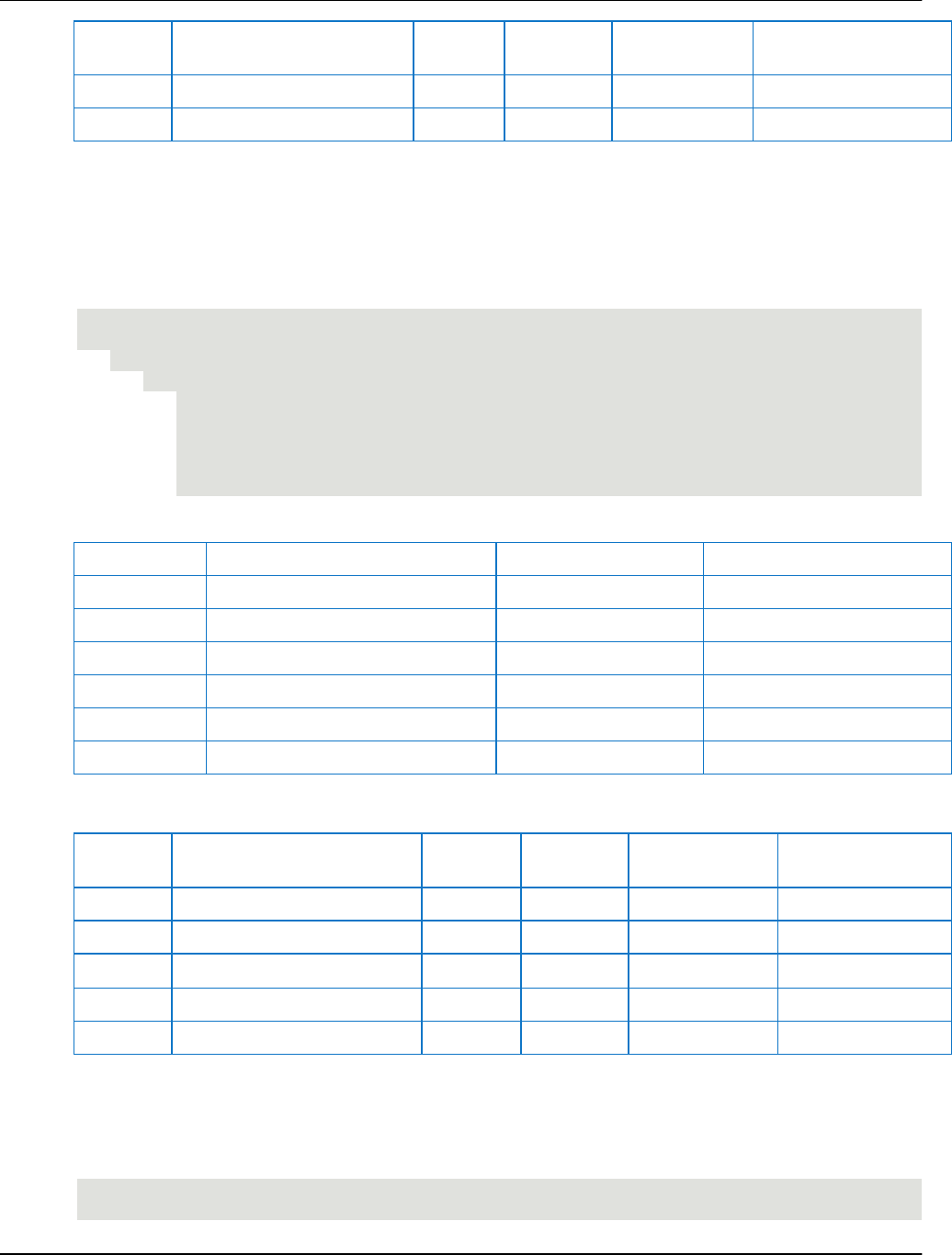
Data Retrieval Options AVEVA™ Historian Retrieval Guide formerly Wonderware
117
Tagname
DateTime
Value
QualityD
etail
OPCQuality
wwRetrievalMode
F0R5
2009-09-12 00:30
0.820
64
64
AVERAGE
F0R5
2009-09-12 00:40
1.751
64
64
AVERAGE
Quality Rule - Query 6
For RoundTrip, StateSummary, and ValueState modes, the OPC qualities are only combined with the
same state in a cycle. If the state only occurs once in a cycle, then the qualities of that state will be
returned. The returned NULL state will always have an OPC quality of 0 and Quality Detail of 65536. The
same qualities are returned for a state that has no roundtrip in RoundTrip mode.
SELECT TagName, DateTime, Value, QualityDetail, OPCQuality, StateTime
FROM History
WHERE TagName = 'I001'
AND DateTime >= '2009-09-12 00:20'
AND DateTime <= '2009-09-12 00:40'
AND wwResolution = 10000
AND wwRetrievalMode = 'RoundTrip'
AND wwStateCalc = 'MaxContained'
If you run this query against the following sample data:
Tagname
DateTime
Resolution
QualityDetail
I001
2009-09-12 00:12
1
90
I001
2009-09-12 00:15
2
65
I001
2009-09-12 00:22
1
85
I001
2009-09-12 00:23
2
75
I001
2009-09-12 00:26
1
75
I001
2009-09-12 00:29
2
70
The results are:
Tagname
DateTime
Value
QualityD
etail
OPC-Quality
StateTime
I001
2009-09-12 00:20
NULL
65536
0
NULL
I001
2009-09-12 00:20
1.0
90
90
NULL
I001
2009-09-12 00:20
2.0
65
65
NULL
I001
2009-09-12 00:20
1.0
64
64
4000
I001
2009-09-12 00:20
2.0
64
64
6000
Quality Rule - Query 7
The returned Quality Detail is the same as OPC quality unless there is special flag for certain indication;
for example, when there is indication for rollover in counter mode.
SELECT TagName, DateTime, Value, QualityDetail, OPCQuality
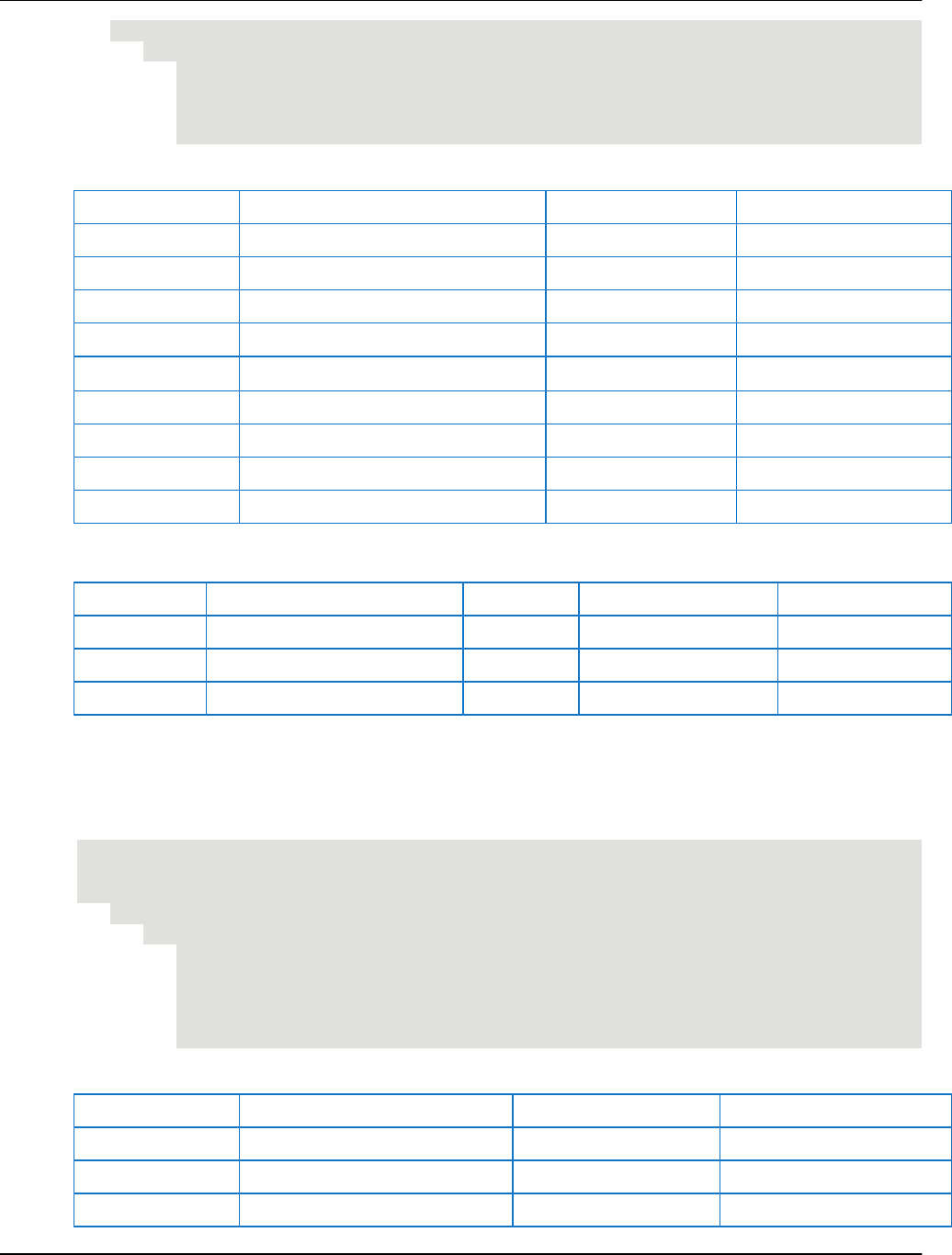
AVEVA™ Historian Retrieval Guide formerly Wonderware Data Retrieval Options
118
FROM History
WHERE TagName = 'I0R5'
AND DateTime >= '2009-09-12 00:20'
AND DateTime <= '2009-09-12 00:40'
AND wwResolution = 10000
AND wwRetrievalMode = 'Avg'
If you run this query against the following sample data:
Tagname
DateTime
Resolution
QualityDetail
I0R5
2009-09-12 00:07
2
218
I0R5
2009-09-12 00:14
3
218
I0R5
2009-09-12 00:22
0
218
I0R5
2009-09-12 00:25
1
218
I0R5
2009-09-12 00:27
0
218
I0R5
2009-09-12 00:29
2
218
I0R5
2009-09-12 00:33
3
218
I0R5
2009-09-12 00:36
0
218
I0R5
2009-09-12 00:39
1
218
The results are:
Tagname
DateTime
Value
QualityDetail
OPCQuality
I0R5
2009-09-12 00:20
2.6
218
218
I0R5
2009-09-12 00:30
1.0
218
218
I0R5
2009-09-12 00:40
1.6
218
218
Quality Rule - Query 8
For Interpolated mode only, the returned row with Linear wwInterpolationType will have combined
qualities.
SELECT TagName, DateTime, Value, QualityDetail, OPCQuality, wwRetrievalMode,
wwInterpolationType
FROM History
WHERE TagName = 'I0R5'
AND DateTime >= '2009-09-12 00:20'
AND DateTime <= '2009-09-12 00:40'
AND wwResolution = 10000
AND wwRetrievalMode = 'Interpolated'
AND wwInterpolationType = 'Linear'
If you run this query against the following sample data:
Tagname
DateTime
Resolution
QualityDetail
I0R5
2009-09-12 00:07
2
193
I0R5
2009-09-12 00:14
3
195
I0R5
2009-09-12 00:22
0
196
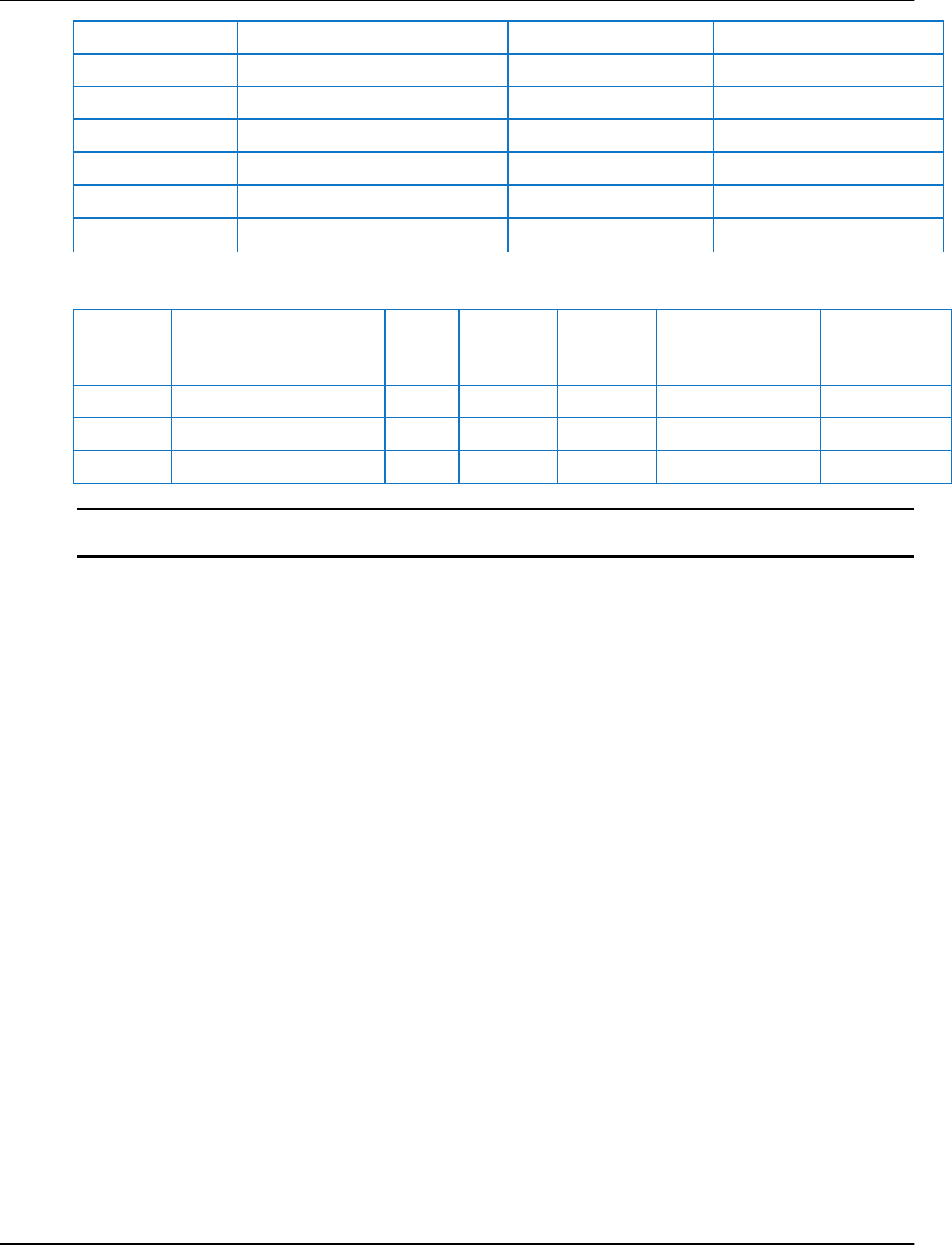
Data Retrieval Options AVEVA™ Historian Retrieval Guide formerly Wonderware
119
Tagname
DateTime
Resolution
QualityDetail
I0R5
2009-09-12 00:25
1
199
I0R5
2009-09-12 00:27
0
200
I0R5
2009-09-12 00:29
2
207
I0R5
2009-09-12 00:33
3
215
I0R5
2009-09-12 00:36
0
216
I0R5
2009-09-12 00:39
1
219
The results are:
Tagname
DateTime
Value
Quality
Detail
OPC
Quality
wwRetrieval
Mode
wwInter
polation
Type
I0R5
2009-09-12 00:20
0.8
192
192
Interpolated
Linear
I0R5
2009-09-12 00:30
2.3
192
192
Interpolated
Linear
I0R5
2009-09-12 00:40
1.0
192
219
Interpolated
Linear
Note: Cyclic, Full, Delta, Maximum, Minimum, and BestFit do not have combined qualities; therefore,
the rules are not applied to these modes..
State Calculation (wwStateCalc)
The state calculation setting applies to ValueState and RoundTrip retrieval.
For ValueState retrieval, you can choose the type of state calculation (aggregation) to be performed on
the data:
Minimum: The shortest amount of time that the tag has been in each unique state.
Maximum: The longest amount of time that the tag has been in each unique state.
Average: The average amount of time that the tag has been in each unique state.
Total: The total amount of time that the tag has been in each unique state.
Percent: The total percentage of time that the tag has been in each unique state.
MinContained: The shortest amount of time each tag has been in each unique state for each cycle,
disregarding the occurrences that are not fully contained with the calculation cycle.
MaxContained: The longest amount of time that the tag has been in each unique state for each
cycle, disregarding the occurrences that are not fully contained with the calculation cycle.
AvgContained: The average amount of time that the tag has been in each unique state for each
cycle, disregarding the occurrences that are not fully contained with the calculation cycle.
TotalContained: The total amount of time that the tag has been in each unique state for each cycle,
disregarding the occurrences that are not fully contained with the calculation cycle.
PercentContained: The percentage of time that the tag has been in each unique state for each
cycle, disregarding the occurrences that are not fully contained with the calculation cycle.
All results except Percent are in milliseconds. Percent is a percentage typically between 0.0 and 100.0.
The percentage can be higher than 100 in certain circumstances.

AVEVA™ Historian Retrieval Guide formerly Wonderware Data Retrieval Options
120
The nature of the data and how you set the cycle count determines whether you should use a "contained"
version of the aggregation. The calculations apply to each unique value state that the tag was in during
each retrieval cycle for the query. The total and percent calculations are always exact, but the minimum,
maximum, and average calculations are subject to "arbitrary" cycle boundaries that do not coincide with
the value changes. Therefore, non-intuitive results may be returned. This is most apparent for
slowly-changing tags queried over long cycles.
For example, a string tag that assumes only two distinct values changing every 10 minutes is queried
with a cycle time of two hours. Going into a cycle, the value (state) at the cycle boundary is recorded. If
the value then changes a short while into the cycle, the state found at the cycle start time will most likely
end up being the minimum value. Likewise, the state at the cycle end time is cut short at the cycle end
time. The two cut-off occurrences in turn skew the average calculation.
For RoundTrip retrieval, you can only specify the following types of state calculations (aggregations) to
be performed on the data. The calculations are for each unique state within each retrieval cycle for the
query.
MinContained. The shortest time span between consecutive leading edges of any state that occurs
multiple times within the cycle, while disregarding state occurrences that are not fully contained
inside of the cycle.
MaxContained. The longest time span between consecutive leading edges of any state that occurs
multiple times within the cycle, while disregarding state occurrences that are not fully contained
inside of the cycle.
AvgContained. The average time span between consecutive leading edges of any state that occurs
multiple times within the cycle, while disregarding state occurrences that are not fully contained
inside of the cycle. (This is the default.)
TotalContained. The total time span between consecutive leading edges of any state that occurs
multiple times within the cycle while disregarding state occurrences that are not fully contained inside
of the cycle.
PercentContained. The percentage of the cycle time spent in time span between consecutive
leading edges for a state that occurs multiple times within the cycle while disregarding value
occurrences that are not fully contained inside of the cycle.
Analog Value Filtering (wwFilter)
You can use the following analog filters for all retrieval modes:
Statistical removal of outliers
Analog to discrete conversion
Zero around a base value
These filters are applied in a query to retrieve data from the History table, WideHistory table, or
StateWideHistory table. These filter only apply to analog tags. All other types of tags, including analog
summary tags, are not supported.
You need to specify a filter name in the virtual column wwFilter, with or without an override, to the set of
parameters that are defined for the specified filter. The filters are specified as C-like functions:
parentheses are always required, even when you choose not to override the default parameters by
passing no parameters.
The default value for the wwFilter column is ‘NoFilter’. If the query does not specify the wwFilter element
at all, or if its default value is not overridden, then no filter is applied.
When you use the analog filters in a query that uses wwQualityRule, wwQualityRule is applied first and
wwFilter is applied later. You can only use one filter per query.
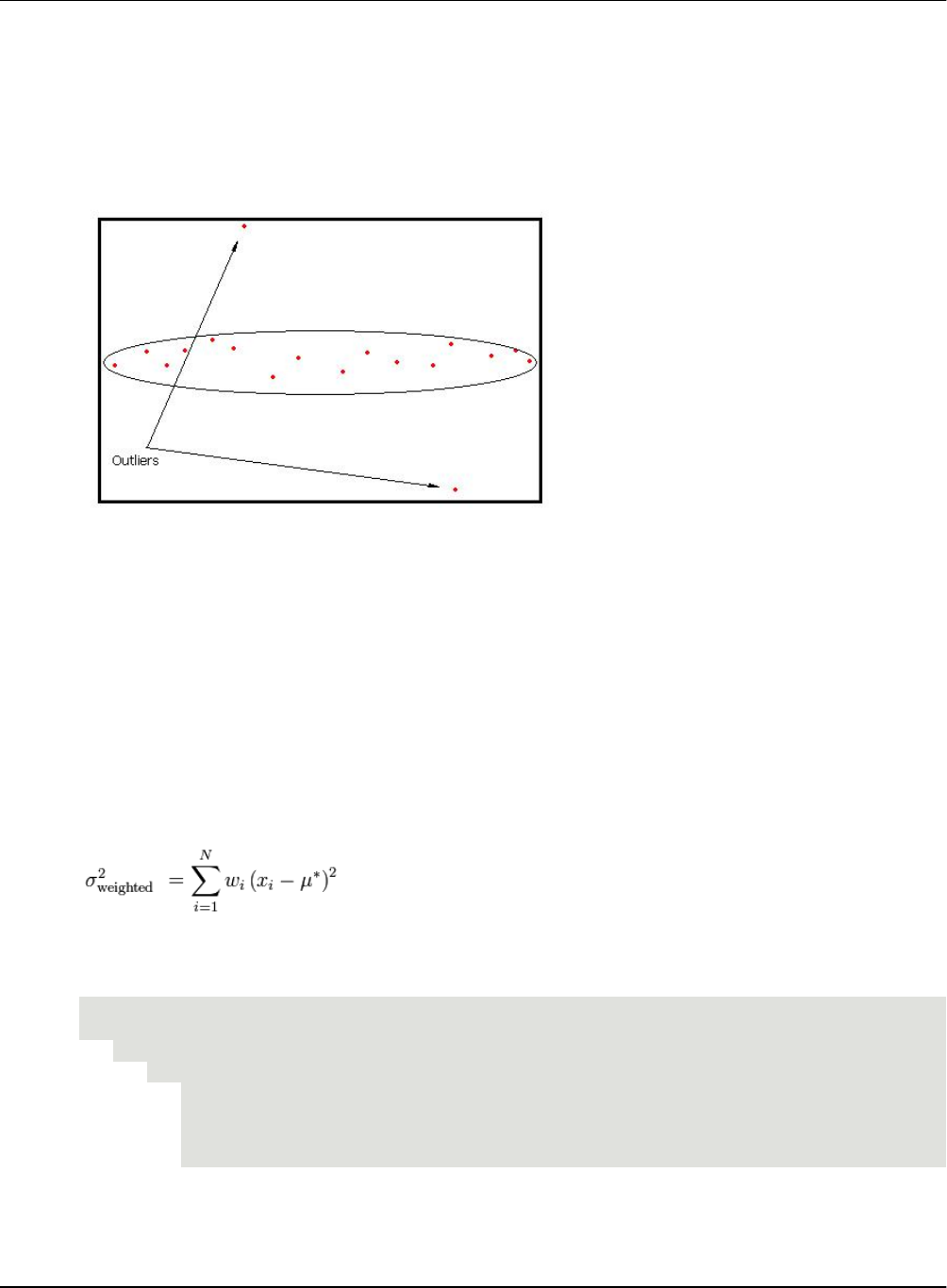
Data Retrieval Options AVEVA™ Historian Retrieval Guide formerly Wonderware
121
Statistically Removing Outliers (SigmaLimit)
This analog filter removes outliers from a set of analog points based on the assumption that the
distribution of point values in the set is a normal distribution.
The following illustration shows an example of outliers.
You can filter outliers by specifying a filter called ‘SigmaLimit()’. This filter has one parameter defined for
specifying the value of n. This parameter is of type double. If the parameter is omitted, then a default
parameter of 2.0 is used.
When this filter is specified in any retrieval mode, a time weighted mean, ì (mu), and time weighted
standard deviation, ó (sigma), are found for each analog tag for the entire query range including phantom
cycles if any, and points falling outside of the range [ì - nó, ì + nó] are removed from the point set before
the points are processed further. In other words, the value will be filtered out if value > ì + nó or value < ì
– nó.
Time weighted standard deviation is calculated as:
Math.Sqrt( (integralOfSquares - 2 * timeWeightedAverage * integral + totalTime * timeWeightedAverage
* timeWeightedAverage)/totalTime);
This is the single pass equivalent to the formula:
Ranges where the value is NULL are excluded from these calculations.
A cyclic query example using a ‘SigmaLimit()’ filter without specifying the n value would look like this:
SELECT DateTime, Value, wwFilter
FROM History
WHERE TagName = ('TankLevel')
AND DateTime >= '2008-01-15 15:00:00'
AND DateTime <= '2008-01-15 17:00:00'
AND wwRetrievalMode = 'Cyclic'
AND wwFilter = 'SigmaLimit()'
Not specifying the n-value as done here is the same as specifying ‘SigmaLimit(2)’. The result set might
look like this:

AVEVA™ Historian Retrieval Guide formerly Wonderware Data Retrieval Options
122
DateTime
Value
wwFilter
2008-01-15 15:00:00.000
34.56
SigmaLimit()
2008-01-15 16:00:00.000
78.90
SigmaLimit()
2008-01-15 17:00:00.000
12.34
SigmaLimit()
If the first value would be filtered out by the SigmaLimit filter, the value will be replaced with the time
weighted mean.
Converting Analog Values to Discrete Values (ToDiscrete)
The analog to discrete conversion filter allows you to convert value streams for any analog tag in the
query tag list into discrete value streams. The filter can be used with all the retrieval modes.
To convert analog values to discrete values, specify the ToDiscrete() filter in the wwFilter column. This
filter has two parameters:
Parameter
Valid Values
Default Value
CutoffValue
any double value
0.0
Operator
>, >=, or <=
>
The following are supported syntaxes.
ToDiscrete()
ToDiscrete(2)
ToDiscrete(2, >=)
The following are unsupported syntaxes.
ToDiscrete(2,)
ToDiscrete(, >=)
ToDiscrete(>=)
The cutoff value holds the value that signifies the boundary between values that are to be interpreted as
OFF and values that are to be interpreted as ON.
The operator parameter controls the value range relati ve to the cutoff value to convert to the ON value
and vice versa.
NULLs encountered in the analog value stream are copied unchanged to the discrete value stream. The
quality of each discrete point is copied from the analog point that causes its production. However, the
quality detail for values modified with this filter will have the QualityDetail flag 0x2000 (value changed by
filter) set. For example, consider the following ValueState query:
SELECT DateTime, vValue, StateTime, wwFilter
FROM History
WHERE TagName IN ('SysTimeSec')
AND DateTime >= '2008-01-15 15:00:00'
AND DateTime <= '2008-01-15 17:00:00'
AND wwRetrievalMode = 'ValueState'
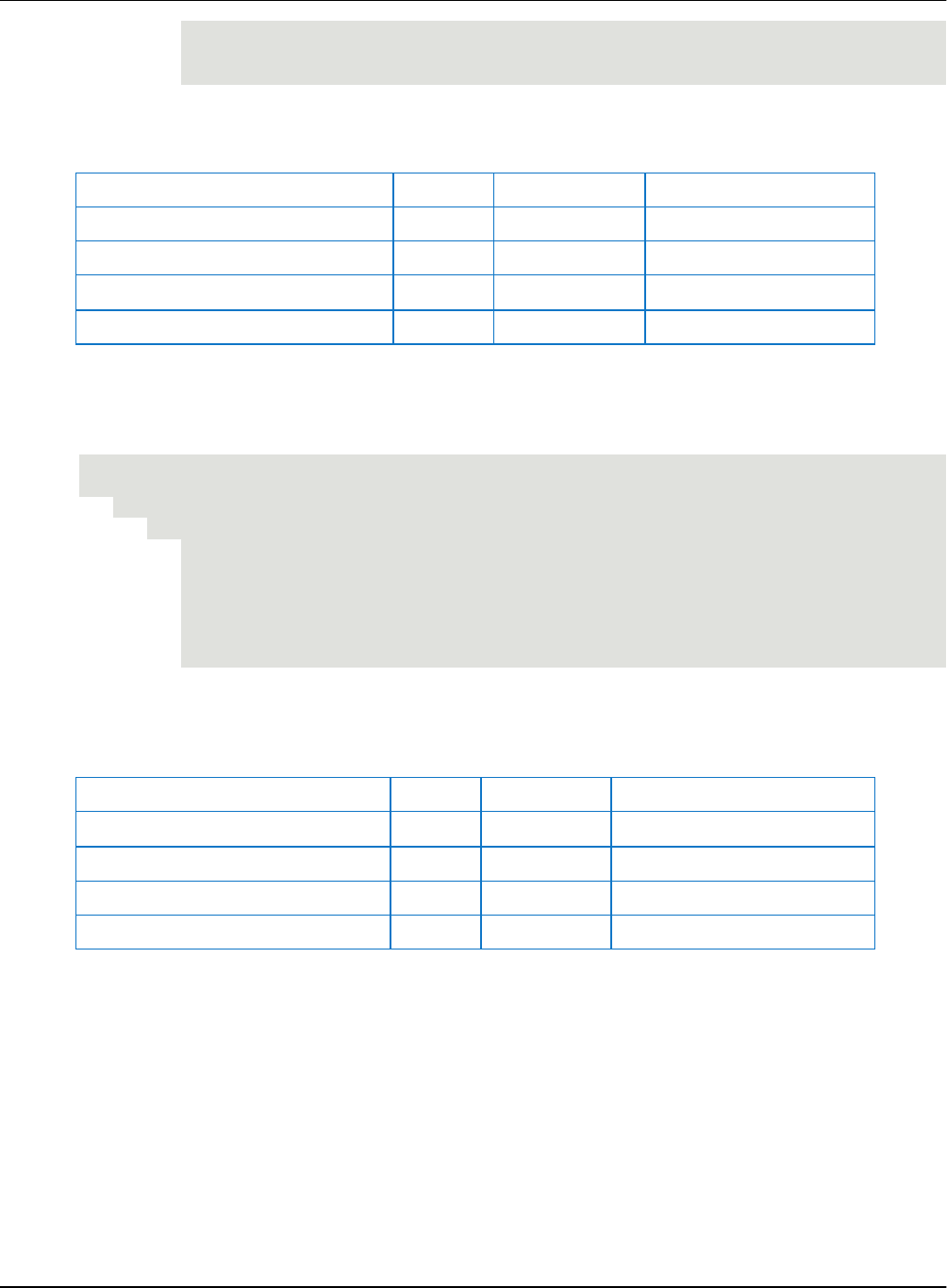
Data Retrieval Options AVEVA™ Historian Retrieval Guide formerly Wonderware
123
AND wwStateCalc = 'MinContained'
AND wwResolution = 7200000
AND wwFilter = 'ToDiscrete(29, >)'
Here the operator is specified as >, so values greater than but not including 29 are internally converted to
ON, whereas values from 0 to 29 are converted to OFF. This query could return the following rows:
DateTime
vValue
StateTime
wwFilter
2008-01-15 15:00:00.000
0
30000
ToDiscrete(29, >)
2008-01-15 15:00:00.000
1
30000
ToDiscrete(29, >)
2008-01-15 17:00:00.000
0
30000
ToDiscrete(29, >)
2008-01-15 17:00:00.000
1
30000
ToDiscrete(29, >)
The values returned in the StateTime column show that the shortest amount of time that SysTimeSec
had values equivalent to either ON or OFF and remained in that state was 30 seconds. A similar
RoundTrip query would look like this:
SELECT DateTime, vValue, StateTime, wwFilter
FROM History
WHERE TagName IN ('SysTimeSec')
AND DateTime >= '2008-01-15 15:00:00'
AND DateTime <= '2008-01-15 17:00:00'
AND wwRetrievalMode = 'RoundTrip'
AND wwStateCalc = 'MaxContained'
AND wwResolution = 7200000
AND wwFilter = 'ToDiscrete(29, <=)'
Here the operator is specified as <=, so the resulting conversion is exactly opposite to that performed in
the previous query. Now values smaller than or equal to 29 are internally converted to ON, whereas
values from 30 to 59 are converted to OFF. This query could return the following rows:
DateTime
vValue
StateTime
wwFilter
2008-01-15 15:00:00.000
0
60000
ToDiscrete(29, <=)
2008-01-15 15:00:00.000
1
60000
ToDiscrete(29, <=)
2008-01-15 17:00:00.000
0
60000
ToDiscrete(29, <=)
2008-01-15 17:00:00.000
1
60000
ToDiscrete(29, <=)
The values returned in the StateTime column now show that the longest amount of time found between
roundtrips for both the OFF and the ON state within the 2-hour cycles was 60 seconds.
Using the ToDiscrete() filter is similar to using edge detection for event tags. Edge detection returns
the actual value with a timestamp in history for when a value matched a certain criteria. The
ToDiscrete() filter returns either a 1 or 0 to show that the criteria threshold was crossed. The
ToDiscrete() filter is more flexible, however, in the following ways:
You can use it with delta and full retrieval.
You can combine it with "time-in-state" calculations to determine how long a value is above a certain
threshold or the duration between threshold times.

AVEVA™ Historian Retrieval Guide formerly Wonderware Data Retrieval Options
124
Use the ToDiscrete() filter if you are mostly interested in when something occurred, and not necessarily
the exact value of the event.
For more information on edge detection, see Edge Detection for Events (wwEdgeDetection) on page 78.
"Zeroing" Around a Base Value (SnapTo)
This analog filter lets you force values in a well-defined range around one or more base values to "snap
to" that base value. For example, you can use this filter when a tank is known to be empty, but the tag
that stores the tank level returns a "noisy" value close to zero.
The filter can be used with all retrieval modes, but its main benefits are in the aggregate retrieval modes:
average, integral, minimum, and maximum.
To zero values around the base value, specify the SnapTo() filter in the wwFilter column of the query.
The syntax for this filter is:
SnapTo([tolerance[,base_value_1[, base_value_2]…]])
This filter has two parameters:
Parameter
Valid Values
Default Value
Tolerance
any double value
0.01
BaseValue
zero, one, or up to 100 comma-separated double
values
single base value of 0.0
The following are supported syntaxes.
SnapTo() – Same as SnapTo(0.01, 0.0)
SnapTo(3.7) – Same as SnapTo(3.7, 0.0)
SnapTo(3,) – Syntax Error
SnapTo(,0) – Syntax error
SnapTo(,) – Syntax error
SnapTo(3, 4, -5) – Tolerance=3, Base Values 4 and -5.
When the Snap to filter is specified, point values falling inside any of the ranges [Base value – Tolerance,
Base value + Tolerance] will be forced to the base value before the point goes into further retrieval
processing. The result is undefined if the base value +/- tolerance exceeds the range of the double data
type. The range is calculated using this expression:
If (x <= Base value + Tolerance AND x >= Base value – Tolerance)
x = Base value
where x is the value of the point then if ranges overlap, the first matching base value will be used.
A query example from the History table looks like this:
SELECT DateTime, Value, wwFilter
FROM History
WHERE TagName = ('TankLevel')
AND DateTime >= '2008-01-15 15:00:00'
AND DateTime <= '2008-01-15 17:00:00'
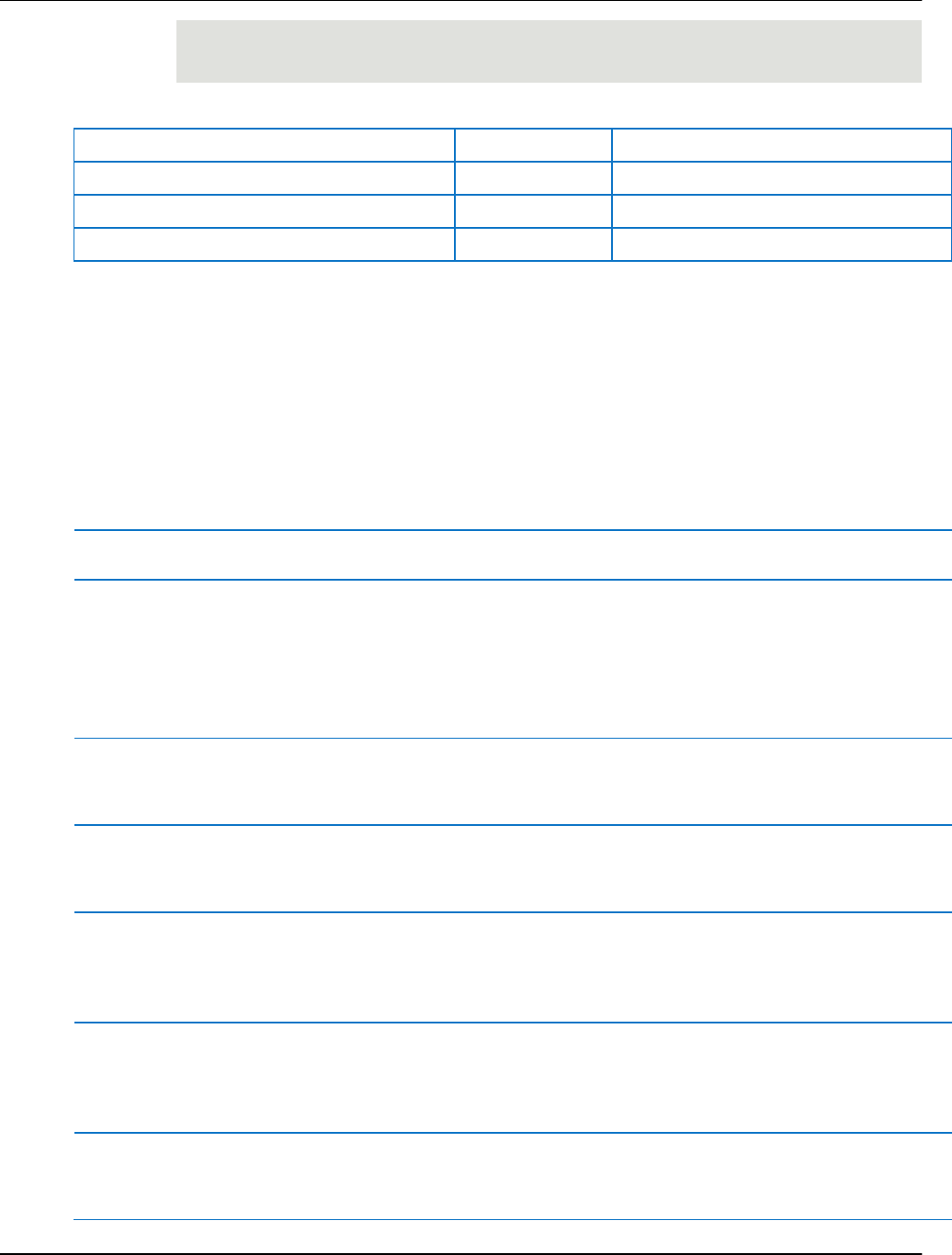
Data Retrieval Options AVEVA™ Historian Retrieval Guide formerly Wonderware
125
AND wwRetrievalMode = 'Average'
AND wwResolution = 3600000
AND wwFilter = 'SnapTo(0.01, 0, 1000)'
The following rows might be returned:
DateTime
Value
wwFilter
2008-01-15 15:00:00.000
0
SnapTo(0.01, 0, 1000)
2008-01-15 16:00:00.000
875.66
SnapTo(0.01, 0, 1000)
2008-01-15 17:00:00.000
502.3
SnapTo(0.01, 0, 1000)
When a value is snapped, the QualityDetail bit flag 0x2000 is set.
If the filter syntax is not correct, a syntax error is returned and no rows are returned.
Selecting Values for Analog Summary Tags (wwValueSelector)
For an analog summary tag, multiple summarized values can be stored in the historian for a single
summarization period. When you query analog summary data, a single value, time, and quality (VTQ)
must first be extrapolated from the summarized values.
You set the value selector in the query to specify which summarized value to return. The possible values
are as follows:
Value Selector Setting
Value Returned
Timestamp Returned
AUTO
The retrieval mode determines the
value. See the following table for how
AUTO applies to the value selection.
This is the default value.
The retrieval mode determines the
timestamp. See the following table
for how AUTO applies to the value
selection. This is the default value.
FIRST
The first value that occurs within the
summary period.
The actual timestamp of the first
value occurrence within the
summary period.
LAST
The last value that occurs within the
summary period.
The actual timestamp of the last
value occurrence within the
summary period.
MIN or MINIMUM
The first minimum value that occurs
within the summary period.
The actual timestamp of the first
minimum value occurrence within
the summary period.
MAX or MAXIMUM
The first maximum value that occurs
within the summary period.
The actual timestamp of the first
maximum value occurrence within
the summary period.
AVG or AVERAGE
A time-weighted average calculated
from values within the summary
period.
The summary period start time.

AVEVA™ Historian Retrieval Guide formerly Wonderware Data Retrieval Options
126
Value Selector Setting
Value Returned
Timestamp Returned
INTEGRAL
An integral value calculated from
values within the summary period.
The summary period start time.
STDDEV or
STANDARDDEVIATION
A standard deviation calculated from
values within the summary period.
The summary period start time.
The following table describes the value to be considered if the value selector is set to AUTO:
Retrieval Mode
Analog Summary Behavior
Cyclic
The last value within the summary period is used. The actual timestamp of the last
value occurrence within the summary period is used.
Delta
The last value within the summary period is used. The actual timestamp of the last
value occurrence within the summary period is used.
Full
The last value within the summary period is used. The actual timestamp of the last
value occurrence within the summary period is used.
Interpolated
The retrieval mode determines the appropriate value to return. See the following table
for how AUTO applies to the value selection. This is the default value.
Best Fit
The first, last, min, and max points from analog summaries are all considered as
analog input points. Best fit analysis is done with these points. If the analog summary
percentage good is not 100%, the cycle is considered to have a NULL.
Average
The averages of analog summaries are calculated using the values from the Average
column of the AnalogSummaryHistory table. Interpolation type is ignored for analog
summary values, and STAIRSTEP interpolation is always used. PercentGood is
calculated by considering the TimeGood of each analog summary.
If cycle boundaries do not exactly match the summary periods of the stored analog
summaries, the averages and time good are calculated by prorating the average and
time good values for the portion of the time the summary period overlaps with the
cycle. Quality will be set to 64 (uncertain) if cycle boundaries do not match summary
periods.
If the QualityDetail of any analog summary considered for a cycle is uncertain (64),
the resulting quality is set to 64.
Minimum
The first minimum value within the summary period is used. The actual timestamp of
the first minimum value occurrence within the summary period is used.
Maximum
The first maximum value within the summary period is used. The actual timestamp of
the first maximum value occurrence within the summary period is used.

Data Retrieval Options AVEVA™ Historian Retrieval Guide formerly Wonderware
127
Retrieval Mode
Analog Summary Behavior
Integral
The integrals of analog summaries are calculated using the Integral column of the
AnalogSummaryHistory table. Interpolation type is ignored for analog summary
values, and STAIRSTEP interpolation is always used. PercentGood is calculated by
considering the TimeGood of each analog summary.
If cycle boundaries do not exactly match the summary periods of the stored analog
summaries, the integrals and time good are calculated by prorating the integral and
time good values for the portion of the time the summary period overlaps with the
cycle. Quality is set to 64 (uncertain) if cycle boundaries do not match summary
periods.
If the QualityDetail of any analog summary considered for a cycle is uncertain (64),
the resulting quality will be set to 64.
Slope
The last value within the summary period is used. The actual timestamp of the last
value occurrence within the summary period is used.
ValueState
Cannot be used with analog summary data. No values are returned.
Counter
Cannot be used with analog summary data. No values are returned.
RoundTrip
Cannot be used with analog summary data. No values are returned.
For an analog summary tag, if any of the data within a summary period has an OPCQuality other than
Good, the OPCQuality returned will be Uncertain. This is true even for summary values that are not
calculated, such as first, last, minimum, maximum, and so on. For example, if the OPCQuality for a last
value is actually Good, but there was a I/O Server disconnect during the summary calculation period, the
OPCQuality for the last value is returned as Uncertain. A QualityDetail of 202 is used to distinguish
between the original point and the latest point.
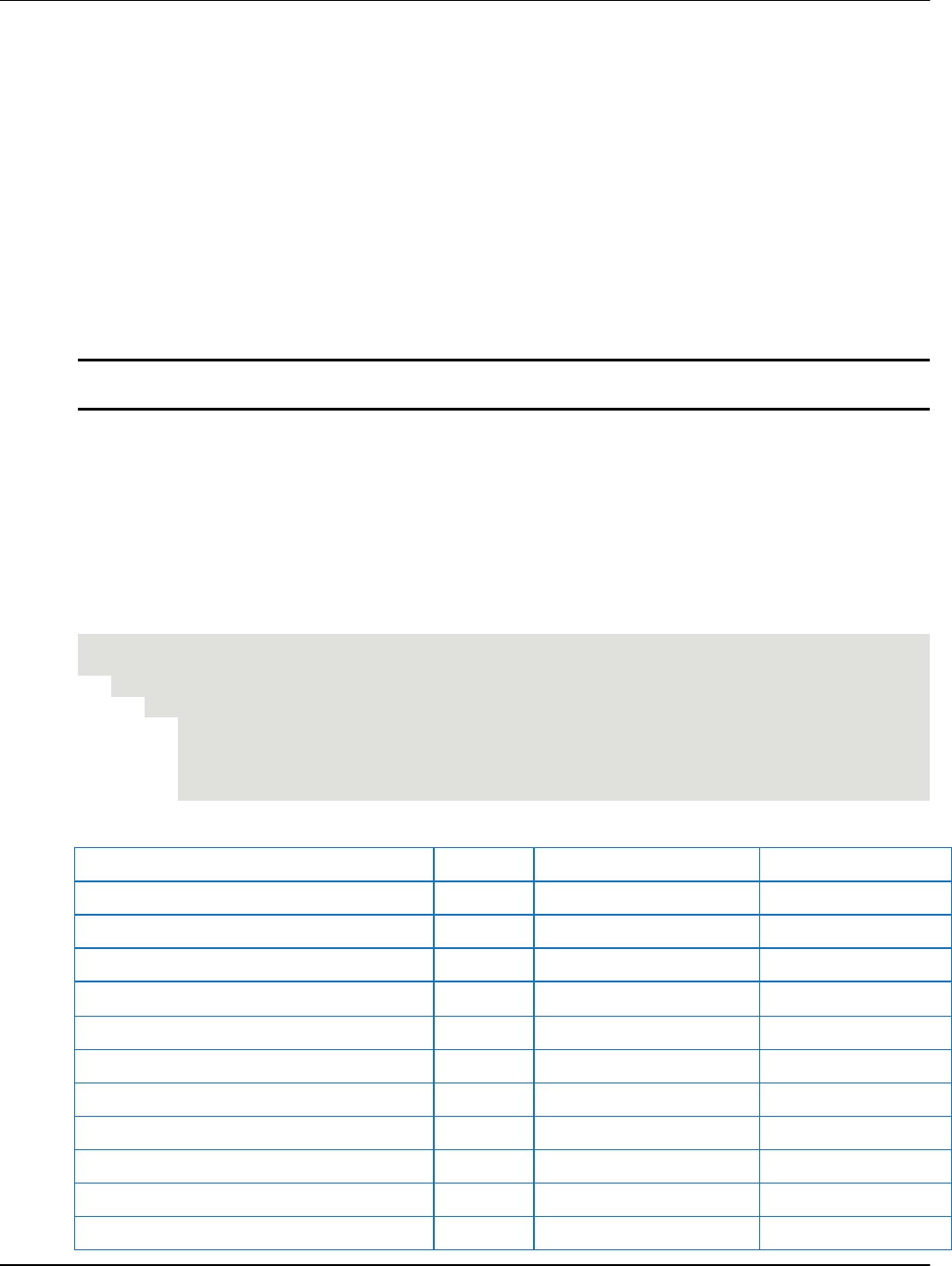
AVEVA™ Historian Retrieval Guide formerly Wonderware
129
In addition to query examples that use the AVEVA Historian time domain extensions, other query
examples are provided to demonstrate how to perform more complex queries or to further explain how
retrieval works.
The examples provided are not exhaustive of all possible database queries, but they should give you an
idea of the kinds of queries that you could write.
For general information on creating SQL queries, see your Microsoft SQL Server documentation.
Note: If you have configured SQL Server to be case-sensitive, be sure that you use the correct case
when writing queries.
Querying the History Table
The History table presents acquired plant data in a historical format. For more information, s ee History
Tables and Views in the AVEVA Historian Database Reference.
The following query returns the date/time stamp and value for the tag "ReactLevel." The query uses the
remote table view (History is used in place of INSQL.Runtime.dbo.History).
If you do not specify a wwCycleCount or wwResolution, the query will return 100 rows (the default).
SELECT DateTime, Sec = DATEPART(ss, DateTime), TagName, Value
FROM History
WHERE TagName = 'ReactLevel'
AND DateTime >= '2001-03-13 1:15:00pm'
AND DateTime <= '2001-03-13 2:15:00pm'
AND wwRetrievalMode = 'Cyclic'
The results are:
DateTime
Sec
TagName
Value
2001-03-13 13:15:00.000
0
ReactLevel
1775.0
2001-03-13 13:15:00.000
36
ReactLevel
1260.0
2001-03-13 13:16:00.000
12
ReactLevel
1650.0
2001-03-13 13:16:00.000
49
ReactLevel
1280.0
2001-03-13 13:17:00.000
25
ReactLevel
1525.0
2001-03-13 13:18:00.000
1
ReactLevel
585.0
2001-03-13 13:18:00.000
38
ReactLevel
1400.0
2001-03-13 13:19:00.000
14
ReactLevel
650.0
2001-03-13 13:19:00.000
50
ReactLevel
2025.0
2001-03-13 13:20:00.000
27
ReactLevel
765.0
2001-03-13 13:21:00.000
3
ReactLevel
2000.0
CHAPTER 3
SQL Query Examples
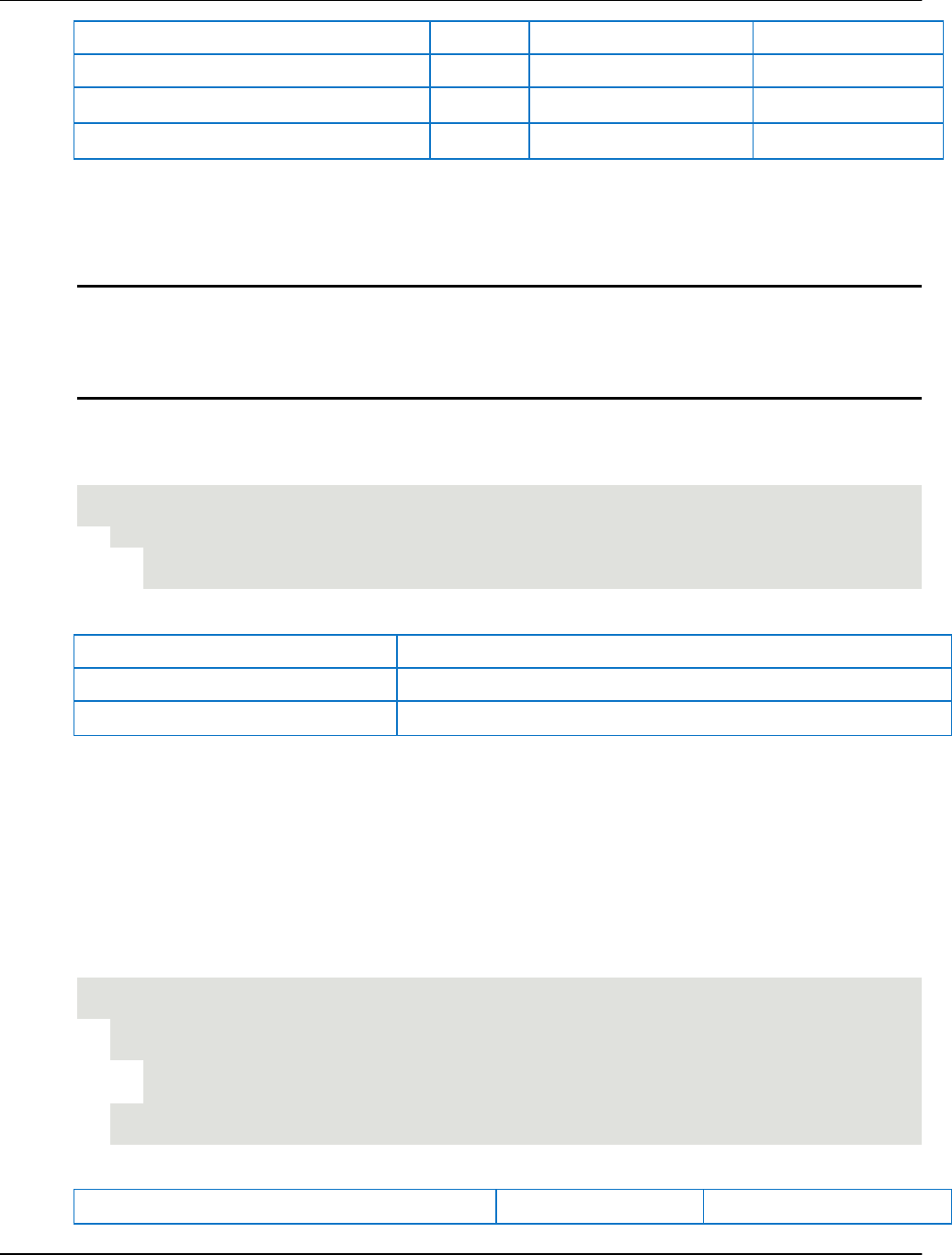
AVEVA™ Historian Retrieval Guide formerly Wonderware SQL Query Examples
130
2001-03-13 13:21:00.000
39
ReactLevel
830.0
2001-03-13 13:22:00.000
16
ReactLevel
1925.0
...
(100 row(s) affected)
Querying the Live Table
The Live table presents the latest available streamed data for each tag in the table.
Note: In certain situations, data can bypass the Live table. These situations include:
- Receiving non-streamed original data (store/forward or CSV);
- Receiving revision data for a Latest value;
- Receiving no new streamed values after Historian was shut down and disabled, or after the computer
was rebooted.
For more information, see History Tables and Views in the AVEVA Historian Database Reference.
The following query returns the current value of the specified tag. The query uses the remote table view
(Live is used in place of INSQL.Runtime.dbo.Live).
SELECT TagName, Value
FROM Live
WHERE TagName = 'ReactLevel'
The result is:
TagName
Value
ReactLevel
1145.0
(1 row(s) affected)
Querying the WideHistory Table
The wide extension table is a transposition of the History table. Use the wide history tables any time you
want to find the value of one or more tags over time and need to specify different filter criteria for each
tag.
For more information, see History Tables and Views in the AVEVA Historian Database Reference.
The following query returns the value of two tags from the WideHistory table. The WideHistory table can
only be accessed using the OPENQUERY function. The "Runtime.dbo." qualifier is optional.
SELECT * FROM OpenQuery(INSQL,'
SELECT DateTime, ReactLevel, ReactTemp
FROM Runtime.dbo.WideHistory
WHERE Reactlevel > 1500
AND ReactTemp > 150
')
The results are:
DateTime
ReactLevel
ReactTemp

SQL Query Examples AVEVA™ Historian Retrieval Guide formerly Wonderware
131
2001-03-02 06:20:00.000
1865.0
191.3
2001-03-02 06:21:00.000
2025.0
195.9
2001-03-02 06:22:00.000
2000.0
195.9
2001-03-02 06:23:00.000
2025.0
180.9
2001-03-02 06:27:00.000
1505.0
177.5
(5 row(s) affected).
In the WideHistory table, the column type is determined by the tag type.
SELECT * FROM OpenQuery(INSQL, 'SELECT DateTime, SysTimeMin, SysPulse, SysString
FROM WideHistory
WHERE DateTime >= "2001-12-20 0:00"
AND DateTime <= "2001-12-20 0:05"
AND wwRetrievalMode = "delta"
')
The results are:
DateTime
SysTime
Min
SysPulse
SysString
2001-12-20 00:00:00.000
0
0
2001/12/20 08:00:00
2001-12-20 00:01:00.000
1
1
2001/12/20 08:00:00
2001-12-20 00:02:00.000
2
0
2001/12/20 08:00:00
2001-12-20 00:03:00.000
3
1
2001/12/20 08:00:00
2001-12-20 00:04:00.000
4
0
2001/12/20 08:00:00
2001-12-20 00:05:00.000
5
1
2001/12/20 08:00:00
Querying Wide Tables in Delta Retrieval Mode
Wide tables in delta retrieval mode will behave normally if only one tag is returned. However, for a
multiple tag display, a complete row is returned to the client for each instance in which one or more of the
tags in the query returns a different value. The row will reflect the actual values being returned for the
tags returning results, and will reflect the previous values for the remaining tags in the result set (similar
to cyclic retrieval).
Note: The value can be "invalid" or some other quality value.
The following query returns values for three tags from the WideHistory table. "MyTagName" is a tag that
periodically is invalid.
SELECT * FROM OpenQuery(INSQL,'
SELECT DateTime, SysTimeSec, SysTimeMin, MyTagName
FROM WideHistory
WHERE DateTime >= "2001-05-12 13:00:00"
AND DateTime <= "2001-05-12 13:02:00"
AND wwRetrievalMode = "Delta"
')
The results are:
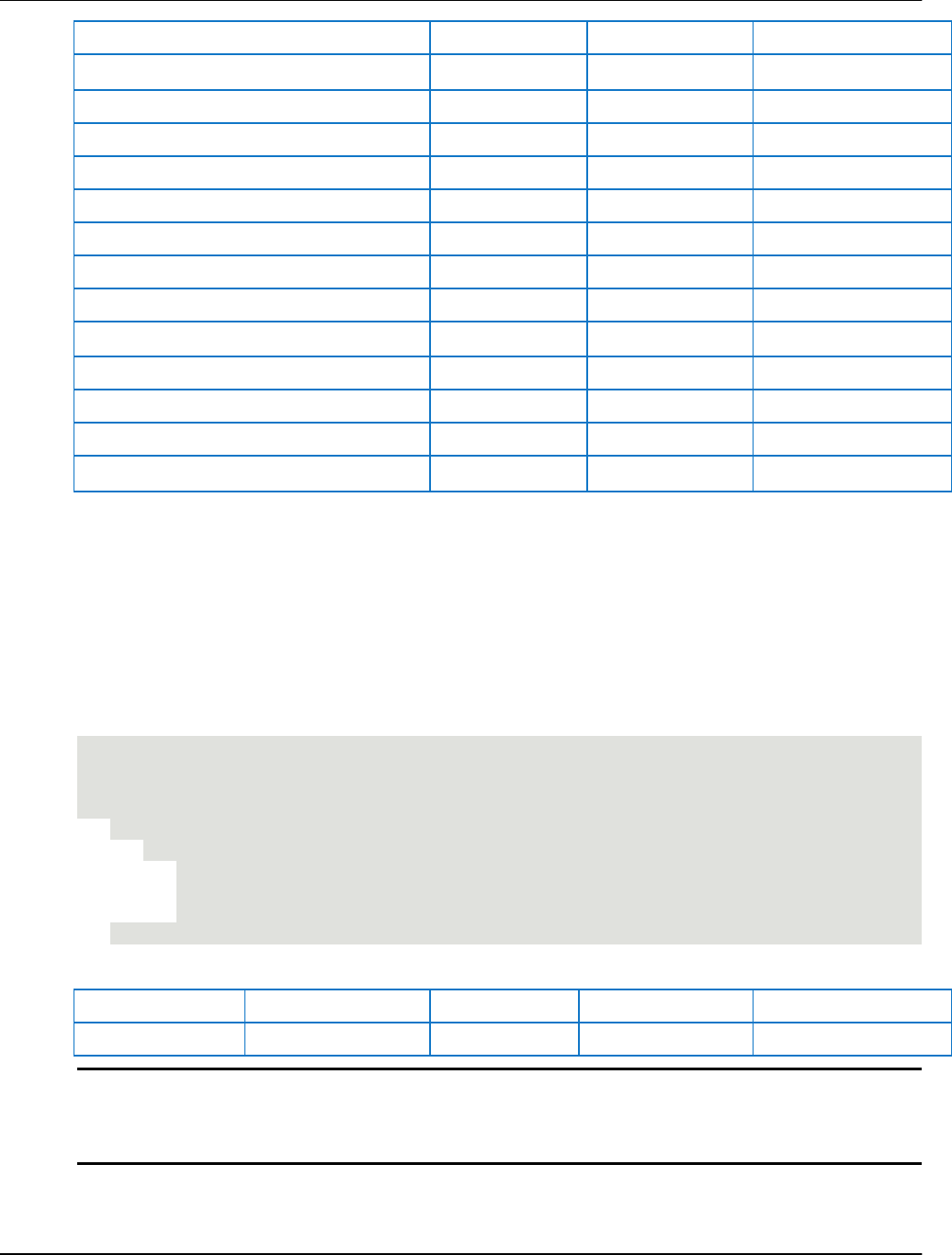
AVEVA™ Historian Retrieval Guide formerly Wonderware SQL Query Examples
132
DateTime
SysTimeSec
SysTimeMin
MyTagName
...
2001-05-12 13:00:55.000
55
00
1
2001-05-12 13:00:56.000
56
00
1
2001-05-12 13:00:57.000
57
00
1
2001-05-12 13:00:57.500
57
00
null
2001-05-12 13:00:58.000
58
00
null
2001-05-12 13:00:59.000
59
00
null
2001-05-12 13:01:00.000
00
01
null
2001-05-12 13:01:00.500
00
01
2
2001-05-12 13:01:01.000
01
01
2
2001-05-12 13:01:02.000
02
01
2
2001-05-12 13:01:03.000
03
01
2
...
Notice that 57 appears twice since the occurrence of 1 changing to NULL for tag "MyTagName" occurs
sometime between the 57th and 58th second. The same applies for NULL changing to 2. The same
behavior applies to discrete values.
Querying the AnalogSummaryHistory View
The AnalogSummaryHistory view is a "wide" view that allows you to return multiple statistics for a single
tag within a single query.
The following query returns the minimum, maximum, and average values for the SysTimeSec tag for the
last hour.
declare @End datetime
set @End = left(convert(varchar(30),getdate(),120),14)+'00:00'
SELECT Tagname, OPCQuality, Minimum as MIN, Maximum as MAX, Average as AVG
FROM AnalogSummaryHistory
WHERE TagName = 'SysTimeSec'
AND StartDateTime >= dateadd(minute,-60,@End)
AND EndDateTime < @End
AND wwCycleCount = 2
The results are:
Tagname
OPCQuality
MIN
MAX
AVG
SysTimeSec
192
0
59
29.5
Note: When querying the AnalogSummaryHistory view, a data point occuring at the same timestamp as
the EndDateTime is not considered part of the query interval. Instead, it is treated as the first data point
in the next interval beginning at EndDateTime, and so is not included in the maximum or average value
calculations.
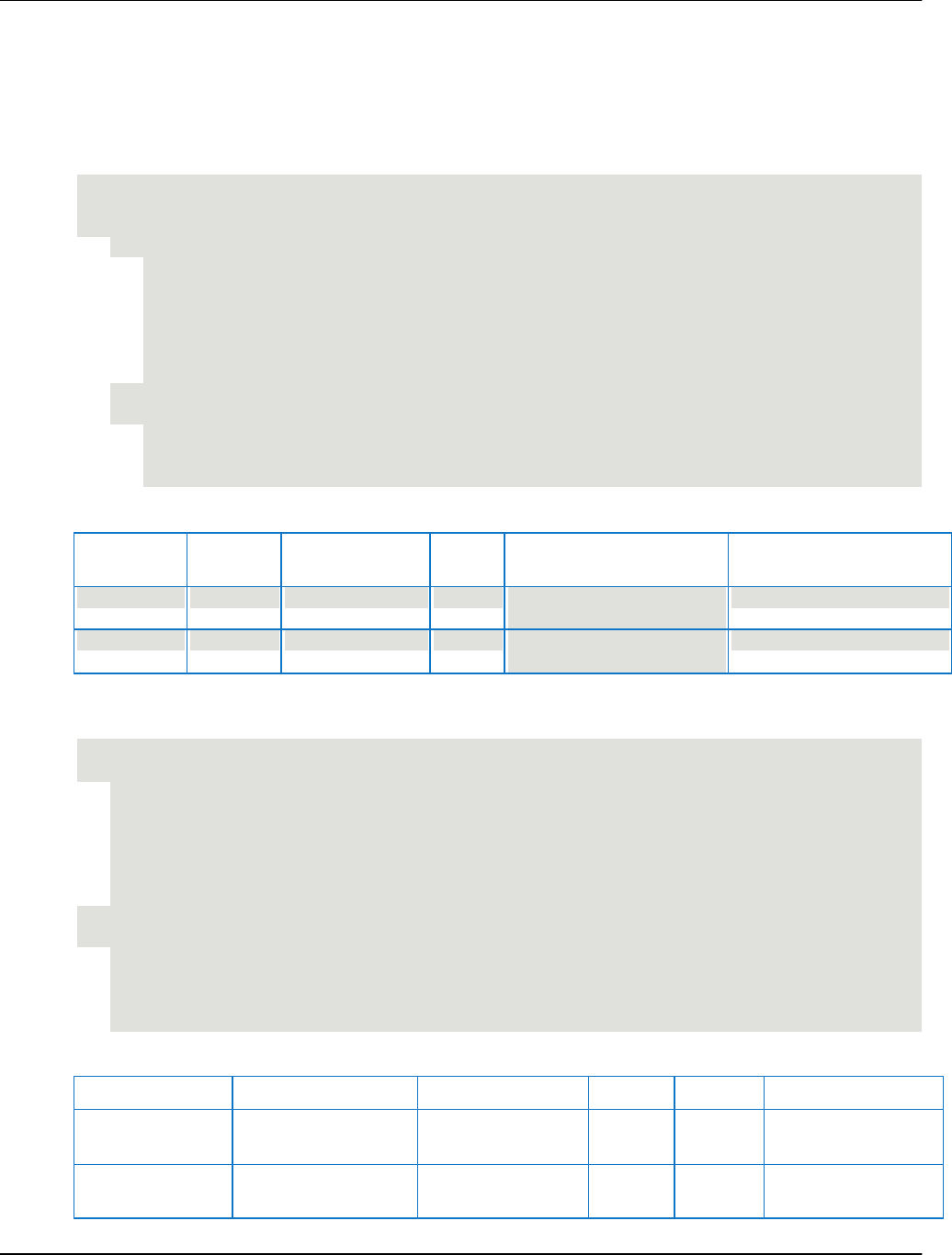
SQL Query Examples AVEVA™ Historian Retrieval Guide formerly Wonderware
133
Querying the StateSummaryHistory View
The StateSummaryHistory view is a "wide" view that allows you to return multiple statistics for a single
tag within a single query.
The following query returns the state count, total time in state, and the percentage of time in state for the
SysPulse system tag for the last hour. One row is returned for each state.
DECLARE @End DateTime
SET @END = getdate()
SELECT
TagName,
Value,
OPCQuality,
StateCount,
StateTimeTotal,
StateTimePercent
FROM dbo.StateSummaryHistory
WHERE TagName = N'SysPulse'
AND StartDateTime >= dateadd(minute,-60,@End)
AND EndDateTime <= @End
AND wwCycleCount = 1
The results are:
TagName
Value
OPCQuality
State
Count
StateTimeTotal
StateTimePercent
SysPulse
1
192
30
1800000
50
SysPulse
0
192
30
1800000
50
The following query returns the minimum time in state, the minimum contained time in state, and value
for the SysTimeSec system tag.
SELECT
TagName,
StartDateTime,
EndDateTime,
StateTimeMin as STM,
StateTimeMinContained as STMC,
Value
FROM StateSummaryHistory
WHERE TagName='SysTimeSec'
AND wwRetrievalMode='Cyclic'
AND wwResolution=5000
AND StartDateTime>='2009-10-21 17:40:00.123'
AND StartDateTime<='2009-10-21 17:40:05.000'
The results are:
TagName
StartDateTime
EndDateTime
STM
STMC
Value
SysTimeSec
2009-10-21
17:40:00.123
2009-10-21
17:40:05.123
877
0
0
SysTimeSec
2009-10-21
17:40:00.123
2009-10-21
17:40:05.123
1000
1000
1
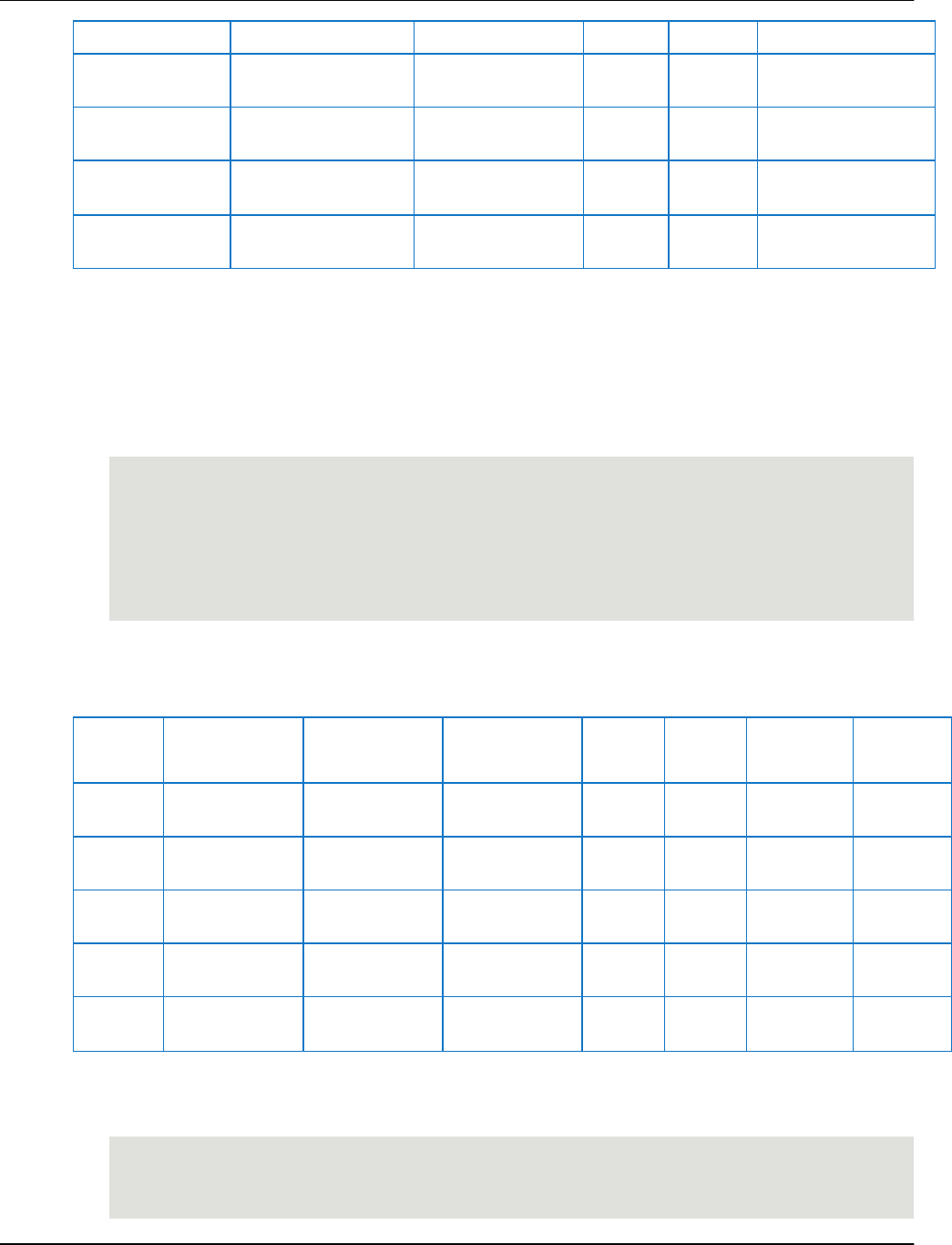
AVEVA™ Historian Retrieval Guide formerly Wonderware SQL Query Examples
134
TagName
StartDateTime
EndDateTime
STM
STMC
Value
SysTimeSec
2009-10-21
17:40:00.123
2009-10-21
17:40:05.123
1000
1000
2
SysTimeSec
2009-10-21
17:40:00.123
2009-10-21
17:40:05.123
1000
1000
3
SysTimeSec
2009-10-21
17:40:00.123
2009-10-21
17:40:05.123
1000
1000
4
SysTimeSec
2009-10-21
17:40:00.123
2009-10-21
17:40:05.123
123
0
5
Using SliceBy
You can retrieve summary statistics for a tag per batch by using the SliceBy parameter in a query.
Batches can be defined by changes in a different tag, such as a batch ID or valve position.
For example, suppose you wanted statistics on flow rate depending on the position of a valve. Each time
the valve position changes, a new batch is reported. Here is a query to retrieve that information:
select SliceByValue, TagName, StartDateTime, EndDateTime, OPCQuality,
PercentGood, wwResolution, Average
from AnalogSummaryHistory
where TagName='M31.FlowIn'
and SliceBy='M31.ValveIn'
and StartDateTime>='2018-11-27 0:00'
and EndDateTime<='2018-11-28 0:00'
The results are:
SliceBy
Value
TagName
StartDateTi
me
EndDateTime
OPCQua
lity
Percen
tGood
wwResolu
tion
Average
0
M31.FlowIn
2018-11-27
07:56:11
2018-11-27
09:49:47
192
100
6816000
57.4379
1
M31.FlowIn
2018-11-27
09:49:47
2018-11-27
15:23:23
192
100
20016000
0.5108
0
M31.FlowIn
2018-11-27
15:23:23
2018-11-27
17:24:17
192
100
7254000
50.3615
1
M31.FlowIn
2018-11-27
17:24:17
2018-11-27
21:50:59
192
100
16002000
0.5220
0
M31.FlowIn
2018-11-27
21:50:59
2018-11-27
23:47:17
192
100
6975000
51.4363
This query uses the same data. This time, using SliceByValue, the query retrieves statistics on the flow
rate, but only for those batches when the valve is open.
select SliceByValue, TagName, StartDateTime, EndDateTime, OPCQuality,
PercentGood, wwResolution, Average
from AnalogSummaryHistory
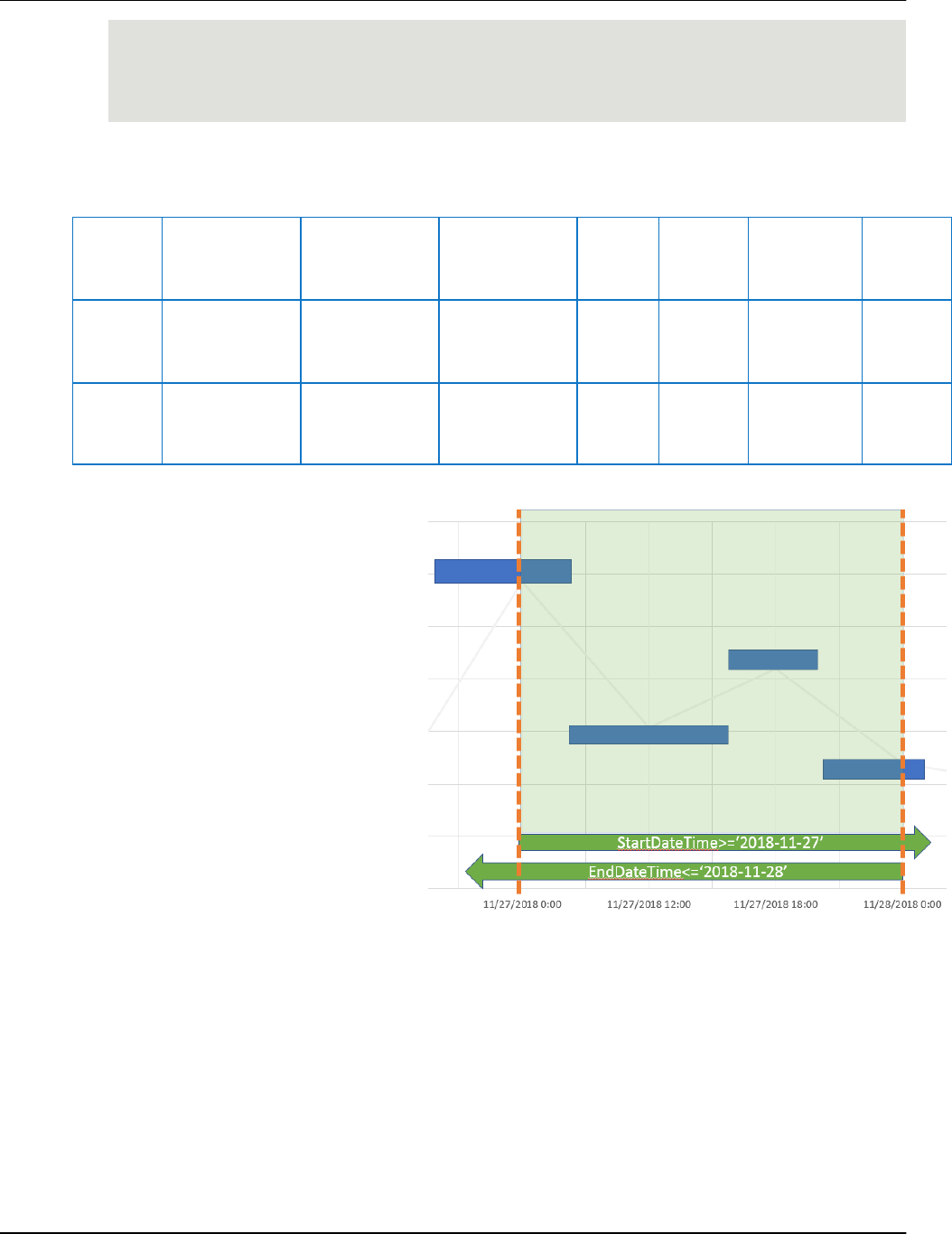
SQL Query Examples AVEVA™ Historian Retrieval Guide formerly Wonderware
135
where TagName='M31.FlowIn'
and SliceBy='M31.ValveIn'
and SliceByValue=1
and StartDateTime>='2018-11-27 0:00'
and EndDateTime<='2018-11-28 0:00'
The results this time are:
SliceBy
Value
TagName
StartDateTi
me
EndDateTime
OPCQua
lity
Percent
Good
wwResolut
ion
Average
1
M31.FlowIn
2018-11-27
09:49:47
2018-11-27
15:23:23
192
100
20016000
0.5108
1
M31.FlowIn
2018-11-27
17:24:17
2018-11-27
21:50:59
192
100
16002000
0.5220
In the previous two queries,
"StartDateTime>=" and "EndDateTime<="
define boundaries for the query to include
only those batches that both start and end
within the boundaries set. Any batches that
begin before or end after the reporting
period are excluded.
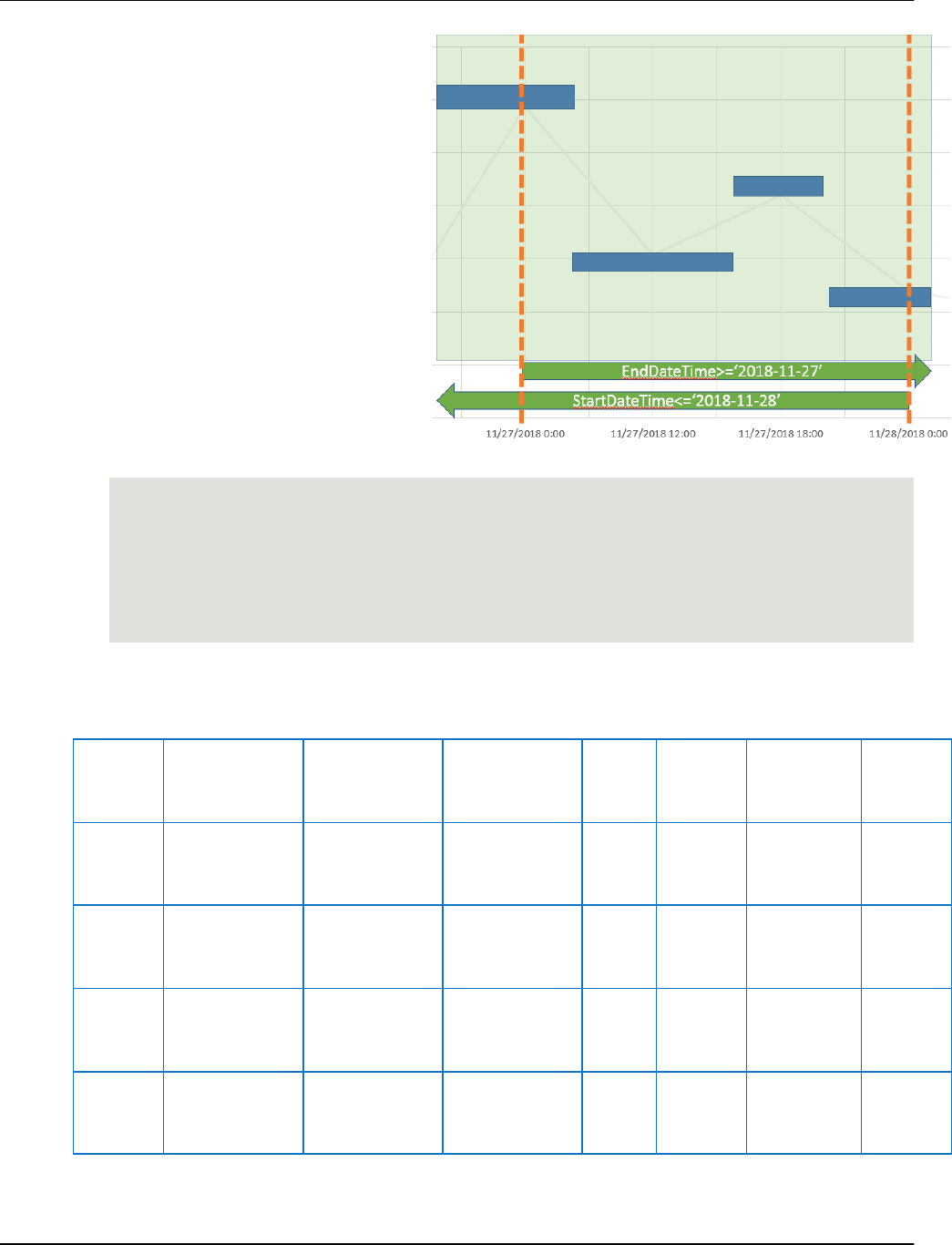
AVEVA™ Historian Retrieval Guide formerly Wonderware SQL Query Examples
136
This next query is the same as the
previous one, but swaps the start and end
time criteria to include batches that begin
before or end after the reporting period:
select SliceByValue, TagName, StartDateTime, EndDateTime, OPCQuality,
PercentGood, wwResolution, Average
from AnalogSummaryHistory
where TagName='M31.FlowIn'
and SliceBy='M31.ValveIn'
and SliceByValue=1
and EndDateTime>='2018-11-27 0:00'
and StartDateTime<='2018-11-28 0:00'
The results are:
SliceBy
Value
TagName
StartDateTi
me
EndDateTime
OPCQu
ality
Percent
Good
wwResolut
ion
Average
1
M31.FlowIn
2018-11-26
23:08:08
2018-11-27
07:56:11
192
100
31683000
0.5386
1
M31.FlowIn
2018-11-27
09:49:47
2018-11-27
15:23:23
192
100
20016000
0.5108
1
M31.FlowIn
2018-11-27
17:24:17
2018-11-27
21:50:59
192
100
16002000
0.5220
1
M31.FlowIn
2018-11-27
23:47:14
2018-11-28
10:53:20
192
100
39966000
0.5039

SQL Query Examples AVEVA™ Historian Retrieval Guide formerly Wonderware
137
SliceBy Queries That Include Future
If you define a timeframe that includes a batch that is not completed, you will get an summary statictics
for the batch data currently available, but it will be marked with "OPCQuality=64", meaning the quality is
uncertain because the end time is unknown. An ending batch can be incomplete because:
The batch is currently in progress and the next batch has not yet initiated. Batches are defined by
changes in a different tag. If that tag has not yet changed, the current batch is in progress and the
next batch has not initiated.
The batch did physically completed, but the data hasn’t yet been written to the server due to latency,
power-outage, etc.
Here is an example. This query retrieves average values for batches that completed on Nov 28. The
"select getdate()" line shows that the current timestamp for the query is Nov 28, 2018 at 4:31. Since the
day is not over, the system cannot know for sure that anot her batch won’t be initiated. Therefore, the last
retrieved batch is incomplete.
select SliceByValue, TagName, StartDateTime, EndDateTime, OPCQuality,
PercentGood, wwResolution, Average
from AnalogSummaryHistory
where TagName='M31.Level'
and SliceBy='M31.Batch'
and EndDateTime>='2018-11-28 0:00'
and StartDateTime<='2018-11-29 0:00'
select getdate()
The results are:
SliceBy
Value
TagName
StartDateTi
me
EndDateTime
OPCQua
lity
Percent
Good
wwResolut
ion
Average
CRC-4
M31.Level
2018-11-27
21:44:23
2018-11-28
03:03:41
192
100
19158000
94.9624
M31.Level
2018-11-28
03:03:41
2018-11-28
04:12:20
192
100
4119000
1.6700
BLB-7
M31.Level
2018-11-28
04:12:20
2018-11-28
00:00:00
64
1.7020
NULL
134.889
7
(No column name)
2018-11-28 04:31:33

AVEVA™ Historian Retrieval Guide formerly Wonderware SQL Query Examples
138
Using Group By with SliceBy
You can use Group By in a query to get an overall summary off all occurrences of a state. For example,
you might want an overall summary of production when a piece of equipment was in a certain position.
Here is an example of using Group By to organize data by tag state. This query retrieves an overall
summary of statistics for each position of the valve. One line summarizes all batches for the day where
the valve was closed (0) and another line for all batches with the valve open (1).
select SliceByValue, TagName, StartDateTime=min(StartDateTime),
EndDateTime=max(EndDateTime), TotalTime=sum(wwResolution),
Maxiumum=max(Maximum), Total=sum(Integral),
Average=sum(Average*wwResolution)/sum(wwResolution),
AvgOfAvg=avg(Average)
from AnalogSummaryHistory
where TagName='M31.FlowIn'
and SliceBy='M31.ValveIn'
and EndDateTime>='2018-11-27 0:00'
and StartDateTime<='2018-11-28 0:00'
group by TagName, SliceByValue
The results are:
TagName
Slice
ByVal
ue
StartTime
EndTime
Total
Time
Maxi
mum
Total
Avera
ge
AvgOfAv
g
M31.
FlowIn
0
2018-11-27
09:49:47
2018-11-27
21:50:59
36018
000
6.75
309.66
0.51
0.51
M31.
FlowIn
1
2018-11-27
07:56:11
2018-11-27
23:47:14
21045
000
114.
92
18593.13
53.00
53.078
Note: This example correctly calculates the overall average for each state in the "Average" column by
weighting the duration of each state. As explained by Simpson’s Paradox, the simpler, "AvgOfAvg"
calculation is not statistically accurate and can differ significantly with some data sets.
Using an Unconventional Tagname in a Wide Table Query
In a SQL query against a wide table, unconventional tag names must be delimited with brackets ( [ ] ),
because the tagname is used as a column name. For example, tagnames containing a minus ( - ) or a
forward slash ( / ) must be delimited, otherwise the parser will attempt to perform the corresponding
arithmetic operation. No error will result from using brackets where not strictly necessary. For more
information on unconventional tagnames, see Tag Naming Conventions.
The following is an example of how to delimit a tagname in a query on a wide table. "ReactTemp-2" and
"ReactTemp+2" are tagnames. Without the delimiters, the parser would attempt to include the "-2" and
"+2" suffixes on the tagnames as part of the arithmetic operation.
For clarity and maintainability of your queries, however, it is recommended that you do not use special
characters in tagnames unless strictly necessary.

SQL Query Examples AVEVA™ Historian Retrieval Guide formerly Wonderware
139
SELECT * FROM OpenQuery(INSQL,
'SELECT ReactTemp, [ReactTemp-2]-2, [ReactTemp+2]+2 FROM WideHistory WHERE
... ')
Using an INNER REMOTE JOIN
Instead of using " … WHERE TagName IN (SELECT TagName … ) ", it is more efficient to use INNE R
REMOTE JOIN syntax.
In general, use the following pattern for INNER REMOTE JOIN queries against the historian:
<SQLServerTable> INNER REMOTE JOIN <HistorianExtensionTable>
This query returns data from the history table, based on a string tag that you filter for from the StringTag
table:
SELECT DateTime, T.TagName, vValue, Quality, QualityDetail
FROM StringTag T inner remote join History H
ON T.TagName = H.TagName
WHERE T.MaxLength = 64
AND DateTime >='2002-03-10 12:00:00.000'
AND DateTime <='2002-03-10 16:40:00.000'
AND wwRetrievalMode = 'Delta'
This query returns data from the history table, based on a discrete tag that you filter for from the Tag
table:
SELECT DateTime, T.TagName, vValue, Quality, QualityDetail
FROM Tag T inner remote join History H
ON T.TagName = H.TagName
WHERE T.TagType = 2
AND T.Description like 'Discrete%'
AND DateTime >='2002-03-10 12:00:00.000'
AND DateTime <='2002-03-10 16:40:00.000'
AND wwRetrievalMode = 'Delta'
Setting Both a Time and Value Deadband for Retrieval
If both time and value deadbands are specified, then every sample is checked for both deadbands,
against the current basis value (the last sample returned).
If it passes both tests, then it is returned and acts as the basis for checking the next sample.
For example:
SELECT DateTime, TagName, Value
FROM History
WHERE TagName = 'ReactTemp'
AND DateTime >= '2002-03-13 10:08'
AND DateTime <= '2002-03-13 10:28'
AND wwRetrievalMode = 'Delta'
AND wwTimeDeadband = 5000
AND wwValueDeadband = 5
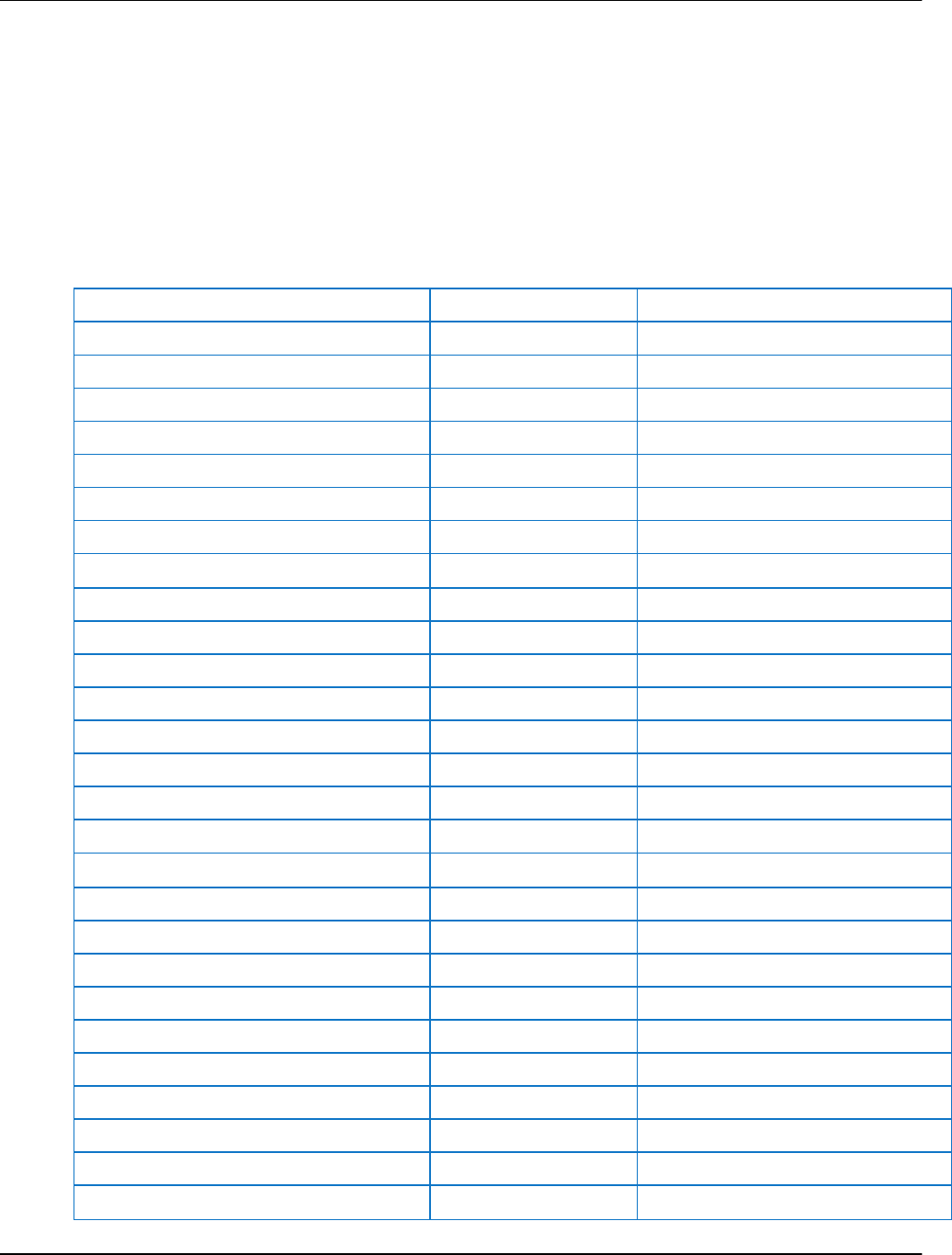
AVEVA™ Historian Retrieval Guide formerly Wonderware SQL Query Examples
140
The tag selected, ReactTemp, has a MinEU value of 0 and a MaxEU value of 220. Thus, the value
deadband will be 5 percent of (220 - 0), which equals 11. ReactTemp changes rapidly between its
extreme values, but the value remains constant for short periods near the high and low temperature
limits. Therefore, when changes are rapid, the value deadband condition is satisfied first, then the time
deadband is satisfied. In this region, the behavior is dominated by the time deadband, and the returned
rows are spaced at 5 second intervals. Where the temperature is more constant (particularly at the low
temperature end), the time deadband is satisfied first, followed by the value deadband. Both deadbands
are satisfied only when the value of a row is more than 11 degrees different from the previous row. Thus,
the effect of value deadband can be seen to dominate near the low and high temperature extremes of the
tag.
The results are:
DateTime
TagName
Value
2002-03-13 10:08:00.000
ReactTemp
121.0
2002-03-13 10:08:10.000
ReactTemp
189.10000610351562
2002-03-13 10:08:20.000
ReactTemp
147.69999694824219
2002-03-13 10:08:30.000
ReactTemp
106.30000305175781
2002-03-13 10:08:40.000
ReactTemp
30.100000381469727
2002-03-13 10:08:50.000
ReactTemp
16.399999618530273
2002-03-13 10:09:00.000
ReactTemp
61.0
2002-03-13 10:09:10.000
ReactTemp
151.0
2002-03-13 10:09:20.000
ReactTemp
173.0
2002-03-13 10:09:30.000
ReactTemp
131.60000610351562
2002-03-13 10:09:40.000
ReactTemp
57.700000762939453
2002-03-13 10:09:50.000
ReactTemp
16.299999237060547
2002-03-13 10:10:10.000
ReactTemp
96.0
2002-03-13 10:10:20.000
ReactTemp
186.0
2002-03-13 10:10:30.000
ReactTemp
156.89999389648437
2002-03-13 10:10:40.000
ReactTemp
115.5
2002-03-13 10:10:50.000
ReactTemp
41.599998474121094
2002-03-13 10:11:00.000
ReactTemp
21.0
2002-03-13 10:11:10.000
ReactTemp
41.0
2002-03-13 10:11:20.000
ReactTemp
131.0
2002-03-13 10:11:30.000
ReactTemp
184.5
2002-03-13 10:11:40.000
ReactTemp
140.80000305175781
2002-03-13 10:11:50.000
ReactTemp
99.400001525878906
2002-03-13 10:12:00.000
ReactTemp
25.5
2002-03-13 10:12:20.000
ReactTemp
76.0
2002-03-13 10:12:30.000
ReactTemp
166.0
2002-03-13 10:12:50.000
ReactTemp
124.69999694824219
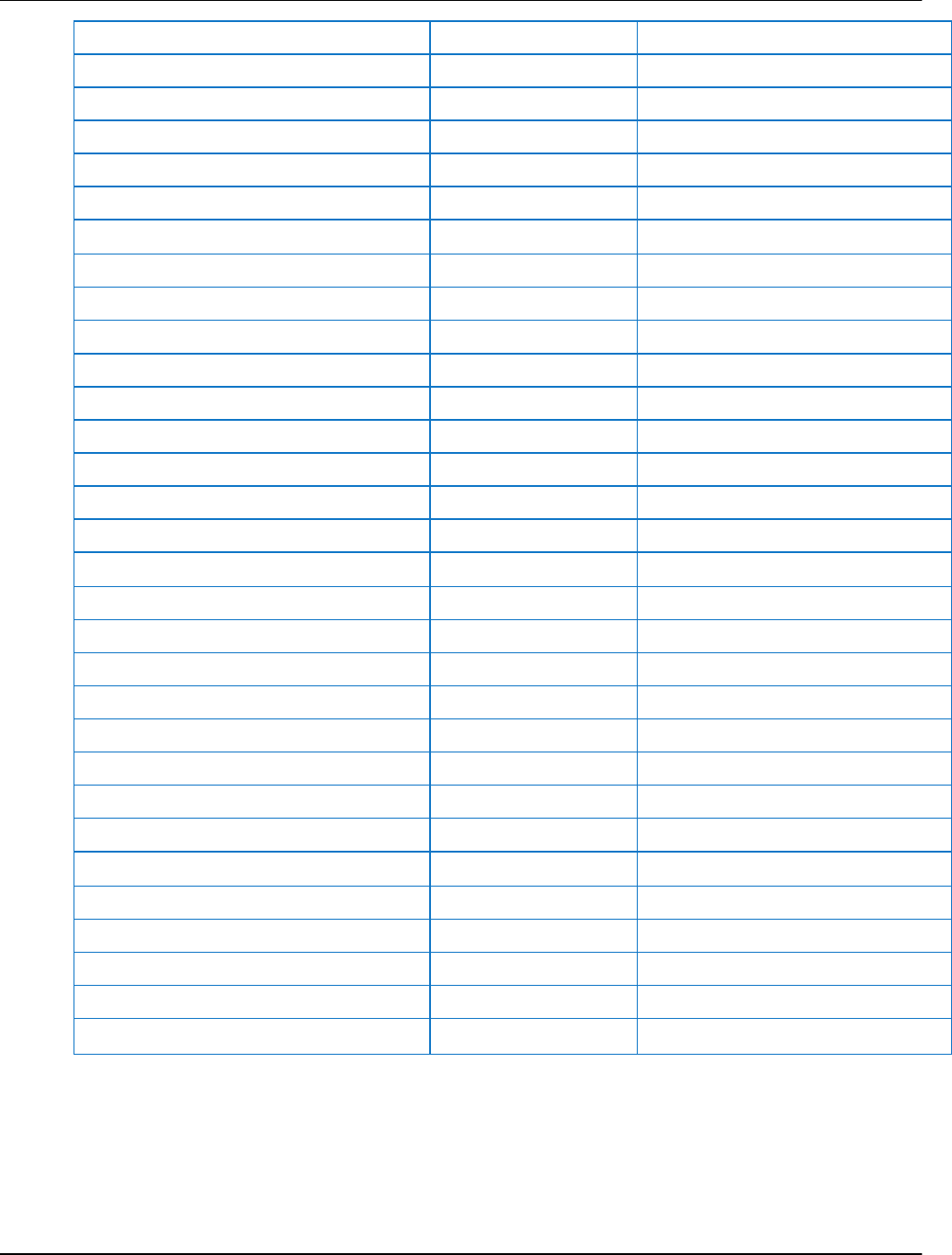
SQL Query Examples AVEVA™ Historian Retrieval Guide formerly Wonderware
141
DateTime
TagName
Value
2002-03-13 10:13:00.000
ReactTemp
50.799999237060547
2002-03-13 10:13:10.000
ReactTemp
16.399999618530273
2002-03-13 10:13:30.000
ReactTemp
111.0
2002-03-13 10:13:40.000
ReactTemp
193.69999694824219
2002-03-13 10:13:50.000
ReactTemp
152.30000305175781
2002-03-13 10:14:00.000
ReactTemp
108.59999847412109
2002-03-13 10:14:10.000
ReactTemp
34.700000762939453
2002-03-13 10:14:20.000
ReactTemp
21.0
2002-03-13 10:14:30.000
ReactTemp
51.0
2002-03-13 10:14:40.000
ReactTemp
146.0
2002-03-13 10:14:50.000
ReactTemp
177.60000610351562
2002-03-13 10:15:00.000
ReactTemp
136.19999694824219
2002-03-13 10:15:10.000
ReactTemp
92.5
2002-03-13 10:15:20.000
ReactTemp
18.600000381469727
2002-03-13 10:15:40.000
ReactTemp
86.0
2002-03-13 10:15:50.000
ReactTemp
181.0
2002-03-13 10:16:00.000
ReactTemp
161.5
2002-03-13 10:16:10.000
ReactTemp
120.09999847412109
2002-03-13 10:16:20.000
ReactTemp
76.400001525878906
2002-03-13 10:16:30.000
ReactTemp
20.899999618530273
2002-03-13 10:16:50.000
ReactTemp
81.0
2002-03-13 10:17:00.000
ReactTemp
176.0
2002-03-13 10:17:10.000
ReactTemp
163.80000305175781
2002-03-13 10:17:20.000
ReactTemp
122.40000152587891
2002-03-13 10:17:30.000
ReactTemp
46.200000762939453
2002-03-13 10:17:40.000
ReactTemp
18.700000762939453
2002-03-13 10:18:00.000
ReactTemp
116.0
2002-03-13 10:18:10.000
ReactTemp
189.10000610351562
2002-03-13 10:18:20.000
ReactTemp
147.69999694824219
...

AVEVA™ Historian Retrieval Guide formerly Wonderware SQL Query Examples
142
Using wwResolution, wwCycleCount, and wwRetrievalMode
in the Same Query
The results of a database query will vary depending on the combination of resolution, cycle count, and
retrieval mode that you use in the query. These results are summarized in the following table (where N is
a numeric value):
Retrieval
Mode
Resolution
Cycle Count
Results
CYCLIC
N
0 (or no
value)
All stored data for tags during the specified time interval
are queried, and then a resolution of N ms applied.
CYCLIC
0 (or no value)
0
The server will return 100,000 rows per tag specified.
CYCLIC
0 (or no value)
N
All stored data for tags during the specified time interval
are queried, and then a cycle count of N evenly spaced
rows is applied.
CYCLIC
N
(any value is
ignored)
All stored data for tags during the specified time interval
are queried, and then a resolution of N ms applied.
CYCLIC
(no value)
(no value or a
value less
than 0)
The server will return 100 rows per tag specified.
DELTA
(any value is
ignored)
0
All values that changed during the specified time interval
are returned (up to 100,000 rows total).
DELTA
(any value is
ignored)
N
Values that changed during the specified time interval
are queried, and then a cycle count (first N rows) is
applied. The cycle count limits the maximum number of
rows returned, regardless of how many tags were
queried. For example, a query that applies a cycle count
of 20 to four tags will return a maximum of 20 rows of
data. An initial row will be returned for each tag, and the
remaining 16 rows will be based on subsequent value
changes for any tag.
DELTA
(any value is
ignored)
(no value)
All values that changed during the specified time interval
are returned (no row limit).
In general, if there is an error in the virtual columns, or an unresolvable conflict, then zero rows are
returned.
Determining Cycle Boundaries
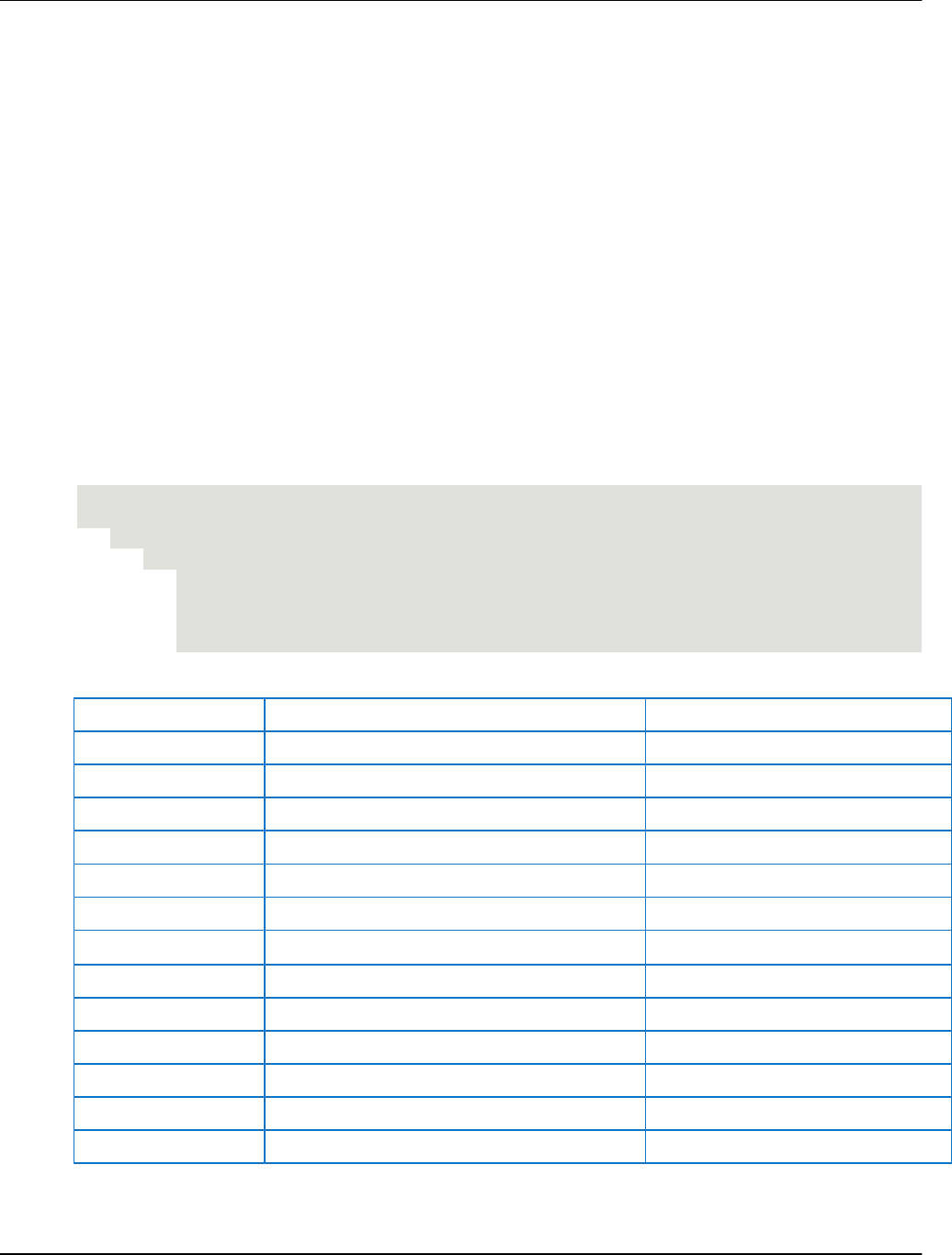
SQL Query Examples AVEVA™ Historian Retrieval Guide formerly Wonderware
143
Cycle boundaries are calculated based on the query start and end times, wwCycleCount, and
wwResolution.
If you only specify wwCycleCount, evenly spaced cycles are returned based on the value of
wwCycleCount.
If you only specify wwResolution, cycles are spaced wwResolution milliseconds apart starting at the
query start time until query end time is reached. The last cycle will have whatever duration is required to
end exactly at the query end time. If this last duration is shortened by this rule, it is known as a partial
cycle. Because of this, the final cycle duration may not match wwResolution.
If both wwCycleCount and wwResolution are specified, no result rows will be returned. If you specify
neither wwCycleCount nor wwResolution in the query, the query will return 100 rows.
Unless otherwise specified, a value is considered in a given full or partial cycle if its timestamp occurs at
or after the cycle start (timestamp >= cycle start) and before the cycle end (timestamp < cycle end).
Mixing Tag Types in the Same Query
The History and Live tables use the sql_variant data type for the vValue column, allowing the return of
various data types in a single column. In other words, these tables allow values for tags of different types
to be retrieved with a simple query, without the need for a JOIN operation.
For example:
SELECT TagName, DateTime, vValue
FROM History
WHERE TagName IN ('SysTimeMin', 'SysPulse', 'SysString')
AND DateTime >= '2001-12-20 0:00'
AND DateTime <= '2001-12-20 0:05'
AND wwRetrievalMode = 'delta'
The results are:
TagName
DateTime
vValue
SysTimeMin
2001-12-20 00:00:00.000
0
SysPulse
2001-12-20 00:00:00.000
0
SysString
2001-12-20 00:00:00.000
2001/12/20 08:00:00
SysTimeMin
2001-12-20 00:01:00.000
1
SysPulse
2001-12-20 00:01:00.000
1
SysTimeMin
2001-12-20 00:02:00.000
2
SysPulse
2001-12-20 00:02:00.000
0
SysTimeMin
2001-12-20 00:03:00.000
3
SysPulse
2001-12-20 00:03:00.000
1
SysTimeMin
2001-12-20 00:04:00.000
4
SysPulse
2001-12-20 00:04:00.000
0
SysTimeMin
2001-12-20 00:05:00.000
5
SysPulse
2001-12-20 00:05:00.000
1

AVEVA™ Historian Retrieval Guide formerly Wonderware SQL Query Examples
144
Using a Criteria Condition on a Column of Variant Data
The AVEVA Historian OLE DB provider sends variant data to the SQL Server as a string. If the query
contains a criteria condition on a column containing variant type data, the filtering is handled by SQL
Server. An example of a criteria condition is:
WHERE ... vValue = 2
To perform the filtering, the SQL Server must determine the data type of the constant (in this example, 2),
and attempt to convert the variant (string) to this destination type. The SQL Server assumes that a
constant without a decimal is an integer, and attempts to convert the string to an integer type. This
conversion will fail in SQL Server if the string actually represents a float (for example, 2.00123).
You should explicitly state the destination type by means of a CONVERT function. This is the only
reliable way of filtering on the vValue column, which contains variant data.
For example:
SELECT DateTime, Quality, OPCQuality, QualityDetail, Value, vValue, TagName
FROM History
WHERE TagName IN ('ADxxxF36', 'SysTimeMin', 'SysPulse')
AND DateTime >= '12-04-2001 04:00:00.000'
AND DateTime <= '12-04-2001 04:03:00.000'
AND wwRetrievalMode = 'Delta'
AND convert(float, vValue) = 2
The following is another example:
SELECT DateTime, Quality, OPCQuality, QualityDetail, Value, vValue, TagName
FROM History
WHERE TagName IN ('VectorX', 'SysTimeMin', 'SysPulse')
AND DateTime >= '20020313 04:00:07.000'
AND DateTime <= '20020313 04:01:00.000'
AND wwRetrievalMode = 'Delta'
AND convert(float, vValue) > 1
AND convert(float, vValue) < 2
Using DateTime Functions
Date functions perform an operation on a date and time input value and return either a string, numeric, or
date and time value.
The following query returns the date/time stamp and value for the SysTimeSec tag for the last 10
minutes.
SELECT DateTime, TagName, Value, Quality
FROM History
WHERE TagName = 'SysTimeSec'
AND DateTime >= dateadd(Minute, -10, GetDate())
AND DateTime <= GetDate()
AND wwRetrievalMode = 'Cyclic'
The results are:
DateTime
TagName
Value
Quality
2001-12-15 13:00:00.000
SysTimeSec
0.0
0
2001-12-15 13:00:06.060
SysTimeSec
6.0
0

SQL Query Examples AVEVA™ Historian Retrieval Guide formerly Wonderware
145
2001-12-15 13:00:12.120
SysTimeSec
12.0
0
2001-12-15 13:00:18.180
SysTimeSec
18.0
0
2001-12-15 13:00:24.240
SysTimeSec
24.0
0
2001-12-15 13:00:30.300
SysTimeSec
30.0
0
2001-12-15 13:00:36.360
SysTimeSec
36.0
0
2001-12-15 13:00:42.420
SysTimeSec
42.0
0
...
For any query, the SQL Server performs all date/time computations in local server time, reformulates the
query with specific dates, and sends it on to the AVEVA Historian OLE DB provider. The AVEVA
Historian OLE DB provider then applies the wwTimeZone parameter in determining the result set.
For example, the following query requests the last 30 minutes of data, expressed in Eastern Daylight
Time (EDT). The server is located in the Pacific Daylight Time (PDT) zone.
SELECT DateTime, TagName, Value FROM History
WHERE TagName IN ('SysTimeHour', 'SysTimeMin', 'SysTimeSec')
AND DateTime > DateAdd(mi, -30, GetDate())
AND wwTimeZone = 'eastern daylight time'
If it is currently 14:00:00 in the Pacific Daylight Time zone, then it is 17:00:00 in the Eastern Daylight Time
zone. You would expect the query to return data from 16:30:00 to 17:00:00 EDT, representing the last 30
minutes in the Eastern Daylight Time zone.
However, the data that is returned is from 13:30:00 to 17:00:00 EDT. This is because the SQL Server
computes the "DateAdd(mi, -30, GetDate())" part of the query assuming the local server time
zone (in this example, PDT). It then passes the AVEVA Historian OLE DB provider a query similar to the
following:
SELECT DateTime, TagName, Value FROM History
WHERE TagName IN ('SysTimeHour', 'SysTimeMin', 'SysTimeSec')
AND DateTime > 'YYYY-MM-DD 13:30:00.000'
AND wwTimeZone = 'eastern daylight time'
Because the OLE DB provider is not provided an end date, it assumes the end date to be the current time
in the specified time zone, which is 17:00:00 EDT.
Using the GROUP BY Clause
The GROUP BY clause works if the query uses the four-part naming convention or one of the associated
views.
The following example will find the highest value of a specified set of tags over a time period.
SELECT TagName, Max(Value)
FROM INSQL.Runtime.dbo.History
WHERE TagName IN ('ReactTemp','ReactLevel','SysTimeSec')
AND DateTime > '2001-12-20 0:00'
AND DateTime < '2001-12-20 0:05'
GROUP BY TagName
The results are:
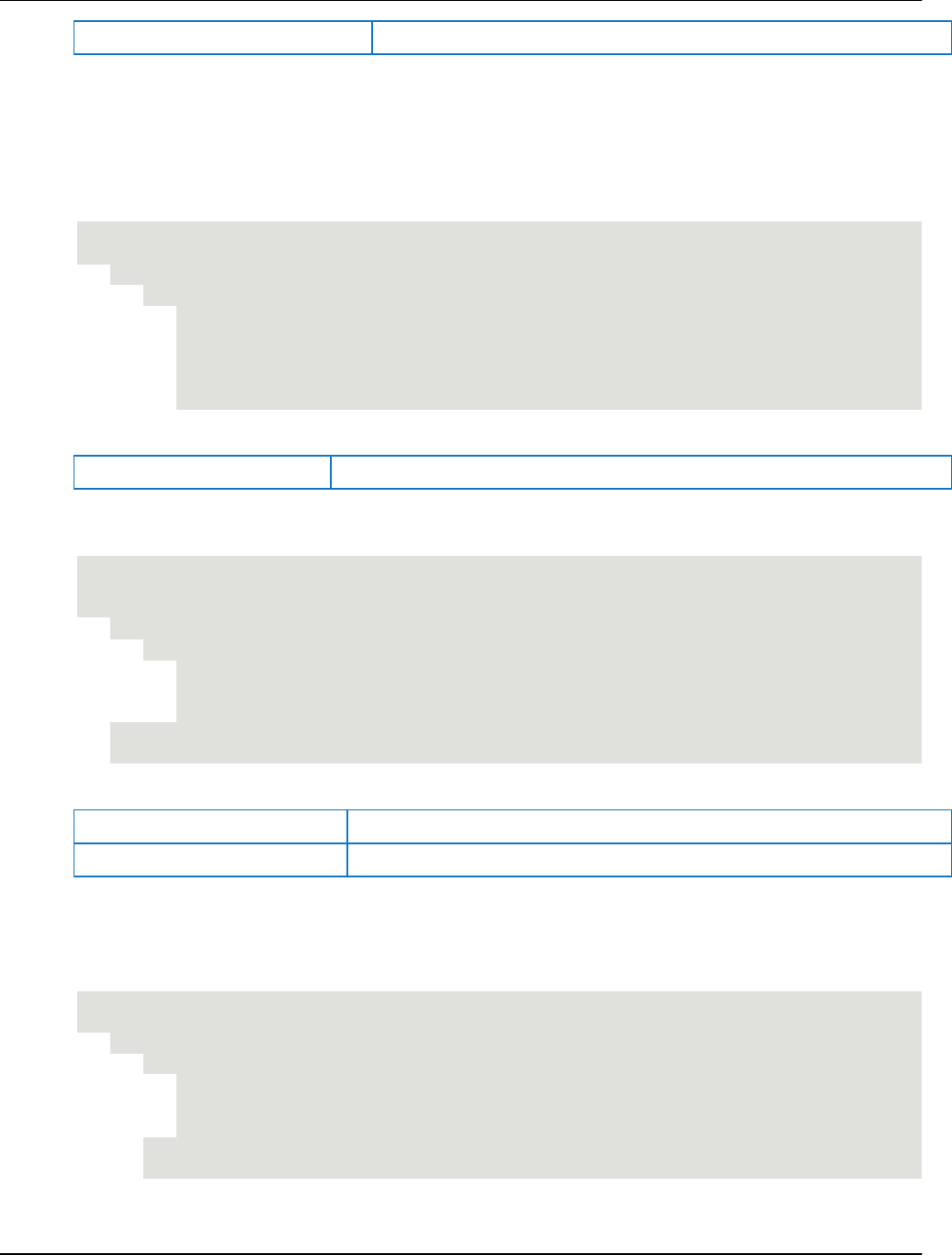
AVEVA™ Historian Retrieval Guide formerly Wonderware SQL Query Examples
146
SysTimeSec
59.0
Using the COUNT() Function
The COUNT(*) function works directly in a four-part query, but is not supported inside of the
OPENQUERY function.
For example:
SELECT count(*)
FROM History
WHERE TagName = 'SysTimeSec'
AND DateTime >= '2001-12-20 0:00'
AND DateTime <= '2001-12-20 0:05'
AND wwRetrievalMode = 'delta'
AND Value >= 30
The result is:
150
If you use the OPENQUERY function, you cannot perform arithmetic functions on the COUNT(*) column.
However, you can perform the count outside of the OPENQUERY, as follows:
SELECT count(*), count(*)/2 FROM OPENQUERY(INSQL, 'SELECT DateTime, vValue,
Quality, QualityDetail
FROM History
WHERE TagName IN ("SysTimeSec")
AND DateTime >= "2002-04-16 03:00:00.000"
AND DateTime <= "2002-04-16 06:00:00.000"
AND wwRetrievalMode = "Delta"
')
The result is:
10801
5400
(1 row(s) affected)
Using an Arithmetic Function
The following query adds the values of two tags from the WideHistory table.
SELECT * FROM OpenQuery(INSQL,'
SELECT DateTime, ReactLevel, ProdLevel, "Sum" = ReactLevel+Prodlevel
FROM WideHistory
WHERE DateTime > "2001-02-28 18:56"
AND DateTime < "2001-02-28 19:00"
AND wwRetrievalMode = "Cyclic"
')
The results are:

SQL Query Examples AVEVA™ Historian Retrieval Guide formerly Wonderware
147
DateTime
ReactLevel
Prodlevel
Sum
2001-02-28 18:56:00.000
1525.0
2343.0
3868.0
2001-02-28 18:56:00.000
1525.0
2343.0
3868.0
2001-02-28 18:56:00.000
1525.0
2343.0
3868.0
2001-02-28 18:56:00.000
1525.0
2343.0
3868.0
2001-02-28 18:56:00.000
2025.0
2343.0
4368.0
2001-02-28 18:56:00.000
2025.0
2343.0
4368.0
...
(100 row(s) affected)
If you use a math operator, such as plus (+), minus (-), multiply (*), or divide (/), you will need to add a
blank space in front of and after the operator. For example, "Value - 2" instead of "Value-2".
Using an Aggregate Function
The following query returns the minimum, maximum, average, and sum of the tag 'ReactLevel' from the
WideHistory table.
SELECT * FROM OpenQuery(INSQL,'
SELECT "Minimum" = min(ReactLevel),
"Maximum" = max(ReactLevel),
"Average" = avg(ReactLevel),
"Sum" = sum(ReactLevel)
FROM WideHistory
WHERE DateTime > "2001-02-28 18:55:00 "
AND DateTime < "2001-02-28 19:00:00"
AND wwRetrievalMode = "Cyclic"
')
The results are:
Minimum
Maximum
Average
Sum
-25.0
2025.0
1181.2
118120.0
(1 row(s) affected)
If you perform a SUM or AVG in delta retrieval mode against the Wide table, the aggregation will only be
performed when the value has changed. The aggregation will not apply to all of the rows returned for
each column.
For example, the following query has no aggregation applied:
SELECT * FROM OpenQuery(INSQL, 'SELECT DateTime, SysTimeHour, SysTimeMin,
SysTimeSec, SysDateDay
FROM AnalogWideHistory
WHERE DateTime >= "2001-08-15 13:20:57.345"
AND DateTime < "2001-08-15 13:21:03.345"
AND wwRetrievalMode = "Delta"
')
GO
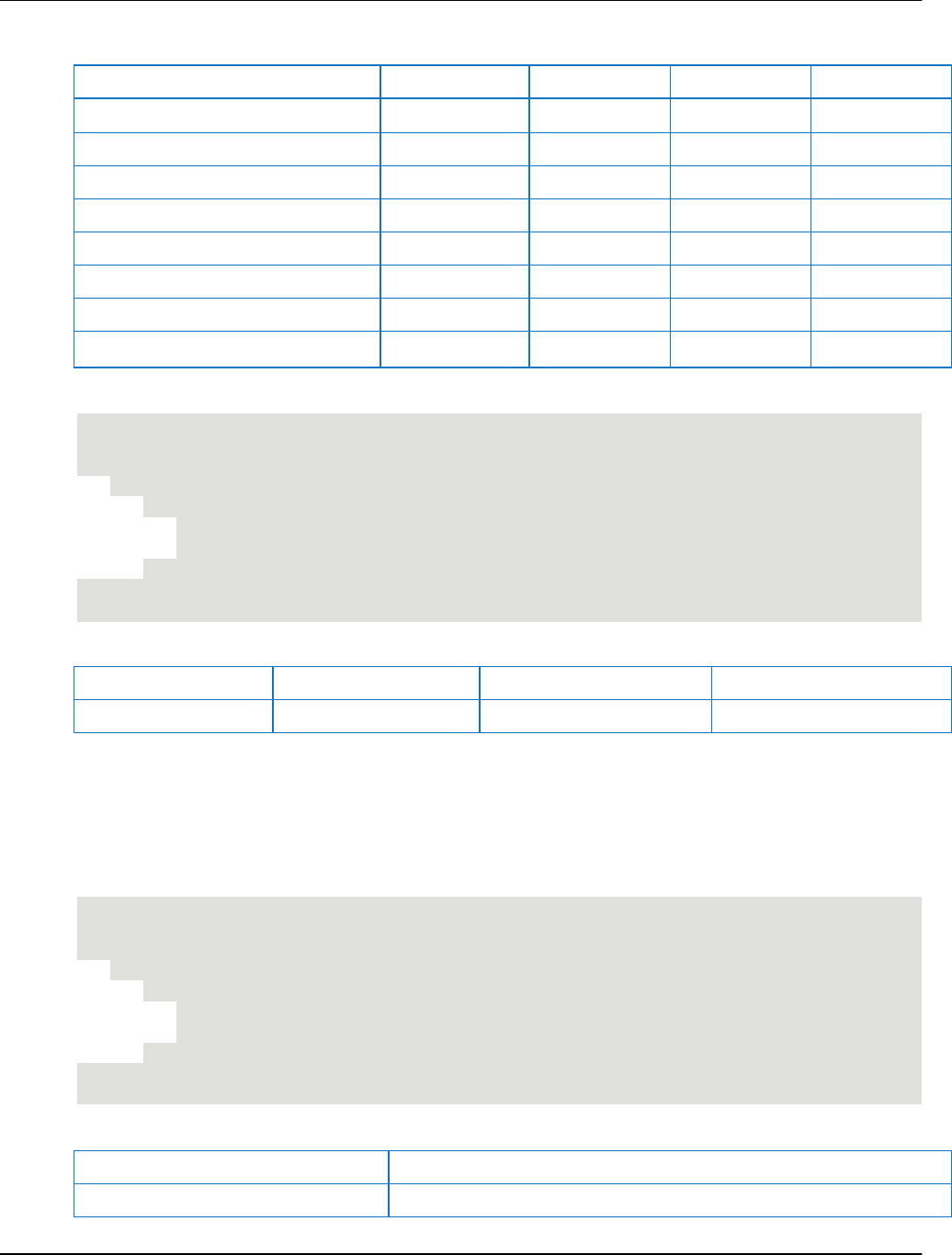
AVEVA™ Historian Retrieval Guide formerly Wonderware SQL Query Examples
148
The results are:
DateTime
SysTimeHour
SysTimeMin
SysTimeSec
SysDateDay
2001-08-15 13:20:57.343
13
20
57
15
2001-08-15 13:20:58.000
13
20
58
15
2001-08-15 13:20:59.000
13
20
59
15
2001-08-15 13:21:00.000
13
21
0
15
2001-08-15 13:21:01.000
13
21
1
15
2001-08-15 13:21:02.000
13
21
2
15
2001-08-15 13:21:03.000
13
21
3
15
(7 row(s) affected)
Then, a SUM is applied to all of the returned column values:
SELECT * FROM OpenQuery(INSQL,'SELECT Sum(SysTimeHour), Sum(SysTimeMin),
Sum(SysTimeSec), Sum(SysDateDay)
FROM WideHistory
WHERE DateTime >= "2001-08-15 13:20:57.345"
AND DateTime < "2001-08-15 13:21:03.345"
AND wwRetrievalMode = "Delta"
')
GO
The results are:
SysTimeHour
SysTimeMin
SysTimeSec
SysDateDay
13
41
180
15
Thus, for delta retrieval mode, a SUM or AVG is applied only if the value has changed from the previous
row.
If you perform an AVG in delta retrieval mode, AVG will be computed as:
SUM of delta values/number of delta values
For example, an AVG is applied to all of the returned column values:
SELECT * FROM OpenQuery(INSQL,'SELECT Avg(SysTimeHour), Avg(SysTimeMin),
Avg(SysTimeSec), Avg(SysDateDay)
FROM WideHistory
WHERE DateTime >= "2001-08-15 13:20:57.345"
AND DateTime < "2001-08-15 13:21:03.345"
AND wwRetrievalMode = "Delta"
')
GO
The results are:
SysTimeMin
SysTimeSec
20.5
25.714285714285715
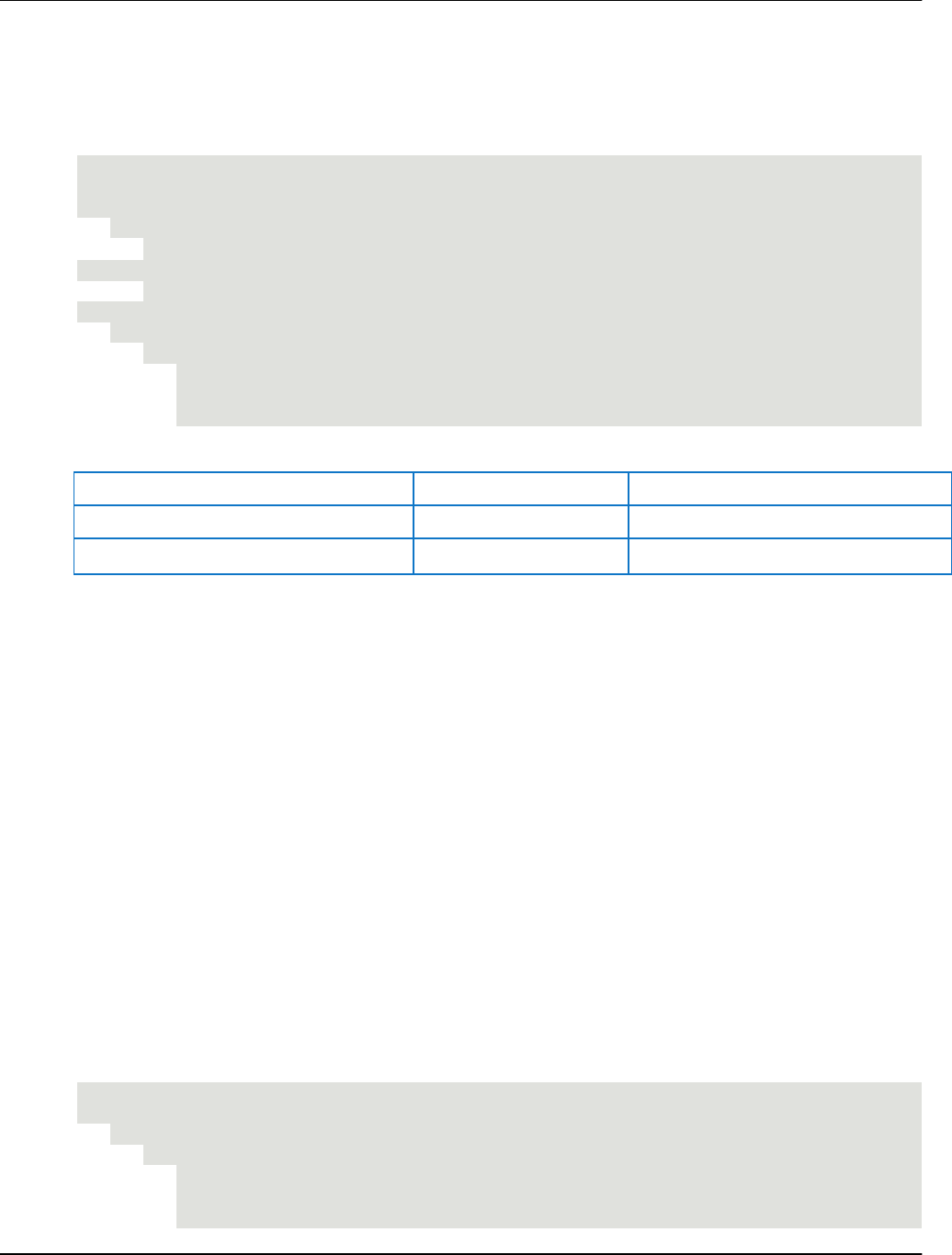
SQL Query Examples AVEVA™ Historian Retrieval Guide formerly Wonderware
149
Making and Querying Annotations
The following query creates an annotation for the specified tag. The annotation is made in response to a
pump turning off. Then, the annotations for a particular tag are returned.
DECLARE @@UserKey INT
SELECT @@UserKey = UserKey
FROM UserDetail
WHERE UserName = 'wwAdmin'
INSERT INTO Annotation (TagName, UserKey, DateTime, Content)
VALUES ('ReactLevel', @@UserKey, GetDate(), 'The Pump is off')
SELECT DateTime, TagName, Content
FROM Annotation
WHERE Annotation.TagName = 'ReactLevel'
AND DateTime > '27 Feb 01'
AND DateTime <= GetDate()
The results are:
DateTime
TagName
Content
2001-02-28 19:18:00.000
ReactLevel
The Pump is off
(1 row(s) affected)
Using Comparison Operators with Delta Retrieval
The system behaves differently when doing typical delta-based queries where a start date and end date
are specified using the comparison operators >=, >, <= and <. The comparison operators can be used
on the History and WideHistory tables. The comparison operators also apply regardless of how the query
is executed (for example, four-part naming, OLE DB provider views, and so on).
Delta queries that use the comparison operators return all the valid changes to a set of tags over the
specified time span. Using deadbands and other filters may modify the set of valid changes.
Specifying the Start Date with ">="
If the start date is specified using >= (greater than or equal to), then a row is always returned for the
specified start date. If the start date/time coincides exactly with a valid value change, then the Quality is
normal (0). Otherwise, the value at the start date is returned, and the Quality value is 133 (because the
length of time that the tag's value was at X is unknown).
Query 1
For this query, the start date will not correspond to a data change:
SELECT DateTime, Value, Quality
FROM History
WHERE TagName = 'SysTimeMin'
AND wwRetrievalMode = 'Delta'
AND DateTime >= '2001-01-13 12:00:30'
AND DateTime < '2001-01-13 12:10:00'
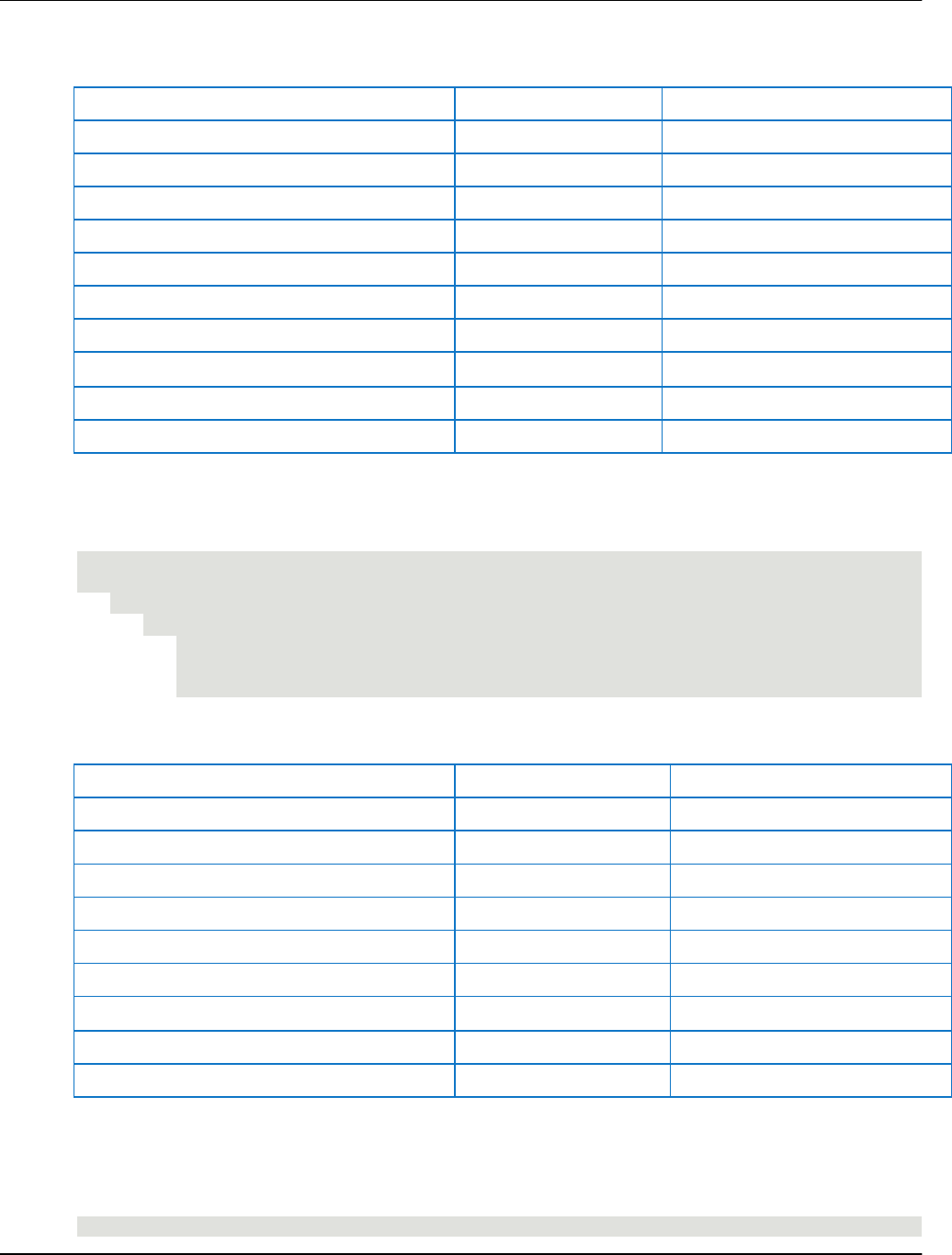
AVEVA™ Historian Retrieval Guide formerly Wonderware SQL Query Examples
150
The start time (12:00:30) does not correspond with an actual change in value, and is therefore marked
with the initial quality of 133:
DateTime
Value
Quality
2001-01-13 12:00:30.000
0
133
2001-01-13 12:01:00.000
1
0
2001-01-13 12:02:00.000
2
0
2001-01-13 12:03:00.000
3
0
2001-01-13 12:04:00.000
4
0
2001-01-13 12:05:00.000
5
0
2001-01-13 12:06:00.000
6
0
2001-01-13 12:07:00.000
7
0
2001-01-13 12:08:00.000
8
0
2001-01-13 12:09:00.000
9
0
(10 row(s) affected)
Query 2
For this query, the start date will correspond to a data change:
SELECT DateTime, Value, Quality
FROM History
WHERE TagName = 'SysTimeMin'
AND wwRetrievalMode = 'Delta'
AND DateTime >= '2001-01-13 12:01:00'
AND DateTime < '2001-01-13 12:10:00'
The start time (12:01:00) does correspond exactly with an actual change in value, and is therefore
marked with the normal quality of 0.
DateTime
Value
Quality
2001-01-13 12:01:00.000
1
0
2001-01-13 12:02:00.000
2
0
2001-01-13 12:03:00.000
3
0
2001-01-13 12:04:00.000
4
0
2001-01-13 12:05:00.000
5
0
2001-01-13 12:06:00.000
6
0
2001-01-13 12:07:00.000
7
0
2001-01-13 12:08:00.000
8
0
2001-01-13 12:09:00.000
9
0
(9 row(s) affected)
Query 3
For this query, the start date will return at least one row, even though the query captures no data
changes:
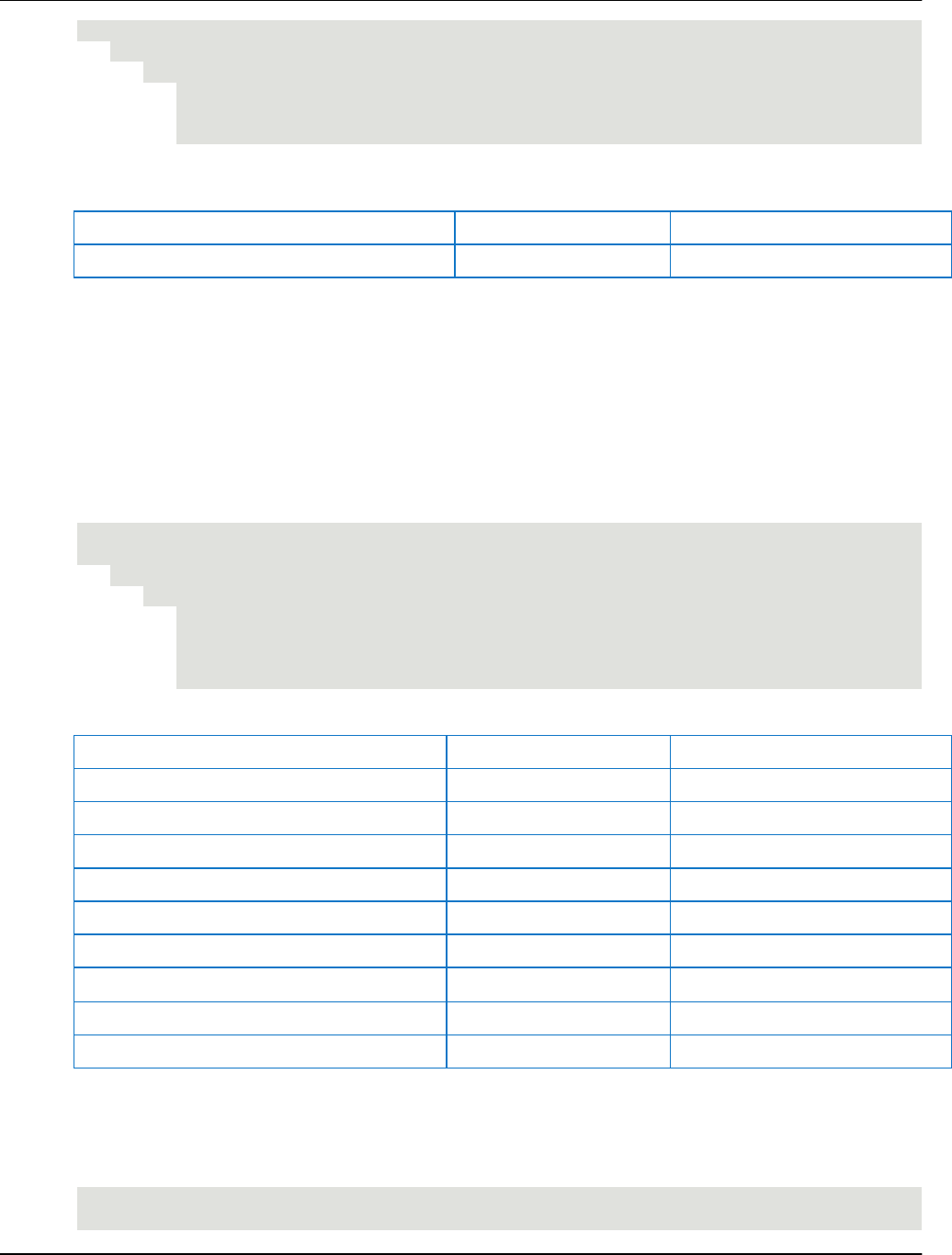
SQL Query Examples AVEVA™ Historian Retrieval Guide formerly Wonderware
151
SELECT DateTime, Value, Quality
FROM History
WHERE TagName = 'SysTimeMin'
AND wwRetrievalMode = 'Delta'
AND DateTime >= '2001-01-13 12:00:30'
AND DateTime < '2001-01-13 12:01:00'
The query does not capture an actual change in value, and is therefore marked with the initial value
quality of 133 for the start time of the query:
DateTime
Value
Quality
2001-01-13 12:00:30.000
0
133
(1 row(s) affected)
Specifying the Start Date with ">"
If the start date is specified using > (greater than), then the first row returned is the first valid change after
(but not including) the start date. No initial value row is returned. A query that uses > to specify its start
date may return zero rows.
Query 1
For this query, the first row that will be returned will be the first valid change after (but not including) the
start time (12:00:30):
SELECT DateTime, Value, Quality
FROM History
WHERE TagName = 'SysTimeMin'
AND wwRetrievalMode = 'Delta'
AND DateTime > '2001-01-13 12:00:30'
AND DateTime < '2001-01-13 12:10:00'
The first row returned is the first valid change after (but not including) the start time (12:00:30):
DateTime
Value
Quality
2001-01-13 12:01:00.000
1
0
2001-01-13 12:02:00.000
2
0
2001-01-13 12:03:00.000
3
0
2001-01-13 12:04:00.000
4
0
2001-01-13 12:05:00.000
5
0
2001-01-13 12:06:00.000
6
0
2001-01-13 12:07:00.000
7
0
2001-01-13 12:08:00.000
8
0
2001-01-13 12:09:00.000
9
0
(9 row(s) affected)
Query 2
For this query, the start date will correspond to a data change, but it will be excluded from the result set
because the operator used is greater than, not greater than or equal to.
SELECT DateTime, Value, Quality
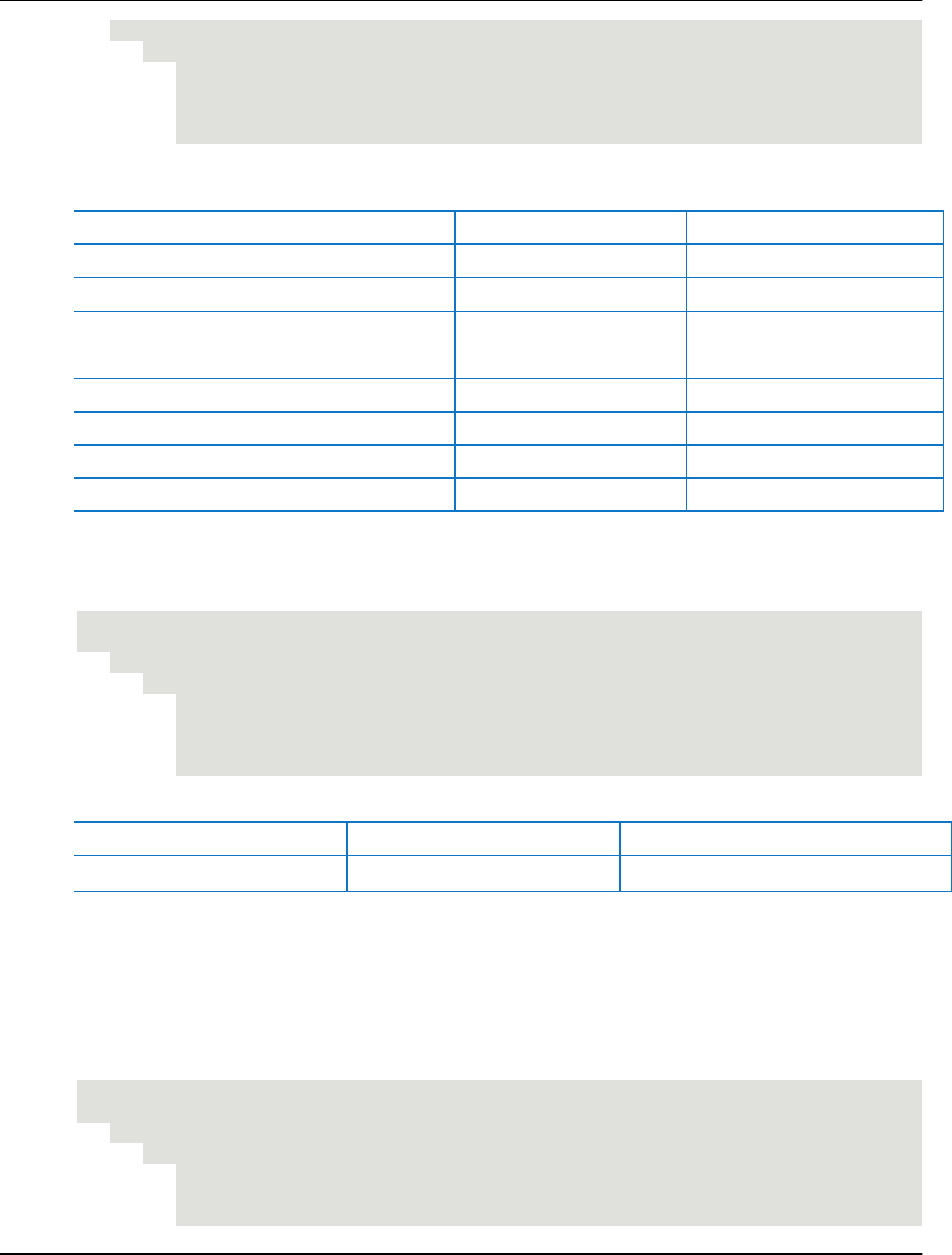
AVEVA™ Historian Retrieval Guide formerly Wonderware SQL Query Examples
152
FROM History
WHERE TagName = 'SysTimeMin'
AND wwRetrievalMode = 'Delta'
AND DateTime > '2001-01-13 12:01:00'
AND DateTime < '2001-01-13 12:10:00'
The start time (12:01:00) corresponds exactly with an actual change in value, but it is excluded from the
result set because the operator used is greater than, not greater than or equal to.
DateTime
Value
Quality
2001-01-13 12:02:00.000
2
0
2001-01-13 12:03:00.000
3
0
2001-01-13 12:04:00.000
4
0
2001-01-13 12:05:00.000
5
0
2001-01-13 12:06:00.000
6
0
2001-01-13 12:07:00.000
7
0
2001-01-13 12:08:00.000
8
0
2001-01-13 12:09:00.000
9
0
(8 row(s) affected)
Query 3
This query will return no rows, because no data changes are captured:
SELECT DateTime, Value, Quality
FROM History
WHERE TagName = 'SysTimeMin'
AND wwRetrievalMode = 'Delta'
AND DateTime > '2001-01-13 12:00:30'
AND DateTime < '2001-01-13 12:01:00'
The query does not capture an actual change in value; therefore, no rows are returned.
DateTime
Value
Quality
(0 row(s) affected)
Specifying the End Date with "<="
If the end date is specified using <= (less than or equal to) then the last row returned is the last valid
change up to, and including, the end date. If the end date uses "<=" then the last change returned may
have a date/time exactly at the end date. If there is a value exactly at the end date, it will be returned.
This query uses the remote table view.
SELECT DateTime, Value, Quality
FROM History
WHERE TagName = 'SysTimeMin'
AND wwRetrievalMode = 'Delta'
AND DateTime > '2001-01-13 12:00:30'
AND DateTime <= '2001-01-13 12:10:00'
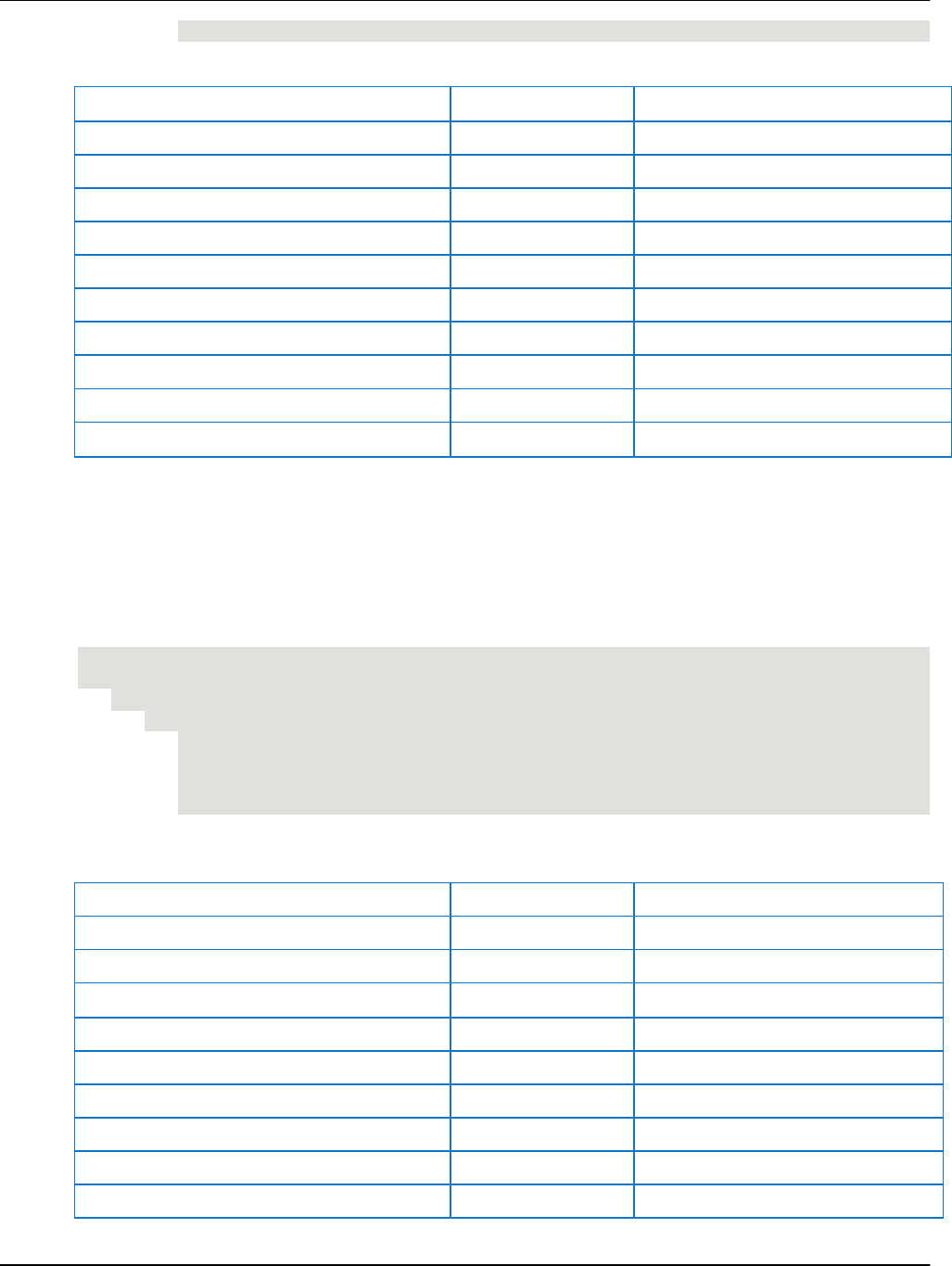
SQL Query Examples AVEVA™ Historian Retrieval Guide formerly Wonderware
153
Note that there is a valid change at exactly the end time of the query (12:10:00):
DateTime
Value
Quality
2001-01-13 12:01:00.000
1
0
2001-01-13 12:02:00.000
2
0
2001-01-13 12:03:00.000
3
0
2001-01-13 12:04:00.000
4
0
2001-01-13 12:05:00.000
5
0
2001-01-13 12:06:00.000
6
0
2001-01-13 12:07:00.000
7
0
2001-01-13 12:08:00.000
8
0
2001-01-13 12:09:00.000
9
0
2001-01-13 12:10:00.000
10
0
(10 row(s) affected)
Specifying the End Date with "<"
If the end date is specified using < (less than), then the last row returned is the last valid change up to
(but not including) the end date. If the end date uses "<" then the last event returned will have a date/time
less than the end date. If there is an event exactly at the end date, it will not be returned.
This query uses the remote table view.
SELECT DateTime, Value, Quality
FROM History
WHERE TagName = 'SysTimeMin'
AND wwRetrievalMode = 'Delta'
AND DateTime > '2001-01-13 12:00:30'
AND DateTime < '2001-01-13 12:10:00'
Note that there is a valid change at exactly the end time of the query (12:10:00), but it is excluded from
the result set.
DateTime
Value
Quality
2001-01-13 12:01:00.000
1
0
2001-01-13 12:02:00.000
2
0
2001-01-13 12:03:00.000
3
0
2001-01-13 12:04:00.000
4
0
2001-01-13 12:05:00.000
5
0
2001-01-13 12:06:00.000
6
0
2001-01-13 12:07:00.000
7
0
2001-01-13 12:08:00.000
8
0
2001-01-13 12:09:00.000
9
0

AVEVA™ Historian Retrieval Guide formerly Wonderware SQL Query Examples
154
(9 row(s) affected)
Using Comparison Operators with Cyclic Retrieval and Cycle
Count
Cyclic queries with the wwCycleCount time domain extension return a set of evenly spaced rows over the
specified time span. The result set will always return the number of rows specified by the cycle count
extension for each tag in the query. The resolution for these rows is calculated by dividing the time span
by the cycle count.
Specifying Cycle Count with Two Equity Operators
If the time range is specified using >= and <=, then the first row falls exactly on the start time, and the last
row falls exactly on the end time. In this case, the resolution used is (end date – start date) / (cyclecount
– 1).
This query uses a cycle count of 60, resulting in a 1 second resolution for the data. The query uses the
remote table view.
SELECT DateTime, Value
FROM History
WHERE TagName = 'SysTimeSec'
AND DateTime >= '2001-01-13 12:00:00'
AND DateTime <= '2001-01-13 12:00:59'
AND wwCycleCount = 60
AND wwRetrievalMode = 'Cyclic'
The results are:
DateTime
Value
2001-01-13 12:00:00.000
0
2001-01-13 12:00:01.000
1
2001-01-13 12:00:02.000
2
2001-01-13 12:00:03.000
3
2001-01-13 12:00:04.000
4
...
2001-01-13 12:00:56.000
56
2001-01-13 12:00:57.000
57
2001-01-13 12:00:58.000
58
2001-01-13 12:00:59.000
59
(60 row(s) affected)
Specifying Cycle Count with One Equity Operator
If one end of the time range is excluded (by using > instead of >= or < instead of <=). then a gap of
"resolution" is left at the beginning (or end) of the result set.
The resolution is calculated as (end date – start date) / (cyclecount).
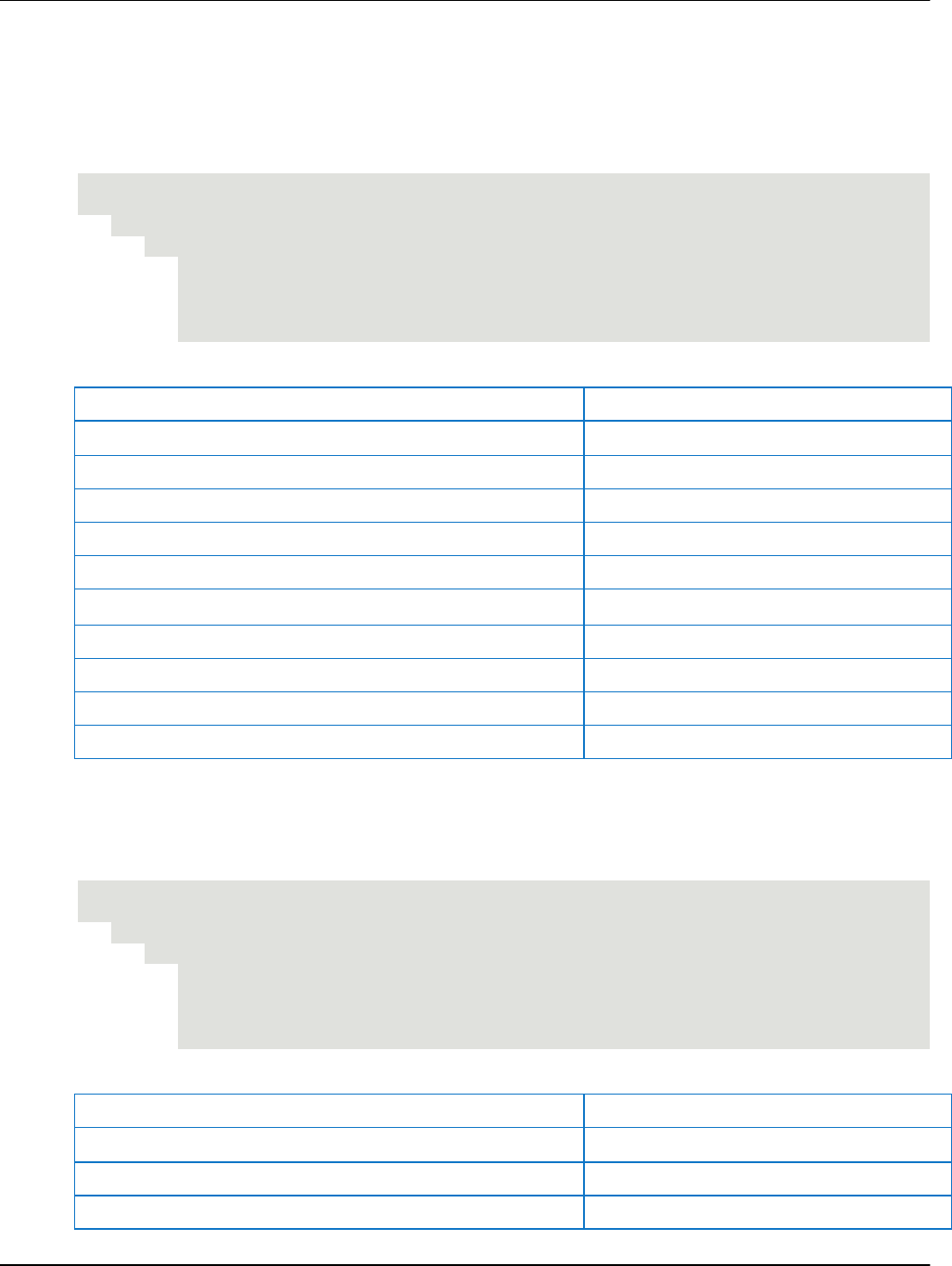
SQL Query Examples AVEVA™ Historian Retrieval Guide formerly Wonderware
155
The row that equates to the time which is designated using the < (or >) operator is not returned.
These queries use the remote table view.
Query 1
This query uses a cycle count of 60, resulting in a 1 second resolution for the data. The starting time is set
to >=.
SELECT DateTime, Value
FROM History
WHERE TagName = 'SysTimeSec'
AND wwCycleCount = 60
AND DateTime >= '2001-01-13 12:00:00'
AND DateTime < '2001-01-13 12:01:00'
The results are:
DateTime
Value
2001-01-13 12:00:00.000
0
2001-01-13 12:00:01.000
1
2001-01-13 12:00:02.000
2
2001-01-13 12:00:03.000
3
2001-01-13 12:00:04.000
4
...
2001-01-13 12:00:56.000
56
2001-01-13 12:00:57.000
57
2001-01-13 12:00:58.000
58
2001-01-13 12:00:59.000
59
(60 row(s) affected)
Query 2
This query also uses a cycle count of 60, resulting in a 1 second resolution for the data. The ending time
is set to <=.
SELECT DateTime, Value
FROM History
WHERE TagName = 'SysTimeSec'
AND wwCycleCount = 60
AND DateTime > '2001-01-13 12:00:00'
AND DateTime <= '2001-01-13 12:01:00'
The results are:
DateTime
Value
2001-01-13 12:00:01.000
1
2001-01-13 12:00:02.000
2
2001-01-13 12:00:03.000
3
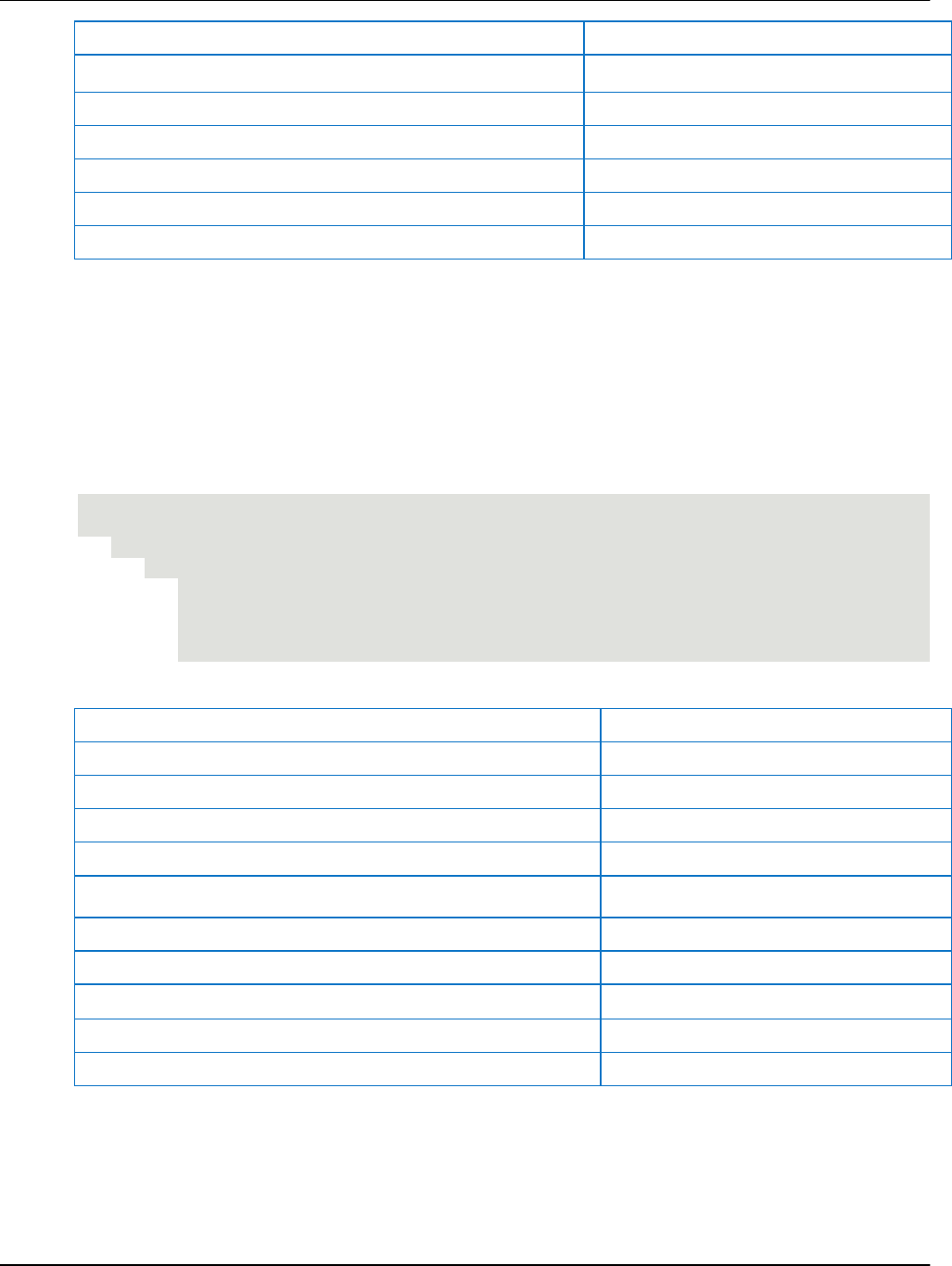
AVEVA™ Historian Retrieval Guide formerly Wonderware SQL Query Examples
156
2001-01-13 12:00:04.000
4
...
2001-01-13 12:00:56.000
56
2001-01-13 12:00:57.000
57
2001-01-13 12:00:58.000
58
2001-01-13 12:00:59.000
59
2001-01-13 12:01:00.000
0
(60 row(s) affected)
Specifying Cycle Count with No Equity Operators
If both ends of the time range are excluded (by using > and <) then a gap of "resolution" is left at the
beginning and end of the result set.
The resolution is calculated as (end date – start date) / (cyclecount + 1).
The row(s) that equate to the start and end times are not returned.
This query uses the remote table view.
SELECT DateTime, Value
FROM History
WHERE TagName = 'SysTimeSec'
AND wwCycleCount = 60
AND DateTime > '2001-01-13 12:00:00'
AND DateTime < '2001-01-13 12:01:01'
The results are:
DateTime
Value
2001-01-13 12:00:01.000
1
2001-01-13 12:00:02.000
2
2001-01-13 12:00:03.000
3
2001-01-13 12:00:04.000
4
...
2001-01-13 12:00:56.000
56
2001-01-13 12:00:57.000
57
2001-01-13 12:00:58.000
58
2001-01-13 12:00:59.000
59
2001-01-13 12:01:00.000
0
(60 row(s) affected)

SQL Query Examples AVEVA™ Historian Retrieval Guide formerly Wonderware
157
Using Comparison Operators with Cyclic Retrieval and
Resolution
Cyclic queries that use comparison operators and the resolution time domain extension return a set of
evenly spaced rows over the specified time span. The resolution for these rows is specified in the query.
Using Two Equality Operators for Comparison with Cyclic Retrieval
and Resolution
If the time range is specified using >= and <=, then the first row falls exactly on the start time. The last row
will fall exactly on the end time, if the resolution divides exactly into the specified time duration. If the
resolution does not divide exactly into the specified time duration, then the last row returned will be the
last row satisfying (start date + N*resolution) which has a timestamp less than the end date.
In short:
<= endtime MAY return a last row containing the exact endtime (but it is not guaranteed to do so)
< endtime is guaranteed NOT to return a last row containing the exact endtime
This query sets the resolution to 1 second.
SELECT DateTime, Value
FROM History
WHERE TagName = 'SysTimeSec'
AND wwResolution = 1000
AND DateTime >= '2001-01-13 12:00:00'
AND DateTime <= '2001-01-13 12:01:00'
The results are:
DateTime
Value
2001-01-13 12:00:00.000
0
2001-01-13 12:00:01.000
1
2001-01-13 12:00:02.000
2
2001-01-13 12:00:03.000
3
2001-01-13 12:00:04.000
4
...
2001-01-13 12:00:56.000
56
2001-01-13 12:00:57.000
57
2001-01-13 12:00:58.000
58
2001-01-13 12:00:59.000
59
2001-01-13 12:01:00.000
0
(61 row(s) affected)
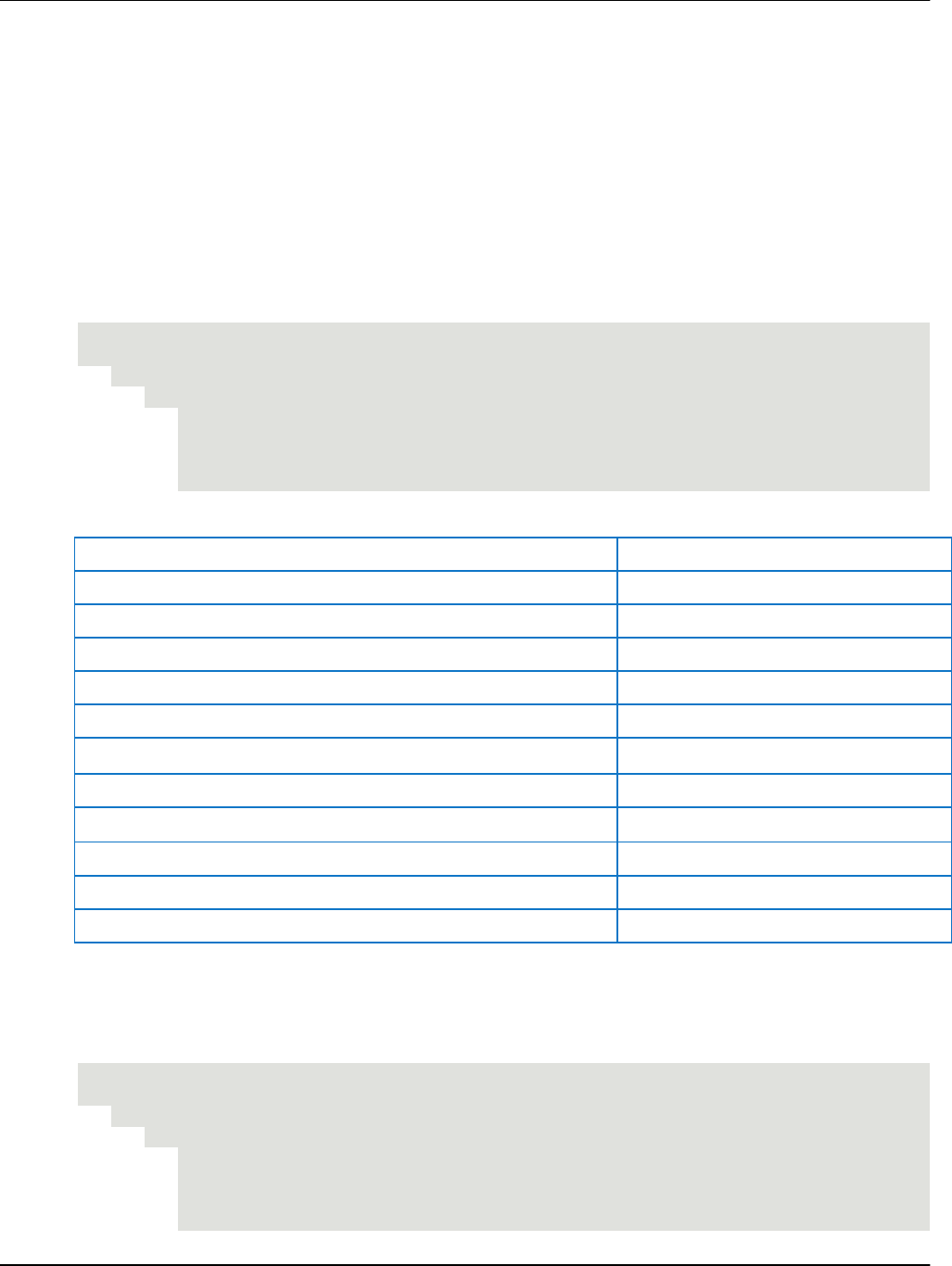
AVEVA™ Historian Retrieval Guide formerly Wonderware SQL Query Examples
158
Using One Equality Operator for Comparison with Cyclic Retrieval and
Resolution
If the start time is excluded (by using > instead of >=), then a gap of "resolution" is left at the beginning of
the result set. In this case, the first row returned will have the timestamp of the (start date + resolution). If
the end date uses "<" then the last row returned will be the last row defined by (start date + N*resolution)
which has a timestamp less than the end date.
The row that equates to the time that is designated using the < (or >) operator is not returned.
Query 1
This query uses a resolution of 1000, resulting in a 1 second resolution for the data.. The starting time is
set to >=.
SELECT DateTime, Value
FROM History
WHERE TagName = 'SysTimeSec'
AND wwResolution = 1000
AND DateTime >= '2001-01-13 12:00:00'
AND DateTime < '2001-01-13 12:01:00'
The results are:
DateTime
Value
2001-01-13 12:00:00.000
0
2001-01-13 12:00:01.000
1
2001-01-13 12:00:02.000
2
2001-01-13 12:00:03.000
3
2001-01-13 12:00:04.000
4
...
2001-01-13 12:00:55.000
55
2001-01-13 12:00:56.000
56
2001-01-13 12:00:57.000
57
2001-01-13 12:00:58.000
58
2001-01-13 12:00:59.000
59
(60 row(s) affected)
Query 2
This query also uses a row resolution of 1000, resulting in a 1 second resolution for the data. The starting
time is set to <=.
SELECT DateTime, Value
FROM History
WHERE TagName = 'SysTimeSec'
AND wwResolution = 1000
AND DateTime > '2001-01-13 12:00:00'
AND DateTime <= '2001-01-13 12:01:00'
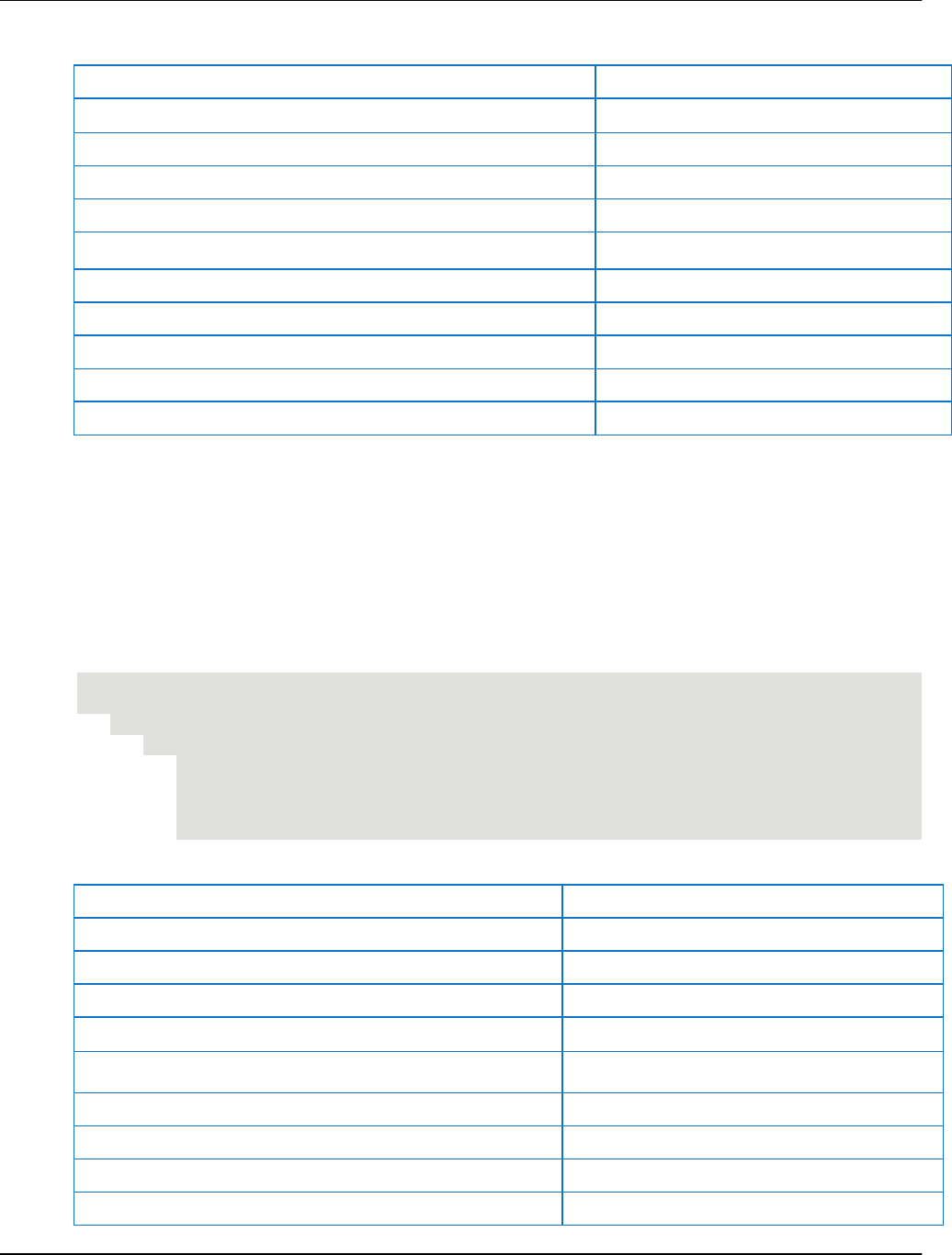
SQL Query Examples AVEVA™ Historian Retrieval Guide formerly Wonderware
159
The results are:
DateTime
Value
2001-01-13 12:00:01.000
1
2001-01-13 12:00:02.000
2
2001-01-13 12:00:03.000
3
2001-01-13 12:00:04.000
4
...
2001-01-13 12:00:56.000
56
2001-01-13 12:00:57.000
57
2001-01-13 12:00:58.000
58
2001-01-13 12:00:59.000
59
2001-01-13 12:01:00.000
0
(60 row(s) affected)
Using No Equality Operators for Comparison with Cyclic Retrieval
and Resolution
If both ends of the time range are excluded (by using > and <), then a gap of resolution is left at the
beginning and end of the result set.
The row(s) that equate to the start and end times are not returned.
This query uses a resolution of 1000, resulting in a 1 second resolution for the data.
SELECT DateTime, Value
FROM v_AnalogHistory
WHERE TagName = 'SysTimeSec'
AND wwResolution = 1000
AND DateTime > '2001-01-13 12:00:00'
AND DateTime < '2001-01-13 12:01:01'
The results are:
DateTime
Value
2001-01-13 12:00:01.000
1
2001-01-13 12:00:02.000
2
2001-01-13 12:00:03.000
3
2001-01-13 12:00:04.000
4
...
2001-01-13 12:00:56.000
56
2001-01-13 12:00:57.000
57
2001-01-13 12:00:58.000
58
2001-01-13 12:00:59.000
59
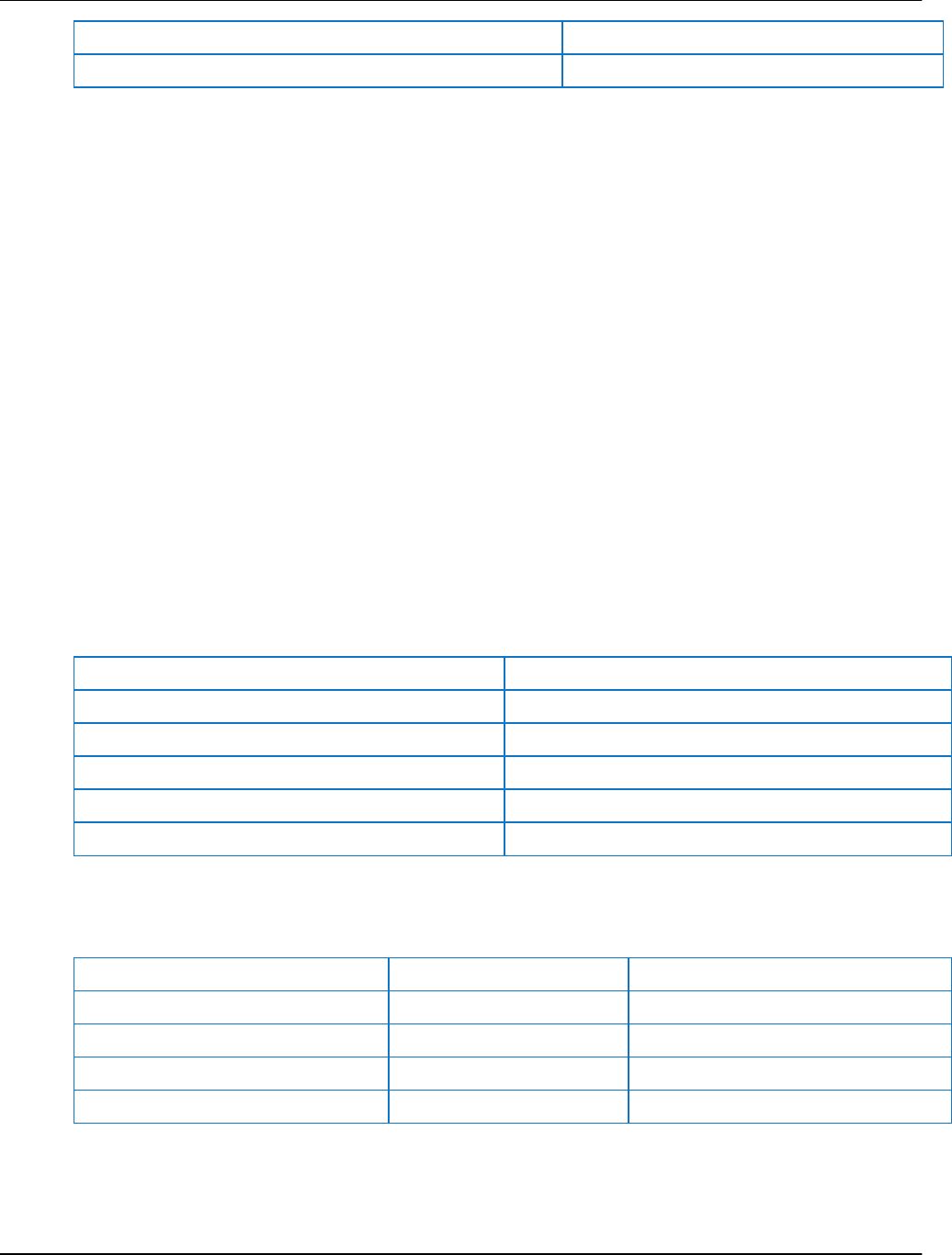
AVEVA™ Historian Retrieval Guide formerly Wonderware SQL Query Examples
160
DateTime
Value
2001-01-13 12:01:00.000
0
(60 row(s) affected)
Returning Time Between Value Changes
You can return the amount of time before a tag's value changed to a subsequent value. This time is
returned using the wwResolution column.
This functionality works with the cyclic, delta, and full retrieval modes. The delta and full mode behavior
of wwResolution does not apply to the AnalogSummaryHistory and StateSummaryHistory tables.
If the time change value is greater than 2,147,000,000 milliseconds (~25 days), then the value of
wwResolution column is -1.
Example 1: Cyclic Retrieval on page 160
Example 2: Delta and Full Retrieval on page 161
Example 3: Querying the WideHistory Table on page 162
Example 4: Querying the History Table with the wwValueSelector Parameter on page 163
Example 5: Calculating Total Time Between Value Changes on page 164
Example 1: Cyclic Retrieval
For this example, the following data is stored in the Historian:
DateTime
Value
2012-01-01 07:59:53
34.42384
2012-01-01 08:00:13
15.02637
2012-01-01 08:00:33
20.29732
2012-01-01 08:00:53
37.40273
2012-01-01 08:01:13
24.31662
For cyclic retrieval, cycles start at the start DateTime and occur at intervals specified by wwResolution in
the query. If you query for the data 2012-01-01 08:00:00 to 2012-01-01 08:01:00 with four cycles, the
wwResolution column in the results show the time in milliseconds until the next point.
DateTime
Value
wwResolution
2012-01-01 08:00:00
34.42384
20000
2012-01-01 08:00:20
15.02637
20000
2012-01-01 08:00:40
20.29732
20000
2012-01-01 08:01:00
37.40273
20000
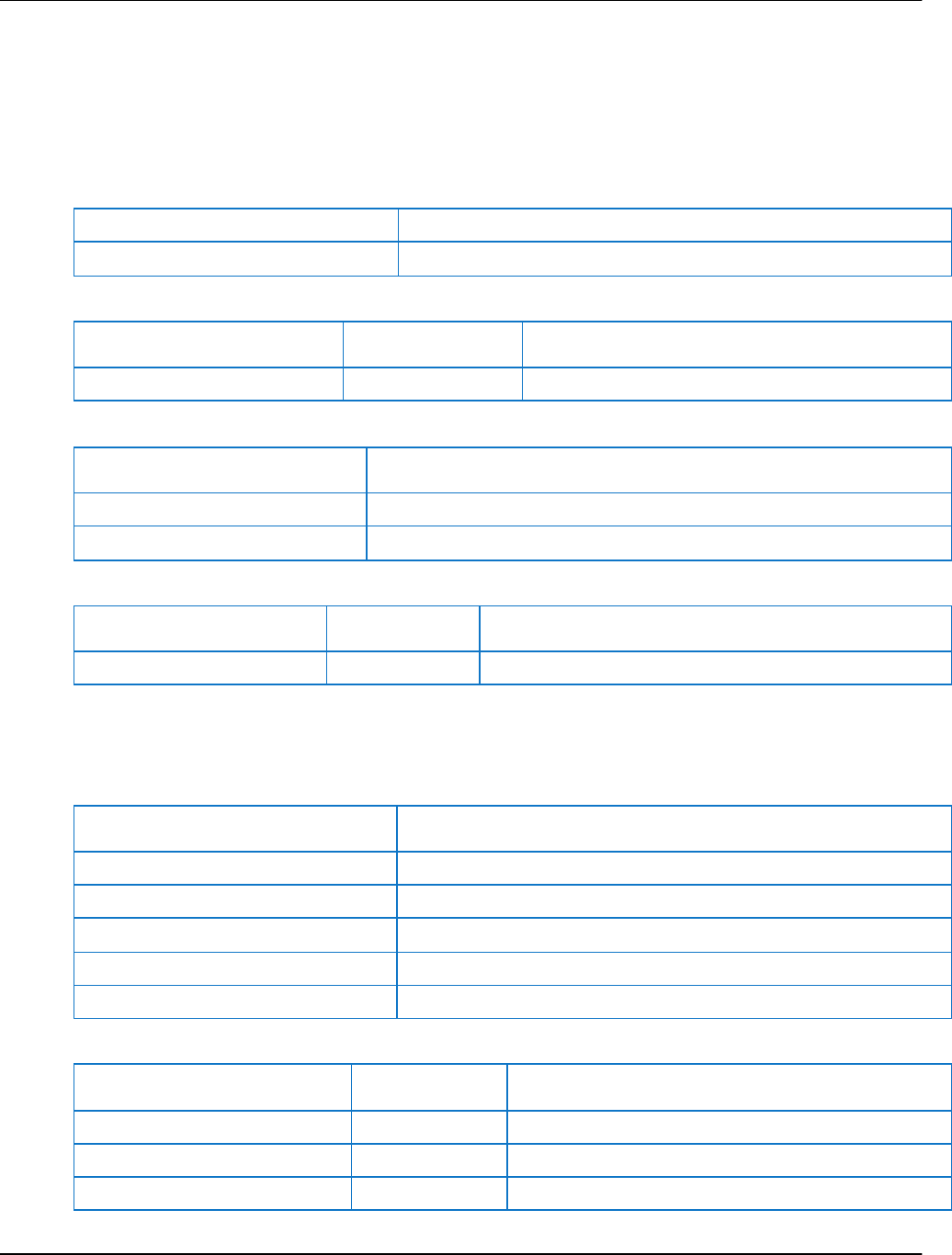
SQL Query Examples AVEVA™ Historian Retrieval Guide formerly Wonderware
161
Example 2: Delta and Full Retrieval
In delta and full mode, the wwResolution column is used in the query results to show the time in
milliseconds until the next point. When the first point in the result occurs before the query start time, the
wwResolution column shows the time from the start of the query to the next point. If there are no more
points after the first point, the wwResolution column is NULL.
For example, the following data is stored:
DateTime
Value
2012-01-01 07:59:53
34.42384
If you query for the data between 2012-01-01 08:00:00 to 2012-01-01 08:00:10, the results are:
DateTime
Value
wwResolution
2012-01-01 08:00:00
34.42384
NULL
However, if the data stored is:
DateTime
Value
2012-01-01 07:59:53
34.42384
2012-01-01 08:00:13
15.02637
Then the results are:
DateTime
Value
wwResolution
2012-01-01 08:00:00
34.42384
10000
When the last point in the result occurs before the query end time, the wwResolution column shows the
time until the end of the query when there is a next available point. If there are no more points, then the
wwResolution column shows NULL.
For example, the following is stored:
DateTime
Value
2012-01-01 07:59:53
34.42384
2012-01-01 08:00:13
15.02637
2012-01-01 08:00:33
20.29732
2012-01-01 08:00:53
37.40273
2012-01-01 08:01:13
24.31662
If you query for data from 2012-01-01 08:00:00 to 2012-01-01 08:05:00, the results are:
DateTime
Value
wwResolution
2012-01-01 08:00:00
34.42384
13000
2012-01-01 08:00:13
15.02637
20000
2012-01-01 08:00:33
20.29732
20000

AVEVA™ Historian Retrieval Guide formerly Wonderware SQL Query Examples
162
DateTime
Value
wwResolution
2012-01-01 08:00:53
37.40273
20000
2012-01-01 08:01:13
24.31662
NULL
If you query for data from 2012-01-01 08:00:00 to 2012-01-01 08:01:00, the results are:
DateTime
Value
wwResolution
2012-01-01 08:00:00
34.42384
13000
2012-01-01 08:00:13
15.02637
20000
2012-01-01 08:00:33
20.29732
20000
2012-01-01 08:00:53
37.40273
7000
If the last point happens to be end of the query, then the wwResolution value is zero, even when there
are no more points after the last point. For example, if you query for data from 2012-01-01 08:00:00 to
2012-01-01 08:01:13, the results are:
DateTime
Value
wwResolution
2012-01-01 08:00:00
34.42384
13000
2012-01-01 08:00:13
15.02637
20000
2012-01-01 08:00:33
20.29732
20000
2012-01-01 08:00:53
37.40273
20000
2012-01-01 08:01:13
24.31662
0
Example 3: Querying the WideHistory Table
If you execute a query on the WideHistory table for analog tags, wwResolution shows the time between
the first value change for ANY of the tags.
SELECT * FROM OpenQuery(INSQL,'
SELECT DateTime, SysTimeSec, SysTimeMin, wwResolution
FROM WideHistory
WHERE DateTime >= "20120119 12:44:00.000"
AND DateTime <= "20120119 12:45:00.000"
AND wwRetrievalMode = "Delta"
')
The results are:
DateTime
SysTimeSec
SysTimeMin
wwResolution
2012-01-19
12:44:00.0000000
0
44
1000
2012-01-19
12:44:01.0000000
1
44
1000
2012-01-19
12:44:02.0000000
2
44
1000
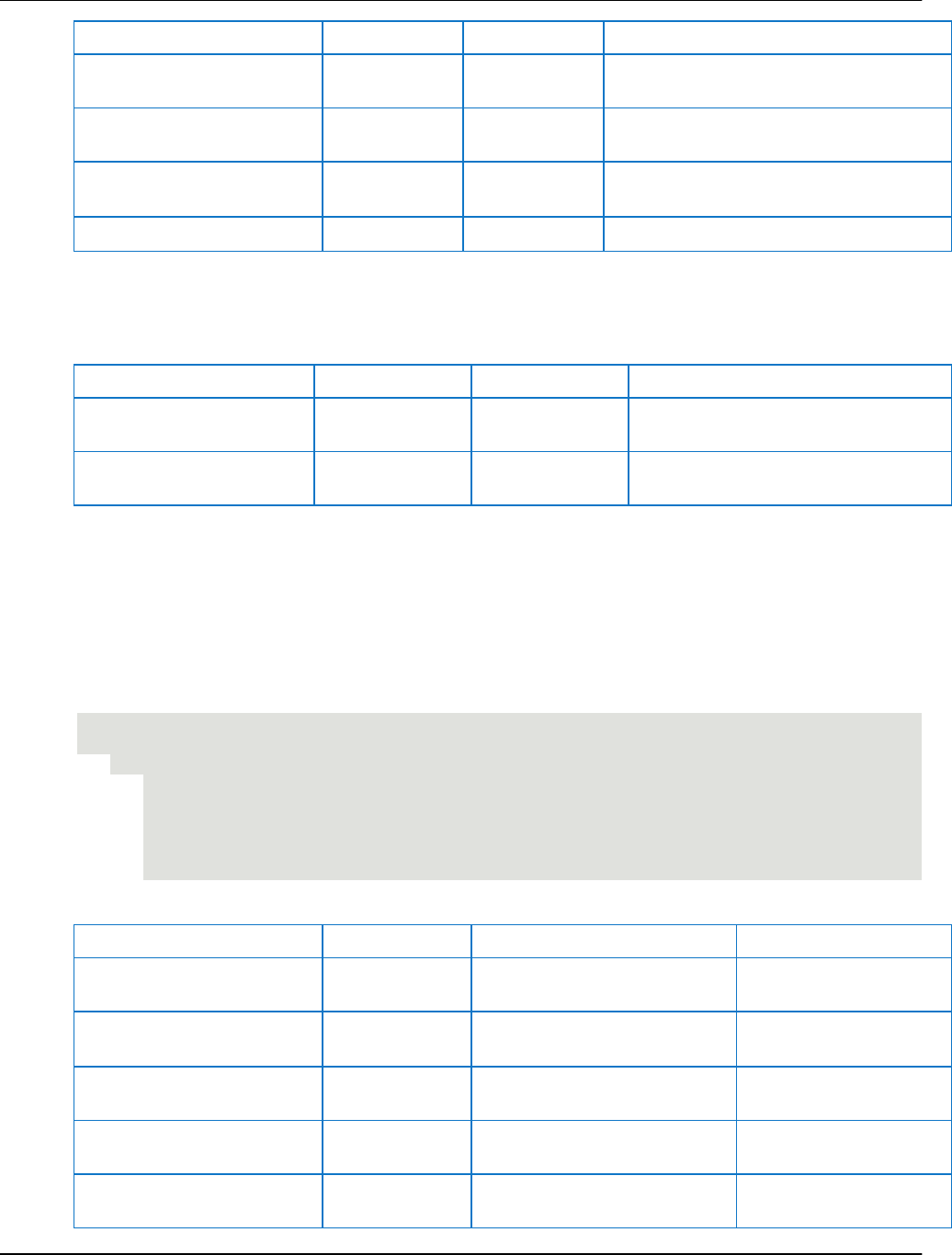
SQL Query Examples AVEVA™ Historian Retrieval Guide formerly Wonderware
163
DateTime
SysTimeSec
SysTimeMin
wwResolution
2012-01-19
12:44:03.0000000
3
44
1000
2012-01-19
12:44:04.0000000
4
44
1000
2012-01-19
12:44:05.0000000
5
44
1000
...
The wwResolution column shows 1000 milliseconds because the smallest time change is for the
SysTimeSec tag, which is changing every second.
If you run the same query using the SysTimeHour tag instead of the SysTimeSec tag, the results are:
DateTime
SysTimeHour
SysTimeMin
wwResolution
2012-01-19
12:44:00.0000000
12
44
60000
2012-01-19
12:45:00.0000000
12
45
0
The wwResolution column shows 60000 milliseconds because the smallest time change is for the
SysTimeMin tag, which is changing every minute (every 60 seconds). Because the query ended at the
time of the last value, a 0 is shown for wwResolution for the ending value.
Example 4: Querying the History Table with the wwValueSelector
Parameter
You can query the History table with the wwValueSelector parameter.
SELECT DateTime, TagName, Value, wwResolution
FROM History
WHERE Tagname like 'MyTag'
AND DateTime >= '2012-01-19 10:00:00'
AND DateTime <= '2012-01-19 11:00:00'
AND wwValueSelector = 'STDDEV'
The results are:
DateTime
TagName
Value
wwResolution
2012-01-19
10:00:00.0000000
MyTag
977.157928752564
60000
2012-01-19
10:01:00.0000000
MyTag
16.5619987924163
60000
2012-01-19
10:02:00.0000000
MyTag
16.5619987924163
60000
2012-01-19
10:03:00.0000000
MyTag
16.5619987924165
60000
2012-01-19
10:04:00.0000000
MyTag
16.5619987924163
180000
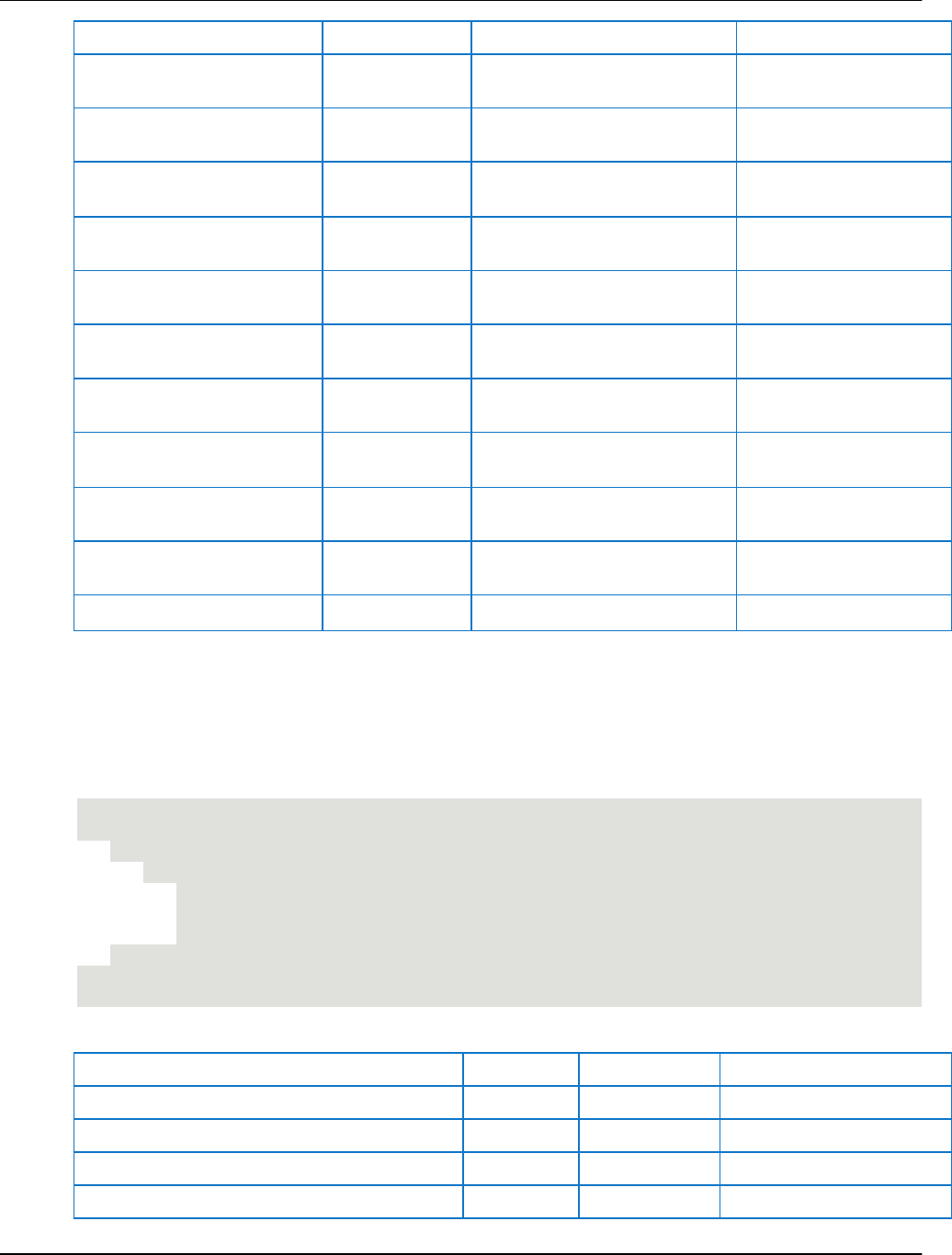
AVEVA™ Historian Retrieval Guide formerly Wonderware SQL Query Examples
164
DateTime
TagName
Value
wwResolution
2012-01-19
10:07:00.0000000
MyTag
16.5619987924171
60000
2012-01-19
10:08:00.0000000
MyTag
16.5619987924163
60000
2012-01-19
10:09:00.0000000
MyTag
16.5619987924179
60000
2012-01-19
10:10:00.0000000
MyTag
16.5619987924163
180000
2012-01-19
10:13:00.0000000
MyTag
16.5619987924195
60000
2012-01-19
10:14:00.0000000
MyTag
16.5619987924163
240000
2012-01-19
10:18:00.0000000
MyTag
16.5619987924226
180000
2012-01-19
10:21:00.0000000
MyTag
16.5619987924163
60000
2012-01-19
10:22:00.0000000
MyTag
16.5619987924226
60000
2012-01-19
10:23:00.0000000
MyTag
16.5619987924038
60000
...
Example 5: Calculating Total Time Between Value Changes
You can calculate the total time the multiple discrete tags are in a certain state. For example, you want to
know the total time that two pumps were on during a 24-hour period.
The following query returns a dataset that shows the time when both discrete tags had a value of 0:
SELECT * FROM OPENQUERY(INSQL,'
SELECT DateTime, Pump1, Pump2, wwResolution
FROM WideHistory
WHERE DateTime >= "2012-03-08 16:00"
AND DateTime < "2012-03-08 17:00"
AND wwRetrievalMode="DELTA"
')
WHERE Pump1+Pump2=0
The results are:
DateTime
Pump1
Pump2
wwResolution
2012-03-08 16:00:00.0000000
0
0
67
2012-03-08 16:00:01.5980000
0
0
2521
2012-03-08 16:00:04.4470000
0
0
18500
2012-03-08 16:00:23.6000000
0
0
13995
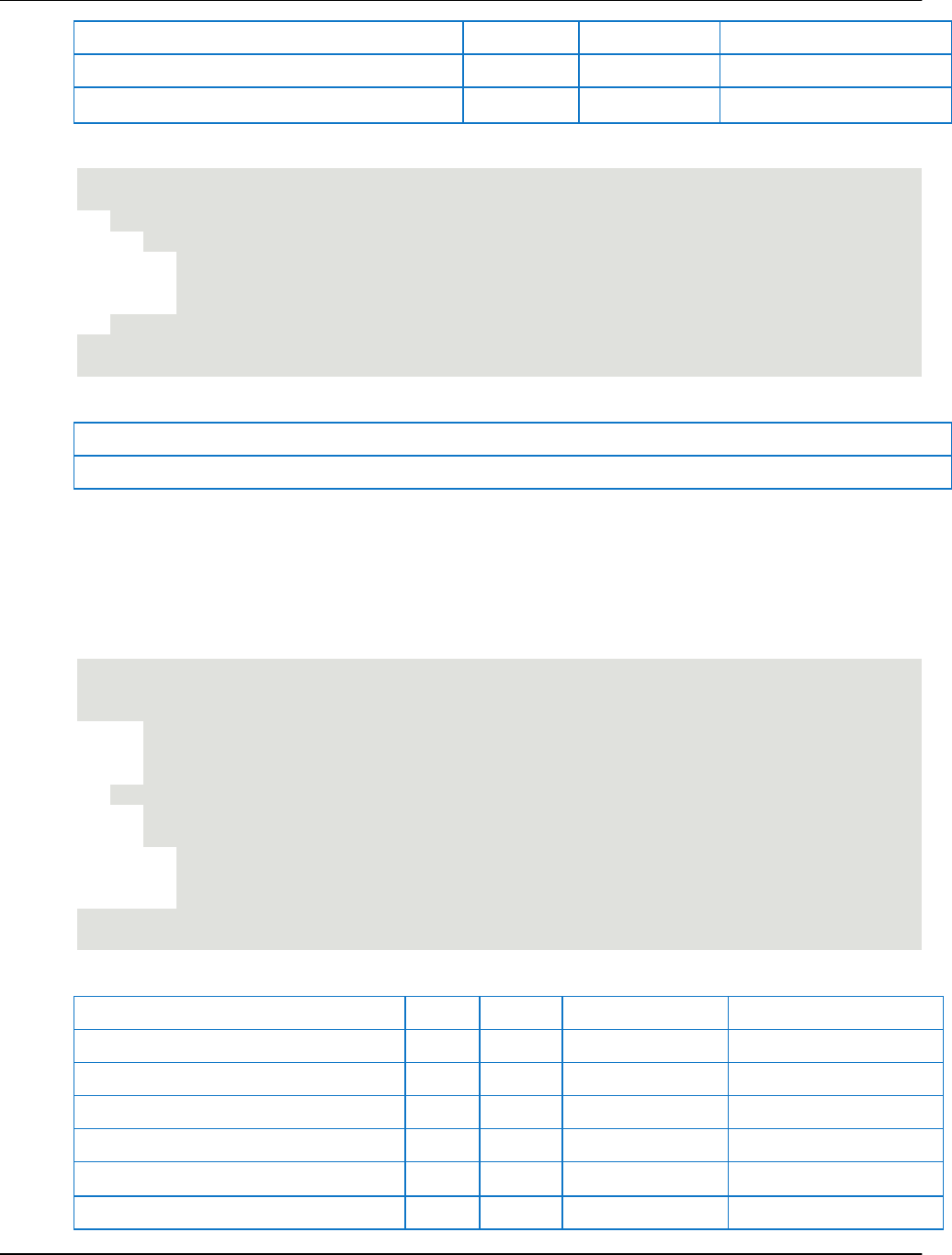
SQL Query Examples AVEVA™ Historian Retrieval Guide formerly Wonderware
165
DateTime
Pump1
Pump2
wwResolution
2012-03-08 16:00:37.9140000
0
0
2625
...
The following query shows how to return the total time when both tags had a value of 0:
SELECT SUM(wwResolution) FROM OPENQUERY(INSQL,'
SELECT DateTime, Total=Pump1+Pump2, wwResolution
FROM WideHistory
WHERE DateTime >= "2012-03-08 16:00"
AND DateTime < "2012-03-08 17:00"
AND wwRetrievalMode="DELTA"
')
WHERE Total=0
The results are:
(No column name)
2551289
If you changed the ending WHERE clause to Total>0, the returned time would be for when more than
one discrete tag was true.
SELECT INTO from a History Table
The following query inserts the specified data from the WideHistory table into another table called
MyTable. Then, the data in the MyTable table is queried. This query uses the OPENQUERY function.
DROP TABLE MyTable
SELECT DateTime,
"Sec" = datepart(ss, DateTime),
"mS" = datepart(ms, DateTime),
ReactTemp, ReactLevel
INTO MyTable
FROM OpenQuery(INSQL, 'SELECT DateTime, ReactTemp, ReactLevel FROM
WideHistory
WHERE wwResolution = 5000
AND DateTime >= "2001-03-13 1:58pm"
AND DateTime <= "2001-03-13 2:00pm" ')
SELECT * FROM MyTable
The results are:
DateTime
Sec
mS
ReactTemp
ReactLevel
2001-03-13 13:58:00.000
0
0
190.9
2025.0
2001-03-13 13:58:00.000
5
0
190.9
2025.0
2001-03-13 13:58:00.000
10
0
168.3
1215.0
2001-03-13 13:58:00.000
15
0
168.3
1215.0
2001-03-13 13:58:00.000
20
0
133.8
315.0
2001-03-13 13:58:00.000
25
0
133.8
315.0

AVEVA™ Historian Retrieval Guide formerly Wonderware SQL Query Examples
166
2001-03-13 13:58:00.000
30
0
101.6
0.0
2001-03-13 13:58:00.000
35
0
101.6
0.0
2001-03-13 13:58:00.000
40
0
32.4
750.0
2001-03-13 13:58:00.000
45
0
32.4
750.0
2001-03-13 13:58:00.000
50
0
20.9
1700.0
2001-03-13 13:58:00.000
55
0
20.9
1700.0
2001-03-13 13:59:00.000
0
0
85.9
2000.0
2001-03-13 13:59:00.000
5
0
85.9
2000.0
2001-03-13 13:59:00.000
10
0
185.9
2000.0
2001-03-13 13:59:00.000
15
0
185.9
2000.0
2001-03-13 13:59:00.000
20
0
168.3
1235.0
2001-03-13 13:59:00.000
25
0
168.3
1235.0
2001-03-13 13:59:00.000
30
0
136.1
335.0
2001-03-13 13:59:00.000
35
0
136.1
335.0
2001-03-13 13:59:00.000
40
0
103.9
-25.0
2001-03-13 13:59:00.000
45
0
103.9
-25.0
2001-03-13 13:59:00.000
50
0
34.7
625.0
2001-03-13 13:59:00.000
55
0
34.7
625.0
2001-03-13 14:00:00.000
0
0
20.9
1575.0
(25 row(s) affected)
Moving Data from a SQL Server Table to an Extension Table
The following queries show how to insert manual data into a normal SQL Server table and then move it
into the History extension table.
First, insert the data into the SQL Server table. The following query inserts two minutes of existing data
for the SysTimeSec tag into the ManualAnalogHistory table:
INSERT INTO ManualAnalogHistory (DateTime, TagName, Value, Quality,
QualityDetail, wwTagKey)
SELECT DateTime, TagName, Value, Quality, QualityDetail, wwTagKey
FROM History WHERE TagName = 'SysTimeSec'
AND DateTime >= '20050329 12:00:00'
AND DateTime <= '20050329 12:02:00'
Then, create a manual tag using the System Management Console. For a manual tag, "MDAS/Manual
Acquisition" is specified as the acquisition type. Be sure to commit the changes to the system. In this
example, a manual analog tag named MDAS1 was created.
Finally, insert the data from the ManualAnalogHistory table into History:
INSERT INTO History (TagName, DateTime, Value, QualityDetail)
SELECT 'MDAS1', DateTime, Value, QualityDetail FROM ManualAnalogHistory
WHERE TagName = 'SysTimeSec'
AND DateTime >= '20050329 12:00:00'

SQL Query Examples AVEVA™ Historian Retrieval Guide formerly Wonderware
167
AND DateTime <= '20050329 12:02:00'
Using Server-Side Cursors
Cursors are a very powerful feature of SQL Server. They permit controlled movement through a record
set that results from a query.
For in-depth information on cursors, see your Microsoft SQL Server documentation.
The AVEVA Historian OLE DB Provider provides server-side cursors. Cursors can be used to do joins
that are not possible in any other way. They can be used to join date/times from any source with
date/times in the history tables.
The following query provides an example of using a server-side cursor. This query:
Fetches all of the events in the EventHistory table.
Shows a "snapshot" of three tags at the time of each event.
Shows the event tag and its associated key value.
This query could easily be encapsulated into a stored procedure. The query uses the four-part naming
convention.
SET QUOTED_IDENTIFIER OFF
DECLARE @DateValue DateTime
DECLARE @EventTag nvarchar(256)
DECLARE @EventKey int
DECLARE @Qry1 nvarchar(500)
DECLARE @Qry2 nvarchar(500)
DECLARE @Qry3 nvarchar(500)
SELECT @Qry1 = N'SELECT EventTag = @EventTag, EventKey = @EventKey, DateTime,
TagName, Value, Quality
FROM History
WHERE TagName IN (N''SysTimeSec'', N''SysTimeMin'', N''SysTimeHour'')
AND DateTime = '''
SELECT @Qry2 = N''''
SELECT @Qry3 = N''
DECLARE Hist_Cursor CURSOR FOR
SELECT DateTime, TagName, EventLogKey
FROM Runtime.dbo.EventHistory
OPEN Hist_Cursor
FETCH NEXT FROM Hist_Cursor INTO @DateValue, @EventTag, @EventKey
WHILE @@FETCH_STATUS = 0
BEGIN
SELECT @Qry3 = @Qry1 + convert(nvarchar, @DateValue, 121) + @Qry2
--PRINT @Qry3
EXEC sp_executesql @Qry3, N'@EventTag nvarchar(256),
@EventKey int', @EventTag, @EventKey
FETCH NEXT FROM Hist_Cursor INTO @DateValue, @EventTag, @EventKey
END
CLOSE Hist_Cursor
DEALLOCATE Hist_Cursor
The results are:
EventTag
Event
Key
DateTime
TagName
Value
Quality
SysStatusEvent
3
2001-01-12
13:00:27.000
SysTimeSec
27.0
0

AVEVA™ Historian Retrieval Guide formerly Wonderware SQL Query Examples
168
SysStatusEvent
3
2001-01-12
13:00:27.000
SysTimeMin
0.0
0
SysStatusEvent
3
2001-01-12
13:00:27.000
SysTimeHour
13.0
0
(3 row(s) affected)
EventTag
Event
Key
DateTime
TagName
Value
Quality
SysStatusEvent
4
2001-01-12
14:00:28.000
SysTimeSec
28.0
0
SysStatusEvent
4
2001-01-12
14:00:28.000
SysTimeMin
0.0
0
SysStatusEvent
4
2001-01-12
14:00:28.000
SysTimeHour
14.0
0
(3 row(s) affected)
Using Stored Procedures in OLE DB Queries
Any normal SQL Server stored procedure can make use of the tables exposed by the AVEVA Historian
OLE DB Provider. Stored procedures can use any valid Transact-SQL syntax to access AVEVA
Historian historical data.
In other words, stored procedures can make use of four-part-queries, OPENQUERY and
OPENROWSET functions, cursors, parameterized queries and views. Stored procedures can be used to
encapsulate complex joins and other operations for easy re-use by applications and end users.
Getting Data from the OPCQualityMap Table
In general, an OPC quality has 16 significant bits. The lower 8 bits contain the quality as described in the
table, while the upper 8 bits hold server-specific information. To ensure correct results, it is important to
consider only the lower 8 bits in a query or join involving the OPCQualityMap table.
For example:
SELECT h.DateTime, h.TagName, h.Value, o.Description FROM History h
INNER JOIN OPCQualityMap o
ON (h.OPCQuality & 255) = o.OPCQuality
WHERE TagName in (…)
AND …
Using Variables with the Wide Table
You cannot use variables in an OPENQUERY statement. Therefore, if you want to use variables in a
query on the wide table, you must first build up the OPENQUERY statement "on the fly" as a string, and
then execute it.
DECLARE @sql nvarchar(1000)
DECLARE @DateStart datetime
DECLARE @DateEnd datetime
SET @DateStart = '2001-8-29 11:00:00'
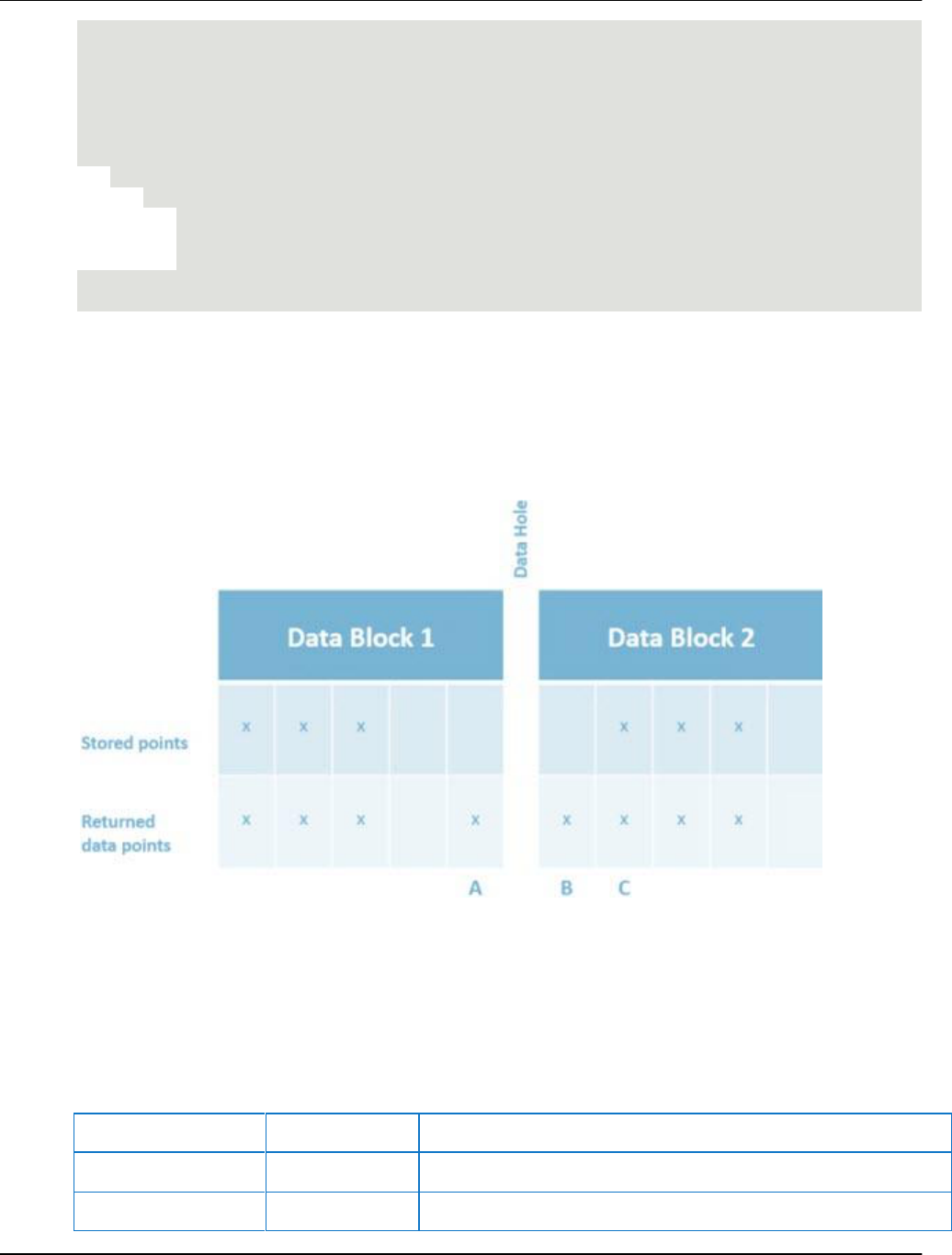
SQL Query Examples AVEVA™ Historian Retrieval Guide formerly Wonderware
169
SET @DateEnd = '2001-8-29 11:11:00'
SET @sql = N'select *
FROM OPENQUERY(INSQL, ''SELECT DateTime, ReactLevel, ReactTemp, ProdLevel,
BatchNumber, ConcPump, Mixer, TransferValve, TransferPump, WaterValve,
ConcValve, OutputValve, SteamValve
FROM WideHistory
WHERE DateTime >= "' + CONVERT(varchar(26), @DateStart, 113) + '"
and DateTime <= "' + CONVERT(varchar(26), @DateEnd, 113) + '"
AND wwResolution = 1000
AND wwRetrievalMode = "cyclic"'') '
EXEC sp_executesql @sql
Retrieval Across a Data Gap in Classically Stored Data
For blocks created by the Classic Storage subsystem, if the data to be retrieved spans more than one
history block, and the start time of the later block is equal (within one tick) to the end time of the first block,
you will not notice any difference than when querying within a single block.
However, if the system was stopped between history blocks, there will be a gap in the data, as shown in
the following diagram:
Upon retrieval, additional data points (labeled A and B) will be added to mark the end of the first block's
data and the beginning of the second block's data. Point C is a stored point generated by the Storage
subsystem. (Upon a restart, the first value from each IDAS will be offset from the start time by 2 seconds
and have a quality detail of 252.)
The following paragraphs explain this in more detail.
For delta retrieval, the data values in the first block are returned as stored. After the end of the block is
reached and all of the points have been retrieved, an additional data point (A) will be inserted by retrieval
to mark the end of the data. The value for point A will be
Point A attribute
Value(Hex)
Value(Dec)
Value
0
0
Quality
100
256
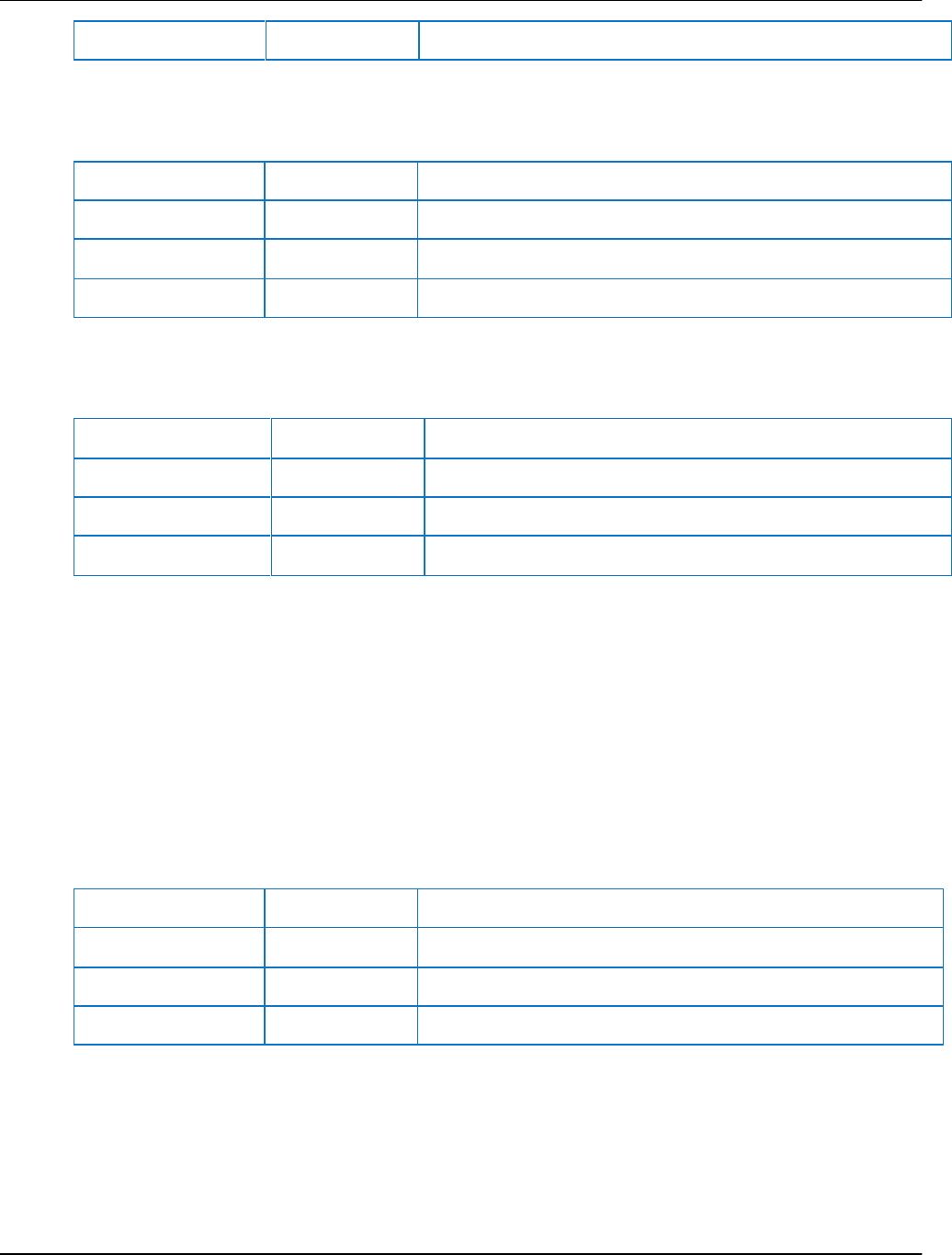
AVEVA™ Historian Retrieval Guide formerly Wonderware SQL Query Examples
170
Quality Detail
0
0
If there is no value stored at the beginning of the next block, an initial data point (B) will be inserted by
retrieval and will have the snapshot initial value as stored. The quality and quality detail values are as
follows:
Point B attribute
Value(Hex)
Value(Dec)
Value
Snapshot
Snapshot
Quality
0
0
Quality Detail
96
150
In the case of cyclic retrieval, a point is required for each specified time. If the time coincides with the data
gap, a NULL point for that time will be generated. The inserted points will have the values defined in the
following table.
Cyclic NULL point
Value(Hex)
Value(Dec)
Value
0
0
Quality
100
256
Quality Detail
0
0
If you are using time or value deadbands for delta retrieval across a data gap, the behavior is as follows:
For a value deadband, all NULLs will be returned and all values immediately after a NULL will be
returned. That is, the deadband is not applied to values separated by a NULL.
For a time deadband, null values are treated like any other value. Time deadbands are not affected
by NULLs.
Returned Values for Non-Valid Start Times
One example of a non-valid query start time is a start time that is earlier than the start time of the first
history block. For delta retrieval, the first row returned will be NULL. The timestamp will be that of the
query start time. The next row returned will be timestamped at the start of the history block and have the
following attributes:
Point attribute
Value(Hex)
Value(Dec)
Value
Snapshot
Snapshot
Quality
0
0
Quality Detail
96
150
For cyclic retrieval, NULL will be returned for data values that occur before the start of the history block.
Another non-valid start time is a start time that is later than the current time of the AVEVA Historian
computer. For delta retrieval, a single NULL value will be returned. For cyclic retrieval, a NULL will be
returned for each data value requested.

SQL Query Examples AVEVA™ Historian Retrieval Guide formerly Wonderware
171
Querying Aggregate Data in Different Ways
There are four different ways you can retrieve summary data, such as an average, using the Historian.
Using the SQL Server average function. This is appropriate for discrete samples. For example, a
check weigher, where you are measuring individual units against a target weight.
Using the average retrieval mode. This is appropriate for most situations where you want to find an
average, as it is weighted according to time. For example, if you want to find the average for a flow
rate or a temperature.
Setting up summary replication and then querying the AnalogSummaryHistory table. Replication
uses the average retrieval mode to do the calculations.
Setting up a summary event and then querying the SummaryData table. The Event subsystem uses
the SQL Server average function.
The following examples show how you can get the same data using these different methods. All
examples use the SysTimeSec system tag, which has a range of 0 to 59.
Query 1
The following query uses the SQL Server average function to return the average value of the
SysTimeSec tag over the span of one minute.
SELECT AVG(Value) as 'SysTimeSec AVG'
FROM History
WHERE TagName = 'SysTimeSec'
AND DateTime > '2009-11-15 6:30:00'
AND DateTime < '2009-11-15 6:31:00'
AND wwRetrievalMode = 'Full'
The results are:
SysTimeSec AVG
29.5
Query 2
The following query uses the historian time-weighted average retrieval mode to return the average for
the same time period. Because the cycle count is set to 2, a first row is returned for the "phantom"cycle
leading up to the query start time. The StartDateTime column shows the time stamp at the start of the
data sampling, which is the start time of the phantom cycle. The second row returned reflects is the
actual data that you expect. The time stamp for the data value is 2009-11-15 06:31:00 because the
default time stamping rule is set so that the ending time stamp for the cycle is returned. For more
information about the phantom cycle, see About Phantom Cycles on page 95.
SELECT StartDateTime, DateTime, TagName, Value
FROM History
WHERE TagName = 'SysTimeSec'
AND DateTime >= '2009-11-15 6:30:00'
AND DateTime <= '2009-11-15 6:31:00'
AND wwRetrievalMode = 'Average'
AND wwCycleCount = 2
AND wwTimeStampRule = 'end'
The results are:
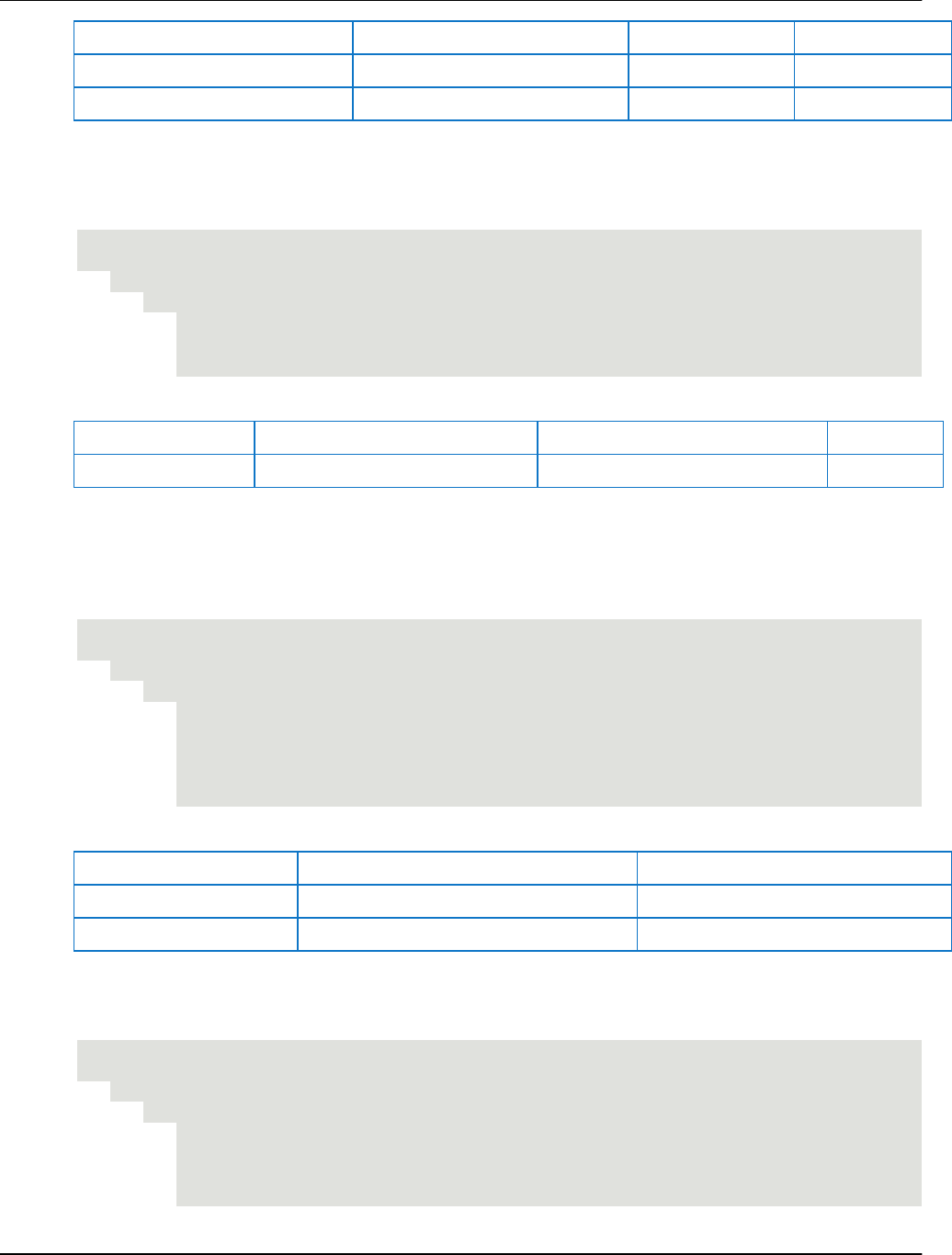
AVEVA™ Historian Retrieval Guide formerly Wonderware SQL Query Examples
172
StartDateTime
DateTime
TagName
Value
2009-11-15 06:29:00
2009-11-15 06:30:00
SysTimeSec
29.5
2009-11-15 06:30:00
2009-11-15 06:31:00
SysTimeSec
29.5
Query 3
For the following query, local replication has been set up so that the average of the SysTimeSec tag is
calculated every minute and stored to the SysTimeSec.1M analog summary tag. The query returns the
value of the SysTimeSec.1M tag for the time period specified.
SELECT TagName, StartDateTime, EndDateTime, Average as AVG
FROM AnalogSummaryHistory
WHERE TagName = 'SysTimeSec.1M'
AND StartDateTime >= '2009-11-15 6:30:00'
AND EndDateTime <= '2009-11-15 6:31:00'
The results are:
TagName
StartDateTime
EndDateTime
AVG
SysTimeSec.1M
2009-11-15 06:30:00
2009-11-15 06:31:00
29.5
Query 4
The following query, the History table is used instead of the AnalogSummaryHistory table. Because the
cycle count is set to 2, this query returns a row for the phantom cycle. The time stamp for the data value
is 2009-11-15 06:31:00 because the default time stamping rule is set so that the ending time stamp for
the cycle is returned.
SELECT TagName, DateTime, Value
FROM History
WHERE TagName = 'SysTimeSec.1M'
AND DateTime >= '2009-11-15 6:30:00'
AND DateTime <= '2009-11-15 6:31:00'
AND wwRetrievalMode = 'avg'
AND wwCycleCount = 2
The results are:
TagName
DateTime
Value
SysTimeSec.1M
2009-11-15 06:30:00
29.5
SysTimeSec.1M
2009-11-15 06:31:00
29.5
Query 5
The following query returns five minutes of summary data for an event tag that has been configured to
store the average value of the SysTimeSec tag every minute.
SELECT TagName, CalcType, SummaryDate, Value
FROM v_SummaryData
WHERE TagName = 'SysTimeSec'
AND SummaryDate >= '2009-11-15 18:30:00'
AND SummaryDate <= '2009-11-15 18:31:00'
The results are:
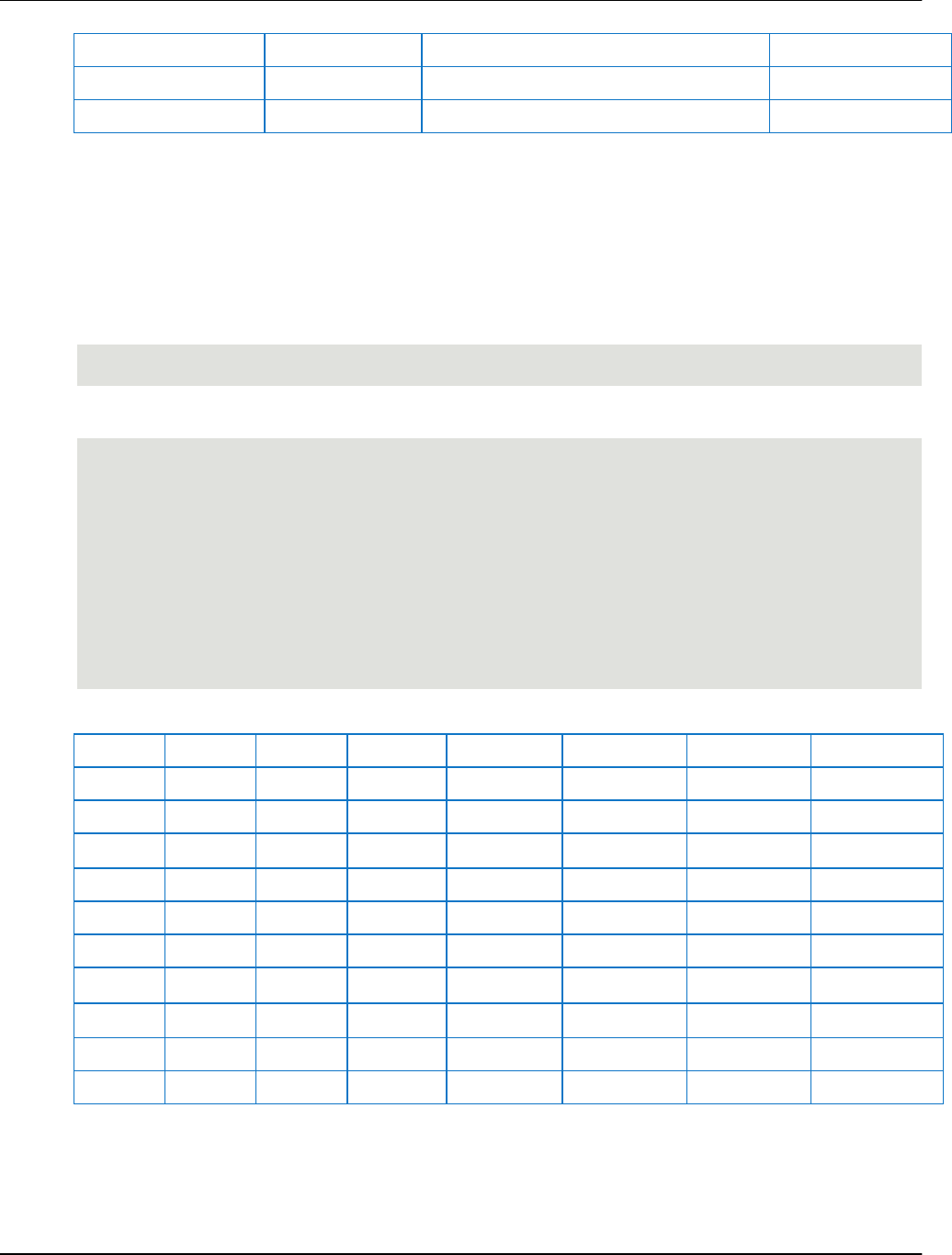
SQL Query Examples AVEVA™ Historian Retrieval Guide formerly Wonderware
173
TagName
CalcType
SummaryDate
Value
SysTimeSec
AVG
2009-11-15 18:30:00.000
29.5
SysTimeSec
AVG
2009-11-15 18:31:00.000
29.5
Bitwise Retrieval for Process Data
It is common to pack multiple digital states into the same PLC register as an integer rather than as
individual bits. You can still map the individual bits to separate Historian tags for most DAServers/PLCs,
but if you instead map the entire integer to a single Historian tag, you can address individual bits using
standard SQL Server queries.
For example, consider the following query that returns process data values for the ’SysTimeMin’ tag:
SELECT Value FROM dbo.History WHERE TagName = 'SysTimeMin'
However to get more bits of data, you can add 2 (bitposition-1) and use bitwise & operator on the Value
column as shown in the following query. Using the the Integer cast, you can query a maximum of 32 bits.
SELECT
CONVERT(BIT, CAST(Value AS INT) & 1) As 'Bit0',
CONVERT(BIT, CAST(Value AS INT) & 2) As 'Bit1',
CONVERT(BIT, CAST(Value AS INT) & 4) As 'Bit2',
CONVERT(BIT, CAST(Value AS INT) & 8) As 'Bit3',
CONVERT(BIT, CAST(Value AS INT) & 16) As 'Bit4',
CONVERT(BIT, CAST(Value AS INT) & 32) As 'Bit5',
CONVERT(BIT, CAST(Value AS INT) & 64) As 'Bit6',
CONVERT(BIT, CAST(Value AS INT) & 128) As 'Bit7'
FROM dbo.History WHERE TagName = 'SysTimeMin'
The results are:
Bit0
Bit1
Bit2
Bit3
Bit4
Bit5
Bit6
Bit7
0
1
1
0
0
0
0
0
1
1
1
0
0
0
0
0
0
0
0
1
0
0
0
0
1
0
0
1
0
0
0
0
0
1
0
1
0
0
0
0
1
1
0
1
0
0
0
0
0
0
1
1
0
0
0
0
1
0
1
1
0
0
0
0
0
1
1
1
0
0
0
0
1
1
1
1
0
0
0
0

AVEVA™ Historian Retrieval Guide formerly Wonderware
175
Note: The alarm and event history functionality described in this chapter captures detailed histories
from Application Server. This functionality should not be confused with the Classic Event subsystem
allows for some basic events tracking and is based on historical data.
AVEVA Historian captures process data about your plant. In addition to real-time and historical data, this
includes information about events.
Events are like other process data – for example, temperature – because their values can change over
time. Events differ from other process data in these ways:
Events usually change more slowly.
Events usually are more complex than simply a value, time, and quality.
Event data answers questions like "When did this setpoint change and who changed it?" The event
record could include the name of the operator, the workstation from where the change was made, any
comment about the change, the name of the person who verified the change, and other related details.
Alarms are a specific kind of event. They represent state changes and have an associated lifecycle. This
lifecycle includes these states (usually in this order):
Set – For example, when a temperature goes too high.
Acknowledged – That is, when an operator recognizes it as an alarm and, ideally, addresses it.
Clear – For example, when the temperature returns to normal.
Alarms may also have other states, but these are the key ones.
You can query the Events view, which references the History table, to track and analyze alarms and
other events. Because Events is actually an extension table (like History), its data is stored in blocks, not
in SQL Server tables.
Note: The Events view does not expose all application-specific columns that may be stored by Historian.
(Such columns are queryable from the REST/OData interface.) Also, it is not unusual for Events columns
to contain many NULL values.
For more information about the Events view, see Events in the AVEVA Historian Database Reference.
Querying Alarms and Events
Querying Alarm and Event data is helpful in keeping track of your production environment. For example,
as an operator, you could query the data to find out answers to these questions:
How often alarm events occur?
Where in the facility they occur?
How critical the alarms are?
How quickly they are addressed and cleared?
Datetime in Alarm and Event Queries
All queries of alarm and event data must include at least one datetime column.
CHAPTER 4
SQL Queries for Alarms and Events

AVEVA™ Historian Retrieval Guide formerly Wonderware SQL Queries for Alarms and Events
176
Alarm and event queries use two ways to express time:
UTC time
This format is used by EventTimeUtc.
Local time for the location of the Historian server
This is used by columns like EventTime.
The value of wwTimeZone affects any datetime recorded in local time, but does not affect EventTimeUtc.
Example: Listing all events
One of the simplest queries for alarms and events data is to get a list of all events.
For example,a query like this one would list all events between the dates and times specified:
SELECT *
FROM Events
WHERE EventTime between '2015-10-25 0:00' and '2015-10-26 0:00'
Example: How often alarms occur
This query reports the average alarm rate on hourly basis.
DECLARE @StartTime as varchar(60)
DECLARE @EndTime as varchar(60)
SET @StartTime = '2015-10-25 12:00:00'
SET @EndTime = '2015-10-26 12:00:00'
DECLARE @AlarmRaise table
(
EventTime nvarchar(60),
ID nvarchar(50),
AlarmState nvarchar(20),
SourceArea nvarchar(20),
SourceObject nvarchar(20)
)
INSERT @AlarmRaise select
EventTime,Alarm_ID,Alarm_State,Source_Area,Source_Object from Events where
EventTime > @StartTime and EventTime < @EndTime and Alarm_State='UNACK_ALM'
--======================--
DECLARE @AlarmCounts table
(
ForDate nvarchar(60),
OnHour nvarchar(50),
CountperHour nvarchar(20)
)
INSERT @AlarmCounts SELECT CAST(EventTime as date) AS ForDate,
DATEPART(hour,EventTime) AS OnHour,
Count(*) AS "CountperHour"
FROM @AlarmRaise
GROUP BY CAST(EventTime as date),
DATEPART(hour,EventTime)

SQL Queries for Alarms and Events AVEVA™ Historian Retrieval Guide formerly Wonderware
177
SELECT Avg(CAST(CountperHour as INT)) as "Average Alarm Rate on Hourly Basis"
from @AlarmCounts
The resulting report looks like this:
Average Alarm Rate on Hourly Basis
6
Example: Most frequent alarm per hour
This query reports the most frequent alarms for each hour:
DECLARE @StartTime as varchar(60)
DECLARE @EndTime as varchar(60)
SET @StartTime = '2017-11-10 12:00:00'
SET @EndTime = '2017-11-10 12:10:00'
DECLARE @AlarmRaise table
(
EventTime nvarchar(60),
ID nvarchar(50),
AlarmState nvarchar(20),
SourceArea nvarchar(20),
SourceObject nvarchar(20),
SourceConditionVariable nvarchar(40)
)
INSERT @AlarmRaise select
EventTime,Alarm_ID,Alarm_State,Source_Area,Source_Object,Source_Condition
Variable from Events where EventTime > @StartTime and EventTime < @EndTime
and Alarm_State='UNACK_ALM'
--======================--
SELECT CAST(EventTime as date) AS ForDate,
DATEPART(hour,EventTime) AS OnHour,
Count(*) AS "Count per Hour",
SourceObject + SourceConditionVariable AS "Alarm Attribute"
FROM @AlarmRaise
GROUP BY CAST(EventTime as date),
DATEPART(hour,EventTime),
SourceObject,
SourceConditionVariable
ORDER BY ForDate ASC,OnHour,[Alarm Attribute]
This resulting report looks like this:
ForDate
OnHour
Count per Hour
Alarm Attribute
2017-11-10
12
10
AlarmHeartBeatAlarmHeartBeat.AlmHeartBeat.Hi
2017-11-10
12
2
Reactor_31Reactor_31.ReactLevel.Hi
2017-11-10
12
2
Reactor_31Reactor_31.ReactLevel.Lo
2017-11-10
12
2
Reactor_31Reactor_31.ReactTemp.Hi
2017-11-10
12
1
StorageTank_31StorageTank_31.ProdLevel.Lo
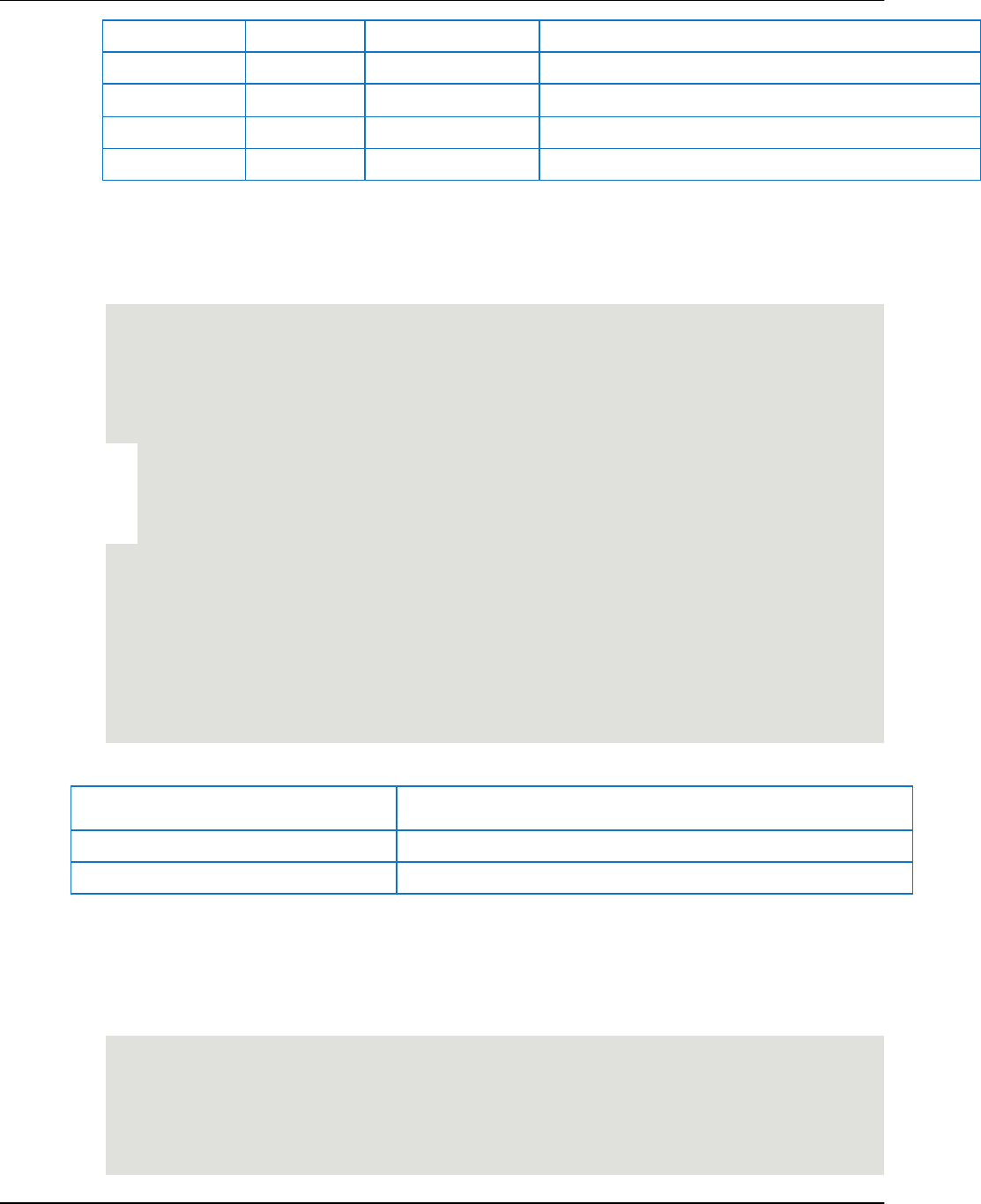
AVEVA™ Historian Retrieval Guide formerly Wonderware SQL Queries for Alarms and Events
178
2017-11-10
12
6
VectorTagsVectorTags.VectorX.Hi
2017-11-10
12
3
VectorTagsVectorTags.VectorX.HiHi
2017-11-10
12
6
VectorTagsVectorTags.VectorX.Lo
2017-11-10
12
3
VectorTagsVectorTags.VectorX.LoLo
2017-11-10
12
2
VectorTagsVectorTags.VectorZ.Hi
Example: Pinpointing where alarms occur
This query reports the number of alarms raised from each source by area and by object.
DECLARE @StartTime as varchar(60)
DECLARE @EndTime as varchar(60)
SET @StartTime = '2015-10-25 12:00:00'
SET @EndTime = '2015-10-26 12:00:00'
DECLARE @AlarmRaise table
(
EventTime nvarchar(60),
ID nvarchar(50),
AlarmState nvarchar(20),
SourceArea nvarchar(20),
SourceObject nvarchar(20)
)
INSERT @AlarmRaise select
EventTime,Alarm_ID,Alarm_State,Source_Area,Source_Object from Events where
EventTime > @StartTime and EventTime < @EndTime and Alarm_State='UNACK_ALM'
--======================--
SELECT SourceArea AS "Source Area/Object" , count(*) AS "Total Number of
Alarms" from @AlarmRaise GROUP BY SourceArea UNION
SELECT SourceObject AS "Source Area/Object" , count(*) AS "Total Number of
Alarms" from @AlarmRaise GROUP BY SourceObject;
The results look like this:
Source Area/Object
Total Number of Alarms
Area_001
6
UserDefined_001
6
Example: Showing average time to clearing an alarm
This query reports the average time to clear Critical, High, Medium, and Low alarms per hour.
DECLARE @start DateTime2
SET @start = '2017-12-11'
DECLARE @end DateTime2
SET @end = '2017-12-12'
-- ack time per severity per hour for high, medium and low
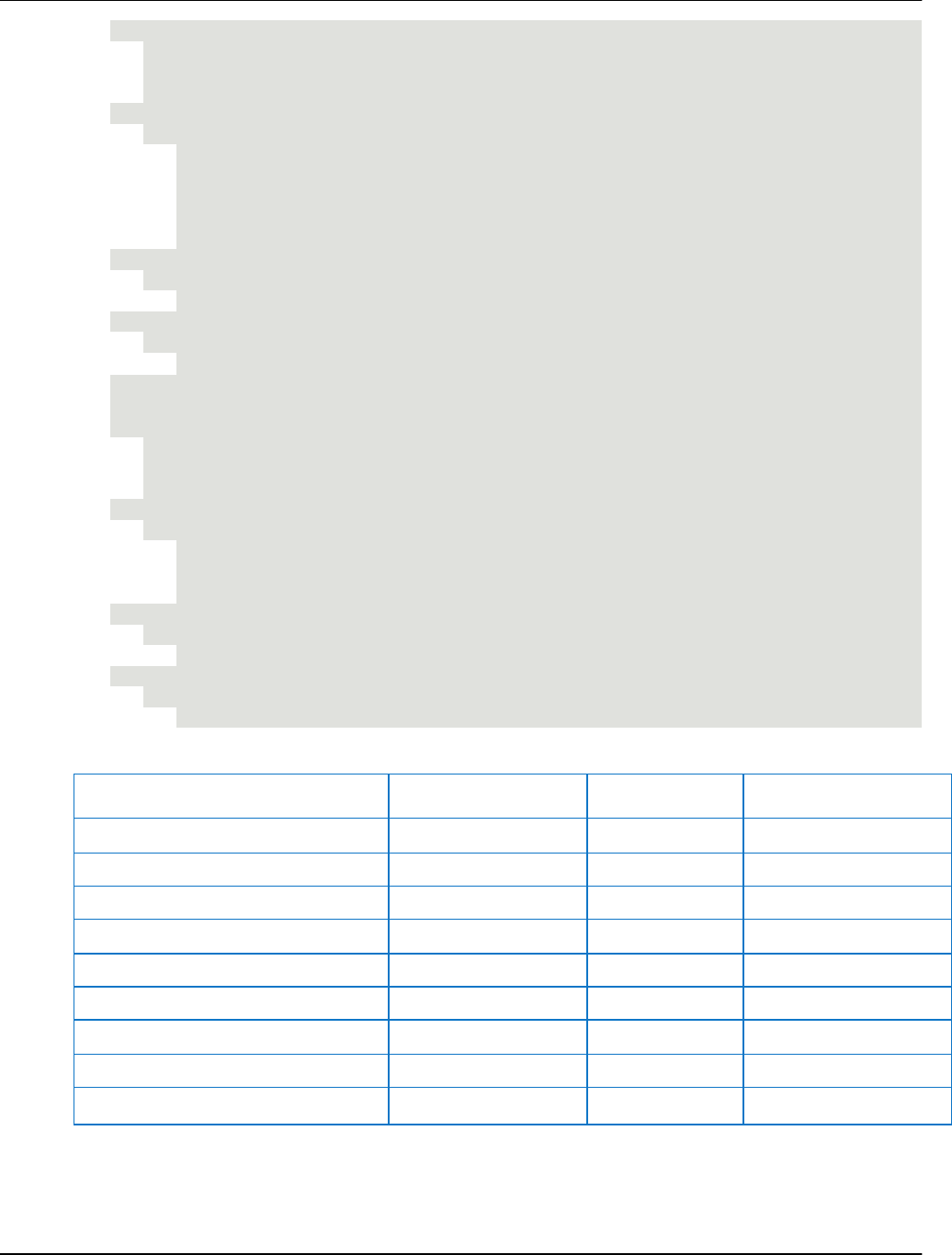
SQL Queries for Alarms and Events AVEVA™ Historian Retrieval Guide formerly Wonderware
179
SELECT DATEADD(hour, DATEDIFF(hour, 0, e.EventTime), 0) as hour,
e.Severity,
avg(Alarm_UnAckDurationMs) as avg_unack,
count(*) as count
FROM Events e
WHERE
e.EventTime < @end
AND e.EventTime >= @start
AND e.Severity <=3 -- critical = 1, high = 2 medium = 3 low =
4
AND e.Type = 'Alarm.Acknowledged'
GROUP BY
DATEADD(hour, DATEDIFF(hour, 0, e.EventTime), 0),
severity
ORDER BY
DATEADD(hour, DATEDIFF(hour, 0, e.EventTime), 0),
e.severity
-- ack time by user by hour
SELECT DATEADD(hour, DATEDIFF(hour, 0, e.EventTime), 0) as hour,
avg(Alarm_UnAckDurationMs) as avg_unack,
e.User_Name,
count(*) as count
FROM Events e
WHERE
e.EventTime < @end
AND e.EventTime >= @start
AND e.Type = 'Alarm.Acknowledged'
GROUP BY
DATEADD(hour, DATEDIFF(hour, 0, e.EventTime), 0),
e.User_Name
ORDER BY
DATEADD(hour, DATEDIFF(hour, 0, e.EventTime), 0),
e.User_Name
This query results in two reports. The first one looks like this:
hour
Severity
avg_unack
count
2017-12-11 08:00:00.000
2
330949
73
2017-12-11 08:00:00.000
3
13723786
1
2017-12-11 09:00:00.000
2
23524
195
2017-12-11 09:00:00.000
3
4931
1
2017-12-11 10:00:00.000
2
22550
182
2017-12-11 11:00:00.000
2
24552
189
2017-12-11 12:00:00.000
2
22474
189
2017-12-11 13:00:00.000
2
23492
192
…
The second report looks like this:
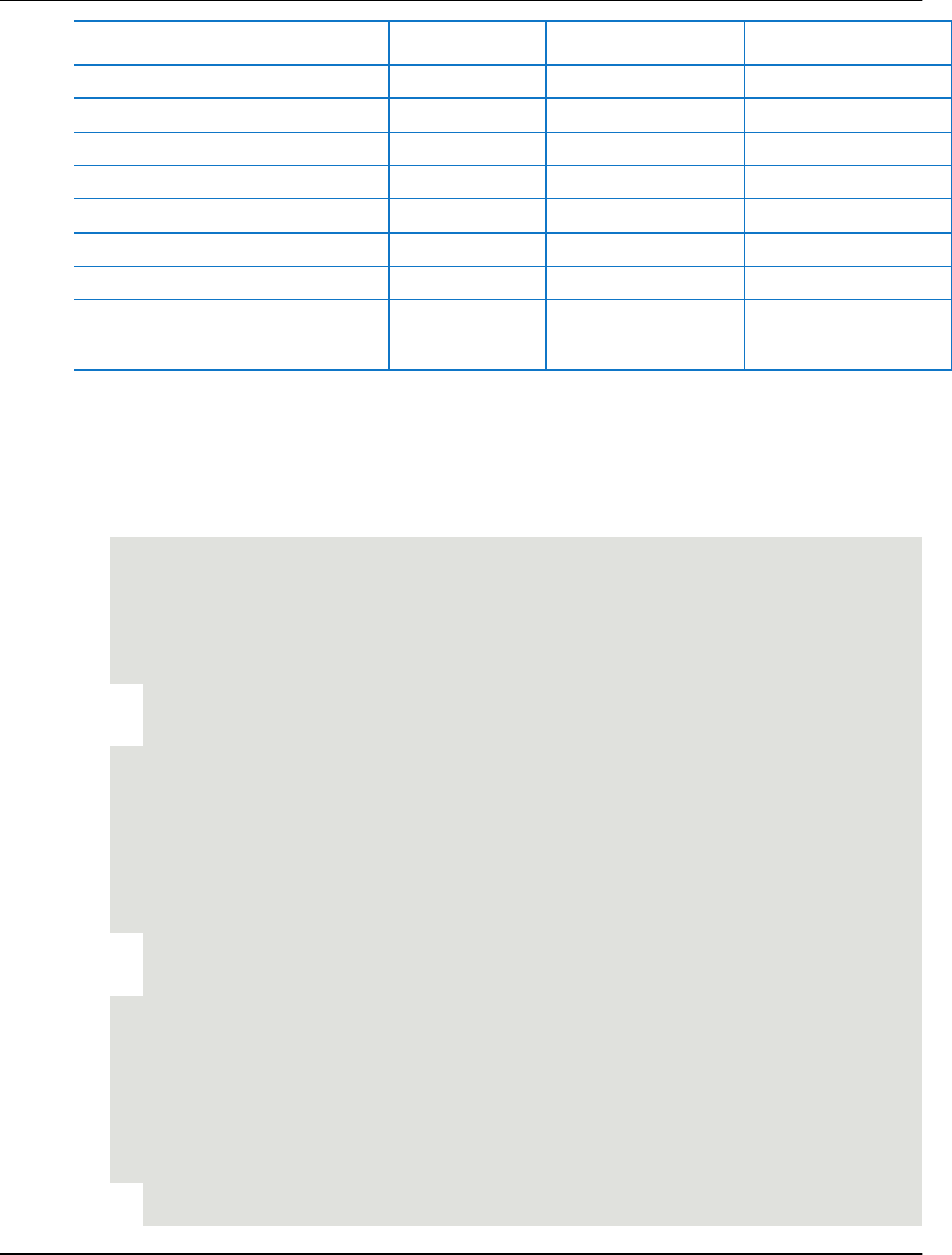
AVEVA™ Historian Retrieval Guide formerly Wonderware SQL Queries for Alarms and Events
180
hour
avg_unack
User_Name
count
2017-12-11 08:00:00.000
453722
DefaultUser
92
2017-12-11 09:00:00.000
24997
DefaultUser
239
2017-12-11 10:00:00.000
22751
DefaultUser
222
2017-12-11 11:00:00.000
25528
DefaultUser
231
2017-12-11 12:00:00.000
23549
DefaultUser
233
2017-12-11 13:00:00.000
23807
DefaultUser
236
2017-12-11 14:00:00.000
25472
DefaultUser
237
2017-12-11 15:00:00.000
25350
DefaultUser
237
…
Example: Evaluating response time for alarms
This query reports when an alarm is raised, acknowledged, and cleared. The report lists both times and
duration.
DECLARE @StartTime as varchar(60)
DECLARE @EndTime as varchar(60)
SET @StartTime = '2017-12-12 12:00:00'
SET @EndTime = '2017-12-12 12:02:00'
DECLARE @AlarmRaise table
(
EventTime nvarchar(60),
ID nvarchar(50),
AlarmState nvarchar(20)
)
INSERT @AlarmRaise
SELECT EventTime,Alarm_ID,Alarm_State
FROM Events
WHERE EventTime > @StartTime and EventTime < @EndTime and
Alarm_State='UNACK_ALM'
DECLARE @AlarmAck table
(
EventTime nvarchar(60),
ID nvarchar(50),
UnAckDuration nvarchar(20)
)
INSERT @AlarmAck
SELECT EventTime,Alarm_ID,Alarm_UnAckDurationMs
FROM Events
WHERE EventTime > @StartTime and EventTime < @EndTime and
Alarm_Acknowledged=1
DECLARE @AlarmClear table
(
EventTime nvarchar(60),
ID nvarchar(50),

SQL Queries for Alarms and Events AVEVA™ Historian Retrieval Guide formerly Wonderware
181
AlarmDuration nvarchar(20)
)
INSERT @AlarmClear
SELECT EventTime,Alarm_ID,Alarm_DurationMs
FROM Events
WHERE EventTime > @StartTime and EventTime < @EndTime and
Type='Alarm.Clear'
--======================--
SELECT 'Alarm Life - '+ s.ID
,CASE
WHEN a.EventTime > c.EventTime THEN 'Cleared Before
Ack'
WHEN a.EventTime < c.EventTime THEN 'Acked Before
Clear'
ELSE '-' END as Comment
,s.EventTime as AlarmRaised
,a.EventTime as AlarmAcked
,c.EventTime as AlarmClear
,a.UnAckDuration as UnAckDuration
,c.AlarmDuration as AlarmDuration
FROM (@AlarmRaise s inner join @AlarmClear c on c.ID=s.ID)
LEFT JOIN @AlarmAck a on a.ID=c.ID and a.EventTime<>c.EventTime
ORDER BY AlarmRaised asc
The results look like this:
(No column
name)
Comment
AlarmRaised
AlarmAcked
AlarmClear
UnAck
Duratio
n
Alarm
Durati
on
Alarm Life -
B0718EAE-13
01-1D00-46D6
-061A5265589
F
Cleared
Before Ack
2017-12-12
12:00:01.2540000
2017-12-12
12:00:56.5170000
2017-12-12
12:00:13.1430000
55263
11889
Alarm Life -
5FE1D46F-C6
D7-D7C6-DB2
4-A832B0361
562
Acked
Before
Clear
2017-12-12
12:00:40.1220000
2017-12-12
12:00:56.5150000
2017-12-12
12:01:00.1220000
16393
20000
Alarm Life -
39DBF54B-B4
ED-6D35-C1D
F-19EE53D62
211
Cleared
Before Ack
2017-12-12
12:00:48.1290000
2017-12-12
12:00:56.9600000
2017-12-12
12:00:52.1240000
8831
3995
Alarm Life -
973B8CEA-D
BDA-7B4B-18
3A-E423B109
8C91
Acked
Before
Clear
2017-12-12
12:00:57.6870000
2017-12-12
12:00:58.7880000
2017-12-12
12:01:03.6230000
1101
5936

AVEVA™ Historian Retrieval Guide formerly Wonderware SQL Queries for Alarms and Events
182
Alarm Life -
B926FB71-B6
DE-4916-C23
C-CC85D5B0
1BDE
Cleared
Before Ack
2017-12-12
12:01:45.7120000
2017-12-12
12:01:57.0140000
2017-12-12
12:01:53.2410000
11302
7529
Alarm Life -
A52B65BE-27
F2-CC6A-936
9-EDFD3E6D
7514
Cleared
Before Ack
2017-12-12
12:01:47.1270000
2017-12-12
12:01:57.0160000
2017-12-12
12:01:52.7340000
9889
5607
Alarm Life -
AFE96385-10
B4-F695-9302
-320F02FA46
A1
Cleared
Before Ack
2017-12-12
12:01:51.1570000
2017-12-12
12:01:57.0180000
2017-12-12
12:01:53.6230000
5861
2466
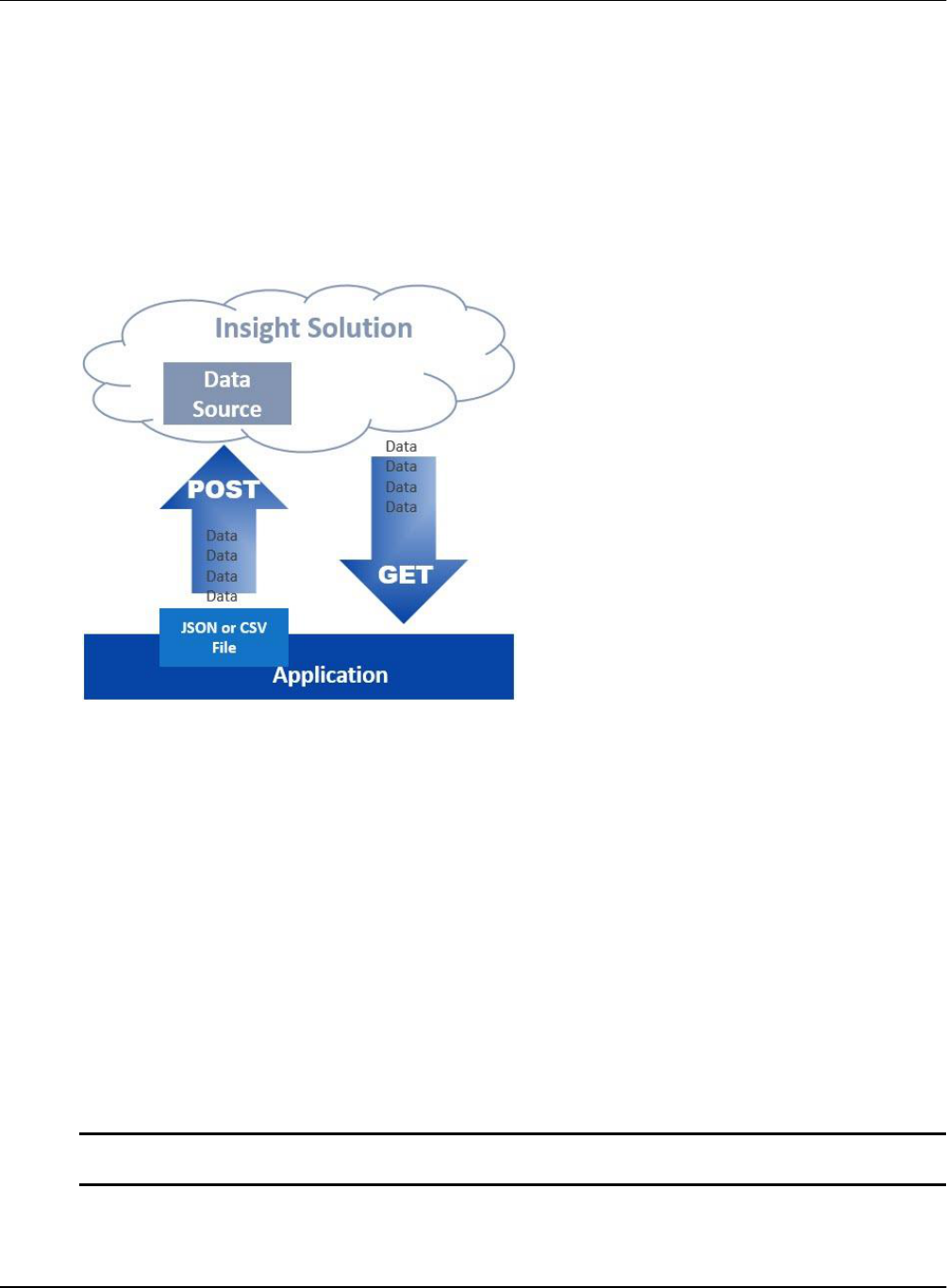
AVEVA™ Historian Retrieval Guide formerly Wonderware
183
Historian Data REST API
With Historian Data REST API, you can upload data to and retrieve it from your Insight solution.
You can use these types of requests with Historian Data
REST API:
Upload requests use the POST method to an upload
endpoint URL.
Upload requests send data or metadata to a specific
data source within your Insight solution.
See Data upload for details about upload requests.
Retrieval requests use the GET method and a
different endpoint URL for retrieval from your Insight
solution.
See Data retrieval (see "Data retrieval" on page 185)
for two methods to retrieve data.
You can submit requests to the Historian Data REST API using a web browser or a client-side
applications such as these:
Microsoft Excel (2013, 2016, or Office 365)
Business Intelligence (BI) systems, such as Tableau and Microsoft Power BI
Supported OData features
OData is an industry standard for querying and updating data from a variety of sources. The
implementation of OData for the Historian Data REST API includes support for:
JSON and atom formats.
OData versions 3 and 4.
Pagination. That is, if your request returns more than 5000 results, they will be returned in pages of
up to 5000 records. Each page will include a link to retrieve the next page of records.
A subset of the OData system query options.
For more information, see OData.org JSON Verbose Format specification.
Recommendation: For best results, when you want to view the data returned by the Historian Data
REST API, use the JSONView extension for the Chrome browser.
CHAPTER 5
Browser-Friendly Data Retrieval

AVEVA™ Historian Retrieval Guide formerly Wonderware Browser-Friendly Data Retrieval
184
Supported versions
Insight supports versions 1 and 2 of the Historian Data REST API.
Version 2
This is the current and recommended version of the Historian Data REST API.
Version 2 of this REST APis based on version 1 and includes further enhancements. Version 2 includes
these differences from version 1:
The TagFilter parameter is supported as a part of a GET or POST query used with
ProcessValues, AnalogSummary, and StateSummary resources.
The datetimeoffset parameter is not supported as part of the DateTime syntax.
While Raw and ProcessValue entities use DateTime, summary entities use StartDateTime and
EndDateTime.
For most version 2 queries, single quotes are not used for DateTime. For example:
https://online.wonderware.com/apis/Historian/v2/ProcessValues
?$filter=DateTime+gt+2017-07-13T00:00:00
However, when querying events, single quotes are required for DateTime. For example:
https://online.wonderware.com/apis/Historian/v2/Events
?$filter=EventTime+gt+'2017-07-13T00:00:00'
By contrast, version 1 queries do use single quotes for DateTime. For example:
https://online.wonderware.com/apis/Historian/v1/ProcessValues
?$filter=DateTime+gt+datetimeoffset'2017-07-13T00:00:00'
TagProperty (see "TagProperties" on page 214) and Events (see "Events" on page 202) entity types
are now open type. That is, dynamic properties can be added to the response at runtime. This can be
verified using $metadata endpoint URL:
https://online.wonderware.com/s/<solution_id>/apis/historian/v2/$metadata
where there will be additional attribute, OpenType="true", under <EntityType> section.
The Tags resource (see "Tags" on page 208) returns all the properties (fixed and extended) for a tag.
A tag's extended properties will be added to the response only if they exist. (The extended property
name will not be listed for tags that do not have a given extended property.)
The combined Summary resource (see "Summary (v1 only)" on page 222) is not supported in
version 2. Use the individual AnalogSummary (see "AnalogSummary" on page 193) and
StateSummary (see "StateSummary" on page 199) resources instead to retrieve the summary of a
tag.
Insight returns a list of resources and endpoints in JSON format instead of the previously used XML
when you specify the default endpoint URL for your solution (where <solution_id> is the identifier for
your Insight solution:
https://online.wonderware.com/s/<solution_id>/apis/historian/v2
Version 2 adds support for the OData contains function for applicable resources and properties.
Version 1
This is the original version of Historian Data REST API based on the OData v4 specification.
Version 1 uses the DateTime format used in this example:

Browser-Friendly Data Retrieval AVEVA™ Historian Retrieval Guide formerly Wonderware
185
https://online.wonderware.com/s/ik97r5/apis/Historian/v1
/AnalogSummary?$filter=FQN+eq+'Baytown.tank_level'
+and+StartDateTime+ge+datetimeoffset'2016-05-14T00:00:00.000-07:00'
+and+EndDateTime+le+datetimeoffset'2016-05-16T00:00:00.000-07:00'
iHistory and Account Authentication
The iHistory web service requires users to be authenticated via a login process before they can retrieve
data. The process for this differs between AVEVA Historian Insight and AVEVA Insight:
AVEVA Historian Insight (on-premises)
Uses Windows integrated security. A user must belong to the aaAdministrators, aaPowerUsers, or
aaUsers Windows group. The iHistory web service uses Negotiate authentication, which is
supported by most modern browsers and web service clients (such as Microsoft Excel).
AVEVA Insight (cloud-based)
Uses OpenID Connect and Basic authentication. Users must be invited to a specific account within
AVEVA Insight and can then access all data published to that account. When using OpenID
Connect, the iHistory web service uses "bearer token" authentication, per the OpenID Connect
standard. As relatively new standard, some web service clients (for example, Microsoft Excel) do not
have native support for it. However, some of those same clients (for example, Microsoft Power BI)
support Basic authentication.
When you query on-premises data via iHistory, you will be prompted for authentication to the Historian.
If you have a valid Windows login on the historian, you can retrieve general information about the
services and the kinds of data available.
If you belong to the aaAdministrators, aaPowerUsers, or aaUsers Windows group, you can retrieve
actual application data -- including events, process history, tag information, and so on.
Data retrieval
The Historian Data REST API allows you to retrieve data from your Insight solution.
Retrieval requests use a GET method and a retrieval
endpoint URL. The retrieval endpoint URL differs depending
on whether you are using token authentication (with a
retrieval token) or basic authentication, with no token.
GET method with basic authentication
Requests to retrieve data via basic authentication require
no retrieval token. Rather, these requests must use the
endpoint URL specified by the Integration Settings page.
Get details here.
GET method with token authentication
You can use retrieval token to access your Insight data
using token authentication. Get details here.
Forming retrieval requests
With basic authentication, use this syntax to form your retrieval requests:
https://online.wonderware.com/s/<solution_ID>/apis/historian/<api_version
>/<resource>?<query_parameters>

AVEVA™ Historian Retrieval Guide formerly Wonderware Browser-Friendly Data Retrieval
186
With token authentication, use syntax to form your retrieval requests:
https://online.wonderware.com/apis/historian/<api_version>/<resource>?<qu
ery_parameters>
For more information, see Retrieval endpoints and tokens.
This URL includes these parts:
Syntax element
Explanation
https://online.wonderware.com/
The base URL
s/<solution_ID>
The unique identifier for your Insight solution.
This is not used if you use token authentication with a solution-specific
retrieval token.
apis/historian/<api_version>
The API and version (see "Supported versions" on page 184)
<resource>
The Historian Data REST API retrieval resource. See the complete list (see
"Retrieval resources" on page 189).
?<query_parameters>
Query parameters.
These may be OData parameters using OData syntax tokens and operators;
for example "$filter" as in this syntax:
https://online.wonderware.com/apis/historian/v2/
AnalogSummary?$filter=FQN+eq+'Baytown.tank_level'
Or, REST parameters; for example "TagFilter", as in this syntax:
https://online.wonderware.com/apis/historian/v2/
AnalogSummary?TagFilter=FQN eq 'Baytown.tank_level’
Note that TagFilter is used only with AnalogSummary (see "AnalogSummary"
on page 193), ProcessValues (see "ProcessValues" on page 191), and
StateSummary (see "StateSummary" on page 199).
For example, this retrieval request gets analog summary data via an endpoint URL using basic
authentication:
https://online.wonderware.com/s/ik97r5/apis/historian/v2/AnalogSummary
?$filter=FQN+eq+'Depot.Train09'+and+StartDateTime+ge+2017-06-09T09:00:00-
07:00+and
+EndDateTime+ge+2017-06-09T10:00:00-07:00&Resolution=3600000
Two powerful parameters: RetrievalMode and Resolution
You can use the RetrievalMode and Resolution parameters in retrieval queries to better control of your
search results.
RetrievalMode specifies how the resulting data is calculated for Raw and ProcessValues entities.
Valid values are:
o Average
Cyclic
Integral
Minimum

Browser-Friendly Data Retrieval AVEVA™ Historian Retrieval Guide formerly Wonderware
187
o BestFit
Delta
Interpolated
Slope
o Counter
Full
Maximum
Resolution specifies the granularity of data returned for Raw, ProcessValues, and Summary
entities.
Using TagFilter
You can use the TagFilter parameter as a part of a GET or POST query with ProcessValues,
AnalogSummary, and StateSummary resources. See examples. (see "Retrieve data using PowerBI" on
page 237)
It allows a query string using OData filter query notation.
TagFilter can include:
Up to 20 AND clauses
Up to 20 OR clauses
Up to 2 UDF clauses
You cannot mix AND and OR in the same query.
Operators should be lowercase.
Valid Format:
Historian/v2/ProcessValues?TagFilter=startswith(Source,'MVDS') and TagType
eq 'string'
Invalid Format:
Historian/v2/ProcessValues?TagFilter=startswith(Source,'MVDS') And TagType
eq 'string'
Most searches are case-insensitive. However, search by these attributes is case-sensitive:
InterpolationType
MessageOn
MessageOff
These are the supported (and not supported) features for TagFilter:

AVEVA™ Historian Retrieval Guide formerly Wonderware Browser-Friendly Data Retrieval
188
Supported
Not Supported
V2 controllers
Use with ProcessValues, AnalogSummary and
StateSummary
GET and POST queries
StartsWith, EndsWith
SkipToken
Nested query with same operator type ("and" or
"or"). Examples:
Historian/v2/ProcessValues?
TagFilter=
startswith(Source,'MVDS') and TagType
eq 'string' and EngUnit eq ‘None’
Historian/v2/ProcessValues?
TagFilter=
startswith(Source,'MVDS') or TagType
eq 'string' or EngUnit eq ‘None’
V1 controller
Toupper and tolower functions
Nested query with grouping precedence operator;
that is: ‘()’
Query with mixed operator like "and, or"
These attributes support only "eq" and not "startswith
or endswith"
o EngUnitMax
o EngUnitMin
o InterpolationType
o MessageOff
o MessageOn
o Any TagExtendedProperty that is not a string
(booleans, integers, doubles, guids)
Geospatial primitives, such as Geolocation,
Geography, Geometry are not fully supported by
TagFilter .
Supported syntax tokens and operators
These tokens are supported for system query via the Historian Data REST API. They are all
case-sensitive.
Token
Description
$filter
Specifies an expression or function that must evaluate to true for a record to be returned in the
collection.
All typical OData functions are supported for the $filter clause.
The $filter expression supports references to properties and literals. Literal values include:
Strings enclosed in single quotes
Numbers and Boolean values (true or false)
Filtering for process value and summary data is case-sensitive.
However, while event property names are case-sensitive, filtering is case-insensitive. For
example, if you filter property values based on a value of "true," values such as "TRUE," "True,"
and "true" could be returned. The case returned in the query results reflects the case of the stored
value.
$select
Specifies a subset of properties to return.
$skip
Specifies the number of records to skip from the beginning of the result set.

Browser-Friendly Data Retrieval AVEVA™ Historian Retrieval Guide formerly Wonderware
189
Token
Description
$skiptoken
Used to get the next record set that satisfies the query conditions. You do not need to include this
token in the query, but you will see it upon query execution.
$top
Specifies the maximum number of records to return. This subset is formed by selecting only the
first N items of the set, where N is a positive integer specified by this query option.
These logical operators are supported for the query options:
Operator
Description
eq
Equal
ne
Not equal
gt
Greater than
ge
Greater than or equal
lt
Less than
le
Less than or equal
and
Logical and
or
Logical or
not
Logical negation
In the filter expression, you can have only a single time clause combined with a single filter clause using
the "and" operator. The filter clause itself can be complex, using any of the supported logical operators.
Use parentheses ( ) to create precedence groups within an expression in filter clause.
Note: Use "%20" to indicate a space. Use "%27" to indicate a single quote.
If you are using the JSONView viewer in the Chrome browser, you can use a plus sign (+) to indicate a
space to make the URI string more readable.
If the expression includes multiple values for the criteria, you must specify each criteria separately using
the "or" operator. For example:
...
((Priority+eq+100+or+Priority+eq+200+or+Priority+eq+500+or+Priority+eq+70
0)+and+(filter …))
Retrieval resources
The Historian Data REST API exposes various resources through an endpoint URL that is specific to
your Insight solution.
This API includes the following resources for retrieving data:

AVEVA™ Historian Retrieval Guide formerly Wonderware Browser-Friendly Data Retrieval
190
Process Data and
Events Resources
Tag Property Resources
Resources for Version 1 Only
ProcessValues (see
"ProcessValues" on page 191)
AnalogSummary (see
"AnalogSummary" on page 193)
StateSummary (see
"StateSummary" on page 199)
Events (see "Events" on page
202)
Tags (see "Tags" on page 208)
TagProperties (see
"TagProperties" on page 214)
TagPropertyValues (see
"TagPropertyValues" on page
215)
TagGroups (see "TagGroups" on
page 216)
TagSuggest (see "TagSuggest"
on page 218)
TagSearch (see "TagSearch" on
page 220)
TagExtendedProperties (see
"TagExtendedProperties" on
page 221)
Summary
Daily (see "Daily (v1 only)" on
page 223)
Hourly (see "Hourly (v1 only)" on
page 229)
Minutely (see "Minutely (v1 only)"
on page 231)
Note: All property names are case-sensitive. Event storage preserves the case that you provide for any
property value. For example, a property value of "TRUE" is different than "True" and "true."
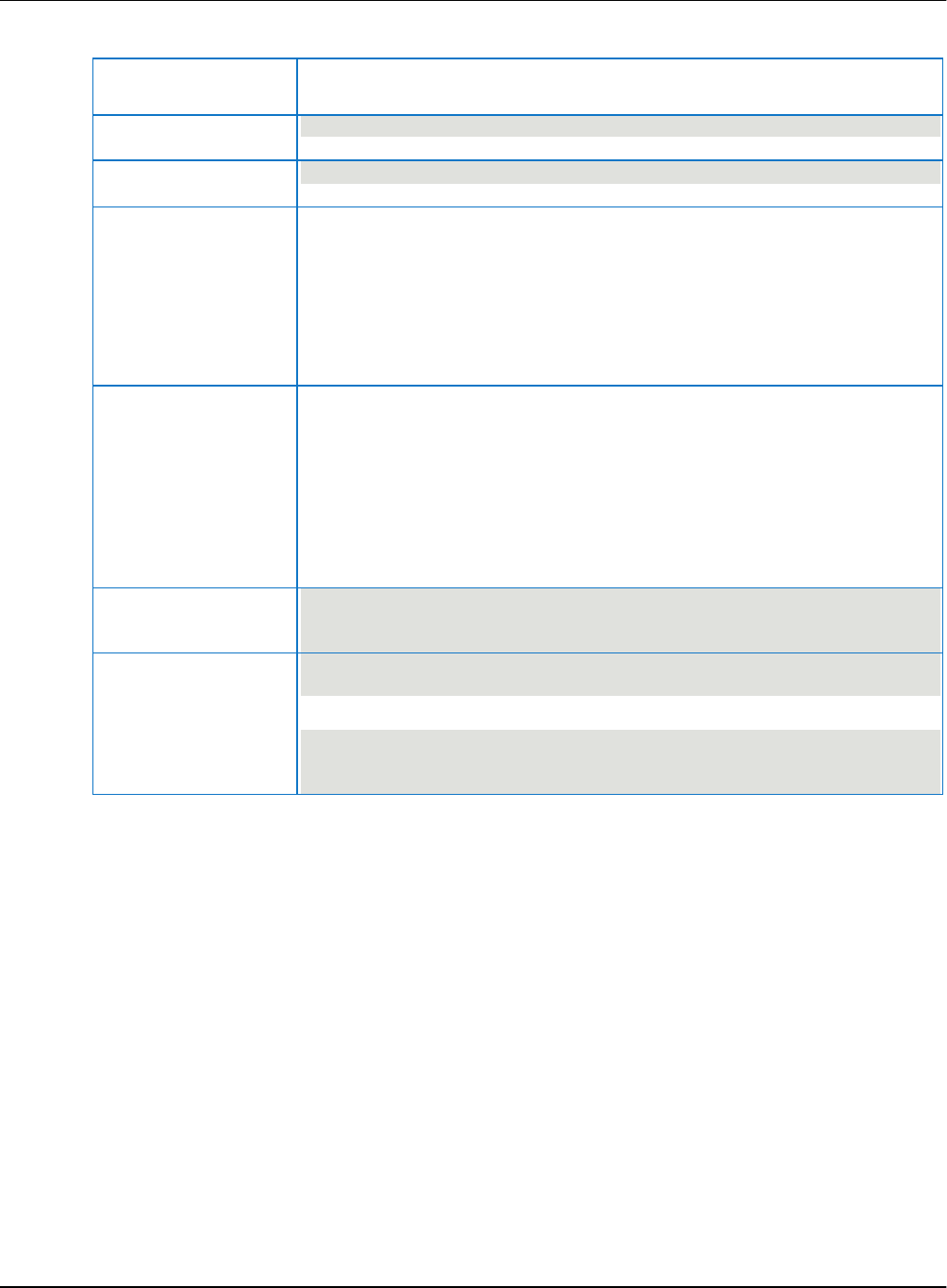
Browser-Friendly Data Retrieval AVEVA™ Historian Retrieval Guide formerly Wonderware
191
ProcessValues
Description
Retrieves a set of process value records (where each record includes value +
time + quality, or VTQ) for the specified tags.
URL
/ProcessValues
Method
GET
Required Parameters
FQN=[string ]
The fully qualified name for the tag. A fully qualified name uses the
format: datasource.tagname.
DateTime=[DateTimeOffset ]
(v2 and later) Specified in UTC using the RFC3339 / ISO8601 format
with the Z time zone designator. For example:
2016-09-03T18:44:09.352247Z.
Optional Parameters
OPCQuality =[Int32 ]
The data quality as reported by the source.
Value =[Double ]
0 or 1.
Text=[String ]
For string tags, contain the value.
For discrete tags, contains the message associated the value (0 or 1).
Success Response
Code: 200
Content: { fqn: plant12.pump6, datetime:
2016-09-03T18:44:09.352247Z}
Error Response
Code: 404 NOT FOUND
Content: { error : "FQN doesn't exist" }
or
Code: 401 UNAUTHORIZED
Content: { error : "You are unauthorized to make this
request." }

AVEVA™ Historian Retrieval Guide formerly Wonderware Browser-Friendly Data Retrieval
192
Sample Query
Scenario 1
This query produces process values for a list of tags that end with "level". In
this case, the user doesn't know the fully qualified name (FQN) of a specific
tag and wants a short list of possible matches.
https://online.wonderware.com/apis/historian/v2/Process
Values
?TagFilter=endswith(FQN, 'level').
See more TagFilter examples. (see "Retrieve data using PowerBI" on page
237)
Scenario 2
This query returns process values for a specific tag identified by its fully
qualified name (datasource.tagname). Using a"$filter" clause, it specifies a
tag named tank_level within the Baytown data source. The result is a list of
values for the tank_level tag.
https://online.wonderware.com/s/ik97r5/apis/historian/v
2/ProcessValues
?$filter=FQN+eq+'Baytown.tank_level'
Scenario 3
This query includes a start date time, end date time, and other query
parameters.
https://online.wonderware.com/s/ik97r5/apis/historian/v
2/ProcessValues
?$filter=FQN+eq+'Baytown.tank_level'and DateTime ge
2014-07-04T23:57:29Z
and DateTime le
2014-07-05T00:02:29Z&RetrievalMode=BestFit&Resolution=6
500
Sample Output
{
"odata.metadata":
"https://online.wonderware.com/s/ik97r5/apis/historian/
v2/
$metadata#ProcessValues",
"value": [
{
"FQN": "20140805AK.TestSkipToken_0",
"DateTime": "2014-08-06T17:25:19.216486Z",
"OpcQuality": 192,
"Value": 39816,
"Text": "39816"
},
{
"FQN": "20140805AK.TestSkipToken_0",
"DateTime": "2014-08-06T17:25:20.196Z",
"OpcQuality": 192,
"Value": 39817,
"Text": "39817"
}
],
}

Browser-Friendly Data Retrieval AVEVA™ Historian Retrieval Guide formerly Wonderware
193
AnalogSummary
Description
Retrieves analog statistics for the specified tags.
URL
/AnalogSummary
Method
GET
Required Parameters
FQN=[string ]
The fully qualified name for the tag. A fully qualified name uses the
format: datasource.tagname.
StartDateTime=[DateTimeOffset]
The starting date and time. This is always specified in UTC using the
RFC3339 / ISO8601 format with the Z time zone designator. For
example: 1985-04-12T23:20:50.52435Z
EndDateTime=[DateTimeOffset]
The ending date and time. This is always specified in UTC using the
RFC3339 / ISO8601 format with the Z time zone designator. For
example: 1985-04-12T23:20:50.52435Z
Optional Parameters
RetrievalMode=[string]
Possible values are: Cyclic, Full.
Default is Cyclic.
Resolution=[Int]
In milliseconds. Any positive integer.
SliceBy=[Int|Discrete|String]
Performs dynamic resolution/cycle computation by tags. Returns one
Analog Summary value per tag per dynamic cycle with start and end date
time.
SliceBy can support up to 10 tags.
SliceByValue=[string]
Specifies the filter criterion to get the summary values for SlicedBy,
based on that filter value.
OPCQuality=[Int32]
Defines the OPC quality for the data.
Normal OPC quality retrieval logic is applied if all the point found and
processed for this row have GOOD quality. If they all have the same
GOOD quality, then that quality is returned.
If there is a gap in the entire calculation cycle, then BAD quality is
returned for the tag.
For any other scenario with any mixture of GOOD and BAD points, a
DOUBTFUL OPC quality (64) is returned.

AVEVA™ Historian Retrieval Guide formerly Wonderware Browser-Friendly Data Retrieval
194
PercentGood=[Double]
The ratio of the number of rows that have "good" quality to the total
number of rows in the retrieval cycle, expressed as a percentage in the
range 0 to 100.
First=[Double]
If at least one non-NULL point exists for the tag in question within the
retrieval cycle, then the value returned is the first point stored with a time
stamp within the retrieval cycle. If no points exist within the retrieval
cycle, then the value returned is the current value at the cycle start time.
If no non-NULL points can be found, then NULL is returned.
FirstDateTime=[DateTimeOffset]
Timestamp associated with first value. This might be earlier than
StartDateTime if this is the initial value for the retrieval cycle.
Last=[Double]
If at least one non-NULL point exists for the tag in question within the
retrieval cycle, then the value returned is the last point stored with a time
stamp within the retrieval cycle. If no points exist within the retrieval
cycle, then the value returned is the current value at the cycle start time.
If no non-NULL points can be found, then NULL is returned.
LastDateTime=[DateTimeOffset]
Timestamp associated with last value. This might be earlier than
StartDateTime if this is the initial value for the retrieval cycle.
Minimum=[Double]
If at least one non-NULL point exists for the tag in question within the
retrieval cycle, then the value returned is the minimum point stored with a
time stamp within the retrieval cycle. If no points exist within the retrieval
cycle, then the value returned is the current value at the cycle start time.
If no non-NULL points can be found, then NULL is returned.
MinDateTime=[DateTimeOffset]
Timestamp associated with Min value. NULL if Min is NULL.
Maximum=[Double]
If at least one non-NULL point exists for the tag in question within the
retrieval cycle, then the value returned is the maximum point stored with
a time stamp within the retrieval cycle. If no points exist within the
retrieval cycle, then the value returned is the current value at the cycle
start time.
If no non-NULL points can be found, then NULL is returned.
MaxDateTime=[DateTimeOffset]
Timestamp associated with Max value. NULL if Max is NULL.

Browser-Friendly Data Retrieval AVEVA™ Historian Retrieval Guide formerly Wonderware
195
Average=[Double]
Time weighted average value of retrieval cycle. This is calculated by
using the individual summary averages. The calculation is "Sum(average
* delta t) / Total time of average in all cycles" - delta t is prorated for any
partially contained storage cycles For analog tags, the calculation is
"Sum(value * delta t) / Total time. (This is like the values returned by an
Average query against the History table for a cycle of the same length,
where the History row DateTime is the same as the EndDateTime here.)
StdDev=[Double]
Time weighted standard deviation value of the retrieval cycle. The value
is calculated using time weighted sums (Integrals) and time weighted
sums of squares (IntegralOfSquares) values, prorated for any partially
contained storage cycles.
For analog tags, similar StdDev values are produced for each cycle.
Integral=[Double]
Area under value curve of retrieval cycle. The calculation is "Sum(value *
delta t) / Total time of integral in all cycles" - delta t is prorated for any
partially contained storage cycles For analog tags, the calculation is
"Sum(value * delta t) / Total time. (This is like the values returned by an
Integral query against the History table for a cycle of the same length,
where the History row DateTime is the same as the EndDateTime here.)
For analog tags, similar Integral values are produced for each cycle.
Count=[Double]
Number of values in a particular cycle.

AVEVA™ Historian Retrieval Guide formerly Wonderware Browser-Friendly Data Retrieval
196
Sample Query
Scenario 1
This query produces a list of tags that end with "level". In this case, the user
doesn’t know the fully qualified name (FQN) of a specific tag and wants a
short list of possible matches.
https://online.wonderware.com/apis/historian/v2/AnalogS
ummary?TagFilter=
endswith(FQN, 'level').
See more TagFilter examples. (see "Retrieve data using PowerBI" on page
237)
Scenario 2
This query produces a list of values with analog summary for the tank_level
tag.
Notice that this example uses a fully qualified name ("Baytown.tank_level"),
which is a combination of a data source name ("Baytown") and a tagname
("tank_level").
https://online.wonderware.com/s/ik97r5/apis/historian/v
2/AnalogSummary
?$filter=FQN+eq+'Baytown.tank_level'
Because this query specifies no start or end time and no resolution, these
defaults are used for the returned results:
EndTime defaults to DateTime.UtcNow
StartTime defaults to one hour before EndTime
Resolution defaults toTimespan
Count defaults to1 (number of returned rows)
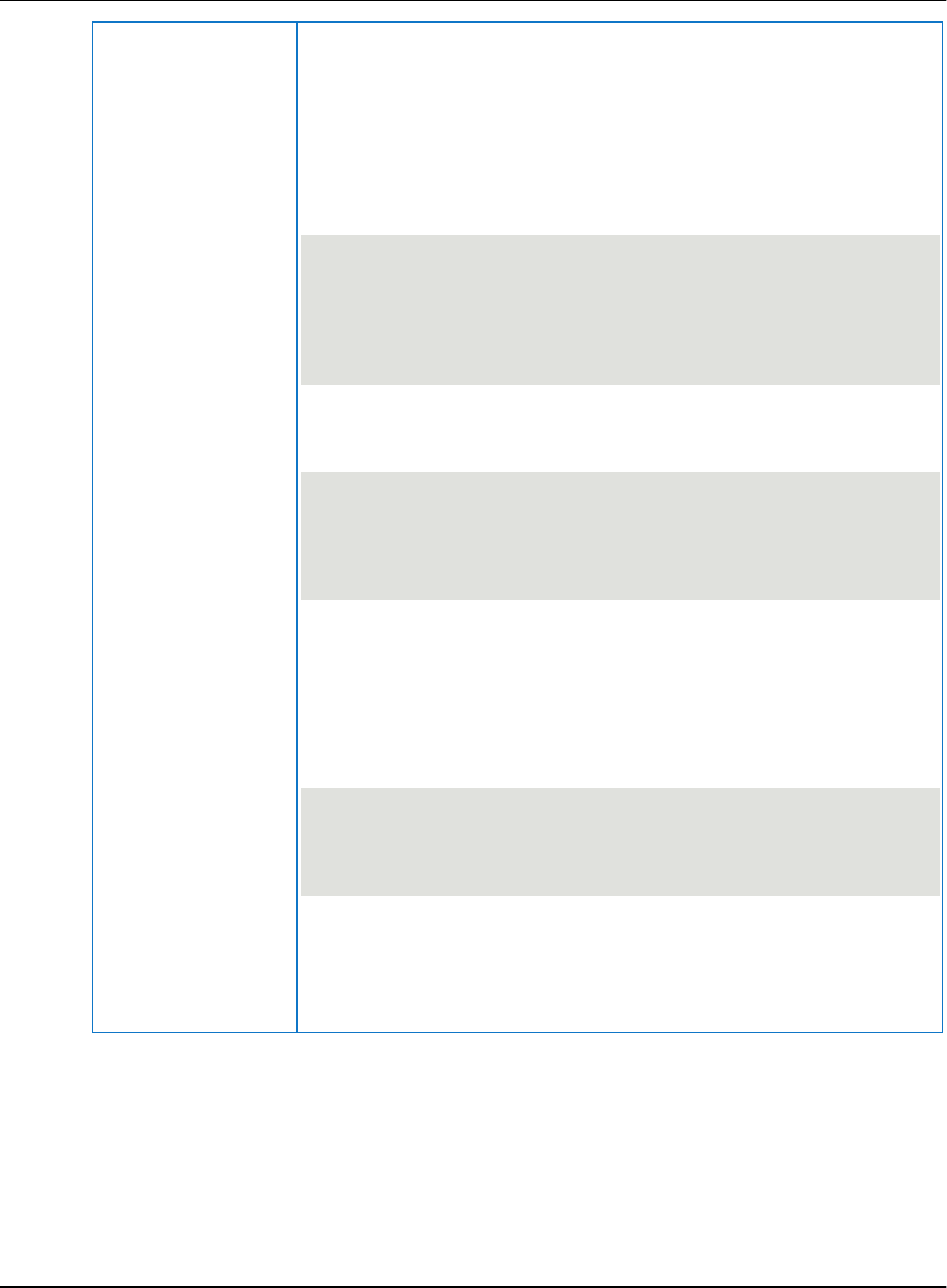
Browser-Friendly Data Retrieval AVEVA™ Historian Retrieval Guide formerly Wonderware
197
Scenario 3
This query produces a list of tag values with analog summary data. The
"$filter" clause narrows the results further by specifying these parameters:
Fully qualified name of the tag (FQN+eq+'Baytown.tank_level')
Start and end times
Result set returned at 1 hour intervals (Resolution=3600000). There are
3.6 million milliseconds in an hour.
https://online.wonderware.com/s/ik97r5/apis/historian/v
2/AnalogSummary
?$filter=FQN+eq+'Baytown.tank_level'+and+StartDateTime+
ge+2017-05-14T00:00:00.000Z
+and+EndDateTime+le+2017-05-16T00:00:00.000Z&Resolution
=3600000
Scenario 4
This query specifies only StartTime and Resolution (600000 ms, or 10
minutes), but no EndTime.
https://online.wonderware.com/s/ik97r5/apis/historian/v
2/AnalogSummary
?$filter=FQN+eq+'Baytown.tank_level'
and StartDateTime ge
2017-06-29T00:00:00Z&Resolution=600000
In this case, Insight assumes:
EndTime defaults to DateTime.UtcNow
The number of rows returned (Count) depends on the StartTime and
EndTime.
Scenario 5
This query specifies only EndTime, but no StartTime or Resolution.
https://online.wonderware.com/s/ik97r5/apis/historian/v
2/AnalogSummary
?$filter=FQN+eq+'Baytown.tank_level'and EndDateTime le
2017-06-29T00:00:00Z'
In this case, Insight assumes:
StartTime defaults to one hour before EndTime
Resolution defaults toTimespan
Count defaults to1 (number of returned rows)

AVEVA™ Historian Retrieval Guide formerly Wonderware Browser-Friendly Data Retrieval
198
Scenario 6
This query specifies uses SliceBy.
https://online.wonderware.com/apis/Historian/v2/AnalogS
ummary?$
filter=FQN+eq+'Baytown.R21.Level'+and+StartDateTime+ge+
2019-03-05T00:00:00.000Z+
and+EndDateTime+le+2019-03-05T12:00:00.000Z&SliceBy=Bay
town.R21.Batch
In this case, Insight calculates an analog summary for the
Baytown..R21.Level tag and batches the results per value for the
Baytown.R21.Batch tag.

Browser-Friendly Data Retrieval AVEVA™ Historian Retrieval Guide formerly Wonderware
199
StateSummary
Description
Retrieves state summary values for the specified tags.
URL
/StateSummary
Method
GET
Required Parameters
FQN=[string ]
The fully qualified name for the tag. A fully qualified name uses the
format: datasource.tagname.
StartDateTime=[DateTimeOffset]
The starting date and time for the retrieval cycle. This is always specified
in UTC using the RFC3339 / ISO8601 format with the Z time zone
designator. For example: 2016-09-03T18:44:09.352247Z
EndDateTime=[DateTimeOffset]
The ending date and time for the retrieval cycle. This is always specified
in UTC using the RFC3339 / ISO8601 format with the Z time zone
designator. For example: 2016-09-03T18:44:09.352247Z
Optional Parameters
RetrievalMode=[string]
Possible values are: Cyclic, Full.
Default is Cyclic.
Resolution=[Int]
In milliseconds. Any positive integer.
OPCQuality=[Int32]
OPC quality. Normal OPC quality retrieval logic is applied if:
All the point found and processed for this row have GOOD quality. If they
all have the same GOOD quality, then that quality is returned.
If there is a gap in the entire calculation cycle, then BAD quality is
returned for the tag.
For any other scenario with any mixture of GOOD and BAD points, a
DOUBTFUL OPC quality (64) is returned.
Text=[string]
Non-numeric state.
Average=[Double]
Average time in this state among all occurrences of this state during this
retrieval cycle, including state occurrences that fall only partially within
the period.
AverageContained=[Double]
Average time in this state among all occurrences of this state during this
retrieval cycle, excluding state occurrences that fall only partially within
the period. An occurrence that was partially contained in two or more
consecutive storage cycles is converted to a contained state within the
retrieval cycle if possible.

AVEVA™ Historian Retrieval Guide formerly Wonderware Browser-Friendly Data Retrieval
200
Optional Parameters
Minimum=[Double]
Minimum time in this state among all occurrences of this state during this
retrieval cycle, including state occurrences that fall only partially within
the period. An occurrence that was partially contained in two or more
consecutive storage cycles is converted to a contained state within the
retrieval cycle if possible.
MinimumContained=[Double]
The minimum of the contained times in this state among all occurrences
of this state during the entire retrieval cycle, excluding state occurrences
that fall only partially within the period. An occurrence that was partially
contained in two or more consecutive storage cycles is converted to a
contained state within the retrieval cycle if possible.
Maximum=[Double]
Maximum time in this state among all occurrences of this state during this
retrieval cycle, including state occurrences that fall only partially within
the period. An occurrence that was partially contained in two or more
consecutive storage cycles is converted to a contained state within the
retrieval cycle if possible.
MaximumContained=[Double]
The maximum of the contained times in this state among all occurrences
of this state during the entire retrieval cycle, excluding state occurrences
that fall only partially within the period. An occurrence that was partially
contained in two or more consecutive storage cycles is converted to a
contained state within the retrieval cycle if possible.
Total=[Double]
Total time in this state during this retrieval cycle, including state
occurrences that fall only partially within the period.
TotalContained=[Double]
Total time in this state during this retrieval cycle, excluding state
occurrences that fall only partially within the period. An occurrence that
was partially contained in two or more consecutive storage cycles is
converted to a contained state within the retrieval cycle if possible.
Percent=[Double]
Percent of the time during this retrieval cycle that the tag was in this
state, including state occurrences that fall only partially within the period.
PercentContained=[Double]
The precentage of the entire retrieval cycle time that the tag was in this
state, excluding state occurrences that fall only partially within the period.
This is a ratio between StateTimeTotalContained and StateTimeTotal
expressed as a percentage in the range 0 to 100. An occurrence that was
partially contained in two or more consecutive storage cycles is
converted to a contained state within the retrieval cycle if possible.
Count=[Int64]
The number of times the state occurred within the retrieval cycle,
including states that only partially occur in the cycle.
CountContained=[Int64]
The number of times the state occurred fully contained within the
retrieval cycle. States that only partially occur in the cycle are not
counted.
LastDateTime=[DateTimeOffset]
The timestamp for the last received value.
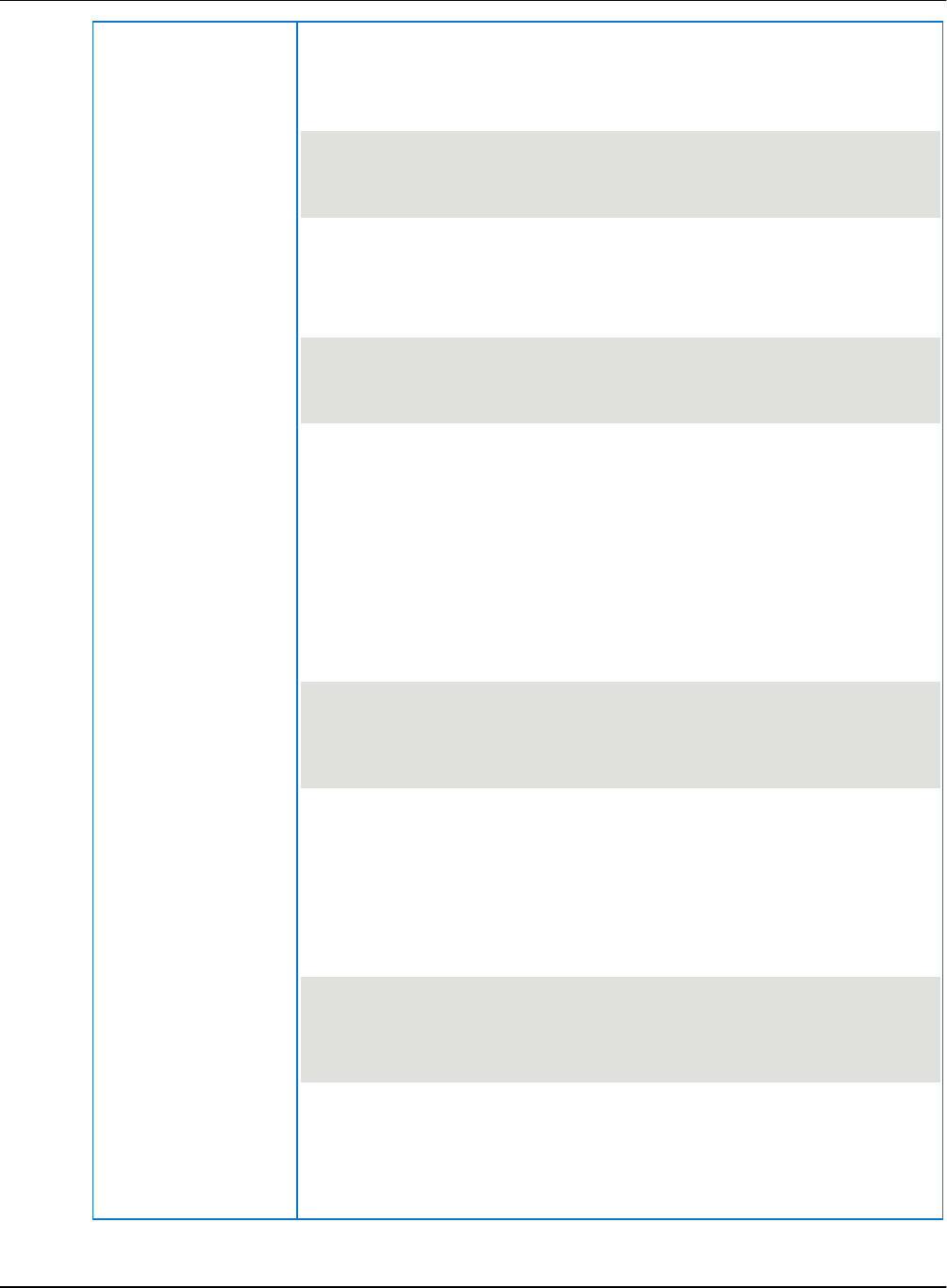
Browser-Friendly Data Retrieval AVEVA™ Historian Retrieval Guide formerly Wonderware
201
Sample Query
Scenario 1
This query produces a list of tags that end with "pump_03". In this case, the
user doesn’t know the fully qualified name (FQN) of a specific tag and wants
a short list of possible matches.
https://online.wonderware.com/apis/historian/v2/StateSu
mmary?TagFilter=
endswith(FQN, 'pump_03').
See more TagFilter examples. (see "Retrieve data using PowerBI" on page
237)
Scenario 2
This query specifies no start or end time and no resolution.
https://online.wonderware.com/s/ik97r5/apis/historian/v
2/StateSummary
?$filter=FQN eq 'Baytown.pump_03'
In this case, these defaults are used for the returned results:
EndTime defaults to DateTime.UtcNow
StartTime defaults to one hour before EndTime
Resolution defaults toTimespan
Count defaults to1 (number of returned rows)
Scenario 3
This query specifies only StartTime and Resolution (600000ms, or 10
minutes), but no EndTime.
https://online.wonderware.com/s/ik97r5/apis/historian/v
2/StateSummary
?$filter=FQN eq 'Baytown.pump_03' and StartDateTime ge
2017-06-29T00:00:00Z&Resolution=600000
In this case, Insight assumes:
EndTime defaults to DateTime.UtcNow
The number of rows returned (Count) depends on the StartTime and
EndTime.
Scenario 4
This query specifies only EndTime, but no StartTime or Resolution.
https://online.wonderware.com/s/ik97r5/apis/historian/v
2/StateSummary
?$filter=FQN eq 'Baytown.pump_03' and EndDateTime le
2017-06-29T00:00:00Z
In this case, Insight assumes:
StartTime defaults to one hour before EndTime
Resolution defaults toTimespan
Count defaults to1 (number of returned rows)
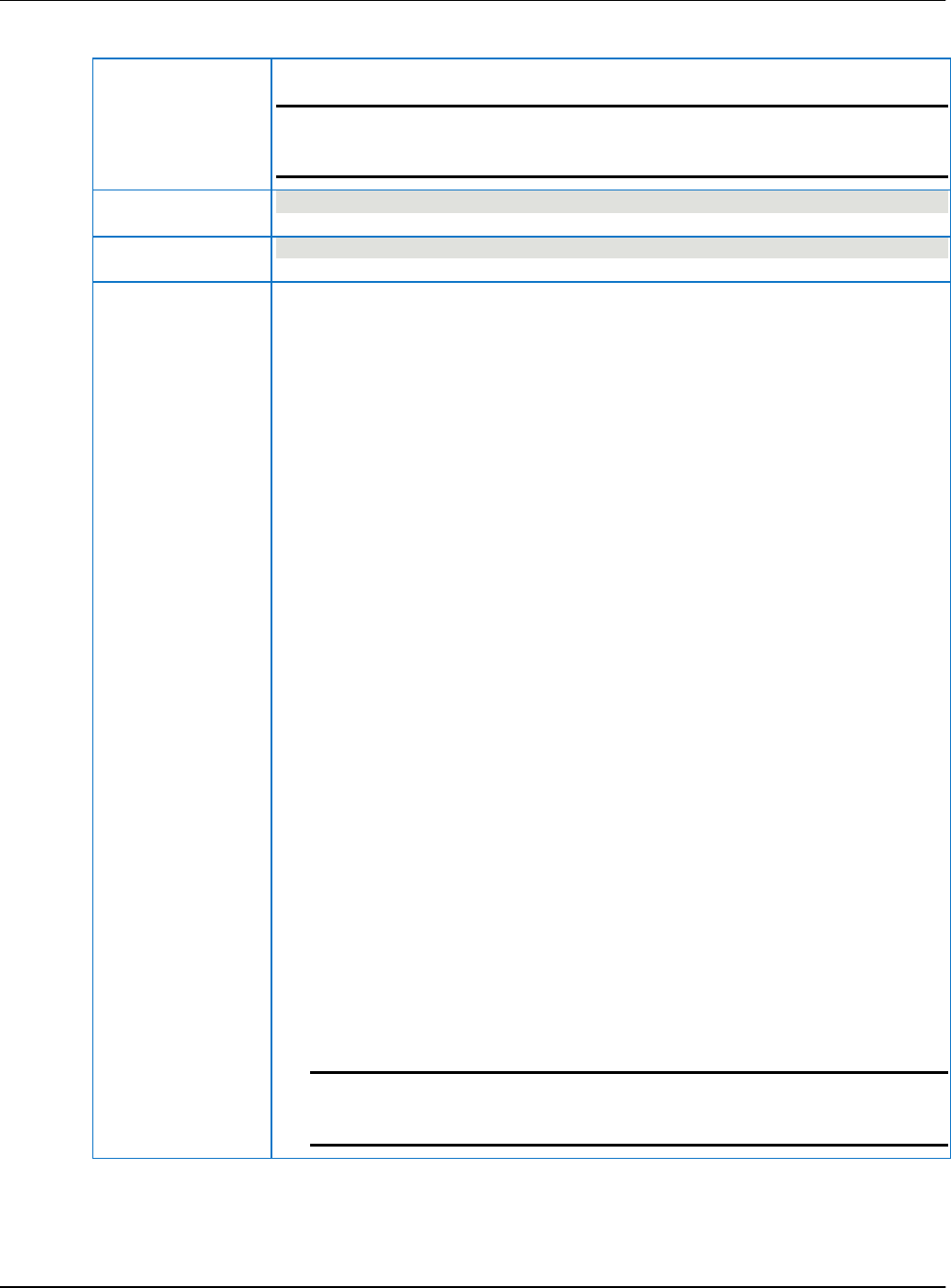
AVEVA™ Historian Retrieval Guide formerly Wonderware Browser-Friendly Data Retrieval
202
Events
Description
Retrieves information about events and alarms.
Note: All property names are case-sensitive. Event storage preserves the case
that you provide for any property value. For example, a property value of "TRUE"
is different than "True" and "true."
URL
/Events
Method
GET
Optional
Parameters
ID=[GUID]
Globally unique identifier for the event.
EventTime=[DateTime]
UTC timestamp indicating when the event occurred.
Type=[String]
Main categorization of the event. Examples of valid values:
- Alarm.Acknowledge - Application.Write
- Alarm.Clear - User.Write
- Alarm.Set - User.Write.Secured
- Alarm.Write - User.Write.Verified
Priority=[Int32]
Value indicating the importance of the event. Values range from 1 to 999,
with lower numbers indicating higher importance.
Namespace =[String]
The namespace for this event tag.
Severity=[Int32]
Categorization of the urgency of the event:
1 - Critical
2 - Major
3 - Minor
4 - Informational
EventTimeUTCOffsetMins=[Int32]
For local time, the offset in minutes from UTC time.
ReceivedTime=[DateTime]
UTC timestamp indicating when the event was received by the Historian
server.
IsAlarm=[Bool]
"true" or "false" indicating whether this event is an alarm.
Comment=[String]
A comment providing more information about the event.
Note: If an alarm comment from Application Server contains a backslash
(for example, \n), then an extra backslash appears in the event result (for
example, \\n) in the browser.

Browser-Friendly Data Retrieval AVEVA™ Historian Retrieval Guide formerly Wonderware
203
Optional
Parameters
InTouchType=[String]
InTouch Type value. Examples include:
- ALM
- RTN
- ACK
- SYS
ValueString=[String]
The current value string.
PreviousValueString=[String]
The previous value string.

AVEVA™ Historian Retrieval Guide formerly Wonderware Browser-Friendly Data Retrieval
204
Optional Alarm
Parameters
Alarm_ID=[String]
ID of the original Alarm event. For "Alarm.Set" events, this will be the same
as the event ID.
Alarm_Class=[String]
InTouch alarm classification. Examples include "DSC" (discrete), "VALUE"
(LoLo, Hi, etc.), "DEV" (deviation), and "ROC" (rate of change).
Alarm_Type=[String]
InTouch alarm type.
Alarm_InAlarm=[Boolean]
"true" or "false" indicating whether the Alarm is still in the active state.
Alarm_Acknowledged=[Boolean]
"true" or "false" indicating whether the user has acknowledged this alarm.
Alarm_Condition=[String]
The condition being alarmed. Examples include "Limit.Hi", "ROC.Lo", and
"System" among others.
Alarm_ValueString=[String]
Value logged for the variable related to the event.
Alarm_LimitString=[String]
Limit being alarmed.
Alarm_UnAckDuration=[Int32]
The duration, in milliseconds, for which the alarm went un-acknowledged.
Alarm_Duration=[Int32]
The duration, in milliseconds, for which the alarm was active.
Alarm_IsSilenced=[Boolean]
"true" or "false" indicating whether the alarm was silenced.
Alarm_IsShelved=[Boolean]
"true" or "false" indicating whether the alarm was shelved.
Alarm_ShelveStartTimeUTC=[DateTime]
Scheduled start of the shelve time if the alarm has been shelved.
Alarm_ShelveEndTimeUTC=[DateTime]
Scheduled end of the shelve time if the alarm has been shelved.
Alarm_ShelveReason=[String]
The reason the alarm was shelved.
Alarm_ShelveUserLogin=[String]
The login ID for the person who shelved the alarm.
Alarm_ShelveNode=[String]
The node of the shelved alarm.

Browser-Friendly Data Retrieval AVEVA™ Historian Retrieval Guide formerly Wonderware
205
Optional Provider
Parameters
Provider_NodeName=[String]
Name of the node that generated the event.
Provider_System=[String]
Software system that generated the event. Examples include "Application
Server", "InTouch", and "InBatch".
Provider_ApplicationName=[String]
Application that generated the event. For Application Server, this will be the
galaxy name. For InTouch, it will be the InTouch application name.
Provider_SystemVersion=[String]
Software version (for example, 4566.1210.5811.1) for the component
identified by Provider_ApplicationName.
Provider_InstanceNames=[String]
Provider-specific string that uniquely identifies the instance an application on
a given node.
Optional Source
Parameters
Source_Name=[String]
The name of the data source for this event tag.
Source_ProcessVariable=[String]
Process variable to which the event is related.
Source_ProcessVariable_Units=[String]
Engineering units used for the process variable.
Source_ConditionVariable=[String]
Condition variable related to the event. For example, if "TIC101" has a field
attribute "PV" and this is a "Hi" alarm, this value will be "TIC101.PV.Hi".
Source_Object=[String]
Non-hierarchical name for the object to which the event is related, for
example, "TIC101".
Source_HierarchicalObject=[String]
Hierarchical name for the source object. For example, "Reactor_001.TIC".
Source_Area=[String]
Non-hierarchical Area name. For example, "Bottling_Zone".
Source_HierarchicalArea=[String]
Hierarchical Area name. For example, "Plant_001.Building_002.Mixing".
Source_Engine=[String]
Non-hierarchical engine name. For example, "AppEngine_001".
Source_Platform=[String]
Non-hierarchical platform name. For example "WinPlatform_001".

AVEVA™ Historian Retrieval Guide formerly Wonderware Browser-Friendly Data Retrieval
206
Optional User
Parameters
User_Account=[String]
This is the login name for the operator for the given application.
User_Name=[String]
Name of the user.
User_NodeName=[String]
Computer name from which a user action was executed.
User_Email=[String]
The user's email address.
User_Phone=[String]
The user's phone number.
User_InstanceName=[String]
An instance name for the user.
User_Agent=[String]
Application name that the user was running when the event was generated.
Optional Verifier
Parameters
Verifier_Account=[String]
This is the login name for theverifier.
Verifier_Name=[String]
Name of the verifier.
Verifier_NodeName=[String]
Computer name from which a verifier action was executed.
Sample Queries
https://online.wonderware.com/s/ik97r5/apis/Historian/v2/E
vents
?$filter=EventTime+gt+'2017-07-13T00:00:00'
https://online.wonderware.com/s/ik97r5/apis/Historian/v2/E
vents
?$filter=type+eq+'Alarm.Clear'

Browser-Friendly Data Retrieval AVEVA™ Historian Retrieval Guide formerly Wonderware
207
Sample Output
{
@odata.context:
"https://online.wonderware.com/s/ik97r5/apis/Historian/v2/
Events
/$metadata#Events",
value: [
{
id: "ee9b042c-181e-4872-b4e8-cb9575c1f4f9",
eventtime: "2017-07-13T00:00:01.047Z",
type: "Alarm.Clear",
receivedtime: "2017-07-13T00:00:01.2553666Z",
source_name: "AaEvents",
namespace: "AaEvents",
alarm_acknowledged: false,
alarm_class: "VALUE",
alarm_condition: "Limit.LoLo",
alarm_durationms: 5006,
alarm_id: "f1e21e43-352e-d3db-7552-6e77f193d02d",
alarm_inalarm: false,
alarm_isshelved: false,
alarm_issilenced: false,
alarm_limitstring: "10.0",
alarm_originationtime: "2017-07-12T23:59:56.041Z",
alarm_state: "UNACK_RTN",
alarm_tagtype: "S",
alarm_type: "LoLo",
comment: "Severity 1",
eventtimeutcoffsetmins: -420,
intouchtype: "LoLo",
isalarm: true,
priority: 1,
provider_applicationname: "AlarmsandEvents",
provider_nodename: "INSIGHTCHARTAPP",
provider_system: "Application Server",
provider_systemversion: "4966.1210.14578.2",
severity: 1,
source_area: "Plant_Area",
source_conditionvariable:
"Drum_Conveyor.HorizontalMovement.LoLo",
source_hierarchicalarea:
"Enterprise.Site.Plant.Plant_Area",
source_hierarchicalobject: "Drum_Conveyor",
source_object: "Drum_Conveyor",
source_processvariable: "Drum_Conveyor.HorizontalMovement",
valuestring: "30.0"
},

AVEVA™ Historian Retrieval Guide formerly Wonderware Browser-Friendly Data Retrieval
208
Tags
Description
Using the GET verb, retrieves tag metadata. For version 2, this also includes
tag extended properties.
Using the POSTverb, manages multiple tags at once.
Using the DELETE verb, deletes a specified tag.
URL
/Tags
Methods
GET
POST
DELETE
Required Parameters
FQN=[string ]
The fully qualified name for the tag. A fully qualified name uses the format:
datasource.tagname.
Optional Parameters
Source=[string ]
The data source.
Description=[string ]
The description of the tag.
EngUnit=[string]
The engineering units used for the tag's recorded values.
EngUnitMax=[Double]
The maximum value of the tag, measured in engineering units.
EngUnitMin=[Double]
The minimum value of the tag, measured in engineering units.
The minimum value of the tag, measured in engineering units.
InterpolationType=[string]
The interpolation type for retrieval. 0 = Stair-stepped interpolation; 1 =
Linear interpolation (if applicable, based on the tag type); 254 = System
default interpolation mode. The system default interpolation type is to use
the system default for the analog type, either integer or real. The system
default interpolation type for an analog type is determined by the setting of
the InterpolationTypeInteger and InterpolationTypeReal system
parameters. This setting impacts Interpolated, Average, and Integral
retrieval modes.
IntegralDivisor=[Double]
The factor to be applied when integrating a rate with the units
[EngUnits/TimeUnit] to a quantity with units [EngUnits]. This factor is
called the integral divisor.
The default value of 1 assumes a time unit of seconds and ensures that a
rate of [Unit/second] is correctly integrated to [Unit].
For a time unit of minutes, set the integral divisor value to 60; for a unit of
hours, set the integral divisor value to 3600. The integral divisor is applied
similarly to rates or quantities that are not expressed in terms of a time
unit. For example, to convert watts to watt-hours, the integral divisor is
1/3600. To convert watts to kilowatt-hours, the integral divisor is
1/3600000. Internal use only.

Browser-Friendly Data Retrieval AVEVA™ Historian Retrieval Guide formerly Wonderware
209
Optional Parameters
RolloverValue=[Double]
The rollover value for the tag.
MessageOff=[string ]
The message associated with the FALSE state of the discrete tag. The
maximum number of characters is 64. A discrete tag set to 0 is in the
FALSE state.
MessageOn=[string ]
The message associated with the TRUE state of the discrete tag. The
maximum number of characters is 64. A discrete tag set to 1 is in the
TRUE state.
TagName=[string ]
The unique name of the tag within the AVEVA Historian system.
TagType=[string ]
The type of tag. 1 = Analog; 2 = Discrete; 3 = String; 5 = Event, 7 =
Summary tag (analog or state). TagType is a foreign key from the AVEVA
Historian TagRef table.
Raw
Identifies related the raw acquired value.
Minutely
Identifies related minutely summary.
Hourly
Identifies related hourly summary.
Daily
Identifies related daily summary.

AVEVA™ Historian Retrieval Guide formerly Wonderware Browser-Friendly Data Retrieval
210
Get tags
Sample Query
Scenario 1
This query lists tag metadata for all tags in all data sources
for your Insight solution.
https://online.wonderware.com/s/ik97r5/apis/historian/v2/
Tags
Scenario 2
This query lists metadata for tags in a particular data source. The data source
in this example is named Baytown.
https://online.wonderware.com/s/ik97r5/apis/historian/v2/
Tags?$filter=Source+eq+'Baytown'
Sample Output
{
@odata.context:
"https://online.wonderware.com/s/ik97r5/apis/Historian/v2
/$metadata#Tags",
value: [
{
FQN: "14th aug app.Auto",
Source: "14th aug app",
Description: "Automatic mode",
EngUnit: "",
EngUnitMax: 0,
EngUnitMin: 0,
InterpolationType: "None",
MessageOff: "Manu",
MessageOn: "Auto",
TagName: "Auto",
TagType: "Discrete",
Alias: "nareshtag-discrete",
Location: "/Application Tag 2",
"https://online.wonderware.com/s/ik97r5/apis/Historian/v2
/Tags('14th%252baug%252bapp.Auto')/Raw",
"https://online.wonderware.com/s/ik97r5/apis/Historian/v2
/Tags('14th%252baug%252bapp.Auto')/Minutely",
"https://online.wonderware.com/s/ik97r5/apis/Historian/v2
/Tags('14th%252baug%252bapp.Auto')/Hourly",
"https://online.wonderware.com/s/ik97r5/apis/Historian/v2
/Tags('14th%252baug%252bapp.Auto')/Daily"
}
],
@odata.nextLink:
"https://online.wonderware.com/s/ik97r5/apis/Historian/v2
/Tags
?$skiptoken=koen66nr4nGCReC02FqdxO4Y62C7zBVsv3uf7mO8XMQqx
Zveqw8+v2/bVCsFdevT"
}

Browser-Friendly Data Retrieval AVEVA™ Historian Retrieval Guide formerly Wonderware
211
Delete a tag
Sample Query
This query deletes a tag named Weather.Brisbane.Cloudiness.
DELETE /Historian/v2/Tags('Weather.Brisbane.Cloudiness')
HTTP/1.1
Host: nchdevruntime.cloudapp.net:8080
Content-Type: application/json
{
"delete":
{
"FQN":["datasourcename.tagname"]
}
}

AVEVA™ Historian Retrieval Guide formerly Wonderware Browser-Friendly Data Retrieval
212
Manage multiple tags
Sample Query
Scenario 1: Bulk query
This query retrieves multiple tags.
POST /Historian/v2/Tags HTTP/1.1
Host: nchqaruntime.cloudapp.net:8080
Authorization: Basic …….
Content-Type: application/json
Cache-Control: no-cache
{
"query":
{
"FQN":['Weather.Brisbane.Cloudiness','Weather.Auck
land.Cloudiness'],
"select":"FQN,TagName"
}
}
Scenario 2: Bulk edit
This makes updates to multiple tags. You can edit up to 100 tags at a time,
with maximum of 50 properties per tag.
Note: Historian Data REST API extended properties map to the AVEVA
Historian SDK tag extended properties API.
This makes updates to a tag's standard and extended properties.
POST /Historian/v2/Tags HTTP/1.1
Host: nchdevruntime.cloudapp.net:8080
Authorization: Basic …
Content-Type: application/json
Cache-Control: no-cache
{
"properties":
[
{
"FQN": "18Jul_kc.test1",
"PropertyName": "Alias",
"Text": "SysTimeSec",
"Type": "String",
"Searchable":false
}
}

Browser-Friendly Data Retrieval AVEVA™ Historian Retrieval Guide formerly Wonderware
213
Sample Query
Scenario 3: Bulk delete
This deletes multiple tags.
POST /Historian/v2/Tags HTTP/1.1
Host: nchdevruntime.cloudapp.net:8080
Content-Type: application/json
Cache-Control: no-cache
{
"delete":
{
"FQN":["datasourcename.tagname1",
"datasourcename.tagname2"]
}
}
Sample Output
The output from a bulk edit includes results per tag. If any of a tag's properties
is invalid, the tag fails and results in an error message.
{
"value":
[
{
"FQN": "System.Tag1",
"$StatusCode": 200
},
{
"FQN": "System.Tag2",
"$StatusCode":500,
"$ErrorMessage":"Alias property contains illegal
characters"
}
]
}
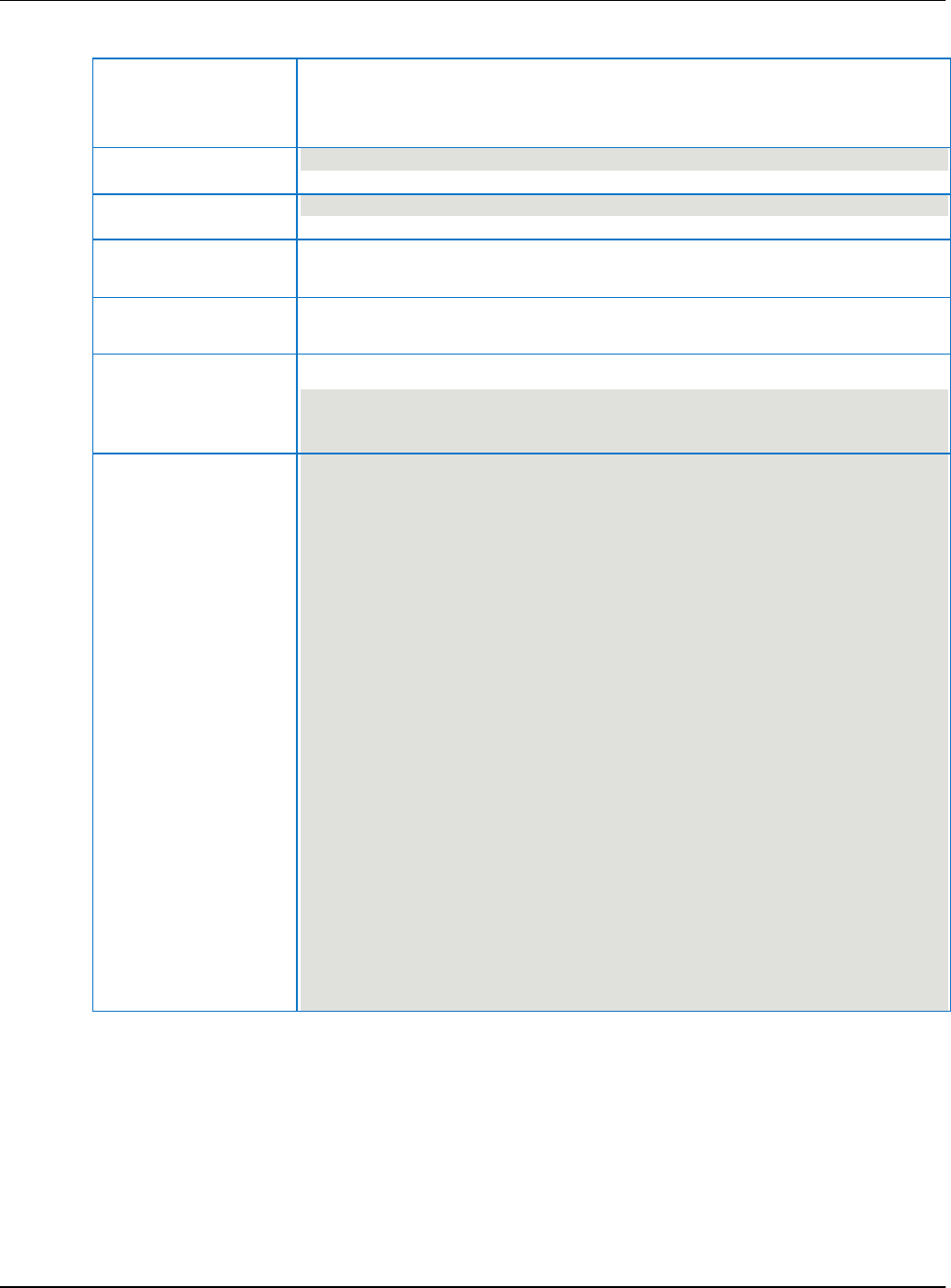
AVEVA™ Historian Retrieval Guide formerly Wonderware Browser-Friendly Data Retrieval
214
TagProperties
Description
Lists all properties used in the system. Tag properties include both base and
extended properties of a tag.
Examples of TagProperties are DataSourceName and Unit.
URL
/TagProperties
Method
GET
Required Parameters
Name=[string ]
The unique name of the tag property.
Optional Parameters
Values
Valid values for this property.
Sample Query
This query lists all properties and extended properties for your Insight solution:
https://online.wonderware.com/s/ik97r5/apis/Historian/v2
/TagProperties
Sample Output
{
@odata.context:
"https://online.wonderware.com/s/ik97r5/apis/Historian/v
2/$metadata#TagProperties",
value: [
{
Name: "DataSourceName",
Type: "String",
ReadOnly: true
},
{
Name: "Namespace",
Type: "String",
ReadOnly: true
},
{
Name: "TagName",
Type: "String",
ReadOnly: true
},
{
Name: "FullyQualifiedName",
Type: "String",
ReadOnly: true
},
...
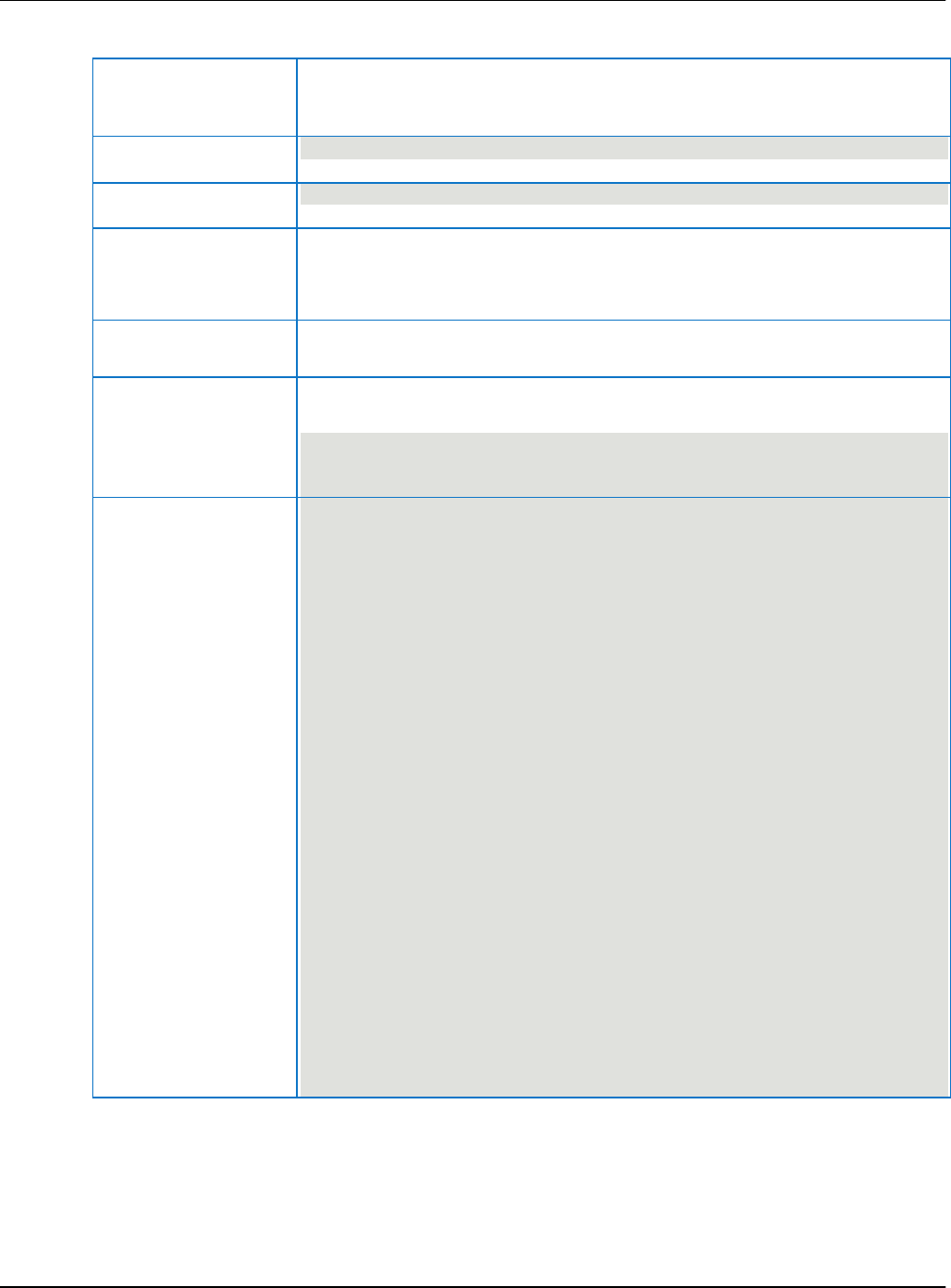
Browser-Friendly Data Retrieval AVEVA™ Historian Retrieval Guide formerly Wonderware
215
TagPropertyValues
Description
Retrieves values for one or more tag properties. Tag properties include base
and extended properties of Tag. Examples of TagProperties are
DataSourceName and Unit.
URL
/TagpropertyValues
Method
GET
Required Parameters
Name=[string ]
Unique name of the tag property value.
Value=[string ]
Optional Parameters
Tags
Identifies related Tags.
Sample Query
This query lists the property name ("Source") and value (that is, the data
source name) for all data sources:
https://online.wonderware.com/s/ik97r5/apis/Historian/v2
/TagPropertyValues
Sample Output
{
@odata.context:
"https://online.wonderware.com/s/ik97r5/apis/Historian/v
2
/$metadata#TagPropertyValues",
value: [
{
Name: "Source",
Value: "Meter",
"https://online.wonderware.com/s/ik97r5/apis
/Historian/v2/TagPropertyValues(Name='Source',Value='Met
er')
/Tags"
},
{
Name: "Source",
Value: "Weather",
"https://online.wonderware.com/s/ik97r5/apis
/Historian/v2/TagPropertyValues(Name='Source',Value='Wea
ther')
/Tags"
}
]
}

AVEVA™ Historian Retrieval Guide formerly Wonderware Browser-Friendly Data Retrieval
216
TagGroups
Description
Retrieves information about data sources. Each data source contains a group
of tags.
URL
/TagGroups
Method
GET
Required Parameters
GroupID=[string]
Globally unique identifier for the tag group.
Optional Parameters
GroupName=[string]
The name of the data source.
TypeID=[string]
The type of data source.
ParentID=[string]
Scope=[string]
Used for tag-level security, this defines a location within the data source.
Tags
Identifies related Tags.
Groups
Identifies related TagGroups.
Sample Query
This query lists the data sources (labeled "TagGroups" in this API) for your
Insight solution identified by solution ID. In this example, the solution ID used
is "ik97r5".
https://online.wonderware.com/s/ik97r5/apis/historian/v2
/TagGroups

Browser-Friendly Data Retrieval AVEVA™ Historian Retrieval Guide formerly Wonderware
217
Sample Output
{
@odata.context:
"https://online.wonderware.com/s/ik97r5/apis/Historian/v
2
/$metadata#TagPropertyValues",
value: [
{
Name: "Source",
Value: "Meter",
"https://online.wonderware.com/s/ik97r5/apis
/Historian/v2/TagPropertyValues(Name='Source',Value='Met
er')
/Tags"
},
{
GroupID: "1cd29ff2-f7f3-428b-a593-55c917136a39",
GroupName: "Weather",
Type: "1000000",
ParentID: "0",
Scope: "Public",
"https://online.wonderware.com
/s/ik97r5/apis/Historian/v2/TagGroups
('1cd29ff2-f7f3-428b-a593-55c917136a39')/Tags",
"https://online.wonderware.com
/s/ik97r5/apis/Historian/v2/TagGroups
('1cd29ff2-f7f3-428b-a593-55c917136a39')/Groups"
}
]
}

AVEVA™ Historian Retrieval Guide formerly Wonderware Browser-Friendly Data Retrieval
218
TagSuggest
Description
Retrieves content or tags based on search criteria from AVEVA Insight. It
returns the search results based on tag name, content name, keywords,
description, and so on. It also returns the summary of the search result -- for
example, total matching search results for the given search text.
You can use the these query options:
q -- (query) Limits the search to only specified fields instead of searching
all fields.
Type -- Limits the search to only a certain type of data (Tag or
SavedContent).
URL
/TagSuggest
Method
GET
Required Parameters
Value=[string ]
The suggested value.
Optional Parameters
FieldName=[string]
The related field name.
Count=[Double]
The hit count for this query string.
SearchRanking=[Double]
The search ranking for the tag.
DisplayText=[string]
The associated display text.
Search
Tags
Identifies related Tags.
ExpandSuggest

Browser-Friendly Data Retrieval AVEVA™ Historian Retrieval Guide formerly Wonderware
219
Sample Query
Scenario 1
This query returns values from a search of all fields (default).
https://online.wonderware.com/s/ik97r5/apis/historian/v2
/TagSuggest
Scenario 2
This query uses the "q" query option to limit the search to only the "location"
field.
https://online.wonderware.com/s/ik97r5/apis/historian/v2
/TagSuggest
?q=&searchfields=location
Scenario 3
This query uses the "Type" option to limit the search to only a certain type of
data (Tag or SavedContent).
https://online.wonderware.com/s/ik97r5/apis/historian/v2
/TagSuggest?q=d&Type=Tag

AVEVA™ Historian Retrieval Guide formerly Wonderware Browser-Friendly Data Retrieval
220
TagSearch
Description
Provides tagname results based on provided search parameters.
The data returned by this entity is dependent on the historian’s
implementation of search functionality. Some historians will return empty
result sets.
It finds all the matching results for a given query string. It is basically used to
filter the results based on the suggestion results. It searches for the matching
record only on the fields provided in the key name as part of the query
parameter. The results contain basic tag metadata information; such as FQN,
tagname, source, and search ranking.
You can use these query options:
q - Specifies the query string (for example, the value typed by the user into
the search box).
kn - Specifies the key name (field name) to which the search will be
applied.
kv - Specifies the key value which will be used for the search.
URL
/TagSearch
Method
GET
Required Parameters
FQN=[string ]
The fully qualified name for the tag. A fully qualified name uses the format:
datasource.tagname.
Optional Parameters
Source=[string]
The data source.
TagName=[string]
The name of the tag.
DisplayText=[string]
The displayed text for the tag.
SearchRanking=[Double]
The search ranking for this tag.
Tag
Returns a URL to retrieve a list of Tag entity values for the tags that
match.
Sample Query
This example uses the "q", "kn", and "kv" query options.
https://online.wonderware.com/s/ik97r5/apis/historian
/v2/TagSearch
?q=r&kn=source&kv=atron

Browser-Friendly Data Retrieval AVEVA™ Historian Retrieval Guide formerly Wonderware
221
TagExtendedProperties
Description
Retrieves both standard and extended properties for a tag.
URL
/TagExtendedProperties
Method
GET
Required Parameters
FQN=[string ]
The fully qualified name for the tag. A fully qualified name uses the format:
datasource.tagname.
PropertyName=[string ]
The name of the property.
Optional Parameters
Value=[Double]
The value of the property.
Text=[string ]
The associated text for the property.
Type=[string ]
Can be one of these:
o [Edm.]String
o [Edm.]Int16, Int32, Int64
o [Edm.]Double
o [Edm.]DateTimeOffset
o [Edm.]Guid
o [Edm.]Boolean
o [Edm.]Geography types
o [Edm.]Geometry types

AVEVA™ Historian Retrieval Guide formerly Wonderware Browser-Friendly Data Retrieval
222
Summary (v1 only)
Description
Retrieves summary data for a user-defined interval.
The additional query option "Resolution" is used to specify the interval to be
used for this entity.
The earliest and latest requested values of StartDateTime and/or
EndDateTime are used for determining the span of time covered by the
summary intervals returned.
URL
/Summary
Method
GET
Required Parameters
FQN=[string]
The fully qualified name for the tag. A fully qualified tagname uses the
format: DataSourceName.TagName.
StartDateTime=[DateTimeOffset]
The starting date and time for the retrieval cycle. This is always specified
in UTC using the RFC3339 / ISO8601 format with the Z time zone
designator. For example: 2016-09-03T18:44:09.352247Z
EndDateTime=[DateTimeOffset]
The ending date and time for the retrieval cycle. This is always specified in
UTC using the RFC3339 / ISO8601 format with the Z time zone
designator. For example: 2016-09-03T18:44:09.352247Z
Optional Parameters
OPCQuality=[Int32]
OPC quality. Normal OPC quality retrieval logic is applied if:
All the point found and processed for this row have GOOD quality. If they
all have the same GOOD quality, then that quality is returned.
If there is a gap in the entire calculation cycle, then BAD quality is returned
for the tag.
For any other scenario with any mixture of GOOD and BAD points, a
DOUBTFUL OPC quality (64) is returned.
PercentGood=[Double]
The ratio of the number of rows that have "good" quality to the total
number of rows in the retrieval cycle, expressed as a percentage in the
range 0 to 100.
Analog
An embedded collection that maps to AnalogSummary (see
"AnalogSummary" on page 193).
Split
An embedded collection that maps to StateSummary (see
"StateSummary" on page 199) for the ValueState retrieval mode.
Contained
An embedded collection that maps to StateSummary (see
"StateSummary" on page 199) for the ContainedState retrieval mode.
Raw
A URL used to retrieve all stored values for a specified time period and
tag. This is equivalent to a preconfigured ProcessValue (see
"ProcessValues" on page 191) query.

Browser-Friendly Data Retrieval AVEVA™ Historian Retrieval Guide formerly Wonderware
223
Daily (v1 only)
Description
Retrieves daily (24-hour resolution) summary values for the tags specified.
The default for Daily is to report summary values for the last week.
URL
/Daily
Method
GET
Required Parameters
FQN=[string]
The fully qualified name for the tag. A fully qualified tagname uses the
format: DataSourceName.TagName.
StartDateTime=[DateTimeOffset]
The starting date and time for the retrieval cycle. This is always specified
in UTC using the RFC3339 / ISO8601 format with the Z time zone
designator. For example: 2016-09-03T18:44:09.352247Z
EndDateTime=[DateTimeOffset]
The ending date and time for the retrieval cycle. This is always specified in
UTC using the RFC3339 / ISO8601 format with the Z time zone
designator. For example: 2016-09-03T18:44:09.352247Z
Optional Parameters
TimeZone=[string]
The timezone used for the timeframe. See "Accepted values for
TimeZone" below.
OPCQuality=[Int32]
OPC quality. Normal OPC quality retrieval logic is applied if:
All the point found and processed for this row have GOOD quality. If they
all have the same GOOD quality, then that quality is returned.
If there is a gap in the entire calculation cycle, then BAD quality is returned
for the tag.
For any other scenario with any mixture of GOOD and BAD points, a
DOUBTFUL OPC quality (64) is returned.
PercentGood=[Double]
The ratio of the number of rows that have "good" quality to the total
number of rows in the retrieval cycle, expressed as a percentage in the
range 0 to 100.
Analog=[analog statistics]
An embedded collection that maps to AnalogSummary (see
"AnalogSummary" on page 193).
Split=[collection of state statistics]
An embedded collection that maps to StateSummary (see
"StateSummary" on page 199) for the ValueState retrieval mode.
Contained=[collection of state statistics]
An embedded collection that maps to StateSummary (see
"StateSummary" on page 199) for the ContainedState retrieval mode.
Raw
A URL used to retrieve all stored values for a specified time period and
tag. This is equivalent to a preconfigured ProcessValue (see
"ProcessValues" on page 191) query.
Minute

AVEVA™ Historian Retrieval Guide formerly Wonderware Browser-Friendly Data Retrieval
224
Hourly
Accepted values for TimeZone
UTC offset in minutes
TimeZone value
0
UTC
0
Morocco Standard Time
0
GMT Standard Time
0
Greenwich Standard Time
60
W. Europe Standard Time
60
Central Europe Standard Time
60
Romance Standard Time
60
Central European Standard Time
60
W. Central Africa Standard Time
60
Namibia Standard Time
120
Jordan Standard Time
120
GTB Standard Time
120
Middle East Standard Time
120
Egypt Standard Time
120
E. Europe Standard Time
120
Syria Standard Time
120
West Bank Standard Time
120
South Africa Standard Time
120
FLE Standard Time
120
Israel Standard Time
120
Kaliningrad Standard Time
120
Libya Standard Time
180
Arabic Standard Time
180
Turkey Standard Time
180
Arab Standard Time
180
Belarus Standard Time
180
Russian Standard Time

Browser-Friendly Data Retrieval AVEVA™ Historian Retrieval Guide formerly Wonderware
225
180
E. Africa Standard Time
210
Iran Standard Time
240
Arabian Standard Time
240
Astrakhan Standard Time
240
Azerbaijan Standard Time
240
Russia Time Zone 3
240
Mauritius Standard Time
240
Georgian Standard Time
240
Caucasus Standard Time
270
Afghanistan Standard Time
300
West Asia Standard Time
300
Ekaterinburg Standard Time
300
Pakistan Standard Time
330
India Standard Time
330
Sri Lanka Standard Time
345
Nepal Standard Time
360
Central Asia Standard Time
360
Bangladesh Standard Time
360
Omsk Standard Time
390
Myanmar Standard Time
420
SE Asia Standard Time
420
Altai Standard Time
420
W. Mongolia Standard Time
420
North Asia Standard Time
420
N. Central Asia Standard Time
420
Tomsk Standard Time
480
China Standard Time
480
North Asia East Standard Time
480
Singapore Standard Time
480
W. Australia Standard Time
480
Taipei Standard Time
480
Ulaanbaatar Standard Time

AVEVA™ Historian Retrieval Guide formerly Wonderware Browser-Friendly Data Retrieval
226
510
North Korea Standard Time
525
Aus Central W. Standard Time
540
Transbaikal Standard Time
540
Tokyo Standard Time
540
Korea Standard Time
540
Yakutsk Standard Time
570
Cen. Australia Standard Time
570
AUS Central Standard Time
600
E. Australia Standard Time
600
AUS Eastern Standard Time
600
West Pacific Standard Time
600
Tasmania Standard Time
600
Vladivostok Standard Time
630
Lord Howe Standard Time
660
Bougainville Standard Time
660
Russia Time Zone 10
660
Magadan Standard Time
660
Norfolk Standard Time
660
Sakhalin Standard Time
660
Central Pacific Standard Time
720
Russia Time Zone 11
720
New Zealand Standard Time
720
UTC+12
720
Fiji Standard Time
720
Kamchatka Standard Time
765
Chatham Islands Standard Time
780
Tonga Standard Time
780
Samoa Standard Time
840
Line Islands Standard Time
-60
Azores Standard Time
-60
Cape Verde Standard Time
-120
UTC-02

Browser-Friendly Data Retrieval AVEVA™ Historian Retrieval Guide formerly Wonderware
227
-120
Mid-Atlantic Standard Time
-180
Tocantins Standard Time
-180
E. South America Standard Time
-180
SA Eastern Standard Time
-180
Argentina Standard Time
-180
Greenland Standard Time
-180
Montevideo Standard Time
-180
Saint Pierre Standard Time
-180
Bahia Standard Time
-210
Newfoundland Standard Time
-240
Paraguay Standard Time
-240
Atlantic Standard Time
-240
Venezuela Standard Time
-240
Central Brazilian Standard Time
-240
SA Western Standard Time
-240
Pacific SA Standard Time
-240
Turks And Caicos Standard Time
-300
SA Pacific Standard Time
-300
Eastern Standard Time (Mexico)
-300
Eastern Standard Time
-300
Haiti Standard Time
-300
Cuba Standard Time
-300
US Eastern Standard Time
-360
Central America Standard Time
-360
Central Standard Time
-360
Easter Island Standard Time
-360
Central Standard Time (Mexico)
-360
Canada Central Standard Time
-420
US Mountain Standard Time
-420
Mountain Standard Time (Mexico)
-420
Mountain Standard Time
-480
Pacific Standard Time (Mexico)

AVEVA™ Historian Retrieval Guide formerly Wonderware Browser-Friendly Data Retrieval
228
-480
UTC-08
-480
Pacific Standard Time
-540
Alaskan Standard Time
-540
UTC-09
-570
Marquesas Standard Time
-600
Aleutian Standard Time
-600
Hawaiian Standard Time
-660
UTC-11
-720
Dateline Standard Time

Browser-Friendly Data Retrieval AVEVA™ Historian Retrieval Guide formerly Wonderware
229
Hourly (v1 only)
Description
Retrieves hourly summary values for the tags specified. The default for Hourly
is to report summary values for the last 24 hours.
URL
/Hourly
Method
GET
Required Parameters
FQN=[string]
The fully qualified name for the tag. A fully qualified tagname uses the
format: DataSourceName.TagName.
StartDateTime=[DateTimeOffset]
The starting date and time for the retrieval cycle. This is always specified
in UTC using the RFC3339 / ISO8601 format with the Z time zone
designator. For example: 2016-09-03T18:44:09.352247Z
EndDateTime=[DateTimeOffset]
The ending date and time for the retrieval cycle. This is always specified in
UTC using the RFC3339 / ISO8601 format with the Z time zone
designator. For example: 2016-09-03T18:44:09.352247Z
Optional Parameters
TimeZone=[string]
The timezone used for the timeframe. See "Accepted values for
TimeZone" below.
OPCQuality=[Int32]
OPC quality. Normal OPC quality retrieval logic is applied if:
All the point found and processed for this row have GOOD quality. If they
all have the same GOOD quality, then that quality is returned.
If there is a gap in the entire calculation cycle, then BAD quality is returned
for the tag.
For any other scenario with any mixture of GOOD and BAD points, a
DOUBTFUL OPC quality (64) is returned.
PercentGood=[Double]
The ratio of the number of rows that have "good" quality to the total
number of rows in the retrieval cycle, expressed as a percentage in the
range 0 to 100.
Analog=[analog statistics]
An embedded collection that maps to AnalogSummary (see
"AnalogSummary" on page 193).
Split=[collection of state statistics]
An embedded collection that maps to StateSummary (see
"StateSummary" on page 199) for the ValueState retrieval mode.
Contained=[collection of state statistics]
An embedded collection that maps to StateSummary (see
"StateSummary" on page 199) for the ContainedState retrieval mode.
Raw
A URL used to retrieve all stored values for a specified time period and
tag. This is equivalent to a preconfigured ProcessValue (see
"ProcessValues" on page 191) query.
Minute

AVEVA™ Historian Retrieval Guide formerly Wonderware Browser-Friendly Data Retrieval
230

Browser-Friendly Data Retrieval AVEVA™ Historian Retrieval Guide formerly Wonderware
231
Minutely (v1 only)
Description
Retrieves summary values with a 1-minute resolution for the tags specified.
Default duration for minutely summaries is the last 1 hour. The default for
Minutely is to report summary values for the last hour.
URL
/Minutely
Method
GET
Required Parameters
FQN=[string]
The fully qualified name for the tag. A fully qualified tagname uses the
format: DataSourceName.TagName.
StartDateTime=[DateTimeOffset]
The starting date and time for the retrieval cycle. This is always specified
in UTC using the RFC3339 / ISO8601 format with the Z time zone
designator. For example: 2016-09-03T18:44:09.352247Z
EndDateTime=[DateTimeOffset]
The ending date and time for the retrieval cycle. This is always specified in
UTC using the RFC3339 / ISO8601 format with the Z time zone
designator. For example: 2016-09-03T18:44:09.352247Z
Optional Parameters
TimeZone=[string]
The timezone used for the timeframe. See "Accepted values for
TimeZone" below.
OPCQuality=[Int32]
OPC quality. Normal OPC quality retrieval logic is applied if:
All the point found and processed for this row have GOOD quality. If they
all have the same GOOD quality, then that quality is returned.
If there is a gap in the entire calculation cycle, then BAD quality is returned
for the tag.
For any other scenario with any mixture of GOOD and BAD points, a
DOUBTFUL OPC quality (64) is returned.
PercentGood=[Double]
The ratio of the number of rows that have "good" quality to the total
number of rows in the retrieval cycle, expressed as a percentage in the
range 0 to 100.
Analog=[analog statistics]
An embedded collection that maps to AnalogSummary (see
"AnalogSummary" on page 193).
Split=[collection of state statistics]
An embedded collection that maps to StateSummary (see
"StateSummary" on page 199) for the ValueState retrieval mode.
Contained=[collection of state statistics]
An embedded collection that maps to StateSummary (see
"StateSummary" on page 199) for the ContainedState retrieval mode.
Raw
A URL used to retrieve all stored values for a specified time period and
tag. This is equivalent to a preconfigured ProcessValue (see
"ProcessValues" on page 191) query.
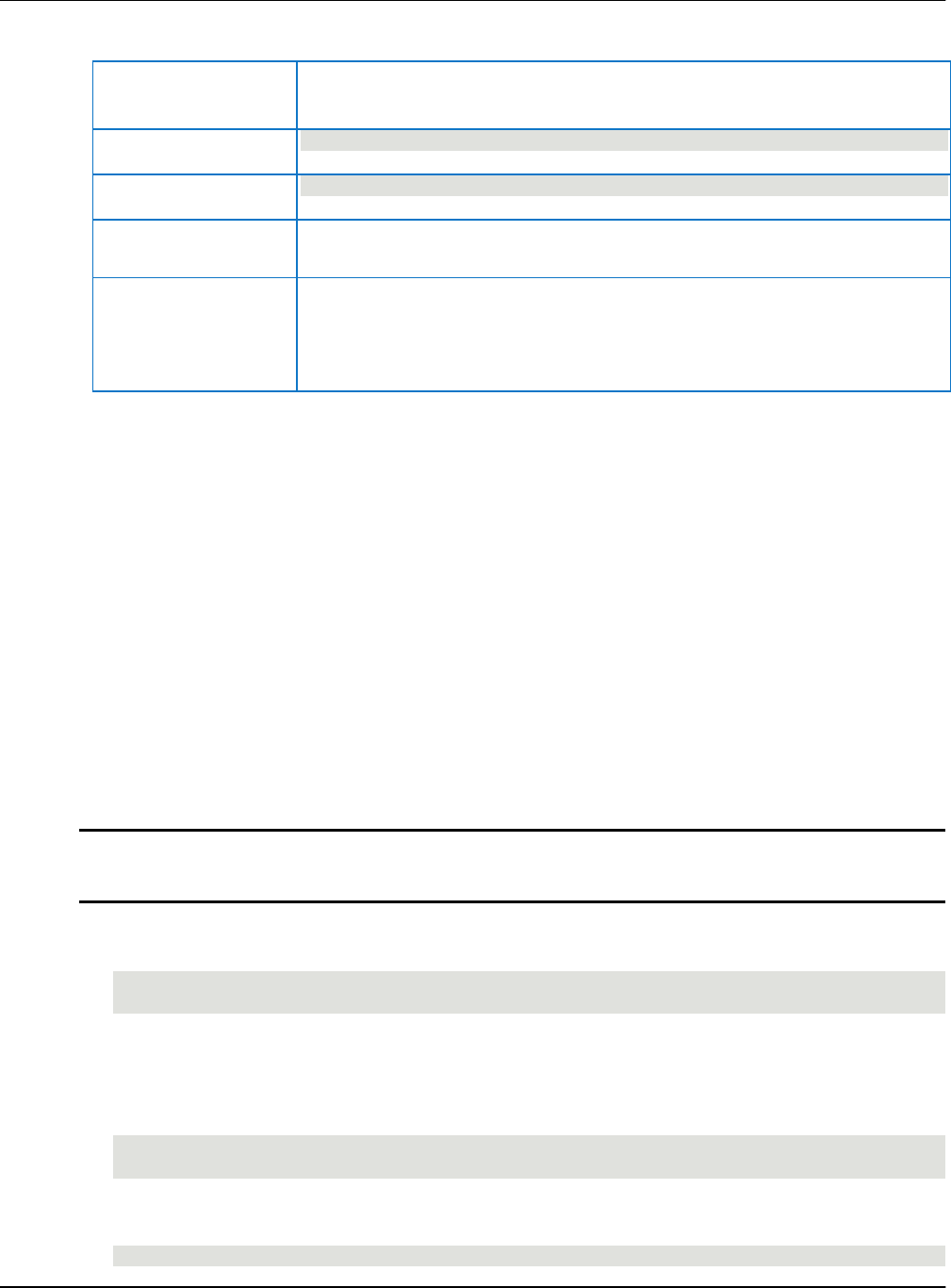
AVEVA™ Historian Retrieval Guide formerly Wonderware Browser-Friendly Data Retrieval
232
SystemParameters (on-premises only)
Description
Retrieves names and values for system parameters.
(On-premises AVEVA Historian Insight only)
URL
/SystemParameters
Method
GET
Required Parameters
Name=[string ]
The unique name for the system parameter.
Optional Parameters
Value=[string]
The value of this system parameter.
Tags
Identifies related tags.
Retrieval examples
You can send retrieval requests to the Historian Data REST API from any modern web browser and from
OData client-side tools. Examples of such tools include Microsoft Excel (2013, 2016, or Office 365), and
Business Intelligence (BI) systems, such as Tableau and Microsoft Power BI.
Click below to see query examples using specific tools:
Browser query examples (see "Retrieve data via browser query" on page 232)
Postman query examples (see "Retrieve data using Postman" on page 233)
Excel query examples (see "Retrieve data using Excel" on page 234)
PowerBI query example (see "Retrieve data using PowerBI" on page 237)
Retrieve data via browser query
You can simply type an OData HTTP request in the address bar of a modern browser to query Historian
Data API.
Note: Retrieval endpoints are unique for each Insight solution. The following examples use the endpoint
"https://online.wonderware.com/s/ik97r5", but yours will be different. Learn how to find the
basic-authentication retrieval endpoint for your solution.
List root entities
This example lists the entities you can explore and submit additional queries against.
https://online.wonderware.com/s/ik97r5/apis/historian/v2
For more information, see Resources (see "Retrieval resources" on page 189).
List data sources (tag groups)
This shows the data sources (labeled "TagGroups" in this API) for your Insight solution. If you have
accounts for more than one solution, this shows the data sources for your original Insight solution.
https://online.wonderware.com/s/ik97r5/apis/historian/v2/TagGroups
List tag metadata for all tags
This shows metadata for all tags in all data sources for your original Insight solution.
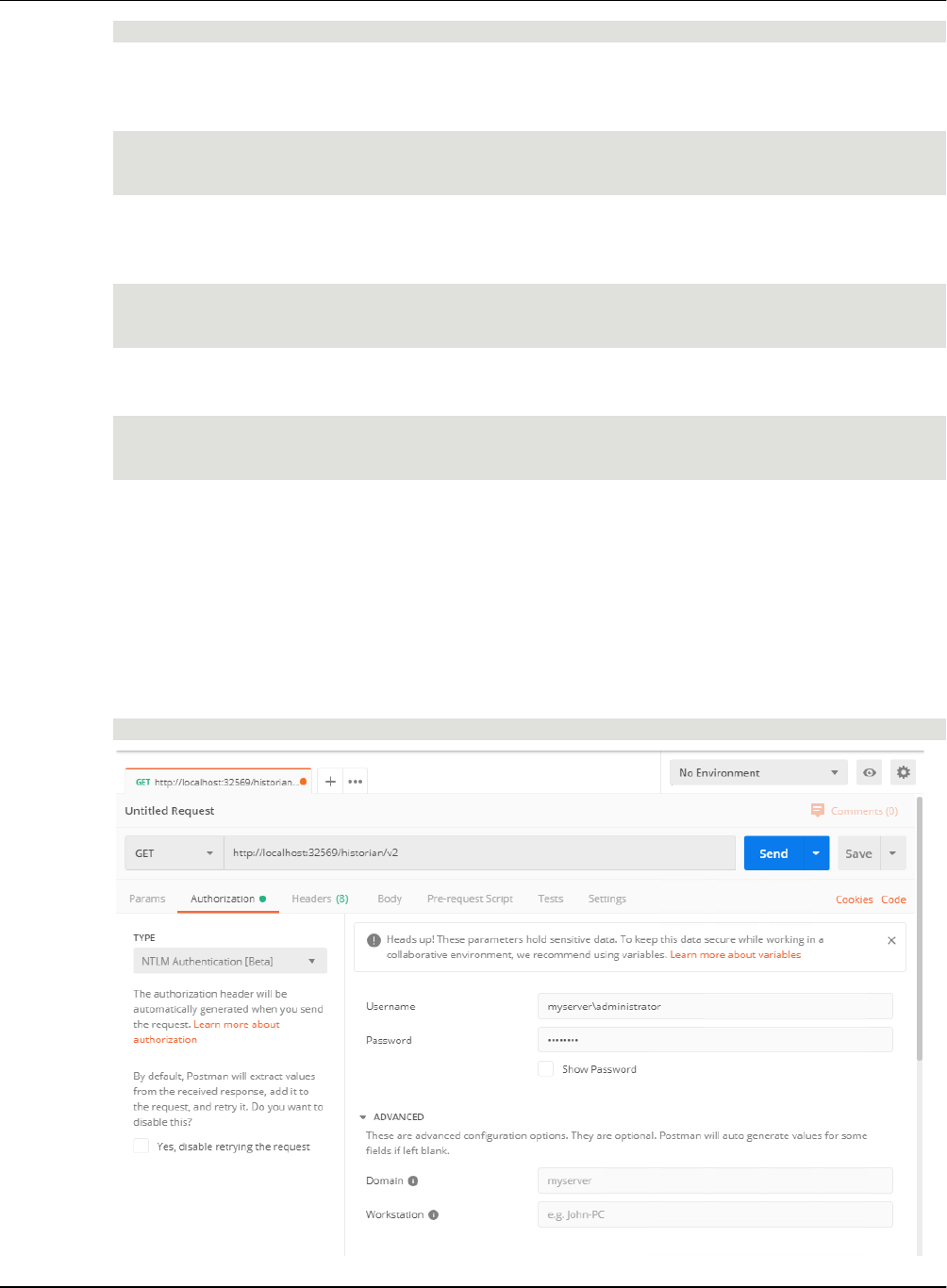
Browser-Friendly Data Retrieval AVEVA™ Historian Retrieval Guide formerly Wonderware
233
https://online.wonderware.com/s/ik97r5/apis/historian/v2/Tags
List tag metadata for a data source
This shows metadata for tags in a particular data source. The data source in this example is named
Baytown.
https://online.wonderware.com/s/ik97r5/apis/historian/v2/Tags?$filter=Sou
rce+eq+'Baytown'
List tag values for a data source
This example expands on the last one. It uses a "$filter" clause that specifies a particular tag named
tank_level within the Baytown data source. The result is a list of values for the tank_level tag.
https://online.wonderware.com/s/ik97r5/apis/historian/v2/ProcessValues?$f
ilter=FQN+eq+'Baytown.tank_level'
List tag values with analog summary data for a data source
This example result is a list of values with analog summary for the tank_level tag.
https://online.wonderware.com/s/ik97r5/apis/historian/v2/AnalogSummary?$f
ilter=FQN+eq+'Baytown.tank_level'
Notice that this example uses a fully qualified name ("Baytown.tank_level"), which is a combination
of a data source name ("Baytown") and a tagname ("tank_level").
Retrieve data using Postman
A great way to explore and learn about the AVEVA Insight APIs is by using a simple client, such as
Postman. Postman is a free developer tool allows you to query any API. You can download Postman
from https://postman.com/ https://www.getpostman.com/.
To query the AVEVA Insight APIs using Postman
1. Next to the GET button, type this address:
http://localhost:32569/historian/v2
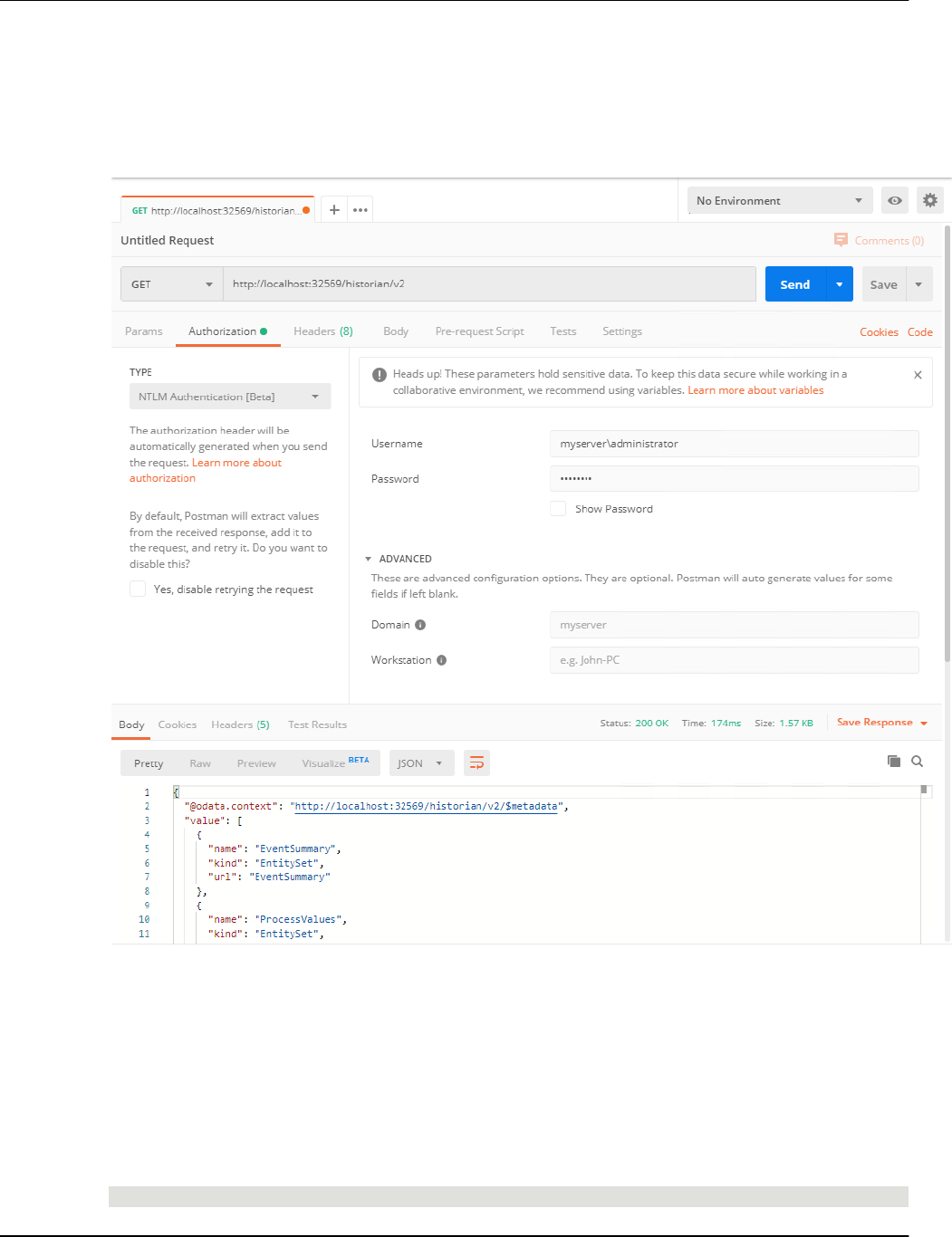
AVEVA™ Historian Retrieval Guide formerly Wonderware Browser-Friendly Data Retrieval
234
2. From the Type dropdown list, select NTLM Authentication [Beta] to specify the authentication to
use.
3. Enter the username and password for a user account with sufficient privileges to access the API.
4. In the upper-right of the screen, select Send.
The result is a catalog of data entities from AVEVA Insight.
Retrieve data using Excel
To manually import Insight data to Excel
1. Open Excel 2013 or later.
2. From Data, choose Get External Data, choose From Other Sources, and then choose From
OData Data Feed.
3. In the Link or File box, specify a URL for your query, formatted as an atom feed (that is, end with
"$format=atom’").
Here is a query example:
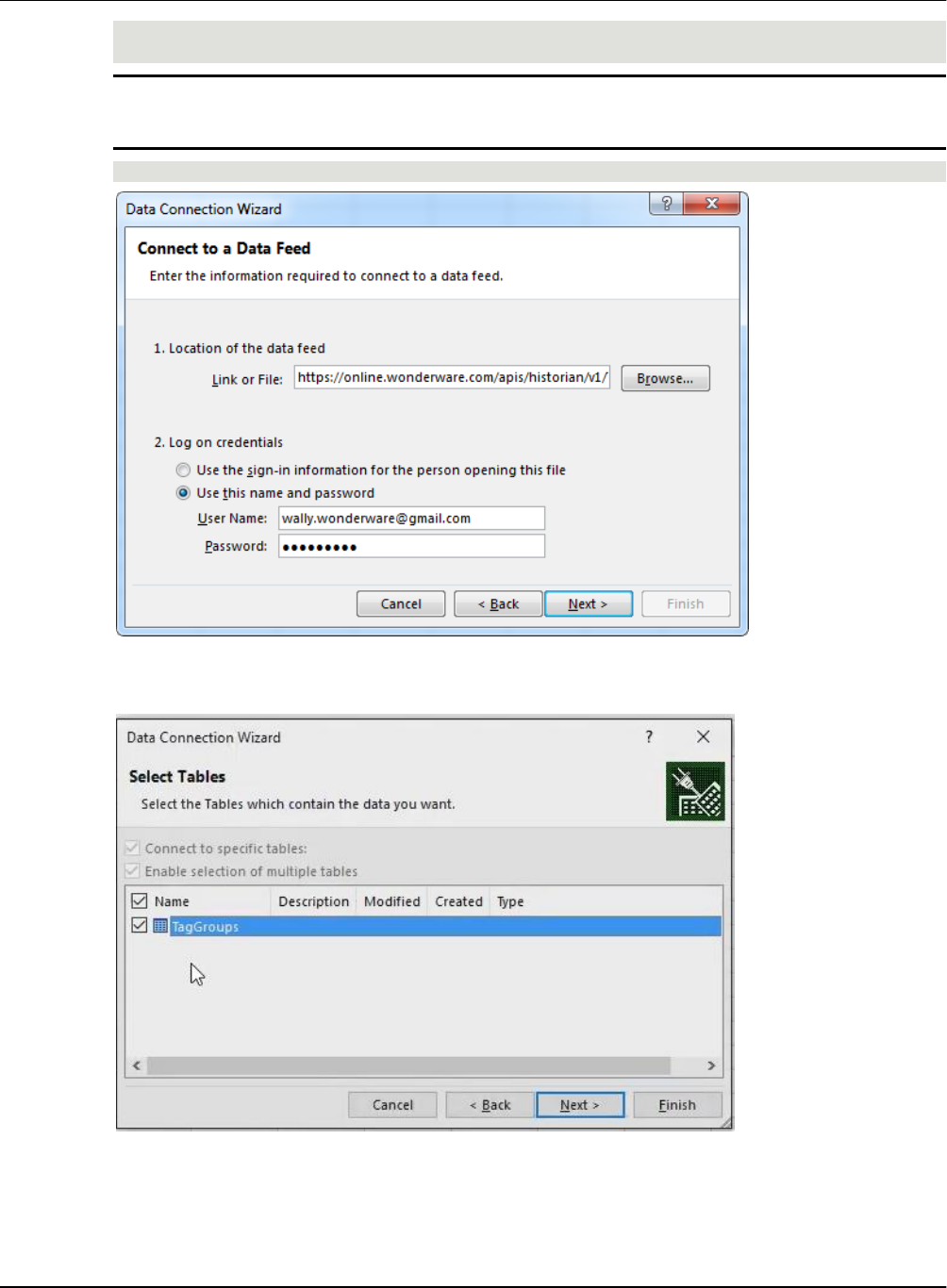
Browser-Friendly Data Retrieval AVEVA™ Historian Retrieval Guide formerly Wonderware
235
https://online.wonderware.com/s/ik97r5/apis/historian/v2/TagGroups?$forma
t=atom
Note: Retrieval endpoints are unique for each Insight solution. This example uses the endpoint
"https://online.wonderware.com/s/ik97r5", but yours will be different. Learn how to find the
basic-authentication retrieval endpoint for your solution.
4. Click Use this name and password, and specify your Insight user name and password. Click Next.
5. In the Select Tables box, mark the element to include. Click Next.
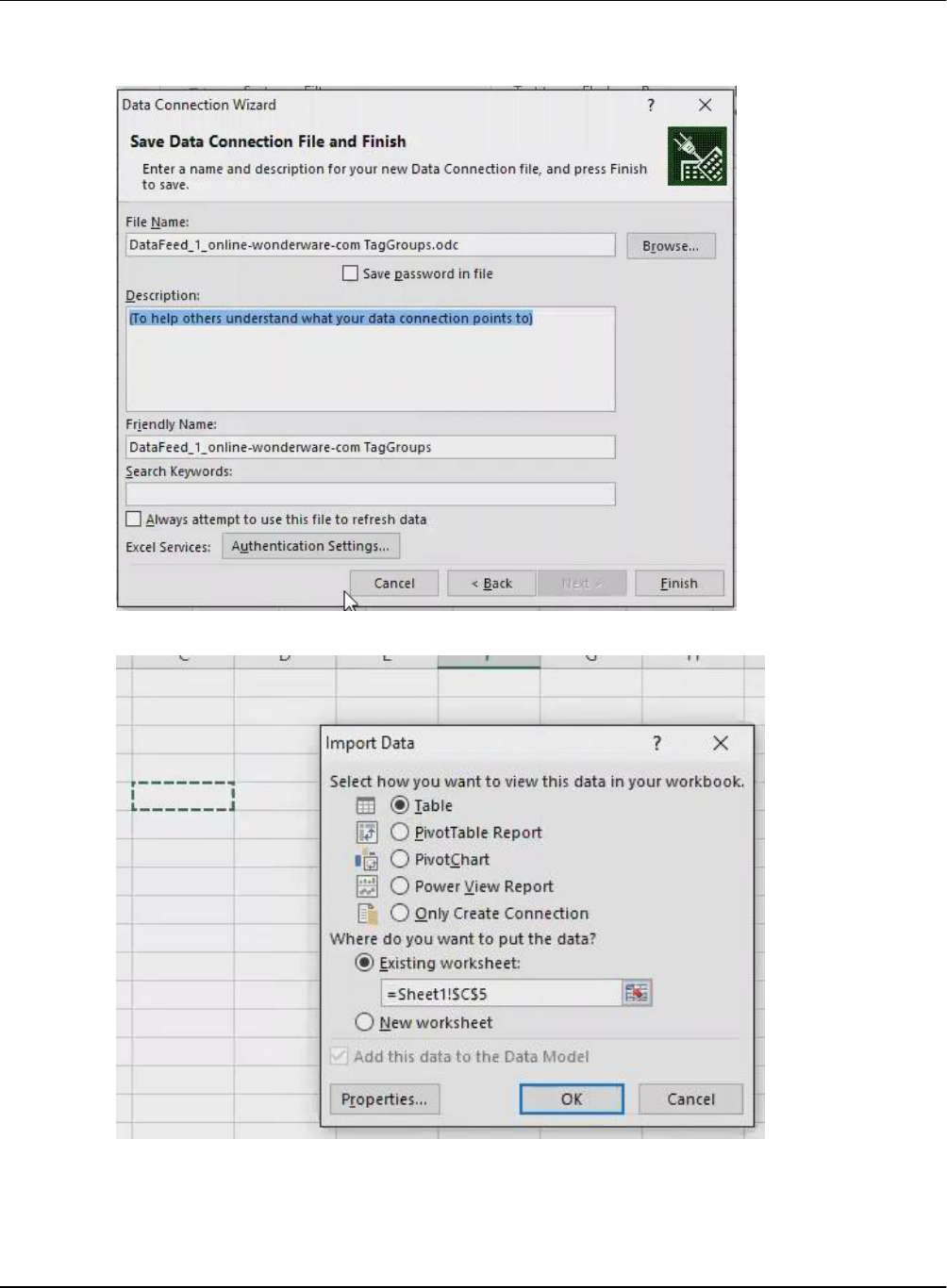
AVEVA™ Historian Retrieval Guide formerly Wonderware Browser-Friendly Data Retrieval
236
6. Review the information displayed on Save Data Connection File and Finish and then click Finish.
Excel creates an ODC (OData Connection) file.
7. Specify how and where to place your data in the spreadsheet. Click OK.
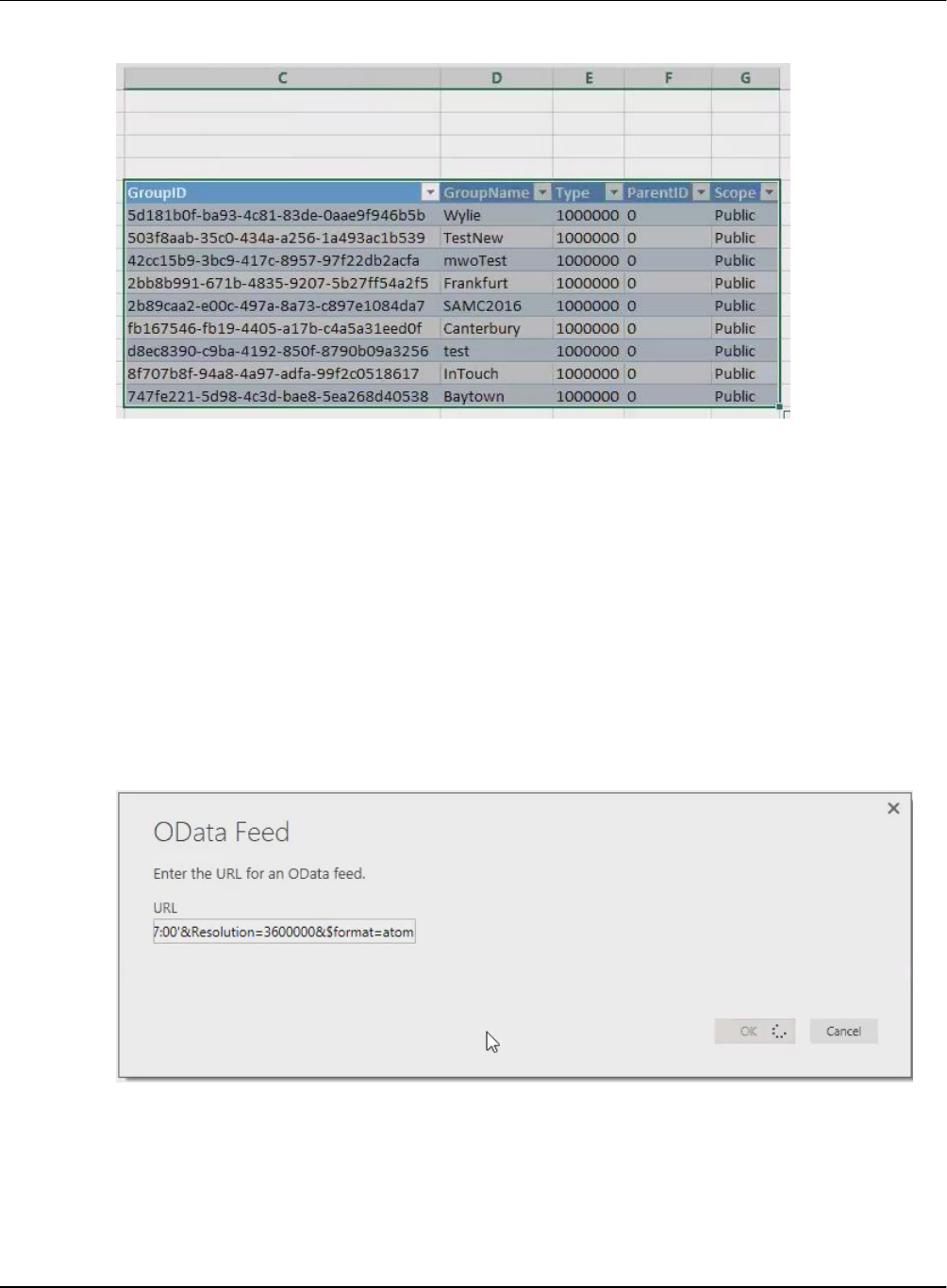
Browser-Friendly Data Retrieval AVEVA™ Historian Retrieval Guide formerly Wonderware
237
Excel will place the data where you specified:
Retrieve data using PowerBI
You can use PowerBI to retrieve Insight data. For syntax examples, see the Query Examples section
below.
Note: You will need a query endpoint from AVEVA Insight for your query.
To import Insight data to Power BI
1. In AVEVA Insight, identify the retrieval endpoint for your Insight solution. You will use this in step 4.
2. Open PowerBI.
3. Click Get Data, and choose OData Feed.
4. In URL, specify the retrieval endpoint (from step 1) followed by any query parameters. Click OK.
See the "Query examples" section below.
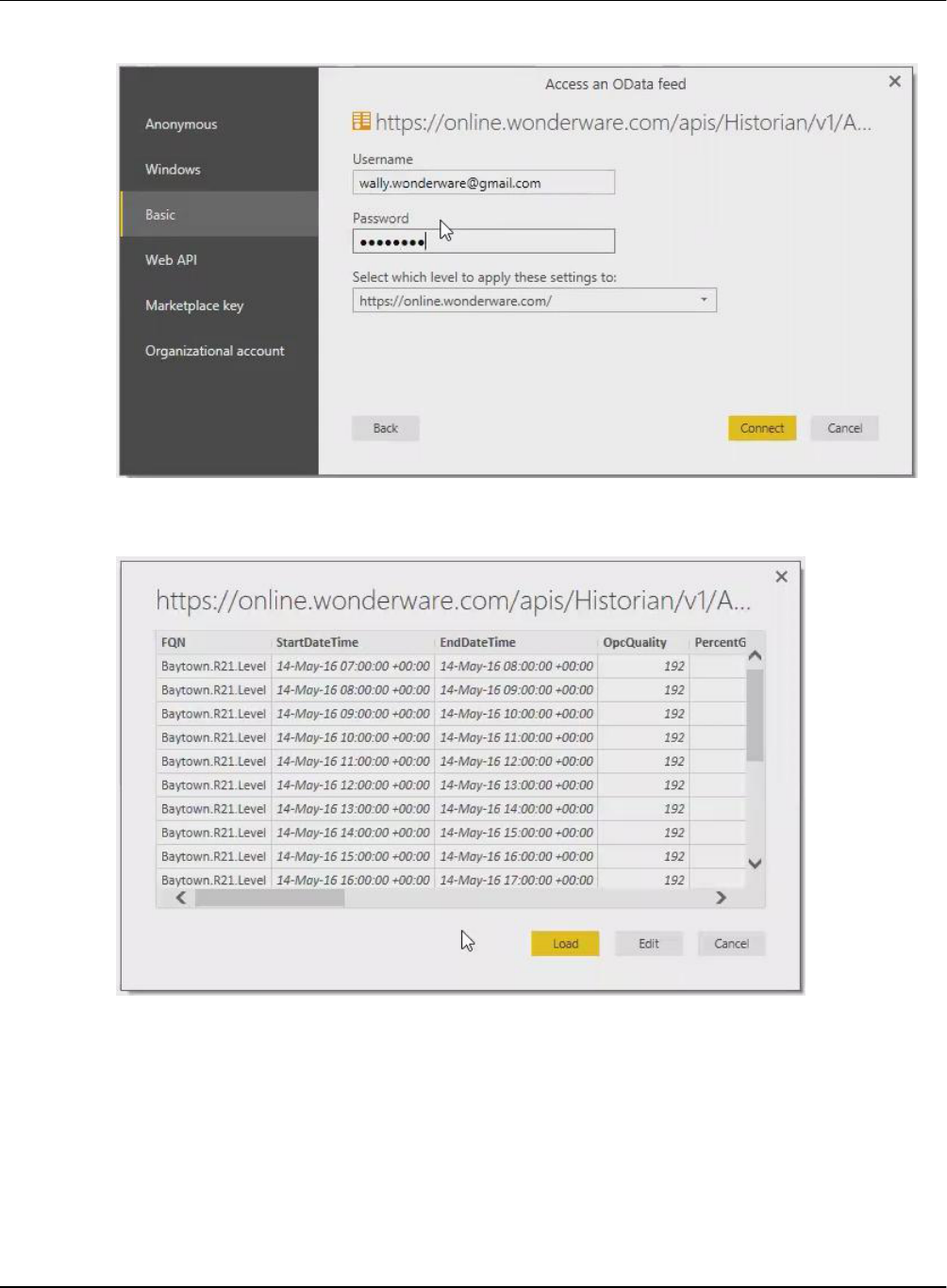
AVEVA™ Historian Retrieval Guide formerly Wonderware Browser-Friendly Data Retrieval
238
5. Specify Basic Authentication, and provide your Insight username and password.
6. Click Connect.
7. Power BI shows a preview of your data retrieved from Insight.
8. Click Load.
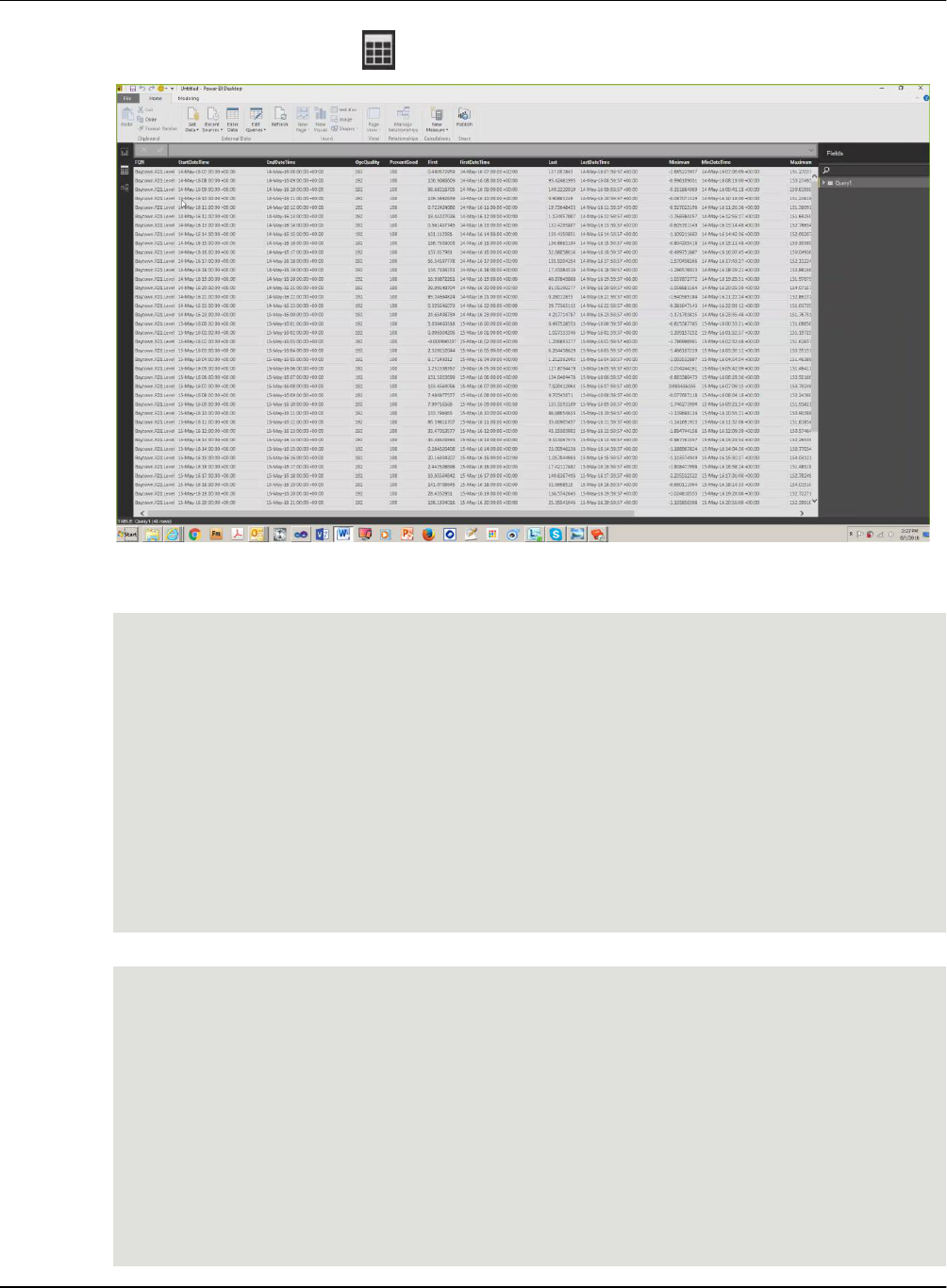
Browser-Friendly Data Retrieval AVEVA™ Historian Retrieval Guide formerly Wonderware
239
9. In the upper-left corner, click to view the table of results.
Query examples
Using GET method with ProcessValues:
Historian/v2/ProcessValues?TagFilter=EngUnit eq ‘rpm’&DurationHours=2
Historian/v2/ProcessValues?$filter=DateTime le
2019-01-15T03:57:29Z&TagFilter=startswith(Description,
‘Pump’)&DurationHours=10
Historian/v2/ProcessValues?$filter=DateTime ge 2019-01-15T03:57:29Z and
DateTime le 2019-01-17T03:50:54.881Z&TagFilter=startswith(Location,
‘/Houston/Mixing’)
Historian/v2/ProcessValues?$filter=DateTime ge
2019-01-15T03:57:29Z&TagFilter=startswith(FQN, 'testds1')&DurationHours=5
Historian/v2/ProcessValues?TagFilter=endswith('Level',FQN)
Using GET method with AnalogSummary:
Historian/v2/AnalogSummary?TagFilter=EngUnit eq ‘rpm’&DurationHours =2
Historian/v2/AnalogSummary?$filter=EndDateTime le
2019-01-15T03:57:29Z&TagFilter= startswith(Description,
‘Pump’)&DurationHours=10
Historian/v2/AnalogSummary?$filter=StartDateTime ge 2019-01-15T03:57:29Z
and EndDateTime le 2019-01-17T03:50:54.881Z&TagFilter=startswith(Location,
"/Houston/Mixing")
Historian/v2/AnalogSummary?$filter= StartDateTime ge
2019-01-15T03:57:29Z&TagFilter=startswith(FQN,
'testds1')&DurationInHour=5
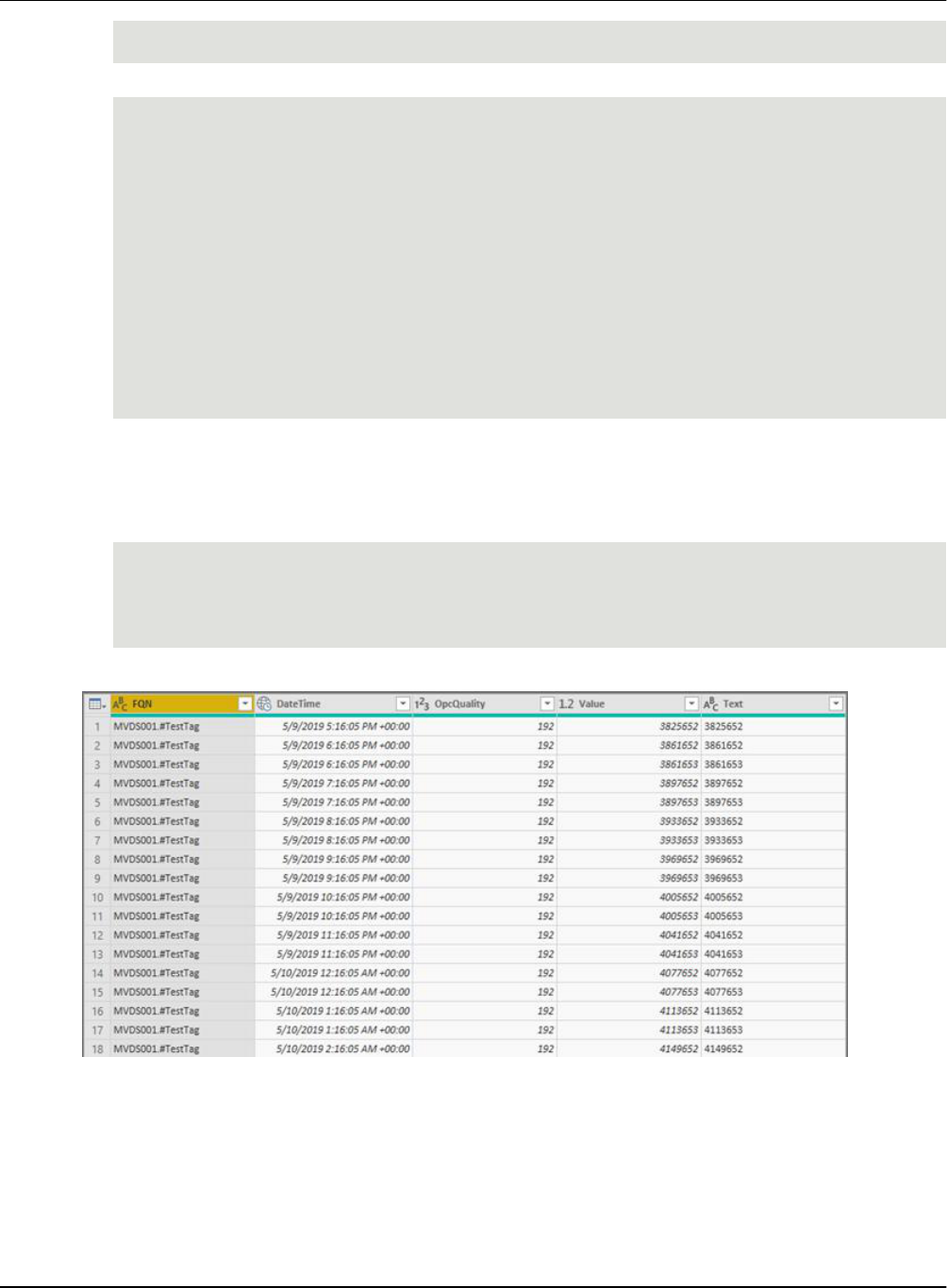
AVEVA™ Historian Retrieval Guide formerly Wonderware Browser-Friendly Data Retrieval
240
Historian/v2/AnalogSummary?TagFilter=endswith(FQN, 'Level')
Using GET method with StateSummary:
Historian/v2/StateSummary?TagFilter=EngUnit eq ‘rpm’& DurationHours =2
Historian/v2/StateSummary?$filter=EndDateTime le
2019-01-15T03:57:29Z&TagFilter=startswith(Description, ‘Pump’)&
DurationHours =10
Historian/v2/StateSummary?$filter=StartDateTime ge 2019-01-15T03:57:29Z
and EndDateTime le 2019-01-17T03:50:54.881Z&TagFilter=startswith(Location,
‘/Houston/Mixing’)
Historian/v2/StateSummary?$filter= StartDateTime ge
2019-01-15T03:57:29Z&TagFilter=startswith(FQN, 'testds1')&DurationHours=5
Historian/v2/StateSummary?TagFilter=endswith(FQN, 'Level')
Notes about post-retrieval filtering
Any post-retrieval filtering may require you to also change the data type for a specific the column in the
results list.
For example, suppose you ran this query:
/Historian/v2/ProcessValues?$filter=OPCQuality eq
192&DurationHours=24&Resolution=3600000&TagFilter=
endswith(TagName,'%23testtag')
The results would be:
Then suppose you wanted to filter the "DateTime" column to include only yesterday's date. You must
change the data type of the DateTime column first, and then select the date you want:
1. Right-click the "DateTime" column header, select Change Type. and then click Date/Time.
2. Right-click the "DateTime" column and choose Yesterday from the displayed list.
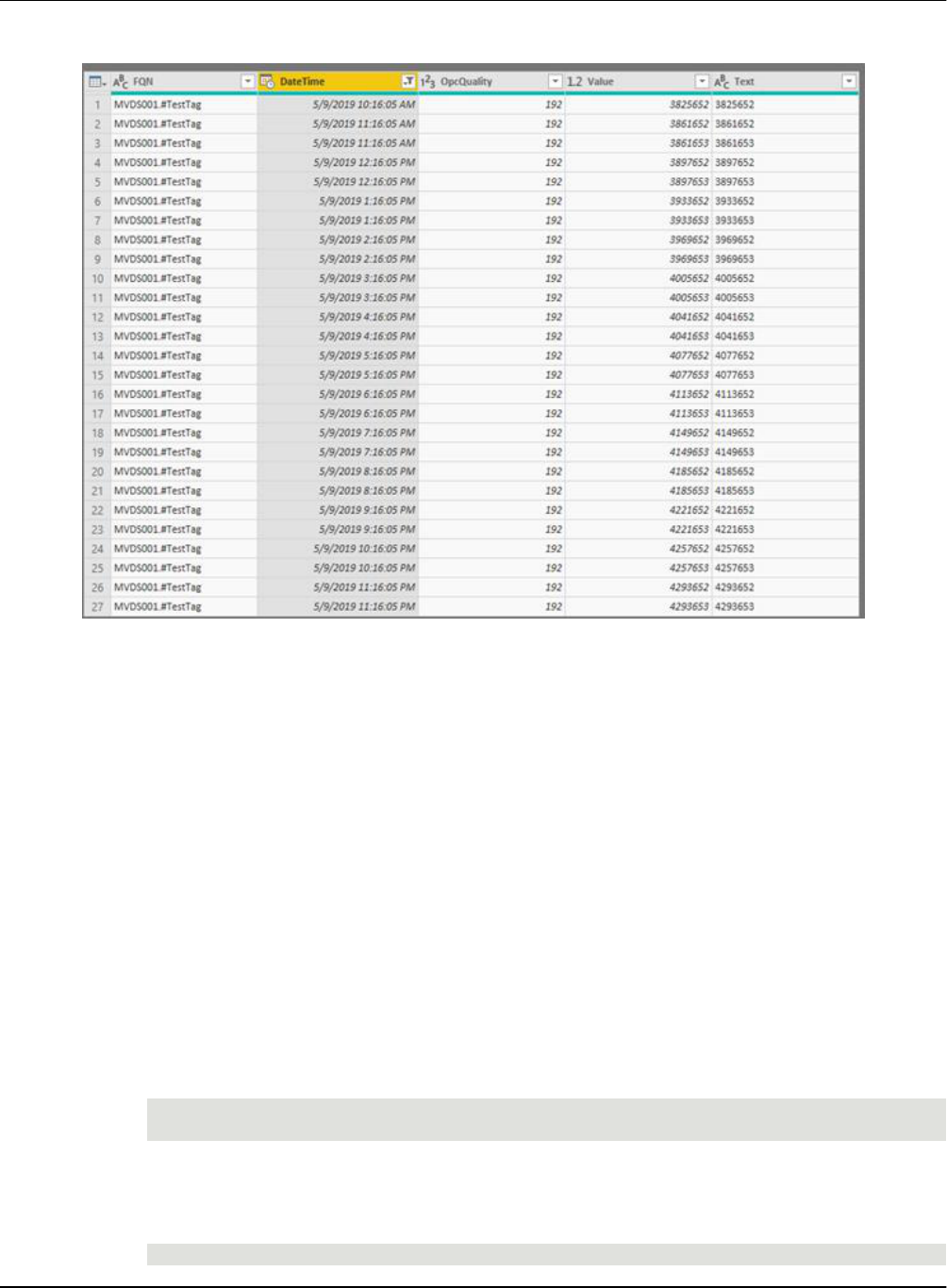
Browser-Friendly Data Retrieval AVEVA™ Historian Retrieval Guide formerly Wonderware
241
Then the filtering will take effect.
Querying History Blocks via SQL Server Reporting Services
Extension
Historian includes an extension for SQL Server Reporting Services to enable SQL queries against the
OData interface used for data stored in history blocks.
To configure the extension
1. Open the Configurator.
2. Under Historian, click the Reporting node.
3. Select the versions of Visual Studio installed with your SQL Server Reporting Services.
4. Click Configure.
To use the extension
1. Define a new Reporting Services data source.
2. Select "Historian OData Provider" as the source type.
3. Click Historian and then click Extension.
4. Enter a connection string in the form "Server=host:port"; for example:
Server=localhost:32569
Three Ways To Query the Source
You can query the source using one of these options:
Use a SQL-style query. For example:
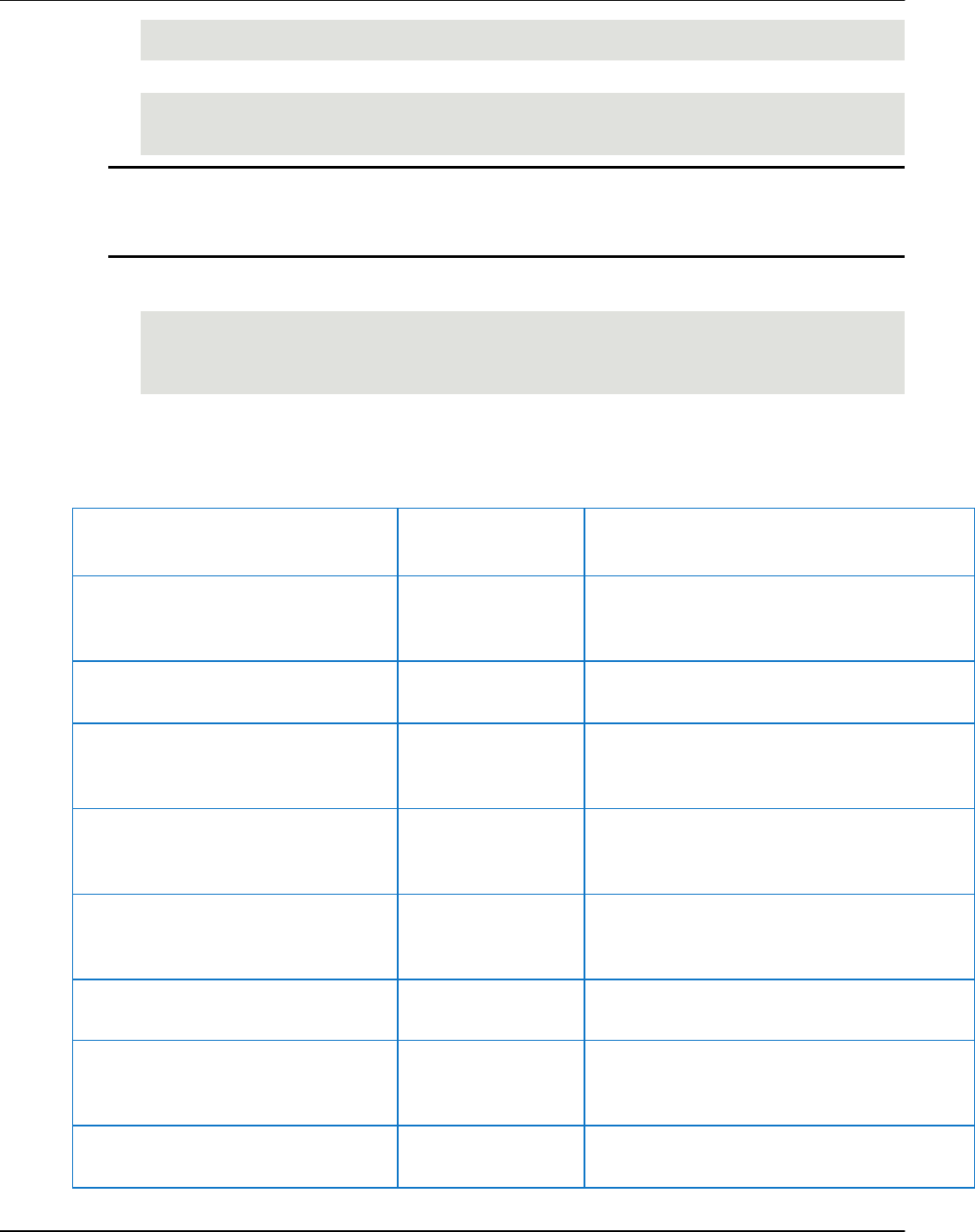
AVEVA™ Historian Retrieval Guide formerly Wonderware Browser-Friendly Data Retrieval
242
select * from Events where Source_Area='Site2' and EventTime >=
'2014-08-10T05:56:21.302Z'
Use an OData query. This OData query example is equivalent to the query above:
http://Server1:32569/Historian/v1/Events?$filter=Source_Area+eq+%27Sit
e2%27+and EventTime+ge+datetimeoffset%272014-08-10T05:56:21.302Z%27
Note: For queries from a web browser, use "%20" to indicate a space. Use "%27" to indicate a
single quote.
If you are using the JSONView viewer in the Chrome browser, you can use a plus sign (+) to indicate
a space to make the URI string more readable.
Use an SQL syntax used within the URL. For example, this is equivalent to the other two queries
above:
http://Server1:32569/Historian/v1/Events?sql=select+*+from
Events+where
Source_Area=%27ite2%27+and+EventTime+>=+%272014-08-10T05:56:21.302Z%27
Retrieval errors
The OData error codes listed in the following table may be returned by an operation on any of the storage
services.
Error code
HTTP status code
User message
ConditionNotMet
Not Modified (304)
The condition specified in the conditional
header(s) was not met for a read operation.
MissingRequiredQueryParameter
Bad Request (400)
A required query parameter was not specified
for this request.
UnsupportedQueryParameter
Bad Request (400)
One of the query parameters specified in the
request URI is not supported.
InvalidQueryParameterValue
Bad Request (400)
An invalid value was specified for one of the
query parameters in the request URI.
OutOfRangeQueryParameterValue
Bad Request (400)
A query parameter specified in the request URI
is outside the permissible range.
RequestUrlFailedToParse
Bad Request (400)
The url in the request could not be parsed.
InvalidUri
Bad Request (400)
The requested URI does not represent any
resource on the server.
InvalidHttpVerb
Bad Request (400)
The HTTP verb specified was not recognized by
the server.
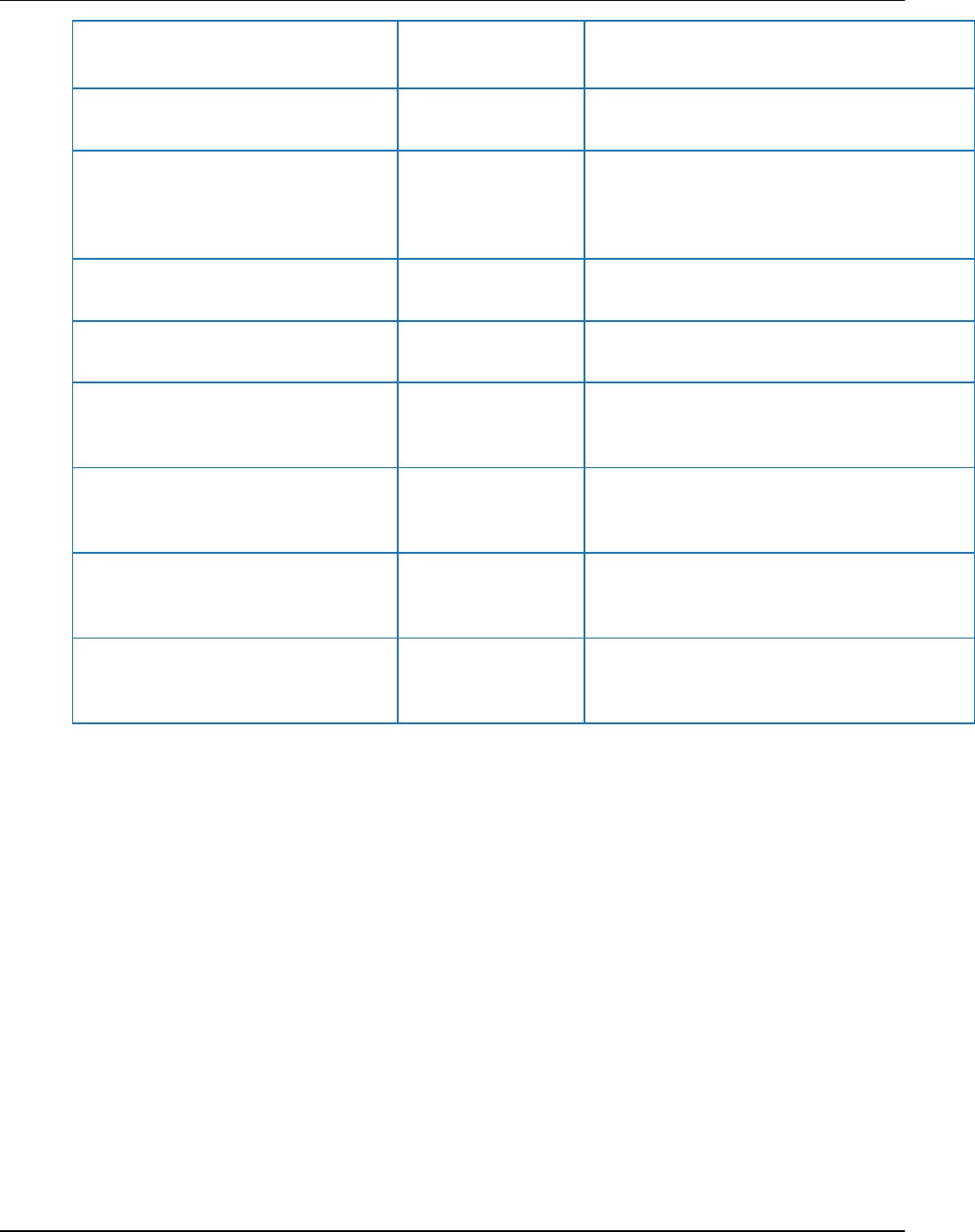
Browser-Friendly Data Retrieval AVEVA™ Historian Retrieval Guide formerly Wonderware
243
Error code
HTTP status code
User message
OutOfRangeInput
Bad Request (400)
One of the request inputs is out of range.
InvalidAuthenticationInfo
Bad Request (400)
The authentication information was not
provided in the correct format. Verify the value
of Authorizationheader.
InvalidInput
Bad Request (400)
One of the request inputs is not valid.
Unauthorized
Unauthorized (401)
Unauthorized: Access is denied due to invalid
credentials.
ResourceNotFound
Not Found (404)
The specified resource does not exist.
InternalError
Internal Server Error
(500)
The server encountered an internal error.
Please retry the request.
OperationTimedOut
Internal Server Error
(500)
The operation could not be completed within the
permitted time.
ServerBusy
Service Unavailable
(503)
The server is currently unable to receive
requests. Please retry your request.
